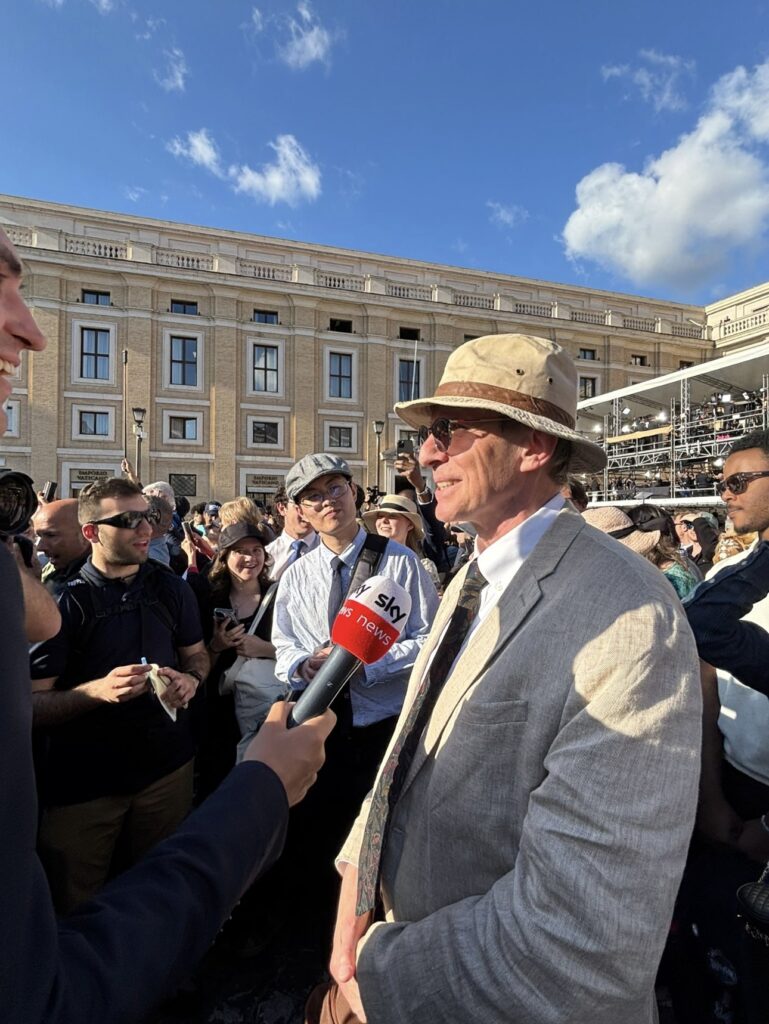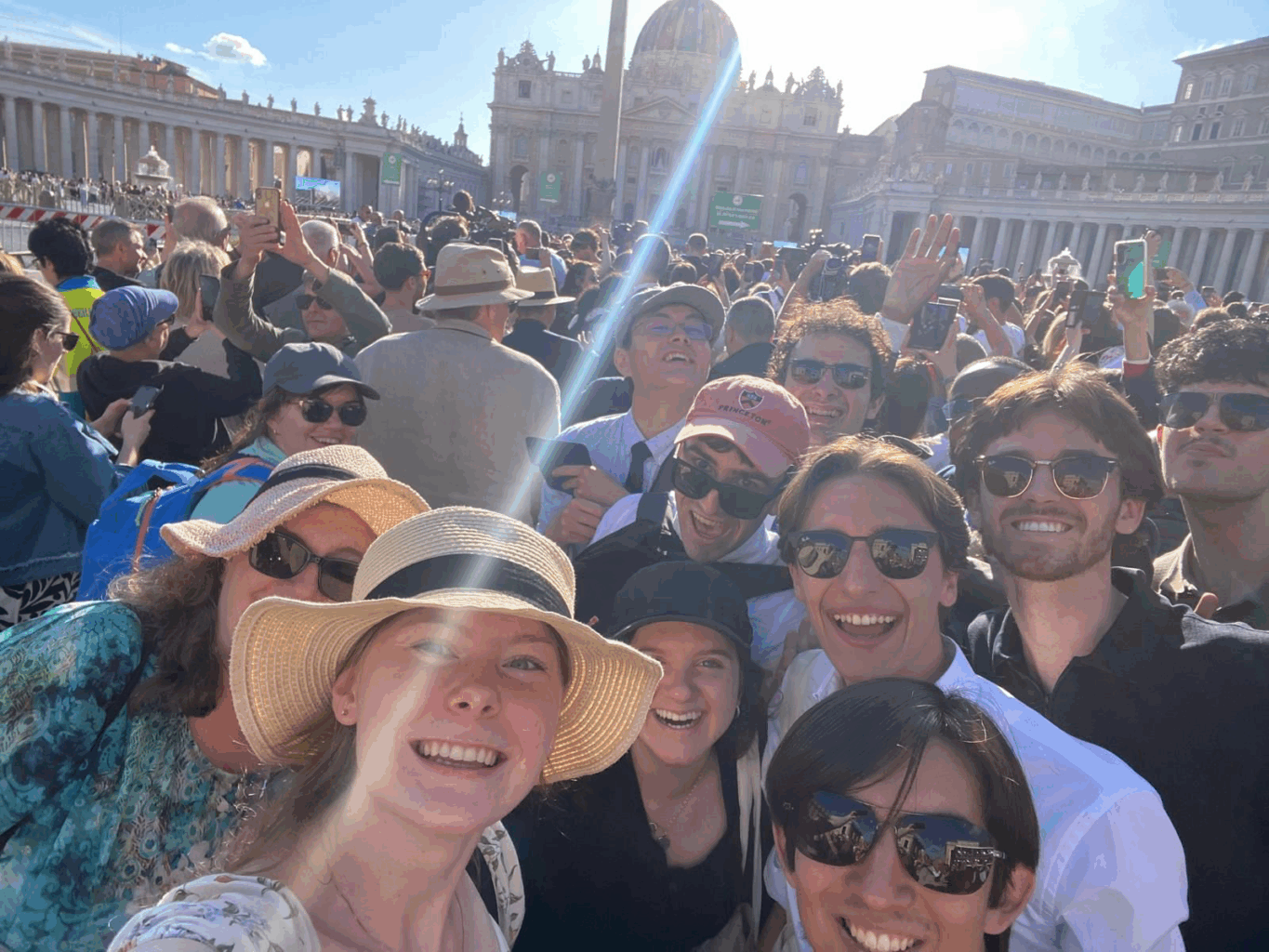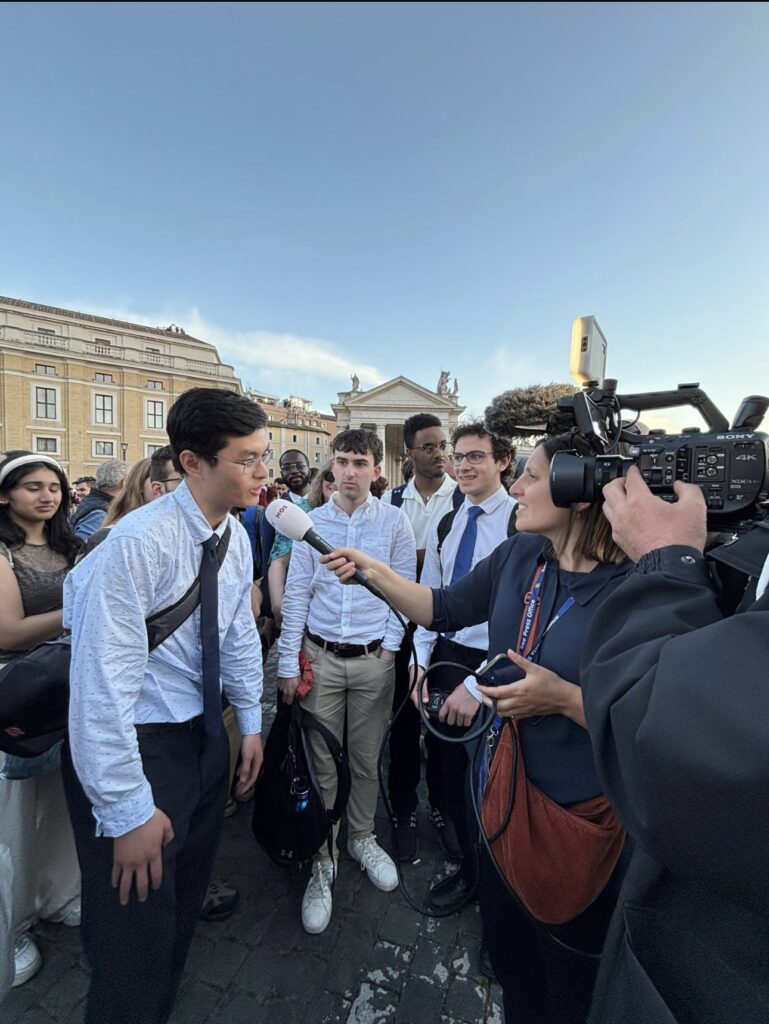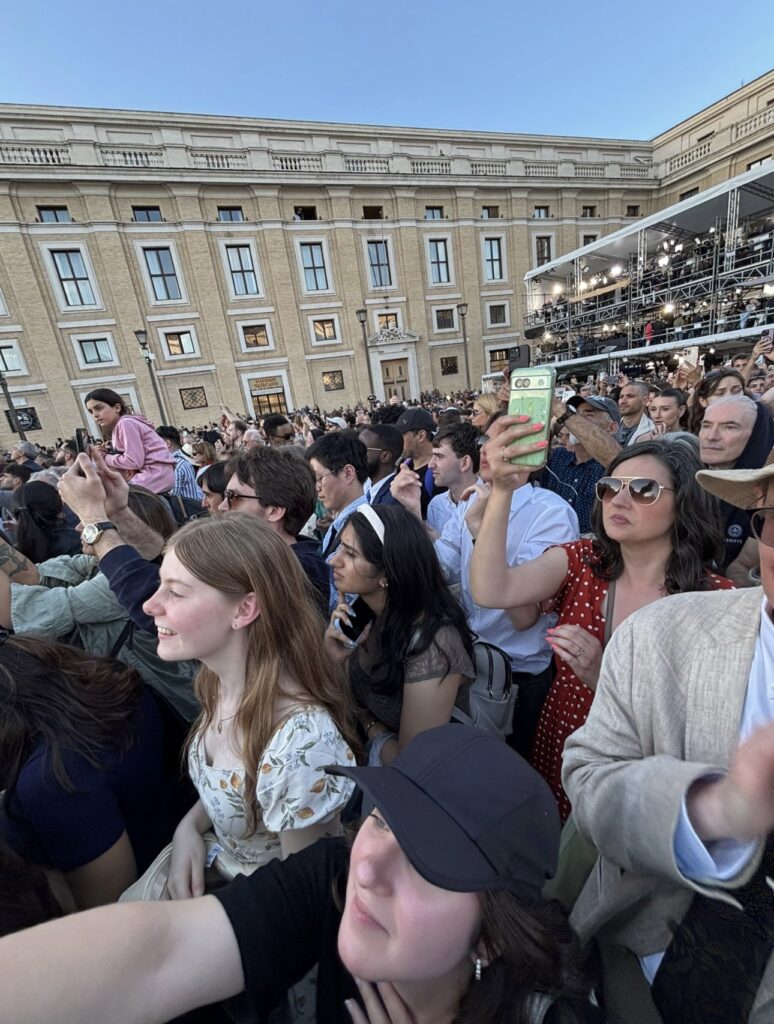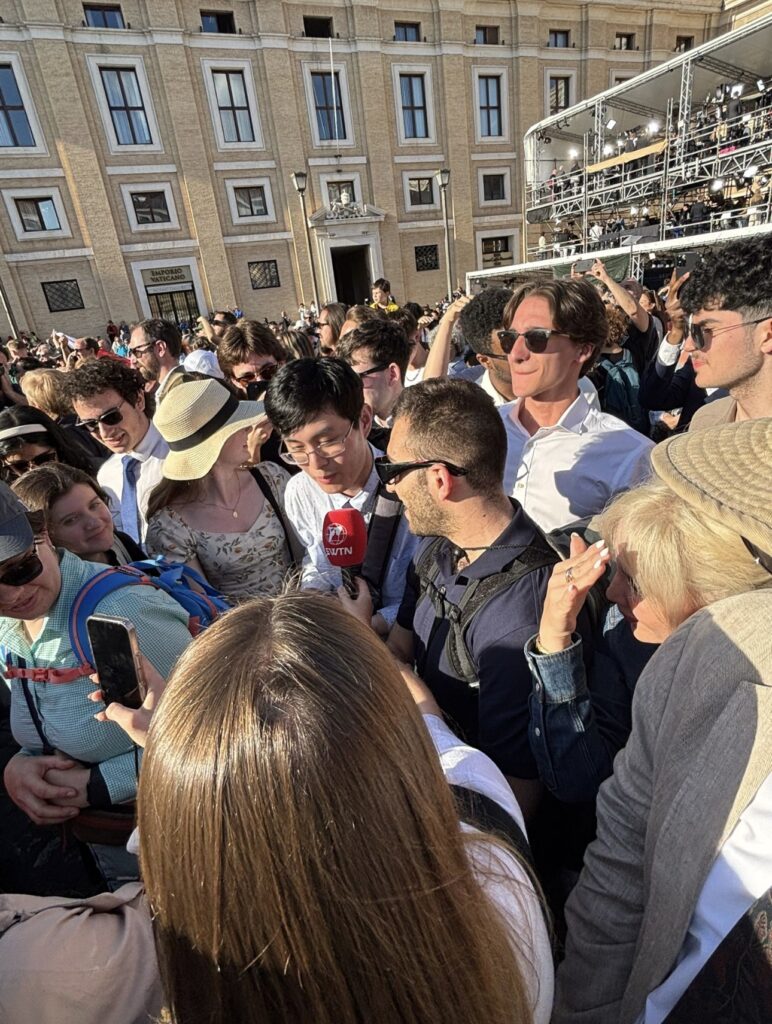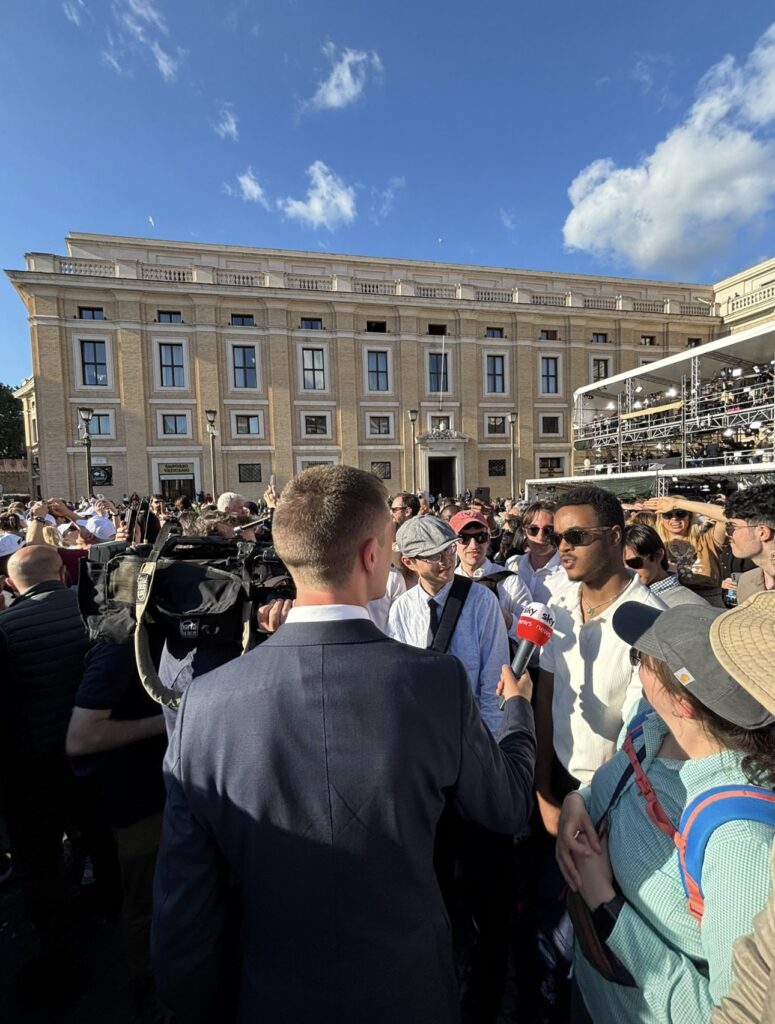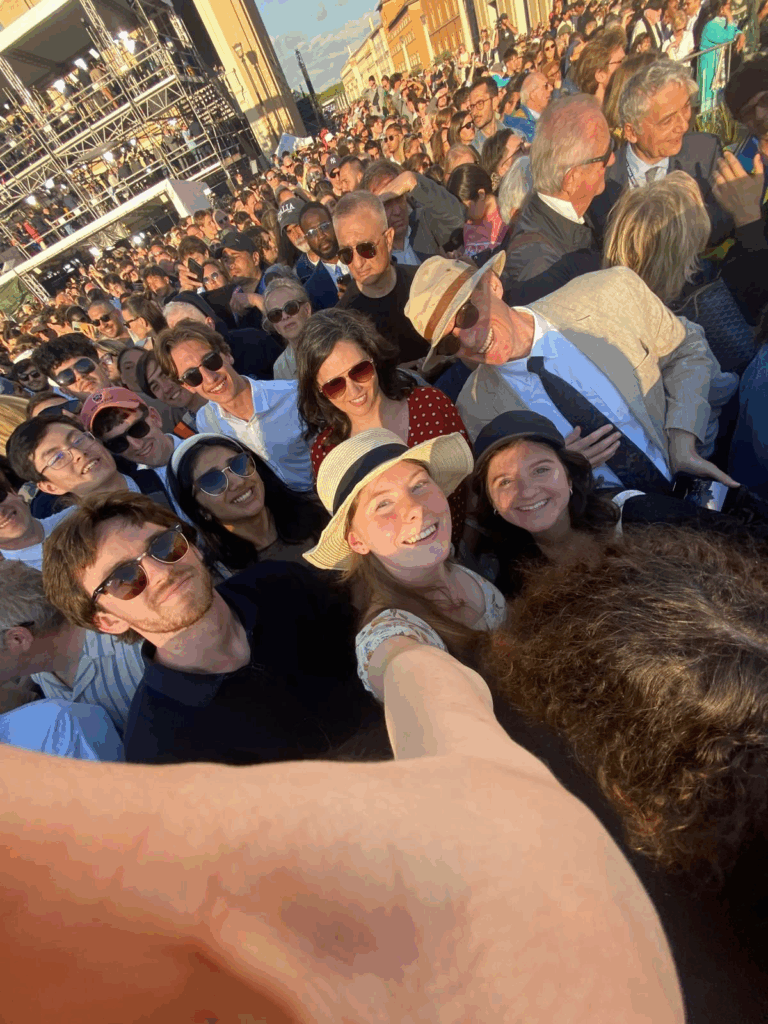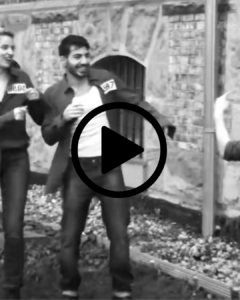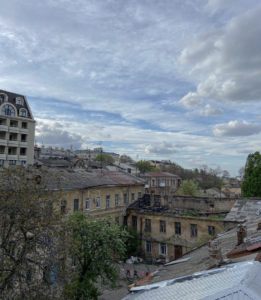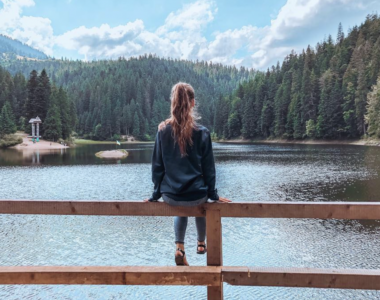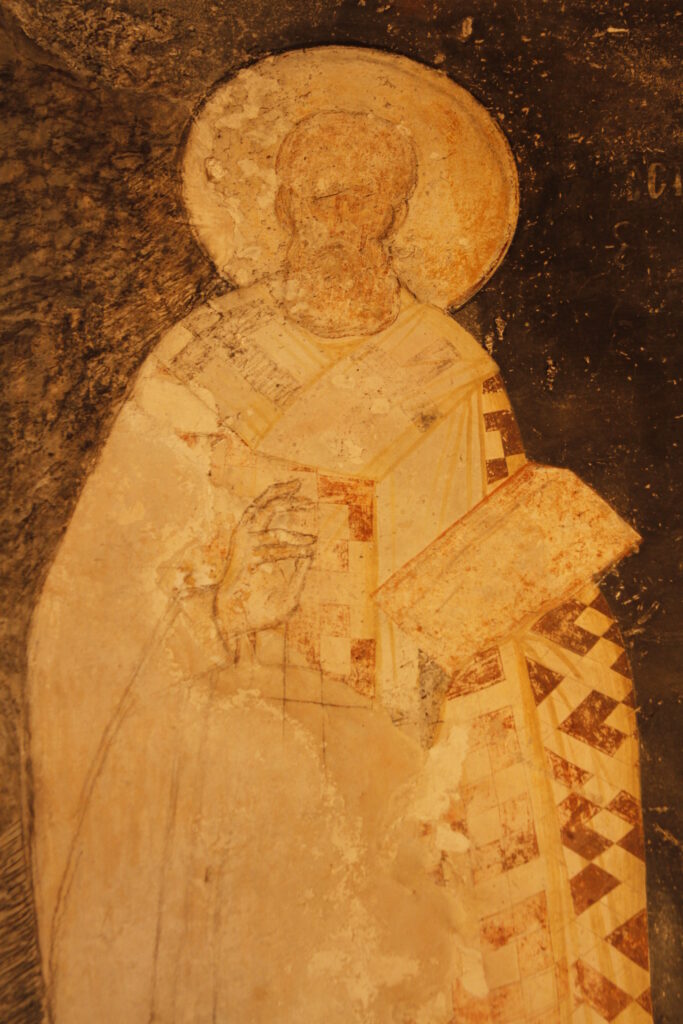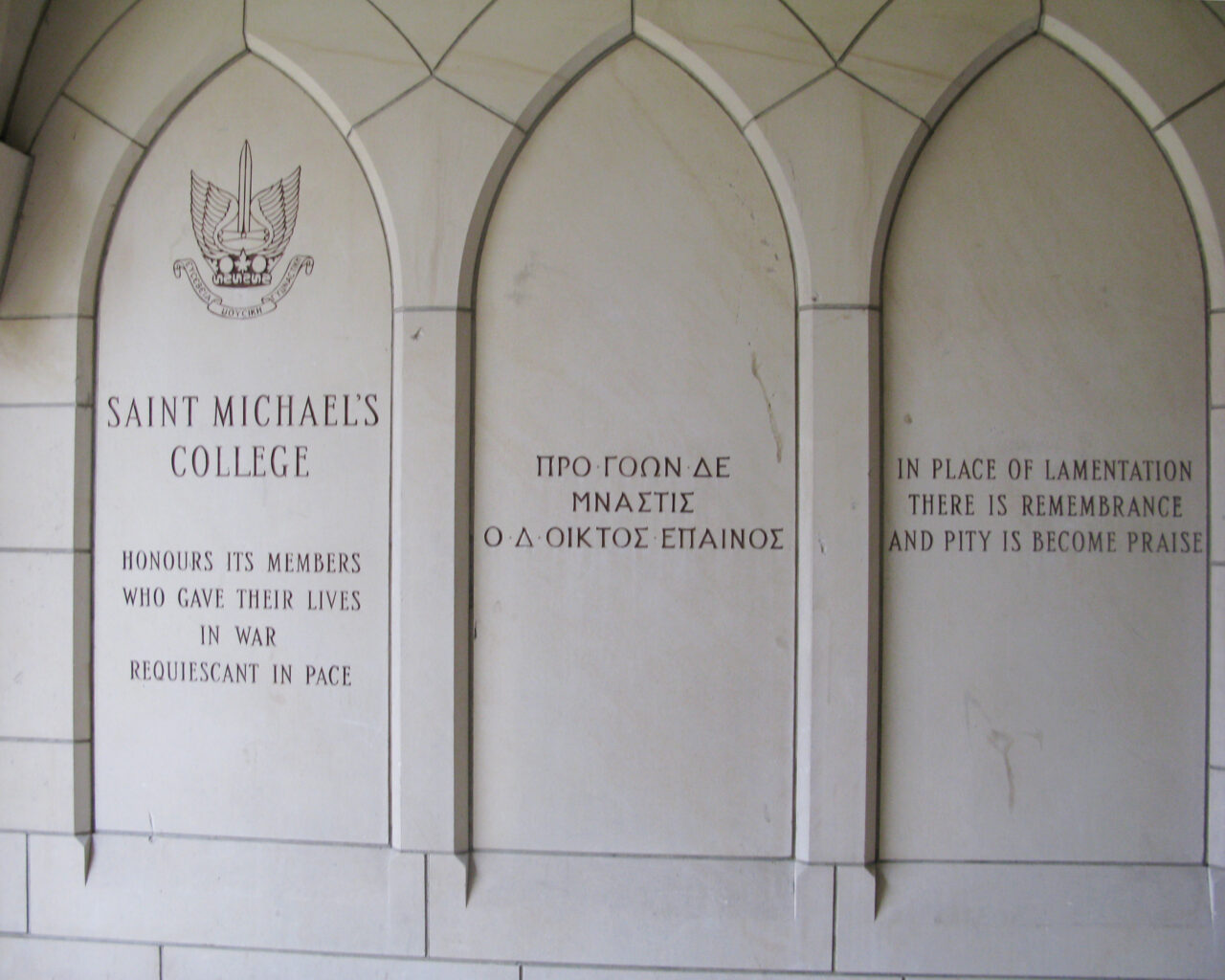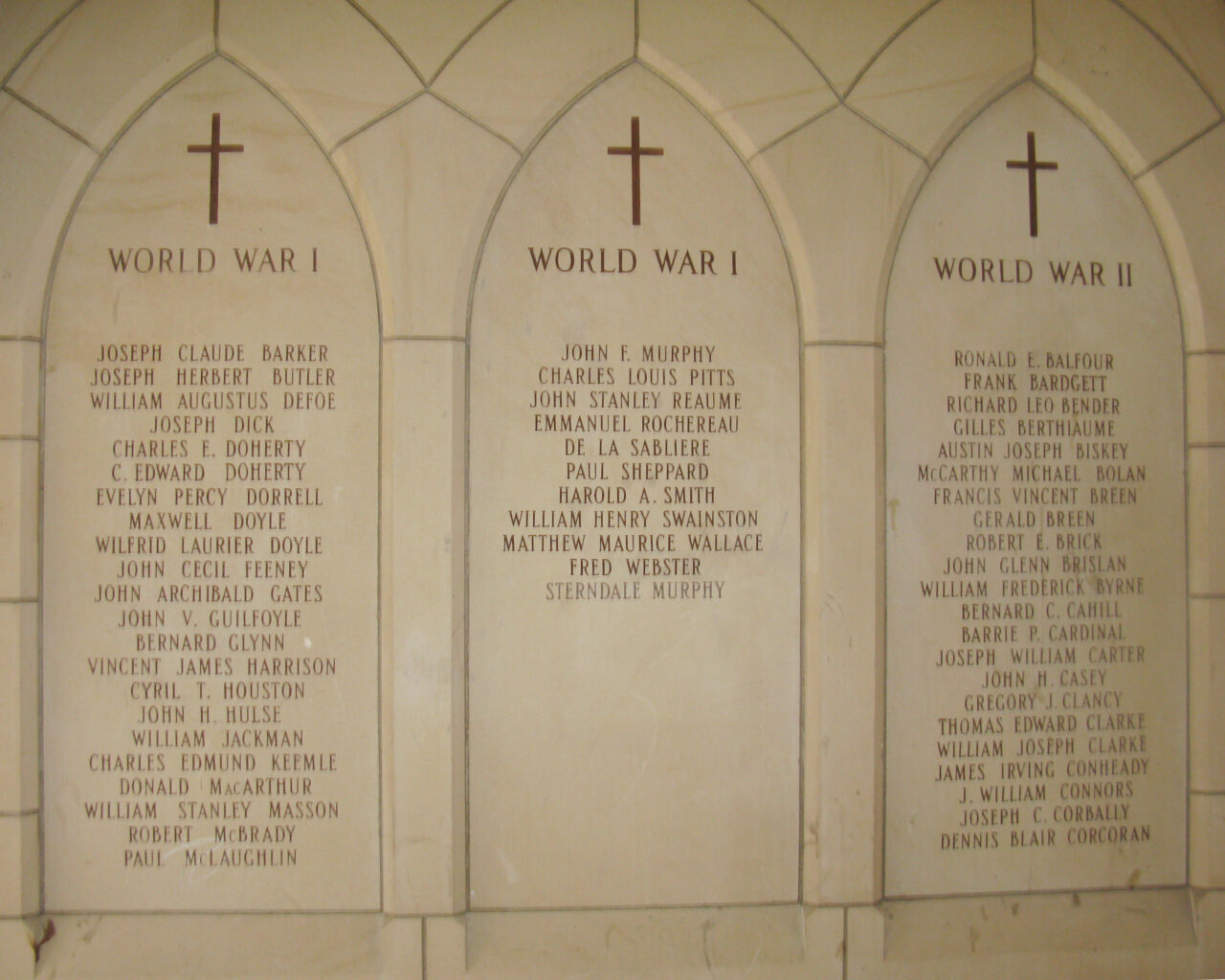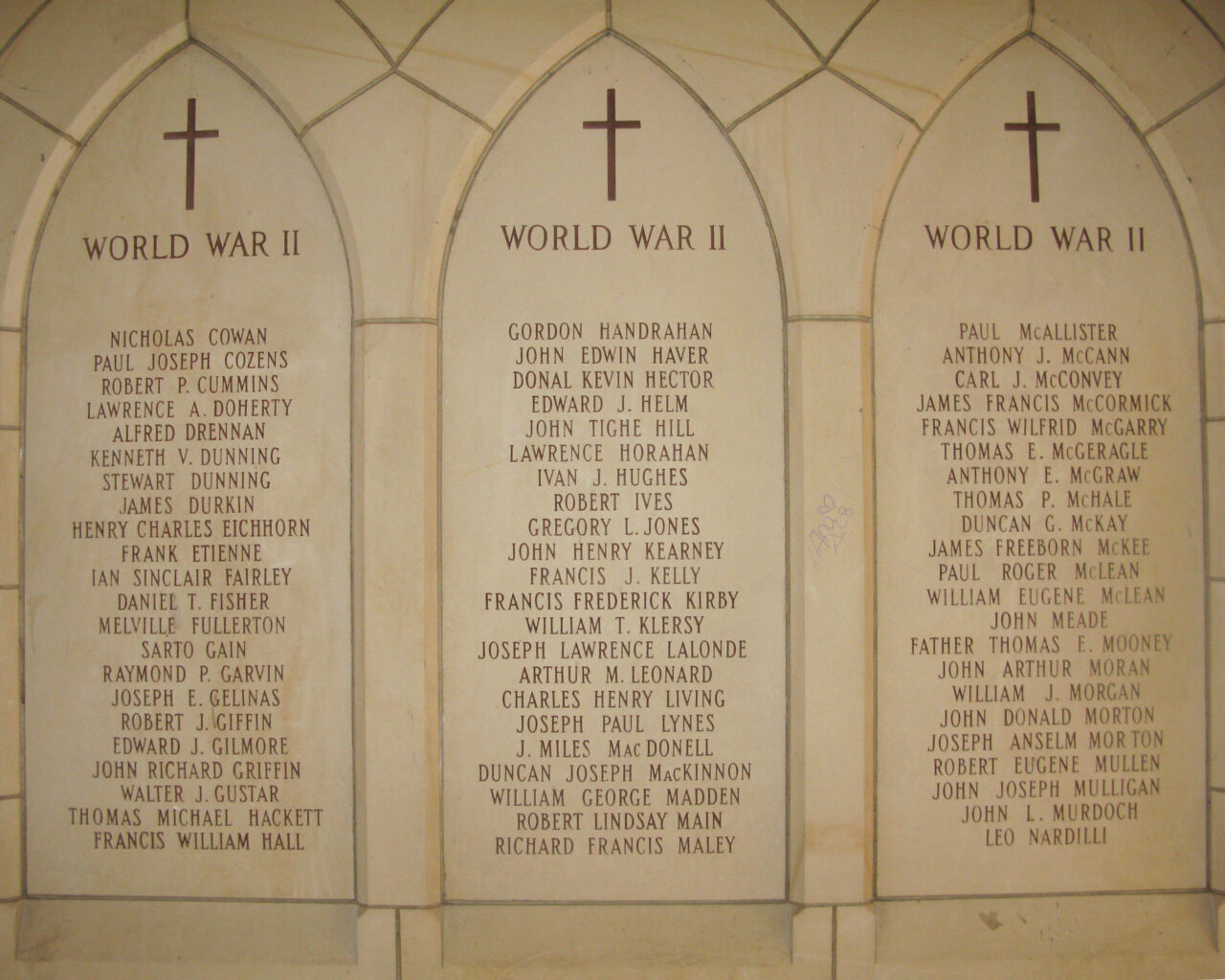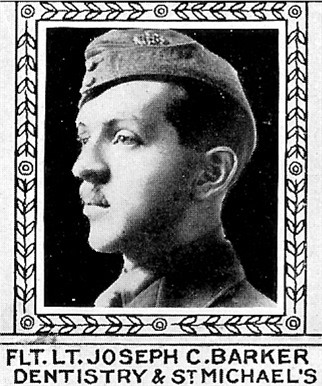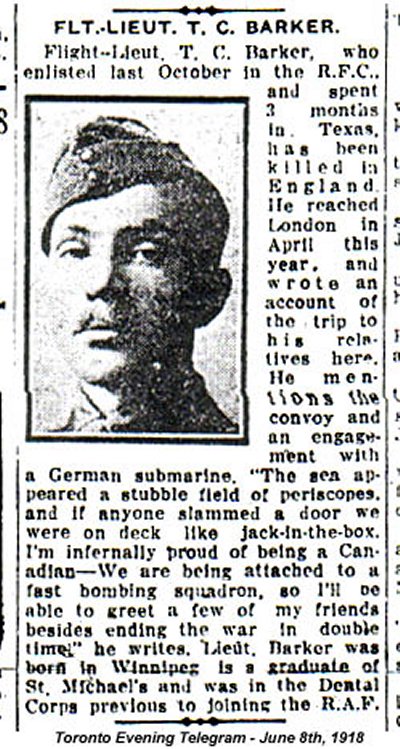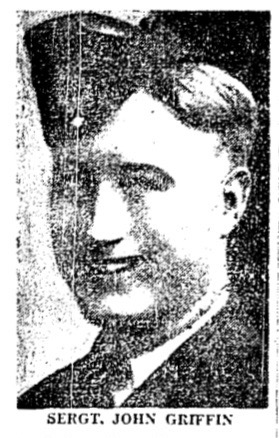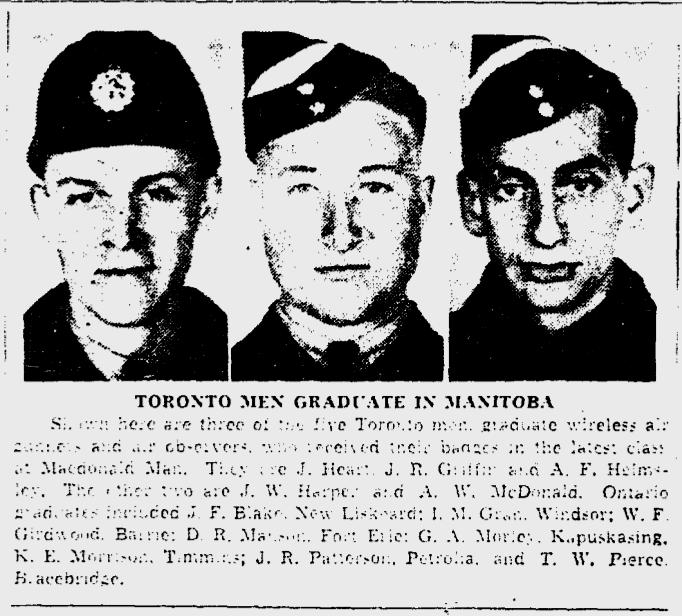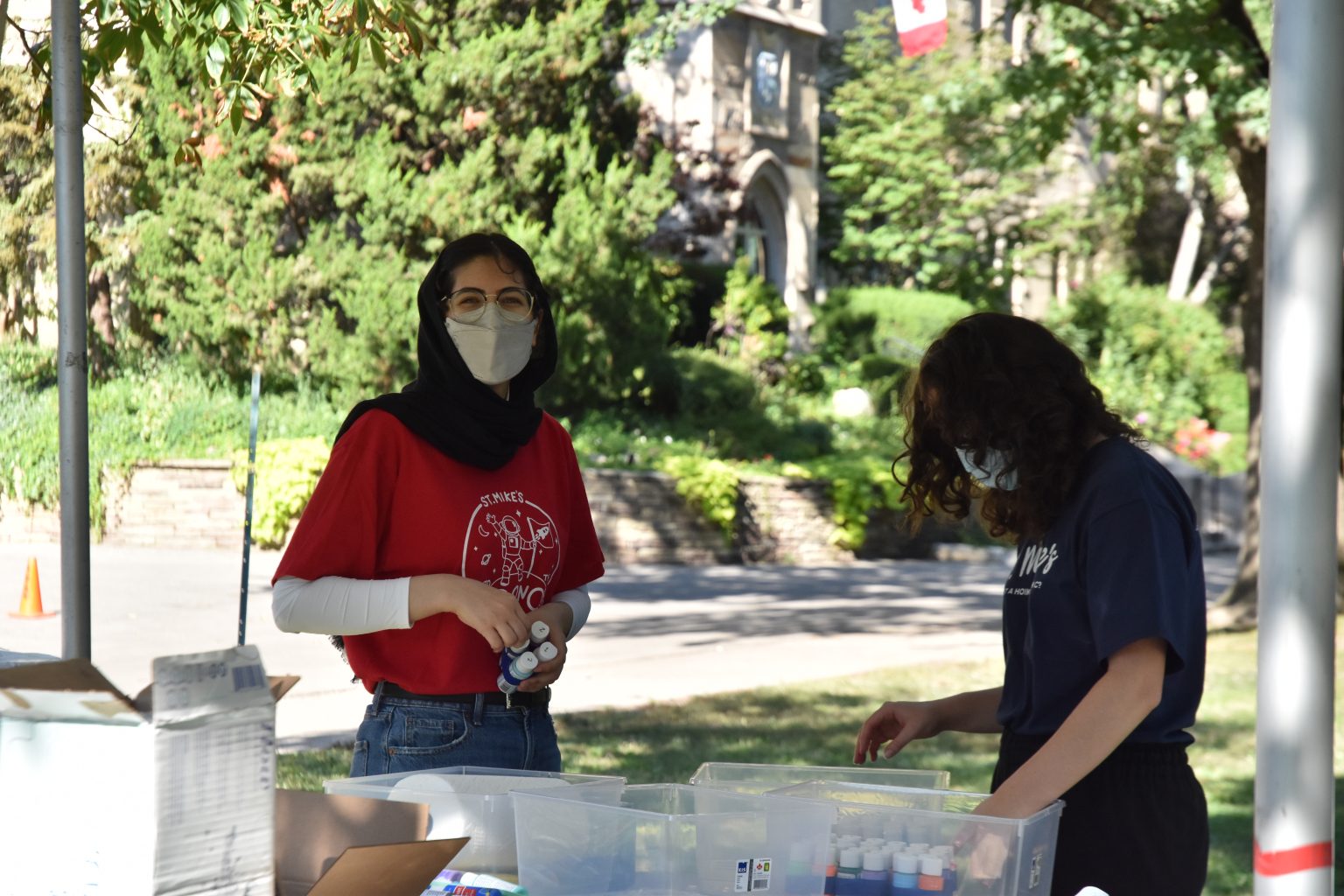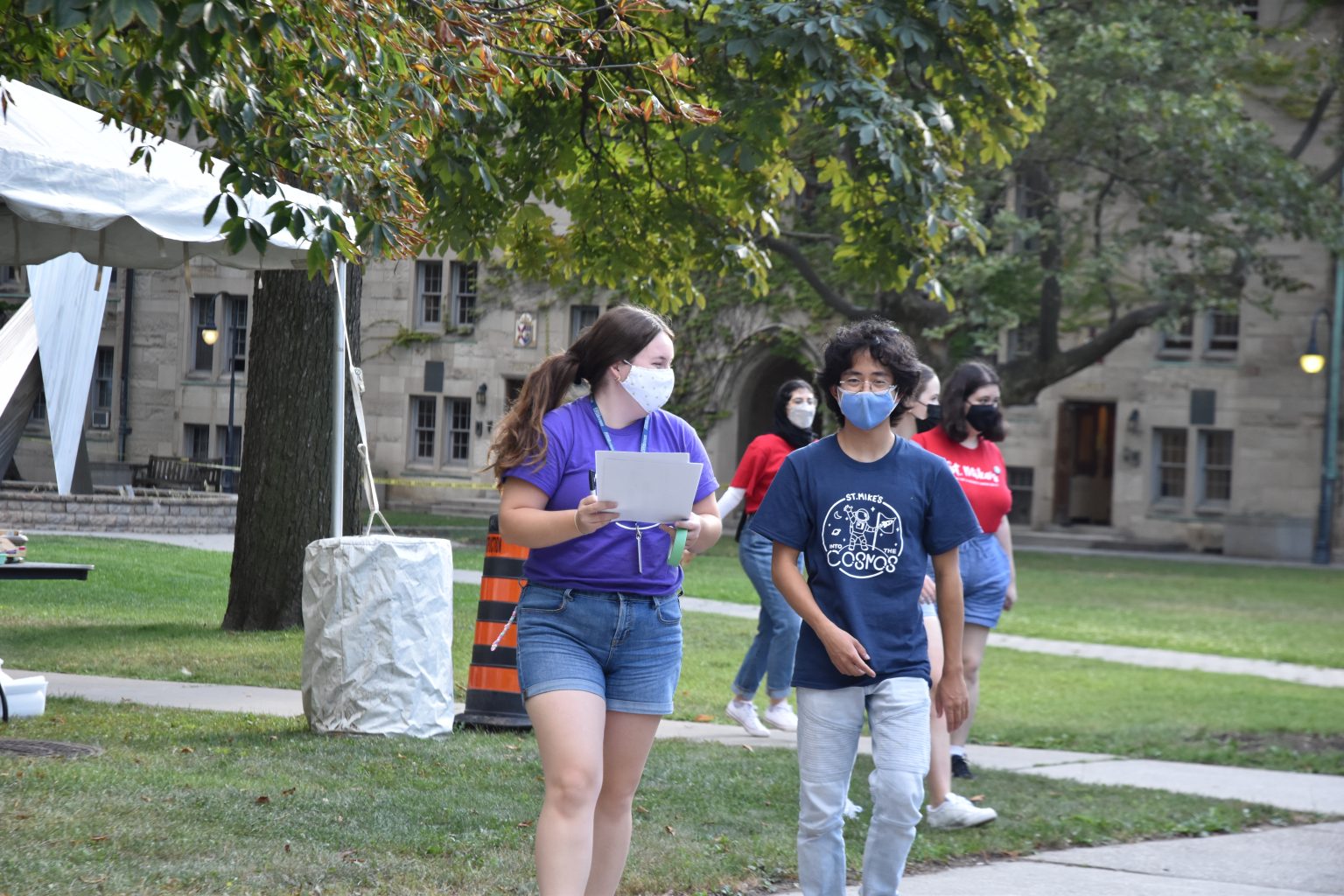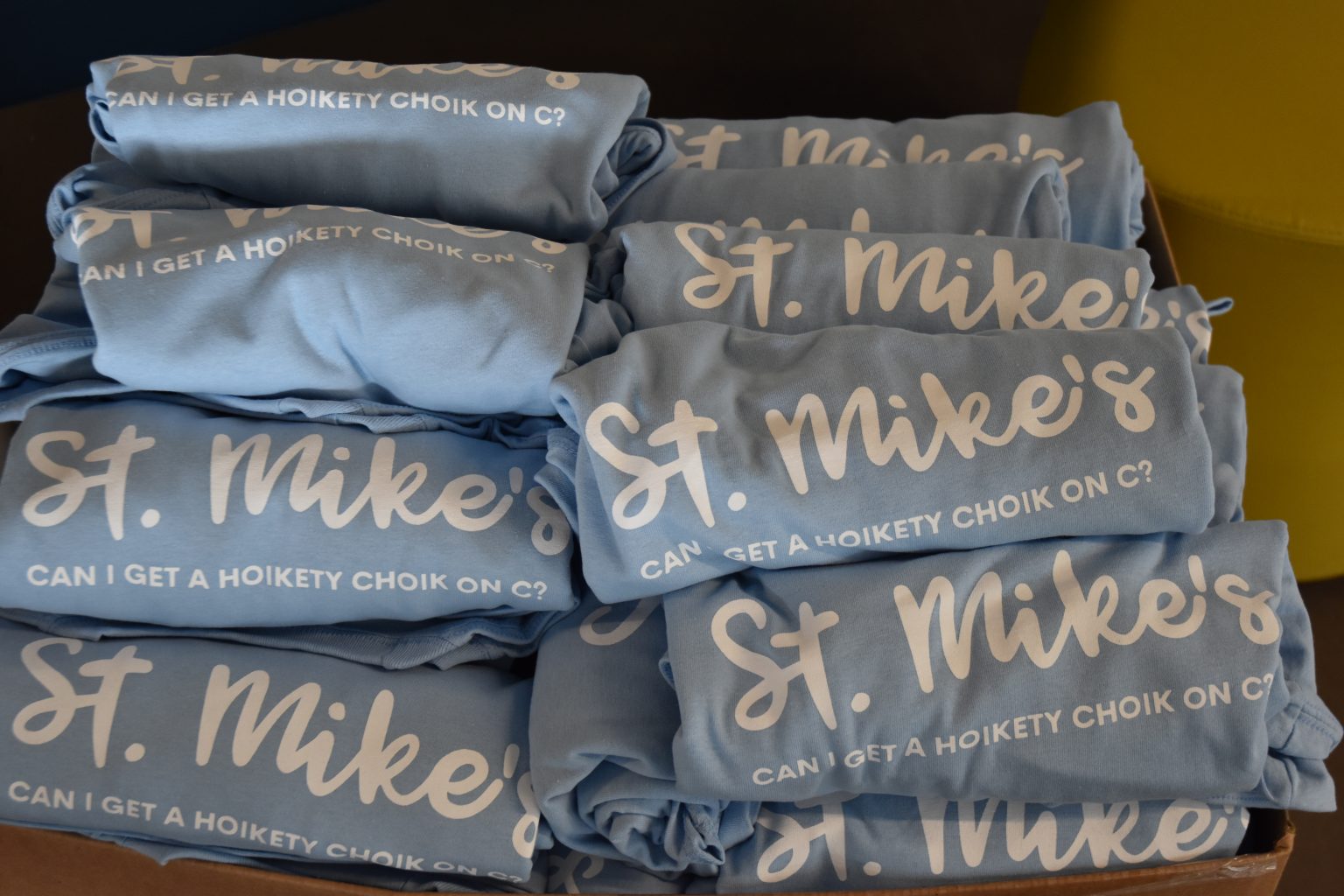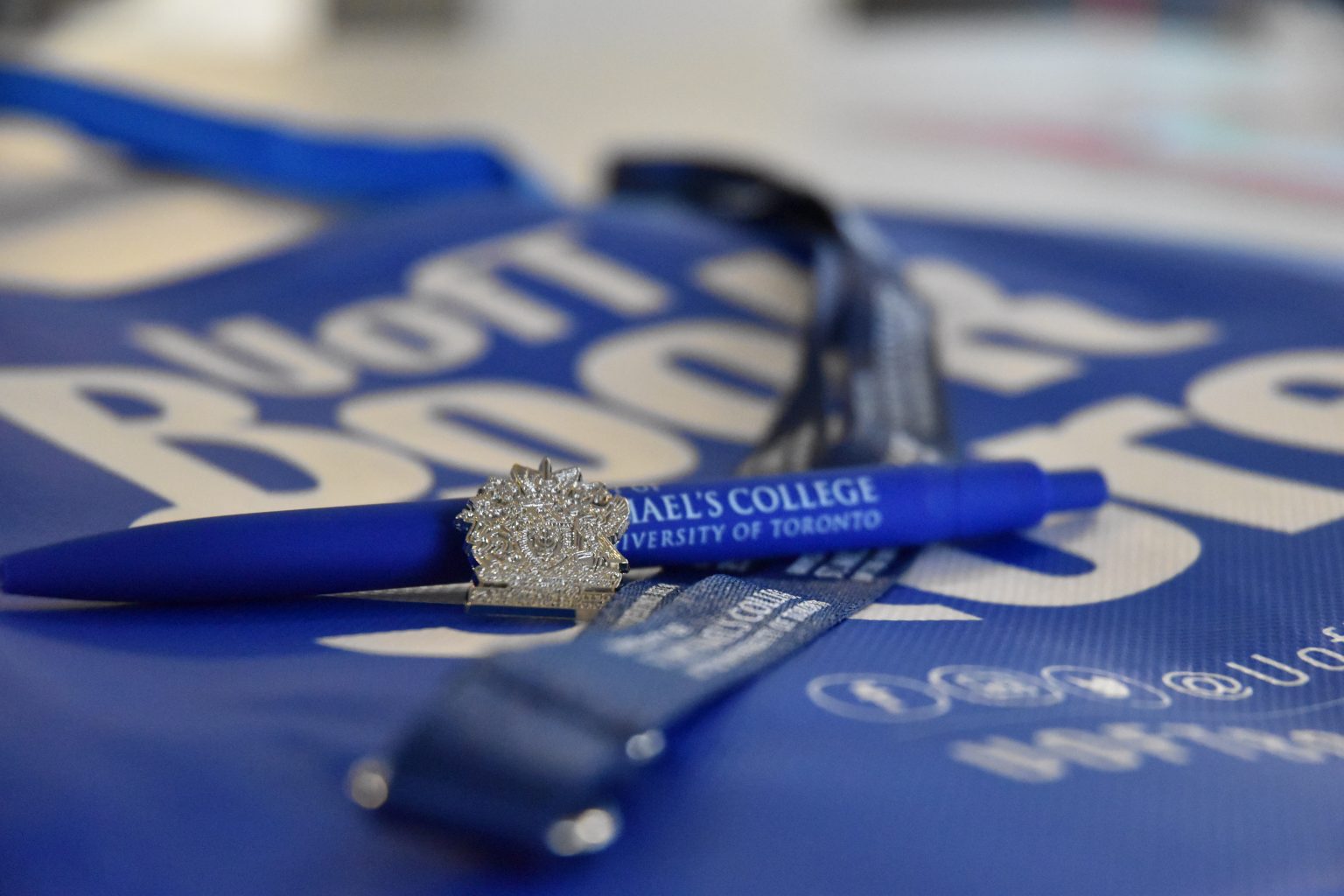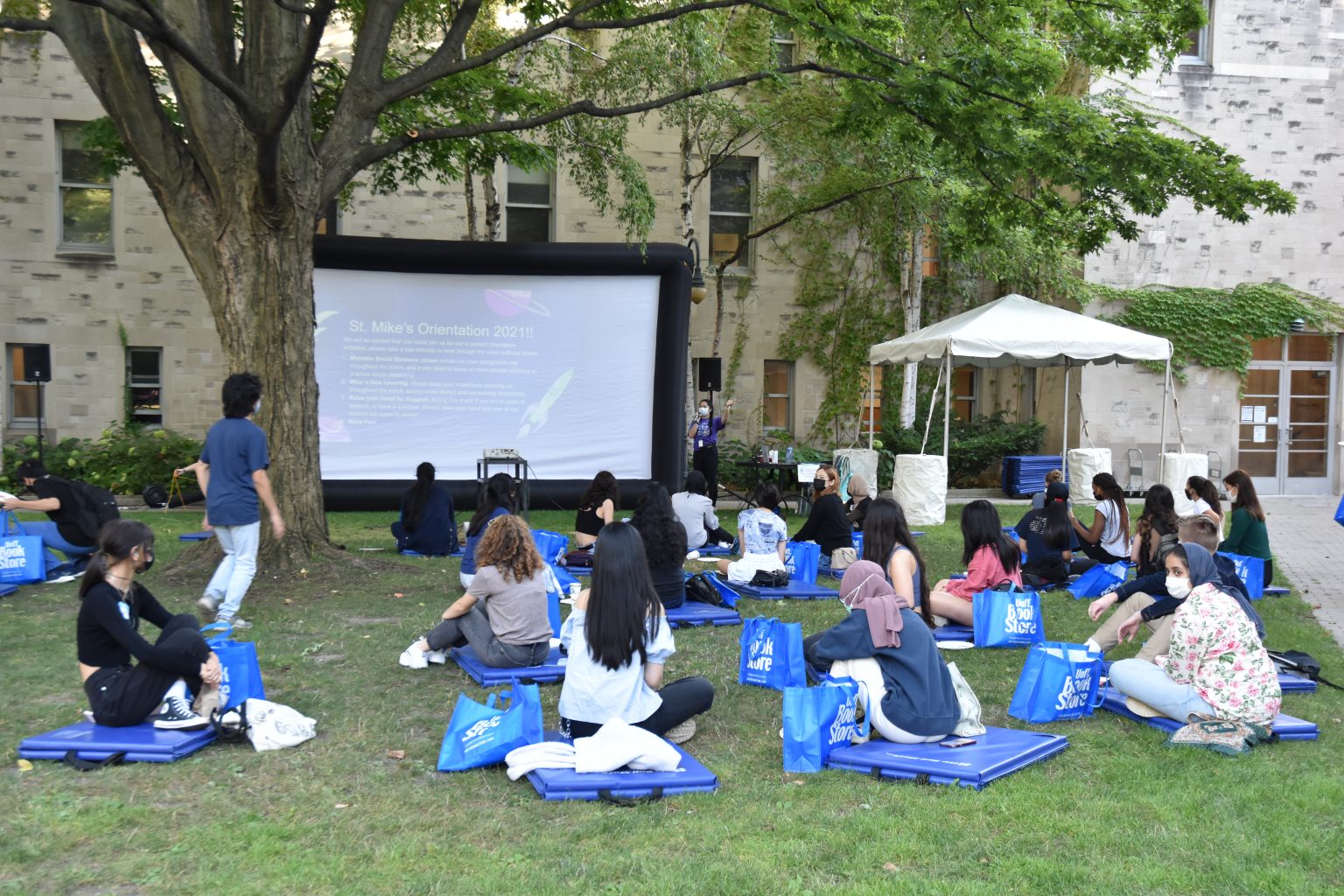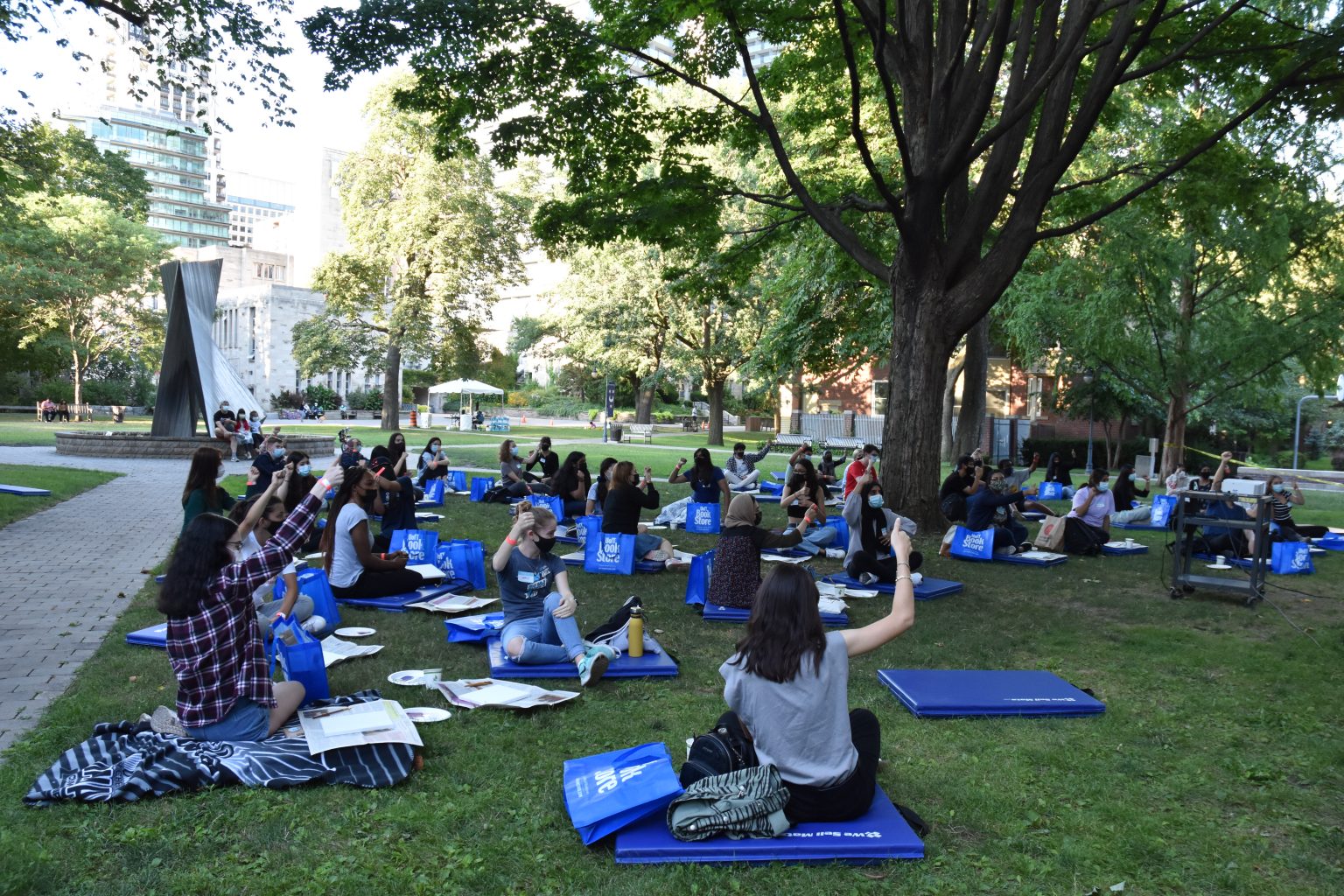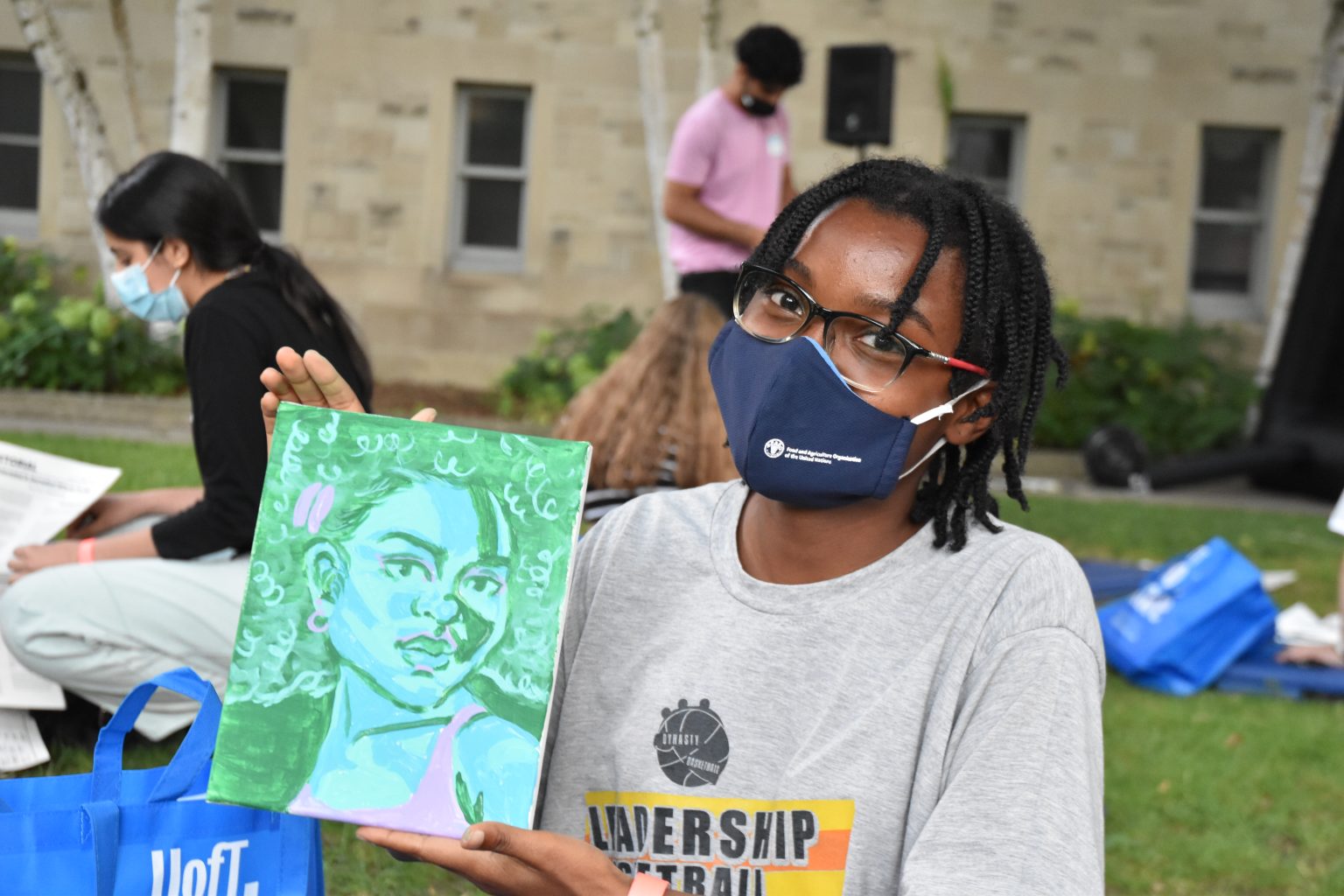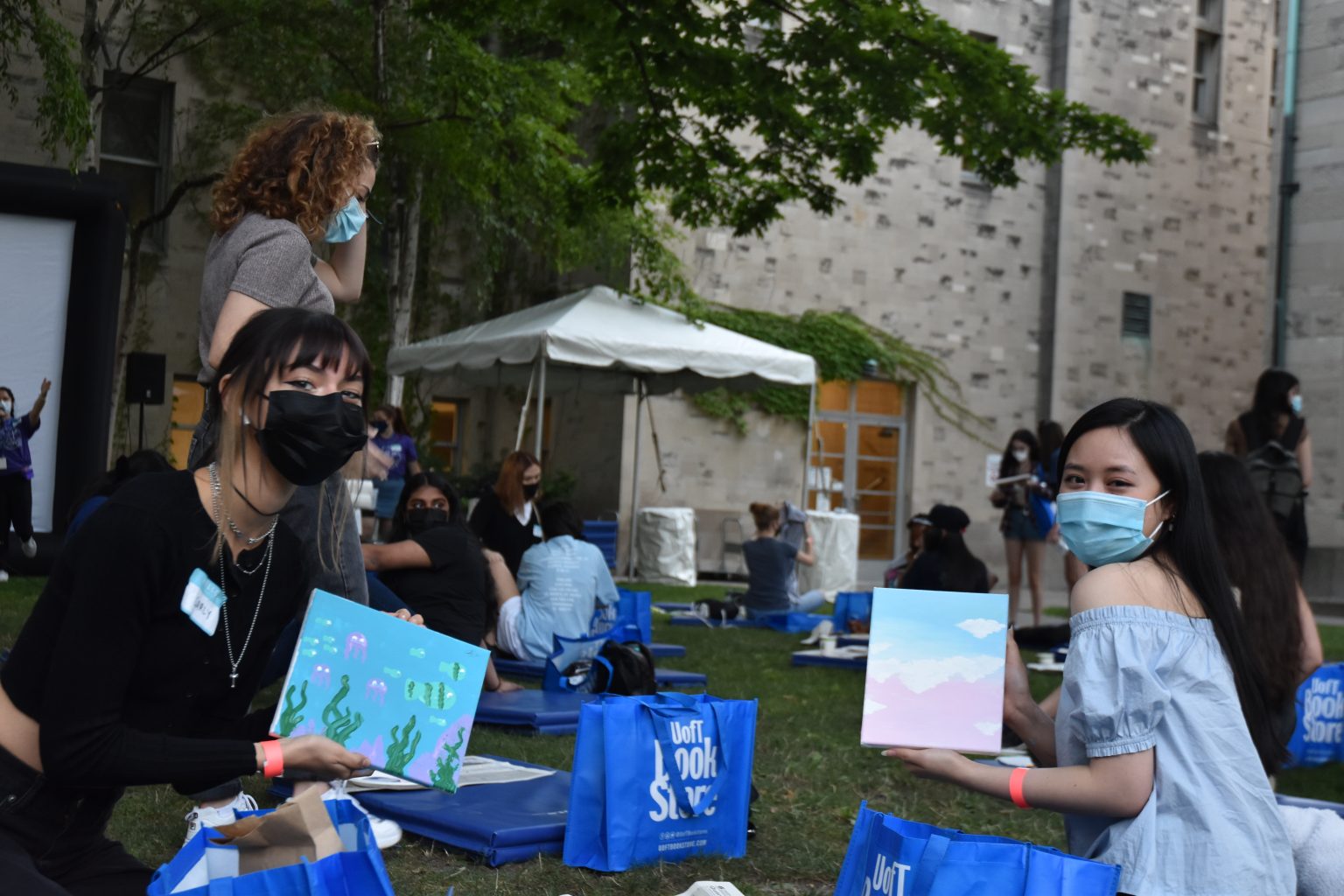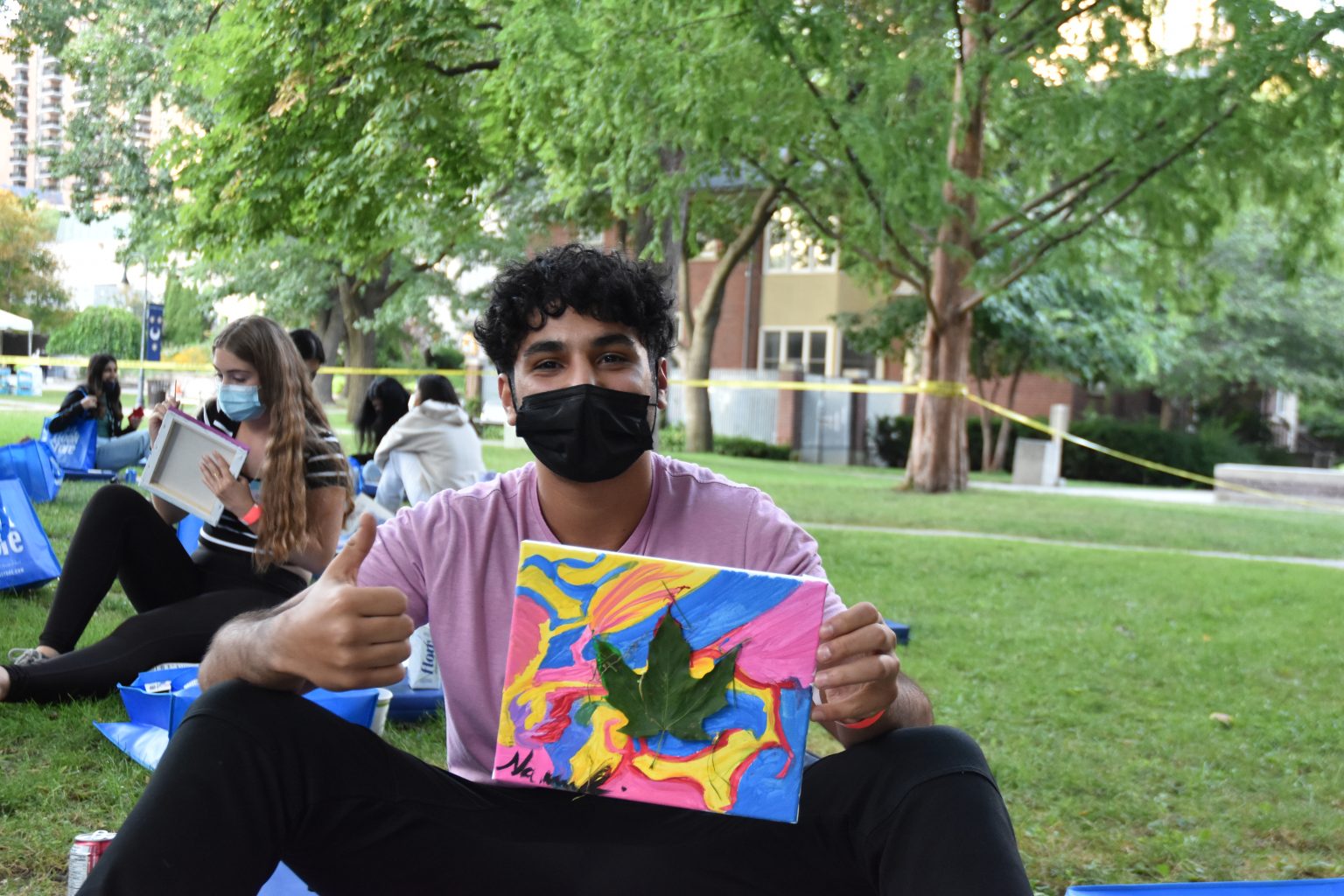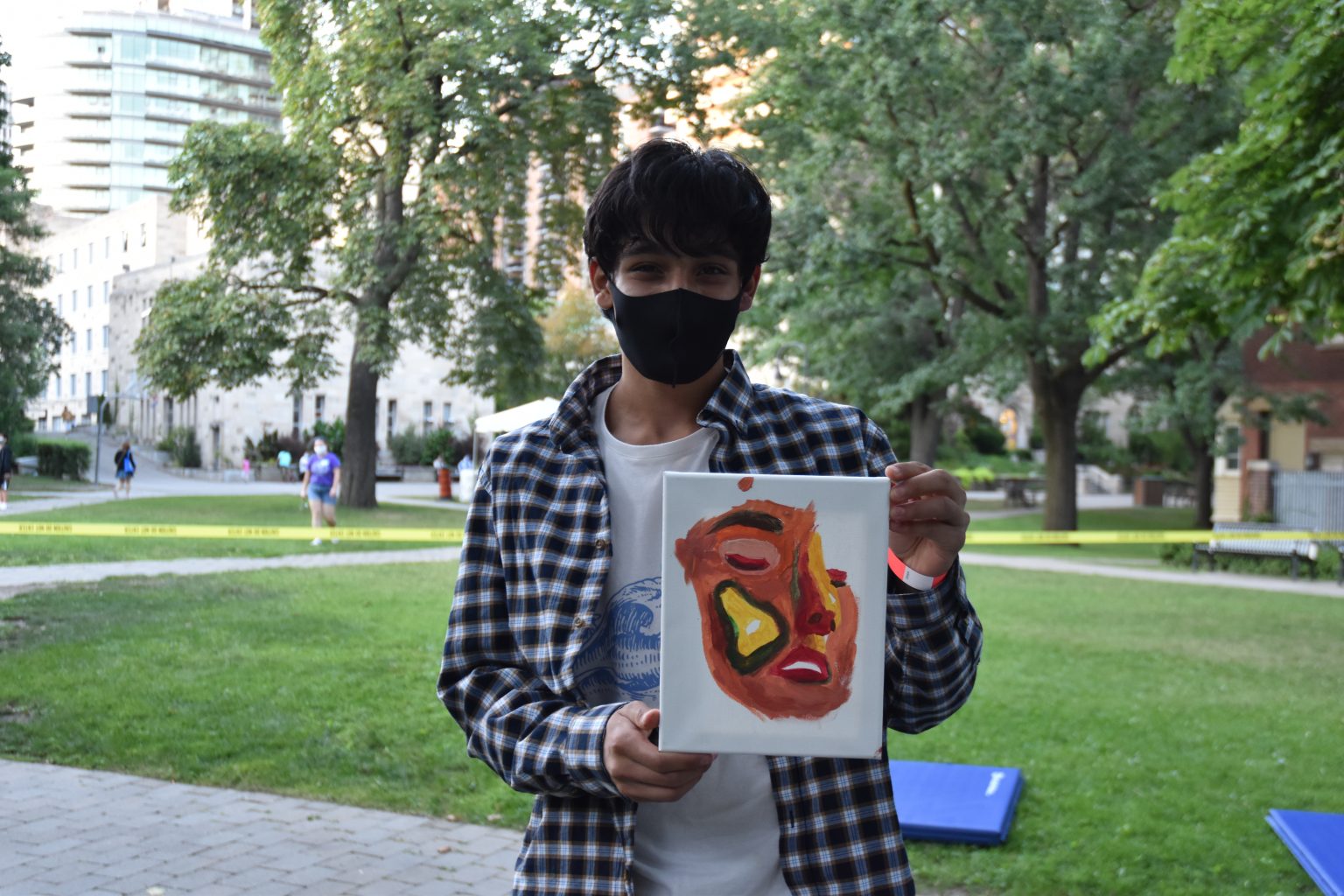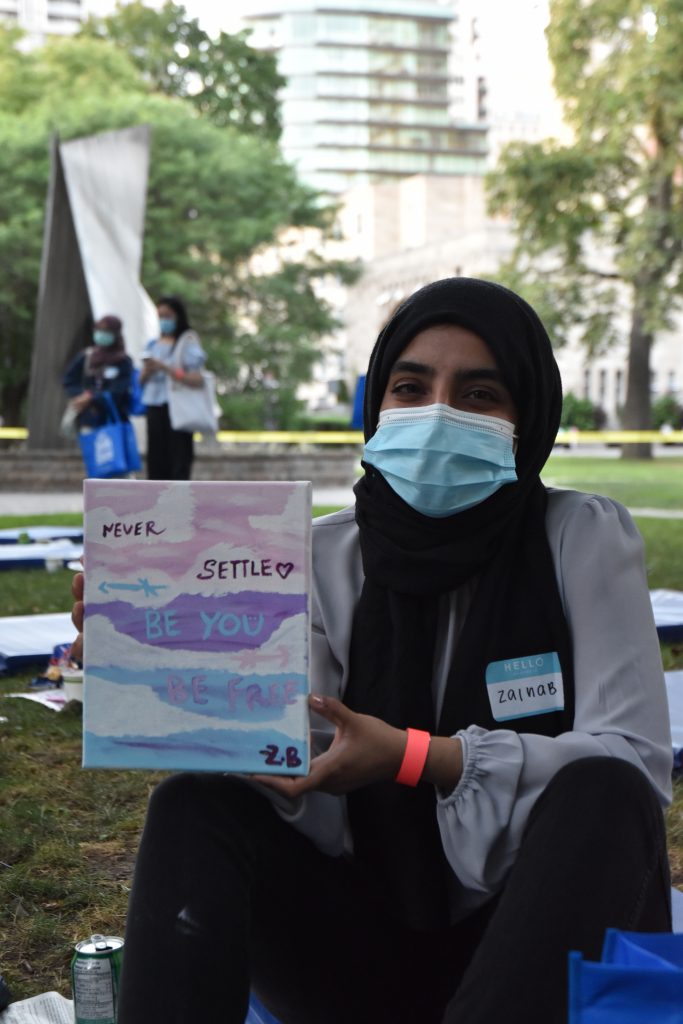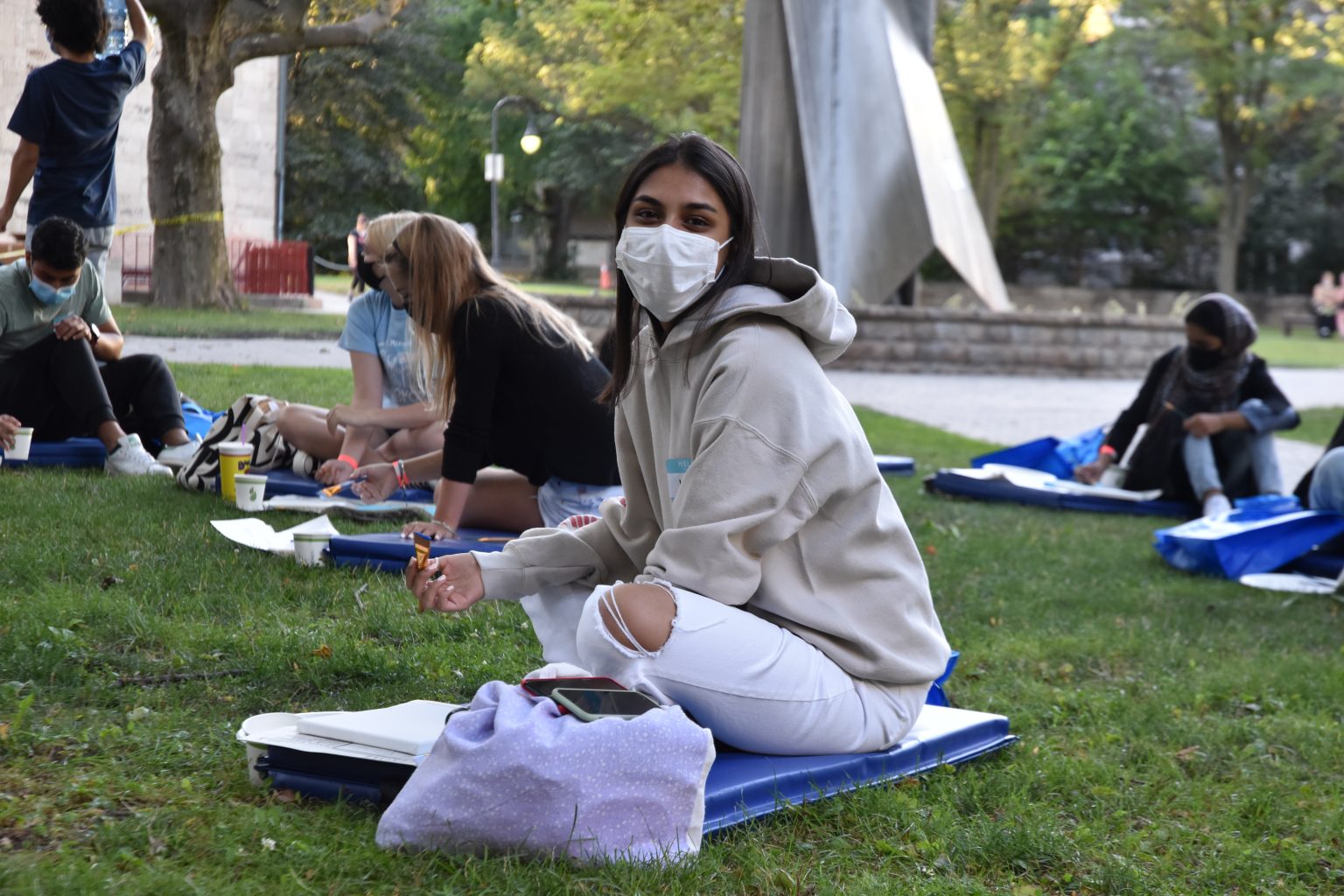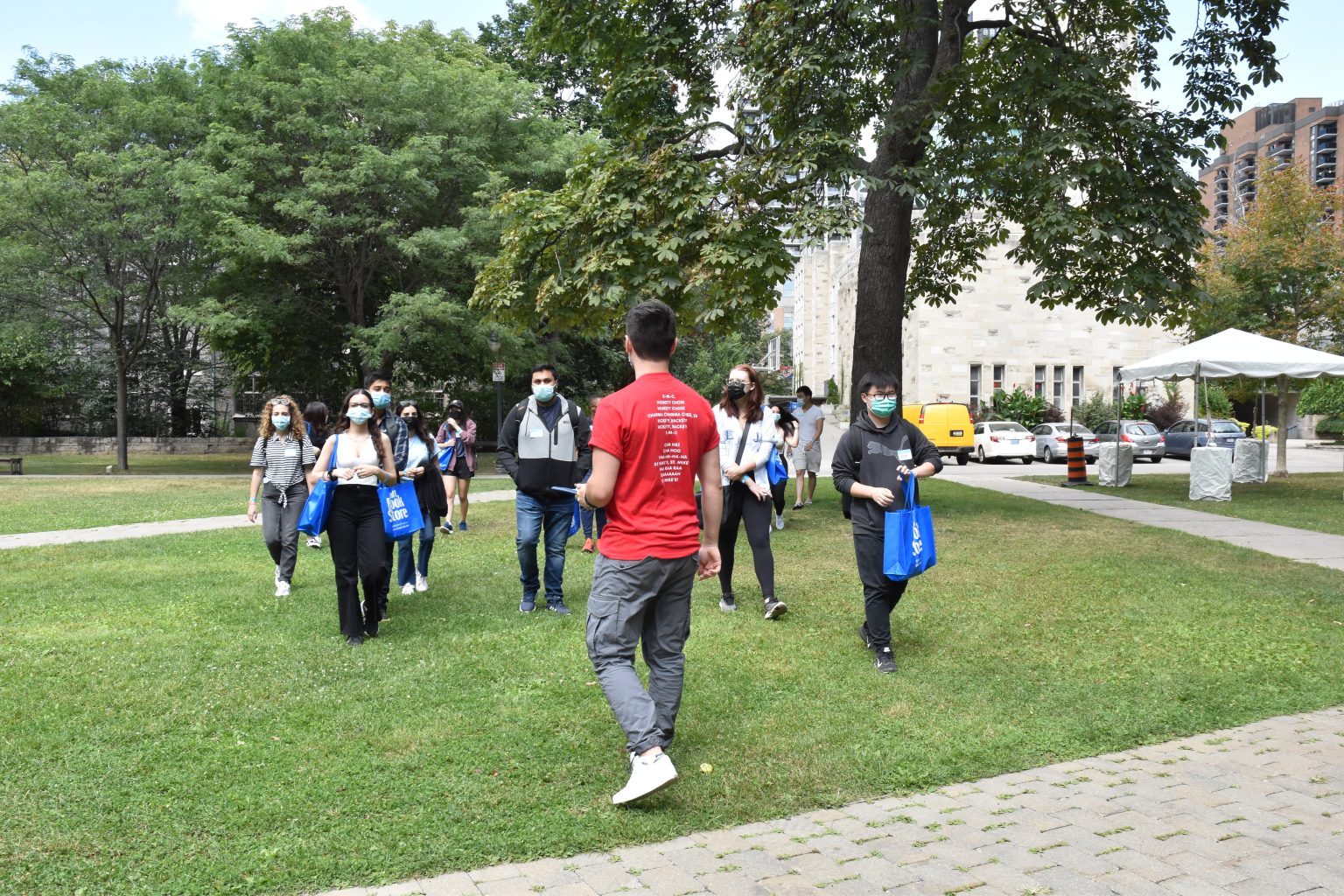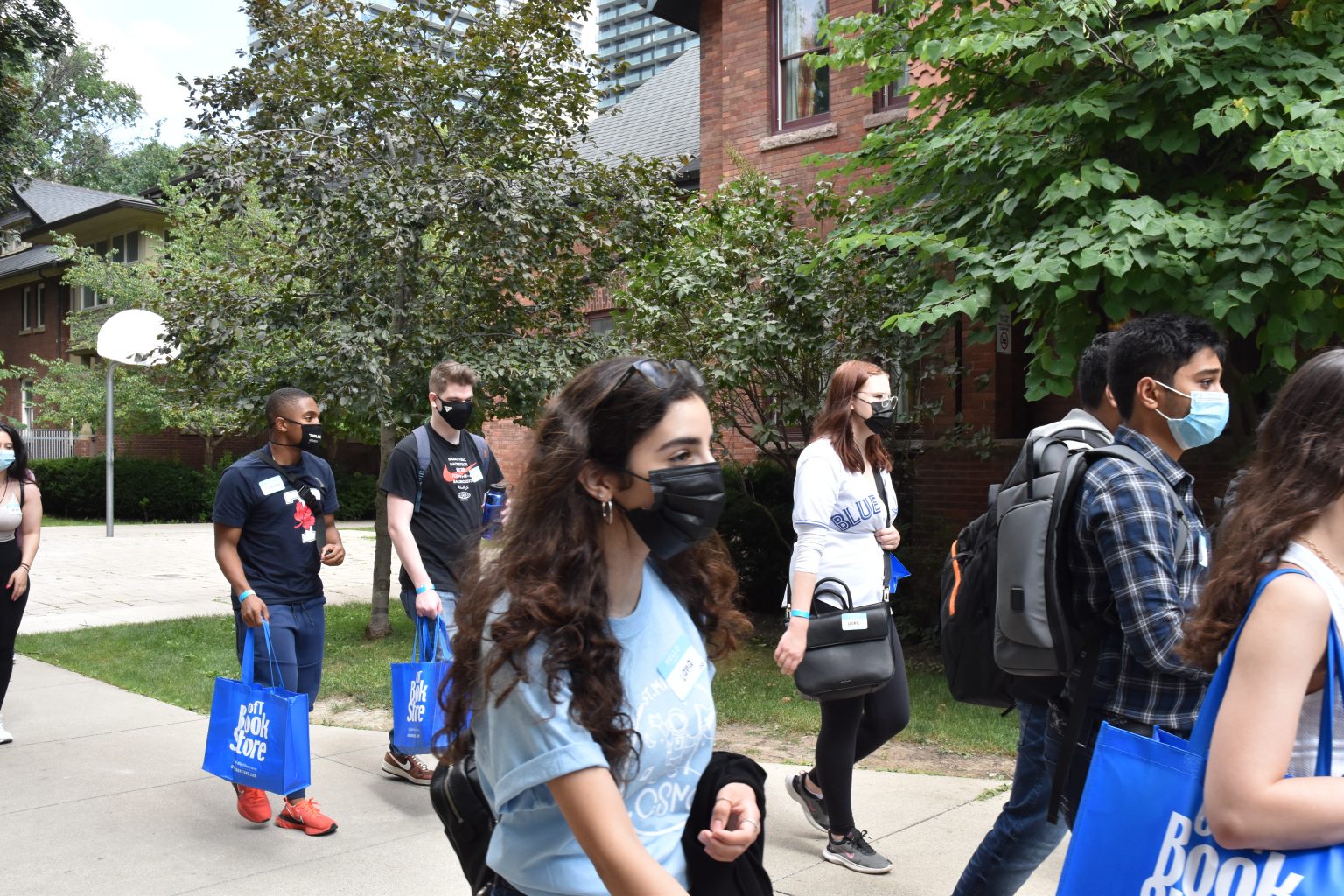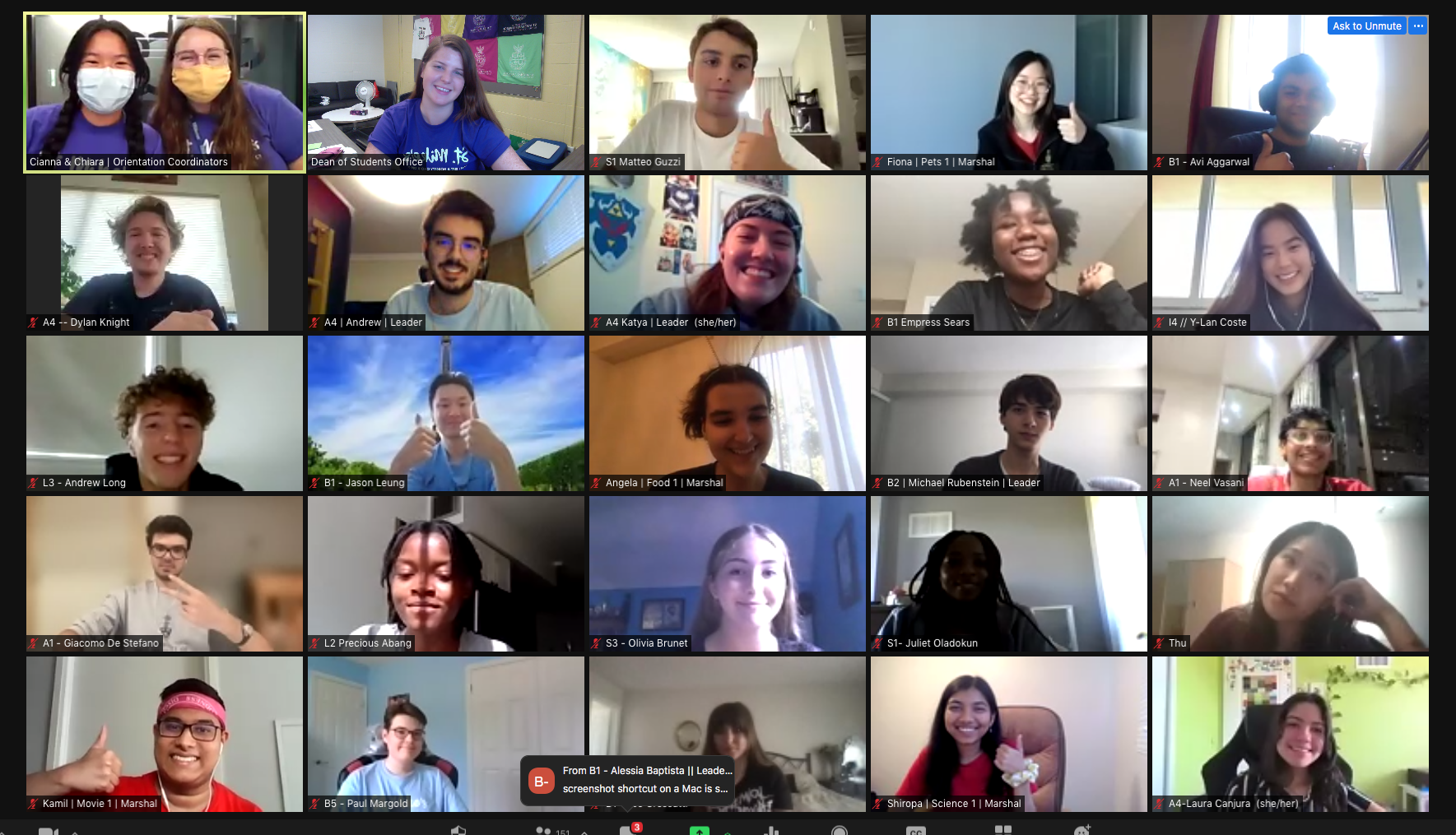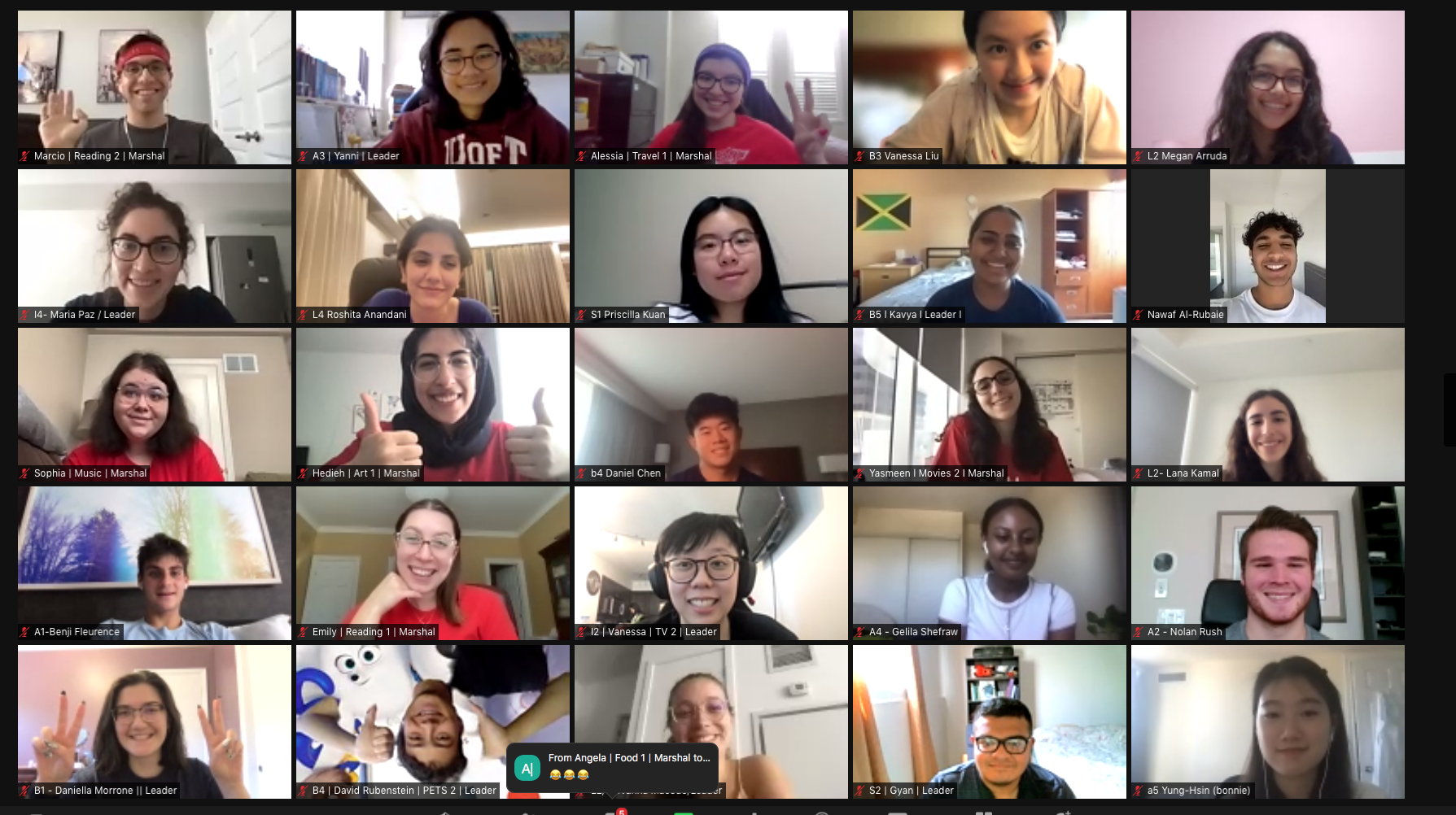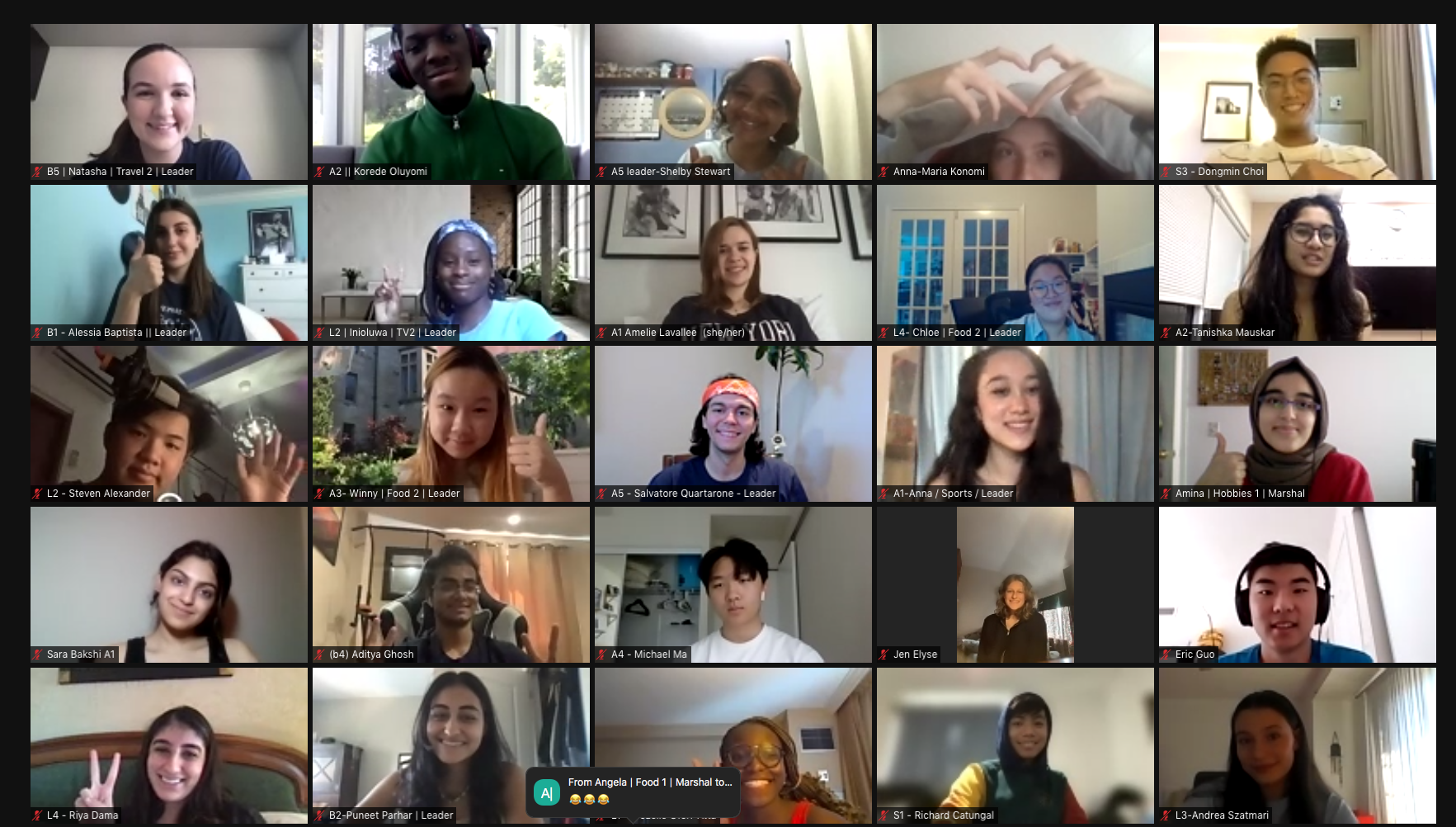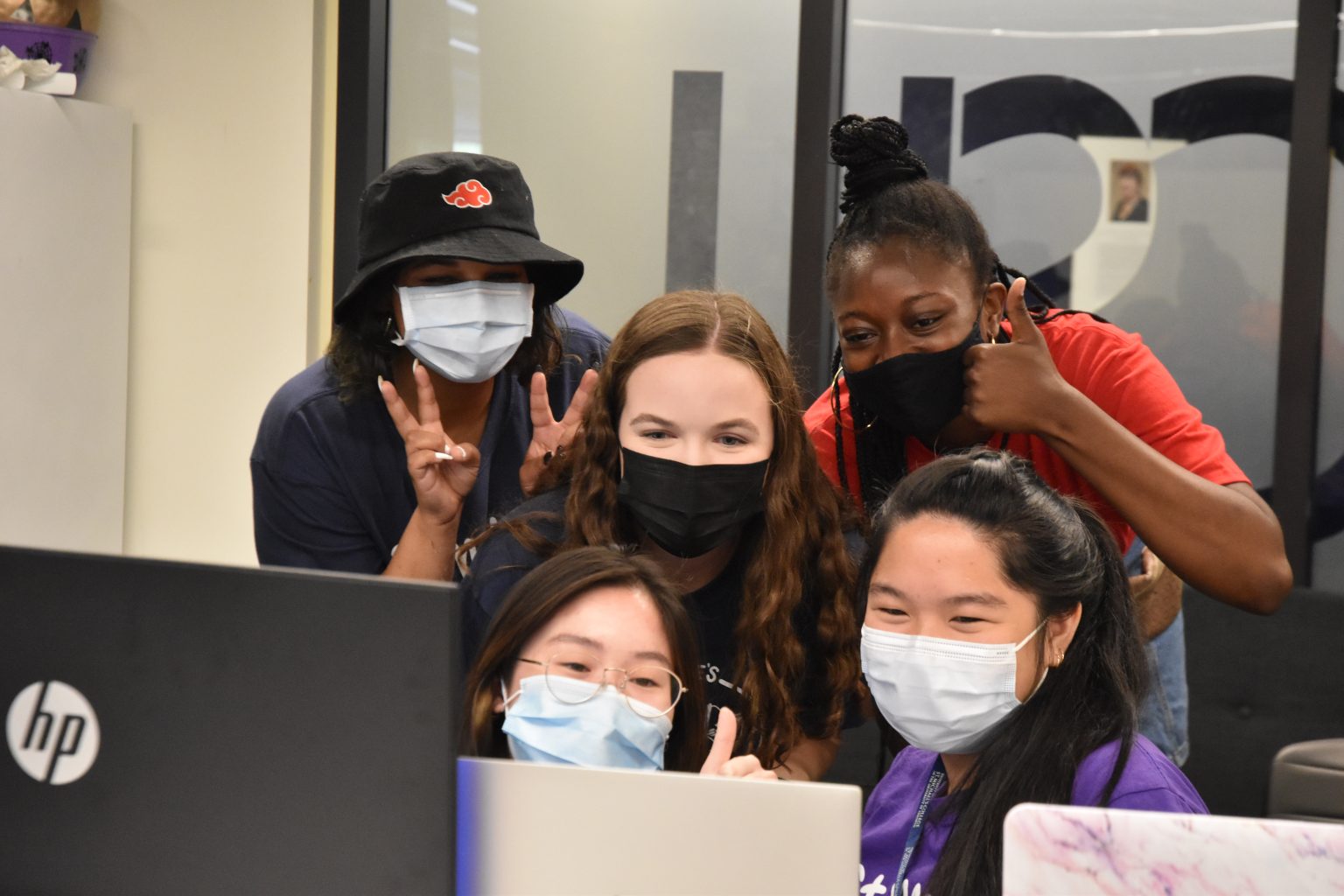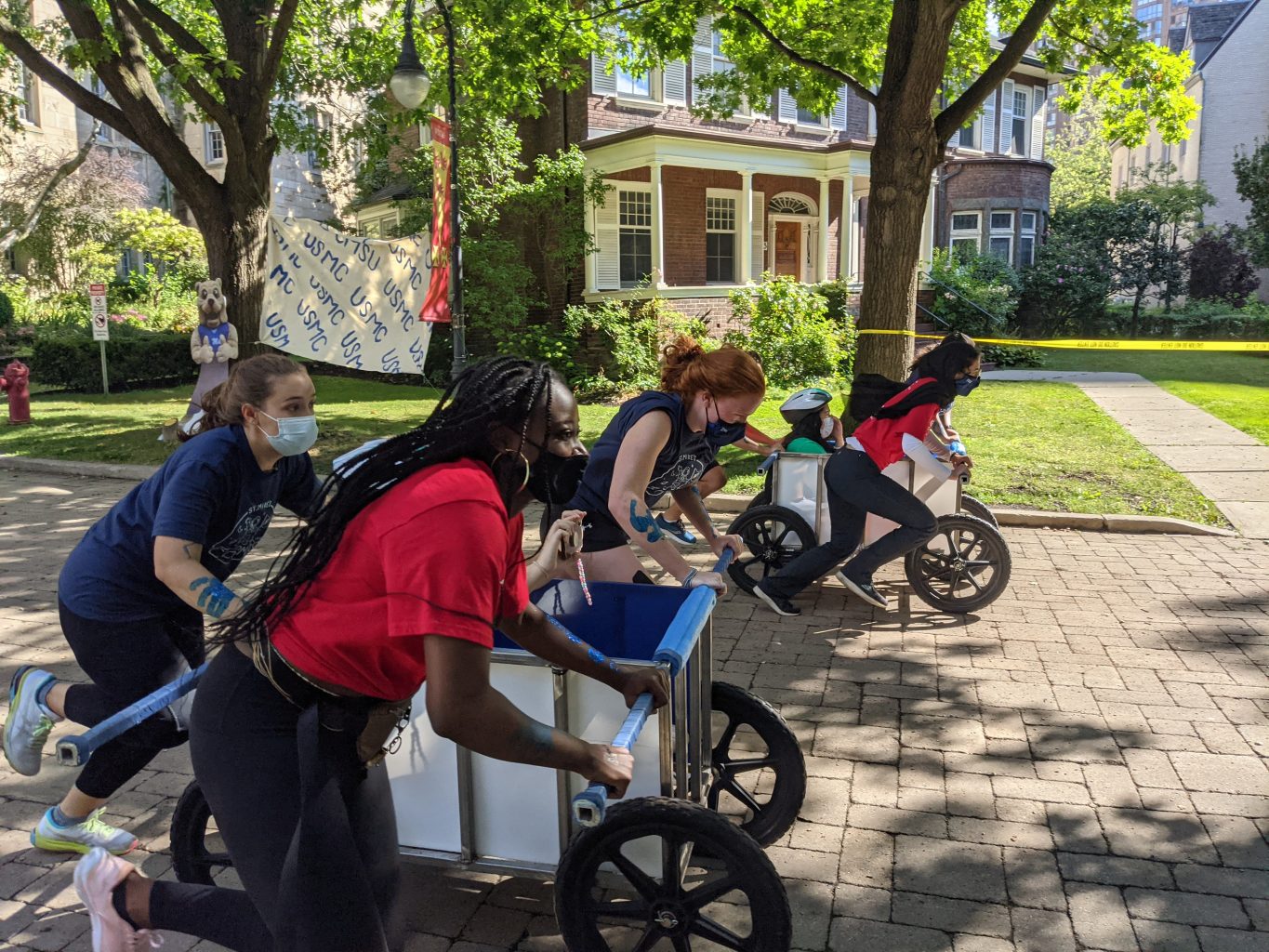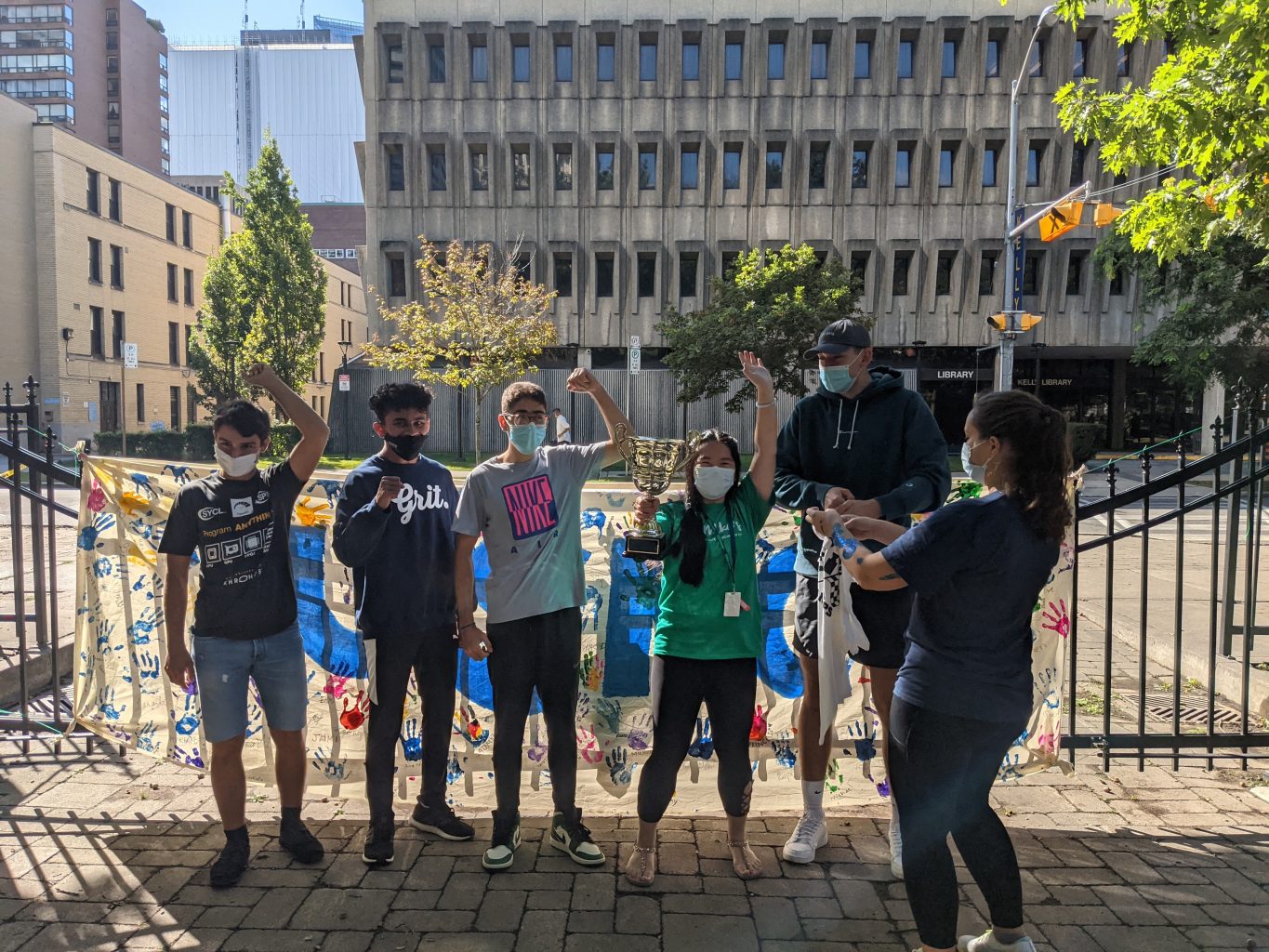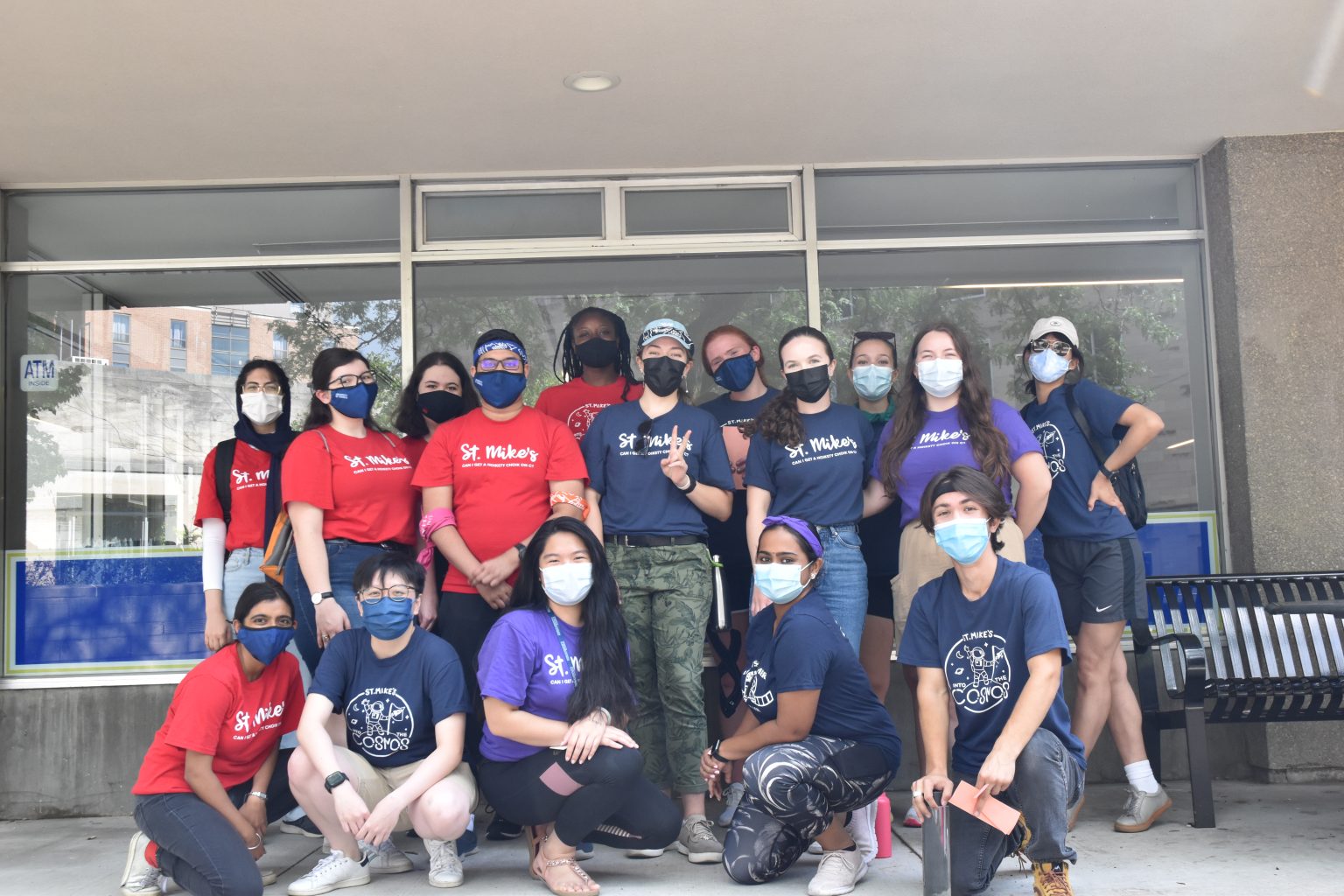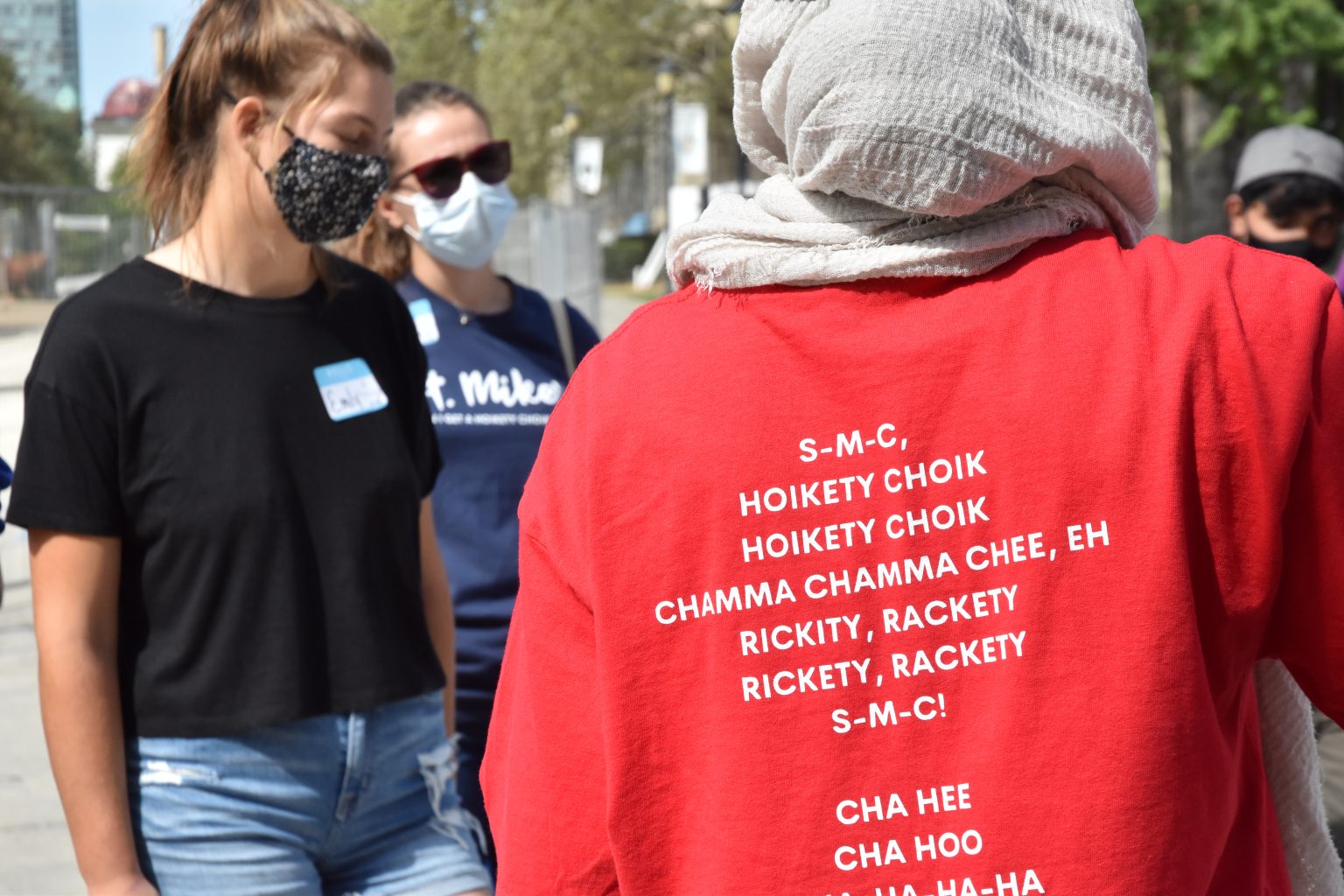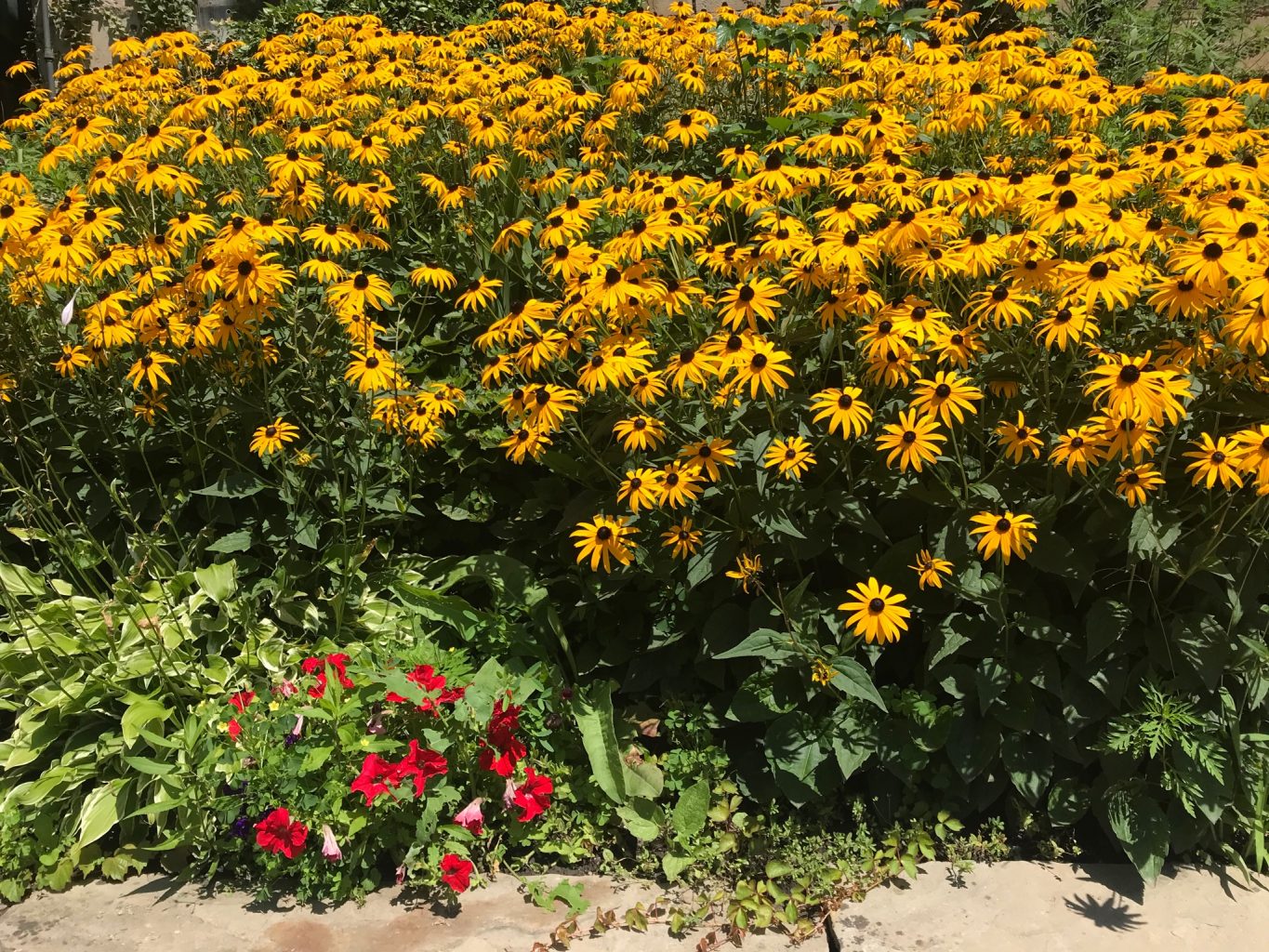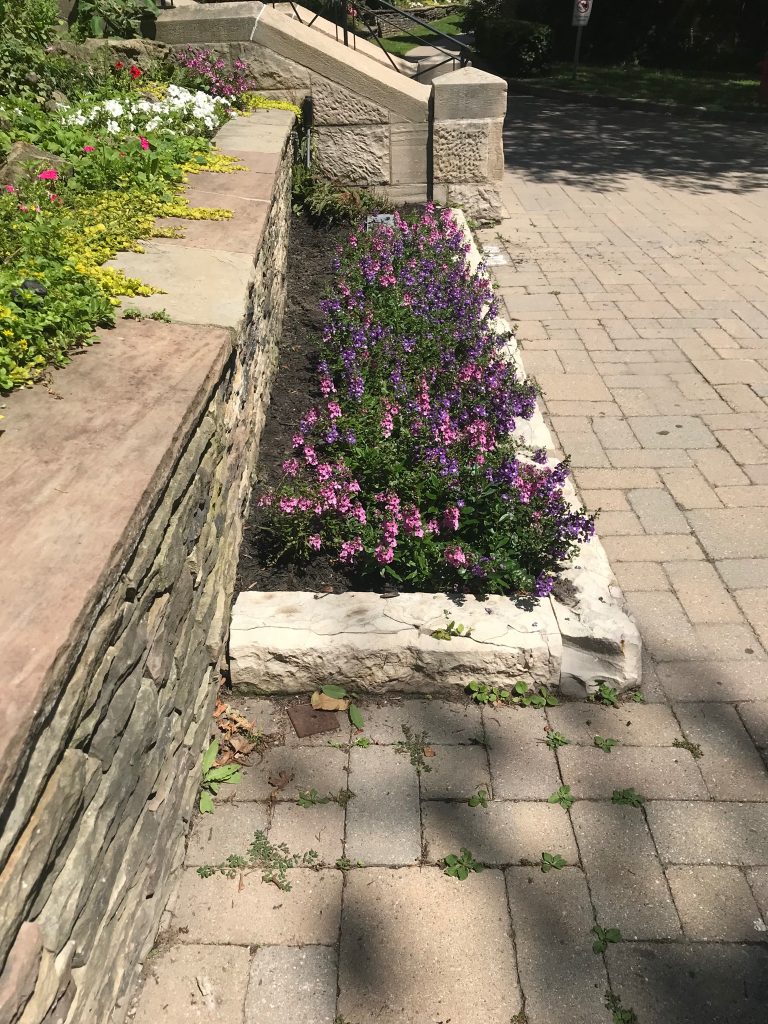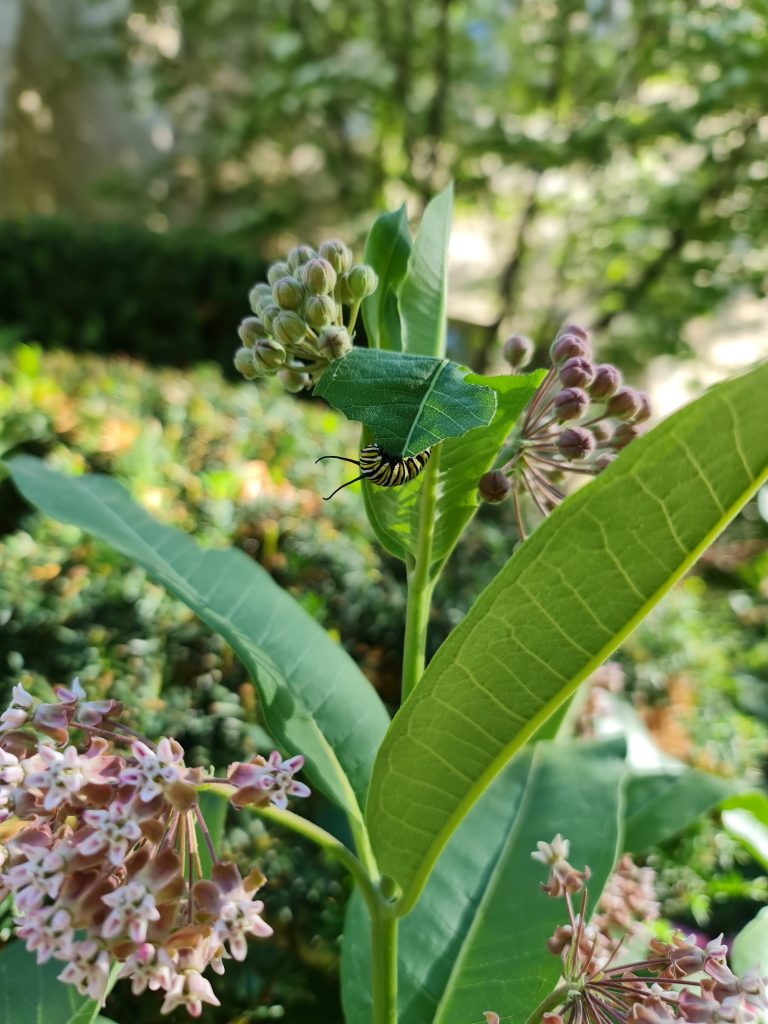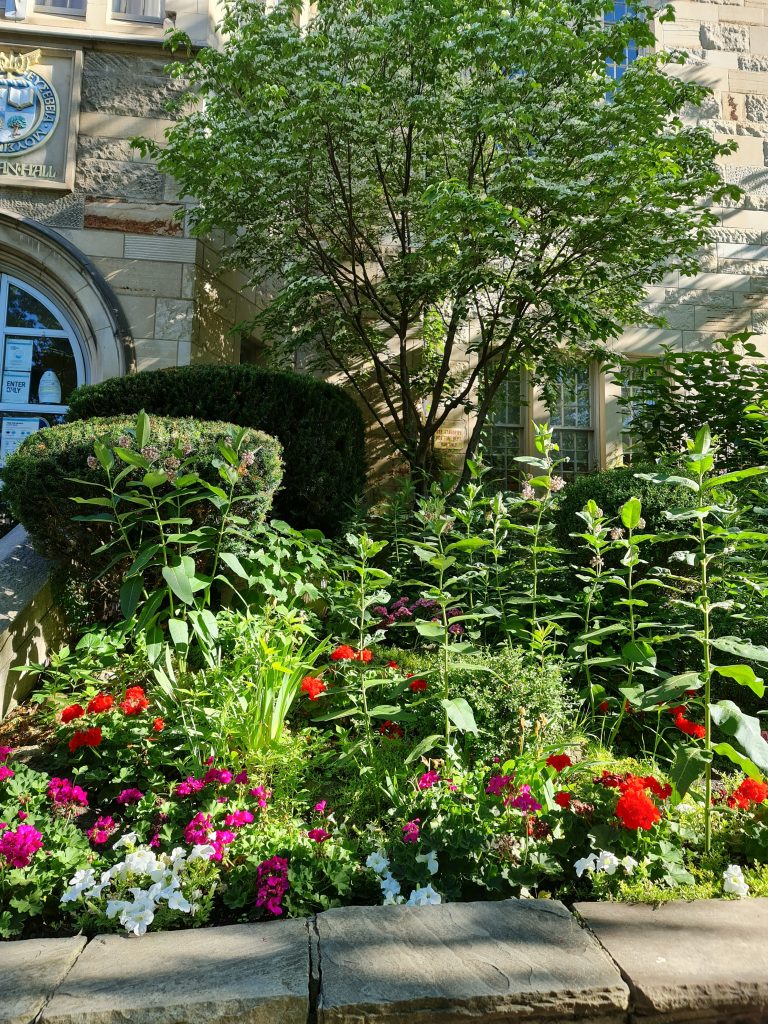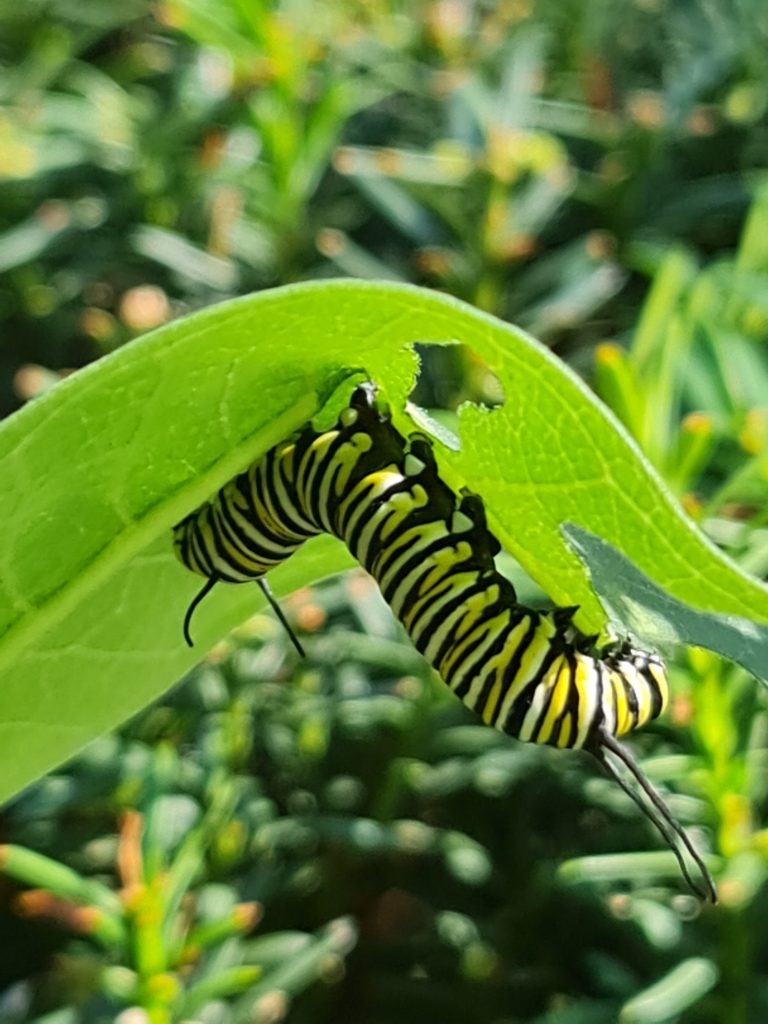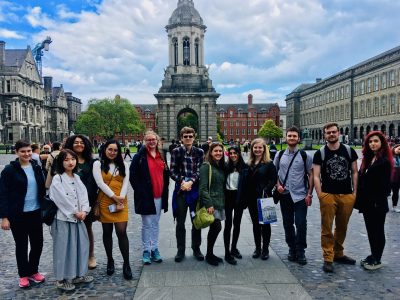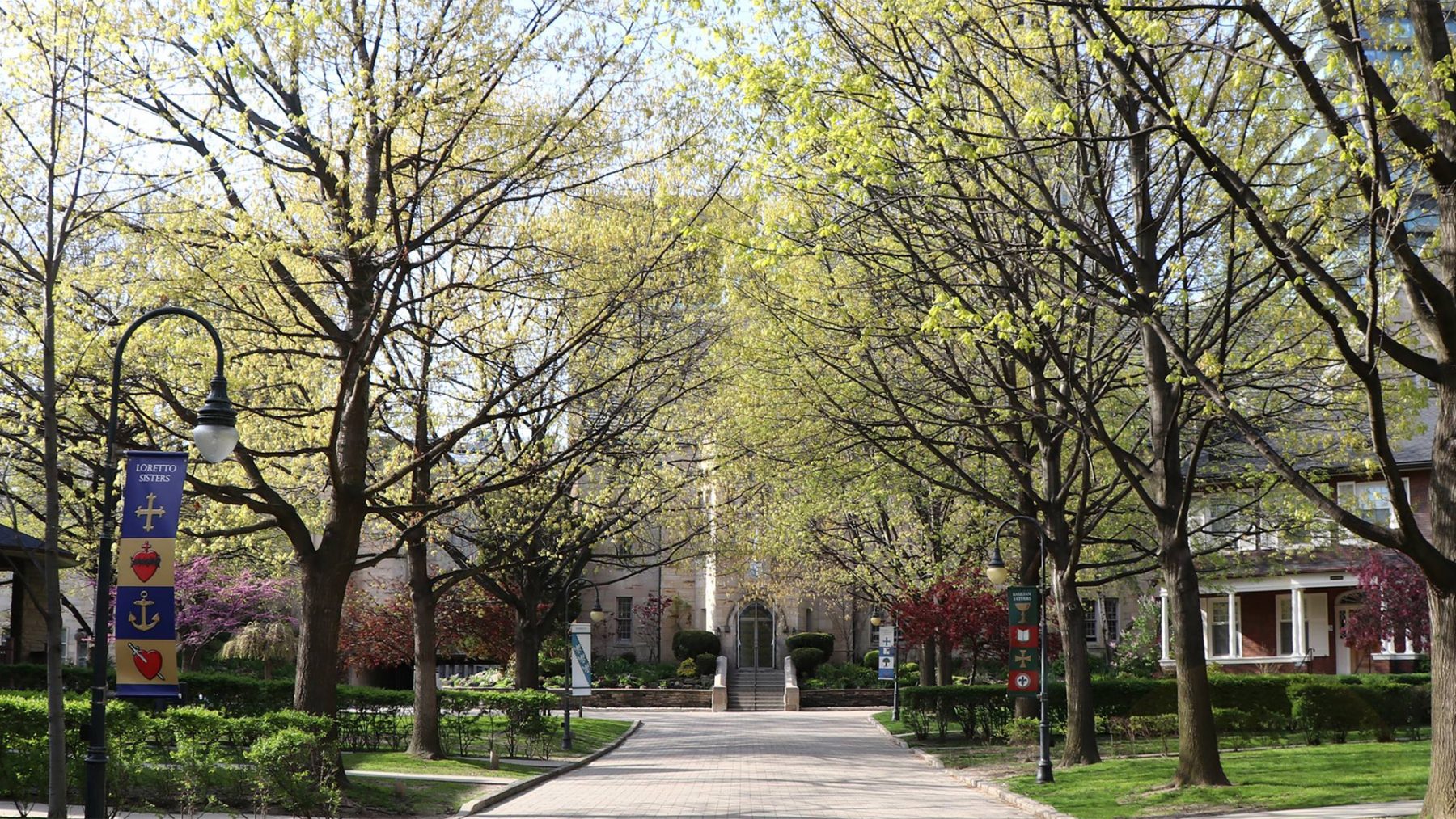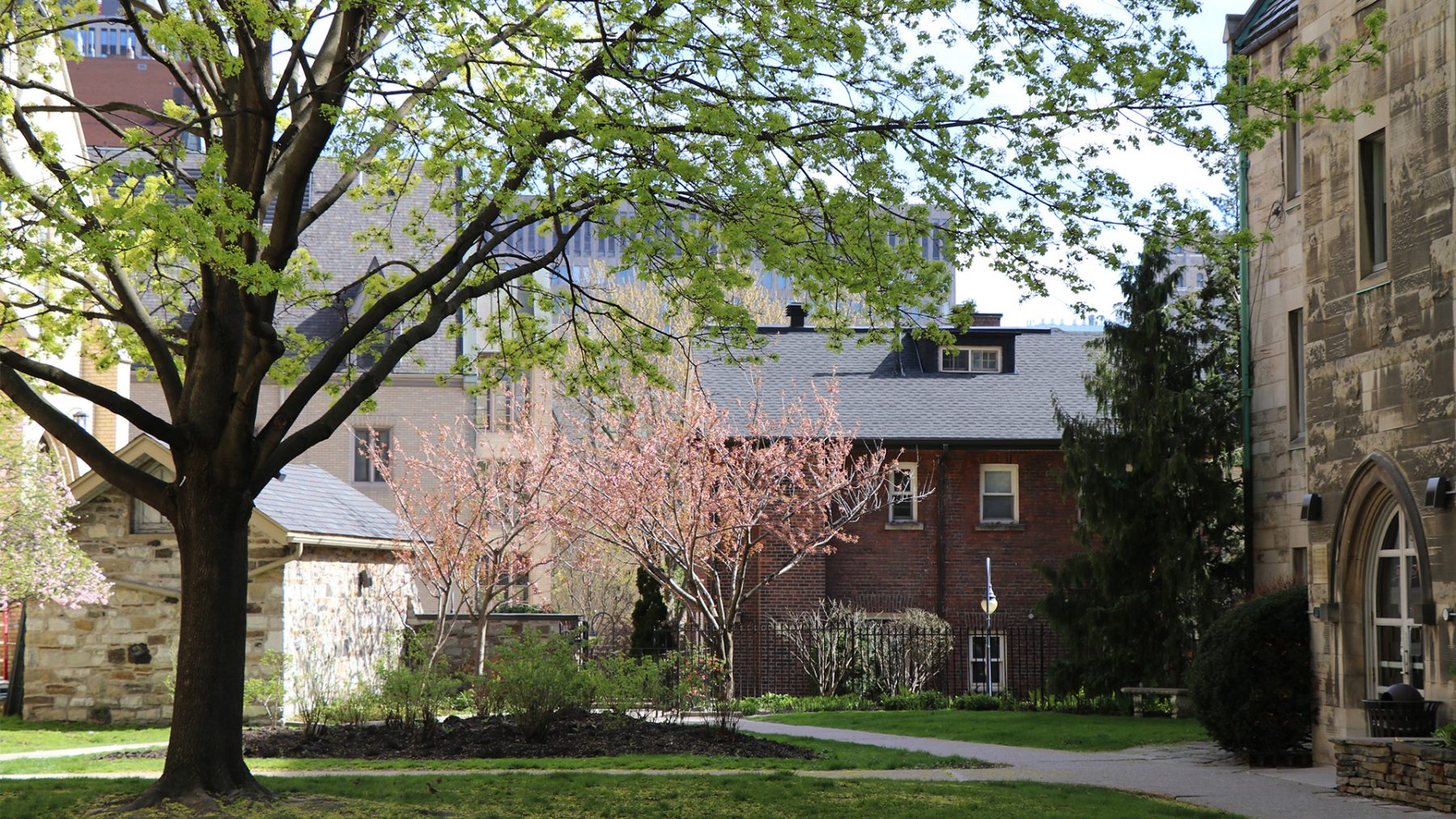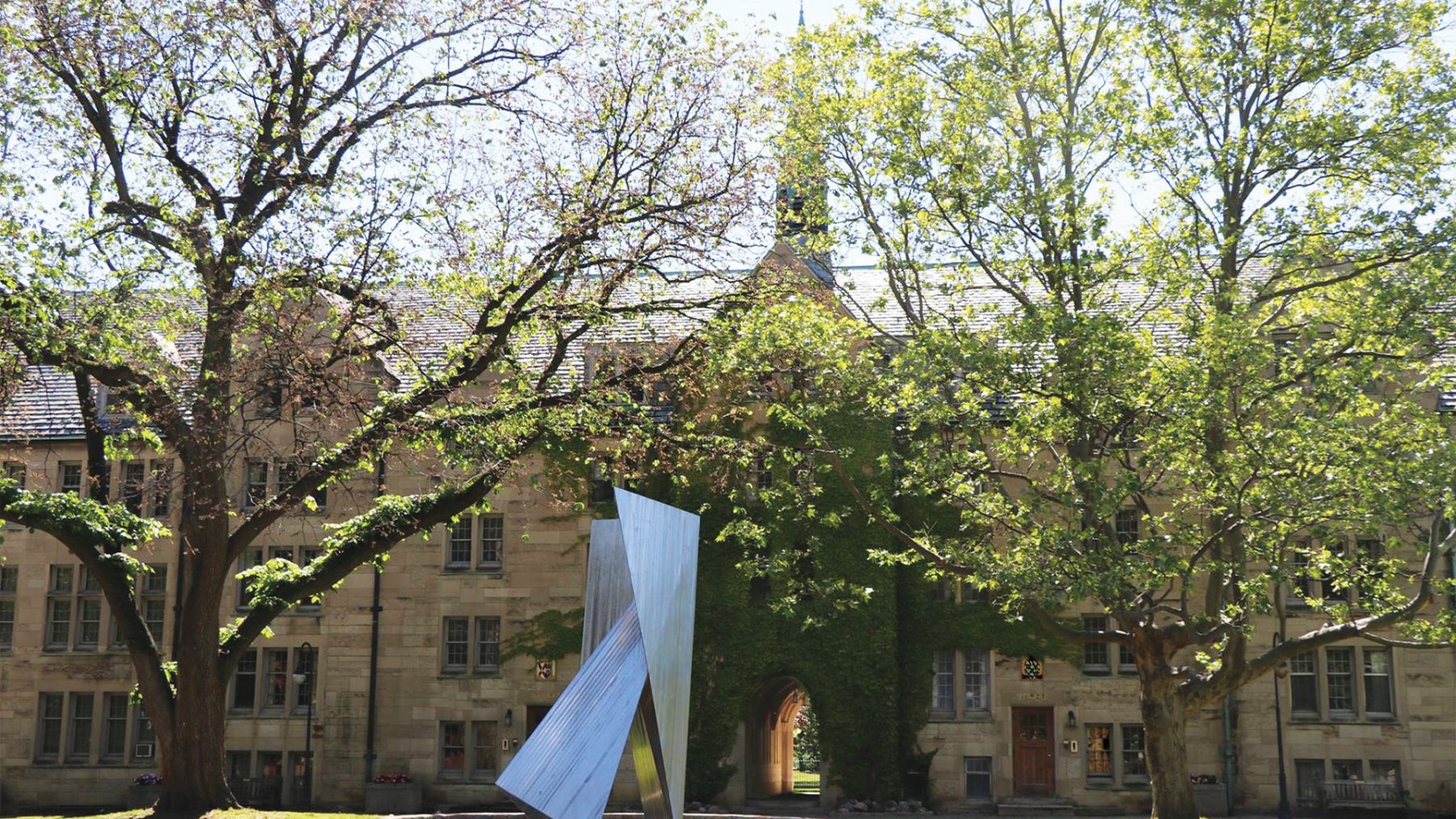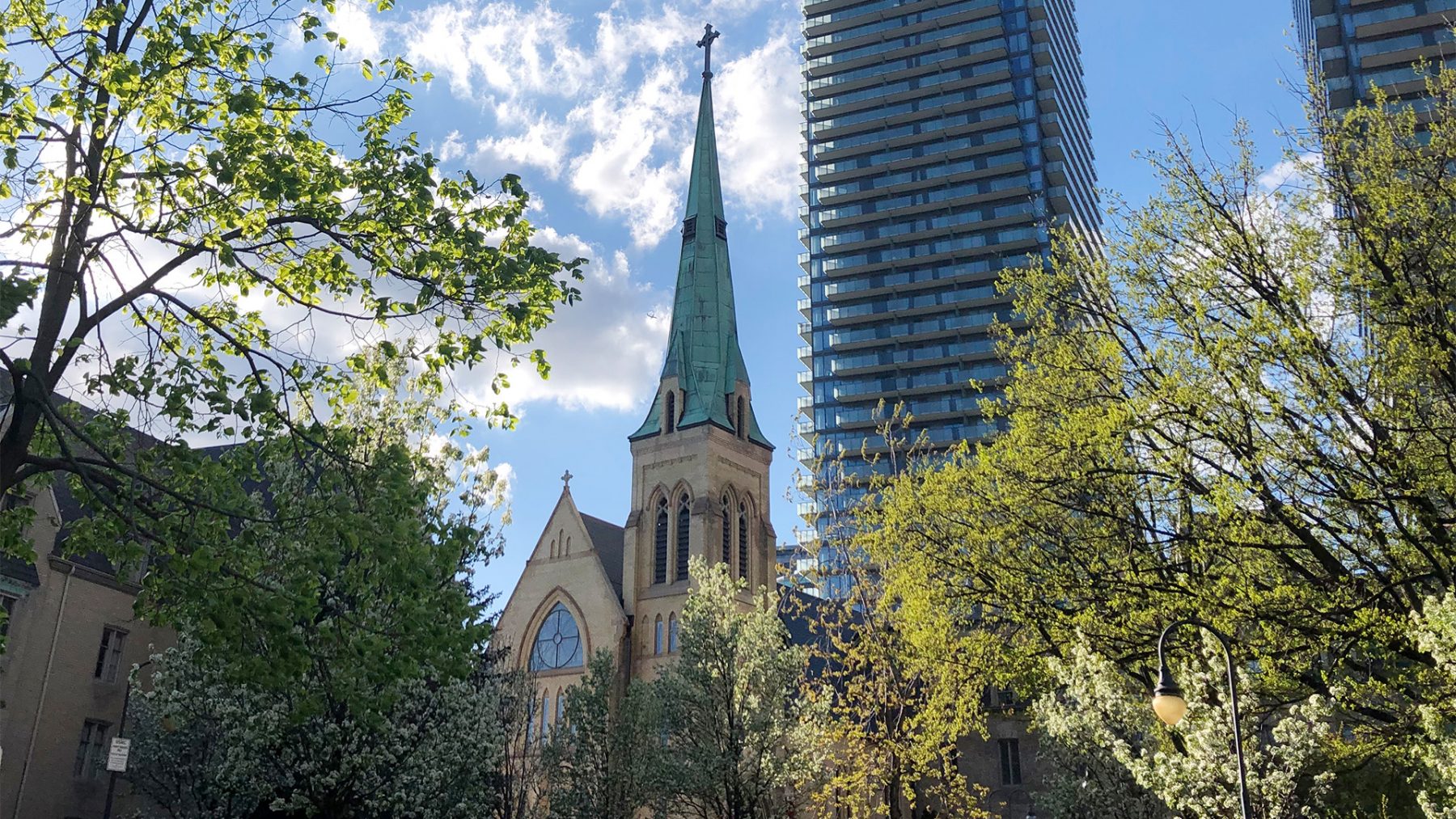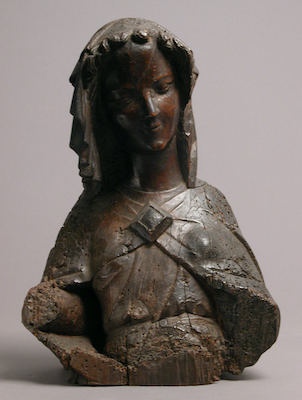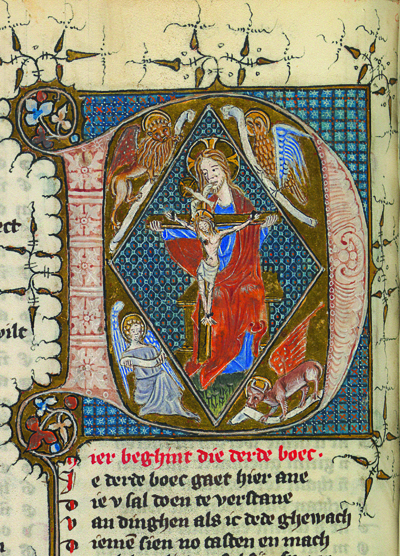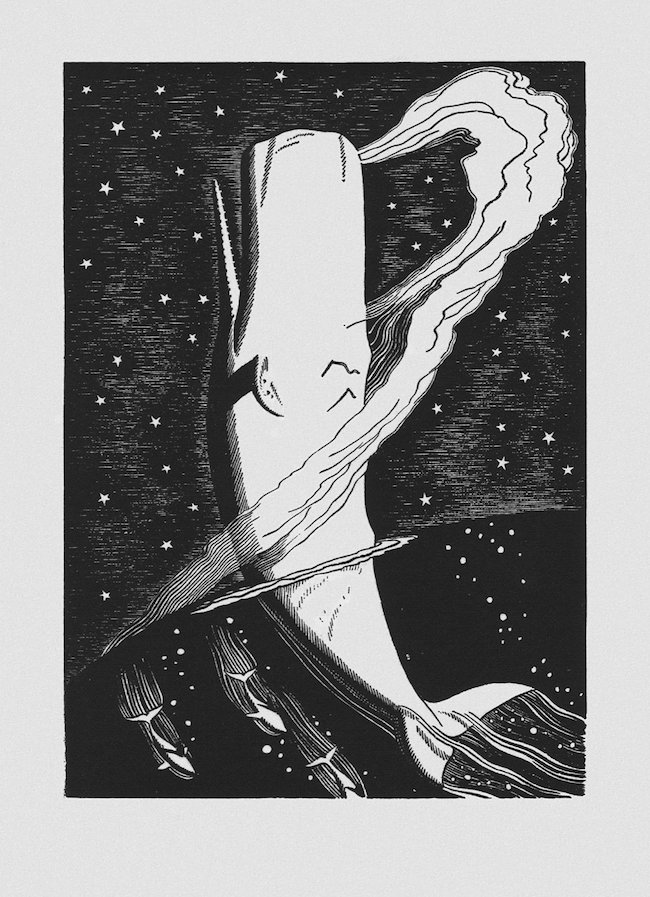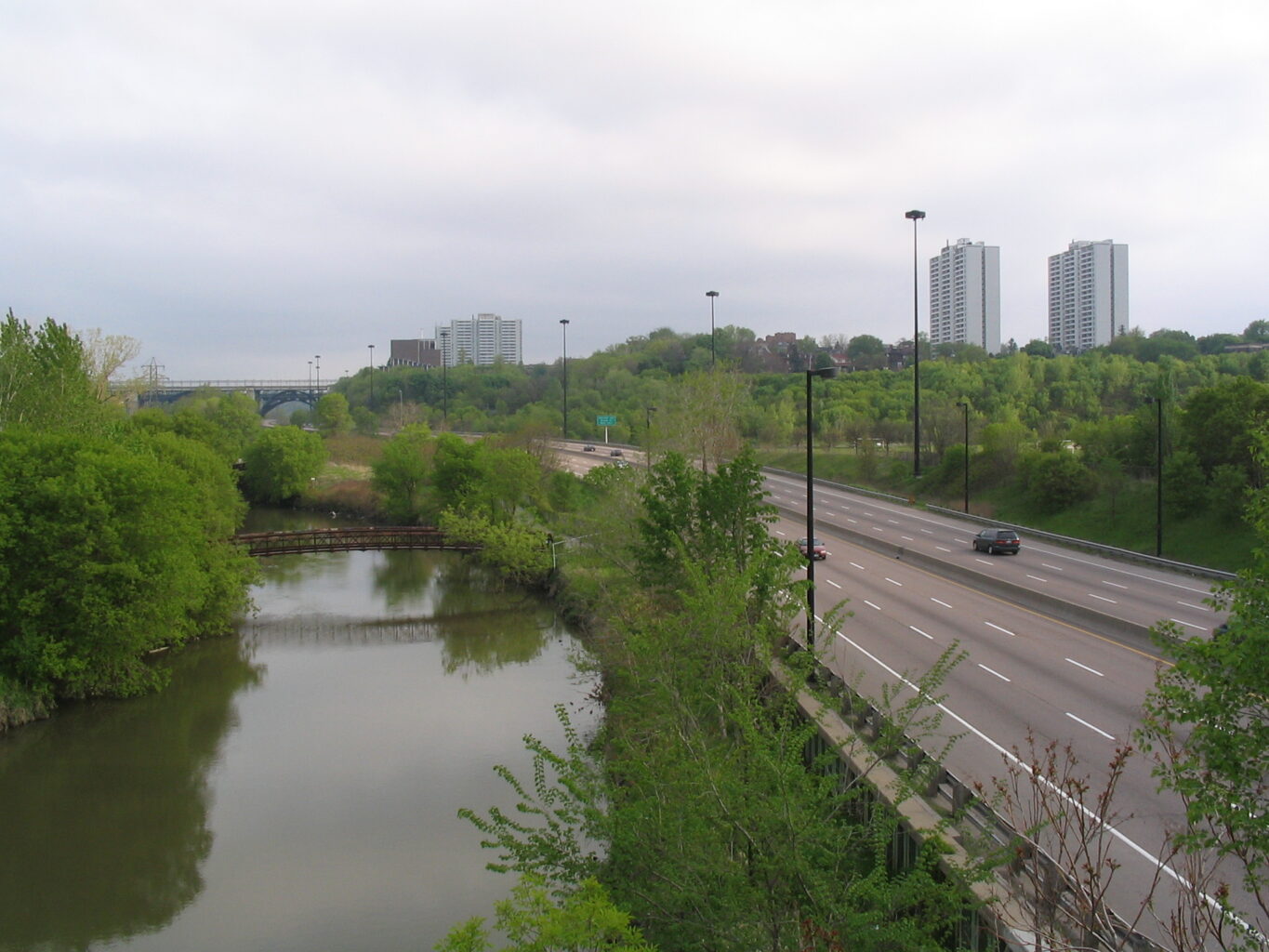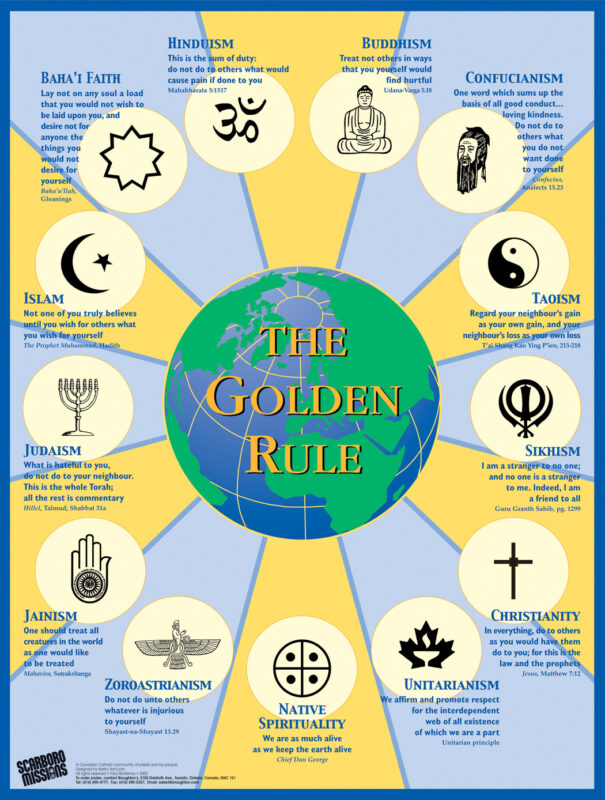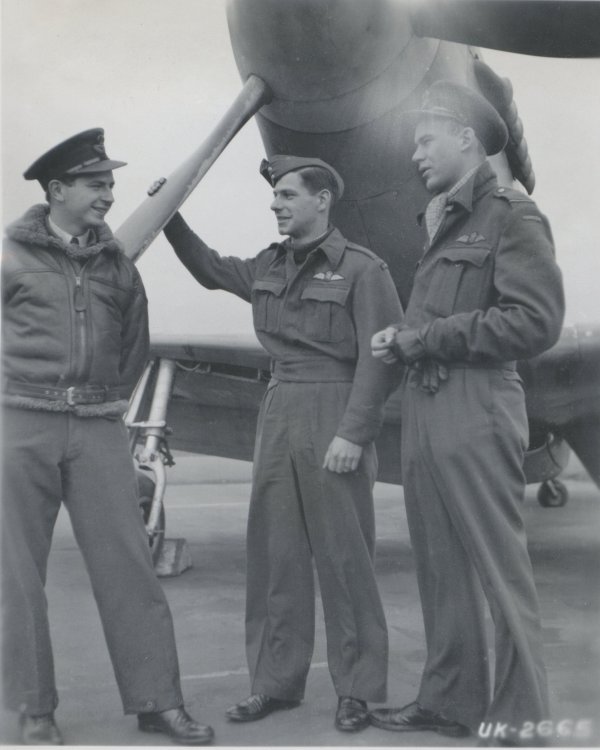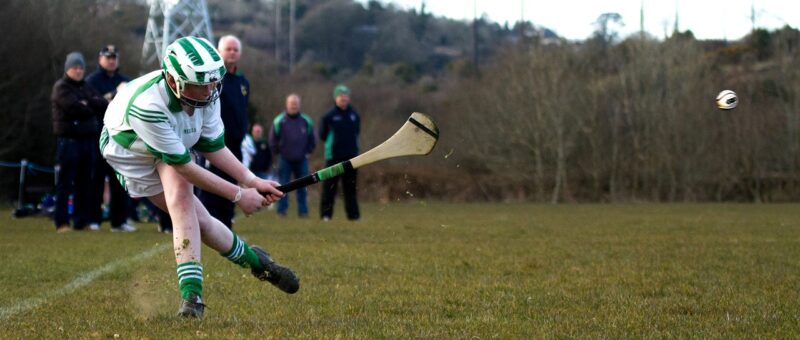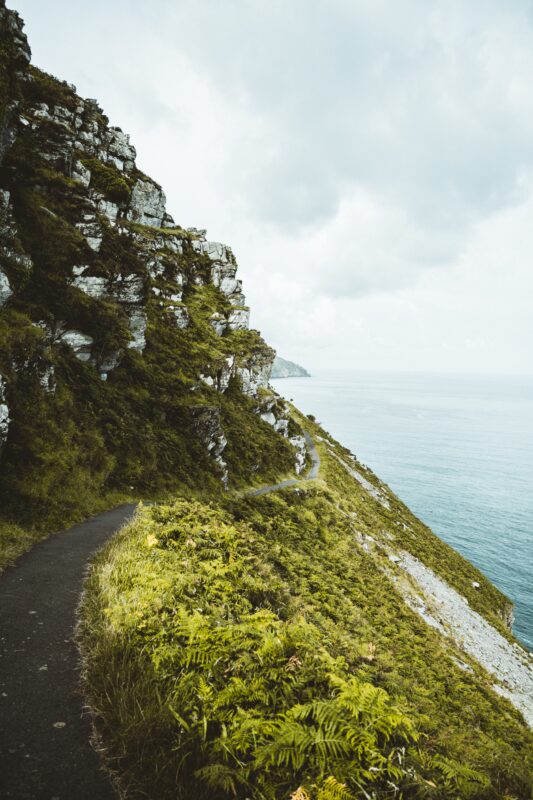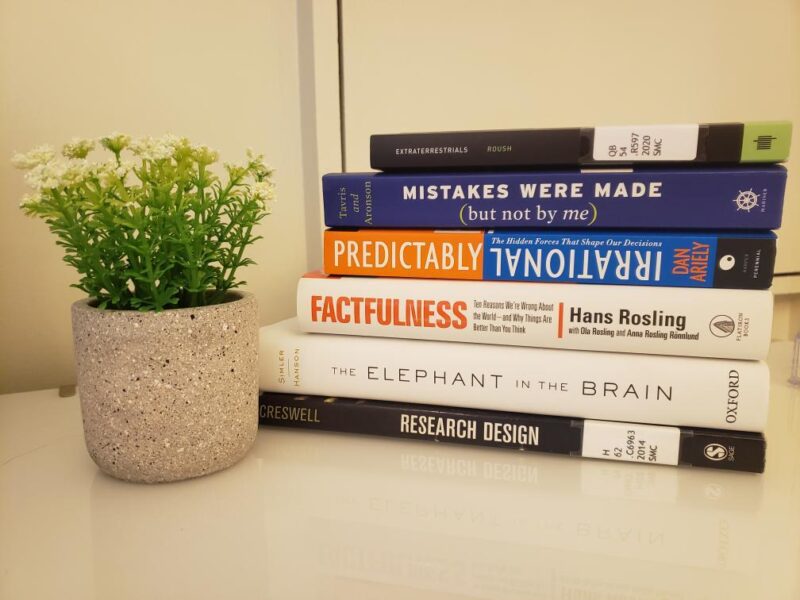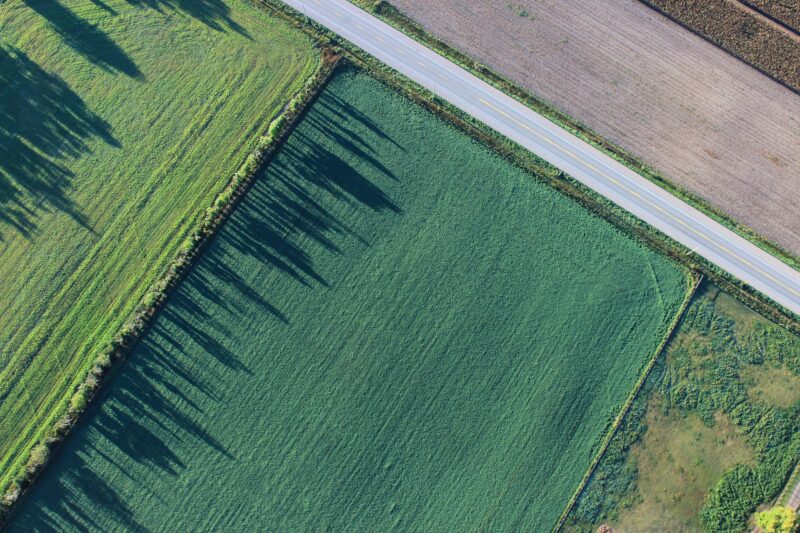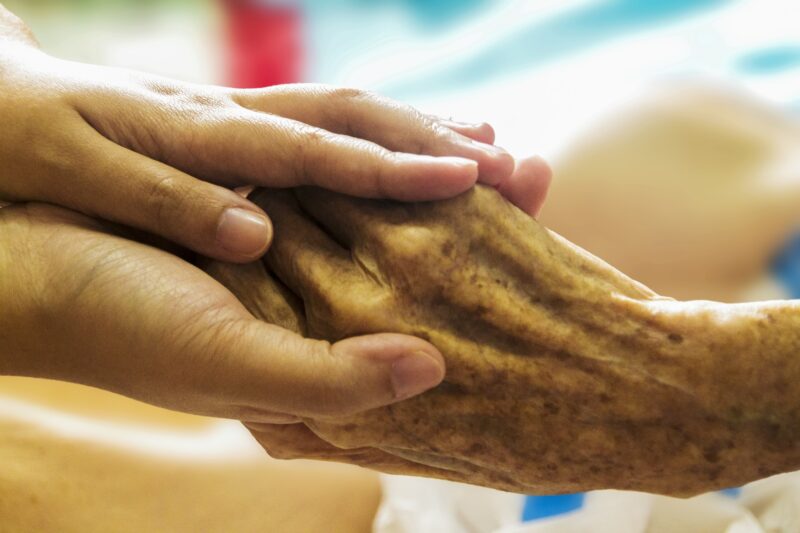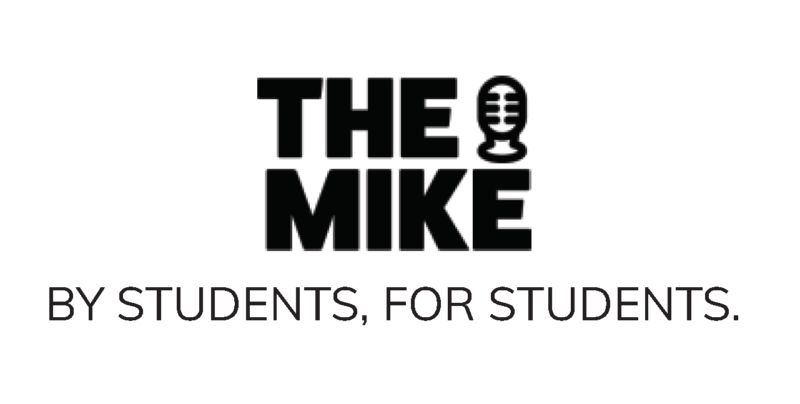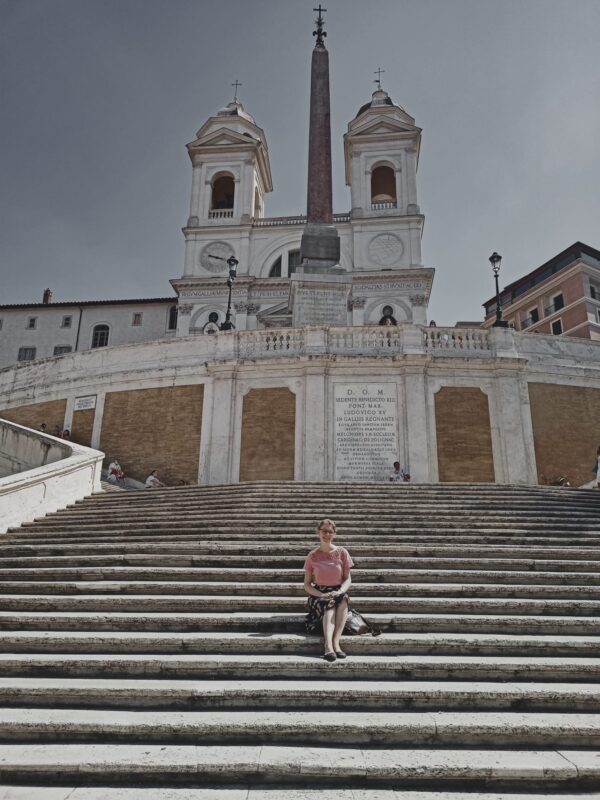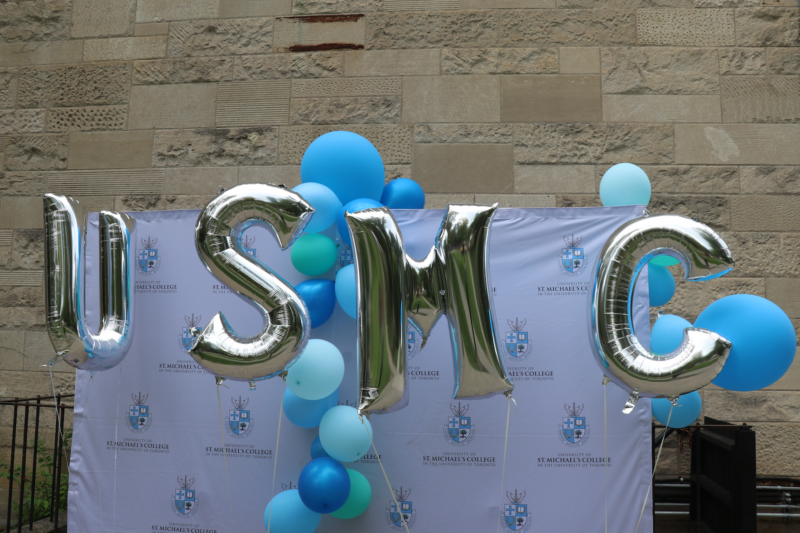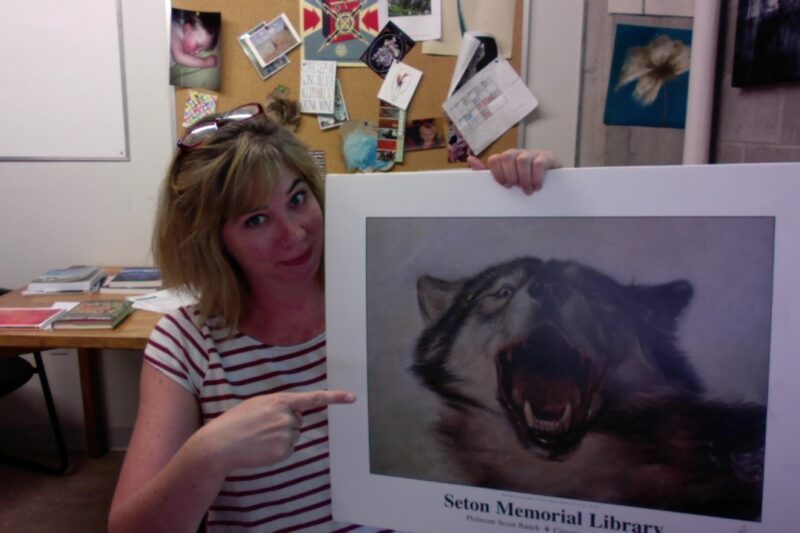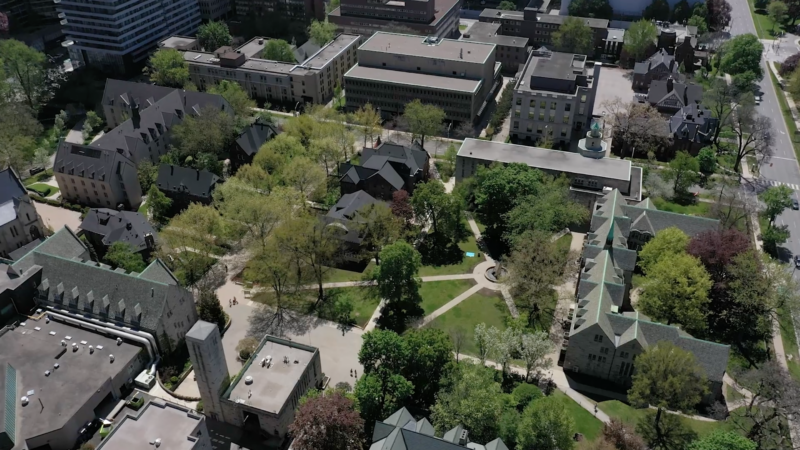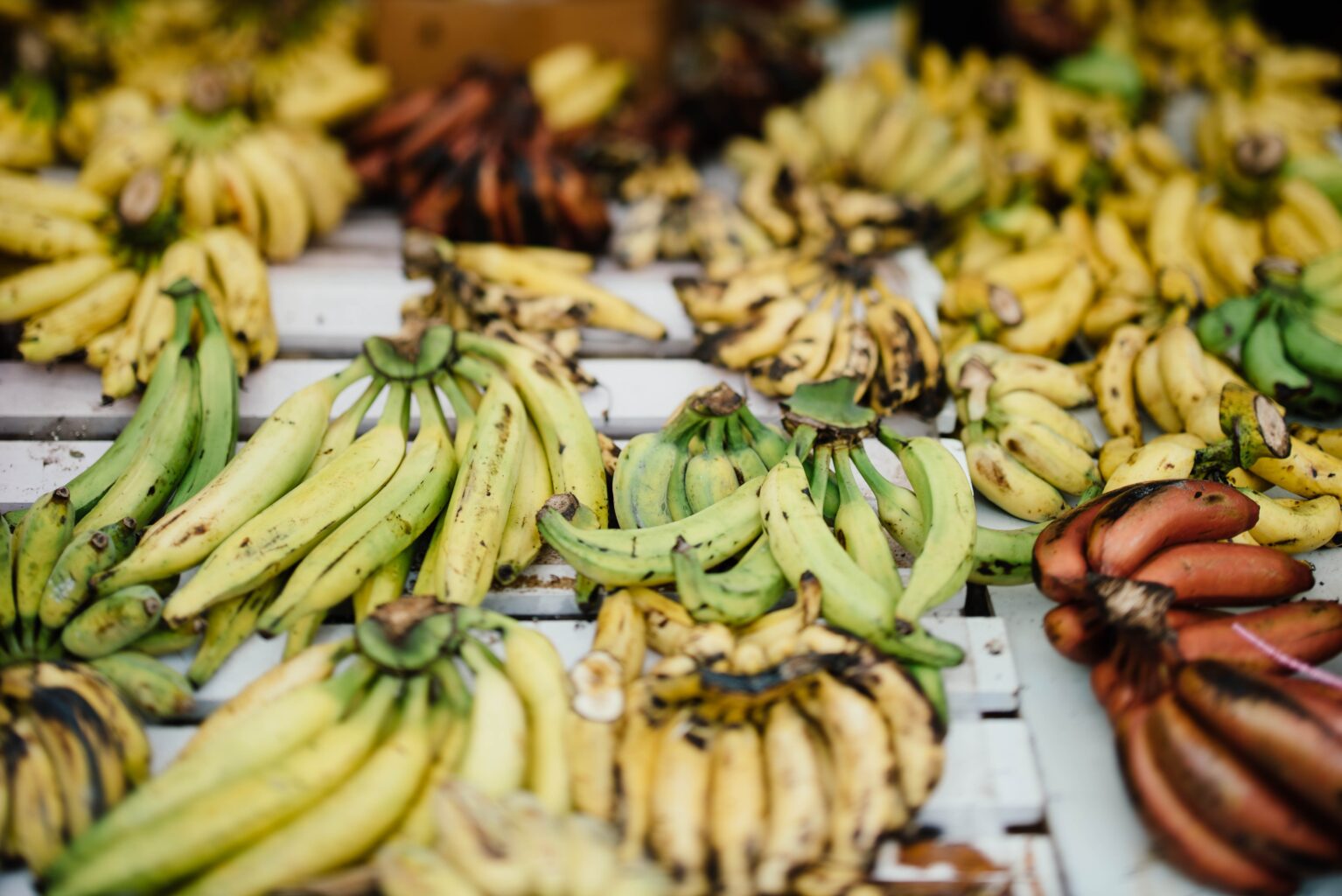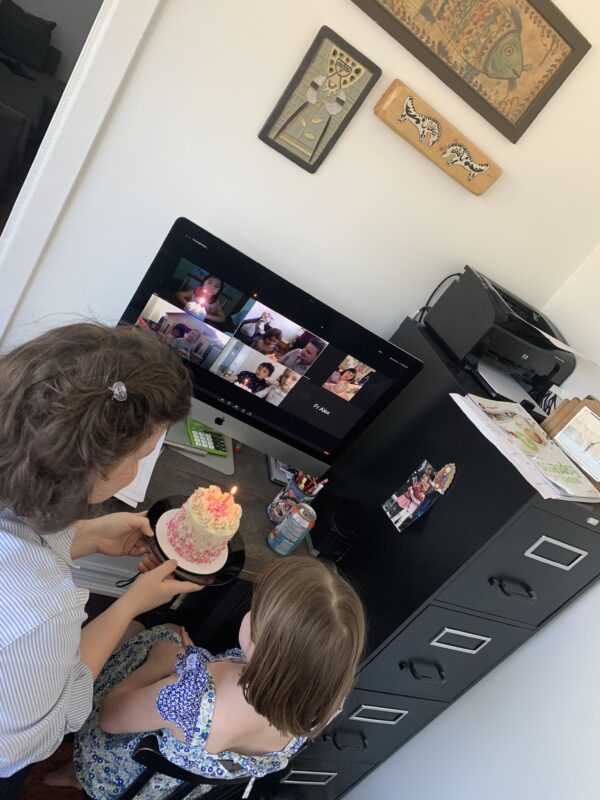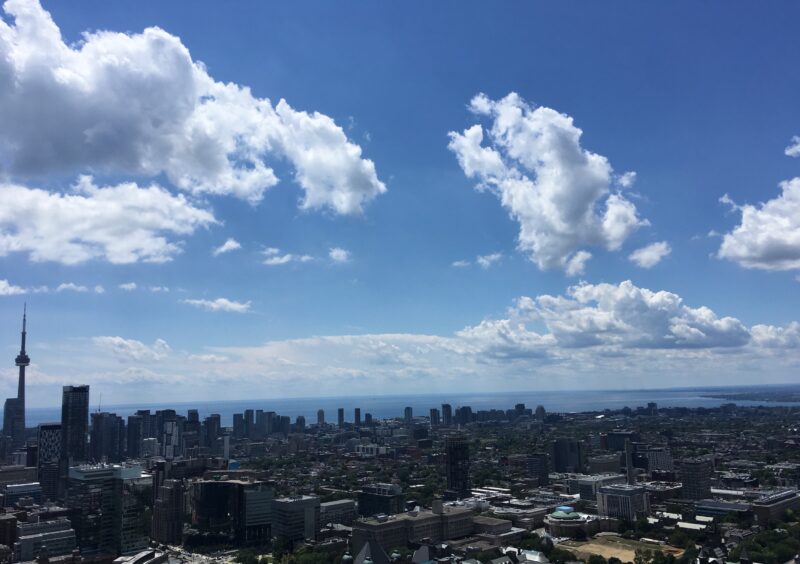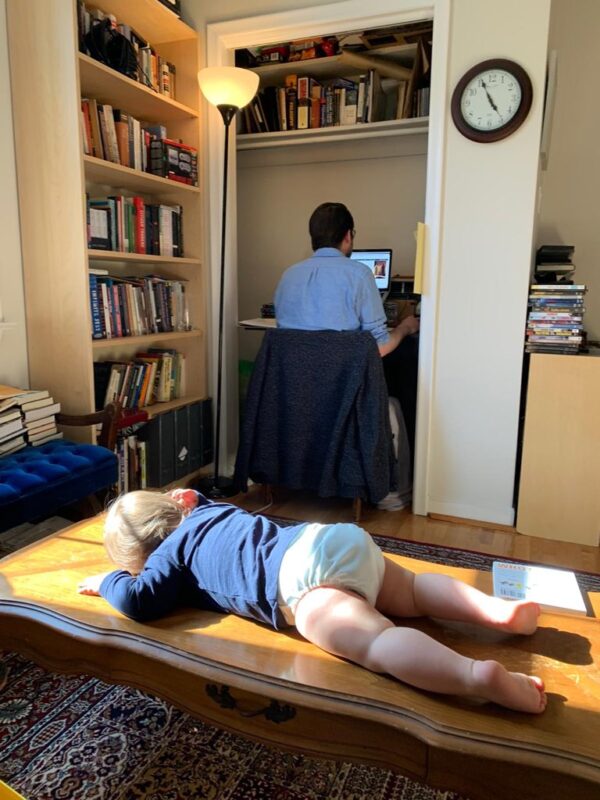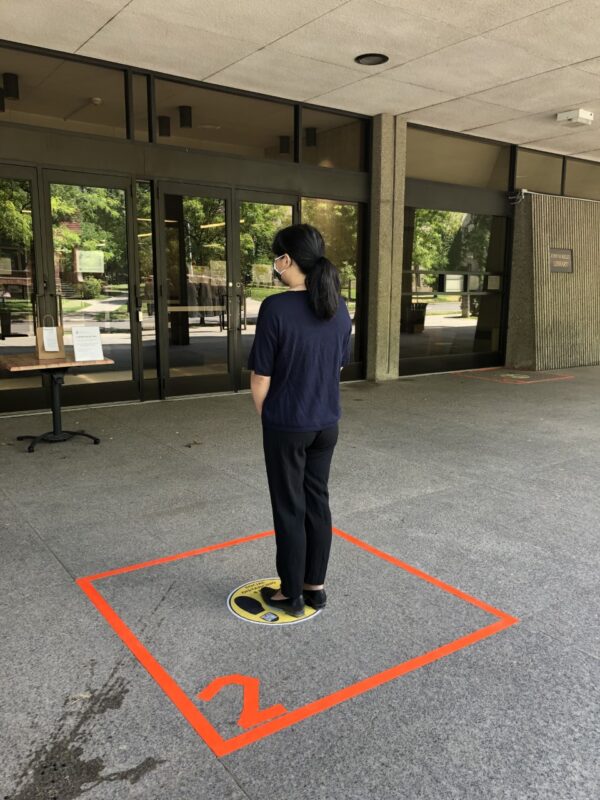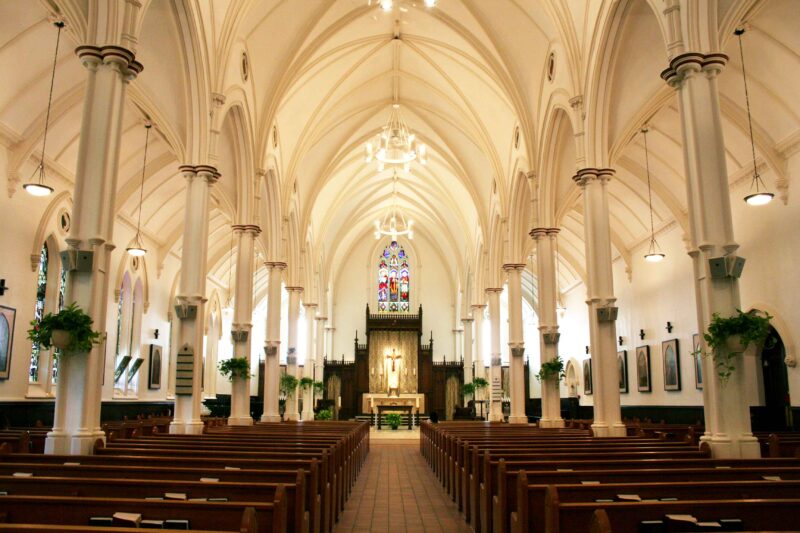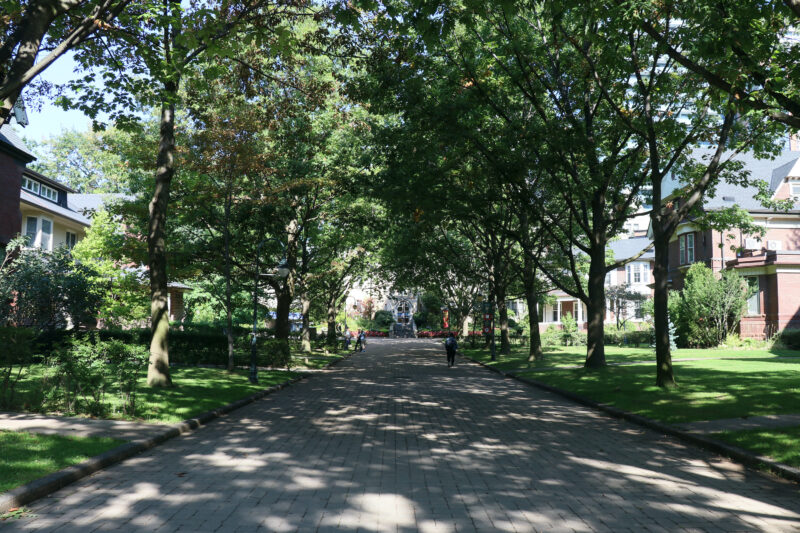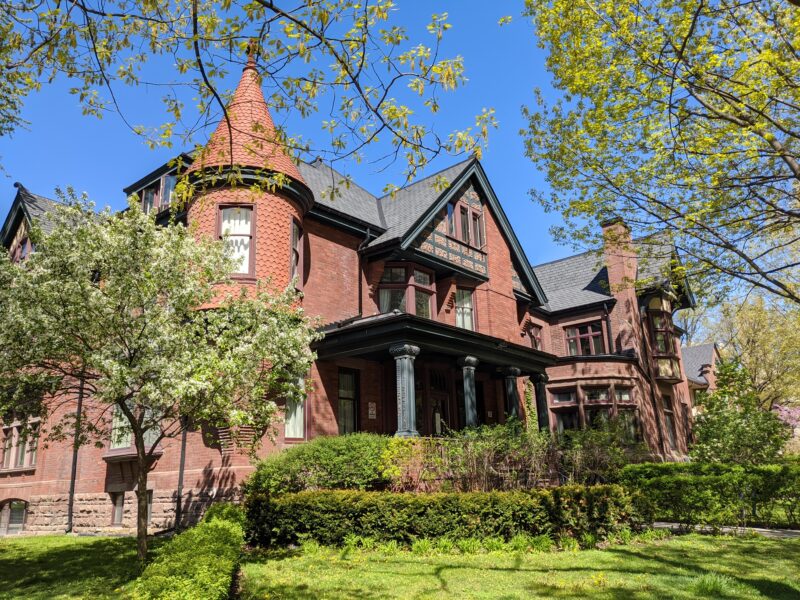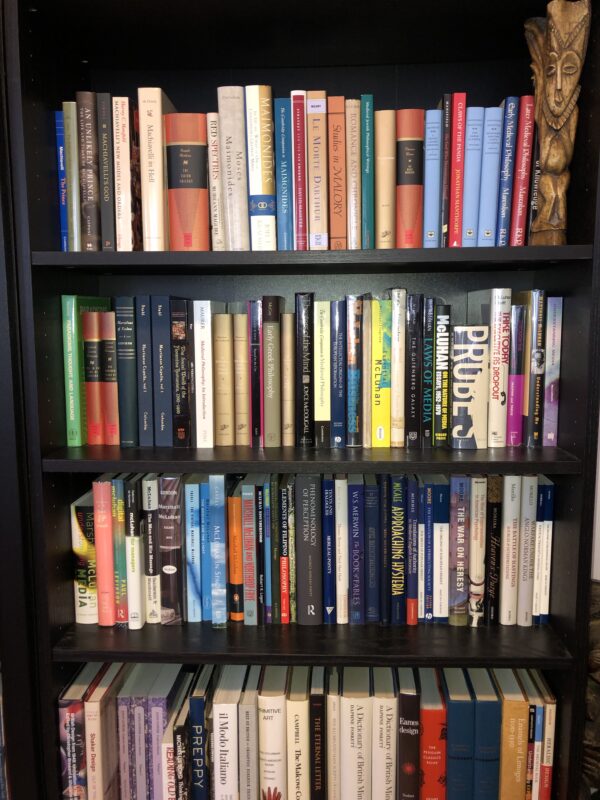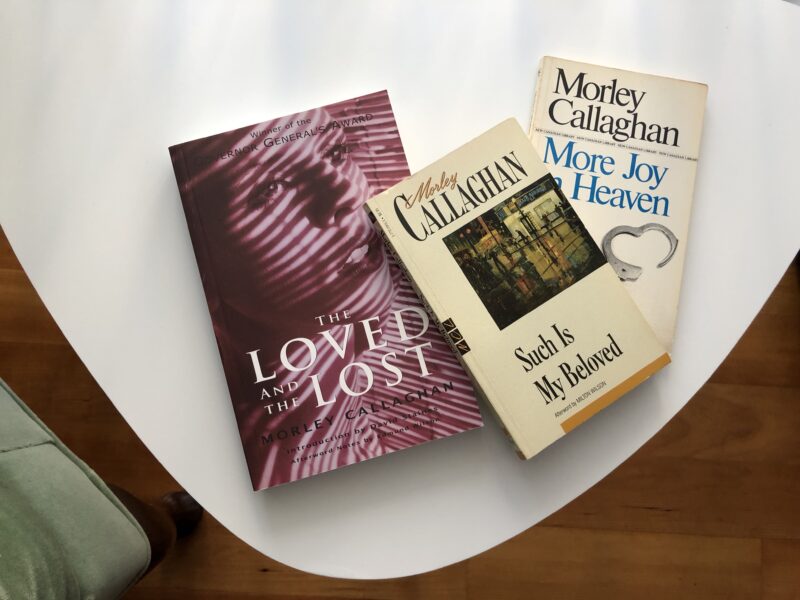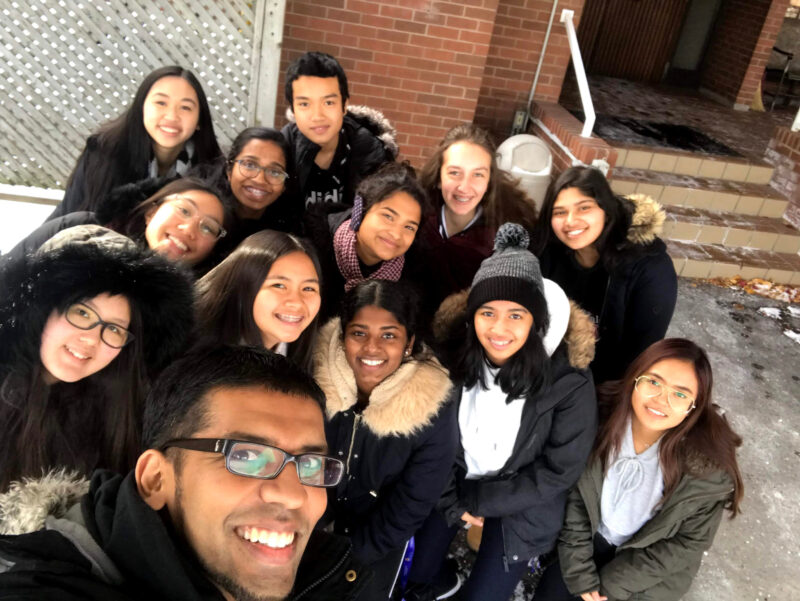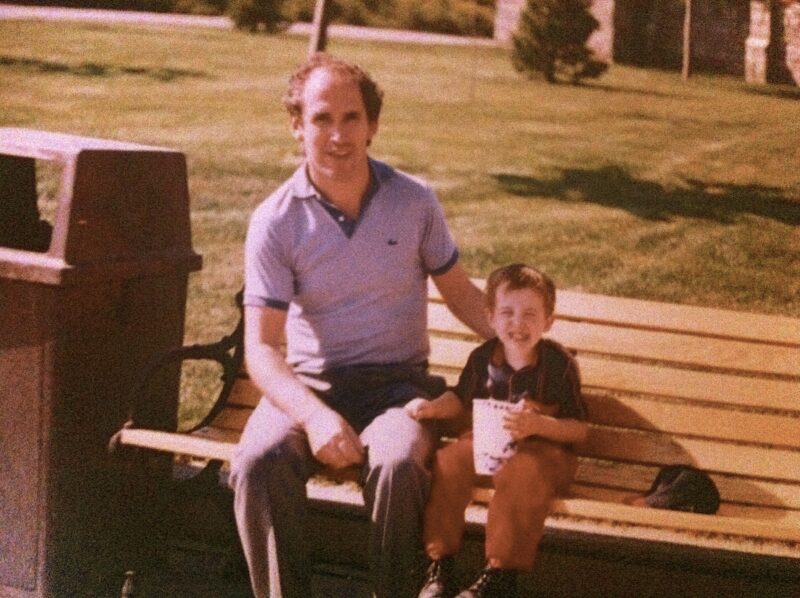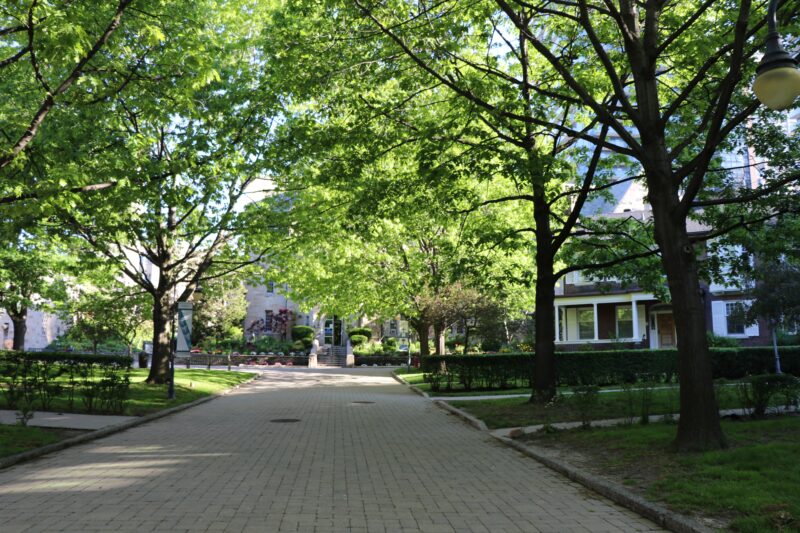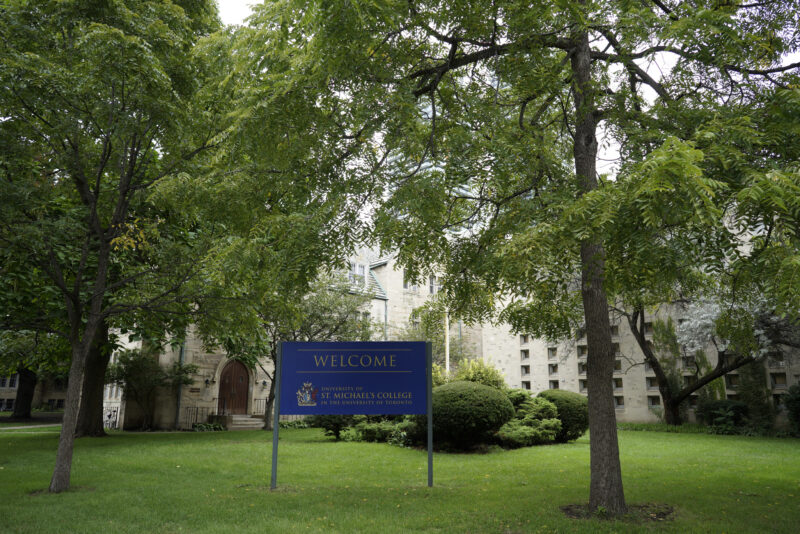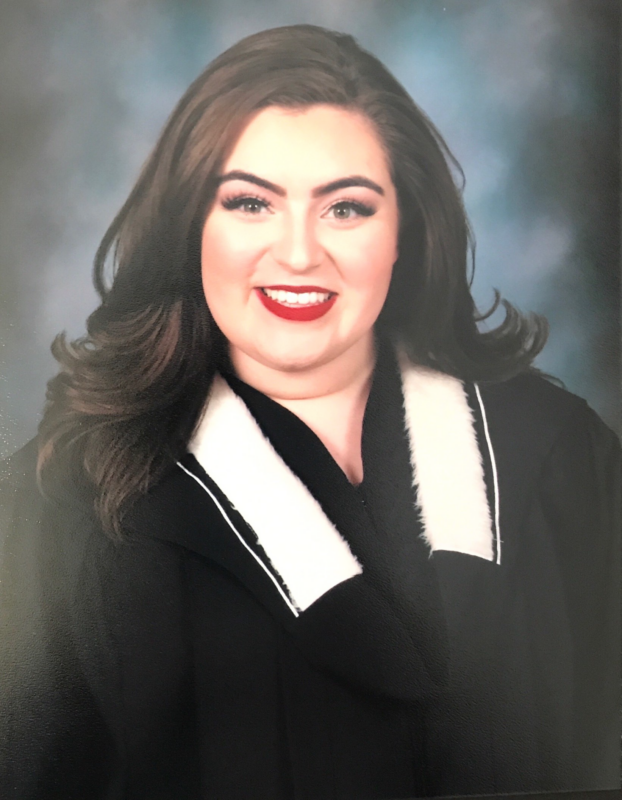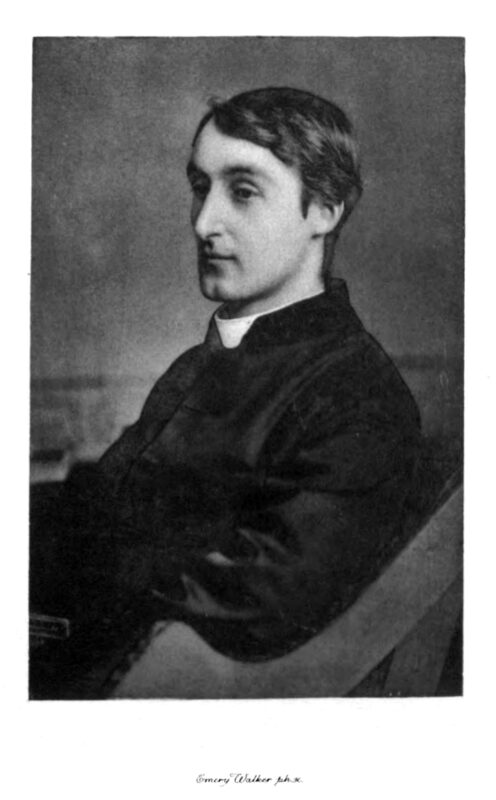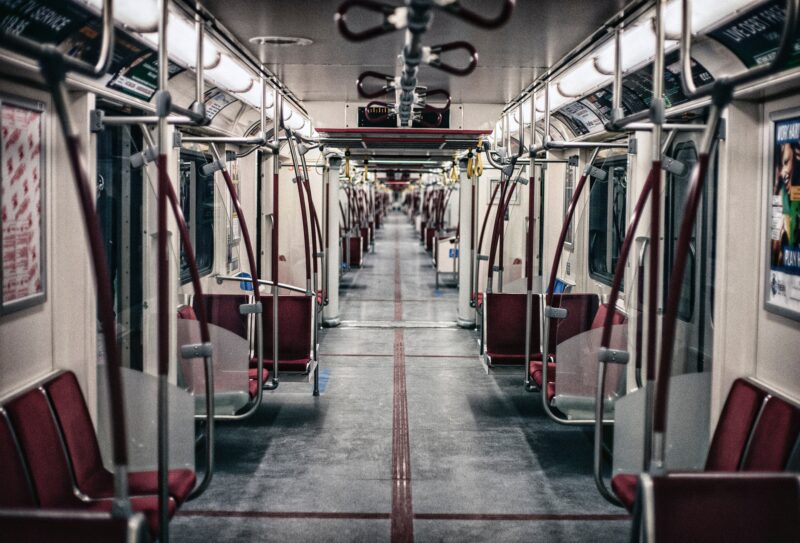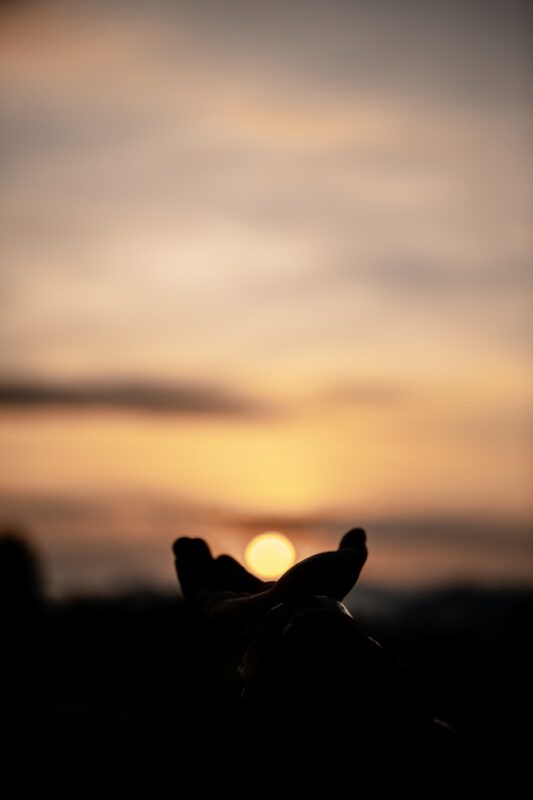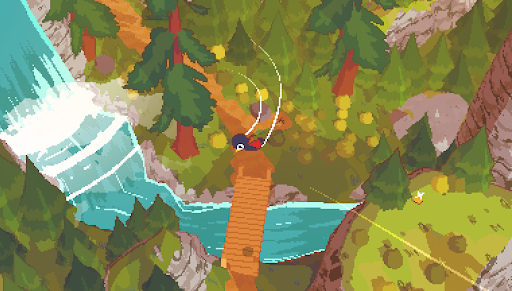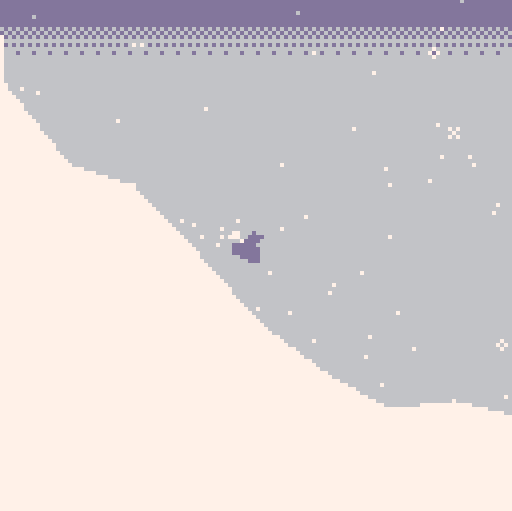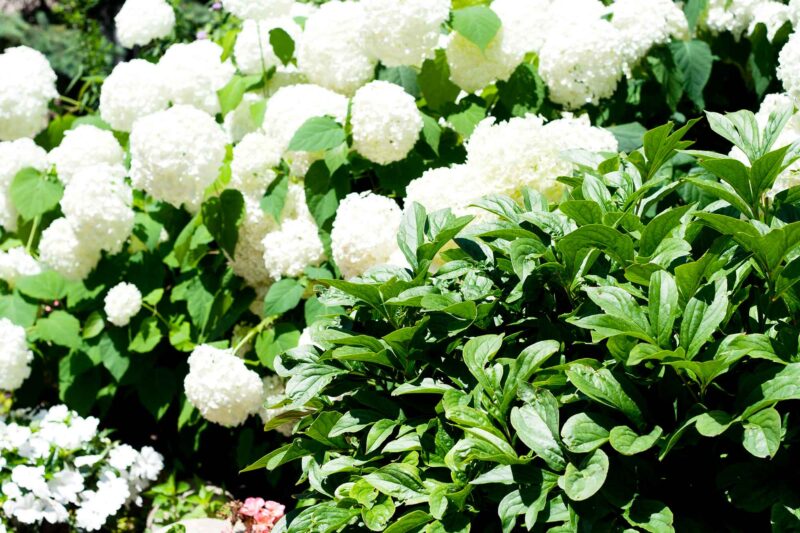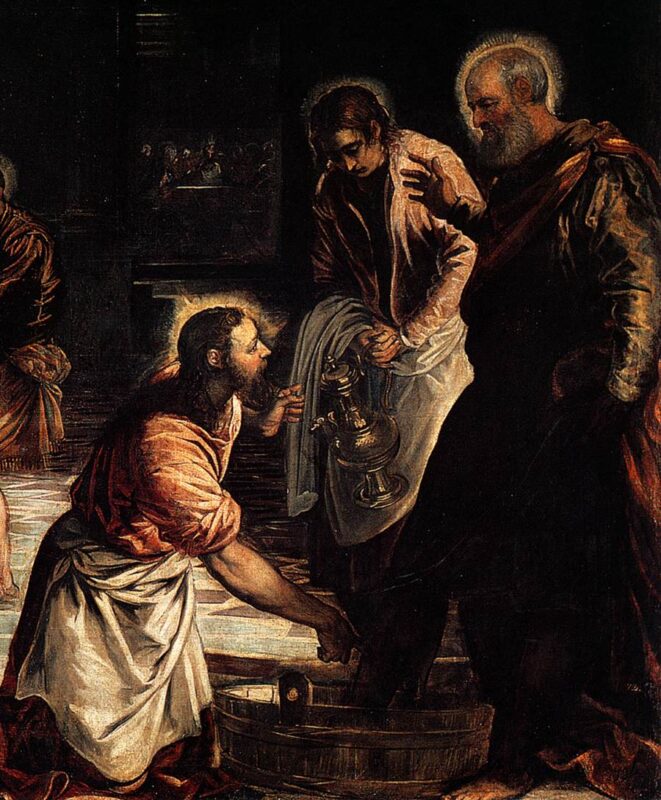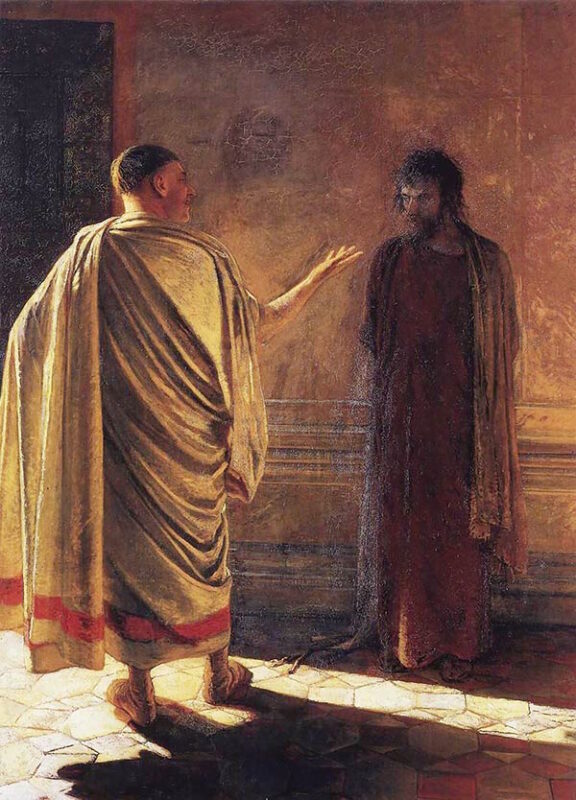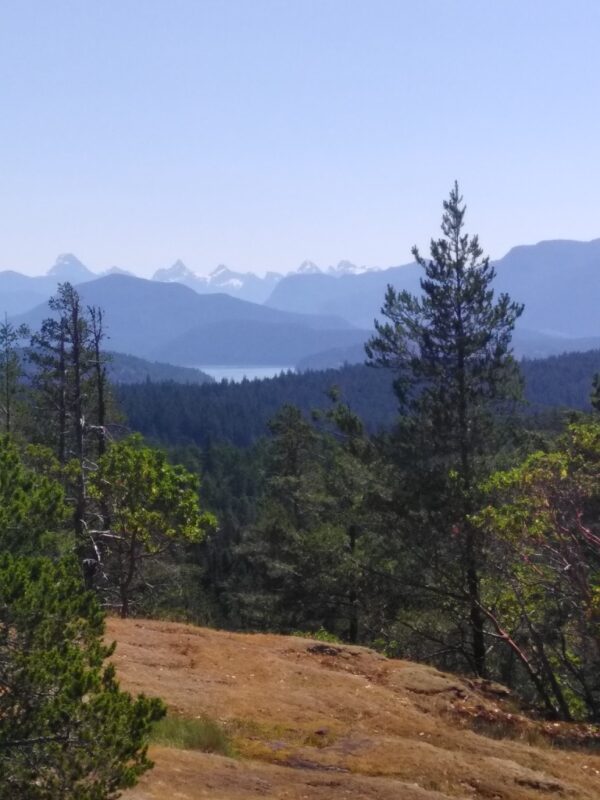Zach Nixon (SMC 1T8) is a Torontonian living in Ottawa. He holds a BA in Political Science. He began his political journey working in the Constituency Office of Bill Blair, Member of Parliament for Scarborough Southwest. He later served in successive roles under Mary Ng, Minister of International Trade, Small Business and Economic Development, where he played an active role in supporting Canada’s small business sector—especially during the critical period of the COVID-19 pandemic. His work during this time, particularly in helping small businesses weather unprecedented challenges, remains one of his proudest contributions to date. He later served as Director of Operations to Rechie Valdez, Minister of Small Business. In July 2024, Zach joined the Office of the Prime Minister, initially serving under Prime Minister Justin Trudeau and now continuing his service under Prime Minister Mark Carney.
When I think of what most people think of politics today, I figure the word that best captures the time we are in is “polarization”. Now more than ever, it seems like no one can agree about anything at all and the political temperature is high. However true some of this may be, it risks turning away our best and brightest from working with our public office holders and missing the greatest opportunities to make a difference in our country.
Polarized as our politics may be, my experience for the past seven years in federal politics has been nothing short of amazing and I have met and worked with incredible people who just want to make a difference.
At St. Mike’s, I got involved in student politics at the encouragement of my residence don and friends during my second week on campus. Being deathly afraid of public speaking, I never thought that this would be an opportunity for me (and I almost skipped out on the required all candidates debate). Nevertheless, I ran and won as a first-year rep on the Student Union and the rest was history. During my time on the Student Union, I made great friends and found in my involvement something that became clear to me in politics–that almost everybody who puts up their hand to help out is doing so because they want to make a positive contribution to their community.
After a few years on student council, I got involved in federal and provincial politics by volunteering for the provincial and federal Liberal Parties in Ontario. These opportunities set me up for what became a seven-year career in federal politics. My first job, working in the constituency office of MP Bill Blair, did not have the high drama and political machinations that you often see on CBC, but rather saw me attending community events and helping regular people with their immigration casework. This was incredibly fulfilling work and speaks to the old adage I have learned in the business that “all politics is local”.
After a few months in that role, I had a chance to move to Ottawa and spent the next few years working for the Minister of International Trade and Small Business, particularly during the COVID-19 pandemic. I spent hours on the phone with business owners who were looking for just about anybody who would listen to them as they grappled with owning a business during a global pandemic. This was a time when the government was at its best, and where I, at 25 years old, was the only face that hundreds of business owners would encounter–and chances are would ever encounter, when dealing with the federal government. It was a huge responsibility for someone so young, but not uncommon in political life. Oftentimes, I was able to help them secure the funding they needed to keep their doors open, and I’m really proud of that.
Most recently, I have been working in the Prime Minister’s Office as a Regional Advisor. I started this role under Prime Minister Justin Trudeau and continue under Prime Minister Mark Carney. In this role, I work with other levels of government, businesses, and organizations in Ontario who are looking to get in touch with the Prime Minister. I travel the province with the Prime Minister so that he can meet Canadians in their communities and hear about their experiences. I learn about cities and towns across this province – all with their own concerns and all with local leaders looking to make their communities better.
I didn’t expect that politics would be the path for me, but I’m glad I chose it. I have travelled to almost every province in Canada and have made lifelong friendships. I’ve learned how our government works and have experiences I will cherish forever. So, if you want to make a difference and have experiences that will last a lifetime, I’d encourage you to take the plunge. There is a world of experience in politics that awaits you!
Read other InsightOut posts.
John Fraresso is currently in his second year of the Doctor of Ministry program at the Regis St. Michael’s Faculty of Theology (RSM) and is the Spiritual & Community Life Coordinator at L’Arche Hamilton.
I am very fortunate to be able to witness the blessings and miracles that happen when one more fully surrenders to the will of their soul, which for me is synonymous with God’s will for them.
I am of course far from perfect at this. But I am a case study of what can happen when one does slowly get better at this.
Spiritual progress, not perfection.
When I returned to school to do my Master of Theological Studies degree at St. Michael’s Faculty of Theology in 2019, I expected to complete this two-year degree and move on to the next thing.
Six years later, I have completed my Master of Divinity, am entering my second year of the Doctor of Ministry program at RSM, and witnessed my 100-hour field placement at L’Arche Hamilton transform into something far bigger. Firstly, I am still there. Secondly, I have the honour of being in service of the community’s spiritual & community life. Finally, my doctoral studies will focus on the challenge of spirituality in L’Arche, which has faced head winds with the Vanier revelations, as well as increasing secularization and pluralism.
This journey has resulted in pipe dreams coming true and has also been sprinkled with never-in-my-wildest-dreams moments occurring.
One of these such moments happened recently.
In the fall, I wrote a paper titled Charismatic Authority, Power, and Abuse in Jean Vanier’s L’Arche for Christopher Brittain’s Theology and Power course (which I highly recommend) at Trinity College. After receiving a pretty spectacular grade for it, I was encouraged by my thesis supervisor Jean-Pierre Fortin to submit it to the Canadian Theological Society for consideration to be presented at their annual conference, as part of the broader Humanities and Social Sciences Congress.
Lo and behold, little Johnny presented his paper to a bunch of academics at an academic conference.
What an amazing and humbling experience, something I never in my dreams thought I would do. Compressing a 20-page paper into a 10-minute presentation was a fun challenge. I was grateful that my presentation was so well received by those in attendance and I also got to see some old colleagues that I haven’t seen in a while!
I’m also grateful to Dr. Fortin for the nudge to submit the paper and for the CTS for allowing me the honour to present at their conference.
Read other InsightOut posts.
Celia Viggo Wexler (SMC 7T0) is a freelance journalist and author based in Alexandria, Virginia. She received the Governor-General’s medal for academic excellence in 1970 and earned a graduate degree in journalism from Point Park University, Pittsburgh in 1996.
I went to my St. Michael’s reunion mostly for work reasons. I was reluctant because all the women I’d kept in touch with, and whom I knew from my high school and college days, were not able to attend.
But thanks to the invaluable assistance of Lisa Webb, St. Michael’s manager of alumni affairs, I was invited to promote my book, “Catholic Women Confront Their Church: Stories of Hurt and Hope.” Lisa even created a “Meet the Author” event for me at the Dodig Family Coop! During a stressful time for her, she was unfailingly gracious and good-natured. (Fellow “Western” Ray Shady introduced us by email.)
But the event gave me so much more than the chance to sell books.
Everywhere I turned, there were opportunities to reach out and meet new people, or to reconnect with alums I hadn’t known well, but now had the chance to know better.
I visited a campus that was deeply welcoming, from the moment I entered the Loretto College chapel for Mass to the conclusion of the excellent alumni reception and dinner on Saturday night.
All the emotions I had attached to St. Michael’s came flooding back. This campus made me feel safe and accepted. I was the greenest of coeds, never having dated, bookish but absolutely clueless about the mores of the late ‘60s. In my home country, the United States, campuses exploded in demonstrations against the War in Vietnam.
I was on the side of the protestors, but appreciated that I was at a campus where the war did not impinge on my growing up, my excellent classes, my ability to think deeply, to make friends, and even write for The Mike, the college newspaper.
That sense of safety returned to me once again during reunion weekend. St. Michael’s felt like a refuge, albeit a brief one, from the aftermath of our recent presidential election. In my country, I had seen the rule of law crumble bit by bit each day as a new administration flouted laws and the U.S. constitution to not only try to bully Canada but also imperil immigrants, threaten journalists, and dismiss tens of thousands of dedicated civil servants.
But I felt more than safe at St. Michael’s, I felt known, appreciated. I met Dr. Michael Salvatori (pictured in the accompanying photograph), Director of Continuing Education at the university, whose zest for reaching out to the larger community with innovative courses was infectious. He let me know that he had started reading my book and how much he enjoyed it! I even had a delightful chat with President Dr. David Sylvester about his academic specialty, mediaeval history and economics, and his wife’s search for long-lost Caravaggios.
As it happened, just a few visitors came to the COOP to meet the author, when they could enjoy the gorgeous weather.
But some St. Michael’s staffers were kind enough to stop by and purchase books. l also gave a copy to one student, so curious about life and her place in the world, and so full of questions about her future. I thought the book might help.
I started writing my book in 2013, after the stern Pope Benedict XVI chastised women religious for their advocacy for social justice. I wasn’t sure I could remain a feminist, an accomplished professional who believed in women’s equality, and a Catholic. I needed guidance about how to resolve these doubts. So I looked for other women like me, who were struggling with the same challenge.
I found nine exceptional women from both Canada and the U.S., who told their stories freely, and spent hours with me, voicing their frustrations with the institutional church and its attitude towards women, yet also expressing their commitment to their Catholic faith.
Late last year, my publisher released the book as a paperback. Since the paperback came out, Pope Francis has died, and we now have a new pope, Leo XIV. We don’t know how he will perceive the role of women in the church. But I do know that voices of Catholic women are even more important at a time when women risk the progress they have made not only in the church, but in the world.
And I firmly believe that St. Michael’s College will help shape that future, training the next generation of women leaders and scholars.
Read other InsightOut posts.
Paul Babic is a second-year MDiv student at the Regis St. Michael’s Faculty of Theology with a background in Philosophy and Religious Studies from McMaster University. He also works as the Projects Officer in the Office of the President at Regis College. With his MDiv, he hopes to help and serve those “who may feel as though God has abandoned them.” In his spare time, he enjoys blogging, copious quantities of coffee, good food, good conversations with friends, and long walks
I don’t normally talk about my religious experiences—much as I do talk about religion—but I thought today I would share one with you. This happened maybe three years ago now as I was walking around my (then) home of Hamilton. Like many Canadian cities, Hamilton has started to look a bit rough around the edges: there are people struggling with addiction, homelessness, and poverty. If you walk through a city in North America today, you’ll probably see them. Maybe you even drop a coin in their cup, but I’ll bet most times you walk past them as I do, too.
So, there I was on a beautiful summer day, walking through downtown Hamilton, when a homeless man came up to me for change. At first, I simply passed him by with the twinge of guilt I normally feel when confronted by the inequities of modern society. But then as I was passing, I looked closer, and bright as the sun, I felt like I was looking at the face of Jesus Christ. Not the Jesus you see in churches, mind you. In fact, it’s not as though his face had changed at all, and yet my perception of it did. There was a disarming peace or innocence about him that I couldn’t ignore. So, I gave him some money and wished him well. Seeing Jesus in that man on the street, I am reminded of Christ’s words:
Truly I tell you, just as you did not do it to one of the least of these, you did not do it to me.
—Matthew 25:45
That encounter has stayed with me, and I think about it especially now, as we welcome a new pope—Leo XIV—whose words echo that same call to know Christ in the suffering and unseen. One sister I have the pleasure of knowing thought that we might be in for a Francis II. She was right in a way: Robert Prevost’s middle name is Francis. But for his papal name, he chose Leo, perhaps as a call-back to Leo XIII, who famously wrote Rerum Novarum, an encyclical on capital and labour. Writing at the onset of modern industrial capitalism, Leo XIII decried the indignities wrought by the economic system of his day. And so, in our era of once-again rising wealth inequality, I find this call-back to our last Pope Leo rather timely.
As Catholics, we believe that all human beings are dignified by the image of God which they bear. And while this may be a profound truth, we are reminded time and again in Scripture that theory without praxis is not enough:
Those who say, “I love God,” and hate a brother or sister are liars, for those who do not love a brother or sister, whom they have seen, cannot love God, whom they have not seen.
—1 John 4:20
When I first heard this verse in the pew, I perked up a bit. Such a revelation to be told, as one in search of God, to begin by loving those you can see. By loving others, we also love God. Thus, remembering the dignity of our fellow human beings, Pope Leo said at his inaugural Mass:
In this our time, we still see too much discord, too many wounds caused by hatred, violence, prejudice, the fear of difference, and an economic paradigm that exploits the Earth’s resources and marginalizes the poorest. For our part, we want to be a small leaven of unity, communion and fraternity within the world. We want to say to the world, with humility and joy: Look to Christ! Come closer to him! Welcome his word that enlightens and consoles! Listen to his offer of love and become his one family: in the one Christ, we are one.
Now, as I reflect on Pope Leo’s words, I remember that man and the many others just like him. Dare we seek Christ in the marginalized of our world? Do we feed the hungry, clothe the naked, welcome the stranger, visit the imprisoned, and—most difficultly—listen to their stories, as Jesus had asked? It’s my great expectation that with this new papacy that is precisely what we are being invited to do.
Read other InsightOut posts.
Michelle Wong is an SMC student entering her fourth year, majoring in Book & Media Studies (BMS) and double minoring in Women & Gender Studies and East Asian Studies. Beyond her academic life, Michelle loves to read, write, listen to different genres of music and discover hidden gems to eat around the GTA. She is currently serving as the The Book & Media Studies Student Association as well as the Student Representative for the SMC Senate. With her pen (or, technically, keyboard), Michelle is passionate and enthusiastic about storytelling and being a reliable mentor to those around her. She aspires to become a journalist—maybe even a museum/gallery curator—to showcase the experiences and emotions of others and help give spotlight to those who cannot have their voices heard.
If you ever approached the first-year me and told her that she would become the President of the Book & Media Studies Student Association, she would look at you with an obvious expression of confusion and laugh nervously while brainstorming a response. Clearly failing to do so, she might end up just nodding and smiling, while quietly replying with an ever-so-hesitant thank you.
Truthfully, I am still in a bit of disbelief—the girl who was once afraid of socializing with other students, and didn’t believe that she would be able to accomplish anything significant during her university career, has come so far.
When I finished my first year, like many other first-years, I had to choose my programs and how I wanted to continue my undergraduate degree. I was determined that I would be doing double majors in East Asian Studies and Women & Gender Studies, yet it felt like something was missing. I was not quite sure what, but I did not feel completed or satisfied doing these two majors; that was until a dear friend of mine introduced me to the Book & Media Studies program.
A bit hesitant at first, I was afraid that I might not have what it takes to excel in the program and that it would be too philosophical/theory-based. As you can tell, I was proven wrong. My choice to major in this program was probably one of the best choices I have ever made during my time at the University of Toronto.
You may think I am exaggerating (I would, too, if I were you!), but because I enrolled in the BMS program, I decided to transfer to St. Mike’s as well. These two decisions were really the ones that altered the direction of my academic career, allowing me to experience and take part in so many opportunities on the SMC campus.
Through the BMS program, I was able to find friends I instantly connected with and can spend hours talking to. Whether it was expressing our admiration and fondness for Prof. Kit MacNeil, or how much fun Prof. Iris Gildea’s classes were, or how many classes we want to take but can’t because of the immense competition during enrollment and needing to prioritize completing our other programs instead, I was able to experience these thanks to my decision to enrol in the BMS program.
For the first time, I truly felt like an actual university student with friends I can talk to about the courses and professors from whom I can seek academic guidance and feedback. I have had so many conversations with professors in the program, and they have demonstrated to me their passion for what they are doing and teaching it to students, all inspiring me to stay true to my passion and want to continue learning from them.
The Book & Media Studies program also introduced me to my love for printing, bookbinding, and learning about different types of medium beyond Western culture. Working with the letterpress machines in the Print Studio at the John Kelly Library will always be a fond memory of mine and something I would have never been introduced to if I had not enrolled in the BMS program.
As a commuter student, it is inevitable to feel like you do not belong anywhere on campus. Yet, transferring to St. Mike’s has really made me feel like I belong, that there is somewhere I can rest and seek help if needed. Moreover, I was able to partake in so many opportunities and meet so many new people because of such an accepting and welcoming community.
Prior to taking on the role as President of the BMSSA, I was the Journalism Editor for the Windrose SMC Yearbook and, through this role, I witnessed firsthand how inviting, uplifting and enthusiastic the SMC community is. I was able to attend my first-ever college formal (it was unbelievable) and connect with other like-minded individuals with whom I shared many laughs.
Now that I am given the opportunity to take on the role as the President of the BMSSA, I truly hope to share the same love and fondness I have for this program and the professors with all the other students who are part of Book & Media Studies. With the rest of the executive team, we hope to host many events for students to connect and truly see what makes Book & Media Studies so unique—the joys, potential and opportunities. There’s just so much to love about this program.
Read other InsightOut posts.
Michael O’Connor, Associate Professor in the Teaching Stream of the Christianity and Culture and Book and Media Studies programs, and students from the Gilson Seminar witness the white smoke in St. Peter’s Square.
Michael O’Connor is Associate Professor, Teaching Stream, in the Christianity and Culture program and Book and Media Studies. Since 2022, he has held the W. J. Bennett Family Chair of Christianity and the Arts.
When we started planning the Gilson Seminar’s trip to Rome over a year ago, we had no idea that it would begin less than a week after the funeral of Pope Francis and that it would coincide with the conclave that had just elected his successor, Pope Leo XIV. Alongside all the thoughts, feelings, and hopes, there was a practical question: How is this going to impact our schedule? We soon became aficionados of “Universi Dominici Gregis,” the legal document that lays out the timeframe and the procedures to be followed. We put in place a plan B for every eventuality.
On the first day of the conclave, we took our planned trip to Assisi, returning to Rome to see news of the black smoke.
On the following day, we were graciously welcomed to the Vatican’s Secretariat of State by Archbishop Paul Gallagher (Secretary for Relations with States). He had cannily moved our meeting earlier, so that we would be finished before the first smoke of the day. When that came around noon, black smoke again, we set off on our afternoon’s activities, knowing that the cardinals were having lunch and a nap. We got back to St. Peter’s Square around 5 pm and settled into a location where the Piazza meets the Via Conciliazione. From there, we witnessed the white smoke above the Sistine Chapel about an hour later.
Some of our students share their reactions:
There was one downside. The needs of the papal election meant that some parts of the Vatican Museums were closed to visitors. But as one of our group said, “I’ll take a conclave over the Sistine Chapel any day!”
Deepthi Claude is a third-year undergraduate at the University of Toronto majoring in Health and Diseases, and Physics. She is an occasional writer who enjoys the art of expressing and evoking feelings through her short pieces.
To all the mothers and children who feel misunderstood
I was three when you dropped me off at school with two pairs of eyes filled with tears. You helped wipe my tears while still being firm to make sure I got the education that I deserved and needed. It was my first day at kindergarten and I was afraid. You were all that I’d ever known, given that dad was working in another city. I woke up to your voice and warm cuddles; you fed me, bathed me, taught me how to play, read, and write, read me stories at night and lulled me to sleep by singing my favourite lullabies. I never heard you complain, although it would’ve been frustrating and hard to have done it all alone and with no one to offer you support. I didn’t make it easy for you either. Yet you never lost patience but, rather, made sure you provided me with a space in which I could grow without having any issues hindering my path.
The next time I can properly recall, I was six. You knew I sang well but you also knew that I did not like being separated from you. So, you would slather mosquito repellents on every inch of your exposed skin to sit outside my vocal class. I would come out in the middle of the class to ensure that I wasn’t abandoned, only to see you waving at me. I would go back to class, completely at peace, feeling supported, reassured, and loved without knowing that the effect of the mosquito repellent had long worn off and that you were sitting outside while swarms of mosquitoes were having a go at you. After class, you brought me back home and listened to me when I wanted to tell you about every minute detail that happened during class. I then proceeded to throw a tantrum over wanting a sibling right that very moment. You calmed me down and told me that one day, I could have one — and I did when you had my brother.
Then, I was suddenly fifteen. I started going out more with friends. I started spending a little time outside to have fun. But I would never step out of the house before telling you or making sure that I had your approval to do so. I still tell you everything that goes on in my life. I enjoy spending time with you and gain the benefit of all your cuddles. You occasionally complained about me spending a little too much time outside and I was occasionally mad at you for not being understanding of the ‘little’ independence that I got.
Eventually, I was eighteen. I started going to the university that I picked to pursue post-secondary education. I was swamped with classes but, somehow, I also found the time to hang out with friends more often. In the same fashion, I got involved more in my college community and started staying out late. I always came home but gradually the time spent with you decreased and I answered your queries about the day with a simple “It was fine.” I told myself that I was simply too tired from the day to talk about it with you but deep down I knew I felt distant from you because every time you brought up the fact that I was staying out late without informing you first, I felt like you just wanted to pick on me. Over the course of a few months, this escalated to heated arguments and talks about independence and respect that further pulled us apart.
Now I’m hardly a month away from turning twenty. You just told me that the reason you were worried about me staying out late is because I don’t spend enough time with you and that leaves you feeling like you are losing me. I find it so adorable and also a little ridiculous that I laugh but then I see tears in your eyes and I am reminded of the tears that I witnessed when you first dropped me off at school. I try to jump into your arms but I don’t fit in there the same way I did when I was three or eight or fifteen. Maybe because I’m hardly a month away from being twenty now. But you fit very well in my arms. So, that is what we do. I assure you that you will never lose me to anybody or anything in this world because nothing comes between the bond that a child and mother share. There are other relationships of the same intensity, but they involve different emotions. As such, there exists a unique bond that transcends the physical self between a mother and her child, and I am fortunate to have this relationship. I will always love you for the woman that you are and for the woman that you raised me to be.
Love,
Your daughter
Read other InsightOut posts.
Marilyn Grace (SMC7T5) is a class representative for the Class of ‘75. She earned a B.Ed. in 1977. Married to Jim Grace (SMC6T7), she taught Religion, English, Drama, and did Guidance and Chaplaincy at two Catholic high schools in Toronto-Cardinal Newman High School and Cardinal Carter Academy for the Arts. She retired in 2012 or ‘switched gears’ to do retreat facilitation at Scarboro Missions and now at The Mary Ward Centre. Marilyn and Jim have four children and three grandchildren all of whom – as she notes, “blessedly,”– live in Toronto.
Remember when you could stay up half the night and then roll into class? Remember when you first stepped onto campus? Remember meeting all those new people, some of whom would become friends for life? Remember snowball fights in the quad? Remember being thankful that you weren’t killed when you crossed Queen’s Park to get to the other side of campus? Remember when St. Joseph’s was a girls’ residence? Remember when you couldn’t talk at the Kelly Library?
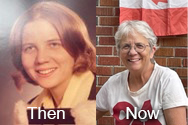
Rather than remembering, why not Return? You are invited to remember all those key moments from your youth and to return to celebrate them and one another at the 2025 St. Michael’s College, U of T Reunion. We are especially excited to see and celebrate those of us who graduated 50 years ago (I know, I can’t believe it either) and those who graduated 55 years ago. They promised me that there would be name tags, so worry not. Also, the campus is quite accessible so if you do have mobility issues, once again, worry not.
Even though we may not be able to stay up all night, we still have some party in us! What an opportunity to come back and connect with those we first met 50 or 55 years ago. This is your chance to reconnect if you’ve lost touch and I promise that there won’t be snow in May. So rather than snowball fights in the quad, we can connect over the many events being offered at St. Michael’s and U of T. Great news too… there is now a light at Queen’s Park so you can cross safely to get to the other side. Even though St. Joe’s is no longer a residence it is still going strong as part of Regis College with many courses offered in theology and religious studies. You can visit the Kelly Library and be surprised that there are no books on the main floor anymore, and you can enjoy a coffee in what was the old reading room!! Yes, there is now a café in the library, and you’re allowed to talk! Come and enjoy the exhibit of the Golden Rule and the work done by the Scarboro Mission Fathers or join the tour of Fr. Dan Donovan’s collection of artwork.
You can reconnect on Friday, May 30 at the opening Mass which will be held at the Loretto College chapel and then the 1970 and 1975 graduates will enjoy lunch in the Charbonnel Lounge. During the day there are activities and events at St. Mike’s as well as U of T. You can look at the six residences on campus and try to remember where your room was and if you were a day hop you can check out the renovated COOP. The evening events will include a barbecue and, of course, pub time!
Saturday at St. Mike’s includes a lecture on “Freedom and the Modern World: Lessons from Hegel and Kant” given by Douglas Moggach (7T0) or enjoy an Historical Journey of the campus entitled ‘Footprints in Time: A Historical Journey’. The afternoon offers a panel discussion on ‘Contributions of Women to Academics’, or you can enjoy a movie at Alumni Hall. A reception and banquet will be held Saturday evening for those who graduated 50 or 55 years ago.
As a member of the last Western Year class held at St. Mike’s, for those of us who came either from the States or provinces that did not have Grade 13, I am looking forward to meeting and reconnecting with those classmates even if you did not continue at U of T or St. Mike’s. You are most welcome to attend the reunion! In fact, there will be a special Western year meet up at the BBQ in a mini-reunion area that will be provided.
I will certainly miss those who cannot join us, like Fr. Belyea, Fr. Madden, Fr. John Kelly, Fr. Gardner and all those profs who had a major influence on my life or those classmates who have died. However, I am looking forward to those of us who can join in whatever way possible. So don’t delay or procrastinate like we did on those assignments years ago, and register for the weekend of remembering and returning, May 30-June 1. Hope to see you there.
Read other InsightOut posts.
Prof. Gerard Ryan, SJ, is the Scarboro Missions Chair in Inter-religious Dialogue and Director of Msgr. John Fraser Centre for Practical Theology at the Regis St. Michael’s Faculty of Theology. For Earth Day, we asked Fr. Ryan to share thoughts from his recent work, Ecological Accompaniment: From Connectivity to Closeness in an Age of Loneliness: https://link.springer.com/chapter/10.1007/978-3-031-41800-6_14
Pope Francis and Laudato Si’
Theological attention to ecology has grown significantly, especially following Pope Francis’ encyclical Laudato Si’. This document calls humanity to care for our “common home,” recognizing the environmental crisis as a moral and spiritual issue. Pope Francis challenged us to see the interconnection of all life and calls for an ecological conversion of hearts.
Laudato Si’ highlights integral ecology, recognizing that social and environmental issues are intertwined. The suffering of the poor is often worsened by environmental degradation. Faith communities are called to address ecological concerns alongside social justice. When we harm the environment, we harm ourselves and future generations. Caring for creation is inseparable from caring for one another—a shared responsibility requiring solidarity and action.
Theological Engagement in the Healing of Our Common Home
Theologians such as Jürgen Moltmann emphasize the need for an “ecological turn” in theology. Fr. James Hanvey, SJ, echoes this call, speaking of a “biblical Sabbath of the land,” inviting Christians to participate in the healing of the earth through rest, reflection, and restoration.
Deepening theological engagement with ecology also invites faith communities to reconsider their liturgical practices. Some churches integrate environmental themes into their liturgies, celebrating the Season of Creation, blessing the land and waters, and using sustainable materials in worship. These practices reinforce that caring for the environment is an act of faith and gratitude for God’s creation.
Loneliness in Our Church and World
Ecclesial communities must also consider how affectivity—our emotional and spiritual responses—motivates ecological care. As Graham Ward suggests, praxis involves actions that both stem from and lead to faith. Ecological accompaniment fosters a connection with the earth and with God, making caring for creation a spiritual practice.
Beyond ecological responsibility, faith communities must respond to increasing loneliness, worsened by the COVID-19 pandemic. The pandemic exposed physical, emotional, and spiritual vulnerabilities, deepening isolation. Studies show loneliness intensified, becoming a widespread and often stigmatized experience. This universal condition is further complicated by environmental crises, requiring a pastoral response.
A Theological Response: Ecological Accompaniment
Ecological accompaniment offers a pastoral response to both ecological degradation and human loneliness. This practice fosters spiritual healing and ecological restoration. Recognizing the divine presence in nature offers comfort, solace, and belonging.
Heike Springhart’s reflections on bodily vulnerability link human experience to Jesus Christ’s life and death. In this understanding, ecological accompaniment becomes an act of solidarity with both the earth and Christ’s suffering. Acknowledging our own vulnerability fosters empathy for the planet’s suffering and marginalized individuals.
Ecological accompaniment draws from the Christian tradition of accompaniment—walking with others in solidarity. In this case, the “other” includes suffering humanity and the earth itself. Christians are called to engage compassionately and attentively through personal actions, collective efforts, and prayer.
The Gift of Prayer in Times of Loneliness and Distress
To address loneliness, I propose prayer as a means of cultivating resilience through ecological accompaniment. Prayer reconnects individuals and communities with the earth and God’s presence within it. Contemplative prayer allows for reflection on loneliness and ecological disconnection while recognizing God’s sustaining presence in creation.
The Jesuit Examination of Consciousness offers a valuable framework. It encourages individuals to reflect on their day with gratitude, acknowledging moments of loneliness, vulnerability, and solace found in nature. This practice fosters awareness of how engagement with the earth nurtures body, mind, and spirit. One might pray for the grace to recognize how nature—through its beauty, rhythms, and life—offers resilience in times of isolation.
Conclusion: A Holistic Approach to Sustainability
This reflection proposes that ecclesial communities engage in ecological accompaniment as a spiritual and practical response to environmental and social crises. By embracing an expanded understanding of accompaniment—one that includes care for the earth and human vulnerability—Christians can foster a more sustainable and compassionate future. Through prayer, reflection, and action, faith communities can deepen their connection to the natural world and to one another. In doing so, they offer a path of healing for both the earth and the human heart, contributing to a more sustainable world.
Read other InsightOut posts.
Bridget Bowles is a third-year undergraduate student at the University of St. Michael’s College majoring in English and Christianity and Culture. Bridget works as a Student Campus Minister as part of the St. Mike’s Campus Ministry team, where she is proud to serve the spiritual needs of the entire St. Mike’s student body.
For me, university Easters have felt disjointed. With Holy Week falling in the middle of the exam period, the Triduum liturgies can feel like just another obligation after a long day of studying, and Easter Sunday with my family as a tentative afternoon of rest in between finals. The last three years, I have found myself attending the Triduum in a pew next to my backpack on my way from and towards hours of work at the library. The sense of celebration I want to feel at Christ’s resurrection becomes fleeting in a time of such stress. At Mass and at dinner with my family, I find myself thinking about a seemingly endless checklist of essays and exams. On the one hand, I feel guilty for not being fully present in such important moments, and on the other, I feel another guilt for spending so many precious hours away from my work at the busiest time of the year. From this guilt, a temptation arises for me to hyper-fixate on the suffering of Christ’s death on the cross over the triumph of His resurrection.
The temptation begins with how I see my own suffering reflected in that of Christ, but because I do not know what to do with my own guilt and stress, I cannot move on from it. Of course, the particularly minute– and it really is minute– suffering of students in the exam period is not the only reason that many of us feel this temptation to fixate on the pain of the crucifixion. We also see the greater sufferings of our own lives and of the world we live in reflected in Jesus’ suffering, and, again, not knowing what to do with such pain, we wish to remain stuck on Good Friday, never getting to Easter Sunday.
One way I have come to understand this phenomenon is through the relationship of Dante’s Inferno to the rest of his Divine Comedy. Generally speaking, most people, if they have read any part of the Divine Comedy at all, have only read Inferno. Pop culture loves the images of Hell and the outlandish suffering that Dante describes, and thus, there is a tendency to think of Inferno as entirely encompassing of Dante’s work, and yet there is still Purgatorio and then Paradiso. I led a reading group throughout this past academic year that was reading Inferno. At times, its suffering is fascinating; at others, it is difficult to comprehend. I first noticed a dissatisfaction developing from my tendency to hyper-fixate on suffering as I found myself at several points this past semester exhausted by Hell and ready to rush to the summit of Mount Purgatory. However, as Dante says, “the path to Paradise begins in Hell.” My reading group grappled with the duality of reading Inferno as both a necessity to understanding Purgatorio and Paradiso and also as one leg of a greater journey (an important leg, sure, but still only one aspect of the greater whole). I believe the same logic of how one should read Inferno in relation to the rest of the Divine Comedy can also be applied to how we feel about Good Friday in relation to the Easter Triduum or to how we feel about disjointed university Easters and the duality of both great stress and great celebration occurring at the same time in our lives. Jesus’ suffering is not only an experience of great agony but also a loving sacrifice. Yes, he is experiencing this very personal moment of intense physical pain, but he is experiencing such pain for the salvation of all humanity. He cries out, “My God! My God! Why have you forsaken me?” but also, as we hear this year in Luke’s gospel, “Truly I tell you, today you will be with me in Paradise,” and “Father, into your hands I commend my spirit.” These two experiences of Jesus on the cross are simultaneous and undifferentiated. His death is both suffering and redemption. To understand the place of the Triduum in our lives, we have to remember that, through Christ, there is always a hope for this same redemption in our own suffering. We want to hyper-fixate on suffering because we think that our fixation will allow us to know what “to do” with our pain (somehow, this seems easier than having hope), but we do not need to “know.” We need only to hope– to trust. For Catholics, Easter 2025 is particularly important because it is in a jubilee year. Pope Francis has declared the theme for this jubilee year to be “Pilgrims of Hope.” This Easter, in particular, we are being invited to reflect on the hope of Christ’s death and resurrection. Like Dante, our pilgrimage is one that need only traverse Hell to reach Paradise.
Inspired by Pope Francis and the jubilee year, my word of the year has been hope. Hope is not easy to have but keeping it as a persistent little voice in the back of my head has changed my outlook this Easter season. I am still stressed out and overwhelmed by essays and exams, but I am excited for Easter in a way I have not been in the last two years. My essays and exams will be written in due time, and I will take pleasure in celebrating in the hope to be found in Christ’s resurrection with my family, friends, and the entire St. Mike’s community. I will allow the realities of both suffering and celebration to be true just as they are, and I invite you all to do the same.
Read other InsightOut posts.
Evangeline Cowie (SMC 2T3) is a Special Assistant in the Senate of Canada, supporting the work of Senator Krista Ross. Previously, she served as President of the University of St. Michael’s College Student Union (USMCSU), leading advocacy and campus initiatives. She was also a member of the University of Toronto’s women’s rugby team. Evangeline holds an Honours Bachelor of Arts in Political Science from the University of Toronto and a Master of Arts in Political Science from the University of Ottawa. She remains passionate about public service and policy development.
Student government can be a stepping-stone for those interested in leadership or politics. For me, it was much more than that. It truly shaped my experience at St. Mike’s and at U of T.
I first joined SMCSU in 2021 as Vice-President of Mental and Health and Accessibility and transitioned to the role of President in 2022. I wanted to make a difference in the student experience at St. Mike’s, however small. I had the opportunity to work alongside talented and dedicated leaders, administrators, and students alike, all working towards the goal of improving our academic, social, and personal lives. At the time, I didn’t think very much about the impact that it would have on my future which, in retrospect, has been life changing.
My most important experiences came from the coordination and compromises that are necessary ingredients for collective team success. Within that framework, I learned to embrace disagreement as a way of diversifying my perspective. I learned how to adapt, problem-solve, and to approach new challenges with confidence and an open-mind. I also learned the importance of keeping the bigger picture in mind; maintaining a collaborative environment ensured that our team could truly make a positive impact. When a team works towards a common goal, it can accomplish great things.
I also want to give a shout-out to the value of clear, thoughtful, and tactful communication. Whether I was leading SMCSU meetings, or speaking with students and members of the administration, I found that our ability to reach the student body and to achieve our goals depended in large part on our ability to communicate effectively, in a manner that was relatable to our student body.
These lessons have continued to inform my daily work at the Senate of Canada. Transitioning to this venerable institution was certainly a robust learning curve but one that I felt well-equipped to handle with the bank of skills that I developed through my work with SMCSU. The essence of Senate’s work is, in its purest form, to give a voice to regional and minority views that might not have been accounted for in the legislative process and communicating them clearly back to the House of Commons. As an institution of “sober second thought”, the Senate espouses diversity, teamwork, and effective communication. I can’t think of a more perfect “prep school” for my work than my experience with SMCSU.
In addition to all I have said, I believe that the most valuable takeaway from my time at St. Mike’s has been the importance of community. St. Mike’s taught me that there is strength in being part of a team, in supporting others and learning from those around you. Even on my last day as SMCSU President, passing the baton to another set of incredible student leaders, I was reminded that we were all part of a long history of students giving of their valuable time to improving our college, our home. It is a similar feeling to the one I have most days working in the Senate; that my contributions are part of a long history of talented individuals dedicating their time to having an impact, small or large, on the governance of our country. I feel incredibly fortunate to have the opportunity to contribute to the work of Senator Ross and to take part in the feeling of community that comes along with it.
As I write this from my laptop, which is still covered in St. Mike’s paraphernalia, I take pride in knowing that I will always be part of the St. Mike’s family. While I hope to have had a positive impact, however small, on the St. Mike’s community, the St. Mike’s community has left an inedible mark on me.
Read other InsightOut posts.
Angie MacAloney-Mueller has worked on the St. Mike’s campus for more than 30 years. She currently serves as the physical plant coordinator. She has been an avid birder for more than 20 years, often venturing out with her husband Rob, who took the blackbird photo above.
To some he’s a menace, to others, he’s a marvel of nature. He is the male red-winged blackbird.
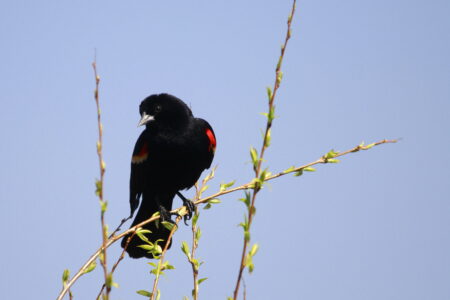
If you’ve been around Elmsley Hall during nesting season, which is in the late spring, you may have been swooped by this doting father. The male red-wings usually arrive here in March or April, after travelling hundreds–and sometimes thousands– of miles. They arrive early to find potential nesting spots and claim their territory.
The females arrive four to six weeks later, and the boys must impress and fight for a female’s attention and woo her to his territory. Once a female chooses a male’s territory, she will build the nest. She incubates the eggs for 11-12 days, and the baby birds fledge about 10 days after hatching. The male will feed the female during incubation and also assist in feeding and raising the young. Male red-winged blackbirds are fiercely protective of their nest and young, swooping at anything that gets too close, no matter the size.
As a longtime birder I have a lot of respect for the red-winged blackbird. For me they are the real sign of the arrival of spring. American robins are here year-round now, often flocking up together to survive the colder months. I once saw a red-winged blackbird swoop at an eagle on the Toronto Islands. The eagle there, or we humans on campus here, have no interest in disturbing his nest, it’s actually illegal to disturb a migratory bird nest, but he’ll do what is instinctive for him to do: protect. The males spend many hours a day watching guard over their nest site. I’ve often seen him keeping watch from the roof of Elmsley Hall or Charbonnel Lounge.
I know it can be startling to be swooped. My advice is to not react; just keep walking, don’t run or scream. If you can, make eye contact with him. He may be protective, but he’s a bit of a coward, too. I do believe we can co-exist for a couple of months while they raise their young before migrating south before the summer ends.
The question I’ve been asked most about the campus red-wing is, “Is it the same bird?” I don’t know, but it could be. The oldest one on record was over 15 years old. He was found hurt but was able to be released after recovering. If it’s not the same bird, it’s most likely one who was hatched here.
The unusual thing about these birds returning here year after year is that our grounds are not their preferred habitat. They usually prefer marshy areas and wetlands, nesting in the cattails. I guess they discovered our campus is an oasis in the city as well.
Read other InsightOut posts.
Simon Burke is a recent graduate of St. Michael’s Diploma in Interfaith Dialogue. Originally from Dundee, Scotland he grew up in Wallaceburg, Ontario. He is a longtime public servant, having held senior offices within the Canadian and Ontario governments and in university administration. Over the course of his career he led consultations that resulted in comprehensive legislation for persons with disabilities, prohibition of discrimination based on sexual orientation, civil liberties protections during emergencies, restorative justice systems to better meet the needs of victims of violent crime and the priorities of First Nations communities. He has served as Director Ethics in the Ontario Public Service, Director of Ontario’s Pay Equity Commission, Director of Policy to Canada’s Minister of Global Affairs and was the Senior Executive Officer and Chief Administrative Officer of the Criminal Injuries Compensation Board. He was responsible for the operational and governance reviews of the Ontario Parole Board, the Ontario Civilian Police Commission and the Ontario Trillium Foundation. He is a Board Director with the Catholic Congregational Legacy Charity and Catholic Health Sponsors of Ontario which provides sponsorship to 22 health care organizations originally established by seven congregations of religious Sisters. The Sisters were health care pioneers who created a culture of compassion to prioritize serving the vulnerable and those most in need.
When there was a lot more snow on the ground, recent graduates of the Diploma in Interfaith Dialogue were asked to get together with Roxanne Wright, Manager of Program Development and Delivery, Continuing Education, to discuss our learning experience with the diploma. Kudos to St. Mike’s for wanting to further develop this new, important and much needed offering — and making it more widely accessible.
Pursuit of self-knowledge is the critical feature of a university’s aims and objectives and this program at St. Mike’s has embraced the study of our community’s cultural and faith communities and their interactions. Those able to attend the evening conversation with Roxanne were happy to help because the value of the program and its founding sponsor, Scarboro Missions, is so self-evident — knowledge about our faiths can be and should be put at the service of our society to respond thoughtfully and effectively to practical problems. Indeed, Pope Francis in his recently published “Fifteen Rules for a Good Life” offers that Rule #4 is to believe in the existence of lofty and beautiful truths. He may well have been referencing interfaith dialogue when noting that “…the world moves forward thanks to men and women who broke down walls, built bridges, dreamed and believed….”.
It is quite fitting that the University of St. Michael’s College, an important Canadian and Roman Catholic institution at the centre of one of the most multicultural and multi-faith city in one of the most ethnically diverse countries in the world, offers a continuing education program that engages learners with a deeper understanding of Catholicism and with leaders from many of Toronto’s faith communities (Buddhist, Christian, Hindu, Indigenous, Muslim, Judaism, Sikh). The program is straightforward. Students learn about the foundations of each faith tradition and its practices. The origins, the central teachings, the denominational practices, and social and political influences of each faith community are considered with care and respect. Courses benefits from engagement with experts, scholars and trained practitioners of interfaith encounters. For example, the course on Sikhism included a wonderful class trip to a Gurdwara where we were generously welcomed and very well fed. All this learning is delivered usefully within the framework of a comparative perspective.
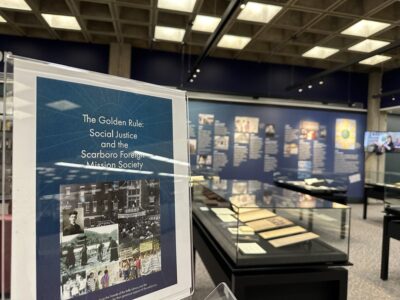
In discussion with Roxanne there was a clear consensus that the program is a timely survey of the tenets of religions and religious practices with valuable emphases on similarities and differences. More strongly expressed was that the program is an important platform for Catholics as well as persons from other faiths (or none at all) to develop a deeper appreciation of the shared values of many faiths – ‘The Golden Rule’.
Moreover, courses offer a critical perspective on the value-add that dialogue between people of differing faiths can play in better understanding themselves in relation to peoples of different faith backgrounds. In short, the program awakens participants to the histories of faiths and equips people with an essential cultural competence. Developing practical competencies to structure meaningful connections between peoples of different faiths can bridge differences and encourage understandings. Surely our neighbourhoods and indeed our world need more understanding — not less — of others. The program points to a path less travelled where we can engage with peoples outside our own communities. Essentially, the program serves up a framework for listening and for learning so we can respectfully meet, greet and, one hopes, protect each other.
Over a two-year period I was able to participate in classes exploring issues associated with the fraught histories of religion and world migration, inculturation, mysticism, and women and religion. I feel fortunate to have taken classes in Islam, Judaism, Buddhism and Sikhism, especially during a time fraught with such tension and such sorrow. More often than not lectures led to well-considered class discussions facilitated by the practical contributions of guest lecturers, including religious leaders, elected officials, community advocates, teachers and senior leaders in the not-for-profit sector.
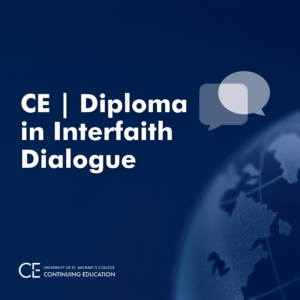
I feel quite lucky to have spent several Monday evenings in the company of others discussing the problems and prospects of interfaith dialogue to strengthen solidarity with human rights, human dignity and the common good. For me, the lectures and experiential learning opportunities that had Nostra Aetate at their core (the 1965 proclamation made by His Holiness Pope Paul VI entitled the ‘Declaration on the relation of the Church to non-Christian Religions’) were highlights. Doctoral candidate Mia Theocharis in ‘Catholic Perspectives on Ecumenical and Interreligious Dialogue’ got us to think deeply and critically about our personal roles in bringing to life the idea that the Catholic Church “…rejects nothing that is true and holy in [non-Christian] religions.” Dr. John Sampson’s curated lectures on inculturation were comprehensive assessments of the Church’s declaration of reverence for “…those ways of conduct and of life, those precepts and teachings which, though differing in many aspects from the ones she holds and sets forth, nonetheless often reflect a ray of that Truth which enlightens all men.”
The program was a good fit for my learning needs. In my role as a board member for a Catholic healthcare and social services organization with a mandate to further the “healing ministry of Jesus” knowing about the principles and practices and necessity of interfaith dialogue in Canada is a critical requirement. Truly responding to the needs of people and communities who have experienced or are experiencing marginalization, oppression and discrimination requires listening skills both at the personal and institutional levels. St. Mike’s has offered me an appreciation for the value of interfaith dialogue and its associated mechanisms to bring people together, build relationships and foster partnerships for the common good.
The Diploma in Interfaith Dialogue is open to all and accepts applications throughout the year.
Read other InsightOut posts.
Rhea Raghunauth is a fourth-year Bachelor of Science student at the University of Toronto, majoring in Neuroscience and Public Health. During her undergraduate studies, she became deeply aware of the lack of advocacy and education surrounding gender-based violence, despite the rising rates of intimate partner violence and femicide in Ontario and her hometown of Brampton. This realization fueled her commitment to driving change through advocacy and education, both within the university and her community. Combining her academic background with her passion for community building, Rhea aims to challenge and reshape the discourse on gender-based violence, with a particular focus on intimate partner violence.
Living in a city like Toronto is undoubtedly exhilarating. The skyline, the beautiful CN Tower, the late-night food spots in Chinatown, the hum of people moving in all directions—it’s a world that feels alive. A world that is so rich in culture, history and stories. But for women and gender-diverse people, city life isn’t just a predominantly positive place; city life comes with an undercurrent of caution, a silent set of calculations we make every day just to exist safely.
Walking home after dark? Share your location. Wearing headphones? Keep one ear open. Walking to class? Find a friend. Wearing a dress? Maybe change. These are the unspoken rules of survival for women. These are the rules that aren’t written in any city guide but are learned through experience, through whispered warnings from friends, through the stories of those who didn’t make it home safe.
These habits may seem small, but they reflect a deep-rooted societal issue: Women are expected to be responsible for their own safety in a world that refuses to guarantee it. And while the beautiful city promises boundless possibilities, career opportunities, and educational endeavours, it also harbors spaces of exclusion, where fear dictates movement, choices, and even ambition. The ability to explore freely, to take up space without hesitation, remains an elusive privilege, afforded by only some.
Despite the tremendous strides women and gender-diverse people have taken toward challenging inequalities and inspiring change, gender-based violence remains, unfortunately, an urgent issue. The devastating reality of gender-based violence has forced the public to encourage women to employ specific tactics to evade the tragedies of gender-based violence. We’re often told to “be careful,” to change how we dress, to avoid certain places at certain times. It is always up to us to be careful and make the right and safest decisions. These tragic narratives that strip women of their autonomy have been further accentuated by sociopolitical turmoil, with phrases like “your body, my choice” and “get back to the kitchen” dominating social media. These harmful messages are reinforced through television, video games, and everyday conversations. When these concerning behaviors are called into question, they are often dismissed with phrases like “boys will be boys.”
But these harmful excuses are not just a silly tactic to dismiss problematic behavior—they reinforce a culture that normalizes gender-based violence. When young boys grow up hearing that their actions, no matter how aggressive or inappropriate, are just “boys being boys,” they internalize a dangerous message: that accountability does not apply to them. Meanwhile, women and gender-diverse people are conditioned to accept discomfort, to shrink themselves, and to modify their behavior in ways that prioritize the comfort of others over their well-being.
The problem with this logic is that it shifts the burden of prevention onto potential victims rather than addressing the root cause: the perpetrators and the systems that enable them. Instead of teaching women and gender-diverse people how to avoid danger, why aren’t we focusing on raising boys and men who do not pose a threat in the first place? Why aren’t we challenging the structures that excuse predatory behavior and, instead, creating environments where everyone can exist without fear?
The reality of gender-based violence is grim, but there is hope. Across the world, movements are pushing for change – consent education in schools is growing, conversations about toxic masculinity are becoming more mainstream, and more survivors are speaking out than ever before. These shifts matter. They disrupt the silence that allows violence to thrive.
However, this is not enough. We need systemic accountability. Governments and policymakers must strengthen protections for survivors. Workplaces, universities, and public institutions need to actively implement policies that ensure safety and justice. The media must be held responsible for the messages they amplify, restricting and abolishing the narrative of men dominating women.
And men, especially, need to step up—not as silent bystanders, but as active participants in dismantling the very structures that allow gender-based violence to persist.
Toronto, like any city, holds incredible potential. It can be a place of opportunity, of empowerment, of safety—but only if we commit to making it so. The unspoken rules of urban survival should not exist. Women and gender-diverse people should not have to plan their lives around fear. And the responsibility for change should not rest solely on those most at risk.
While we celebrate the tremendous achievements of women on this International Women’s Day, we must also Accelerate Action and advocate for the strides yet to be made. It’s time to rewrite the narrative. Not just with words but with action.
The University of St. Michael’s will mark International Women’s Day on Saturday, March 8.
Rhea Raghunauth is the recipient of a University of Toronto Student Leadership Award for her work as a mentor with U of T’s Women’s Advocacy Outreach, Co-President of the Mental Health Association at U of T, and Co-Founder of The Canadian Courage Project UTSG Chapter. In the later role she led a book drive by collecting hundreds of donated books to start the first in-house library at HomesFirst Shelters. Through all her involvement, she has discovered a passion for advocacy and volunteering.
Read other InsightOut posts.
Hi everyone, I’m Doyin, and I’m a student studying Cell and Systems Biology, currently in my Co-op year. As someone passionate about student life and community building, I serve as a Residence Don at St. Mike’s Residence, Education and Outreach Director for the Black Students Association, and Vice President of International Community Outreach for the St. Michael’s College Student Union.
I’m excited to share with you our upcoming Culture Week here at SMC. As an international student at U of T, I’ve been fortunate to experience the diverse student body and multicultural environment, especially since the university is located in the heart of Toronto. This city, with its vibrant cultural scene, has allowed me to make friends with people from different backgrounds and learn about their experiences.
Growing up in Lagos State, Nigeria, which shares similarities with Toronto as a large city, I’ve always been exposed to diverse cultures. Nigeria, with its 36 states and numerous ethnic groups, celebrates the beauty of different cultures, so it’s no surprise that I thrive in such environments. I understood the importance of feeling connected to my background early on. When I joined U of T, I actively participated in the Nigerian Student Association and the Black Student Association to feel a sense of community. However, I didn’t limit myself to just these groups; I also sought opportunities to learn from and immerse myself in different cultural backgrounds from around the globe. Working as an International Student Experience Ambassador for the Centre for International Experience at U of T was an incredible opportunity that taught me a lot about the challenges and triumphs of international students. It also gave me a deeper understanding of the resources available to support students in navigating cultural differences and building a community away from home.
Naturally, when nominations opened for the 2024-2025 term of the SMCSU, this position felt like the most natural fit for me, given my extensive background and knowledge of the international community. As Vice President, I prioritized exposing students to U of T’s resources to make their transition smoother, especially through the Centre for International Experience, and promoting more community among international students. This initiative has been successful so far, with our first Cultural Week last semester featuring a fun cultural trivia night, cultural arts and crafts, and an international student mixer. These events not only brought students together but also provided a platform for cultural exchange and learning.
I approach every experience with an open mind, eager to learn and gather new experiences. This semester, we have Culture Week 2.0, a collaboration with several student groups and clubs. From March 4-7, we have an exciting lineup of events designed to celebrate the rich cultural diversity of our community. Here’s a sneak peek at what we have planned:
- Cultural Arts and Crafts: Explore traditional crafts from around the world and create your own cultural masterpiece.
- Iftar Dinner: Join us for a special dinner to break the fast during Ramadan; open to all students regardless of faith.
- Pierogi Making: Learn the art of making traditional Polish pierogi and enjoy a taste of Eastern European culture.
- Guess the Country Games Night: Test your knowledge of global cultures in a fun and interactive game night.
- St. David’s Day Celebration: Celebrate Welsh culture with music, food, and festivities.
We’re working with various student groups to bring this event to St. Mike’s and celebrate diverse cultures while gaining new experiences. Whether you’re an international student or just curious about different cultures, Culture Week 2.0 is the perfect opportunity to connect with others, learn something new, and have fun. So mark your calendars for March 4-7 and join us for an unforgettable celebration of global cultures!
Read other InsightOut posts.
Cynthia L. Cameron is the Patrick and Barbara Keenan Chair of Religious Education and Associate Professor of Religious Education at the Regis St. Michael’s Faculty of Theology. Her research focuses on adolescents, particularly female adolescents, in developmental psychology, Catholic theological anthropology, and practices of Catholic schooling. Among her recent work is Nobody’s Perfect: Adolescents, Mistake-Making, and Christian Religious Education, co-edited with Lakisha Lockhart-Rusch and Emily Peck (Fortress Press, 2025) and“Genders, Sexualities, and Catholic Schools: Towards a Theological Anthropology of Adolescent Flourishing,” published in the British Journal of Religious Education. Prior to coming to Regis St. Michael’s in 2021, she taught at the undergraduate and graduate levels in the United States and had a nearly 20-year career as a teacher and administrator in Catholic high schools.
In 2021, I accepted the offer of a faculty position at the University of St. Michael’s College’s Faculty of Theology (now the Regis St. Michael’s Faculty of Theology) and moved from the Boston area in the United States to Toronto. And I am very grateful that I did. I love the work that I do and the people I get to do it with. I have also been delighted to find myself living in Canada, in Toronto particularly.
In recent weeks, since the presidential inauguration in the United States, I have found my delight to be tempered. This is not to say that I am any less grateful to be living in Canada. But witnessing the drastic upheaval of the federal government under the new administration, a profound reminder of the fragility of our democratic institutions, makes me deeply sad. I am angry and disappointed, too; but sadness is the overwhelming emotional response that I am sitting with these days.
In his helpful and now-classic exploration of what it means for the Christian church to be prophetic, the biblical scholar Walter Brueggemann calls us to nurture an alternative vision of the world, one that critiques and challenges the dominant culture. Particularly helpful in Brueggemann’s analysis is his naming of two parts to the church’s prophetic task. Lament and hope. What I find helpful in Brueggemann’s approach is his acknowledgment that lament is an important part of the prophetic task of the Christian church. As a community of people striving to live more and more into the Reign of God, we need to attend to the sadness and grief that people experience in the face of injustice, oppression, and death. Lament then can lead to an energizing hope, one that is critical and realistic, but only if we first acknowledge our grief. So, what’s helpful for me in Brueggemann’s work is the affirmation that sadness (and anger and disappointment) are appropriate responses to the kinds of social disruption that I am seeing.
It is also profoundly weird to be both an insider and an outsider to these events. As a U.S. citizen, I am impacted by and participating in the upheaval. I know LGBTQ kids who are now living in fear for their lives. A friend who lived out their Christian vocation to provide food for the hungry has lost their job with USAID. I am no longer certain that my 87-year-old father will get his social security check each month. I assume that my financial and tax information has been accessed by unauthorized actors. At the same time, I am living in Canada, where things like pensions in old age, the protection of LGBTQ rights, and the care for the poor are still happening. Certainly, in imperfect ways and in ways that could (and should) be improved. The state of things in the U.S., however, is a reminder to me of how quickly we can lose the institutions that we thought could protect people.
But the basic assumption that a society has a responsibility to care for the vulnerable amongst us still seems to be a value in Canada. In Catholic Social Teaching, this assumption that we have a responsibility to attend to the needs of our vulnerable siblings is named as the preferential option for the poor. It is the insistence that the creation of a more just society requires the prioritizing of the needs of those most at the margins of that society. It is the affirmation that we cannot live into the Reign of God – or, better, the kin-dom of God, as the theologian Ada Maria Isasi-Diaz puts it – unless we are prepared to place the poor and vulnerable at the center of our attention.
This commitment to the vulnerable amongst us is something that I still find in Canada. And, while my sadness (and anger and disappointment) at what is happening in the U.S. remains, Canada does give me hope. And, for that, I am deeply grateful.
Read other InsightOut posts.
Hi, my name is Ronda Burchartz. I feel truly blessed to have earned my Master of Religious Education degree from the Faculty of Theology at University of St. Michael’s College, University of Toronto. My journey has taken me through many roles/responsibilities—student, truck driver, fitness instructor, teacher, and now a flight attendant for adventure travellers and scientists. But beyond any title, Who I am is created by Love, to Love, for Love. I strive to bring that spirit into every role/responsibility: as a daughter, wife, mother, service provider, caregiver, friend, student or colleague. My Master’s studies helped me understand that our essence matters more than any title we hold. I hope the story below reflects that truth.
There’s cold, and then there’s Antarctica. My office is a plane, my home is a tent on a glacier, and my job as a flight attendant takes me to some of the most extreme places on Earth. But once the Antarctic Bug bites, there’s no going back—you find yourself drawn to the ice over and over again.
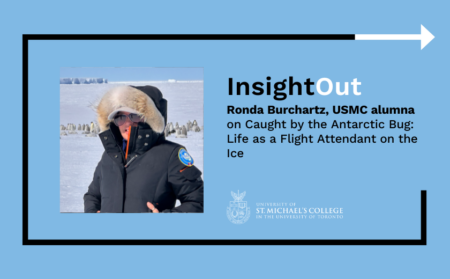
Flying in the Harshest Conditions
Being a flight attendant in Antarctica is nothing like other commercial aviation; it is more personal, and one must be ready for anything. Our flights depend on the weather, with brutal winds and icy runways making every journey unpredictable. There are no luxury lounges or in-flight entertainment—just a crew that depends on each other for everything, from safety to sanity.
Landing in the middle of a vast, white expanse never loses its magic. The ice stretches endlessly, shimmering under the 24-hour sun that never sets. But as breathtaking as it is, this environment is unforgiving. When we land, there are no terminals—just a frozen runway and the realization that we’re in one of the most remote places on the planet.
The guests depend on us when landing in these conditions. They look to us for reassurance, especially when touching down on snow-covered runways using skis. Sometimes, the landings are hard or bumpy, and guests glance back at me as if to ask, “Is everything okay?” I reassure them it is, and once we stop and step outside, they’re grateful to have had such a skilled crew looking after them.
The aircraft cabin is my home away from home. When guests come on board, I treat them as guests in my home—offering hot drinks and snacks and listening to their incredible stories. The people we meet are fascinating, and I am grateful for the opportunity to host so many outstanding individuals. One time, we were hosting a group when one of their family members fell ill back home. I offered comfort with hot drinks, and one of the guests asked me to lead a prayer circle for them. At that moment, I felt like part of their family. Their warmth and kindness stayed with me—I hope to meet them again.
Life on a Glacier
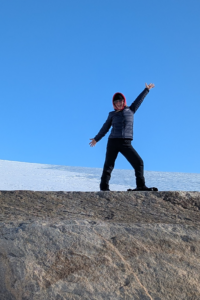
When not flying, we live in tents on the ice, completely exposed to the elements. The wind howls relentlessly, rattling our temporary homes, and the cold seeps into everything. But despite the harsh conditions, our tents are our refuge and sanctuary. There’s a sense of camaraderie that makes it all worth it. Our crew is more than just a team—we are a family, looking out for one another in one of the harshest environments imaginable.
We rely on each other not only for survival but also for emotional support. When we have losses at home that we cannot return for, we listen to and care for each other. One of our dear friends lost his mother the day he arrived, and there was no way to get him home for a month. So, we helped him by listening to his stories and being someone, he could count on. In such an isolated place, these small acts of kindness mean everything.
Simple things, like sharing a hot drink or swapping stories after a long day, become moments of warmth in the freezing cold. The Antarctic has a way of forging unbreakable bonds, which keeps many of us returning.
Meeting the People Who Call Antarctica Home
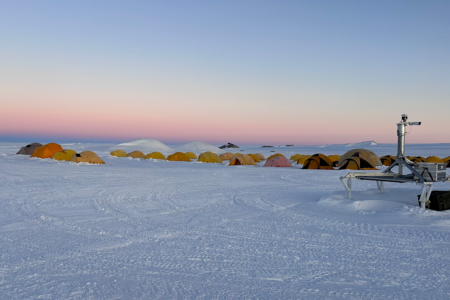
One of the most fascinating parts of this job is meeting the people who choose to live and work here for one year to eighteen months on the ice. Our flights take us to scientific bases where researchers dedicate their lives to studying Antarctica’s ice, climate, and unique wildlife. These scientists and explorers have an undeniable passion for the continent, and their stories are as awe-inspiring as the landscapes around us.
Our trips include flying to Atka Bay to see the emperor penguins—I can see these majestic birds at least seven times each season. On these trips, we’ve had the privilege of watching baby emperor penguins huddle together for warmth, their fluffy bodies braving the elements. It’s moments like these that make the hardships worth it—the chance to witness nature at its purest and most untouched.
Our team also flies to the South Pole at least five times per season. It is brutally cold there, and on the way back to our tents at Wolf’s Fang, we must stay at Dixie Camp for the night in unheated tents, where the temperature is never warmer than -20°C. Undressing and getting into the sleeping bag on those nights is a struggle, but once inside, we are toasty warm. Then we must get out in the morning… brrrr!
The Call of the Ice
Despite the extreme cold, the relentless winds, and the isolation, there’s something about Antarctica that gets under your skin. The sheer vastness, the beauty, the adventure—it all calls you back. Many of us come here thinking it’ll be a once-in-a-lifetime experience, only to find ourselves returning year after year.
That’s the power of the Antarctic Bug. Once it bites, you’re hooked for life.
Read other InsightOut posts.
Student Neve Chamberlain is the director of the SMC Troubadours’ production of The Shawshank Redemption.
Putting on The Shawshank Redemption has been a very ambitious project for us. We knew we wanted to make Shawshank feel as real as possible while also respecting the stage as our medium, but the stage has limitations. We had to get creative. Our aim was not to just copy the film. This was going to be our version of The Shawshank Redemption.
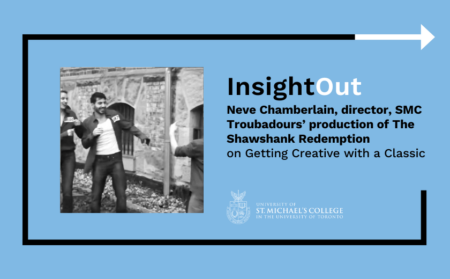
We decided to dedicate most of our budget to building the set – a giant prison that spans the full Hart House stage, acting almost as character of its own. We thrifted most of the costumes, handmade many of our props, and decided to rely heavily on lighting and our soundscape.
We created our own soundtrack to match the themes and individual character arcs of the story and chose creative ways to light the stage such that it represents the different settings (e.g. inside the prison vs. the prison yard), rather than moving the entire set on and off.
I think overall this project has been a lesson in innovation for all of us. The talent here at St. Mike’s and U of T is truly inspirational, and I wanted to give everyone an exciting new challenge. I couldn’t be prouder of this team and how they’ve helped bring this show to life. To every actor and crew member, I am in awe of you. To audience members, I hope you can appreciate all the hard work we put into this show, and I hope, even if for a brief moment, you will let the hopefulness of this story radiate through you.
The Shawshank Redemption runs Feb. 13-15 at the Hart House Theatre, located at 7 Hart House Circle, located on the west side of Queen’s Park. Tickets are now on sale.
Read other InsightOut posts.
A brief introduction of me, my name is Naomi Thai, and I am a 2nd-year student at St. Mike’s, majoring in art history. Blue runs in my blood (obviously), and I’m so glad I can appear to our big family of St. Mike’s with this article about one of my most favourite holidays of the year!
The first 15 years of my life were spent wholly in my home country–Vietnam–allowing me to be so in touch and in love with our culture and traditions. The Lunar New Year, which begins on Wedneday, January 29, holds great significance as the official fresh beginning, leaving the hardships of the past, and is strongly cherished as a reunion of families and loved ones. The celebration centres around rejoicing and bonding, as well as practicing spiritual wellness and respect to the Gods of our lands.
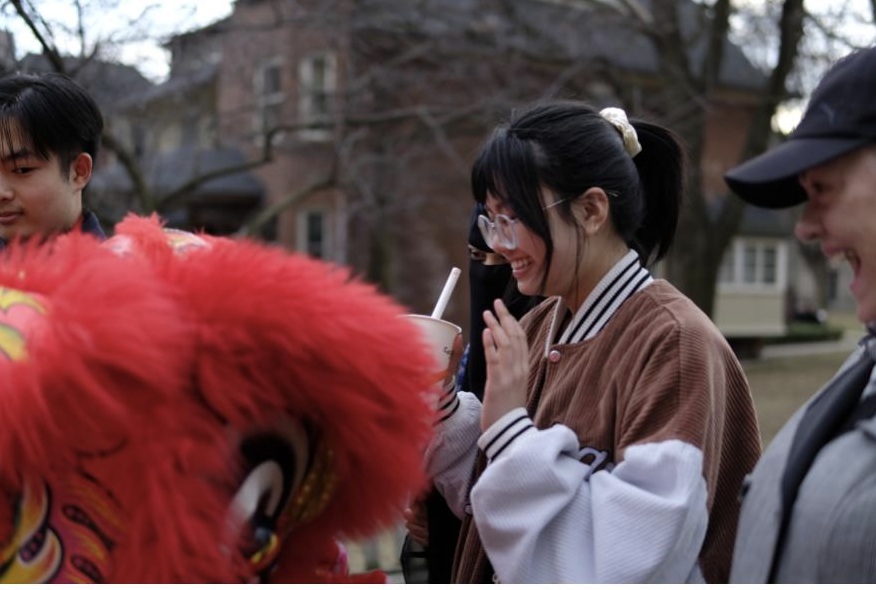
On the 23rd day of the Lunar calendar, it is a tradition for Vietnamese people to formally offer to Ông Công Ông Táo – the Land Genie and the Kitchen God–specialty food. These Gods are worshipped year-round with their own altars in the house, as their missions are to protect and bless the household with health, wealth, and happiness. The day of offerings is when the family symbolically sends them back to Heaven to “report” the household’s activities to the Jade Emperor – the Ruler of Heaven. The special animal used to “send” these Gods away is a carp. In the past, real carps would be released to lakes and rivers, but the modern approach to this practice is edible jelly carps – super efficient and eco-friendly. Fun fact: there is a special comedy show on National TV every Lunar New Year about these Gods’ journey to Heaven. It is the nation’s sweetheart of comedy, and every Vietnamese person you know has probably grown up with it.
A showcase of the Lunar New Year on campus that you might have seen is the dragon and lion dance offered by our college. St. Mike’s hosts this performance annually for the public with the amazing help of different dance teams from the GTA. The dragon and lion are both symbols of strength, prosperity, and power in East Asian culture. They dance along to the rapid instrumental of drums and gongs, to drive evil spirits away from the household and welcome new blessings. These dances are also performed all year round for grand openings of almost any business or institution, and even weddings!
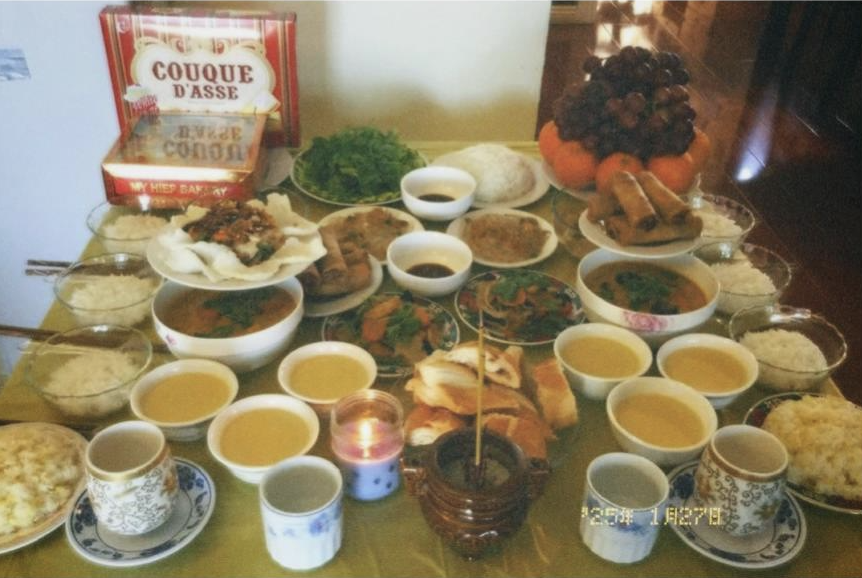
As a little memory in my childhood, whenever we’d hear the familiar sounds of drums and gongs on the street, my family would tell me “It’s a lion dance!”. We’d then roll down the car windows and slow down, joining the crowd to watch the lions. It’s heartwarming to see how these performances inspire people to pause their busy lives to indulge in the joy of celebration and shared blessings.
My favorite part about Lunar New Year (and every other day) has to be the food. My father’s side of the family are Buddhists, and their tradition every year is to cook special vegan dishes for the ancestors’ worship ceremony. The food will be served to the family after, and they are so incredibly flavorful every time! My top picks are sour soup (a tamarind-based broth with different toppings), stir-fried mushrooms with tofu, and bánh bột lọc chay – vegan tapioca dumplings. Vegan food is especially important for Buddhism, as they consider vegetables as the main fuel for a calm, meditative soul. The dishes are continually enhanced and improved every other day to make the experience more enjoyable and accessible to many people. Even condiments such as fish sauce have their own vegan version! If you have the chance, I highly recommend trying out Vietnamese vegan food; it’s a surprisingly elevated experience like no other.
I hope the little tidbits I’ve shared gave you an interesting insight into the Vietnamese Lunar New Year and allow you to be a little closer to my beloved culture. I wish everyone an amazing new year with great health, happiness, and of course, good luck with your academics!
Lunar New Year celebrations will take place on campus on Thursday, January 30 in the COOP from 3-5 p.m.
Read other InsightOut posts.
This year for Mary Ward Week*, in celebration of the Jubilee Year of Hope, the Institute of the Blessed Virgin Mary / Loretto Sisters (IBVM) and Congregation of Jesus (CJ) recognize Mary Ward as a Pilgrim of Hope. We honour her tenacity and determination to realize God’s dream for her and her Institute, no matter the cost or obstacle she encountered. Her life embodies the call of Pope Francis to be a Pilgrim of Hope. In Spes non confundit, he writes:
Everyone knows what it is to hope. In the heart of each person, hope dwells as the desire and expectation of good things to come, despite our not knowing what the future may bring. Even so, uncertainty about the future may at times give rise to conflicting feelings, ranging from confident trust to apprehensiveness, from serenity to anxiety, from firm conviction to hesitation and doubt.
No doubt Mary Ward experienced this range of emotions as she faced the suppression of her Institute even as she fully believed in God’s call to her and the contribution her Institute could make to a world in need. Her absolute confidence in God’s will gives us, her members and the world, an example of hope in adversity.
We reflect on her life and charism and ponder her gift to the Church and world today. We recall her boldness of vision: called to work for the greater glory of God, to found her Institute in the same manner and form as the Society of Jesus (the Jesuits), grounded in Ignatian spirituality and the Spiritual Exercises, freedom of movement, governed by women, and in service of the Church and world.
As followers in her footsteps, the members of the IBVM and CJ strive to be women marked by the virtues of freedom, justice, sincerity, and joy. We seek to be free from attachment to earthly things, free for all good works, and free to ‘refer all to God’, that is, to find God in all things and in all things find God. We are graced with justice – striving for the greater good, sincerity – that ‘we appear as we are and we are as we appear’, and we joyfully live a life of service in relationship with God and others.
A Pilgrimage of Hope
2025 is a special year for the IBVM and CJ. As was shared in a previous InsightOut post by Sr. Evanne Hunter, the two congregations are moving towards merger. 2025 is the year it will become a reality. During Mary Ward Week, then, we celebrate not only Mary Ward as a Pilgrim of Hope but the entire pilgrimage of hope toward merger the two congregations have been undertaking.
Since our founding in 1609 by Mary Ward and her companions, several branches of the Institute developed due to circumstances of history and geography. This was not the dream of our founder and, during the past century, the call to union was strong and several mergers/re-unions occurred. Notable milestones along the pilgrimage toward merger include:
- 1900: Gonzaga Barry, founder of the Australian Province of the IBVM pushed for merger/union at a meeting in Rome with the leaders of all Mary Ward foundations
- 1953: Reunion of the CJ German-speaking branches
- Merger/reunion of IBVM Irish groups with Rathfarnham, Dublin: Omagh (1934), Navan (1969), Fermoy (1987)
- 1983: First meeting of the General Superiors of the IBVM and CJ branches in Rome – North American branch, Roman branch, Irish branch
- 2003: Merger/reunion of the North American branch and Irish branch to become the Loreto branch (IBVM)
- 2019: Formal process of discernment and reflection toward Becoming One
- 2022: Unanimous votes to formally move toward merger at the General Congregations (meetings) of the IBVM and CJ
Timeline to Merger
Just as in the past, the pilgrimage toward merger in 2025 will be marked with milestones along the way:
- January 23 – 30: Mary Ward Week 2025, celebrating Mary Ward as a Pilgrim of Hope
- February to July: A worldwide Spiritual Journey of prayer and reflection, open to our associates, alumni, and any friends who would like to pray with us
- July 31: Feast of St. Ignatius of Loyola, on which each IBVM sister will take a formal vote to join the CJ
- November 4: Our official merger date, pending an affirmative outcome. November marks the founding of the Loreto branch in 1822 in Ireland by Teresa Ball, and will also be the day on which IBVM sisters become CJ sisters
Will the merger be messy at first? Probably! We are following a new path and many unknowns lie ahead of us. Our name in Canada will formally become the Congregation of Jesus, although we will remain known as the Loretto Sisters. With this change in name, however, comes something much more significant. The merger offers us an experience of renewal, of ressourcement – a return to the roots of our charism, mission, and spirituality, affirming their significance for the world today. It is an opportunity to read hope in the ‘signs of the times’ and share our enthusiasm for our life and mission. Together, as one global Congregation of Jesus, we will discover and deepen a shared sense of identity. The merger allows us to experiment with new practices and customs, to learn from other cultural experiences of the charism and mission. We find hope in the evolution of Mary Ward’s Institute, trusting in God’s will for us, and joyfully living Mary Ward’s dream become reality.
Our Invitation to the University of St. Michael’s College
We invite our colleagues and friends at USMC to join us in preparation and celebration this year: Pray with our booklet for Mary Ward Week. Watch for an invitation to join our Spiritual Journey. Pray for our vote on July 31st. Celebrate with gusto on November 4th!
Beginning January 31st, visit ibvm.ca/becoming-one to join us in the pilgrimage toward merger.
* From January 23rd (Mary Ward’s birthday in 1585) until January 30th (the date of her death in 1645), the Institute of the Blessed Virgin Mary/Loretto Sisters (IBVM) and Congregation of Jesus (CJ) celebrate Mary Ward Week, in honour of our founder.
Read other InsightOut posts.
Francesca Rousselle is the Processing Archivist for Special Collections: Archives and Rare Books at the John M. Kelly Library at the University of St. Michael’s College. She is responsible for the records of the Scarboro Foreign Mission Society and Sisters of Service. She received her MA in Classics from Queen’s University and her MI in Archives & Records Management and Library & Information Studies from the University of Toronto’s iSchool.
What goes into curating an exhibition? A lot more than most people think!
I confess to being a terrible person with whom to visit museums and galleries because I take hours pausing to read each and every caption, interpretive panel, brochure and everything else. I have visited and worked in a variety of museums over the years and have encountered exhibitions ranging from the terrible and slapdash to the world-class, so when I began to work on developing an exhibition to celebrate the donation of the Scarboro Foreign Mission Society records to the John M. Kelly Library’s Special Collections, I knew I wanted to do more than simply “display cool stuff.”
Exhibitions are, of course, visual enterprises – the goal is always to draw the visitor’s eye and encourage them to take a closer look at what’s on display. The Scarboro Missions collection is full of materials from all over the world but sticking a bunch of interesting items in the cases and calling it a day would not create an exhibit; in addition to being visual, exhibitions are fundamentally interpretive.
As I processed the records – rehousing delicate items for long-term preservation, describing records for researcher access in our online database and integrating materials with the existing collections at the Kelly Library, I found myself asking, ‘what kind of story do I want to tell?’ We call it exhibit curation, not exhibit displaying, because a good deal of planning and active decision-making occurs months before anything begins to go into the cases.
I considered what the purpose of the exhibition was – namely, celebrating the donation of the records, introducing the history of Scarboro Missions to the St. Michael’s community and, with hope, encouraging visitors to do further research with the records. It would be impossible to display all, or even most, of the Scarboro Missions records as the collection occupies close to 200 boxes, and so I had to be deliberate in selecting a topic for the exhibit. I needed a subject and theme that would encapsulate the charism of 100 years of history, and which provides a self-contained and interesting experience for a general audience while also enticing keen visitors to engage with the collection beyond what’s on display.
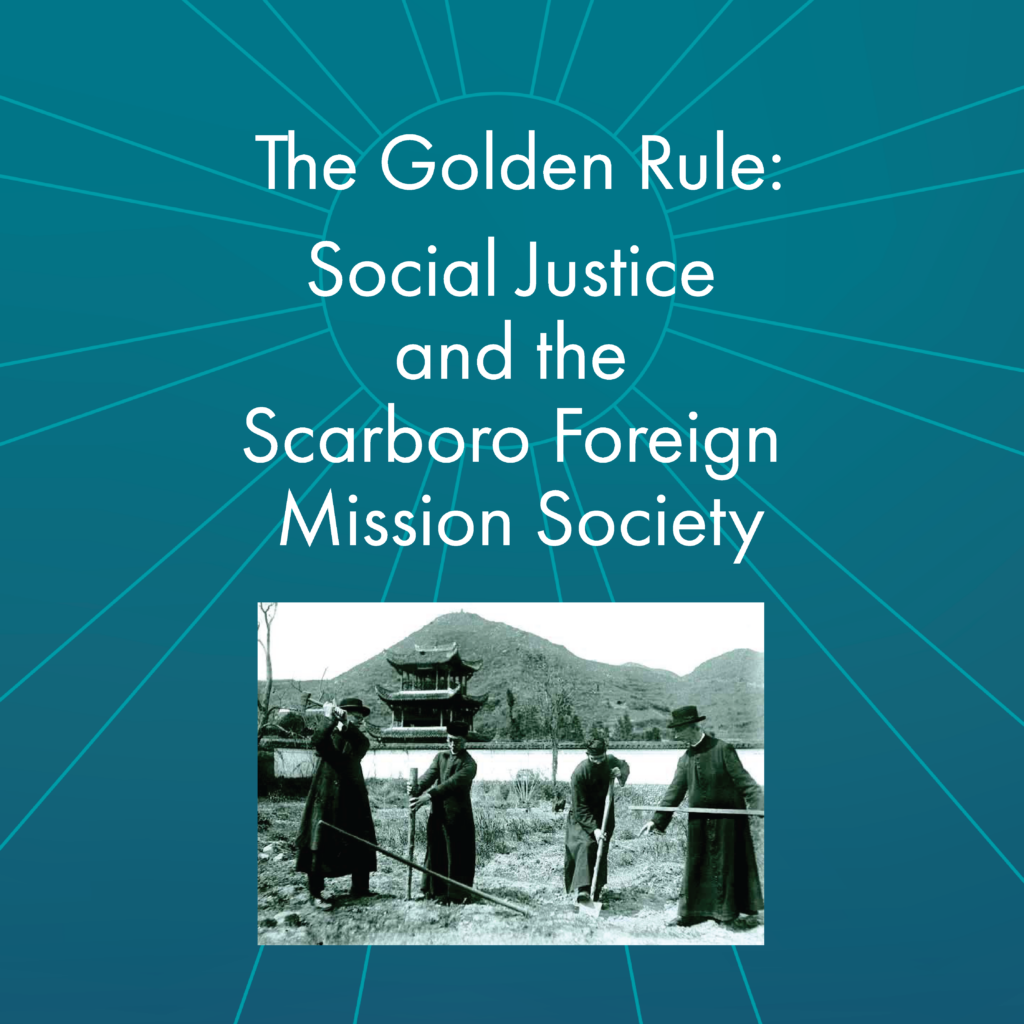
Aware that my audience consisted of everyone from undergraduate students and long-time faculty to the general public and members of Scarboro Missions, all with varying knowledge and interest in Scarboro’s history, I decided to work from a social justice angle, focusing on the development of the iconic Golden Rule poster and branching out from there. I hoped the Golden Rule could be a central touchstone to all visitors regardless of their prior knowledge or academic interests. Much as the Golden Rule serves as common ground between faiths, I hoped that most visitors would have some sort of personal connection or interest in ideas of justice, whether economic, political, ecological or ecumenical and interfaith.
With a topic chosen, I had to begin to select which materials I wanted to display. What items were eye-catching? What could be used to construct an engaging narrative for my audience? I decided to organize the exhibit into several mini-stories centred on members or activities in the Society’s history, each falling into a ‘type’ of social justice. Each of these in turn corresponds to a dedicated display case, so casual visitors could seek out the stories that interested them and could enjoy a complete experience without having to go through all the materials. Keeping in mind, however, that not all visitors would be casual viewers (and that I wanted to encourage deeper engagement with archival materials), I tied together the individual stories via a timeline of major social justice milestones in the Scarboro Mission’s history. Visitors interested in the broader history of the Society could follow this loose chronology to trace the development of justice-oriented mission work.
Unlike museum or art gallery exhibitions, archival exhibitions can be a bit tricky since many of our records are flat pieces of paper with text on them: not the most visually interesting! I made the decision to use a mix of visual and textual materials, enough ideally to satisfy both the eyes and the intellectual curiosity of visitors. Each exhibit cases includes a second “layer” of narrative to the exhibit; keen visitors can enjoy an optional “deeper dive” into text-heavy materials via the exhibition case drawers.
On a practical note, once items were selected for display, they were evaluated for any preservation concerns – were they too fragile to be on display for several months outside of archival storage? In cases where originals could not be displayed, replicas were created; for original items, mounts were constructed to cradle the magazines and books on display without damaging them.
The Golden Rule: Social Justice and the Scarboro Foreign Mission Society launches Tuesday, January 21st, 2025. The exhibition will open with a lecture by Father Robert E. Carbonneau, C.P., Ph.D., Research Fellow of the Ricci Institute for Chinese-Western Cultural History at Boston College and Archivist of the Passionist China Collection. Fr. Carbonneau’s lecture Reflections on History To Shape the Future, 1918- 2025: The Scarboro Mission Archives at St. Michael’s College at the University of Toronto, will be followed by a reception and viewing of the exhibition at the John M. Kelly Library. RSVP HERE to attend
Read other InsightOut posts.
Diya Anand is a fourth-year Bachelor of Commerce student at the University of Toronto, specializing in Management with a focus on Finance and Data Science. With experience as an intern at Deloitte Canada and KPMG India, she has honed her analytical and advisory skills in financial modelling and financial accounting. A passionate volunteer, Diya has contributed to community upliftment through organizations like Sewa Bharti and the University of St. Michael’s College Campus Ministry. She is an aspiring CFA and enjoys reading, photography, and golf in her free time.
Growing up in the bustling, colourful streets of New Delhi, India, Christmas has always held a unique place in my heart, even though it wasn’t one of the traditional festivals of my Hindu home. The magic of Christmas—the lights, the cozy gatherings, the sense of goodwill that seems to float through the air—captured me from an early age. Every December, there was something enchanting about how the end of the year became not just a time for looking back, but a fresh start for everything yet to come.
In New Delhi, December brings a distinct chill, though nothing like the snow-covered Christmases I’ve seen in movies. Yet, we’d put up decorations and string lights just the same. A few years ago, my family decided to get a Christmas tree—a real one. Even though India’s climate isn’t exactly tree-friendly year round, we made it a point to nurture and care for our little tree, finding ways to keep it alive well beyond Christmas. That tree became a symbol of resilience, growth, and nurturing—qualities that, for me, reflect the spirit of Christmas itself.
To me, Christmas is more than just a festive day. It’s a time that brings with it a promise of fresh starts and renewal. The end of the year can sometimes be filled with exhaustion or regrets about things left undone, but Christmas is like a gentle reminder to pause and look forward with hope. There’s a sense that the year’s challenges can be put to rest, and a clean slate awaits. No matter what may have happened, Christmas arrives like a warm embrace, bringing a quiet assurance that good times lie ahead.
Despite the winter blues and shorter days, Christmas has this incredible way of brightening everything around it. Somehow, even the cold air feels softer, the streets seem cozier, and each twinkling light seems to whisper stories of joy. There’s a beautiful simplicity in the holiday season that draws people closer, filling homes and hearts with a glow that lingers. Christmas has always been a reminder for me that life has seasons, and while winter may bring its chill, spring is never far behind.
Growing up in a Hindu household, celebrating Christmas was initially something that might have seemed unusual. Yet, my family embraced it fully, seeing in it an opportunity to experience the beauty of another culture’s traditions. It became a beloved part of our family’s winter ritual, a season that, though different from our own festivals, carried the same essence of warmth and togetherness.
For me, Christmas holds a unique joy because it’s a celebration that belongs to everyone. Even if it isn’t rooted in my personal cultural background, it resonates with a universal message: that joy and kindness, love and warmth, are gifts that transcend boundaries. Christmas is a time to be part of something bigger, to connect with others in a shared sense of goodwill. In a world often marked by divisions, Christmas feels like a gentle reminder that, at our core, we’re not so different from one another.
Each Christmas, as my family and I gather around our little tree, I’m reminded of the power of looking forward. That small tree, which we’ve tended to so carefully, has grown a bit each year, becoming a symbol of all the fresh starts we look forward to. It reminds me that just as the tree perseveres and blooms despite the odds, we too can grow, adapt, and find our way.
For me, Christmas is a time to set aside the worries and regrets of the past and look to the new year with optimism. It’s a gift of hope and a fresh beginning, something I cherish deeply. Despite whatever challenges may lie ahead, Christmas reminds us that there is light in every season.
As I look forward to another Christmas this year, I feel the same excitement I did as a child. I know that, just like every Christmas before, this one will bring its own quiet magic—a time for family, for reflection, and for the joy of new beginnings. In the twinkling lights of our tree, I see not just the end of a year, but the promise of everything yet to come.
Read other InsightOut posts.
Francesco A. Morriello, PhD, FRHistS is an Assistant Professor in the Book and Media Studies Program at St. Michael’s College, University of Toronto. His research explores the ways by which culture shapes and is shaped by print material and visual media. He currently teaches classes on the history of fortune telling and revolutionary print and broadcast media. His first book, Messengers of Empire: Print and Revolution in the Atlantic World was published by Oxford University Studies in the Enlightenment in 2023 and was shortlisted for the 2024 Literary Encyclopedia Book Prize.
If you tune in to the news, you will find that there is a lot of discussion about misinformation and disinformation, which are often categorized under the umbrella term, “fake news.” But have you ever wondered what, exactly, makes news “fake”? Is it the inclusion of false information, personal bias, the omission of information, or a combination of all three? With our world being flooded by information at every turn, be it social media, news websites, or TV shows (among many others), it is becoming increasingly difficult to parse out fact from fiction. However, this is not a new phenomenon. In fact, the origins of “fake news” can be traced all the way back to the emergence of newspapers in the early modern world, and far beyond that when taking into account rumours, conspiracy theories, and general manipulation.
But before we delve further into misinformation and disinformation, it is important to identify what these concepts are. Misinformation is false or inaccurate information, usually provided unintentionally. Disinformation, on the other hand, is false information that is intentionally circulated to mislead people. The latter can range from misstating facts to widescale propaganda campaigns. Central to the circulation of both misinformation and disinformation are communications technologies, which amplify their reach, speed, and influence. Such technologies experienced a revolutionary shift in the 15th century with the invention of the Gutenberg Press, which allowed for the replication of information on a scale never seen before. In the following centuries, the printing press spread across land and sea, forever changing not only the means of information circulation, but the speed with which it occurred. And the latter could (and did) lead to problems, especially when the information was disseminated before it could be verified.
In the 16th century, the Protestant Reformation sent shockwaves across Europe, as it fundamentally changed the religious landscape through the splintering of Christianity. While the Catholic Church strove to control the publication and circulation of information, the printing press allowed for the production of a specific print medium that escaped their grasp much easier than books: the pamphlet. Martin Luther and his followers quickly realized the power of pamphlets, as they were quick to produce, could be published anonymously, and above all, could reach the masses far more effectively. Indeed, the pamphlet operated in the same vein as social media platforms today. However, like these platforms, the pamphlet was also used to spread both misinformation and disinformation in a variety of different ways. For example, they were used spread exaggerated fears of conspiracies, such as the idea that Catholics were plotting to violently suppress Protestants, or that Protestants were seeking to overthrow the established social and political orders.
By the 17th and 18th centuries, pamphlets were joined by the newspaper as a primary means of spreading news and information. However, these papers were largely controlled by the reigning monarchs, with printers requiring licenses in order to publish them. Authorities monitored and inspected the papers, which often featured phrases such as “Published by Authority” or “By the King’s Printer.” Those who dared print information that went against the monarch or empire, regardless of whether or not it was factually accurate, faced consequences that included fines, confiscation of printing equipment, imprisonment, or worse. As such, the press served as an extension of the incumbent governments rather than as a means of holding them accountable. Then came the Age of Revolutions, which sought to upend this practice in pursuit of the freedom of the press on both sides of the Atlantic Ocean. But in so doing, “fake news” was not far behind. During the American Revolution, a series of forged documents now known as the “Spurious Letters” were alleged to have been written by George Washington, claiming that he expressed doubt over the feasibility of the rebellion and sought reconciliation with the British Crown. Despite being instantly recognized as fake by Washington’s inner circle, this didn’t stop the forgeries’ contents from being circulated in pamphlets and newspapers, where they were used as a political weapon in pursuit of undermining Washington’s commitment to the revolutionary cause.
With a surge in technological advancements, the 19th century witnessed a printing boom, allowing misinformation and disinformation to find a much wider audience. The sensationalist headlines of “yellow journalism” cleverly wove truth with fiction in order to capture people’s attention and maximize sales. The 20th century took this phenomenon to new heights with the popularization of radio and television, which had an even greater reach because it was no longer limited to the printed word. These media technologies truly transformed the world into what Marshall McLuhan termed a “global village”, as they allowed people to share information and experiences despite not being physically close to one another. But in doing so, this allowed for misinformation to flow like a river, sometimes unintentionally. For example, on the evening of October 30th, 1938, a live radio broadcast of The War of the Worlds caused widespread panic among listeners upon hearing reports of a Martian invasion in New Jersey. In reality, Orson Welles had adapted the H.G. Wells novel into a fake news bulletin, though this didn’t stop the frenzy from making national headlines the next day. The incident highlighted the power of media technologies in influencing public perception, sparking debates about media responsibility.
These debates have become extremely salient in the years since the invention of Internet and social media, where people around the world are bombarded by information at every turn, 24 hours a day, 7 days a week. The competition to break the latest news has never been fiercer, as now people can livestream events directly from their phones and air it to millions across the globe through numerous social media platforms. But in this race to spread the news, things can get overlooked, misunderstood, and only partially reported. Before a correction can be made, the misinformation (or disinformation) is already trending worldwide, with many believing it to be entirely accurate. The increasing reliance on social media for news has exposed the complexities of verifying real-time events. And now, we have arrived at a crossroads regarding how to distill truth from misinformation in all its forms, from mere click baiting to full-on propaganda. Further complicating the picture is the speed by which this misinformation is spread, which can have devastating effects, even after the truth finally catches up. As we enter the new era of information sharing with AI technology, consumers of the news will have to be more vigilant than ever to sift through misinformation, disinformation, and everything in between to determine what, exactly, constitutes “fake news.” In this regard, a critical mind is crucial to not only pinpointing it, but also determining where it comes from, and perhaps above all, why it is being circulated to begin with.
Read other InsightOut posts.
Nicole Ferrante works as the Campus Ministry Coordinator at the University of St. Michael’s College. She is a graduate of the MDiv program at the Regis St. Michael’s Faculty of Theology.
The air is getting colder and the days are getting shorter. Meanwhile, our hearths are being warmed and the world is being illuminated by lights. The city is at its loudest and its quietest all at once. The malls are filled with music and bustling with more people than ever… yet the frigid evening streets are becoming strangely empty and the signs of wildlife around us are fewer and further between.
It is a time of waiting. And a time of choice–to get swept away in the busyness of all that is happening around us, or to lean into the silence and the stillness that lies surreptitiously below it all.
At the Annunciation, the angel Gabriel appears to Mary at a time just such as that. Betrothed and amidst all the happenings of her young life, the messenger of God comes to her in a moment of solitude, saying to her, “Do not be afraid…for you have found favour with God”, and telling of the plan that God has for her (Luke 1:30). Mary questions this message, probing how it can be possible that she, a virgin, is called to bear into the world the Son of God. But the angel reassures her that all will be possible, and Mary, receiving that message into her heart, answers, “Here am I, the servant of the Lord; let it be with me according to your word” (Luke 1:37).
“Here am I”, or in today’s speech, I am here. They are simple but profound words. Because it is worth questioning… are we here? Are we available to God and to those around us? Is there room in our hearts, our minds, and our lives, for what is most important? Or are our minds completely consumed by the distractions of our busy world and our busy lives? Are we truly present?
As our Advent readings progress, we see the theme of presence continue to unfold in a beautiful way in the life of Mary as, in the scene of the Visitation, Mary leaves her home to visit her cousin Elizabeth and help her in her pregnancy. Here we see Mary say once again, not in word but in action, “I am here”. I am here to help where help is needed. I am here, present and available. And in her presence, her openness, and her receptivity, she is drawn closer to those she loves, and she is found rejoicing and praising God aloud with them.
What would it look like if we were to live this Advent in quiet, open, attentiveness? If we were to resist the pull of consumerism that keeps us from being authentically present to the little things in life? If we were to take a step back from the constant stimulus of Netflix and social media that numb us to our everyday experiences? Each of us knows, deep down in our hearts, what it is that is keeping us from being attentive and open to the presence of God in our lives, and from being able to be fully present to those around us.
In the busyness of exams, work life, and the fast-approaching holiday season, the voices that rush through our heads can easily push us towards stress, anxiety, or despair. We feel pressure on ourselves to prove ourselves, to succeed, to please others. But it is in the silence, in the calm, that the voice of God is able to break through and say to us, “Do not be afraid… for you have found favour with God”, to assure us that there is a plan for our lives, a unique and beautiful plan, and to remind us that “nothing will be impossible with God” (Luke 1:30, 37). Only when we let that love in and trust that liberating message of God are we are able to respond, alongside Mother Mary, “Here am I, the servant of the Lord; let it be with me according to your word.”
Read other InsightOut posts.
Remembrance Day is an occasion to pause and reflect on the Canadian lives that were lost to protect the freedoms we enjoy today. St. Michael’s honours its more than 150 students and graduates who made this sacrifice. Each of the names etched into the Soldiers’ Memorial Slype, the sandstone archway found between Fisher House and More House, represents a life lost during conflicts in which Canadians fought including WWI, WWII and the Korean War.
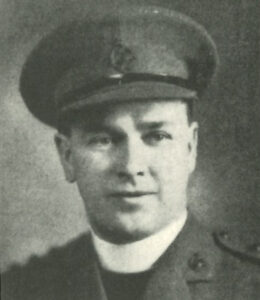
This year, let us remember St. Michael’s fallen by learning the stories behind just two of the names listed:
Rev. Thomas Edmund Mooney was the first Canadian Catholic Chaplain to be reported killed in action during WWII. He was the son of Michael Edmund and Anna Cecillia Mooney of Westport Ontario. He graduated from St. Edward’s School in Westport before attending St. Michael’s College and St. Augustine Seminary. While at St. Michael’s he played on the golf team and served as president of St. Michael’s Oratorical Club. He received his Bachelor of Arts in 1928 and was ordained to the priesthood on May 21, 1932 at St. Mary’s Cathedral in Kingston. He was the parish’s Director of Music and Chaplain of the Frontenac Council, Knights of Columbus House of Providence and Newman Club of Queen’s University and the Catholic Action Club. In January 1942 he answered the call to serve and enlisted in the Canadian Army as a Chaplain. He was killed by shellfire while ministering to the wounded a few weeks after D-Day. He died on September 14, 1944, at the age of 38. He is buried at the Adegem Canadian War Cemetery in Belgium.
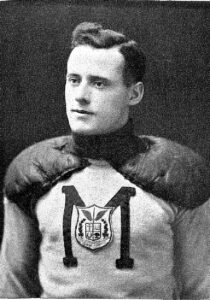
Private John Cecil Feeney made his mark as an athlete and student during his short time at St. Michael’s before he decided to enlist. He was the son of John Henry and Elizabeth Gillen Feeney of Marmora, Ontario, a town east of Peterborough. He came to St. Michael’s in 1913 to study philosophy, expecting to graduate with the Class of 1917. He played on the school’s first hockey and baseball teams, and he helped bring home the Dominion Intermediate Rugby Championship. He was an all-around athlete, who remained dedicated to his studies. He qualified as a lieutenant, but he enlisted in the ranks of the 5th Universities Company in early 1916. He was a private with Princess Patricia’s Canadian Light Infantry and in July he joined the battalion in France that was attached to the headquarters bombers. Two months later he was killed in action at the battle of Courcelette. He died on September 15, 1916, at the age of 19.
These are just two of the stories cut short by war, but their sacrifice will not be forgotten.
On November 11, members of the St. Michael’s community are invited to gather at the Slype at 10 a.m. to view these names before heading to the University of Toronto’s service at Soldiers’ Tower.
Read other InsightOut posts.
Hassan Khan is an award-winning project management professional. A distinguished member of the Project Management Institute and the Royal Architectural Institute of Canada, Khan was honoured as a Member Spotlight in 2015. He serves as Project Director at AsemBl Design and Construction. Khan has a track-record of working on Multi-Residential and Hotel projects. Hassan is also a professor at Fanshawe College. Born and raised in Toronto, Hassan now resides in Milton, Ontario, with his wife, Naela, and their four children: Eisa, Yusuf, Zayn, and Leena.
Looking back at my time as a student at the University of St. Michael’s College, I could never have imagined the journey ahead. Today, as a Project Director at a leading Development Firm and an Adjunct Professor at Fanshawe College @ILAC Toronto, I often reflect on the many twists and turns that shaped my career, but perhaps more importantly, shaped me as a person. My story is not just one of professional achievement; it is a story of resilience, humility, and an unshakable belief in the power of perseverance. It’s a journey I am honoured to share with the students of U of T, a place that played such a vital role in who I am today.
Like many students, I worked hard to be the first in my family to attend university. My parents instilled in me the values of dedication and hard work, though they did not have the financial means to support me through my academic journey. As a student, I had to juggle part-time work and my studies. Little did I know that my life was about to change in ways I could never have anticipated.
In my final year at U of T, a series of personal tragedies struck. My father became gravely ill, and I had to take on full-time work to support my family while continuing my studies. The long days, sleepless nights, and overwhelming pressure began to take its toll. But nothing could have prepared me for the news that came during my father’s heart surgery. The surgeon came out to the waiting room with an assistant. His news changed our lives forever. The surgeon told my family that he tried his best in the surgery but he did not think that my father would survive. The surgeon went back into the operating room to reconvene.
An hour later my father had passed away on the operating table. His sudden passing was a blow I couldn’t fathom, and my world crumbled beneath me. To add to the turmoil, the 2008 economic crisis hit, and I lost my job. Financial instability, grief, and the strain of trying to complete my studies weighed heavily on me.
At that time, I was also engaged. Our plans for a future together seemed increasingly uncertain as I struggled to keep my head above water. Graduation felt like a distant dream, and I wondered whether I would ever make it. But St. Mike’s was not just a place where I attended classes—it was a community that came together when I needed it most. I was struggling academically and financially, so I reached out to St. Mike’s for support. The administration listened to my situation with compassion, offering me a bursary that helped alleviate the immediate financial strain. More than just financial aid, St. Mike’s provided me with the encouragement to keep going, to persevere through adversity.
I graduated with a renewed sense of purpose, and soon after, I secured a job in construction project management. My wife and I married, and over the years, we were blessed with four children. Life was by no means easy, but the challenges I faced had taught me to push through difficult times with resilience. As I continued to grow professionally, I pursued further education, eventually earning my PhD in Architecture. Along the way, I also earned my Project Management Professional (PMP) certification, received industry recognition, and became a proud member of the Royal Architectural Institute of Canada (RAIC).
But beyond the titles and accomplishments, what has stayed with me is the humility that came from my experience. The hardships I endured were a powerful reminder that we are not defined by the setbacks we face, but by how we rise from them. This is the message I now carry into my work as a Project Director and as an Adjunct Professor. In both roles, I am deeply committed to fostering a culture of resilience, leadership, and growth, especially among young professionals and students who are navigating their own challenges.
My position as a professor is more than just teaching; it’s an opportunity to pay forward the lessons I learned in university. I empower my students to dream big but remain grounded. I remind them that setbacks are not roadblocks—they are stepping stones to something greater. Just as U of T and St. Mike’s were there for me when I needed it, I strive to be a source of guidance and support for my students. Construction Project Management, much like life, requires both a vision for the future and the ability to overcome obstacles. It requires resilience, teamwork, and most of all, humility. These values were instilled in me during my time in university, and they continue to shape the way I lead today.
To the students of St. Michael’s College, my message is simple: dream big but be prepared for the ups and downs that life will inevitably throw your way. You are stronger than you know.
And when things seem darkest, remember that there is a community around you that is ready to help. Don’t be afraid to ask for that help. Whether it’s your peers, professors, or the administration, St. Mikes is a place where compassion and support can make all the difference.
Looking back, I am profoundly grateful for the kindness shown me. It is the same kindness that I now try to pass on in every interaction I have with my students and colleagues. I am living proof that with resilience, humility, and the right support, even the most difficult circumstances can lead to a future filled with success, purpose, and fulfillment. St. Mike’s was the foundation for my journey, and I will forever be proud to call myself an alumnus.
Read other InsightOut posts.
Paulette Collet was born in Verviers, a small town in the South of Belgium. She was brought up in a small village called Drolenval and went to the local school, where the teacher had to cope with three classes in the same room. Yet, to this day, Paulette remembers what she was taught in that little school. After completing primary school, Paulette’s parents moved back to Verviers so that she could attend the Lycée de jeunes fillles. Very sadly, Paulette’s mother passed away in July 1939 and on May 10, 1940, her studies were cut short when the Germans invaded Belgium. The whole family, who did not wish to live under Nazi rule, left for England. In England, Paulette completed her O level and her A level examinations and was accepted to King’s College, London University, graduating with a first-class BA Honours French and a Teacher’s Diploma, equivalent to a BA Education in Canada. After teaching for two years in London, Paulette was appointed as an Education Officer in Mauritius. She enjoyed her work, but eight years in a small island is a long time and she moved on. When the Canadian Government offered her a scholarship to do her PhD at Laval University, she accepted with glee. She completed her degree in 1962. Her thesis, Winter in the French-Canadian novel, was published in 1965. Paulette taught for five years in the United States and then returned to Canada so that she could teach in her own field. (At the time, there was little Canadian literature taught outside Canada). She secured employment at Saint Michael’s College, where she was extremely happy, and remained there until her forced retirement at 65. Now, thanks to the yearly play and the presence of the French Department on campus, Saint Michael’s still feels like home.
Roberto A. Machado was born in Ponta Delgada, São Miguel, Azores, in 1952. He emigrated to Canada in 1969 to avoid being drafted into the Portuguese army which was involved in an unjust war of attrition against the natives of its former colonies of Angola, Mozambique and Guiné-Bissau. He is an alumnus of St. Mike’s and the proud recipient of four university degrees including a Ph.D. in Québec literature. Roberto began his teaching career in Kitchener, Ontario. He taught French, Portuguese and Spanish at Harbord Collegiate Institute, in Toronto, for 27 years and was the Head of the Modern Languages Department at that school for the last 10. He also served as Head of Modern Languages at Malvern Collegiate Institute for three years. He has been a proud member and officer of La Troupe des Anciens de l’Université de Toronto, an amateur theatre troupe whose artistic director is Professor Paulette Collet, for more than 50 years. Now retired, he devotes his spare time to writing for pleasure, traveling and gardening; An Azorean in Canada: A Memoir, which was just published, is the first volume of An Azorean Trilogy. Roberto is married and the boastful father of a wonderful daughter. He lives in Mississauga, Ont.
Are you a French student, wondering how you could improve your pronunciation of that guttural r or eliminate the diphthongization of those gallic vowels?
Have you thought of joining La Troupe des Anciens de l’Université de Toronto?
La Troupe des Anciens de L’Université de Toronto was born in 1969 in what was then simply Saint Michael’s College. In those early days, the group was called Le Cercle français de Saint Michael’s College and its name changed throughout the years. However, it has been La Troupe des Anciens (Anciens meaning here former students) since Professor Collet officially retired in 1992. Most members of the Troupe are indeed former students; some present members joined the group in the early nineteen seventies and are still involved in our present productions. Of course, now in their sixties and seventies, they can no longer play the young lovers.
In 1969, shortly after her arrival at Saint Michael’s, Professor Paulette Collet, conscious of the benefits participation in a play would bring to her students, invited those who were interested to take part in the production of a French comedy. The play that year was L’Amour médecin, one of Molière’s less demanding works, which we performed in Carr Hall. The production was modest, the costumes approximate, the sets almost non-existent, the acoustics poor, but the actors spoke clearly and the audience was not demanding. This was a performance “en famille”. However, the students who took part in the production realised how much their pronunciation and their fluency had improved. They had also acquired some slight acquaintance with XVIIth century French literature.
The next year, 1970, we became bolder and we chose one of Molière’s best-known comedies: Le Médecin malgré lui. The student who performed the part of Sganarelle, the main character, acted in our 2024 production of Le Malade imaginaire, one of Molière’s greatest plays. Fifty-four years later, Gino Muia is still a member of La Troupe des Anciens.
With the passing of time, our group grew in daring and in importance. We began to put on more demanding plays. In 1987, we dared to perform Tartuffe, a verse-play; we produced L’Avare and the delightful Bourgeois gentilhomme several times. As we became bolder in our choice of plays, we also became bolder in our efforts to attract an audience. Professor Collet’s aim when she created the Troupe was always largely pedagogical and it has remained so. So, every year, we invite teachers to bring their high school students to our show. We help them to prepare their students for this experience
People ask: “Why do you always do Molière?” That is like asking: “Why do you always do Shakespeare?” Molière is the greatest French playwright of comedies and we dare not venture into the realm of tragedies. In any case, we do not always put on a Molière. We have performed Beaumarchais’ delightful eighteenth century comedy Le Barbier de Séville several times and Ionesco’s absurd one-act-play La Cantatrice chauve is a great favourite among our school audiences. On the topic of theatre of the absurd, Roberto Machado, another “ancien”, played the role of Capitaine des pompiers for the first time in 1975 when he was an undergraduate student at St. Mike’s and, 20 years later, this time as a high school teacher of French at Harbord Collegiate, he repeated the “tour de force” in front of some of his colleagues and students.
Gino Muia, who first performed in 1970, may be the oldest member of la Troupe des Anciens, but he is not the only one who has been with the group for half a century. Several of our most active members joined the group in the 1970s and faithfully come back every year. Of course, those who first joined the group in the last century now have grey hair and grey mustaches and can no longer play the “jeunes premiers”. Sophisticated female lawyers (many members of the Troupe are now lawyers) are now beyond playing the love interest of a 20-year-old; but the production of a play does not only require actors but also stage managers, technicians, costume and set designers and sometimes, musicians. Some of our members have changed hats as time went by. The beautiful book that we published for our 50th anniversary and which is available at the John M. Kelly Library will give you an idea of the achievements of our group.
So, if you are trying to improve your French, if you want to enjoy yourself while acquiring knowledge, la Troupe des Anciens is ready to welcome you. If you are interested, send an email to: mezcol@rogers.com or roberto.machado@utoronto.ca
Read other InsightOut posts.
Sr. Evanne Hunter, IBVM is a St. Michael’s alumna and a member of St. Michael’s Collegium. She has served as a member of the Leadership Team of the Loretto Sisters in Canada and for the IBVM as General Consultor, Regional and Provincial Superior, and liaison with the Loretto/ El Salvador twinned community project, and she established the IBVM UN NGO Office at the United Nations in New York. Her numerous awards include a Degree of Sacred Letters Honoris Causa from Regis College.
Within a couple of years, the Institute of the Blessed Virgin Mary and the Congregatio Jesu will end centuries of ‘historic fragmentation” and complete a long road toward “becoming one” Institute through a canonical process known as “fusion” or “merger”.
What does merger mean? It means that one Institute becomes part of another. It is actually absorbed into the other. The joining Institute accepts the name and Constitutions of the receiving Institute; members and temporal goods pass to the receiving Institute; existing vows are transferred to the receiving Institute. It is a result of a joint petition to the Vatican requesting a “merger”.
Why is this happening? An important motivation is to realize the dream of our common founder, Mary Ward, who wanted the Congregation that she founded in 1609 to be called by the name of Jesus. The charism of both IBVM and CJ is rooted in the vision and mission of Mary Ward and we share a thirst for service and synodal collaboration. The envisioned future will honour both Congregations and we believe that it will enable our charism to flourish more strongly, allow us to be more effective in the mission entrusted to us and bring renewed spiritual energy to both groups.
Christopher Lamb writing in the Tablet says that “this move shines a spotlight on the enduring legacy of Mary Ward, a pioneering, courageous, prophetic figure who established a new form of female religious life” modelled on the Ignatian ideal of contemplation in action. Lamb describes how, after a few successful years establishing Communities and schools across Europe, Mary Ward attracted severe criticism from diocesan clergy, Jesuits and civil authorities because she promoted educating girls, not observing cloister or wearing a habit and self-governance by a women.
This prompted Pope Urban VIII to issue a severely worded Bull of Suppression in 1631 ordering the closing of schools and disbanding of communities. The “heretic” Mary Ward herself was imprisoned in a Poor Clare convent in Munich. Seemingly. a “poisonous growth in the Church of God”: was “torn up by the roots” and eliminated. On her release Mary Ward returned to England and died in York in 1645 thinking her dream was dead.
This was not the end, though! Faithful followers found ways to stay to stay together in England and in Bavaria throughout the 17th century. In 1831 the Institute was established in Ireland and the Superior, Teresa Ball, sent Sisters far afield including to North America in 1847. By the 20th century the Institute had evolved into three separate Generalates; Irish, North American, and Roman (including England). In 2002 the
Roman Branch officially changed its name to Congregatio Jesu. In 2003 the Irish and North American Branches reunited to become the Loreto Branch.
Over time, Mary Ward herself gained recognition as a “holy woman” and in 1919 could finally be recognized as the founder of the IBVM congregation. In 2009 Pope Benedict made her “Venerable” setting her on the path to sainthood.
For Loretto in Canada, the 2003 Reunion with the Irish Branch opened up the richness of the broader world of Mary Ward women. We saw clearly its different expressions in the diversity of cultures on all seven continents. For me, the opening of the IBVM NGO Office at the United Nations in New York was a sign of this global outreach and gave us an opportunity to work together to minister to the whole world. The new “merged” CJ Congregation will enhance this experience even more as we become one Institute with about 1600 Sisters ministering in about 42 countries across the globe.
This has been a long process of transformation of mind and heart which began formally in 2019. It included personal and communal reflection, deep sharing of realities and concerns, recognizing fears, considering what we want/need to hold onto and what we need to let go. It has not been driven by the challenges all Congregations are facing … declining numbers, diminishing resources and capacity for leadership. Rather, it has been driven by passion for the Gospel, love of the Church, common identity and vision and desire to meet the needs of the world today as Mary Ward women in one Institute.
By 2022, after two years of the spiritual journey, votes were taken in IBVM and CJ indicating almost unanimous support for petitioning the Vatican for approval of a merger. Now, Commissions have been set up to deal with the juridical, canonical and civil requirements as well as technical issues like finance, governance structures, legal matters and adaptation of Constitutions. It will still take a couple of years for all of the bureaucratic details to be dealt with and for IBVM and CJ to truly become the one Institute that Mary Ward envisioned in 1609.
What difference will this make here in Canada? Basically, IBVM will indeed become CJ and the name IBVM will no longer be used. However, we know full well that we will likely continue to be known as “Loretto” as has always been the case in North America.
The cause for the Canonization of the Venerable Mary Ward is very active. The search for the miracle required for the preliminary step of Beatification goes on around the world but most of us are convinced that the survival of Mary Ward’s Congregation for over 400 years is a miracle!
So, as we wait for the completion of these two significant processes, we ask you to pray for us and we remind ourselves of Mary Ward’s own words:
“Work in great tranquility and magnanimity
for what is not done in one year
can be done in another.”
Sr. Evanne Hunter, IBVM is a St. Michael’s alumna and a member of St. Michael’s Collegium. She has served as a member of the Leadership Team of the Loretto Sisters
in Canada. She has also served the IBVM as General Consultor, Regional and Provincial Superior, and liaison with the Loretto/ El Salvador twinned community project, and she established the IBVM UN NGO Office at the United Nations in New York. Her numerous awards include a Degree of Sacred Letters Honoris Causa from Regis College.
Read other InsightOut posts.
Candy Hua is a third-year undergraduate student in the Faculty of Arts and Science and the Munk School of Global Affairs and Public Policy, studying Political Science and History. She aspires to pursue graduate school to further develop her research in these fields. Candy is actively involved in the St. Michael’s College community, currently serving as the Interfaith Campus Minister, and is a member of the Spiritual Life Committee and the Student Wellness Advisory Group. She also serves as an executive member of other student organizations on campus such as the Accessibility Awareness Club. Previously, she served as an orientation leader and student mentor. Passionate about giving back and making a difference in her community, she plans to contribute to St. Mike’s in the future.
On Thanksgiving, I find myself enveloped in a profound wave of gratitude, compelling me to share a piece of my heart with you. This season invites a moment of pause—a chance to reflect on the myriad blessings that fill my life, often in ways I once took for granted.
I recall a time when I would wake each morning, groaning at the thought of another day filled with school and responsibilities, oblivious to the fact that the very act of waking up was a precious gift. I think about the countless individuals around the world who would give anything for the opportunity to learn, to grow or simply to have a place to call home. I often grumbled about the food on my plate, forgetting that for many, a meal is a luxury.
In these moments, I realize just how blessed I truly am. As I’ve matured, I’ve learned to cherish the little things—the warmth of a roof over my head, the comfort of clothes that shield me from the cold and the simple joy of running water. These are not mere conveniences; they are the very fabric of my existence. I think about the vacations filled with laughter, the warmth of family gatherings, and the incredible community at St. Mike’s, which feels like a second family. The support and kindness I’ve received here have been a lifeline, a constant reminder that I am never alone.
My journey of gratitude has also led me to explore my spiritual life. I vividly remember the day I walked into the clubs’ fair at St. Mike’s, feeling a mix of excitement and uncertainty. I was searching for a way to connect with my faith, to find a sense of belonging. It was there that I met Sonal (Castelino) and Nicole (Ferrante), who welcomed me with open arms. I shared my struggles with them—how I felt disconnected from God, caught between the teachings of my Roman Catholic upbringing and the wisdom of Buddhism. I felt like a ship lost at sea, yearning for a lighthouse to guide me home.
Determined to reconnect, I began attending mass, volunteering, and reaching out to those in need. Each act of service filled my heart with warmth and purpose. I remember the first time I handed out food to those less fortunate; the smiles and gratitude I received in return were priceless. It was in those moments that I truly understood the transformative power of giving. I can still picture the faces of those I met, their eyes lighting up with hope, reminding me that even the smallest gesture can make a world of difference.
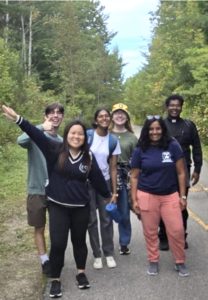
When the opportunity arose to become an interfaith minister, I took a leap of faith. I wanted to serve students from all walks of life, to listen to their stories, and to create a space where everyone felt valued. One of the most profound experiences I had was during a pilgrimage to the Martyrs’ Shrine. As we walked together, sharing laughter and stories, I felt an overwhelming sense of connection. The air was filled with the harmonious voices of our community during mass, creating a symphony of hope and love. It was a moment that reminded me of the beauty of faith and the strength of community.
Thanksgiving is a time to celebrate these connections, to gather around the table with loved ones, and to share in the joy of togetherness. This year, as I sit with my family, I will hold each of them close to my heart, grateful for the laughter, the stories, and the love that fills the room. I will remember that gratitude is not just a fleeting feeling; it is a way of life, a lens through which we can see the world in all its splendor.
As I reflect on my journey, I am filled with a profound sense of gratitude for the people, experiences, and opportunities that shape my life. I aspire to inspire others to recognize the beauty in their own lives, to find meaning in every moment, and to cherish the connections that bind us together.
This Thanksgiving, I commit to nurturing this sense of gratitude, allowing it to guide my actions and interactions. I want to celebrate the love that surrounds me, the wisdom imparted by teachers, and the unwavering support of my family. I want to honour the moments of joy and the lessons learned through adversity. In the spirit of Thanksgiving, I invite you to join me in embracing gratitude. Let us open our hearts to the beauty of life, to the love that surrounds us, and to the connections that make us whole. Together, let us celebrate not just the abundance on our tables, but the abundance of love, hope, and connection that truly makes life worth living. As we gather this Thanksgiving, let’s remember to hold each other a little tighter, to share our stories a little more openly, and to express our gratitude for the simple yet profound gift of being together. May our hearts overflow with joy, and may we always find reasons to be thankful.
Read other InsightOut posts.
Undergraduate student & artist Michelle Ng found her new passion on campus: Taijutsu. A Japanese martial art offered at St. Mike’s Wellness Studio, Taijutsu classes are led by two practitioners, Remi Pulwer & his longest-practising student, who volunteer their time, knowledge and decades of experience. As someone utterly new to martial arts – and in search of herself– training in taijutsu for two years transformed Michelle’s philosophy, movement, and circles of community.

Lost. Stagnant. Burnt out. I was wandering in circles, chasing my tale to find my path.
A friend told me about taijutsu, a Japanese martial art rooted in reality and philosophy during war and peace, a lifelong art about honing the body, mind, and heart to protect yourself and loved ones. An art of adaptation and self-defence. You adapt to your age, gender, build, disability, or injuries. To the situation & surroundings. To evade or end the fight before it even begins if possible.
You create a better you.
Around Halloween two years ago, I tried it out on a whim. I came in the rain still with silver dragon scales painted on my arms and legs… And from that first class, I was enthralled.
A new path beckoned.
A practical yet philosophical martial art. Friends (buyuu) I made there. A stronger yet softer heart, open mind, and sense of belonging. My tale does not have to end in a spiral; it can follow my will. I could make my own path.
—
From 2003 to now, St. Michael’s librarian Remi Pulwer has dedicatedly found space for training in the city and downtown campus (moving from Alumni Hall to the John M. Kelly Library, and then finally to Elmsley Hall’s old bike storage).
In 2013, his vision led to the St. Mike’s Wellness Studio that encompasses taijutsu and other arts space for training the mind and body together. Boxing. Crochet. Dance. Kudoki Kung Fu. Hyoho Niten Ichi Ryu. Tai Chi. Yoga. Meditation. Acting.
Remi and his student, Alex Gaskin, lead taijutsu classes as volunteers. With mirrors, changerooms, movable mats, and a shower and a washroom, the space can adapt to myriad activities. It is also near several U of T libraries, key campus buildings and subway stations. The amenities, location and schedule make the Wellness Studio accessible for U of T students, including the whole St. Michael’s community.
Although I love learning, university truly was, and still is, a struggle for me. Finding this art, dojo, and community came at the right time. Taijutsu will push you. It is no sport; it is a martial art. Realistic, challenging and physical. It is not about points or ranks. It is about survival, protection and respect for humanity. It is about bettering yourself every day, within and outside of the dojo. The system of Bujinkan has propelled taijutsu worldwide homogenizing elements from nine historical schools of
Budo, each with its own flavor. We study a set of three basic scrolls practicing all schools’ principles of budo, refined in combat by Japanese warriors.
In this art, we are all beginners, no matter how long or hard we train. We adapt as we change. As our friends, foes and worlds change. As we create our worlds. I am a small woman slowly learning how to control her body and mind, but that’s okay. Here, we all strive to better ourselves a bit every day.
After all, taijutsu is all about adapting.
Given the complexity and realism of this art, who you learn from and who you train with are important stones for your path. Since I started almost two years ago, I have visited and made friends in more dojos in Toronto and other cities.
Thanks to fate, I am truly grateful for the classes with Remi and his student Alex, and that I started my new path at the Wellness Studio. They both shared so many stories & insights with me about taijutsu, art, and life. How to stop running from the thunderstorms in my head & life – academic burnout. How to control my emotions and body anywhere. How to keep going & find myself. Create & challenge into a new me. Remi’s decades of training in taijutsu, his passion for the arts, literature, history, and more, his kindness and humor make his dojo (BuyuuKai Toronto) truly special – ‘BuyuuKai’ means a group of friends training together – and that’s what this place is all about: Friendship, Growth, Community.
If you feel incomplete, stuck, or lost, free yourself to write your own tale… Come train with us.
St. Mike’s Wellness Studio Registration
https://bit.ly/BuyuuKaiToronto
Read other InsightOut posts.
Cynthia L. Cameron is the Patrick and Barbara Keenan Chair of Religious Education and Assistant Professor of Religious Education at the Regis St. Michael’s Faculty of Theology. She completed a BA at Denison University, an MAR at Yale Divinity School, an MA at Catholic University of America, and a PhD in theology and education at Boston College. Her research focuses on adolescents, particularly female adolescents, in developmental psychology, Catholic theological anthropology, and practices of Catholic schooling. Among her recent work is Nobody’s Perfect: Adolescents, Mistake-Making, and Christian Religious Education, co-edited with Lakisha Lockhart-Rusch and Emily Peck (Fortress Press, 2025). Prior to coming to Regis St. Michael’s in 2021, she taught at the undergraduate and graduate levels in the United States and had a nearly 20-year career as a teacher and administrator in Catholic high schools.
Reid B. Locklin is Associate Professor of Christianity & Culture at the University of Toronto, a joint appointment with St Michael’s College and the Department for the Study of Religion. His research focuses on Comparative Theology and Hindu-Christian Studies, particularly the engagement between Christian thought and the Hindu tradition of Advaita Vedanta. His most recent book is Hindu Mission, Christian Mission: Soundings in Comparative Theology (SUNY, 2024). Dr. Locklin grew up in Athens, Georgia, completed a BA in Humanities at the University of Tennessee at Chattanooga, an MTS from Boston University, and a PhD in Theology from Boston College in 2003. He has taught at the University of Toronto since 2004.
This coming January, the Alway Symposium at the University of St. Michael’s College will host a major academic conference on interreligious teaching and learning. The “Bridges and Boundaries: Religious Diversities in the Twenty-First Century Classroom” symposium, cohosted by Emmanuel College, will be held on January 12-14, 2025, in person at St. Michael’s and Victoria University. We are warmly accepting proposals for papers, workshops or posters—and the deadline has just been extended by one week, to October 7.
But we are getting ahead of ourselves. It is important, first, to recognize that the University of St Michael’s College has a long tradition of honouring faith—not only the Catholic faith that remains as its root and foundation, but also the rich diversity of faiths that increasingly define life in Toronto and at St. Mike’s. One member of its faculty, Gregory Baum (1923-2017), served as a theological expert at the Second Vatican Council (1962-65) and led the worldwide Catholic Church to embrace ecumenical and interreligious dialogue. Beginning in 1968, Professor Joseph O’Connell (1940-2012) taught St. Mike’s students about Hinduism and charted new approaches to the study of Gauḍīya Vaiṣṇavism. Through our Continuing Education division, we offer an innovative Diploma Program in Interfaith Dialogue. Finally, in 2001, the University launched the first event of what would become the Alway Symposium in Jewish, Christian and Muslim Dialogue.
The topic of that event was “Christians and Jews: Where are We Now?” and the keynote speaker was Cardinal Edward Cassidy, in his final year as president of the Vatican Commission for Religious Relations with the Jews. The event was so successful that it was followed in 2002 by a similar lecture by John Esposito, followed by a day-long symposium on the topic, “Understanding Islam.” Then, in 2004, the first multi-faith, Jewish, Christian and Muslim lecture and symposium was held, focusing on “Creation in the Three Abrahamic Traditions.” This was followed by lectures and symposia on the figure of Abraham in the three traditions in 2007, on music and musical performance in 2008, on “The Promise and Perils of Interreligious Education” in 2009, on mutual perceptions and misperceptions in 2012, and on the wider phenomenon of “Religions and Social Innovation” in 2013. Meanwhile, upon his retirement as President and Vice-Chancellor of the University of St. Michael’s College, Richard M. Alway created a new endowment to support the symposium, and it received his name.
The most recent symposium, originally scheduled for 2020, focused on medieval manuscript production across the three traditions, from the words and illumination that graced such manuscripts’ pages to the needles, sinews and other materials used in book binding. The title of that 2023 symposium, co-sponsored with the Pontifical Institute of Medieval Studies and the University of Toronto Centre for Jewish Studies, was “Sacred Book and Sacred Page.”
This academic year, building on this history of Jewish, Christian, and Muslim dialogue, the Alway Symposium is honoured to partner with our next-door neighbour, Emmanuel College, the theological faculty within Victoria University, to cohost a more ambitious interfaith and interdisciplinary event. Emmanuel College is celebrating the 10th anniversary of its Multi-Faith Programs, which welcome scholars and students from Christian, Muslim, and Buddhist traditions to study together in an interfaith community. Emmanuel College is the only theological college in the Toronto School of Theology, and indeed in Canada, that has such a multifaith identity. The students and faculty drawn to Emmanuel College and, through it, to the Toronto School of Theology, deeply enrich the conversations and experiences of the entire community. To celebrate this milestone, Emmanuel College and Victoria University will explore, with the University of St. Michael’s College’s Alway Symposium, the complexities and opportunities that are to be found in interreligious teaching and learning.
This year’s symposium, “Bridges and Boundaries: Religious Diversities in the Twenty-First Century Classroom,” will explore the interreligious teaching and learning that is already happening in classrooms and other learning spaces at St. Michael’s College, at Victoria University, and across the higher education and community-based landscape. Key questions driving this event are: What wise practices for bridging different identities and contexts emerge in interreligious contexts? What boundaries remain important to observe and what boundaries can be redefined? How do we practise interreligious teaching and learning in ways that promote social justice?
The symposium will feature Marianne Moyaert, Professor of Comparative Theology and the Study of Interreligious Relations at the Faculty of Theology and Religious Studies at KU Leuven, Belgium, who will offer a keynote address: “Nostra Aetate: What Has It Taught and Mistaught Us about Interreligious Dialogue?” Additional sessions will feature the work of scholars and students of interreligious pedagogy as well as activists and educators doing the day-to-day work of facilitating interreligious teaching and learning in local contexts. These sessions will explore questions of interreligious pedagogy informed by, for example, trauma-informed, anti-racist, and decolonial pedagogies, and questions of secularism, particularity of tradition, and power and privilege. The planning team welcomes proposals for papers and panels, for collaborative sessions, and for posters exploring these and other questions related to interreligious pedagogy—and, again, the deadline for submission has just been extended to Monday, October 7, 2024. Please consider joining us at this event!
Read other InsightOut posts.
Ann M. Hutchison is a Fellow at the Pontifical Institute of Mediaeval Studies, Toronto, and Academic Dean Emerita; in 2014 she retired from Glendon College, York University where she was Chair of the Department of English for five and a half years; she is also Associate Professor (status only) at the Centre for Medieval Studies, University of Toronto. Research on women’s literacy and women’s education in the mediaeval period led to her work on St. Birgitta of Sweden (c. 1303-73) and the English house, Syon Abbey, founded by Henry V in 1415 with an unbroken history of more than 600 years. She has written articles on the importance of St. Birgitta in England, the history of Syon and its devotional practices, co-edited a 16-century life of St. Birgitta, and edited a monograph on the Life of Sister Mary Champney. In November 2023, she was awarded a doctorate of Sacred Letters, Honoris Causa, from the University of St Michael’s College.
Michaelmas, or the Mass of St. Michael, is an old and varied celebration said to have begun in the Eastern Church in the 4th century (celebrated on 8th November) and to have spread to the Western Church in the 5th century when a basilica near Rome was dedicated in honour of Saint Michael the Archangel on 30 September, beginning with celebrations on the eve of that day, 29th September. St. Michael was venerated as the greatest of the archangels and a mighty defender of the church against Satan. Before the Fall, Lucifer, the “light bearer”, outranked Michael, but God chose this lowly archangel to lead the charge and cast out the rebel angels from Heaven, as is powerfully depicted in Milton’s Paradise Lost (see especially Book VI). With his sword “… it met/The sword of Satan with steep force to smite/… deep ent’ring shared [cut off]/All his right side; Then Satan first knew pain,/And writhed him to and fro convolved [contorted];… (320-34).
In The Book of Revelation (XII: 7-12) Satan is depicted as a dragon:
“And now war broke out in heaven, when Michael with his angels attacked the dragon. The dragon fought back with his angels, but they were defeated and driven out of heaven. The great dragon, the primeval serpent, known as the devil or Satan, who had deceived all the world, was hurled down to the earth and his angels were hurled down with him.” (Jerusalem Bible, Rev. 12: 7-9).
This has inspired numerous artistic representations of St. Michael slaying the dragon with his sword. One unusual, but particularly apt, example is the bronze sculpture created in 1958 by Jacob Epstein (1880-1959) for the new Coventry Cathedral. Prominent on an outer wall, the statue greets visitors entering the new cathedral which has arisen beside the ruins of the original mediaeval cathedral dedicated to St. Michael and bombed in 1940 by the Nazis in World War II. Unusually, St Michael holds a spear in an upright position, rather than a sword pointing downward, and he stands triumphantly over a writhing Satan who is depicted as a human with horns, rather than a dragon.
Michael appears elsewhere in the Bible. His name in Hebrew translates as a rhetorical question “Who is like God?” to which the answer is “There is none like God” or “There is none as famous and powerful as God”. There are later depictions of Michael with the Latin translation of his name on his shield “Quis est Deus”. He is viewed as a mighty warrior, defender and advocate. In the Book of Daniel (10:9-11:2) Michael, called a prince (10:13,21), appears to Daniel after he has seen a vision during his battles with the kings of Persia and tells Daniel that he has been sent to help him by reinforcing his strength and supporting him. In the Letter of Jude Michael is briefly mentioned as one who did not use the language of abuse even when arguing with Satan about the corps of Moses (verse 9).
St. Michael is also said to have responded to the prayers of Pope Gregory the Great (as he later became) when near the end of the 6th century a severe plague ravaged the city of Rome, even claiming the life of Pope Pelagius II. It was an extraordinarily difficult time for the people of the city, and on his election as Pope (590-604), Gregory I immediately set out to call upon the mercy of God. He organized a massive procession around the city, inviting everyone to pray to God that the plague would be lifted. As the procession was going around the city, St. Gregory reached the Mausoleum of Emperor Hadrian and saw an angel of the Lord standing atop the castle wiping a bloody sword and sheathing it, and he understood that that marked the end of the plague. Eventually a statue of St. Michael the Archangel, sheathing his sword, was placed on the top of Castel Sant’Angelo; it remains a constant reminder of the mercy of God and how he responded to the prayers and supplications of the people.
There are a number of similar examples of St. Michael guarding what might be viewed as a sanctuary. Mont-Saint-Michele in Normandy, Mount Saint Michael in Cornwall, Skellig Michael in County Kerry, Ireland, and the remaining tower of St. Michael’s Church on the Glastonbury Tor, are among the most well-known. Since Michaelmas falls near the equinox, in the northern hemisphere this holy day is associated with the beginning of autumn and the shortening of days. It was one of the English, Welsh and Irish quarter days when accounts such as rent had to be settled, as is evoked vividly near the beginning of Thomas Hardy’s Tess of the d’Urbervilles. Michaelmas in an extended sense denotes autumn and is associated with the beginning of the academic year and in many universities in the UK (such as Oxford and Cambridge), Ireland and some Commonwealth countries is the name of the first term. In keeping with this tradition, the University of St. Michael’s College marks the beginning of each academic year with a mass on or near the 29th September and welcomes back its community and its new students. This year Michaelmas is being celebrated on 26th September since the 29th falls on a Sunday.
Read other InsightOut posts.
Liz Gilbert is the President of the Friends of the Kelly Library. She has an undergraduate degree from St. Michael’s College (1975) and graduated with a Master of Library Science (1977) from the University of Toronto’s Faculty of Library Science, as was it then known. She has worked in public, business, government and school libraries throughout her career. Now retired, she volunteers with the Friends of the Kelly Library and the Avenue Road Food Bank. She also spends as much time as possible with any, some, or all of her 10 grandchildren.
The 2024 sale will take place from Wednesday, September 25th until Saturday, September 28th in the Kelly Cafe, located on the ground floor of the library.
From Wednesday to Friday the sale will be open from 10 am until 8 pm and on Saturday from 10 am until 1 pm. On Wednesday, there is a $5 admission fee (students free with ID). Admission is free all other days of the sale.
The Friends of the John M. Kelly Library is a volunteer group committed to ensuring that the library continues its vital mission of supporting the personal and intellectual endeavours of all those who study, research and work at the University of St. Michael’s College, now, and in the future.
The Friends work year-round to prepare items for the annual College book sale. This year, 2024, marks the 20th anniversary of this book sale. All proceeds from these sales have been dedicated to preserving and enhancing the library’s collections, and supporting programming, and have contributed to the improvement of the library’s physical space, furnishings and technological equipment. In the past 20 years of book sales, the Friends have raised more than half a million dollars towards these goals. The Friends of the Kelly Library have recently funded, at the request of the university and library staff, the newly designed and renovated Print Studio, which is now a teaching space. The Friends also funded the design, renovation and furnishing of a main floor space (room 105), which can be used for lectures, special events, classes, meetings and quiet study.
Last year the Friends began organizing pop-up sales of items in the inventory; the next pop-up sale will be in November. During the year a $1 table can be found in the Kelly Café; its stock rotates monthly. You may well find some items of interest on this table. And where else will you find books for $1?
The Friends also support lectures and special events organized by the Kelly Library and College staff. They have established partnerships with the Out of the Cold Program at St. Basil’s Church, The Friends of the Toronto Public Library, and with the USMC Campus Ministry.
You can find the Friends on their Instagram and Facebook pages. Tune in to hear what’s happening with the work of the group.
We invite you to volunteer with the Friends as book sale volunteers, as sorters for donated items and as drivers to pick up donations which cannot be dropped off at the library. We welcome the gift of your time, energy and expertise. We can be contacted at kelly.friends@utoronto.ca. It’s a great way to connect with other alumni and to meet the college faculty, staff and students.
We invite you to drop by this year’s sale, which will be located on campus in the John M. Kelly Library. We have lots of great books and treasures this year! Our philosophy, classics and theology/religion collections are, as always, a highlight. We also have lots of fiction, literature, poetry, history, Canadiana, travel, cookbooks, art books, Celtic studies, foreign languages, children’s books, books about books, arts & entertainment, some very exciting scarce and/or signed surprises, as well as plenty of specially priced finds to keep you coming back for more – not to mention sci-fi, romance, mysteries, CDs/DVDs and much, much more, all competitively priced. Our collection of early printed and antiquarian books is larger than usual this year and we have a very exciting group of books – many signed – from the Natalie Zemon Davis estate, along with some wonderful books from the Dennis Reid estate. There is something for everyone at great prices – a true book lover’s delight! A link for hours and details can be found on the Kelly Library, USMC website here.
Read other InsightOut posts.
As the University of St. Michael’s College kicks off the new school year, President David Sylvester extends a warm welcome to all new and returning students, faculty, and staff.
Here we are again, at the outset of a new academic year. We all know this experience, the nervous energy that accompanies new beginnings, whether we are first-year students fresh off Orientation Week, or seasoned staff and emeriti faculty who have plied these waters for many years.
Many of the familiar signs of this new season are timeless: the lingering morning mist on the Quad; the colours turning on the oaks on Elmsley Lane or the vines that cling to More and Fisher Hall; and the inevitable purging of waning summer greenery from the Brennan Hall rock gardens in preparation for the inevitable snowfall to come. But I am way ahead of myself!! Now that classes have begun, a more intentional gait is obvious as we all move about campus, and the pastel t-shirts are slowly being replaced by a more somber palette presented by sweaters and jackets. And so it goes, year after year.
But hold on a moment—as St. Michael’s sets out on a new academic year animating its educational mission, one that challenges all its members to “exercise transformative leadership in service…” it’s worth reflecting on what, if anything, is different in this, our 173rd year.
The complexities of this moment are pretty apparent to anyone who pauses to reflect on the state of things. Yes, this has become a time of deep division: of disturbing intolerance and discrimination; of personal, domestic and international discord and violence amplified by deliberate misinformation; of an erosion of a common understanding of what it means to be human and what we are capable of achieving together. In more than a few ways, this is a most challenging time.
But there are also emerging signs of hope in this new season: public voices calling out the incivility, the astounding disinformation and recently naming those individuals and organizations that benefit from the calculated chaos. Universities cannot be passive observers to this moment and have a historic mandate and responsibility to engage in this project by educating critical minds that can sort through the noise to champion the search for truth in all things, academic and otherwise.
For our part, St. Michael’s is purpose-built to take on these challenges. What we teach, how we teach it, and how we imagine community are powerful antidotes to this malaise and the personal and collective search for wholeness. A holistic pedagogy invites comprehensive, not simplistic solutions. A deep regard for each other calls us to convene difficult conversations while modelling the foundational principles of meaningful engagement—an openness to others and their ideas and a critical but empathetic approach to dialogue. An institutional commitment to “build the common good” demands that we seek solutions that elevate people and the world, not simply ourselves or those with whom we are aligned. And at the root of it all, we have always been and are called anew to be a community of hope, one that looks to each other in all our beautiful differences. In more than a few ways, this is a St. Mike’s moment.
So, welcome back to campus as this new academic year unfolds. My wish is that the familiar signposts of this season and its new challenges are a comfort and a catalyst to many new beginnings for you, and for St. Michael’s. Not to put too fine a point on it, but you—students, staff and faculty—are, in fact, the agents of hope that bring life to this campus, to the lives of others, and to the world. That’s no small calling, and I can’t think of a better reason for us to be back together as we head into the new year. I, for one, will be looking to each of our interactions, our gatherings, our celebrations, and your accomplishments in the coming year as signs of this life-giving hope, and for all this, I give you thanks in advance.
Bring on the snow!
Read other InsightOut posts.
Susan McElcheran is a PhD candidate at Regis St Michael’s Faculty of Theology, working now on writing her dissertation after completing all other requirements for her degree. Her doctoral research focuses on the intersection of intellectual disability and Christian mysticism.
It’s Wednesday morning, time for writing circle in the solarium at RSM. One or two people enter the sunlit room full of windows, entering a quiet space of greenery and light. People arrive when they can and set up to write.
What is the best writing environment? Some write best in their home, with slippers and a drink. Many people find a noisy café a congenial writing spot. Others prefer an open space like a park picnic table or a public library with people coming and going around them. There are those who inhabit their carrel and equip it like a small house, with fridge and emergency rations. D. H. Lawrence used to write among the trees, and those who prefer a natural setting praise its ability to fill the senses with inspiration. Many say that the proximity of water aids their mental processes, locations like a lakeside, by a river or waterfall being choice for fluidity in more than one sense. Some take this to the point of immersion while writing: Agatha Christie, for example, wrote novels in the bath. It is a well-known fact that Jean-Paul Marat habitually wrote in the bath and had a table custom-made for the purpose. Dalton Trumbo famously wrote film scripts in his bathtub, even keeping scissors and tape at hand to piece the final product together.
I have four preferred places to write: at home, in my library carrel, at a café, and in the writing circle. My home writing experiences are dominated by my cat, to whom my writing time exists solely to provide her with a warm spot to sleep. Lying across my two forearms, she is completely happy and contented until one of my hands moves too much and she suddenly and ferociously bites my arm. My carrel has all my books and the quiet that I need on most days. At other times, a busy café provides a background of white noise and the special, distanced companionship of strangers that is a perfect background for focused concentration.
The one day per week that I meet with the writing circle is another kind of experience. This group writes, not with each other but in each other’s presence. There is no reading of each other’s work and no giving feedback with suggestions. This group is for each one doing one’s own writing at a common time and in a common place. People come when they can and go when they need to. One person sets an alarm for a forty-minute writing block, “Here we go!” and each one becomes absorbed in their own work. The atmosphere of quiet focus is contagious. Knowing that others are so completely absorbed in their work helps you to focus on your own.
A phenomenon occurs to me as operative here – the “sitting in front of your page until something occurs to you” phenomenon. Several writers say that the trick to writing is just to sit down and write, which seems singularly unhelpful until you try it and find that it also requires a certain attentive and focused waiting. The trick is not to allow yourself to become distracted, which is actually harder than the writing part. Famously productive writers have set a time aside each day for sitting in front of the page/screen whether anything comes to them or not. At some point, something comes. If you keep looking at your work and manage to avoid distractions, writing happens. This is why the writing group is so beneficial: setting the alarm, and the quiet concentration of others around you, calms the tree full of monkeys that is the human brain. It’s harder to allow yourself to get up to make another cup of tea, put out the garbage, or make that phone call you should have made three days ago. The forty minutes often flies by when focus is maintained, and people comment that the last ten minutes, when you know the time is almost up, is often the most productive.
Breaks are full of conversation, solitary or companionable walks to the coffee shop for refueling – “Does anyone want anything?” – or solo work if you’re not quite finished when the forty-minute alarm rings. The Dean brings a bowl of chocolates. A student shares tomatoes from her garden, another brings freshly picked homegrown beans. Someone buys cookies to share. The companionship is good. But the focused and distraction-free environment is priceless.
Read other InsightOut posts.
Nicholas Fleming is a St. Mike’s alumnus who graduated with an Honours Bachelor of Science degree from the University of Toronto in 2019 and a Juris Doctor from the University of Ottawa in 2022. Nicholas is now a medical malpractice lawyer who represents patients and their families in claims against doctors, nurses and hospitals.
After finishing law school and returning to the Greater Toronto Area, I wanted to re-engage with the St. Mike’s community as an alumnus. St. Mike’s was my home as an undergraduate and is a place where I formed lasting relationships and added to the foundation of who I am today. As an alumnus, I wanted to give back to the community that had given so much to me as a student. So, when I saw that St. Mike’s was launching a new mentorship program called “AMPlify” in 2023, I jumped at the opportunity to join as a mentor.
AMPlify is a new program exclusive to St. Mike’s which allows upper-year undergraduate students to connect with alumni mentors to learn about the various career paths that exist after graduation. Students have access to a directory of mentors they can reach out to and request to meet virtually or in person for a quick discussion. What follows is up to each mentor and mentee: it could be a one-time meeting or the start of a more traditional mentorship relationship. Beyond the directory, the program also organizes several on-campus networking events for students and alumni to intermingle. It is a new mentoring approach that aims to give SMC students access to the incredibly talented and diverse St. Mike’s alumni community.
As a mentor, I had the opportunity to speak to students at several on-campus networking events and on one-on-one Zoom calls. I was able to share my experiences transitioning from science to law and the day-to-day expectations of law students with current St. Mike’s students who are interested in exploring careers in law. The program also allowed me to reconnect with the St. Mike’s community and campus, and I have met (and re-met) many fellow alumni. Being a mentor has been an incredibly rewarding experience and has allowed me to re-engage with the college and give back to this special community.
Having recently concluded its inaugural year, AMPlify is now back for its second year looking to build on the success of its first. For more information about the program and to enroll as a mentor, explore the AMPlify website here.
For any alumni reading this and wondering if they should get involved, I would recommend it without hesitation. The program allows you to get involved and give back in a way that allows you to make a real difference to current students while also controlling the time commitment.
I hope to see you at a networking event soon!
Read other InsightOut posts.
Ron Gauthier recently retired from corporate life after roughly 50 years in the agribusiness field. Born and raised in Montreal, his career took him to the Greater Toronto area in 1984. He graduated with a Bachelor in Agricultural Sciences and Diploma in Management from McGill University. Before the pandemic, he enrolled part-time in a Master of Theological Studies degree at Regis College, with focus on eco-theology and Ignatian spirituality. Ron is a 4th-degree Knight of Columbus, an RCIA Leader at Mary Mother of God Parish, Oakville; a STIR (Spiritual Transformation in Recovery) Toronto Retreat Coordinator; and a member of the Board of Governors of Catholic Mission of Canada. Ron is happily married to his sweetheart of 37 years, Chantal, with three great sons, two beautiful daughters-in-law, three grandchildren and one more little angel on the way.
It will be one year soon since I retired from the corporate world after a fun career for roughly 50 years in the agribusiness field. Just before the pandemic years I enrolled part time in a Master of Theological Studies degree at Regis College, with a strong interest in eco-theology. It is with passion that I find myself studying and researching that topic with courses from the Elliott Allen Institute of Theology and Ecology (EAITE), as well as also from other colleges. It has become an ongoing spiritual meditation on the environment combined with my Ignatian spirituality courses.
I am a cradle and still practising Christian and Catholic. I have always had a thirst for natural sciences and I graduated in Agricultural Sciences with a strong interest for the environment and climate change and its impact on populations and humankind. I often find myself worrying about the environmental legacy we will leave to our children, grandchildren, and future generations.
I find it a perfect fit for me now to study and research eco-theology, given my spiritual and corporate background and my environmental interests through the years. I have often been asked questions such as: “Eco-theology…What is that?” “There’s such a thing?” “There is a relation between ecology and spirituality?”, which allows me to have interesting discussions with people from various backgrounds.
After reflection, the best and quickest simple way for me to answer those questions is that God created the universe, nature and humankind. All three are interconnected and came from the same Creator. Thus, the start and meaning of eco-theology. Or eco-spirituality if you prefer. Nature (the environment) is God’s gift to humankind.
When we receive a precious gift, we are to cherish that gift and value it. Unfortunately, that gift of creation has been neglected with the advent of the industrial revolution marking a major turning point in earth’s ecology and humans’ relationship with their environment.
It is important to realize that significant scientific discoveries, modernity, and industrialization just recently happened this last century compared to Mother Earth’s long history. And relatively overnight, it dramatically changed every aspect of human life and lifestyles. Significant industrial growth with an increasing world population caused problems and tensions between the very rich and the poorest people within society and it continues to do so all over the world, because of environmental indifference and degradation. We cannot be indifferent to the problems caused by environmental challenges and climate changes. And in those concerned regions with environmental and climate change challenges, those affected the most are women, the marginalized and the poor
Economic growth is necessary and has always been important. It allows better living conditions. New technologies are crucial to allow improvement in providing better health, a comfortable place to live, access to education, better nutrition, social connections, a healthy environment, and happiness. But “greedy capitalism” has quite often created a growth at any cost and to the detriment of the environment and the poorer people. Examples are endless. Of course I have nothing against modernity, growth, and better living conditions, but I often wonder, if we could press “the rewind button” since the start of the industrial world, how different things would be if we would have been, at the same time, eco-conscious, and we had properly, responsibly, and ecologically exploited our natural resources. Am I being a bit naïve by thinking so?
For me, if we could remember one thing from the Bible it’s the great commandment of loving God and loving your neighbor as you love yourself. How can you remain indifferent to growing environmental challenges associated with climate change that affect people (our neighbors) around the world? Consider forest fires and what is presently happening in front of our eyes in Jasper, Alberta (a natural beauty), desertification, the deterioration and loss of productivity in vast agricultural areas, the loss of biodiversity, the increase of natural catastrophes and their impact, the deforestation of equatorial and tropical regions, the pollution of rivers and aquifers.
Striking is the news story of the Seine River at the Paris Summer Olympics, with the contrast between the health and fitness of those Olympians and the poor health condition of this urban river. I have a problem with that picture. A result of industrialization and increase in population in urban cities, not dissimilar from the fates of many urban rivers around the world. How difficult now to bring a river back to life in the modern warming world, even after spending a billion dollars.
Pope Francis, in his now-famous 2015 environmental encyclical, Laudato si’ (Praise Be to You, which I invite everyone to read) came up with the term “integral ecology,” a concept that recognizes the interdependence and interconnectedness between humans and the natural world. The Pope says: “a true ecological approach becomes a social approach; it must integrate questions of justice in debates on the environment, so as to hear both the cry of the earth and the cry of the poor.”
We hear about climate deniers. I do not believe there are such people. They do believe that there are environmental challenges responsible for ongoing climate change, but they are not willing to come out of their comfort zone and make sacrifices for the benefit of the earth and the poor. It would be too costly for them to do so. Facing what appears to be a “one minute to twelve” situation, it is urgent that we do an examination of conscience, as pilgrims on this earth, especially those of us living in a comfortable modern world. In Laudato si’, Pope Francis calls for an ecological conversion by responding to the cry of the earth and at the same time to the cry of the poor affected by wrong natural resources exploitation and by climate change.
Read other InsightOut posts.
Lucia Chen and Sariha Dewan are the 2024 Orientation Coordinators for St. Michael’s College. Lucia is in her fourth year, studying criminology, political science, and bioethics. She loves to read, paint, and bake. Her favourite part about Orientation is all the SMC spirit. Sariha Dewan is also a fourth-year student, studying human biology, physiology, and Book & Media Studies. In her free time, she can be found doing one of the following: watching and playing sports or reading sad biographies. Her favourite Orientation events are Kellys Korner and Bed Races. Orientation Week begins August 26.
Why St. Mikes?
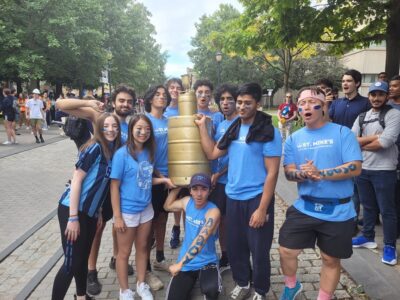
For the two of us, both commuters, our selection of St. Michael’s College on the U of T application portal was merely a judge of aesthetics. Now, three years later, we look back in praise of our younger selves for making such an important decision in our lives, in what many would call an irrational manner. But there was nothing irrational about our decision to become involved in the same college that was once reduced to a mere architectural wonder for us.
As a challenge to ourselves to meet new people in this new chapter of our lives, paired with having the support of someone you have known more than seven years, we entered our own Orientation year together full of excitement, despite the online delivery style. We received the excitement we entered with back ten-fold from the enthusiastic staff, jovial cheers, and resourceful yet equally amusing programming.
Having experienced the magic of St. Mike’s Orientation in many different possible delivery styles– online, hybrid, and in-person– and having worn all the different hats: orientee, leader, mentor, and marshal, we decided this year that it was time to add a new colour to our rainbow of Orientation shirts and bring our experience and insight to the team.
Our goals while planning for the 2024 Orientation, which conveniently spell out goals, are Growth, Opportunity, Accessibility, Longevity, and Sense of community. We not only want the O-Week schedule to reflect this, but our staff team as well. As Orientation is a great opportunity for upper year students to give back to the community, and for some, their first leadership position, we hope that their time as Leaders, Mentors, and Marshals result in their own interpersonal growth, and for them to instill the same sense of community they were met with when they were a first-year student.
Our schedule reflects all these goals, with a new emphasis on Accessibility and Longevity. Accessibility has been at the forefront of our planning this year, as one of our priorities when scheduling events was giving back the orientees the autonomy of choice. By offering a mixture of academic and social, high energy and low energy, indoor and outdoor events at the same time, we recognize that each first-year student wants something different out of Orientation. We’ve made sure to include events catered towards our diverse student populations, including international students, transfer students, and non-traditional students.
Accessibility has been a key consideration in all our planning, ensuring that all students feel welcomed and supported. Longevity was the golden word this year, often heard echoing throughout the duration of our meetings. Every year, without fail, we have found ourselves hearing from orientees we reunite with a couple of months into the school year, that O-Week is the sole week of fun at U of T, only to be followed with four-plus straight years of academics. We wanted to eliminate this mindset by allowing Orientation to showcase events and faces that hopefully become familiar faces throughout the year.
By involving prominent clubs and student groups such as the St. Michael’s College Union (SMCSU), SMC Mentorship, Athletics, the Kelly Library in events throughout the week, we hope to instill first-year students with the notion that similar events will be offered throughout the year by the same clubs and student groups.
As we move closer to the big week, excitement is building. We’re looking forward to welcoming our new students and seeing our plans come to life. The journey so far has been a testament to the power of teamwork, communication, and a shared commitment to student success. We’re confident that our efforts will result in an orientation experience that is both memorable and meaningful for all involved.
Planning for O-Week has been a journey of growth, collaboration, and anticipation. We’re proud of what we’ve accomplished so far and excited for what’s to come. We could not be more excited to bleed blue with everyone soon!!
Read other InsightOut posts.
Graduand Camila Justino receives her degree in Book & Media Studies, minoring in Celtic and Mediaeval Studies, this week. She will begin the MA program offered by the Women and Gender Studies Institute at the University of Toronto in the fall.
Camila is from Brazil and has published four books for young readers back home. After immigrating to Canada 12 years ago, she decided to learn and write in English to connect with the language directly, without the need for translators, and to engage more fully with the community around her. She is the mother of Lily and Bento, who bring her the greatest inspiration in life.
A few weeks ago, a friend of mine told me that when he achieves financial success, he will return to university to do what he loves: study and be part of a learning community because knowledge is what brings happiness. Curiously, it’s not the first time I’ve heard a similar sentiment, with the university being for before or after real life happens, and doing what we love as something to not take so seriously, as we set what we love aside so that we can pay the rent.
I am just around the corner from my convocation day and am heading down a path different from these friends. I don’t yet have a so-called stable job, and in September, I am returning to university to keep doing what I love. Through the MA program in Women and Gender Studies, I am willing to research and understand complex power dynamics in this world, especially for immigrant women. If you ask me why I keep studying I will answer that I do it for love, and I wonder if I am naïve to put in my goals and passions ahead of other things instead of being like my friends who leave them for later or do passions as hobbies.
The question of love for searching for knowledge and university studies has followed me since my first days as an undergraduate student four years ago. As an immigrant and single mother, I know that my love for learning doesn’t always align with the responsibilities and demands of the real world. When my children were very small, I had to make a decision: Should I pursue a job that offers growth and stability to afford vacations back home, or should I go to university to learn how to write and speak English fluently to follow my dream of becoming a writer in my second language?
In times when productivity and optimization are trendy, one might say I could try both. However, what I have discovered as a student is that learning is a process that requires time and space. Especially when you place learning with love. In my experience, reading a text and discovering its words and meanings is an exercise and habit that can’t be truly accomplished through an optimized schedule—in the 20-minute gap between the gym and preparing lunch. When you have love for an activity you will try to understand it from your heart and not for the sake of a grade.
In my first semester as a student, I accumulated low grades, which I think was part of the learning process of being in a university in a country with a different culture and language. The stress from feeling “I am not learning well, or maybe I am not capable” added pressure to my learning process. I did think that doing what I loved perhaps was silly.
In moments when I doubted my choices and trajectory as a student, I took the chance to go to St. Basil’s because it was a very quiet place. I also wanted to learn about faith, and even though I am not a practising Catholic, I found that going to a space where people practise what is not visible, like knowledge, could be a good exercise.
Over time, I noticed that faith and knowledge were not transactional, but they would “show up for me” when I least expected it. Eventually I was able to achieve good grades, and my heart was calm and filled with what I called faith. What I realized was that the learning process, including learning how to write in a second language, wouldn’t be a straightforward and immediately rewarding journey. Experimenting with love is not a road without its bumps.
Some texts I read would be understood many days later because the words needed space, time, and research to find their way into my mind until becoming authentic enough so I could write about them. Even when I wasn’t learning and restless because I couldn’t grasp obvious key lessons from a theme in the course, I was somehow navigating crucial layers of learning stages. At moments, learning was also not learning. Sometimes loving what I do which was studying was horrible and frustrating.
After a long journey in which I was transformed and finally able to write in my second language (aware and proud of my idiomatic expressions) I decided to apply for the MA Program in Women and Gender Studies (WGS). I was told by the coordinator Professor Dina Georgis it would be difficult because there were many applicants, and I didn’t have many courses in women and gender studies. However, she encouraged me with sincerity and also supported me in trying to apply for other programs so I could have more chances. I knew after years of experiences and stories that great advice doesn’t come always with only supportive words.
Love sometimes can be tough.
After our conversation, I felt overwhelmed by doubts. Until then I would keep insisting on doing what I love and taking the risks of failing over and over again. Still, stubbornly by love, I applied only for the Master’s program at WGS because I needed to be wise about my reference letters in the application. I was prepared to fail entering the program, and somehow prepared to face the consequences of my love for learning. When I learned I was accepted I was happy but careful and aware of my responsibilities towards what I do for love, my major intersection in life.
When my friends told me they were living to do what they love for later in life it came to my mind that they were intelligent people playing the right game in the world. What I never told them is that I do what I love because I believe in resistance and change in the world. And this can’t be left for later.
Read other InsightOut posts.
Arib Hassam (he/him) is an SMC student entering his fourth year, specializing in Psychology and minoring in Buddhism and Mental Health. Beyond academic pursuits, Arib enjoys working out, practicing yoga, meditating, and immersing himself in music. He is a residence don and serves on the St. Michael’s College Student Union (SMCSU). Motivated by his personal lived experiences, Arib is passionate about being a mentor and leader for young queer individuals. He aspires to work with 2SLGBTQ+ youth in therapeutic settings or other community-based roles, striving to make a positive impact on their lives.
When I was applying to colleges at U of T, St. Mike’s was my last option due to its religious affiliation. As a queer individual, I feared the potential for religious discrimination that often accompanies such environments. The thought of attending a Catholic institution filled me with immense anxiety. You can imagine my surprise when I received my acceptance letter in the mail indicating that I was assigned to St. Mike’s. After much consideration, I decided to give it a chance, albeit with great apprehension.
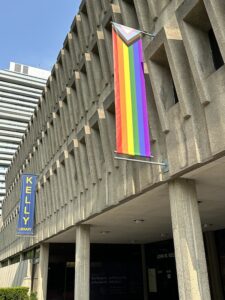
Upon arriving at St. Mike’s, I quickly discovered that my fears, while understandable, were largely unfounded. The community here welcomed me with open arms, and I found signs of acceptance that eased my fears. It was the little things, like seeing the Pride flag at Kelly Library, that made a significant difference. These small gestures of inclusivity spoke volumes and began to change my perception of what it meant to be a queer person at a Catholic institution.
The first Pride SMC event I attended was a modest gathering with only about three or four attendees. Despite the small turnout, the sense of camaraderie and support was palpable. Fast forward to our first Drag Show on campus, and we had more than 50 attendees celebrating together. The transformation was incredible, and it was heartwarming to see our club grow and flourish in such a short time. I feel as though this growth is a testament to the need for spaces on campus where 2SLGBTQ+ individuals can feel safe, supported, and celebrated.
Pride SMC is essential for the SMC community, especially within a Catholic institution like St. Mike’s. It is important to recognize that there are queer Catholic individuals who deserve a safe space to express their identities without fear of judgment or discrimination. Intersectionality plays a key role in understanding the diverse experiences within our community. Our club strives to honor and celebrate these diverse identities, ensuring everyone feels seen and valued.
The current climate, marked by a rise in anti-trans and queer rhetoric, makes our work more important than ever. We must stand up to hate and continue to advocate for acceptance and equality. Pride SMC was founded to create a safe and inclusive environment for 2SLGBTQ+ students, staff, and faculty, and this mission remains at the core of everything we do. Our efforts are ongoing, and it is crucial that we have the support of the administration to ensure the club’s longevity and effectiveness.
One of the most rewarding aspects of being part of Pride SMC is witnessing the positive impact we have on individuals. I’ve seen firsthand how our events and initiatives have provided a sense of belonging and community to many who felt isolated. Every event we host, from our small gatherings to special events like the Drag Show, are an opportunity to connect, support, and uplift one another. Additionally, simply having a presence on campus is something we should never take for granted. In a world where queer visibility can still be met with resistance, our existence as a recognized club at a Catholic institution is a powerful statement. It shows that we are here, we are proud, and we are part of this community.
For me personally, being involved with Pride SMC has been a transformative experience. It has given me a platform to share my story and advocate for others. When I look back at my initial apprehension about attending St. Mike’s, I am reminded of how far we’ve come. I feel that my journey from fear to acceptance mirrors the journey of many 2SLGBTQ+ individuals at St. Mike’s.
If you are a student reading this, I encourage you to get involved with Pride SMC. We are currently hiring executive members for the upcoming school year, and it is a fantastic opportunity to make a difference and get involved. You can find more information on our Instagram @pridesmc.
In closing, being a part of Pride SMC has shown me the profound impact a supportive community can have. As we navigate the challenges and celebrate the victories, it’s clear that our presence here matters deeply. We are not just participants in a club but we are agents of change, creating ripples of acceptance and love in an environment that once seemed unwelcoming. Our mission aligns closely with some of the core values of St. Mike’s, such as human dignity, community, and social justice. Every event, every connection, and every show of solidarity strengthens our sense of community and reaffirms our commitment to making St. Mike’s a place where diversity is celebrated and everyone can truly belong.
Read other InsightOut posts.
Anita Rajkumar and Semira Abdella are the Interfaith and Social Outreach Coordinators on the St. Michael’s College Campus Ministry Team for 2023-2024. Anita is a fourth-year student specializing in Health and Disease, and Semira is a fourth-year student majoring in Health and Disease, with minors in Immunology and Italian Studies. Both have significantly contributed to the spiritual and service-oriented community at St. Michael’s College this year.
As Interfaith and Social Outreach coordinators this year, we had the privilege to launch a weekly Snack Outreach Program at St. Michael’s, aimed at serving the vulnerable in Toronto. This program occurred every Thursday in the St. Basil’s Church kitchen from 1-4 p.m., providing students community service opportunities without leaving the campus.
Amidst the surge in food prices gripping Toronto, it’s imperative to address the pressing need to deliver food and snack programs, especially during the cold months. Inflationary pressures have compounded the challenges faced by vulnerable communities, making access to affordable and nutritious food increasingly difficult. These outreach initiatives play a vital role in bridging the gap, ensuring that individuals facing economic hardships have access to essential snacks and meals. By strengthening support for such programs, we can alleviate the burden on those struggling to make ends meet and foster a more inclusive and resilient community.
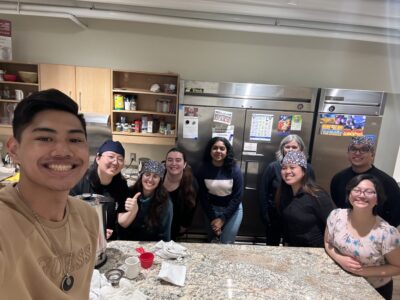
This initiative was unique. In comparison to the Out of the Cold outreach program run on Mondays and Tuesdays at St. Basil’s, the snack program was solely student-led. Under the guidance of Hilda, the St. Basil’s kitchen coordinator, our team of 15 student volunteers were eager to prepare and serve meals. During the first hour, the volunteers would organize plates with the meal, which included soup or pasta, a fruit, yogurt, and dessert. Take-out bags with the same meal would also be made for those who could not stay to eat their meals. The remainder of the session would consist of serving the meals and interacting with the vulnerable, followed by cleaning. Special edition snack outreach programming also occurred throughout the year, where volunteers and other student leaders would bake fresh cookies for the community.
The community members attended weekly often mentioned the program made their day. These individuals would share their life stories and the daily challenges they are facing, allowing student volunteers to develop compassion and respect for human dignity. The student volunteers did not consider this program as an obligation but rather a time to form a community with other student leaders and those in need. These are some words from the volunteer team:
“Snack outreach has allowed me to meet and connect with so many beautiful souls in the St. Mike’s and St. Basil’s community.”- Emily Hospedales
“It allowed me to better understand my community and meet wonderful and determined people.” – Hriday Sharma
“Volunteering with the snack outreach team provided the opportunity to connect with new friends and help me find my place within the St. Mike’s community.” – Anthony Dinglasan
“The program has given me the opportunity to serve those in the community while allowing me to meet new people and form greater connections! It also doesn’t hurt that I had loads of fun doing it as well!” – Katrisse Bautista
Our team has served more than a thousand meals this year and we are very proud of this achievement! As graduating students, we are excited to pass on the baton to the new coordinators pursuing our positions, and hope this program continues to grow and support a larger community in need in the years to come.
Read other InsightOut posts.
St. Michael’s Mark McGowan is a Professor of History and Celtic Studies, cross-appointed to the Department of History at the University of Toronto. Professor McGowan is renowned for his work on the Catholic Church in Canada and the Great Irish Famine, as well as the lasting impact that the Famine’s mass migration had on Canada.
The Canada, Ireland, and Transatlantic Colonialism Conference had a polygenesis of sorts. In March 2023, Ambassador Eamonn McKee held a reception at the Embassy Residence in Ottawa for the Coollattin Canadian Connection. I was invited because of my work with the project, which helps to link the former estate of Earl Fitzwilliam in Wicklow with descendants of the tenants he assisted off the estate in the 1840s and 1850s. It was there that Tom Jenkins, a Coollattin descendant– and recently Chancellor of the University of Waterloo –proposed that St. Mike’s be the hub linking Canada-Ireland research projects. This dovetailed nicely with the Ambassador’s and my plans to bring to light Ireland’s role within the British Imperial project, specifically settlement and migration to British North America. He and I already had a book project in process called 50 Irish Lives in Canada, but we both were searching for some vehicle to explore issues of migration, colonialism, and cultural transfer from Ireland to Canada. We thought of a gathering and then perhaps a publication.
Eamonn, while in discussion with President David Sylvester and Principal Irene Morra, fleshed out the idea of the University of St. Michael’s College holding a conference, perhaps as a launch pad for another idea, the creation of an Irish research centre at St. Michael’s. Both ideas seemed to have legs and had the added bonus of boosting the prominence of the College’s Celtic Studies program (which was currently under renewal and renovation). With the co-sponsorship of the Irish Embassy, and with some financial support from the Irish Cultural Society of Toronto and the University, the Ambassador and I began to map out what a conference might be called and who we might invite. The Embassy was keen to foot the bill for keynote speakers, particularly from Ireland, and I was hopeful that we might engage our newly signed Memorandum of Understanding (May 2023) with Maynooth University.
Eamonn and I hammered out the rough framework for the program and bandied about keynote speakers. Eventually, five speakers emerged, all distinguished professors in their own right: Heidi Bohaker (University of Toronto, an expert of Indigenous-Crown Treaties), Deirdre Raftery (University College Dublin, world’s leading expert on Irish women’s religious), Christopher Morash (Trinity College Dublin, an expert on Irish media and communications), S. Karly Kehoe (St.Mary’s University, an expert on Ireland and the British Empire), and Donald Harmon Akenson (Queen’s University, Canada’s Dean of Irish and Diaspora History). A call for papers yielded six panels—Indigenous/Irish engagement, Imperial Ireland, Irish Religious Diaspora, Communication & Migration, and Cultural Questions. Alas, our Maynooth contributor had to opt out because he was called to work on the Normandy D-Day commemorations this year.
The added bonus, however, was to be a special session on the Indigenous Gift to Irish Famine Relief, a topic that recently emerged out of my own research. With Jason King of the Irish Heritage Trust (Dublin) we planned a session to showcase the previously unknown donation of the Indigenous peoples of Canada to assist the Irish people during the devastating period of the Great Famine (1845-52). The IHF has been preparing a film on the subject, which will be released May 19, and the session will feature both Haudenosaunee and Anishinaabe speakers, with Heidi Bohaker and myself filling in the historical details from a settler perspective. We saw this session, the lead session in the conference, as a further effort to honour St. Michael’s commitment to the TRC recommendations.
In an effort to engage both the scholarly community and the general public, we are not charging a registration fee for the conference. Often, fees are roadblocks to interested members of the broader community from participating in these events. The Indigenous Aid session will be broadcast on Zoom.
It has been quite a year, and the conference comes none too soon since Ambassador McKee’s tenure as Ireland’s representative in Canada ends this summer. I am very grateful that he has made St. Michael’s his go-to academic institution during his four-year sojourn in Canada.
Please visit the website for the Canada, Ireland and Transcolonialism Conference for the conference schedule and additional information.
Read other InsightOut posts.
Anne Louise Mahoney is an alumna of St. Michael’s College who lives in Ottawa. Her BA in English paved the way for a career as an editor, which means she still gets to read all day long!
I think of her so often – her turns of phrase, her laugh, her bright spirit. I think of things I want to tell her and then remember that she’s gone. I tell her anyway.
As Mother’s Day approaches, memories rise to the surface. Chatting about everything and nothing at the kitchen table. Watching classic movies together. Washing the dishes (I always dried and put away). Retelling the old stories, which only improved with time: growing up in Ottawa during the war; high school shenanigans; training as a nurse with the Sisters of St. Joseph and then working at St. Michael’s Hospital; meeting and marrying my dad, a young reporter at the Toronto Telegram. And so many stories of my sisters and me growing up.
Our mothers – whether they give birth to us or become mothers to us through kinship, friendship or happenstance – encourage us, teach us, comfort us, read us the riot act from time to time, and everything in between. It’s not an easy job, and yet every day, more and more people join their ranks. When I was in labour, I found myself thinking of all the women before me who had done this work, breathing new life into the world despite all the uncertainty that lay ahead. Talk about a leap of faith! Somehow, it helped me through the pain and overwhelming emotions of the moment. That endless line of women diving into an unknown future.
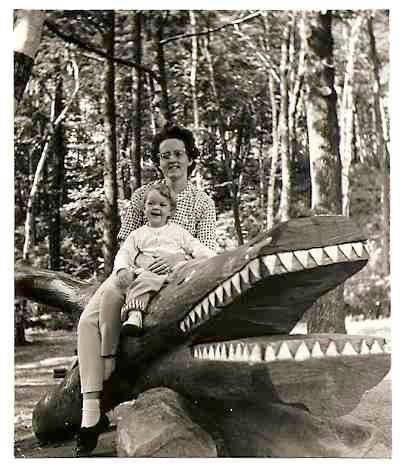
Like many of us, I didn’t appreciate all that my mom had been through with us kids until I became a mother myself: the sheer physical effort, the loss of sleep (during both babyhood and the teenage years), the worry when illness or other crises struck, the sacrifices made with a willing spirit. I also didn’t reckon on the boundless joy of knowing a person so deeply from day one, with all the ups and downs that come along with this journey we call life. My child and I formed our own little world of wonder and awe, hope and safety, laughter and, yes, tears. Our lives orbited around each other, even as that orbit grew larger over time.
The years flew by, even though some days were never-ending. I read a lot of stories, made a lot of school lunches, witnessed a lot of adventures … and stepped on a lot of Lego. (I still find the odd piece of Lego around the house!) I learned so much about going with the flow, shifting my priorities, opening my mind and heart, and really listening, even in the silence.
My mom died in 2021 after a long and happy life. In her final years, although her health was seriously compromised, she embraced each day with gratitude. “God is so good,” she would say. What a blessing! Her gifts to me continue to appear, unexpected but so welcome.
I am reminded of what Suzanne Simard, a professor of forest ecology at the University of British Columbia and the author of Finding the Mother Tree: Discovering the Wisdom of the Forest, writes about the largest and oldest trees with the most connections: “When Mother Trees—the majestic hubs at the center of forest communication, protection, and sentience—die, they pass their wisdom to their kin, generation after generation, sharing the knowledge of what helps and what harms, who is friend or foe, and how to adapt and survive in an ever-changing landscape. It’s what all parents do.”
It seems I am becoming one of those mother trees with growing connections: my little grandson is now seven months old! I marvel as he grows and changes, so alert and full of life. He is blossoming before our eyes. His parents have embraced their new role and are busy caring for him and cheering him on as he reaches each new milestone. The circle of life continues to expand, even in the face of difficulties here in Canada and across the world: poverty, injustice, war, devastating climate change, hatred, and polarization on many fronts.
Beyond all those hard things is love, including mother love. And as St. Paul tells us, love “bears all things, believes all things, hopes all things, endures all things. Love never ends.” (1 Cor. 13:7-8)
May all who mother be blessed, on Mother’s Day and always!
Read other InsightOut posts.
With Mother’s Day this weekend, various community members are sharing reflections and memories of their mothers. First up, Jesey Darwin, who works for the Loretto Sisters.
Jesey Darwin is the mother of three awesome young-adult children and currently works as an Accounting and Banking Associate for the Loretto Sisters. She describes herself as “a lifelong learner to listen when God is speaking.”
The last Sunday before leaving for Canada, I took a walk with my mom. While we cherished our time together, she then shared her reflection on her life journey. She told me that, after many years, she could now accept the fact that she had to face: my father passed away at a young age, leaving her and their four school-age children behind. She had to adjust her life from a home-stay mom to a working mom as well as responsible to be a mother and a father at the same time.
While we were still walking, she continued sharing her life experience about keep living our life diligently rather than asking why bad or difficult things happened in our life. That really makes sense when I see with my own eyes how my mom has been living her daily life, raising her four children by herself. Well, actually, not by herself but with the Lord that she trusts wholeheartedly. She believes that the Lord has the best plan in her life.
I remember that her small prayer book and her bible are crumpled because she reads them regularly and gets strength from the prayer and the Word of God, especially in turbulent times such as facing her children’s rebellious time. When having difficult times, her “go to” is kneeling in front of the Lord. Her close best friend is the Lord that she could pour out her deepest feelings. She is convinced that it takes grace to remain kind in a cruel situation and our heart tells us big things in a little way so we need to listen carefully.
Her motto is ‘regardless of the problems in this life and the hardships you face, do not let them shake your heart, but have faith in Christ”.
A woman I have been admiring for my whole life. She is my mother!
Read other InsightOut posts.
(St. Mike’s is getting ready for reunion, which runs this year from May 30 to June 2. Today we hear from Bob Shiley, who, as he notes, gets to attend two reunions, thanks to what was known as the Western year.)
Bob Shiley grew up in downstate Illinois before moving to Chicago, and ultimately, to Toronto. He attended the University of Toronto for his undergraduate degree and received his MBA from the University of Chicago. After a stint in the U.S. Army where he “fought the war” at Fort Knox, he became a Production Planning Manager at Baxter and at National Rubber with terms at each company twice. Since 1990, he has been an Executive Recruiter at Brethet, Barnum and Associates, focusing on life sciences sales and marketing. He is an active parishioner at St. Gregory’s Church where, along with his wife, Anne, he is a lector, lay Eucharistic minister, and heads up the parish’s outreach to the Good Shepherd Refuge.
God has been in business a long, long time; and He really knows what He’s doing. I am ever thankful for His guiding me to St. Michael’s College, as it has been a gift that has kept giving over the past 60 years, and it’s the reason I am where I am both literally and figuratively.
After graduation from a Jesuit high school in the United States in 1964 and scouting universities in the northeast, my parents and I narrowed it down to three schools: Georgetown, Boston College, and the University of Toronto. I found the first too snooty; Mom and Dad didn’t think BC’s academic reputation was that great; and we all loved St. Mike’s in the University of Toronto, where two cousins of mine had attended. What a great choice it was!
Even before arriving on campus, there were blessings. The first, getting to meet Joe Crowley, who boarded the Toronto-bound train in South Bend, Indiana. Our deep friendship has lasted to this day, and that includes his wife, Tricia, also a member of our Western Class (the equivalent of Grade 13 in those days), which Fr. Bob Madden rightfully called “the class with brass.” Not sure what it was about us early postwar baby boomers, but we did make a lot of noise, much to the definite consternation of our more subdued Canadians counterparts. About 50 of us still keep in touch via the Internet, though I and one unnamed person are likely the only conservatives in the group.
Whoever decided our first-year roommates had a wonderful sense of humor. My Elmsley Hall confrere that year was the total opposite of my early to bed, early to rise tradition. He was a nighthawk who would throw his brass alarm clock across the room when it had the effrontery to sound off too early for his liking. He happened to be the Editor of The Mike, so there were positives, as I was a good proofreader and go-fer who would take the paper to the printer. Other than asking my wife to marry me, the best decision I ever made was to say no when he asked if I wanted to smoke some dope.
Beyond the Crowleys, other friendships forged then have been a continuing source of strength and solidarity. At the risk of omitting some, John Ryan, my roommate in fourth year, has been a close, close friend who has been there both throughout our years in Uncle Sam’s forces and to this day. Leo Boyle, who disappointingly decided that Toronto’s gray skies were too much for him and left early to return to sunny Denver, used the talents he honed in the Senate Club and in persuading fellow class members that there was a glacier 100 miles north of Toronto to become a lobbyist in the Colorado State Legislature. Sister Donna Markham OP, Ph.D. is another of our group who left us far too soon to join the Adrian Dominicans and ultimately became the first woman President of Catholic Charities USA.
In addition, the Basilian staff at St. Mike’s blessed us mightily during our time there and beyond. Names that come to mind are the aforementioned Fr. Bob Madden, who officiated at quite a few weddings of our class; Fr. H.B. Gardiner, who not only hired me as a librarian at the Pontifical Institute of Mediaeval Studies but also married my wife and me; Fr. John M. Kelly, our President at the time; Fr. Owen Lee, a renowned scholar and commentator on operas; Fr. Charlie Leland, an always approachable English teacher; and Fr. Don Finlay, who did his best imitation of Sergeant Schultz of Hogan’s Heroes when he “saw nothing” when John Ryan and I were sneaking two young ladies up to More 30 for an afternoon fondue party.
Mustn’t forget the class reunions since we graduated. As mentioned earlier, if it weren’t for St. Mike’s, I wouldn’t live in Toronto. Most of my Western year friends graduated in 1968, but there were those of us who stayed on an extra year taking the Honours program or making up for a lost year. Much to the consternation of my beautiful wife, Anne, who is not a graduate of St. Mike’s, that means I attend two reunions every five years. In 1978, at the urging of John Ryan’s sister, I came up for that year’s 10th reunion and met the lady I thought I was going to marry. She was a teacher and, with that in mind, I decided to move to Toronto rather than make her go to the States where educators made much less money. Must admit that it was much more romantic when I’d fly in from Chicago to see her than when I was around all the time. She decided to take up curling, which I find a dumb sport, as I do enough sweeping already. Anyway, one day, she sat me down to let me know that she had met someone else at that sport. It all worked out in the end; because, prior to that, she had pointed me in the direction of a prayer group where I met my wife-to-be, a former student of hers, so all is well after 38 years of wedded bliss.
God does work in strange and mysterious ways!
Read other InsightOut posts.
Jillian Kaster is a mother of two who lives in Toronto. Along with her family, she is trying to take personal action to decrease her carbon footprint. She joined the University of St. Michael’s College community in March as content specialist.
When I was a kid, Earth Day was a celebration. It was a day to thank the planet for supporting life, spend time appreciating nature, and learn about how we could respect our planet by conserving water and recycling. It’s been three decades since I was a child, and in that time, we have burned more than half the fossil fuels in human history.1 Forget recycling: we are racing headlong into a climate crisis that poses unimaginable risks to our planet. Now Earth Day has become a time to grieve and to reckon with our actions that have led to this point.

Each of us has a moment when climate change became real. For me, this moment was when the UN Intergovernmental Panel on Climate Change released its unprecedented report in 2018 stating that our planet only had 12 years to reduce carbon emissions to avoid the worst-case devastation caused by climate change. I was on maternity leave with my then one-month old daughter. I’m still grappling with the implications of this report and what it means for my children’s future. I know their childhood will be different from my own: from methods of travel and their access to food to having to dealing with extreme weather and their relationship with nature.
Almost every day I take my kids outside for fresh air. Time spent in nature is a highlight for all of us. I appreciate stepping away from my phone or computer and watching them engage with the world around them. Kids understand instinctively that we live in a world of natural marvels. They inspect different rocks and decide which are worthy of taking home, wave to squirrels, smell flowers and bring me ladybugs or, less to my pleasure, wriggling snails and worms. We loved playing on the swings and slides in the unseasonably warm weather this spring, but I wonder how many more days like those will we have. What is the true price tag for these gorgeous days? Will this summer have more poor air quality days due to wildfires?
We’re bearing witness to a small fraction of the damage that is to come. I think of all the precautions my children already take to protect themselves from the planet that is supposed to be their home. They have weathered a pandemic, wash fruit and vegetables to remove the pesticides they’re grown in and diligently apply layers of sunscreen before going outside in the summer.
We’re making a conscious effort at home to reduce our impact by switching to a plant-based diet, choosing to walk or take public transit when possible and divesting from fossil fuels. These changes give my husband and me the opportunity to have early conversations with our children about climate change and its implications. We can share why we’re making the decisions that we do even when they’re inconvenient or unpopular.
So many of the emissions we produce are woven into the fabric of our society. To have a hope of reaching our emission reduction targets there’s much more work that needs to be done. To start, we will need to eliminate our reliance on oil, increase our usage of renewable energy, and rethink food supply chains.
Either we choose to change, or change will be thrust upon us. I don’t know what my children’s future will hold as the full consequences of our decisions and inaction are still unknown. I struggle with how to offer guidance in an area where my generation has come up short. But the climate emergency is also an opportunity to rebuild our society with new values that prioritize the well-being of our planet. Instead of passing along my own worries, I want to demonstrate to my children how to be a part of the solution. They have a right to imagine the future they want for themselves and figure out how to achieve it.
This Earth Day I plan on taking my kids on a nature walk. Instead of focusing on my grief, I will try to join them in their wonder and appreciation. We live on a planet filled with miracles and beauty and there is so much to preserve for those we love. The number of us who are trying to change is growing every day and while there is still so much to do, I find hope in these efforts. It may be harder, but this is still a day for celebration so long as we match it with commitments of our own.
Read other InsightOut posts.
Adam Hincks is a Jesuit priest and an assistant professor in the Department of Astronomy & Astrophysics and at St. Michael’s College at the University of Toronto, where he holds the Sutton Family Chair in Science, Christianity and Cultures.
What is an eclipse and how does a solar eclipse differ from a lunar one? Partial versus full?
Most generally, an eclipse happens whenever one body in space passes in front of another body and blocks its light. The most well-known eclipses are lunar eclipses and solar eclipses. Lunar eclipses happen around the time of a full moon if the Earth passes between the Sun and the Moon and casts a huge shadow over the Moon. Solar eclipses happen around the time of a new moon if the Moon passes between the Sun and the Earth. Because the Moon is a lot smaller than the Earth, the shadow it casts during a solar eclipse only covers a small area on the Earth’s surface, whereas during a lunar eclipse the whole Moon can be enveloped in Earth’s shadow. For this reason, lunar eclipses can be seen by more people at a time than solar eclipses.

Both solar and lunar eclipses can be partial or total. Total eclipses are when the whole disc of the Sun is covered by the Moon, in the case of solar eclipses, or when the whole disc of the Moon is covered by the Earth’s shadow, in the case of lunar eclipses. Partial eclipses happen when only a portion of the disc is covered. In the case of solar eclipses, there are also annular eclipses. This is when the Moon passes exactly over the Sun, but at a time when it is further away in its orbit around Earth so that its size in the sky is slightly smaller. In that situation, the Moon cannot completely cover the face of the Sun, but leaves a thin ring, or annulus, of the Sun visible.
While many people think of an eclipse as a rare event they happen regularly. What factors are involved in whether or not I am able to see an eclipse?
The orbit of the Moon around the Earth is tilted about 5 degrees relative to the orbit of the Earth around the Sun. This means that during most new and full moons, the Moon is either above or below the Sun and you can’t get an eclipse. However, every five to six months the orbits line up so that the Moon and the Sun are level with each other. These are called eclipse seasons, and you typically get two or three eclipses of some kind during each season.
As mentioned above, the Earth’s shadow is big compared to the size of the Moon, so when lunar eclipses happen, you can see them from pretty much anywhere on Earth where it is nighttime. In Toronto, the next total lunar eclipses will be on March 14, 2025 and March 3, 2026. If you have never seen one before, it is well worth trying to catch a glimpse of the next one!
On the other hand, the Moon’s shadow is a lot smaller than the size of the Earth. The full shadow is typically 100 to 200 km in diameter—similar to the widths of Lakes Erie and Ontario that it will pass over in the upcoming April 8, 2024 eclipse. You need to be inside this shadow, the umbra, to see the total eclipse. So while many years there are one or two total or annular eclipses, they are only visible from a tiny fraction of the Earth’s surface. As a solar eclipse proceeds, the umbra moves along the face of the earth, tracing out a narrow strip. What is special about the April 2024 eclipse is that this strip passes over Mexico, the United States and Canada and will be viewable by a huge population. The path of totality will just miss Toronto, unfortunately—see below for notes on safe viewing—since Toronto is only in the much wider penumbra from which you can see a partial eclipse. However, the umbra will cross over other locations in Southern Ontario, like Niagara Falls, Hamilton and Kingston. You can use this interactive map to see where the umbra passes; clicking on the map will tell you when the eclipse will happen.
Unlike the upcoming eclipse when lots of people will have the chance to witness it, in many cases the strip of the Moon’s shadow passes over less populated regions—and remember, most the Earth is covered with oceans. For instance, the annular eclipse later this year, on 2 October 2024, will pass mainly over the Pacific ocean and only cross land at Easter Island and the very south of Chile and Argentina.
You can use this website to explore other upcoming eclipses
In the past eclipses were more mysterious events and sometimes seen as omens. We now know when one is going to happen and we know it’s not the end of the world. Why do we remain fascinated?
Just because you understand how something works does not make it less fascinating! The Sun and the Moon are such familiar objects to us, and we literally could not live without the Sun, so when something unusual like a solar eclipse occurs, it disrupts our normal relationship to the sky in a way that naturally evokes great curiosity. It is not surprising that they have been seen as significant portents by some cultures. Today, they can be a great reminder of how awesome our Solar System is and a wonderful opportunity to learn more about Creation. When people disagree about so many things down here on Earth, it is nice when there are events in the heavens that everyone can appreciate and enjoy together.
What sorts of things have we learned from studying eclipses?
The curved shape of the shadow during a lunar eclipse was one piece of evidence—but not the only one—that ancient peoples had that the Earth is round. Aristotle, for instance, lists this as a reason for the Earth being spherical.
Precise measurements of the timing of lunar eclipses were also used to determine geographic longitude before clocks were good enough to keep time at sea. Here in Canada, the Jesuit missionaries used this method to figure out the geographical location of the Ste.-Marie mission near the Georgian Bay. The most precise measurements were made by Fr. Joseph Bressani, but Sts. Jean de Brébeuf and Gabriel Lalement also recorded observations of lunar eclipses. Bressani’s observation of the lunar eclipse on January 30, 1646 is also the first record we have of a telescope being used in Canada for astronomy.
What are some fun facts about eclipses that lay people might not know?
It is actually a striking coincidence that the Moon and the Sun are almost the same size in the sky. In reality, the Sun is 400 times bigger than the Moon, but it is also a little less than 400 times further away from Earth than the Moon is. These two factors cancel out so that the two appear similar in size. There is no deep reason for this, but it means that we can observe total solar eclipses, which we couldn’t if the Moon had a slightly larger orbit around Earth than it does, and it also means that we can also sometimes see annular eclipses, which wouldn’t happen if the Moon had a slightly smaller orbit.
This coincidence of sizes and distances was propitious for a famous crucial experiment last century. Einstein’s new theory of gravity, called general relativity, predicted that massive bodies should bend the path of light. A team of astronomers, including the great Arthur Eddington, put this prediction to the test during the total solar eclipse on 29 May 1919. During the period of totality, the Sun’s light was blocked enough that stars near the Sun could be seen, and it was confirmed that their apparent positions had shifted due to their light getting bent by the Sun’s gravity along its path to us. If in some twist of cosmic history the Moon’s orbit had been slightly bigger, so that the Moon were further away from Earth and not big enough to create a total solar eclipse, that experiment wouldn’t have been possible! There are many other ways that general relativity has been tested, so it would not have been a fatal blow to Einstein’s work. As it stands, though, the observations of 1919 made headlines and propelled him to international fame.
How can we safely watch an eclipse?
You should never look directly at the Sun, even briefly, because it can cause serious and permanent eye damage. We do not have pain receptors in our retinas, but normally we instinctively avert our eyes from the Sun due to its brightness. During a partial or annular eclipse when some of the light is blocked, though, that instinct might not kick in, which means that you need to be extra vigilant because there is still more than enough light to do damage.
You should only look at the Sun through properly certified eclipse glasses. Regular sunglasses are not safe for solar viewing. You can find a list of vendors who comply with the certification here. As that site infers, some unscrupulous manufacturers may try to sell fakes, so do check any vendor against their list to be safe. (Here on campus Gerstein and Robarts Libraries were giving away certified glasses, but they have now run out.) If you do not have access to eclipse-viewing glasses, you can still view it indirectly with a pinhole camera, which still provides an exciting and worthwhile experience. See this video for more information on eclipse safety.
You can look up during the brief period of totality, when all of the sunlight is blocked by the moon. Note, however, that this will not be possible in Toronto. Even though more than 99% of the Sun will be blocked in Toronto, leaving only a sliver of sunlight, anything less than 100% is not safe to look at directly.
When is the next time the St. Mike’s campus will experience an eclipse?
As mentioned above, there will be total lunar eclipses visible from Toronto on March 14, 2025 and 3 March 3, 2026. The next partial solar eclipse will be on August 12, 2026, but only a tiny part of the Sun will be covered and you won’t notice it unless you look at the Sun with certified solar glasses (see above). The next annular eclipse in Toronto will be on July 2, 2057, and the next total solar eclipse will be on October 26, 2144, more than 120 years away!
Read other InsightOut posts.
Andrew Selvam is an alum of the Faculty of Theology who serves as a chaplaincy leader at St. Marguerite d’Youville Catholic Secondary School in Brampton, ON. In his spare time, he…works with kids, so there is no spare time, lol.
Not too long ago, around this time of year, it felt like we were in a different world – a world transformed, where everyone stood a distance apart, where the environment had an opportunity to reset, where you could only see a third of a person’s face and where the classroom was accessible through a computer screen. Fast forward four years and it seems as if life as returned back to normal, that hope has returned, when at times it didn’t seem that it would.
In the latter days of Lent, we are reminded of this beautiful season of prayer, fasting and almsgiving. The imagery of the season reminds us of the wilderness in which Jesus spends his time as he begins to embark on his ministry.
The season of Lent has always been an opportunity for me to reflect on mine. Now a little closer to home, but in a much larger school, the ministry God has called me to at St. Marguerite d’Youville Catholic Secondary School has changed from my time in South Mississauga. Still very much focused on building community, faith formation, and service opportunities, I get to work with a pretty dynamic community, diverse in nature and energetic to say the least. Every day is an opportunity to engage with students in a way that allows me to accompany them in the desert of whatever they might be going through, and their presence coincidentally does the same for me. No day in the wilderness of teenagers is ever the same, and I don’t think I would have it any other way.
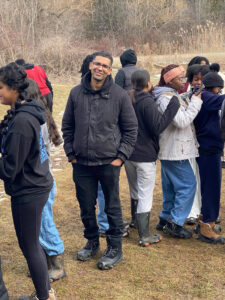
The last days of Lent slowly move towards Holy Week, a period of time where we reflect on the suffering and death of Jesus, but His immense love bursts forth in joy and victory when the stone is rolled away from his tomb three days later. It’s a reminder that Easter is anticipation, Easter is hope, Easter is true joy.
Every morning, I have kids without fail in my office, chatting it up, greeting their friends (they haven’t seen in less than 12 hours) and always asking for food. When I’m not in front of the computer or prepping for the next event in the school, I get the privilege of talking to kids about their lives, about what makes them tick, about their relationships and the status of them, not only about their struggles, but their joys. When I’m not in the office, you can guarantee I am reminded! But each day and most interactions are an opportunity for a little Easter on the daily, a reminder of the joy and hope of young people.
Asking students to commit to their faith is never an easy task. Our schools are the second parent of learning in all aspects for young people. But it’s a challenge that I’ve enjoyed for the last 18 years of education, where there is never a dull moment, and where the reward of seeing a young person change the world in their own way is its own Easter-like reward. The student who still comes to chaplaincy seven months later, the increasing number of students attending mass on a Friday morning at 7:30 am, the students willing to take up space as they embrace their culture and personal excellence, the students who make a school dance feel like a wholesome family celebration, and students ready to hear the cry of those who go without and respond in various ways.
It is said that we are called to be a resurrection people, a people of hope, and I think this becomes increasingly possible when young people are around. From the ones I encounter at school, in my parish youth choir, and youth ministry, I get reminded every day that there is hope, that there is love, and that there is joy! I am insistent on the fact that the Holy Spirit lurks through the walls of every school building, just waiting to get stirred and activated. It always gives me hope to know that young people make that happen. It doesn’t happen overnight, or in three days even, but when the spirit and glory of God is around, transformation happens everywhere, including for me. Hallelujah is a form of praise to God and while it’s a word, it truly encompasses the many ways young people have glorified him in their actions, regardless of their stories and histories. St. John Paul II reminds us firmly that we are an Easter people and hallelujah is our song. I am glad to say that I work with and serve Easter people every day and because of the young people I work with, hallelujah has become our jam!
Read other InsightOut posts.
Recently, the Campus Ministry team got together to reflect on Holy Week. We are grateful for their input. Thanks, too, to Campus Ministry Coordinator Nicole Ferrante for bringing those thoughts together.
Holy Week is one of the most important periods in the Christian calendar, concluding the forty-day season of Lent, and preparing Christians for the approaching celebration of Easter. At our March 18th meeting, the St. Mike’s Campus Ministry team sat down together and had an open conversation about Holy Week, with the hopes of gathering some thoughts to share with the St. Mike’s community.
Students were asked several questions to get the ideas flowing. Hopefully there will be something in their answers to inspire you as we enter into this important time.
Why is Holy Week important? What makes it special?
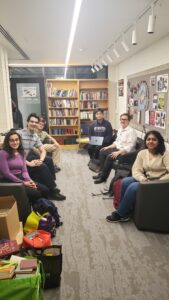
“I love Holy Week. I think Holy Week is awesome. I think it’s nicer than Christmas because there is much less capitalist gift buying and stuff.“-Marc-André Veselovsky SJ (Retreats and Faith Formation).
During Holy Week we remember the passion, death, and resurrection of our Lord. To re-“member” does not only mean to recall in our mind. It means to relive, to recreate. To place ourselves back into the story, and to live those final days alongside Jesus. We experience the self-giving love of Holy Thursday, the grief of Good Friday, and the emptiness of Holy Saturday, only to be filled with the fullness of joy and life as we enter the resurrection of Easter Sunday.
“I think it is [also] to remind us that in our daily life we carry our own crosses, and to remind us that there is resurrection after death, so whatever suffering we are going through, there is resurrection.” – Semira Abdella (Interfaith and Social Outreach Coordinator).
Placing ourselves in the Easter story also means coming with our reality, with the burdens we carry, with what we are doing, seeing, and experiencing, and letting the life of Christ speak hope and comfort into those places.
Is there a particular part of Holy week that you find most meaningful, or that you are most looking forward to?
“The mass I look forward to in Holy week is Good Friday. For Ethiopian Catholics [like myself] it’s not like a typical mass… it’s a 12-hour service starting from 6 am to 6pm, so it’s very interesting. People fast the whole day.” – Semira.
Holy week is an important time for all Catholics, as well as many other Christian denominations. The way in which it is observed, however, can differ depending on the church or cultural community that one is part of. Glimpses into the Holy Week celebrations that happen worldwide are a beautiful example of the unity and diversity that the Church is fortunate to foster.
“I’m going to see my friend get baptized at the Easter Vigil. So that’s very exciting… I don’t think I’ve ever had someone I know be baptized as an adult” – Justus Croskery (Catholic Faith Formation Coordinator).
Something that not everyone realizes about Lent and Holy Week is that it is an incredibly important time of preparation for those desiring to enter the Catholic Church. The Easter Vigil Mass on Holy Saturday is the time when all adults seeking the sacraments of Baptism, First Communion, and Confirmation are welcomed fully into the Catholic community, after having journeyed through many months of spiritual formation.
“The liturgies are the best liturgies of the year.” – Marc-André.
Holy Week liturgies are rich with meaning and emotion. They are extremely embodied, incorporating rituals such as the waving of palms, the washing of the feet, and the veneration of the Cross. The Easter Vigil makes use of powerful symbols like fire and water and plays to the senses of sight and sound as we journey from a somber darkness into a joyous light.
“I think my favourite part would be the Easter Vigil mass. Lent is a good time to recall that we weren’t made for this world, and to see our own brokenness especially. And then with the Easter Vigil comes a really full joy – a joy because Christ satisfies the hunger that we have that none of the things that we are giving up can touch.” – Noah Stong (Catholic Faith Formation Coordinator).
The joy of the Easter Vigil Mass is palpable. As the Mass ends, we as a Church move from a season of fasting and penitence, to a season of joy and celebration.
Are there any encouragements, challenges, or words of inspiration that you would like to offer your St. Mike’s community this Holy Week?
“I guess just that we all have our own sufferings to bear, especially during the close of the semester. And I think it’s the perfect opportunity to take them and to just offer them up to Jesus and see him suffering on the cross especially prominently during Good Friday. I think it’s a good time to take a bigger-picture look at things and be like “yeah I have my own crosses… and Jesus did so much more for me.” I’m just so grateful. He’s going to give me strength.” – Justus.
“I hope that students can try to connect more with their faith by attending the different masses that occur. Just kind of step out of their academics for that one week to reflect upon the sufferings that Jesus went through for us.”. – Anita Rajkumar (Interfaith and Social Outreach Coordinator).
For those interested in participating in Holy Week liturgies here on campus, consider attending some of the following services, all taking place at St. Basil’s:
Saturday March 23rd, 6:30pm – St. Mike’s Campus Ministry Palm Sunday Mass
Wednesday March 27th, 7:00 pm – Tenebrae Service
Thursday March 28th, 7:00pm – Holy Thursday Mass
*Consider registering for our Holy Thursday Travelling Adoration event, from 5pm-Midnight, beginning with dinner and mass, and ending with a pilgrimage to seven churches around the city. Click here to register.
Friday March 29th, 3:00pm – Good Friday Service
Saturday March 30th, 8:00pm – Easter Vigil Mass
Sunday March 31st, 9:00am, 10:30am, and 12:00pm – Easter Sunday Mass
The St. Mike’s Campus Ministry team wishes a blessed and fruitful Holy Week to all!
Read other InsightOut posts.
In 2022, Dorothy Lee travelled abroad from South Korea to Canada to study at the University of Toronto. As a second-year student, she is pursuing criminology and computer science majors. This year, I have been a part of the University of Toronto Korean Association (UTKSA) and the SMC Campus Ministry Snack Outreach Program. Throughout the semesters, she has planned academic and leisure events for Korean students and prepared snacks for the elderly and homeless people.
My passion for volunteering is rooted in my parents’ upbringings and a Christian environment. Growing up, I witnessed my parents’ dedication to helping those in need, such as participating in charity walks and delivering Christmas presents to orphans. Their efforts advised me to have love and compassion for the needy. The Christian schools and churches I attended preached and demonstrated the love of Christ by arranging numerous fundraisers and volunteer activities. I was privileged to learn from the doers of the Word. As a result, I transformed into someone who had a heart for anyone in need, empowered by the certainty to follow through on the caring intentions.

I started my journey of independent volunteering with a fundamental question about my own worth. As a high school student, I found myself grappling with the search for my strengths, those distinctive qualities that set me apart. It was through this introspection that I uncovered what truly made me unique: an unwavering passion to enact positive change in the world around me. While some of my peers tended to “go with the flow” or were passive to avoid potential conflicts, I felt driven to be proactive in making a difference. Reflecting on questions of personal value and purpose, I came to realize the inherent power I held to instigate positive change within my community, whether it be through initiatives at my school or involvement at the local youth centre. Since then, I have devised and engaged in various service projects from cleaning gyms to fundraising.
Diverse community service experience aided me in setting a principle to continually assess my capabilities before signing up to participate. Understanding the extent of what I can do assists in avoiding danger and refractory things as well as providing assistance effectively. This mindset has enabled me to approach volunteering with a sense of responsibility for others and self-care.
The preceding principle has also helped me navigate through the volunteer opportunities at U of T. Transitioning to university, academic pressures such as obtaining required grades for programs limited my time for volunteering. I had less time to devote to the community because I had to pick myself up and keep going. Therefore, I opted for activities with less time commitment, such as SMC Alumni’s Santa’s Helper and Campus Cleanup.
At the beginning of my second year, I applied to join St. Michael’s Campus Ministry snack outreach team. Initially, I felt nervous because it was my first time assisting adults who had more life experience than me. My previous works focused on youths and students, so serving the elderly was new to me. The possibility of interacting with homeless individuals also concerned me as I witnessed some unexpected situations involving them on the streets. However, as I began attending the sessions, my fears gradually dissipated, replaced by a sense of joy and calmness.
Attendance wasn’t mandatory, but I found myself drawn to join every week. Under the guidance of Hilda, our beloved cook and organizer, along with Anita and Semira, the SMC campus ministry leaders, volunteers like me were warmly welcomed and supported. There were no set milestones we needed to reach, so we could solely focus on helping people who visit to enjoy their snack/meal time as comfortably as they could. Talking and cooperating with fellow volunteers was fun and intriguing as we shared our distinct life stories. This activity became not only a commitment but also a refuge—a friendly space where all that was required was a loving heart and the willingness to serve.
Participating in serving came with another benefit. The program pushed me beyond my comfort zone, facilitating interactions with individuals from diverse backgrounds. It broadened my horizons of community service, fostered a greater sense of acceptance, and forged meaningful connections with others. It also expanded my awareness of the challenges faced by marginalized individuals and the importance of accessibility in meeting their needs.
Volunteering has been a spiritually growing and mentally fulfilling experience for me. Based on my journey, I encourage everyone to take a step over the sidelines and walk into engaging in acts of care and compassion. It will make a difference, no matter how small, in yourself and in the world.
Read other InsightOut posts.
Catherine Mulroney is a double alumna of the University of St. Michael’s College and now serves as the
university’s Editorial Manager. She is almost ready to begin describing herself as a lifetime learner.
I’ve said it before and now I’m saying it again: I’m heading back to school.
Come the fall I’ll be working part-time on a Master of Theology (ThM) degree at the Regis St. Michael’s Faculty of Theology and I couldn’t be more delighted.
The first time I returned to school was 2004. I had four children at home, a busy freelance career, a full volunteer calendar, and a husband often described as a happy workaholic. Adding school into the mix was perhaps the most counter-intuitive thing I’d ever done.
My mother had died the year before and her death had given rise in me to many deep questions about life, as well as some surprising insights into my own beliefs. This was all so out of character that I felt called to do something about it. I decided I needed to study, without a clue as to what to expect. I assumed I’d get some questions answered, put in my time to earn another degree, and then return to my regularly scheduled life. My experience, however, was anything but.
Accepted into the Master of Theological Studies (MTS) program at St. Michael’s Faculty of Theology, I registered for two courses in the fall semester. Just weeks after my return, though, the occasional indicators of dementia my father had been manifesting turned into a full-blown crisis. Suddenly, school was not just something I did but a place where, for four hours a week, I could escape some inescapable pressures and responsibility, pouring myself into courses that at once allowed me to disconnect while also offering insights into how to handle my father’s illness. Weekly liturgies in the gorgeous Basilian Centre chapel offered respite and a way to shore up my emotions in a turbulent family time. I carved out reading time late in the evening. My studies became at once a safe space and an instruction manual into how to cope with life’s big issues.
As my father’s illness progressed, I yet again opted to swim upstream, switching my program from a 20-credit Master of Theological Studies degree to a 30-credit Master of Divinity (MDiv) degree. Every time I looked at the course catalogue there were more offerings than I could fit into my original plans, and I realized that the MDiv, with its pastoral focus, was really the degree I’d been looking for.
I could easily imagine myself back in the classroom and the Kelly Library, but I hadn’t anticipated all the value-addeds my time studying theology held out. I began to conquer a fear of public speaking that had arisen, unexpected, as an undergrad. The field placement requirement of the MDiv introduced me to my parish RCIA program. I agreed to run the program, thinking it would be a year-long commitment. Instead, I fell in love with the experience and continued running the program for another 10 years. And when it came time to return to the workforce full-time, I could place myself in one of the country’s smallest professional niches – a journalist with theological training.
It wasn’t always easy being in school at this point in my life. It took me six years to complete my degree, but I assure you – every second was worth it.
Thinking back on my MDiv experience, perhaps the most surprising thing about being back in school was the community I found myself in. I had been worried that I would be the oldest person in my classes but I was met by an impressive range of ages and experiences and soon found my own way to fit in because by its very nature – and its purpose – theology is a place where everyone fits in.
When it came time to place my father in long-term care, I was able to consult a professor of Catholic ethics on how to fill out the obligatory medical intervention form so that it would best reflect Dad’s wishes.
There was the invitation to a classmate’s ordination, an experience that left me unexpectedly teary-eyed when I watched his own ailing dad, very close to death, help his son don his vestments.
And when my husband died after a brief illness, several years after I graduated, I was beyond touched to look out at his memorial service and see not only former classmates but also Faculty staff and professors who had taught me. This community was still with me, and I was still a part of it.
Now here I am, 20 years after my first return to school, glancing through the course catalogue once again. Much has changed in the interim. Widowed, with just one adult child still at home, my time is freer. St. Michael’s Faculty of Theology is now the Regis St. Michael’s Faculty of Theology and the one online course I took, then deemed an experiment, has given way to a great deal of online learning, post-pandemic. Some of the professors with whom I studied have retired, while there are some new faces to get to know. And this time, I have a clear objective: to write a thesis on the negative impact social media can have on Catholic discourse.
Some things, though, will remain the same. Undoubtedly, rather than offering pat responses, my courses will open new avenues of thought and will leave me with even more questions than when I started. I can assure you that, when I graduate, the Trinity will still be a mystery. And that’s all okay, because now I know that the study of theology is open-ended, a lifetime occupation.
This time, I am heading back to school with my eyes wide open. My heart, meanwhile, is prepared for surprises.
Read other InsightOut posts.
Visit the Regis St. Michael’s Faculty of Theology website.
Sr. Gill Goulding CJ is Professor Ordinarius Systematic Theology, Regis College, Senior Research Associate Von Hugel Institute St Edmund’s College University of Cambridge UK, and a Member of the Theological Commission Secretariat of the Synod, Rome. She was appointed by Cardinal Grech to the Theological Commission of Synod in April 2021. Sr. Gill was involved in the writing of the Preparatory Document, The Vademecum, and the Document for the Continental Stage and also took part in five of the North American Continental Sessions.
Lent is early this year. It seems only a short time ago that we were celebrating Christmas and now it is Ash Wednesday and we begin the ‘joyful season’ of Lent. Many times throughout the 40 days of Lent, the Church speaks of joy in the liturgy, illustrating by both the scriptures and prayer that Christian joy is about anticipating God’s presence. Lent is that time of waiting upon the Lord that Pope Francis calls us to amidst the frenetic activity of our daily lives. This waiting period is perhaps especially important this year immersed as the Church is in the synodal process and also in the year of preparatory prayer for the jubilee of 2025. Waiting is good for us the Holy Father insists because that waiting for God is part of our faith journey. To wait well we need to be attentive to those sometime unexpected ways that God reveals himself in our lives, often not with great drama but with those wee lifts of the heart as we perceive in a glimpse of kindness, beauty or truth the guiding spirit of God. By contrast “the worst thing that can happen to us is to let the heart fall asleep, to anesthetize the soul, to lock hope away in the dark corners of disappointment and resignation.”1
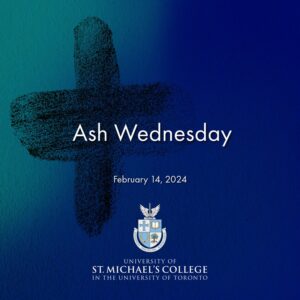
What helps us to stay awake? Here, the great triad of Lenten practices come to our aid. On Ash Wednesday before we receive the ashes on our foreheads we hear in the gospel the call to prayer, fasting, and almsgiving. This same gospel across centuries has challenged the people of God to conversion. On Ash Wednesday Pope Francis, as countless popes before him, will go to the great Dominican church on the Aventine Hill, Santa Sabina, a place where St. Thomas Aquinas himself had lived, to preside over the moving liturgy of Ash Wednesday as a sign that he too, the Pope and Bishop of Rome, is also a man in need of conversion. The occasion also reminds us how our faith is linked across generations of human beings who worshipped God and who desired a conversion that would lead them to a deeper encounter with Christ.
Our waiting needs to include a real attentiveness to prayer. We might ask what prayer? The prayer of the mass, clearly an important communal prayer. But what of our own personal prayer, do we pray and what for? Do we believe in the power of our prayers? Do we pray earnestly and perseveringly, not just for our own needs and family friends who are sick or in need? Do we expand our prayer in a wider way? Every Sunday since the invasion of Ukraine, after the Angelus prayer, Pope Francis has spoken of the need to pray for the people of that country and from October last year he raised the situation in Gaza and other war-torn parts of the world. Do we keep these people in our hearts and in our prayer? Would Lent be a time to do that?
Fasting is often in fashion when people want to lose weight but the fasting that appears in scripture is generally associated with some positive action. From what will we fast this year? Will it be from social media on some day or days of the week? What will be put in its place, a time of silent contemplation, a sensitivity to the needs of others in our family and among our friends? Will we fast from the spirit of criticism that can so easily bring others down and replace that with a smile that can encourage others? In our place of work will we fast from the attitude that implies we are always too busy and instead be attentive to making sure there is water in the hot water jug for the next person to make a cup of tea or coffee? There are a myriad of small possibilities that can make life better for others.
Almsgiving can be tricky when, as many students are, you are living on a tight budget. But the time and attentiveness to the person on the street to whom we may occasionally give money, or the anonymous donation, made known only to God, can be possibilities. When we do not have money to give, we do have time. Even in the busiest schedule there can be the possibilities to give time attentively to others, to the colleague burdened with sick children or parents; to the one who has suffered a disappointment; to the student who is homesick or seriously struggling against mental health issues. Time is often the greatest gift we can give to anyone. The gospel witness is that Jesus always had time for others and as disciples we are called to do the same.
All these practices lead us back to that essential waiting upon the Lord. To sit still before our God, to be humble in heart and mind, that we might listen. In our waiting, that we might glimpse a little more of the passionate love of God for each one of us and in the grace of that love that we might turn our faces to be attentive to the ‘other’ to whom we are sent.
Blessed Ash Wednesday and have a grace-filled and joyful Lent!
1 Pope Francis, homily, Feast of Presentation of the Lord, February 2nd 2024.
Read other InsightOut posts.
Disha Makhijani is currently Executive Assistant at the Division of Continuing Education at the University of St. Michael’s College. Prior to that, Disha worked at the USMC President’s Office. She holds an Honours Bachelor of Science from the University of Toronto.
I remember being 18 years old, wide-eyed and eager, when I first landed in Toronto in 2013 as an international student enrolled at the University of Toronto. I was excited to be a part of frosh week and get moved into Chestnut, the student residence that would become home for the next four years.
I had the privilege of growing up in six different countries around the world because of my father’s job, which gave me a unique perspective in how I approached the world. I am ethnically Indian, born in Turkey and graduated high school from Nigeria, so Toronto represented to me what I’d known my whole life: a melting pot of many different cultures and languages.

As I sit here almost 11 years later, I think back to the many years cycling through study permits, work permits, and permanent residence, all of which finally led to the moment I was sworn in as a Canadian citizen.
While not a typical ceremony (it was over Zoom), the moment I sang O Canada, the Canadian national anthem, it still felt surreal. I remember the many faces on the screen, the presiding judge in his regalia, the comment he made about every person on that call being a representation of what Canada stood for – a country built on immigrants. In more ways than one, I felt like I had achieved the Canadian dream.
The road to get there had not been without challenges, however. As a first-generation immigrant, I knew I would face many more obstacles than perhaps the average Canadian. While the culture in Canada wasn’t a shock, being many thousands of miles away from family was at times isolating. Every weekend the students in my residence would go visit their parents, but unfortunately, my time with family was limited to holidays and summer – so in many ways, I had to “grow up” a lot more quickly in order to manage living on my own.
While at U of T, I was a part of my college’s student council, worked at the University of Toronto Students’ Union, and I was a work-study student at the Hospital for Sick Children. All of these experiences helped me feel I was part of a community. These opportunities helped shape my undergraduate experience and helped me become a the much more well-rounded and confident person I am today.
The year 2017 rolled around, and it was finally convocation day — a cold, overcast day in November. Everything I had worked so hard for in the last four years had finally led to the moment my degree would be conferred. The day was one of celebration with friends and family, but I found myself wondering what lay ahead.
After graduating, I worked service jobs for a few years while I tried my best to land a job that would give me the skilled work experience I needed in order to become a permanent resident. This led to a brief career working as an assistant and receptionist in the veterinary field, which was challenging in its own way. I knew that was not where I wanted to be permanently, but it was important to me, especially as a first-generation immigrant, that I be resilient and not give up.
I got my first big career break working in administration for a large, well-known mental health company. Working in mental health made me feel like I was contributing to a great cause and had a purpose at last. While not exactly aligned with what I studied in university, I was slowly starting to realize that life was not like a monopoly board. It wasn’t going to be one step after another until you reach the finish line – it was more like a game of Snakes and Ladders. Sometimes you were going to be pulled all the way down to the beginning, and sometimes you’d come across unexpected opportunities that led to great places.
I found my “ladder” when I received a job offer to work at St. Mike’s and found meaning in my work.
In many ways, life had come full circle. I now get to contribute in a meaningful way to initiatives that contribute to student wellbeing and success and get to share my own experiences with those who are where I was 11 years ago. Every year when I see new students pouring into campus at orientation I am reminded of where I used to be and smile to myself internally, knowing that life has a way of working out. It is an incredibly rewarding feeling, and one that I would not change for the world. To me, these are the experiences that shaped what it means to be Canadian.
Read other InsightOut posts.
Dr. Theresa O’Keefe is a 1985 graduate of St. Michael’s College with an Honors BA in Religious Studies. She co-founded the Alumnae Initiative for Women (AI4W) with Brenda Sweeney (8T4) and Rita-Marie Hadley Jenkins (8T5). The AI4W’s purpose is to enrich the experiences of all St. Mike’s women through advocacy, leadership, and philanthropy. Theresa is a Professor at Boston College’s School of Theology and Ministry. She lives in Boston, Massachusetts with her wife.
Over the past few years, I have had a great time working with Rita-Marie Jenkins Hadley (‘85) and Brenda Sweeney (‘84) to develop the newest alumni affinity group, The Alumnae Initiative for Women (AI4W). Although separated by many miles (they live in southern Ontario and I in Boston, Massachusetts) and our time together on the campus was so long ago (almost 40 years!), we are each still the young women who met at St. Joe’s all those years ago and so much more! In an effort to honor the gift we received from our time together at St. Mike’s, we want to ensure that women today and into the future also have a great experience at St. Mikes. In the process of dreaming up and hammering out a plan for the organization, we have really enjoyed meeting regularly, mostly via video conference but also face to face.
At this point, we are eager to invite other alumnae to join in the process and have fun. For my part, I am taking the lead on organizing the AI4W’s Conversation Series.
The vision behind the series is to create opportunities to “listen in” on a conversation among alumnae. Each Conversation will be focused on an interest the women hold in common– something that has become their life’s work. Rather than a lecture (there are enough of those at university), something more informal, but moderated. The common denominators among the women are the chosen theme and their membership in the wide St. Mike’s community. Otherwise, they will represent different generations, backgrounds, and entry points in the topic. As we envision it, the topics could range from politics, to literature, to science, to art, to business, to banking, to the environment, to religion, to…you get it. The possibilities are as wide as the gifts of the talented women who have passed through St. Mike’s!
These conversations will be an on-campus event, perhaps paired with a little refreshment. Suddenly, it’s a fun opportunity to catch up with friends, network with people, and even enrich the opportunities for current students. This is getting exciting, isn’t it?
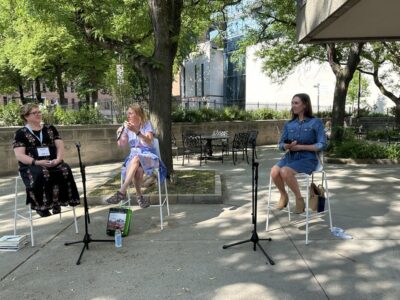
The AI4W piloted the idea at the Spring 2023 Alumni Reunion, as the final element in “The Day of Learning,” which had included lectures by SMC faculty. The “Conversation on the Writer’s Life” featured three St. Mike’s alumnae, who each shared their experiences of writing and publishing fiction and poetry. They were novelist Natalie Jenner (1990), whose Bloomsbury Girls (2022) and The Jane Austen Society (2020) have been international best-sellers; poet Kate Marshall Flaherty (1985) whose books of poetry include Titch (2023) and Radiant (2019); and Laura Rock Gaughan (1986), whose short stories have been published in literary journals as well as her collection Motherish (2018). All this was moderated by Laura, who is also the Executive Director of the Literary Press Group. As expected, it was a lively and entertaining discussion about their writing processes, how writing shapes their lives and identity, and the challenges of publication. By all accounts, it was a highlight of the day’s programming.
The Conversation series is a simple and engaging format that we envision offering up to four times a year, tied to existing campus events in March (International Women’s Day), June (Spring Reunion), September (Grad Week), and November (Convocation). Each Conversation would be themed to the expected audience for those events.
I need two or three St. Mike’s women to join me in envisioning and executing future Conversations. I imagine a regular schedule of video calls across the year to plan a year’s programming. Since I live so far from campus, it would be best to have people in Ontario, to facilitate hosting the events (with SMC staffers) and be more aware of St. Mike’s alumnae who are doing interesting things and living interesting lives.
Interested? Curious? Please reach out to me through the Advancement Office with your inquiry. They know how to reach me, then we will go from there. I look forward to meeting you and having a conversation!
Read other InsightOut posts.
Monica Diaz-Greco is a graduate of St. Michael’s College with an Hon. B.A. in 2000 and an M.RE. in 2010. She is currently completing a Master in Theological Studies degree. Monica is a seasoned educator and the mother of a child with epilepsy. She has become a tireless advocate for epilepsy awareness and support. Monica and her husband Daniel are the founders of Emma IS, a non-profit named for her daughter, Emma, which creates awareness of epilepsy and infantile spasms and raises funds for IS research.
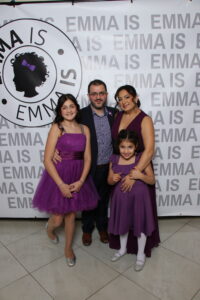
When my daughter Emma was diagnosed with a rare form of epilepsy at just seven months old, it marked the beginning of a transformative journey for our family. Now, almost 10 years later, our story is one of resilience, triumphs, and an unwavering commitment to advocacy and awareness.
Emma’s diagnosis of Infantile Spasms, a rare form of epilepsy, came as a shock. Prior to her diagnosis, Emma was developing normally; however, every two weeks or so, she would make a strange type of movement that resembled the startle reflex. My husband and I actually laughed about it and recorded it so that one day we could show her this funny movement she used to make.
One day, Emma did the movement again, and for some reason, it didn’t sit well with me. Something seemed off. A Google search led me to a YouTube video of a child doing something very similar, with the description: “If your child does anything like this, rush them to the nearest children’s hospital. This is a medical emergency.”
After a visit with her pediatrician, we were fast-tracked for an electroencephalogram (EEG) at SickKids (the only way to determine if a child has Infantile Spasms is through an EEG). Emma was scheduled to have one the next day, but in my heart, I knew she had it. The time before her appointment was spent researching Infantile Spasms, and the results weren’t pretty. Words and phrases like cognitive delays, some children don’t walk, genetic condition and a high chance of autism stayed with me. I stopped eating and sleeping. The fear was crippling. I cried a lot. After watching a technician attach countless electrodes to Emma’s head, once the EEG was complete, we waited, not knowing what was next. When three doctors entered the room to discuss the results of her EEG and to give us her diagnosis, the air left the room. Yet even though we heard what we didn’t want to hear, this time, I didn’t cry. My first words were, “So, what’s next? What do we do now?” These questions seem to guide me in every part of my journey of being a parent to a child with epilepsy.
The guiding questions, “What’s next? What do we do now?” became our compass, steering us through the tumultuous sea of uncertainty. They guided us when my husband and I established Emma IS, a non-profit organization that spreads awareness for Infantile Spasms and raises funds for research at the Hospital for Sick Children in Toronto. They guided us when we decided that Emma should have two surgeries, with one being brain surgery. Decisions were never easy, and the weight of worry and tears accompanied each one. But through it all, we kept fighting. Emma’s journey became more than just learning how to care for her; it became an opportunity to educate others and shatter the stigma surrounding epilepsy. We quickly learned that there is much work to be done.
In 2021, we took a bold step by presenting a delegation to the Toronto Catholic District School Board to recognize Purple Day for Epilepsy Awareness. The following year, in collaboration with Epilepsy Toronto, I developed lesson plans distributed to schools, pushing for awareness of seizures and first aid treatment and understanding of people living with epilepsy. Most recently, we celebrated a significant victory in November with the passing of Motion 68 in Queen’s Park, advocating for a comprehensive epilepsy policy in Ontario schools. This is a big victory for Emma, but also for other people living with epilepsy. Motion 68 calls for school boards to train their staff on the administration of epilepsy emergency medication. Similar to the training that school staff receive on the administration of the EpiPen, they will be trained on the signs of a seizure, when emergency medication needs to be administered, but also how to administer the medication. We are happy, relieved, and grateful that people will know more about epilepsy.
While we continue our advocacy work for Infantile Spasms and epilepsy, we are always asked What’s Next? or we ask ourselves, What Do We Do Now?. We know our journey with epilepsy will continue to be a roller coaster of emotions as we navigate obstacles along the way. As caregivers, we continue to navigate the complexities of Emma’s life journey while tirelessly working to break the stigma associated with epilepsy. The road ahead may still be uncertain, but with every triumph, we find strength, resilience, and a renewed commitment to making a difference in the lives of those touched by epilepsy.
Read other InsightOut posts.
Carl O’Byrne is a graduate of the University of St. Michael’s College. He has a background in education. Currently he is the coordinator of All Inclusive Ministries (AIM). He is the first of several writers to contribute periodic posts on issues related to the Synod on Synodality.
On October 3, the Dicastery for the Doctrine of the Faith published Pope Francis’s response to “dubia” (questions or, more accurately, literally “doubts”) presented by several Cardinals. The dubium, with its response, that concerns this blog is the second of five: 2. Dubium regarding the assertion that the widespread practice of blessing same-sex unions is in accordance with Revelation and the Magisterium (CCC 2357)
My first reaction to this news was, “How is it possible for the Pope or anyone to give a response to such a complex question with essentially a short ‘yes’ or ‘no’ answer? Surely an impossible task.”
I realized that the question bugged me far more than the response. Not surprisingly, there was immediate media analysis, and coverage regarding this matter. Much of it hurried, so as to make the evening news (for those who still watch) with viewable sound bites.
For me: Enough already.
A couple of days after the Pope’s response, my partner and I took a drive up to the Bruce Peninsula. That day trip through the mystical landscape of the Bruce, for me, brought together Bette Midler; Job; Grace, a long-time resident of Cape Croker; and Pope Francis.
Among her many talents and lasting presence in various media, Bette Midler remains a gay icon. Justifiably so. The opening verse of Bette Midler’s 1973 song, Friends, alternatively titled You Gotta’ Have Friends, asserts:
And I am all alone
There is no one here beside me
And my problems have all gone
There is no one to deride me

Being alone is seen as the only possibility where problems can go away: a place psychological or physical, with no one else present to deride. It is also a state of being that aptly describes the condition of many Roman Catholic 2SLGBTQ+ people here in Toronto, and globally. Too often, and for very understandable, valid reasons, 2SLGBTQ+ people have left the Church. Within that specific context, we, 2SLGBTQ+ people are alone. Very, very alone. Again staying within this context, we do not have to contend with, or respond to, any dubia. And still, staying in this narrow context; bonus! there is no one to deride us.
But being alone – often deliberately, cruelly, and rather skillfully excluded from our faith communities in the Archdiocese, and its many parishes, by many of those ordained to manage, and to minister to, in a pastoral way, the needs of all, including 2SLGBTQ+ people – is not the way humans live.
Friends are important. In the Bible, the Book of Job has a great deal to say about friends, and friendship. In the face of unbearable suffering Job’s friends come to him. In silence first. Their physical presence might have been enough. But then they opened their mouths; to me, insensitively at best, offering Job official-party-line – the objective truth of the time – explanations as to why Job is the way he is, and then outlining what Job is to do. Ultimately God was displeased with the friends’ intrusion. Job’s friends were – precisely because they were his friends – good, well-meaning people. To me, the scarlet Cardinals who authored the recent dubia are good, well-meaning people, sincere in their certainty as they are certain in their fashion sense — i.e., Gammarelli surplices. Their doubts, among other things, give rise to discussion as to how people relate to others, themselves, and ultimately to God. This is a positive. The Pope’s response further continues this discussion about human relationships: friendship, and the necessity, importance, and limitations of friends. So too, does Bette Midler.
But ya got to have friends
The feeling’s oh so strong
Ya got to have friends
To make that day last long
After lunch we — my partner, our dog, and I — were driving through the lands on and around Cape Croker. My partner had never been to this part of Ontario and I was happily playing tour guide. Many years ago I often had occasion to go to the Saturday market in Owen Sound. I always bought fish from a particular merchant. He was Indigenous. His wife was the fisher. They lived on Cape Croker. His job was to transport and then sell, at the Saturday market, the fish his wife had caught. We always talked, and he relayed cooking instructions to me from his wife.

As we were driving, I noticed an elderly woman standing by the side of the road. She had a cane and was hitching a ride. I slowed the car and was pulling over to pick her up when my partner – an urbanite, and from a generation that never hitched rides, or picked up hitchhikers – voiced concern, concern bordering on near panicked alarm. He also watches scary movies, and horror-filled TV series.
I picked up the hitchhiker. My partner, without being asked, out of politeness, had joined our dog in the back seat, giving our guest the front seat and more space. We introduced ourselves. Her name is Grace. She with her boyfriend have lived on the Cape for nearly 40 years. I asked her where she was going and, even though it was slightly off our planned destination, we offered to drive her there. She would not hear of it. She asked me to drop her at the turn-off we would be taking. I protested. The wind was biting. She insisted. She stated that she had many friends on the Cape who knew her, and that she would not be alone for long as she waited for another ride. In the short time she was with us, much was discussed. Along the road were the many orange signs proclaiming the rights and aspirations of Indigenous people. Surprising to me, we drove past someone’s house, in front of which was a small, well-maintained shrine to the Virgin Mary. I remarked on the statue, and wondered aloud how it was that the statue was not vandalized given the past history of the Indigenous people with the Church.
Grace’s response, unlike the Papal response in far-off Rome a few days before, cut to the heart of the matter. “You’re still Catholic, and gay. You guys look happy. You haven’t let anyone wreck you. It’s the same with that statue.”
She knew we were gay. That was easy. She explained that the reason she had figured I, at least, must be Catholic, like her, was that I had noticed, and commented “nicely” on Mary.
Standing at the end of the road, boys
Waiting for my new friends to come
I don’t care if I’m hungry or poor
I’m gonna get me some of them
Pope Francis, like Bette Midler, Job, and Grace, is very much aware that human connection actually exists in this world. The Pope writes “… in our relationships with people, we must not lose the pastoral charity, which should permeate all our decisions and attitudes. The defence of objective truth is not the only expression of this charity; it also includes kindness, patience, understanding, tenderness, and encouragement. Therefore, we cannot be judges who only deny, reject, and exclude.”
All Inclusive Ministries (AIM), a Roman Catholic LGBTQ+ organization, is one possible, and partial, response to the above. AIM is a place where people gather to meet, talk, and be. It, and we, 2SLGBTQ+ folk choose to focus on the more positive aspects of pastoral charity the Pope highlights. We are grateful to the Jesuits (Society of Jesus) not just for their pastoral support at the height of the AIDS crisis in the mid-1980s, but for their continued and sustaining friendship and support throughout the years. We are grateful for and cherish the Toronto Dominicans (Order of Preachers) for the words of friendship they offer to us in their homilies. And to the University of St. Michael’s College for its friendship, evidenced in much appreciated and necessary practicality – its ongoing hospitality to 2SLGBTQ+ people, and AIM – providing welcome space at the Kelly Library for AIM Movie, and AIM Book.
My reaction to the Pope’s recent comments?
Here we, LGBTQ+ people, are, here we will stay. How is this going to be?
We will figure it out.
Bette Midler. Friends. To listen click here.
As part of the spiritual conversation that is part of the Synod, InsightOut will be sharing posts from various community voices, touching on key topics that have arisen during the synodal process .
Read other InsightOut posts
Gordon Rixon, S.J. is a member of the Regis St. Michael’s Faculty of Theology and President of Regis College. He has been a member of the program staff at the Jesuit Centre for Social Faith and Justice, a Senior Resident at Massey College at the University of Toronto, a Scholar in Residence at the Institute for Ecumenical and Cultural Research at St. John’s University, Collegeville, Minnesota and a lecturer at the Jesuit College of Spirituality in Melbourne, Australia. He has served on the Board of Directors of Covenant House, Toronto, Université St. Paul, Ottawa, and the Lonergan Research Institute, Toronto.
In the recently concluded first session of the Synod, Pope Francis has (re)introduced the Church to spiritual conversation. As an iterative process of prayer, reflection, and structured exchange, this experientially based shared reflection is as ancient and contemporary as practicing faith communities. Such faith-informed dialogue invites profound transformation of individual and shared practice of the faith that brings to light and eclipses ideologies and political positioning. While the description of spiritual conversation sounds simple, and its practice is straightforward, the pursuit and fruits of spiritual conversation depart dramatically from the common polarizing civil discourse that characterizes public exchange today. To appreciate the quiet revolution that Francis is introducing, let’s consider spiritual conversation in its most basic form in small group settings and then highlight its significance for larger faith communities and the universal Church and their engagement of civil society.
In its basic small group form, spiritual conversation could be a three-moment process. The first moment could involve a short period of quiet, reflective prayer. During this time, a person notices their interior, spiritual responses to a prompt, such as recalling times of encouragement, joy, sadness, and discouragement in the past month. Participants could ask themselves: When have I felt drawn into a closer union with Christ, family, friends, and co-workers? When have I felt isolated from Christ and those with whom I live and work? Were there tepid moments when I was drifting away from a closer union? Moments associated with soft addictions such as extended periods of passive media consumption. Were there difficult periods when I was moving into closer union? Moments related to the cost of being in solidarity with those who suffer racism, homophobia, or other forms of social exclusion. What interior or exterior events triggered shifts in the direction of my spiritual movements? Perhaps easily overlooked events sparked the development of dispositions of gratitude and generosity or self-promotion and self-protection. Then, after taking a moment to consider, among the things I have noticed, what I might share with others that would respect others and build trust in the group.
The actual sharing is often relatively brief and structured by a spirit of deeply respectful listening without immediate discussion or challenge. After holding what others shared for a few moments of further reflection, a second round of sharing begins. Here, the invitation is to notice the spiritual movement in the present moment. Where do I see a movement to union with Christ in the sharing? How is the group being moved in the present moment? Cultivating this heightened awareness takes time, practice, and a willingness to make, notice, and learn from mistakes. The valuable fruit is the gathering of reflective data and the increased capacity to enter further and continuing conversations that nurture the intellectual flexibility, affective freedom, and thoughtful discernment required to walk with others in the service of a divine project beyond the definitive grasp of any isolated participant.
A Synodal Church in Mission, the Synthesis Report of the recent synod, clearly affirms that the Church does not have a mission but is a mission (section 8). This enigmatic phrase draws attention by contrast to the distance separating the story we tell about religion from the spiritual intimacy expressed in the events of our daily lives. As individuals and communities, we participate in the creative contention of Spirit and Word. The Spirit is the very life force, the breath we received as gift. The Word shapes breath in the events gathered into the Christian tradition, most centrally those conveyed in and by the Paschal Mystery of Christ’s passion, death, and resurrection. For us, a fuller resonance between spirit and word, interior movement and self-disclosure in conversation and action, cultivated in spiritual conversation, is a constant aspiration. Our lives are a pilgrimage—sometimes penitential as we acknowledge evident shortcomings, sometimes searching for a God still unknown, sometimes savoring the quiet intimacy of interior movements at the dusk of day. Only in the life of Christ do we see a perfect, harmonic resonance between the gift of Breath and its eloquent Expression in history.
In the synodal process, Pope Francis reminds us that we do not travel the path alone. The first phase has been a gathering of those who journey together, an admonishment not to leave companions to the side, and an invitation to listen carefully to the voicing of the Spirit in human experience. The second phase, coming in a year, will undoubtedly continue to draw our discerning attention to the immediacy and urgency of the Spirit calling us to serve a world in need of hope.
As part of the spiritual conversation that is part of the Synod, InsightOut will be sharing posts from various community voices, touching on key topics that have arisen during the synodal process .
Read other InsightOut posts
Tina Drakeford is a PhD candidate in her fourth year at the Regis St. Michael’s Faculty of Theology. Her areas of interest are ecclesiology and Catholic education, and particularly how we might understand Catholic schools in Ontario as expressions of Church. Since 2006, Tina has also been blessed to serve in Catholic education as an elementary teacher, a special education teacher, and on board-level committees throughout her time in the public Catholic school system.
Sonal Castelino, xmcj is the Director of Campus Ministry at the University of St. Michael’s College.
On October 5th people gathered on the lawn of Christie Mansion to witness the unveiling of the white tent that mysteriously appeared in August.
As the cloth was removed the gathered saw the sculpture that is, at first, overwhelming, of multiple figures surging upwards from underground and a woman holding open a trap door. As we look closer, details begin to emerge: the figures take the form of almost 100 different individuals that are personified stories of human trafficking. There are figures of all ages from a newborn baby to child soldiers, forced beggars, migrant workers, and people who look just like you or me. The sculpture hosted by Regis College that sits on the Christie Mansion lawn is a replica of the original one that stands in the Vatican and was blessed by Pope Francis this past February. On that sunny October morning at the unveiling, artist Tim Schmalz spoke to those gathered and shared his inspiration for this work. The woman is St. Josephine Bakhita who, in the artist’s words, is an “African saint who was in a previous century a slave, opening up the underground to let modern-day slaves go free.”
The artist had previously created a sculpture, Angels Unawares, inspired by the refugee experience that was also installed in St. Peter’s Square by Pope Francis. So moving was this first piece that the Vatican requested a second piece addressing the issue of human trafficking. Let The Oppressed Go Free is the answer to that request. Schmalz describes this work as exploring the “horrifying scope” of human trafficking, something that is often invisible, affecting all nationalities and people from all circumstances in life. In particular, Schmalz highlighted that he included victims designed to appear “normal” to dispel the stereotype that the victims of human trafficking are always easily identifiable.
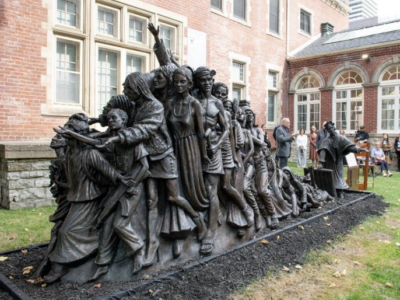
Another major inspiration for the final form of this work comes from words spoken by Pope Francis: “Human trafficking will always exist as long as it remains underground.” Let the Oppressed Go Free is a visual representation of the survivors of human trafficking literally being released from underground. But beyond this visual representation, we must move forward and ensure that the reality of human trafficking isn’t buried in whispered conversations but rather is spoken of boldly so that, equipped with knowledge, we can work for change and move towards justice.
One of the ways this sculpture is helping to do that is through a school program that saw about 200 students from grades 7 through 10 visit the Regis and St. Michael’s campuses on October 24th. These students hailed from three schools in the Dufferin-Peel District School Board, including St. Josephine Bakhita Elementary School. The school program is being coordinated by representatives from St. Michael’s Campus Ministry and the Regis St. Michael’s Faculty of Theology. Both the elementary and secondary students had the opportunity to visit the sculpture, hear Schmalz speak about his work, and to learn about human trafficking. The secondary school students also participated in a migrant worker activity led by the Social Justice and Care for Creation ministries of the Sisters of St. Joseph that highlights human exploitation through the temporary foreign worker program in Canada, while the elementary students engaged in an art-based activity designed to deepen their understanding of agency and choice in grade-appropriate ways, facilitated by the Centre for Jesuits International.
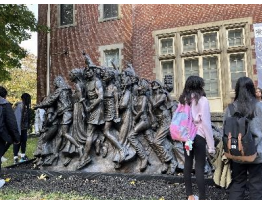
In addition to the learning activities around human trafficking, students also had the opportunity to visit various stations throughout campus and explore pieces of art ranging from Schmalz’s other works, Homeless Jesus and the Dante Gardens, and the St. John’s Bible. Throughout the day, students were invited to consider ways they can make an impact in the world around them, and how God is calling each of us to work for justice for those who are oppressed.
Let the Oppressed Go Free is presently on loan here on the Christie Mansion lawn. We invite you to take some time to visit, to reflect, and to consider how we bring the issue of trafficking up from the underground and continue the work to let the oppressed go free.
Read other InsightOut posts
Dr. Felan Parker is a Professor in the Book & Media Studies program specializing in digital media, video games, and media industries. His current research explores the production, distribution, and reception of independent or “indie” games, and the role of fan conventions like San Diego Comic-Con in contemporary popular media cultures.
University of Toronto Quarterly recently published Prof. Parker’s review of The Far Shore: Indie Games, Superbrothers, and the Making of Jett, as part of their big “Letters in Canada 2021” omnibus issue.
San Diego Comic-Con (SDCC) is not just any comic con, it’s the Comic-Con – with a copyrighted hyphen to prove it. Although fan conventions celebrating popular media like comics, games, film, and television can be found in all corners of the world, SDCC occupies a privileged place. Over the course of its 50+ year history, SDCC has become a key venue for both grassroots fan community and large-scale media industry promotion, driven by much-vaunted claims of exclusivity: exclusive collectibles, exclusive previews, exclusive celebrity appearances, and exclusive access (approximately 130,000 people attend each year, many more wish they could). The convention takes place over five days in July and offers something for practically everyone: panels and workshops large and small, cosplay (dressing up as pop culture characters), signings, a massive exhibition hall full of retail booths, screenings, gaming, interactive promotional activations, portfolio reviews for aspiring creators, and a lot of walking around and waiting in line.
SDCC has been the subject of extensive academic research; it offers a unique site to investigate the relationship between audiences and media industries, and the intermediaries (including SDCC itself) that shape those relationships. This is a rich body of work, but the daunting scale and scope of SDCC means that every attendee has a different experience, and it is impossible for one researcher to apprehend the event in its totality. My colleague Benjamin Woo (Carleton University) and I decided to try something different: what if we studied SDCC with a large, coordinated team of researchers?
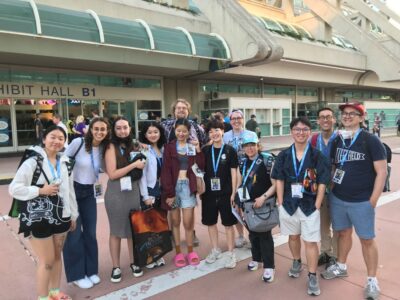
Inspired by previous methodological experiments in “swarm ethnography” and “collaborative event ethnography,” we assembled an all-star team of fandom and media industry scholars, graduate students, and undergrad students from the Book & Media Studies program. The goal of this project, dubbed Swarming San Diego Comic-Con, was to better understand the role of SDCC in contemporary popular culture by conducting up-close and personal ethnographic research from a wide variety of different perspectives, simultaneously. We successfully applied for a SSHRC Insight Grant to support a research trip to SDCC, originally scheduled for 2021 but ultimately delayed until 2023 by the ongoing pandemic.
After a crash course in ethnographic research methods and a test run at the much smaller, less mainstream Toronto Comic Arts Festival, we set out for San Diego with our six intrepid undergrad researchers in tow. Even after reading extensively about SDCC and hearing from more seasoned con-going members of the team, nothing can prepare you for its overwhelming magnitude and dizzying range of activities demanding your attention. For Shurui Wu, the research trip allowed her to combine her life-long fandom with her academic interests – disembarking the trolley in front of the San Diego Convention Centre for the first time and seeing the massive crowds of fellow fans was a “dream come true.”
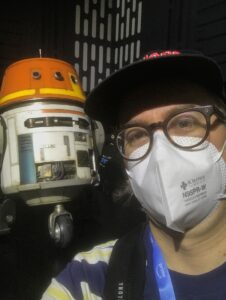
Over the course of SDCC, the “undergrad squad” (as they dubbed themselves) had many unique and exciting experiences. Along with several other members of the team, Esmé Sanders was delighted to have the opportunity to see Japanese horror comics master Junji Ito in the flesh. “Lining up for 2+ hours and getting front-row seats was rewarding and made me feel like I got the full Comic-Con experience. I enjoyed watching Junji Ito draw live. It’s a privilege to see the behind-the-scenes process of some of your favourite art!” Jae Kim and Brian Tin shared their own similar experience of getting up before the crack of dawn and joining a huge line to score an exclusive Star Wars Tamagotchi toy featuring Grogu, AKA Baby Yoda.
Indeed, lining up is a big part of attending SDCC, and the lines not only build anticipation but also are important space for community-building. Jae Kim found the environment more friendly than he imagined, highlighting the important social aspect of the convention that is easily overshadowed by the flashy Hollywood promotion and consumerism. “Starting up conversations with people in lines, by the entrance, and even in washrooms came to me like second nature. In a way, it reminded me that we were all at SDCC because we were all fans, which was a nice sentiment to have amidst the chaos.” Likewise, Debi Jin was thrilled to happen up on an autograph signing session with Makoto Yukimura, creator of the popular manga and anime Vinland Saga. Although the signing was only for people who registered in advance, she joined a small group of fans looking on. “As I looked at the faces of those in our little group, however, it seemed to me that we were all just happy to be in Makoto Yukimura’s presence. After he signed the last lucky fan’s merchandise, we all clapped and slowly went our separate ways.” The experience of seeing beloved creators in the flesh is enhanced by the communal atmosphere of the con.
Students also observed that the demographics of SDCC were not what they expected based on their experiences in fan cultures, which are often unwelcoming spaces for women, people of colour, queer folks, and other groups marginalized on the basis of identity. “Before going, I expected a hyper-masculine space filled with sweaty (and sometimes smelly) fans (myself included),” Brian recalls. “But the diversity of con-goers, in terms of age, gender, race, really pleasantly surprised me (and the venue smelled reasonably fine).” Nevertheless, there remain many issues around inclusivity and access. Esmé noted that while there were many fans with disabilities in attendance, accessibility accommodations were lacking: “it still seemed like a hectic place to navigate with an assistive device. It underscored the need for even more comprehensive accessibility measures at events like these.”
Although SDCC 2023 was billed as a return to form after several years of online and smaller-scale cons, the announcement of strike actions by the Writers Guild of America and later the Screen Actors Guild-American Federation of Television and Radio Artists against the Alliance of Motion Picture and Television Producers made labour issues in Hollywood and beyond a unexpectedly central area of interest for the project. Would SDCC be diminished by the lack of big Hollywood stars promoting their work? Or would it be a return to an imagined grassroots past before Hollywood took over? Even though she would have liked to see celebrities, Shurui wasn’t too disappointed, because there was still plenty of exciting content from other sectors of the global entertainment industries. “I was surprised by how many Japanese companies where there, and the scale of their booth and activations. This made me finally understand how influential Japanese [media] industry is.”
The focus on labour issues also raised questions about how fans are compelled to participate in marketing and promotion. “One moment I found particularly striking was when fans were lining up to advertise (post) on social media pictures of the Hello Kitty x MetaZoo booth for a chance to win a gift basket,” Esmé says, echoing fan studies discourses on fandom as a form of unpaid labour. “It felt like a lot of physical labour and free advertisement.”
The research trip concluded with a debriefing and brainstorming session with the whole team at UC San Diego, where students compared notes, shared insights, posited initial observations, and raised unanswered questions that will help guide our research as we move into the data analysis and knowledge mobilization phases of the project. These invaluable contributions from Book & Media Studies students will help shape our understanding of San Diego Comic-Con and its place at the intersection of popular media industries and fan cultures.
Read other InsightOut posts
Richard A. Dollinger (SMC 7T3) is a retired attorney and state court judge in Rochester, N.Y. He has been married to Dr. Marilyn Longo Dollinger, UofT ’74 for 48 years and has three adult children.
It started haphazardly. A few St. Michael’s College graduates from yesteryear were still keeping in touch, despite living in disparate parts of the continent: a retired Wall Street finance guy, a retired lawyer and advocate, a retired judge, a retired mediator and arts and museum promoter and a retired speech-language pathologist.
They shared a common past, more than 50 years ago. They had the time of their lives at St. Michael’s: hanging in Brennan Hall until the building monitor closed it, grabbing a brew at the Bay Bloor or the Chez-Moi or, if your grandmother sent you a birthday gift of “portable property,” a more expensive draft at The Bull & The Bear, singing on the steps of Loretto, lounging in a used chesterfield in an apartment near Yorkville, dragging on a cigarette or some other leafy substance near Rochdale, listening to guitars up and down Bloor Street playing all varieties of music, falling asleep in the too warm, too comfortable, too cozy Kelly Library.
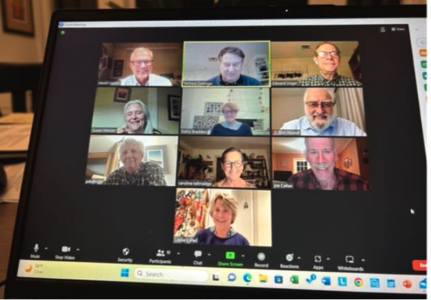
So, while the years had passed and distance seemed to hinder further exchanges, technology made the present more attainable. During one of the occasional telephone conference calls, one of us said something never uttered by any professor during our time at St. Mike’s: “Let’s try a Zoom.”
Almost instantaneously, another of us replied: “Let’s form a book club on Zoom.” Idle banter about aging would be replaced with discussion of ideas, characters, themes, styles, plots – just like sitting in Professor O’Grady’s literature class in 1972.
The idea percolated. The next step: recruit some of the SMC folks we shared our time with at the College and see if they might join the club. We recruited: several barristers, more retired bankers, a carpenter, a political science pro, retired teachers – spouses and brothers-in-law of the above – some latecomers to Toronto and those who headed for other pastures before graduation.
The group Zoomed from Chicago, South Carolina, Ottawa, Howe Island in the St. Lawrence, northern Ontario (which had broadband challenges), New Jersey, Toronto, and Rochester.
Participation was top heavy with Westerners – graduates of American high schools who, back in the old days, did grade 13 at St. Mike’s. A bunch of those Americans stayed in Ontario, while some headed south after graduation.
Now, half a century later, we did what we often sought to escape while at St. Mike’s – commit to read a chosen book every two months and sit with our peers and discuss it. One of the members would choose the book and lead the discussion. We started with The Midnight Library by Matt Hague but soon plunged into even meatier books including Fight Night by Miriam Toews, the Canadian author whose focus on the experience of Mennonite women led to the movie Women Talking. Fight Night inspired the group.
We reviewed one book written by one of the participants which explored, among other topics, the concept of “point of view” in a novel. We examined a series of short stories written by one of our classmates, a retired advertising executive who led the discussion.
We ran through Demon Copperhead, the 21st- century echo of Dickens’s David Copperfield. We wolfed down Heartsong of Charging Elk, written by the Native American Renaissance novelist James Welch, that challenged our sense of cultural and racial identity.
We also read about recent Irish history in Fintan O’Toole’s book We Don’t Know Ourselves. We examined non-fiction as well, first on global challenges and upcoming on the issues involved in guns and violence.
The discussion and debate reprised dialogues and debates in Fisher and More Houses, in the Elmsley residences, in classes and during coffee klatches in Brennan Hall, or while sipping Mateus or 409 in unclaimed freight-adorned apartments.
In short, when on Zoom, we are back at SMC, reliving what we had treasured before we went our ways into the world. The lesson is the same 50 years later: better friends, challenged thinking in the face of new and different ideas, translating complex thoughts into understandable prose, translating fiction and non-fiction in new perspectives on problems new and old – that SMC education continues to work for us.
We have carried it with us, a book of inspired wisdom, given to us back then by SMC but even more appreciated now — in the age of Zoom.
Read other InsightOut posts
Paul Babic is a first year MDiv student at the Regis St. Michael’s Faculty of Theology with a background in Philosophy and Religious Studies from McMaster University. He, too, took part in the inaugural Catholic Perspectives on Ecumenical and Interreligious Movements course in Rome this past summer. With his MDiv, he hopes to help and serve those “who may feel as though God has abandoned them.” In his spare time, he enjoys blogging, lots of coffee, conversations with friends, and long walks.
I’ve tried many times to write about why I loved Rome. I think I’ve failed to do so because, truth be told, if I were to list everything that I loved about it—all the priceless works of art, the winding streets, the beautiful churches—then I wouldn’t be able to stop. My writing would be aimlessly adrift, with no point, and simply in awe of what I felt while I was there.
It’s certainly true that Rome lives up to her reputation: she is the Eternal City. She contains countless treasures to be adored, be it the Sistine Chapel or a Pope-approved gelato on Via Gregorio VII. Not to mention that, for the first time, I found myself at the heart of the Catholic Church and its faith, which is, of course, the faith that led us all there. To have not only studied large swaths of Christian history at the Centro Pro Unione but to have visited so many of the basilicas and sites of pilgrimage gave me a very intimate experience of just how ancient and incarnate Christ’s Church really is.
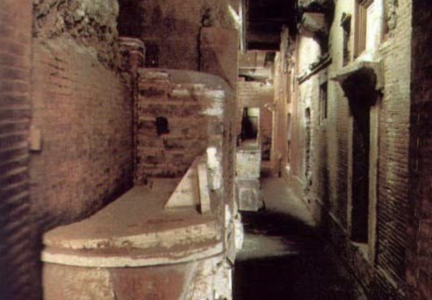
To give you just one example, I was deeply touched by our visit to St Peter’s tomb. This was not the only tomb of the Apostle that we would see, but it was the only one whose history was explained to us in great detail and, as we fought the humidity beneath that fabled basilica, we listened to how Christians kept track of Peter’s tomb for centuries. We heard how it was distinguished from the other graves, how Constantine encased it in marble, how it was eventually buried, and for long after seemed like nothing but an urban myth. Then, in the 20th century, it was discovered and excavated, and now it is possible to see as part of that lost necropolis today. As I saw it for my own eyes, I can remember thinking of how many pilgrims have done the same; I thought of how this was, in many ways, representative of the Church’s apostolic memory; and, of course, I thought of whose bones lay right in front of me, and who he gave them up for.
But amidst these enchanting experiences, aside from awe, I felt something else: I felt grateful, and I felt that way because, one year ago, I would have never imagined the opportunity for such an adventure. Rome was the kind of thing I would only see in films, and it felt very far away. Surely, for any Catholic who studies theology, studying in Rome—for any period—is like a dream come true, and when I saw the opportunity to do just that, I jumped at it. Had it not been for that, I might never have seen those sights in Rome for a few more years at least, if not many more than that, but even then, I’d certainly wouldn’t have had those experiences because I did not go alone. With me, there was a terrific cohort from Regis St Mike’s, and what fond memories we made together!
However, I’m not simply grateful to have had great travel companions. Leaving aside the spectacle for a moment, I also wanted to thank the University of St Michael’s College and the Centro Pro Unione for making it all possible. Additionally, I’d like to thank our President, David Sylvester, and his wife for coming to visit us; our Archbishop, Francis Leo, for the hospitality and kind words he shared with us at the Canadian Pontifical College; the kind funding for the program from donors and, of course, our professor, Mike Attridge, without whom none of this would have been possible.
All of that to say, I fell in love with Rome during my three weeks there, and for anyone doubting whether or not to give experiential learning a go, I’d urge them to put their doubts aside because I promise that you won’t regret it.
Read other InsightOut posts
Rosemary Boissonneau is a climate justice activist and a doctoral candidate at Regis St. Michael’s Faculty of Theology, where she studies ecotheology and scripture. Her research involves applying ecofeminist and decolonial methods to the interpretation of Old Testament texts in order to retrieve an understanding of the land as the mother of earthly life and the medium of God’s blessing. Before embarking on graduate studies, Rosemary enjoyed a long career as an elementary school French teacher.
When I decided to go back to my undergraduate alma mater, St. Michael’s College, to pursue theological studies after decades away from university life, I knew that I would enjoy returning to fondly remembered places from those bygone years, like the Kelly Library and the Coop. However, I never expected that being a St. Mike’s student again would lead me back to Rome, a city I had visited only once before, during the third year of my undergrad studies. Yet, thanks to St. Mike’s commitment to experiential learning and ecumenism, I found myself once again in Rome this past summer as one of eight lucky students participating in the Faculty of Theology’s new course, “Catholic Perspectives on Ecumenical and Interreligious Movements.”
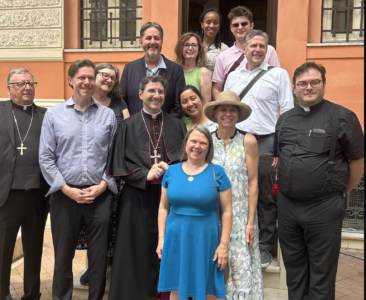
This intensive summer course is the brainchild of Professor Michael Attridge, and it is structured around three weeks of classes in ecumenical and interreligious dialogue at Rome’s Il Centro Pro Unione, an institute dedicated to the study and promotion of ecumenism. The Centro’s annual summer program consists of morning lectures by experts in ecumenism and interfaith relations followed by afternoon excursions to important historical Christian sites like St. Peter’s Basilica, St. John Lateran and St. Paul’s Outside the Walls. Students also visit the Grand Mosque of Rome and the city’s Great Synagogue as well as the Vatican dicastery offices for promoting Christian unity and interreligious dialogue. Aside from the programming provided by the Centro, Professor Attridge arranged many extra outings and experiences for us students in the St. Micheal’s course. Whether it was a tour of the Pontifical Biblical Institute, vespers and supper at the St. Egidio Society, or the Sunday Angelus led by the Pope in St. Peter’s Square, Professor Attridge was always there to guide us with his kindness, knowledge, and inexhaustible energy and enthusiasm.
Another significant perk of the course was that the students’ accommodations in Rome were paid for by a special St. Mike’s fund dedicated to ecumenical studies. This made the course accessible to cash-strapped students like me, but it also helped foster a great sense of community among the students and Professor Attridge as we all stayed at the same hotel atop a hill a short distance from St. Peter’s. We began our days communally with breakfast in the hotel’s restaurant and often capped off our evening by sharing wine and conversation in the hotel courtyard at sunset.
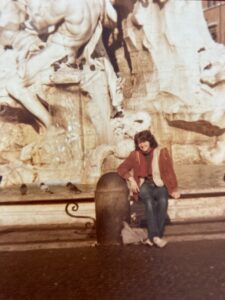
By contrast, my first visit to Rome almost four decades ago was a much less structured affair, but it, too, was very much shaped by my connections to St. Mike’s. Like this summer’s trip, my earlier stay in Rome would not have happened if I had not been a St. Mike’s student involved in experiential learning. With the intention of being a French major in university, I was drawn to do my studies at St. Mike’s because of its highly regarded French department and the possibility of completing my third year in the south of France as part of the University of Toronto’s now-defunct Study Abroad Program. Also, due in no small part to the strong Italian cultural presence at St. Mike’s, I chose to complement my French studies with a minor in Italian. Thus, I found myself in my third year as a St. Mike’s undergrad in Aix-en-Provence, France, near Italy, making plans to test out my Italian by spending the Christmas break in Rome along with another student from my course. My brother, who was doing a doctorate in theology at St. Mike’s at the time, had studied in Rome a couple of years earlier, and he was very excited for me when I wrote him (in an actual posted letter!) about my upcoming trip. This past winter, my brother was equally enthusiastic when I discussed with him the idea of taking the newly announced St. Mike’s Rome course. In fact, I might not have enrolled in the course without his ardent encouragement. “Rosemary, it will change your life!” he said, and he was right. This summer’s course was a life altering event filled with unforgettable moments, just like my undergrad year studying abroad had been.
Among my many memorable experiences in Rome this summer, the one that stands out the most is attending the Pallium Mass celebrated by Pope Francis in St. Peter’s Basilica, during which Archbishop Leo received his pallium as the new archbishop of Toronto. Following the Mass, our St. Mike’s group were guests of the Canadian College at a lovely reception that it hosted in honour of Archbishop Leo, who also happens to be USMC’s Chancellor. Located near the Vatican, the Canadian College serves as a home for Canadian clergy studying in Rome. The Mass and reception were extra-special for me because they mirrored the most memorable part of my first trip to Rome so many years ago. Back then, my ever-protective brother managed from afar to put me in contact with the folks at the Canadian College, where he himself had lived during his studies a few years earlier. The director and students there made us feel very welcomed when my friend and I came knocking on their door a few days before Christmas. They arranged for us to attend Christmas morning Mass at St. Peter’s celebrated by Pope John Paul II, and after Mass we walked over to the College to have Christmas lunch as their invited guests. What an unforgettably wonderful day!
Fast forward from Christmas 1985 to June 2023, and there I was again, a St. Mike’s student attending a Papal Mass at St. Peter’s Basilica and celebrating with a meal afterwards at the Canadian College. But this time, the moments were all the more special because I shared them with so many fellow students and others from the St. Mike’s community, including even my brother, who had come to Rome as part of Archbishop Leo’s contingent. Thanks, St. Mike’s, for the memories, old and new!
Read other InsightOut posts
Emily VanBerkum-Farahat is a proud USMC alumna (1T2, 1T5, and 2T3), registered Ontario social worker, and recently appointed Manager of Community Wellness at the University of St. Michael’s College. In this role, Emily develops and implements wellness programs designed to promote holistic wellbeing for the St. Michael’s community and offers resource navigation and social work services. She holds a BA (Hons) with a specialist in Christianity and Culture, an MDiv degree from the University of St. Michael’s College Faculty of Theology in the Toronto School of Theology, and a Master of Social Work degree from the University of Toronto. Emily is also the former Dean of Residence of Loretto College.
Fall is my favourite season. The trees shedding their leaves and the cooler weather creeping in evokes the feeling that change is on the horizon. The environmental change signals an opportunity for internal reflection. Fall is not merely a stop on the way to winter, but a time to reap the harvest and enjoy the hopefulness of new possibility ushered in by autumn’s bounty.
Thanksgiving, meaning “the act of giving thanks,” punctuates the fall season. It provides a break from the busyness and allows us to take stock of our lives: to ponder what needs to be shed like the tree leaves and what new possibilities await us. This time of introspection supports the development of a mindfulness practice focused on gratitude.
Research indicates that conscious awareness of thankfulness and the inclination to show appreciation has many benefits for improving or maintaining physical and mental wellbeing. Externalizing and naming that which we’re grateful for and/or talking about ourselves and our daily lives positively can bolster self-esteem, inspire optimism, change thought patterns, modify behaviour, and strengthen coping skills related to stress and anxiety.
Important considerations when incorporating a gratitude practice in your day includes doing so regularly and finding one that feels authentic to you. There are countless ways to start a personalized gratitude practice, such as journaling, mindfulness meditation (intro session offered on campus during Wellness Week- and open to all- on October 12 at 5:15pm in Charbonnel Lounge), creating a gratitude jar (and inserting three things each day that make you thankful), or designing a vision board full of personal mantras and images that inspire and help you visualize your thankfulness. When the practice is genuine and second nature, it has the empowering effect of increasing mental strength and resiliency by proactively reprogramming the brain with a mindset of growth and abundance (rather than deficit).
I have a tried and true gratitude practice that I use in conversation with friends and family. And it all started as a relationship-building tool during my time as Residence Don. Usually over a cup of tea, I’d check in with residents and ask them to tell me three specific things about their day: a “rose” (representing something positive, the day’s highlight, or small win), “bud” (a spark of joy, new experience, or something to look forward to tomorrow), and “thorn” (something challenging). It’s a simple exercise with a powerful meaning. The brain’s hardwired negativity bias accentuates what’s not working well, and minimizes the cumulative effects of simple joys,
successes, or experiences of random acts of kindness. Naming the thorniest part of the day acknowledges challenges, but the 2:1 ratio of positives to negatives balances the scale and encourages us to be more intentional about noticing the good.
By playing ‘rose, bud, thorn,’ a paradigm shift in mindset and language emerged amongst the residents that participated. Our retelling of day’s events included more self-compassion, friendships solidified as mutual support helped to navigate the lows and celebrate the highs, and the naming of emotions enabled greater self-awareness and the potential for change.
As Manager of Community Wellness and proud USMC alumna, I aspire to make positive contributions to the health and wellbeing of the diverse St. Mike’s community. With the celebration of Wellness Week (October 10-13), and recognizing World Mental Health Day on October 10, all are invited to participate in programming and initiatives designed to: destigmatize and foster dialogue about mental health (Jack Talk on October 10 at 5:15pm in the COOP), increase mental health literacy (IAR+ workshop on October 16 at 9:00am in Charbonnel Lounge), and raise awareness of SMC Wellness’ social work and resource navigation service now offered on campus.
Wellness is about cultivating daily practices that contribute to holistic health. Daily gratitude practice is an excellent contributor to overall health, and I encourage you to take note of the effects over time.
Consider trying out ‘rose, bud, thorn’ with friends and family during the Thanksgiving long weekend. Know that when you see me on campus, I’ll always be eager to play.
Read other InsightOut posts
Sonal Castelino, xmcj is the Director of Campus Ministry at the University of St. Michael’s College.
At the end of this week (Friday, September 29), we celebrate Michaelmas. In one word this is our university’s feast day commemorating St. Michael, one of seven archangels present in the Christian (Muslim and Jewish) tradition. But one could pose a basic question: Why St. Michael?
A simple response: St. Michael is the patron saint of the Archdiocese of Toronto and thus most of the initial institutions bore and still bear this name: St. Michael’s Hospital, St. Michael’s College School, St. Michael’s Cathedral, and so, University of St. Michael’s College. While this is an interesting piece of history, for us, today, 171 years later, how do we live, appropriate, give meaning to this name?
Why St. Michael’s today? Is this name relevant today?
The name Michael means, ‘Who is like God/The Divine?’ and an angel means messenger. As a university community that desires to embody its place and history of the Catholic Intellectual Tradition and Catholic Social Teaching, as well as remain active and affected by the questions, issues, realities of today, there is a tension and, in my humble opinion, an invitation to all of USMC to lean into–and wrestle with– this tension so that we may bear fruit as an institution. Just as we have throughout history these 171 years.
St. Michael the archangel may have some relevance here after all as a messenger who points to the source/the Divine, while also upholding his role of the defender. Some of us may be attracted to the military image that St. Michael presents but that is not where I intend to move us. Instead, we could look at St. Michael as a keeper, a guarantor of a tradition we have received and continue to bring to life.
While we may not all be Christians in this university community, I hope that all of us appreciate the legacy of our humble beginnings. Our mission, Grounded in the Catholic Intellectual Tradition, and committed to the education of the whole person, the University of St. Michael’s College challenges all its members to exercise transformative leadership in service of the common good and care of all creation, only remains possible because of where we come from. The Basilian Father’s motto of ‘Teach me goodness, discipline, and knowledge,’ the Loretto Sisters, inspired by their foundress Mary Ward to be seekers of truth and doers of justice, and the Sisters of St. Joseph’s impetus of communion with God through the welcoming of ourselves and the other are how we have arrived at our values of
Community — Human Dignity — Service — Social Justice — Sustainability
These are not empty words or frilled catchphrases but each of these unveils both where we come from and where we want to go. This is the beauty of tradition and thus feeds into our desire of celebration.
These values are not easy to live every day. Neither is the commitment to the education of the whole person: when there are conflicting priorities and the intellect, or the social, or the spiritual, may seem more relevant than the other. But this is where that fruitful tension returns and what makes our story more interesting – our success is in the success of everyone. We become a prominent institution when no one remains behind or is forgotten, and when everyone contributes to making our university what it is: within the classroom and outside. This is our posture of defense, a witness to the importance of wholehearted faith, and gratitude for all that was given so that we may gladly celebrate this tradition. Through the intercession of St. Michael, may this continue to be so.
Read other InsightOut posts
Stephen Tardif is a Professor in the Christianity & Culture Program at the University of St. Michael’s College. He also offers courses in the & Studies Program. Recently, Dr. Tardif was named as co-editor of The Hopkins Quarterly, an international journal of critical, scholarly, and appreciative responses to the life and work of Gerard M. Hopkins, S.J., as well as to those of his circle.
The annual Langan Lecture takes place Tuesday, September 19 at 6 p.m. in Charbonnel Lounge.
One disappeared in the dead of winter; the other at summer’s height. The loss of a pair of mentors in the space of a year brought to mind Oscar Wilde’s quip, in The Importance of Being Earnest, that losing one parent might be a misfortune, but losing both looks like carelessness. In this case, the joke has a strange and plangent charm, for a kind of carelessness did characterize my attitudes to Dr. Janine Langan and Sr. Frances McKenna. In retrospect, the assurance of the enduring presence of these former teachers in my life was like an unconscious dependence on an uncounted blessing, a reliance on graces taken for granted until they were gone.
* * *
The word “mentor” is actually an eponym, one derived from a character in Homer who serves a function closely connected to its modern-day meaning (while also echoing Greek etymological roots associated with mind, memory, and thinking). In The Odyssey, Mentor is introduced as a lieutenant, a placeholder for Odysseus, the long-absent hero, who has been entrusted with the administration of his household. Immediately following his introduction, however, this character’s form becomes the disguise that Athena uses to guide Odysseus’ son, Telemachus, in his initial sojourn. Thus does the ancient poem disclose a deep phenomenological reality: in enabling us to find our paths in life, mentors often seem, to us, like gods in disguise.
Janine Langan, who died in December of 2021, was just such a guide. In the winter term of my first year of undergraduate studies, I took what was to be her final course as an instructor of record at St. Michael’s College; even now, I find it difficult to convey the transformative effect of this single, half-credit class. “Christian Symbols II” was, ostensibly, a survey of responses to the Book of Job. For me, though, it served other functions. Taken simply as an itinerary of reading, the course provided a bracing introduction to figures who would exert considerable influence over the rest of my undergraduate studies; the syllabus featured theological and philosophical luminaries of the Catholic intellectual tradition in the 20th-century. To read Hans Urs von Balthasar, Simone Weil, René Girard, and Jean-Luc Marion as a first-year student was to be given a map, a cartographic sketch of the night-sky’s constellations that identified fixed stars by which to navigate at the very beginning of my own intellectual odyssey.
This course was also my introduction to Christianity & Culture, the program which Janine Langan co-founded and in which I now have the great privilege to teach. In subsequent years, I would become familiar with professional literary criticism—its history, its scope, and its norms; in this class, however, I witnessed a virtuosic version of this practice that broached what I would later recognize as long-established boundaries. I have never forgotten this early encounter with the tools of my future discipline being turned towards such thrilling, unconventional ends. Instead of training our focus either on text or context—on the beauty of aesthetic objects or on the truth of social realities—our attention was fixed elsewhere. We were taught to see, in the figures we met from week to week, the beauty of personality. Whether brooding on Job and the nature of evil or offering their own arduously acquired insights into human suffering, the authors we encountered gave vivid glimpses of achieved selves. And, in doing so, they became so many conduits of intellectual, artistic, and actual grace.
“Christianity and Culture” is T.S. Eliot’s title, but the phrase itself appears nowhere in the pair of essays that he gathers in that volume. The special charism of the program which now takes this phrase as its name is the exploration of the connections of its pair of terms as they are revealed through the “living stones” (1 Pt 2:5) of the Church and their stories. As they conform themselves to Christ, the figures whom we study in C&C display, in their lives and works, delicate contours which would have been impossible to fashion without the drama, the pathos, and the hope that the call of the Gospel awakens in a human life.
It was hardly a surprise to find, in the excerpts of Janine Langan’s own retrospective on her 37 years of teaching, which were shared by her family at her wake, the perfect articulation of this approach; the Church, in her courses, emerged not as a lifeless collection of exempla, the members of a diverse nation, or even the contributors to a great conversation, a tradition, or a body of knowledge. The Church, instead, was, as she put it, “a sea of radiant faces: Minucius Felix, Gregory of Nyssa, Augustine, Benedict, Cuthbert, Sir Thomas More, Teresa of Avila, Francis de Sales, Vincent de Paul, Pascal, Hopkins, Edith Stein, Dorothy Day, thousands more…and us.”
This last point deserves special emphasis: Janine Langan was a vital, vibrant, and iridescent member of the Church; she showed, in her own person, the incredible flourishing which the pregnant word, “vocation,” always promises. A partial list of the activities that this retired octogenarian would undertake in her final years would include: introducing her high school students to figures like Boethius, Dostoevsky, and St John Paul II; reading the latest philosophical doorstopper, and convening meetings to discuss it; bringing Christ in the Eucharist to invalids and shut-ins; offering impeccable hospitality to an impossibly wide array of guests and friends; and being the doting, attentive, and inspiring matriarch of a large and beautiful family.
Long before Janine’s untimely passing in December of 2021, I had pasted on my wall an ebullient and encouraging message from her which conveyed, at once, her confidence in my career, her pride in my achievement, and an affection which was volcanic, unconditional, and utterly characteristic. It was one of the joys of my life to remain in regular contact with her during what turned out to be her last years, and I’m delighted now to count members of her family as my friends.
* * *
Sister Frances McKenna, Faithful Companion of Jesus (or FCJ), died eight months after Janine Langan in August of 2022; I was also honored to have kept in contact with this beloved high school English teacher for two decades—although the pandemic had limited our last interactions to chats on the phone.
What does a mentor look like? In the case of Sister Frances, her appearance, before and after her retirement, was invariable: a floral print dress, a blue blazer (to be held, in meditative moments, by its lapels), Velcro-strapped sandals, and a plain silver cross. In teaching and in conversation, her hands would habitually assume almost theatrical poses, with her fully extended fingers recalling a conjuring magician or an impressive impresario. These gesticulations would often accompany the silent, anticipatory pauses which would precede the delivery of a delicious description. Our bad behavior, for example, would be disparaged—and yet quietly dignified—by being called “obstreperous.” A true lover of language, she would bestow, even upon her own searches for words, exotic epithets; her deliberations would sometimes occasion a “paroxysm”; at other times, they would merely “flummox” her. In all of these moments, I osmotically absorbed her linguaphilia, receiving—to the enduring chagrin of my students!—a love for rare and florid mots justes, sesquipedalian though they be.
But a shameless affection for the neglected treasures of the thesaurus was only one of the gifts that Sister Frances imparted to me. The greatest, and the most enduring, was Gerard Manley Hopkins, SJ. When I entered her classes late in my high school career, I had already acquired a love of poetry: I had been overwhelmed by an initial encounter with William Shakespeare and charmed by the slick style of Alexander Pope. In her own classes, I was awed by Wordsworth, and the inscrutable power of phrases made mysterious by the sheer confidence with which they conveyed his convictions about reality’s inner life. The discovery of Hopkins was different: here was a voice whose beauty was simultaneously bold and bewildering, enigmatic and clear. I remember brooding with pleasure and perplexity over the first quatrain of the sonnet which takes its name from its opening half-line:
As kingfishers catch fire, dragonflies draw flame;
As tumbled over rim in roundy wells
Stones ring; like each tucked string tells, each hung bell’s
Bow swung finds tongue to fling out broad its name;
The orchestral effect of Hopkins’ effortless organization of consonant- and vowel-sounds awakened in me an urge to explain his magnificent, microcosmic soundscapes. His poems were objects I couldn’t understand, but from whose spell I couldn’t escape. This first encounter was especially transformative not only because Hopkins continues to reveal, even now, qualities, potentialities, and felicities that I would never have imagined that the English language could possess; it was also transformative for being a sheer gift. Sister Frances commended Hopkins—a poet I had never read—to me directly; the potential affinity that she detected in me was an inspiration and, to her great credit, the poet has become, for me, a lifelong love.
I received another great gift in Sister Frances’ classroom, too. In Hamlet, Shakespeare’s prince asks a self-reproachful question in seeing an actor within the play moved to tears by a monologue: “What’s Hecuba to him, or he to Hecuba,/ That he should weep for her?” The affecting story about a mourning Trojan queen is what elicits this response—and it, in turn, allows the prince to reflect on his own famous inaction. I had a similar moment of self-reflection in reading, with Sister Frances, another Shakespeare play. As King Lear’s tragedy comes to its conclusion, the main character, cradling the dead body of his faithful daughter, creates what, in a play set in ancient Britain, is a pre-Christian anticipation of the pietà. I will never forget that, while reading this scene in class, Sister Frances wept. It was an uncanny experience. In a moment, I came to the sudden realization that literature was not an arena in which to be clever, nor was it simply the repository of the human imagination’s most glorious creations—great plots and fine language. No, there was something foreign, sacred, and utterly mysterious in this “subject,” something unspeakably precious whose reception depended on one’s own sensitivity, something which I had not yet received or even recognized. Much later, I would connect what I had witnessed in that classroom with an event in Hopkins’ own life: I came to see the tears that the poet shed while composing his ode, “The Wreck of the Deutschland,” as what he would have understood as a “consolation” in the Ignatian tradition. For Hopkins and for Sister Frances, literature was an occasion for “the gift of tears.”
Sister Frances was also a truly wonderful teacher. Tolerant of our mischief and undaunted by our diffidence, she was unfailingly, even heroically, “gracious”—a word and a quality she prized above all others. She showed her characteristic grace in poring over our middling essays; in elucidating for us the dramatic structures of Sophocles; and simply in her insistence that we pause, in our reading, to give attention to insightful, masterful phrases, such as one from Joseph Conrad’s Heart of Darkness: “We live in a flicker.”
In keeping in touch with her in the years following my graduation, I would often remind Sister Frances of this phrase, especially since her final years must have felt like anything but a flicker. Failing eyes, aching bones, and many other painful, frightful ailments turned her retirement into something other than the easy rest she so richly deserved. The end of her life became, instead, a final opportunity to display the graciousness which she so cherished, and which she displayed in such an exemplary way. In the face of agony, debility, and encroaching darkness brought on by macular degeneration—a particularly heavy hardship for such a devoted lover of the written word—she was patient, courageous, and even cheerful. In her retirement community, where, of course, she quickly came to be sincerely loved, she lived out what she called “an apostolate of friendship,” becoming for lonely souls what she had always been for Christ in her life as a religious: a faithful companion. When news of her sudden passing reached me during a term of teaching overseas, I was sad for myself but relieved on the occasion of her release from further suffering; I later learned that she had died with the words of St Augustine on her lips: “You have made us for yourself, O Lord, and our hearts are restless until they rest in Thee.”
* * *
To begin these reflections, I borrowed from the first, disarming verse of W.H. Auden’s elegy, “In Memory of W.B. Yeats”:
He disappeared in the dead of winter:
The brooks were frozen, the airports almost deserted,
And snow disfigured the public statues;
The mercury sank in the mouth of the dying day.
What instruments we have agree
The day of his death was a dark cold day.
Auden begins his poem with the seemingly indisputable fact of the Irish poet’s disappearance; but he does so precisely because Yeats does not vanish, and instead enters into history through his body of work. By emphasizing this fact, Auden connects with a long tradition which finds, in the endurance of a poet’s posthumously repeated and remembered words, a kind of immortality. Indeed, the “resurrection” which Yeats achieves in the poem (one attained in keeping with an ancient elegiac convention) is precisely an afterlife in art. But Auden has a fine sense for the ambivalence of this consolation. Although Yeats may enjoy a godlike status in living on, in some form, in his body of work, it comes at a cost: the sparagmos, that violent dispersal of body parts which the victims of ancient Greek tragedies endured:
Now he is scattered among a hundred cities
And wholly given over to unfamiliar affections,
To find his happiness in another kind of wood
And be punished under a foreign code of conscience.
The words of a dead man
Are modified in the guts of the living.
If the afterlife of a teacher is less obvious, it is also less ambiguous. The depth of gratitude that I feel for my teachers is hardly unique; I can remember many of the anecdotes they themselves shared with me about the pivotal pedagogues in their own lives. In this way, the continuum of gift-transmission which we call “tradition” continues, perpetuated from generation to generation as student follow in the footsteps of the teachers who transformed their lives. St. Paul tells the Corinthians that he “received from the Lord what [he] also delivered [to them]” (1 Cor 11:23), reminding them that the gifts they have been given also impose a solemn charge to bear them, to live them fully, and to pass them on to others. This exhortation exquisitely captures the joyful burden of having had incredible teachers: while the standard they set is imposing, the energy their memory imparts inspires our own endless attempts to emulate their example.
I am constantly thinking of Sister Frances when I facilitate, for my students, the same unforgettable introductions I was so blessed to receive through her. Janine Langan is an even more proximate presence in my life at St Michael’s College, where I’m humbled by the opportunity to continue, in a small way, her institutional legacy in Christianity & Culture, an academic program which remains such a gift to me and to so many others as well. Both of these now-departed mentors continue to show me what it means to live out one’s vocation. A laywoman and a religious, they were each witnesses to the Catholic Church—witnesses who lived out the calls to service that they has received and which, in the Church, they each so beautifully fulfilled.
But as members of the Church, these women are not, to me, pious, fading memories, venerated with warmth even as they slip, year after year, imperceptibly but inescapably, into the gentle, obliterating mists of the past. They are dead—but the dead shall be raised. In the meantime, they are in my prayers and hope that I may always remain in theirs and benefit from their powerful intercession. And, after a time, I hope to realize that beautiful wish which St Thomas More expressed in a letter to his family, shortly before a temporary separation was imposed upon their communal life: “May we one day meet merrily in heaven.”
Read other InsightOut posts
St. Mike’s student Bay Bahri is a passionate and dedicated fourth-year student in the Global Health specialist program with a profound interest in public health and health policy. Hailing from a background in health and social sciences, his academic journey has been driven by a keen desire to explore the intersection of health and social factors, aiming to understand patterns and determinants of healthcare while actively participating in evidence-based practices that shape policy decisions and adhere to global health practices.
This summer, I attended the SNF Nostos Conference 2023 in Athens, Greece as the University of Toronto representative. The conference, held by the Stavros Niarchos Foundation (SNF), delved into pressing topics such as the profound impact of loneliness on mental health, the transformative role of arts, AI and technology, the significance of robust support systems, and the unique challenges faced by specific populations (homeless individuals, refugees and migrants, young people, victims of sex trafficking, and many more). Part of this amazing opportunity was funded by the USMC Student Education Travel Fund.
The event was graced by insightful conversations featuring distinguished speakers, including the former president of the United States, Barack Obama. Their invaluable perspectives on mental health resonated deeply with every participant, leaving an indelible impression on all.
As a researcher investigating the knowledge and practices of organizations in supporting migrant and refugee integration in Athens, I found that the conference discussions struck a profound chord within me. Understanding the crucial link between mental health and organizational dynamics has not only broadened my perspective but also reinforced the immense significance of my ongoing work.
In addition to this excursion, I was able to connect with my research participants with whom I have been working this year. These participants were all involved in migrant and refugee work related to integration, and I was able to update them on our current work progress. This step was crucial to the research I am conducting because as Global Health researchers who are foreign to the Greek environment, it is important practice to work with the local communities and to ensure that the research we intend to publish remains true and accurate to reality.
I am grateful for the opportunity to have been able to work with these NGOs and also to attend the SNF conference, and I extend my heartfelt appreciation for the funding. This visit to Athens will undoubtedly have a resounding impact on my research and advocacy for mental health integration within organizations, particularly concerning migrant and refugee integration.
Each year, the Principal’s Office at the University of St. Michael’s College invites students to apply for an educational travel award. Grants range from $500 to $1,000, and award recipients are selected on the basis of academic merit and feasibility. The Fall 2023 term deadline to apply for support is October 12. Please contact the Principal’s Office for more information.
Read other InsightOut posts
Giovanna Macedo and Hedieh Hashemi are the orientation coordinators for 2023. Giovanna is a fourth-year student studying chemistry and immunology, and Hedieh is a fourth-year student studying microbiology. Both of them came to university mid-pandemic and experienced an online orientation, but that did not stop them from coming back every year to help plan the orientation as leaders and marshals. This year, they are excited to lead the orientation team as coordinators!
One might wonder: what is Orientation? The answer is very obvious to Giovanna and me, as well as many other students. But… this but was the foundation we used when planning the Orientation for 2023.
When one thinks of Orientation, things like loud cheers, excitement and music come to mind. And those will always be part of Orientation. Being a team of introverted and extroverted coordinators, Giovanna and I wanted to make sure Orientation was a fine balance between fun and informational, exciting and relaxing. A balance between loud and quiet. We wanted to help Orientees step out of their comfort zone but we didn’t want this to be a requirement to participate in Orientation.
We paid attention to not making assumptions. Is it widely known, for example, what Orientation is? Having grown up in different countries, Giovanna and I know well how different university culture can be across the world. We wanted everyone to be able to make informed choices and participate. Coming into a new place, not knowing anyone, can be very daunting, so we tried to make it less scary by sharing as much detail as we could about what Orientees can expect in each of the events. From making menus for the meals to creating maps of SMC buildings, we tried to share information wherever we could. But there was a big roadblock to this…
How could we share all these details and make them accessible to orientees? As always, technology has come to rescue! We were so excited when we officially got an APP for Orientation. On this mobile app, Orientees will be able to see every single event happening during Orientation and pick and choose which ones they want to attend. They can make their own schedule and they can see the locations using the maps of the buildings outlining all the rooms. We also love the traditions we have at SMC! We love our Hoikety Choik, being the Bed Race champions, and Kelly’s Korner… and all of these have become one degree more accessible using the app!
Speaking of traditions and how much we love them, we have come to realize that as much as traditions are amazing, sometimes we need to break a few to make Orientation work. And one tradition that we broke this year was the duration of Orientation. You can imagine a typical Orientation week to be a few days long, with each day packed with activities from early morning to late at night. We are also all used to wrapping up Orientation the day before classes start, with closing ceremonies and a heartwarming Kelly’s Korner. This year, however, we have decided to have a later start to our days during the main days of Orientation and, instead, add a few days to our Orientation “week”. And when we say few days, we mean… 10 days. Each day will have one or two events, and orientees are encouraged to go to as many of these events as they like! With a more balanced schedule for each day, we are hoping that everyone, including our staff, is able to get enough rest each day, and have time to process the events.
While making every effort to design an orientation that makes Orientees feel at home, we used SMC’s core values as our guide. With sustainability being one of these values, we tried hard to make our Orientation as environmentally sustainable as possible. With St. Mike’s becoming a Blue Community earlier this year, we are following the recommendations provided for the Blue Communities. We are eliminating the use of single use plastic water bottles and cans and encouraging our orientees to use their provided reusable water bottles. Likewise, when choosing materials for our kits, we made sure to pick ones that orientees can use beyond Orientation. This way we tried to reduce our waste as much as possible!
We started planning this orientation with a simple question: “What is orientation any way?”. And what came after that has been a great mixture of traditions with innovations. An orientation that is fresh, but familiar at the same time. Soon, the newest members of the SMC family will arrive, and the magic of Hoikety Choik will once more bring our community together!
Read other InsightOut posts
Sr. Gill Goulding CJ is Professor Ordinarius Systematic Theology, Regis College, Senior Research Associate Von Hugel Institute St Edmund’s College University of Cambridge UK, and a Member of the Theological Commission Secretariat of the Synod, Rome. She was appointed by Cardinal Grech to the Theological Commission of Synod in April 2021. Sr. Gill was involved in the writing of the Preparatory Document, The Vademecum, and the Document for the Continental Stage and also took part in five of the North American Continental Sessions.
The Instrumentum Laboris (IL) for the First Session of the Synodal Assembly to be held October 2023 is an interesting document and well worth reading! It is a fruit of the synodal consultation that took place from October 2021 when Pope Francis opened the synodal process to April 2023 when it was written. This is the most substantial process of consultation that we have seen within the Church at the local, national and intercontinental levels. The basic question in this process has been the one that was formulated in the Preparatory Document and which continues to guide the process. “How does this ‘journeying together’, which takes place today on different levels (from the local level to the universal one), allow the Church to proclaim the Gospel in accordance with the mission entrusted to Her; and what steps does the Spirit invite us to take in order to grow as a synodal Church?” The IL is the result of gathering the fruit of the listening phase where from the local level onwards the focus was on reflecting together on the word of God, engaging in spiritual conversation and discerning together what seems to be the priorities emerging under the guidance of the spirit of God. It requires a real trust that the Holy Spirit continues to guide the Church through the openness of Her members. Perhaps a word on spiritual conversation would be helpful here. It is a discerning, dialogical style of interacting which is also an encounter with human goodness and the reality of grace at work in another’s life. It is not the kind of conversation which is more a debate or a discussion, rather it is a conversation conducted in an atmosphere of prayer, deeply attentive to what others are saying and where there is a resonance in one’s own life and experience. It is grounded in the conviction that the Lord will guide us if we are attentive and it presupposes a certain reverence, inner freedom, and gentleness towards others.
Accordingly, the IL came to be written through an ongoing discernment process which began in local groups, was taken through dioceses to episcopal conferences and all this material was then sent to Rome where at least three people read every contribution sent to the Secretariat for the Synod. In October 2022 a group met in Frascati to write the Document for the Continental Stage (DCS) which was then sent to the different Continental gatherings to discern the resonances produced in the local churches of the continent, in order to identify the priorities on which to continue the discernment during the Synodal Assembly. From these meetings seven Continental Documents were sent to Rome and the IL was written in April 2023. I recommend reading these Continental Documents, which are all on the synod website. A key point emphasised in the IL is that the experiences that occurred in the different gatherings were richer than any document could completely capture.
There are two goals for the IL. The first is that it is to sustain the ongoing synodal process in the local churches, which is why I would encourage all to read it. The second goal is to lead the synodal assembly in October in the discernment process. The document is divided into two parts and the first indicates what has been learned from the process. The second raises priority issues that have been discerned and for each of these issues five worksheets are included with questions as a working tool, to assist reflection and discernment. The three priority issues that have been identified are according to the dynamic of communion, participation and mission, each with a significant question. A communion that radiates: How can we be more fully a sign and instrument of union with God and of the unity of all humanity? Co-responsibility in Mission: How can we better share gifts and tasks in the service of the Gospel? Participation, governance and authority: What processes, structures and institutions are needed in a missionary synodal Church?
A key issue for many throughout the world is how can the Church of our time better fulfil its mission through greater recognition and promotion of the baptismal dignity of women. I was aware of this concern when reading the reports that came in from different parts of the world as we gathered to write the Document for the Continental Stage. Later, it was clear as the IL states that “the Continental Assemblies were unanimous in calling for attention to the experience, status and role of women, notwithstanding the different perspectives present within each continent.” Across the world there clearly emerged a desire for a greater presence of women in positions of responsibility and governance and this was seen as crucial to the movement of the synodal process. In addition, it is important to note that at the Continental Assemblies there was also an important recognition of the plurality of women’s experiences, points of view and perspectives. It was seen as vital that this diversity needed to be recognized in the work of the Synod Assembly and that women not be treated as a homogeneous group or in some way as an ideological subject of debate.
In conclusion, I would just reiterate as Pope Francis has stated, that the protagonist of the synodal process is the Holy Spirit. I can testify from my own experience that a sense of hope and joy have characterised the fruitful method of spiritual conversation across the process. There has been an expressed desire for conversion and an adequate formation to sustain this way of proceeding. It is important to acknowledge that there is still mistrust and resistance to the process in some areas. Yet the Spirit continues to blow across our Church calling for a deeper encounter with the Lord and with one another. We are challenged to be open and to respond!
Read other InsightOut posts
Karina Stellato is a St. Mike’s alumna who attained an Honours Bachelor of Arts degree from the University of Toronto in 2019, a Master of Arts degree from the University of Toronto in 2020, and a Bachelor of Education at York University in 2022. Karina joined the Office of the Dean at the University of St. Michael’s College in June 2022 and serves students in the role of Campus Life Coordinator.
This piece was written in collaboration with Katherine Pullella, a St. Mike’s alumni member who attained an Honours Bachelor of Science degree from the University of Toronto in 2018. Katherine is a senior Ph.D. candidate in the Department of Nutritional Sciences at the University of Toronto and Women’s College Hospital and serves as the Chair of the Young Alumni Committee (YAC) for St. Michael’s.
As alumni members who serve the St. Mike’s community, Katie and I are thrilled to share the story of how we developed an alumni mentorship program at St. Mike’s that will be rolled out in the Fall. AMPlify St. Mike’s aims to provide much-needed support to upper-year students and recent graduates making the challenging transition from academic spaces into the workforce. Our shared experiences as former students at St. Mike’s helped us recognize the need for such a program and we are excited to witness its positive impact on current and future generations of students.

Why is St. Mike’s developing this program? Leaving the academic environment and venturing into the professional world can be an overwhelming experience. We vividly remember the mixture of excitement and trepidation during our final year at St. Mike’s as we started to think about the next steps and our early careers. It was during this time that we wished for support in connecting with industry professionals who could provide us guidance as we embarked on our professional journeys.
Inspired by our shared vision, Katie and I collaborated with Cassandra, Rebecca, and Emma from the Offices of Advancement and Campus Life to develop a mentorship program that would bridge the gap between undergraduate education and the professional world. By leveraging the expansive network of successful SMC alumni, we believe we can provide invaluable guidance, insights, and connections for current students and recent graduates seeking direction in their career paths.
We hope to bring this vast network of professionals and successful alumni directly to student mentees. This is why instead of a traditional 1:1 mentorship pairing, we are building a directory of mentors who are interested in facilitating micro-connections. Think of it like coffee chats: short informal meetings that can be built upon to meet the needs of the student–mentor pairing. One of the best things about this style is the ability to engage alumni mentors across the world. These connections can take place over Zoom, or by the method of contact most preferable. Mentors and mentees will also have opportunities to connect on networking nights.
Now that we have developed the framework for the program, our next step is to gather a dedicated team of young alumni mentors who are passionate about giving back to the St. Mike’s community. As a mentor, you will be reconnecting with the St. Mike’s community in a meaningful way by supporting students or young alumni with your insight and experience, as well as growing your own personal network by meeting like-minded alumni.
What does being a mentor entail? As a mentor you will be listed in an SMC Alumni directory, accessible to registered program mentees with your professional information, similar to a LinkedIn profile. From there, mentees will reach out through email to set up a phone call, a Zoom call, or a coffee chat. At this point, how the connection progresses is up to you. You may want to meet with a mentee once to provide some insight on a given topic, or you may want to meet more frequently and work through several larger goals together. Alumni Mentors will also be invited to attend a few networking events offered each semester to continue to meet more students and build connections with other Alumni.
To kickstart this exciting new initiative, we are organizing a launch event on October 3, 2023 to bring together mentors, recent grads, and students interested in becoming mentees. This event will not only serve as an introduction to the program but will also provide an opportunity for networking and relationship-building.
Building AMPlify has been a rewarding endeavor, allowing us to support students during a pivotal stage of their lives. We encourage fellow alumni to embrace the opportunity to connect with the next generation, offering guidance and support as they embark on their own paths to success. Together, we can bridge the gap between academia and the workforce, empowering students to thrive in their chosen fields and make a lasting impact on society.
Looking to be involved in the program as a Mentor? Complete this registration form to sign up to be an Alumni Mentor for our inaugural year!
Read other InsightOut posts
Pope Francis has invited us to listen to one another in a synodal church. St. Mike’s hosted a panel discussion on the international theological project Doing Theology From The Existential Peripheries a research project of the Dicastery on Promoting Integral Human Development, Holy See. The project aims at deepening the teachings of Pope Francis and renewing theology.
Carl O’Byrne is a graduate of the University of St. Michael’s College. He has a background in education. Currently he is the coordinator of All Inclusive Ministries (AIM).
On November 10, 2022, the University of St. Michael’s College held a panel discussion on the findings of a North American report commissioned by the Vatican as part of Doing Theology from the Existential Peripheries:
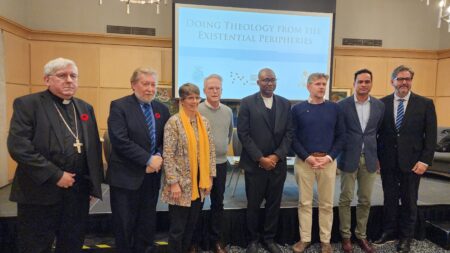
Doing Theology from the Existential Peripheries is a research project of the Migrants and Refugees Section (M&R) of the Dicastery for Promoting Integral Human Development, Holy See. It aims at deepening the teaching of Pope Francis and promoting a renewal of theology. The project is built on the belief that those who have been marginalized, whether socioeconomically, socially, or in other ways, hold a wisdom capable of reopening discourse, especially where there are tensions. Specifically, it seeks to uncover the sensus fidei fidelium of those often excluded from discourse within society and especially within the Church. In this way, we can nurture and grow Christian thought beginning from a deep sense of faith in order to transform lives and hearts once again.
I have been involved in one way or another with All Inclusive Ministries (AIM) in its varied iterations since the 1980s, the height of the AIDS crisis. AIM is a Roman Catholic community of LGBTQ+ and allies aiming to provide equal access to worship, opportunities, and resources within the Church for LGBTQ+ faithful who often feel excluded or marginalized.
Being excluded or marginalized provided a fit with the project of the Migrants and Refugees Section of the Dicastery for Promoting Integral Human Development, Holy See. Sounds complicated? It is. How do you classify, categorize millions of people worldwide?
Quite unexpectedly, I came to be on the panel discussion at St Mike’s. My first thought, after an immediate and sincere prayer of supplication, i.e., omG, was not some lofty goal of inclusion, but of the late comedian of some controversy, a gay icon, Joan Rivers. In the 1980s, Joan Rivers’s catchphrase Can we talk? went viral – and going viral did not precisely have the same meaning then as it does now in the age of social media. Going viral at that time might justifiably be linked more often to the spread of HIV/AIDS. Joan Rivers did a lot of talking. She talked to, with, and about LGBTQ+ people regardless of their health status. She was an advocate – in the true sense of the word – she talked toward something; added her voice. She did so for the rest of her life.
At that time, the Church (for the greatest part) did not talk to the gay (common usage from that era) community, other than to condemn. For those of our community lucky enough to live in Toronto at that time, and still, up to the present, the Society of Jesus, the Jesuits, and their parish, Our Lady of Lourdes, was the sole, and most welcome exception. They talked to us, with us, provided pastoral support, and buried our dead at a time when few others would. We will never forget.
I have no nostalgic attachment to the 1980s. Being stuck in any particular time is never a good thing. The expression, Can we talk? cuts to the heart of the matter. It goes beyond being a catchphrase of a particular person, and era. It eliminates everything that is not essential. It holds clarity and complexity. It leads to the heart of the matter – a bonus as we enter June, the month of Pride, and also, for Catholics, the month devoted to the Sacred Heart of Jesus.
One of the very surprising things about Pope Francis’s Synod on Synodality is that it actually welcomed people to talk, to share their thoughts about the state of the Church in the very early period of the third millennium. But how practically would this unfold? Many (the majority?) LGBTQ+ people have left the Church. Their reasons for doing so are valid, and easily, empathetically understood. Not surprisingly, there was a great deal of skepticism regarding the synodal process. For example, would dioceses institutionally unfriendly, or openly hostile to LGBTQ+ people now listen? And then what? Would diocesan reports sent to the Vatican accurately reflect what conversations (if any) actually discussed?
This quandary was removed by the way the research project was conducted, and by the way it was reported to the Dicastery for Promoting Integral Human Development: directly, with no diocesan intermediary. Pope Francis also talks. For example, in his encyclical Fratelli Tutti:
I sometimes wonder why … it took so long for the Church unequivocally to condemn slavery and various forms of violence. Today, with our developed spirituality and theology, we have no excuses. Still, there are those who appear to feel encouraged or at least permitted by their faith to support varieties of narrow and violent nationalism, xenophobia and contempt, and even the mistreatment of those who are different. Faith, and the humanism it inspires, must maintain a critical sense in the face of these tendencies, and prompt an immediate response whenever they rear their head. For this reason, it is important that catechesis and preaching speak more directly and clearly about the social meaning of existence, the fraternal dimension of spirituality, our conviction of the inalienable dignity of each person, and our reasons for loving and accepting all our brothers and sisters.
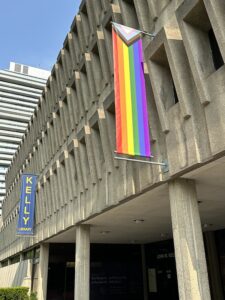
Can we talk?
Yes. And we did, thanks to the University of St Michael’s College. The College not only provided the physical setting; it did so much more. It facilitated and encouraged the free and welcome exchange of ideas. Courageously. With the promise to do so in the future: Theology from the Existential Peripheries. Such gratitude is well placed but St Mike’s, like any institution, is ultimately only as good as the people who guide it. So, thank you to Drs. Michael Attridge, Darren Dias, Mark McGowan, and David Sylvester. Well done.
Please note: The Kelly Library will continue to display the Progress Pride banner until the end of September as St. Mike’s prepares to welcome the Class of 2T7 to campus this fall.
Read other InsightOut posts
It’s no secret that at St. Mike’s, people make the difference.
With the 2023 Alumni reunion, which includes honoured years ending in 3 and 8, just around the corner we thought we’d have a little fun and try something different.
There’s been much talk in recent months about various AI computer programs effectively mimicking the human voice, but we know that the St. Mike’s voice is unique. To demonstrate our assertion, we created an AI-generated invitation to reunion alongside one written by Cassandra Lima, who not only works at St. Mike’s but is also an honoured year grad herself. The computer-generated piece runs first, below. The difference, we think, is pretty obvious!
AI invitation

You are cordially invited to attend the University of St. Michael’s College Reunion in Toronto from May 31 to June 4, 2023. Join us for a weekend filled with old friends, exciting activities, and memories to last a lifetime. We will be hosting a variety of activities throughout the weekend, including a campus tour, a cocktail reception, and a gala dinner. You will also have the chance to explore the city and reconnect with old classmates. We can’t wait to see you on campus and celebrate the history of the University of St. Michael’s College. RSVP today and we look forward to seeing you in Toronto!
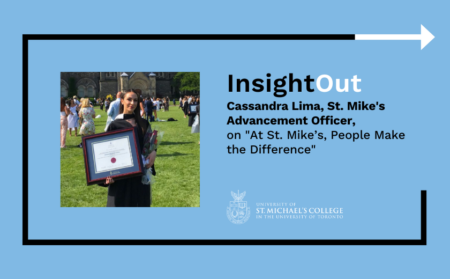
Cassandra Lima attained an Honours Bachelor of Arts degree from the University of Toronto in 2018 and a Master of Arts degree from the University of Toronto in 2020. Cassandra joined the Office of Advancement at the University of St. Michael’s College in May 2022, and works as an Advancement Officer, Engagement.
When I think back to when I indicated my interest in having the University of St. Michael’s College be my ‘home college’ for the duration of my undergraduate studies at the University of Toronto, I am reminded of the process I took to come to such decision.
I had spent an afternoon combing through each of the seven colleges’ websites to get a good sense of what each was like, as I anticipated that each had a unique profile, and I wanted to see which would be the best fit for me. Within the first few moments of navigating through the St. Mike’s website, I saw a handful of photos of students socializing and engaging in extracurricular activities. I was unsure whether the photos were candid or staged, but it did not matter to me either way – what mattered was that they were there on the website, front and centre.
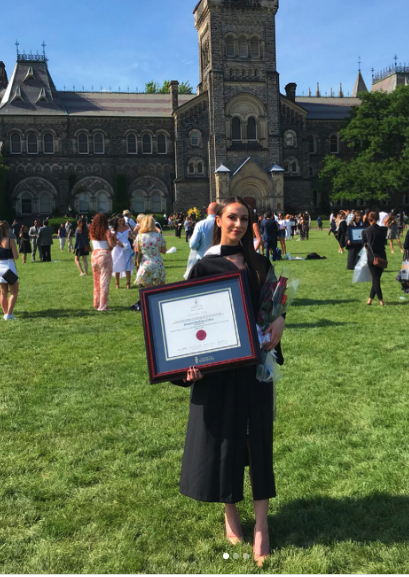
Why was this so important? Well, to me, it showed that the college wanted to highlight the fact that student life was at its core, and that it was valued and celebrated. I too valued the notion of student life, and while I was a bit unsure as to whether there was room for it within a university setting, I was delighted to see that the college was promoting the notion that it was. It was at that point that I realized St. Mike’s was a place where I would be able to acquire an academic education and grow as an individual.
Now, as a St. Mike’s alumna, I look back at my time as an undergraduate student and think about how fortunate I am to have chosen St. Mike’s as my ‘home college’ all those years ago. St. Mike’s fostered a sense of community amongst my peers and myself and encouraged subsequent connection and personal growth that exceeded my initial expectation. When I graduated from my undergraduate studies, I left with not only a degree but life-long friendships and core memories, many of which were made through connecting with my peers while hanging out in Brennan Hall after classes, partaking in St. Mike’s-based student groups like the University of Toronto Italian Canadian Association [UTICA] and the Medieval Studies Undergraduate Society [MSUS], and attending club nights and formals.
This sense of community, I have learned, is not unique to just me and my peers. Since I started working in the Office of Advancement about a year ago, I have had the pleasure of connecting with alumni from varying classes, and almost every single alumnus and alumna I have spoken with references the same sense of community. This is the thread that connects alumni of all ages and it is the driving force that my colleagues and I at the Office of Advancement have put behind Alumni Reunion 2023 planning.
In light of Alumni Reunion 2023, I want to take a moment to extend a note of congratulations to all honoured years alumni, including my own class of 1T8. Whether you are celebrating your 5th or 75th class anniversary, this year marks an incredible milestone that deserves to be celebrated, and I strongly encourage you to come to campus from May 31st to June 4th and join us all in the exciting festivities that the Office of Advancement has planned!
Read other InsightOut posts
Vanessa Awando completed her Honours Bachelor of Arts Degree in Criminology and Sociology last fall and will graduate this Spring in the Class of 2023. Vanessa joined St. Michael’s Advancement department as an Advancement Officer, Development Programs, in November, 2022 and she is excited to support St. Mike’s philanthropic goals. This piece was written in collaboration with Ana Maria Faria, who is Director of Development at St. Michael’s.
Giving Days, including Giving Tuesday, have become a common fundraising practice at universities across the border and in Canada for more than a decade. The creation of a sense of urgency, leveraging a matching opportunity, and strong messaging around building and supporting a community, has produced strong results for many organizations, not only in terms of donor loyalty, but also for new donor engagement.
Recently, the University of St. Michael’s College joined and participated in the University of Toronto’s inaugural Giving Day, held on Tuesday, March 28, with a goal to inspire the culture of giving within our St. Michael’s community, including alumni, faculty and staff and students. During this month-long campaign, we hoped to achieve a strong awareness of this campaign that will continue in subsequent years to build on this traditional day of philanthropy.
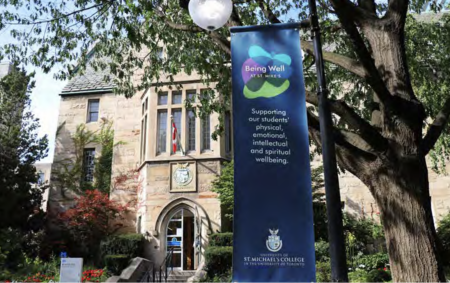
We are proud to announce that due to overwhelming support from the members of the St. Mike’s community, we were able to raise a total of $10,298. Funds raised through this campaign were matched dollar for dollar and are going to support St. Michael’s Being Well fund. This wellness fund serves as a comprehensive reflection of St. Mike’s commitment toward fostering a strong sense of community and an inclusive environment. Within the scope of this fund, we aim to help students discover and support themselves holistically (physically, emotionally, intellectually, and spiritually) by supporting ways of learning, coping, adapting, and getting the most out of the university experience in a meaningful way within and around a supportive and caring community.
After having worked on this campaign for the last five months, I am inspired by the wonderful response we have received and the number of new staff and alumni donors who participated in the campaign. Together, we harnessed the power of our collective generosity to help create a better world and help St. Mike’s students thrive in an environment of belonging and inclusivity.
This campaign also gave me a great opportunity to connect with some of our donors. In speaking with one donor, he shared that “I feel good knowing that the amount I give to St. Mike’s can really do some good for somebody else.” When people believe their gifts matter, collectively this creates a sense of community and amplifies the overall impact of their donation and, more importantly, inspires hope for a bright future.
When I spoke with Joshya Singh, a Commuter Don at St. Mike’s who leads the wellness program that supports the physical and mental wellbeing of more than 5000 students, she mentioned that she was profoundly aware of the unique struggles inherent in student experience on campus. She is grateful and appreciative of donor support as she believes it goes a long way to allowing student leaders to be able to meet student needs adequately while also allowing her to positively contribute to the St. Mike’s community. The Being Well fund enables leaders like Joshya to organize activities such as weekly mindfulness activities, a Wellness Walk, and a “Wellness on the Go” workshop to help students overcome everyday challenges and engage and interact with other members of the St. Mike’s community.
Together with my advancement colleagues, we would like to take the opportunity to thank the St. Mike’s community for donating and supporting the Being Well fund during this inaugural Giving Day. We look forward to coming together again next year!
Read other InsightOut posts
Andrea Nicole Carandang resides on the traditional territories of the Haudenosaunne, Anishinabewaki, Mississaugas of the Credit First Nation, Mississauga and Wendake-Niowentsio. She is an immigrant from the Philippines and moved to Canada with her family at the age of 10. In 2018, she graduated from the University of Toronto with her Honours Bachelor of Arts and Bachelor of Education and received her certification from the Ontario College of Teachers the same year. She graduated with her Master of Divinity from Regis College in 2021.
On March 30, 2023, the Vatican Dicasteries for Culture and Education and for Promoting Integral Human Development issued a joint statement on the Doctrine of Discovery. In their statement, the Dicasteries argue that the Doctrine of Discovery is not part of Catholic teaching, and that certain documents issued by Popes were used to justify immoral and inhuman acts against Indigenous peoples. They write:
“In no uncertain terms, the Church’s magisterium upholds the respect due to every human being. The Catholic Church therefore repudiates those concepts that fail to recognize the inherent human rights of indigenous peoples, including what has become known as the legal and political “doctrine of discovery”.
The Dicasteries go on to recognize that it is just for the Church to recognize the errors it has committed, to acknowledge the effects of the policies that came from these papal documents, and to seek pardon. They conclude their statement by affirming the Church’s support for the United Nations Declaration on the Rights of Indigenous Peoples.
This statement from the Vatican comes almost eight years after the Truth and Reconciliation Commission of Canada issued its Final Report (2015). The Commissioners argued that Papal bulls, which were charters issued by the Pope, justified colonization of the Americas. The charters granted Indigenous lands to the Portuguese Crown, based on discovery and conquest. Three other documents–Inter Caetera, Eximiae Devotionis, Dudum Siquidum— granted Spain the rights to lands that it discovered and called on Spanish explorers to convert Indigenous peoples to Christianity. This colonization ultimately led to the Indian Act, the Indian Residential School System and other genocidal initiatives.
In response to the ongoing legacy of the Doctrine of Discovery, the Commissioners called on various parties to repudiate it. Of most relevance is to Call to Action 49, which addressed the call to religious denominations and faith groups. By the time that the TRC released its final report, the Anglican and United Churches had already complied. In 2016, the Canadian Conference of Catholic Bishops also responded, issuing a statement titled “The ‘Doctrine of Discovery’ and Terra Nullius: A Catholic Response.” The CCCB wrote that “We reject the assertion that the principle of the first taker or discoverer, often described today by the terms Doctrine of Discovery and terra nullius, could be applied to lands already inhabited by Indigenous Peoples.” This is a strong statement. Nevertheless, I think it is more appropriate to hear the repudiation of the Doctrine of Discovery from the Vatican, given that the Doctrine was originally legitimized by papal authority.
As I read the Vatican’s statement, I am struck by its reminder that the Church has always, at least in principle, promoted the dignity of every human being. Church authorities throughout history have condemned acts of violence, oppression, injustice and slavery, including against Indigenous peoples. The CCCB document highlighted a long quotation from Sublimis Deus, a Bull issued by Pope Paul III in 1537:
“We define and declare … that …the said Indians and all other people who may later be discovered by Christians, are by no means to be deprived of their liberty or the possession [dominio] of their property, even though they should be outside the faith of Jesus Christ; and that they may and should, freely and legitimately, enjoy their liberty and the possession of their property; nor should they be in any way enslaved; should the contrary happen, it shall be null and have no effect.”
The CCCB notes that similar statements were made by Popes Urban VIII in Commissum Nobis (1639), Benedict XIV in Immensa Pastorum (1741), Gregory XVI in In Supremo (1838), and Leo XIII in In Plurimis (1888). Such calls to recognize the dignity of Indigenous peoples do not, of course, exonerate the Church from the Doctrine of Discovery, particularly considering the systematic abuses of the Residential School System and the fact that the Church operated 60% of these schools. Nor does it absolve the Church from sharing responsibility for the ongoing legacy of colonization, which includes the epidemic of Missing and Murdered Indigenous Women, the high rates of incarceration for Indigenous peoples, and more.
A statement like the one issued by the Vatican had been a long time coming, but it still is not the end. The Vatican has made it clear that it has repudiated the Doctrine of Discovery; there is no longer any room for questioning this. But now, what do we do? In the sixteenth century, Pope Paul III called for the recognition of the rights of Indigenous peoples, yet injustices continued to be perpetuated by members of the Church, even after the statement was issued. In a similar vein, the work of reconciliation does not end just because the Vatican has repudiated the Doctrine of Discovery.
Reconciliation with Indigenous peoples can seem like an abstract concept, and so I wish to focus more particularly on my context at Regis College and the new Regis St. Michael’s (RSM) Faculty of Theology. The CCCB document on the Doctrine of Discovery listed eight commitments, based on the recommendations by its Commission for Justice and Peace. One of these commitments is to:
“Work with centres of pastoral and clergy formation to promote a culture of encounter including the study of the history of Canadian missions, with both their weakness and strengths, which encompasses the history of the Indian Residential Schools. In doing this, it will be important to be attentive to Indigenous versions of Canadian history, and for these centres to welcome and engage Indigenous teachers in the education of clergy and pastoral workers, assuring each student has the opportunity to encounter Indigenous cultures as part of their formation.”
Perhaps the call is to ensure that all students can learn about the history of Canadian missions, the history of Residential Schools, and the importance of reconciliation. From my experience as a student, I only had a handful of courses that talked about the history of the Church’s relationship with Indigenous peoples. At the time, I was disappointed. I have great hope for RSM, however, after seeing that Professor Cynthia Cameron recently received a fellowship grant from the Wabash Center for Teaching and Learning in Religion, for her project entitled “Canadian Indigenous Pedagogies for Theological and Religious Education.” There is progress being done and I look forward to seeing how Professor Cameron’s work will impact the future of RSM.
The Doctrine of Discovery is deeply entrenched in our understanding of what it means to live and work on this land. In fact, it is the reason why most of us are living and working on this land at all. The repudiation of the doctrine shows us, as Catholics, there is a need to constantly re-examine what it means to live and work on this land, to heed the voices calling out against injustice, and to walk with those who have been marginalized into new life.
Read other InsightOut posts
Maude Barlow is a water justice activist and author. Her latest book is Still Hopeful: Lessons From a Lifetime of Activism.
St. Michael’s is about to become a “Blue Community,” pledging to help protect the planet’s water and promote the human rights to water and sanitation. I will have the pleasure of speaking at the ceremony.
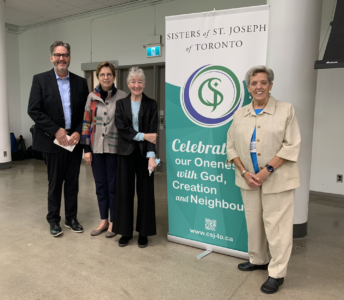
Why is the university taking this step? Last month, to coincide with World Water Day, the United Nations held a three-day conference on water at its New York City headquarters. It was the first such gathering on the issue of water in almost 50 years and drew almost 10,000 people from around the world to confront the many serious issues facing the planet’s water heritage and to set a path for the future.
The statistics are staggering. The planet is running out of clean water, something we were all once taught was impossible. We humans have polluted, diverted, dammed, over-extracted, and abused water to the point the UN says that within a decade, demand for water will outstrip supply by 40%. One quarter of the world’s population are forced to drink contaminated water every day and one half don’t have adequate access to sanitation. More children die of waterborne disease than all forms of violence together, including war.
And it’s not just in the global South. On average, every year, 15 million Americans have their water shut off because they cannot pay their water bills and, in Canada, there are still some First Nations communities living without running water and sanitation.
Thankfully, in 2010, the United Nations recognized the human rights to water and sanitation, establishing that the right to clean water is an issue of justice, not charity. The goal of our global water justice movement is that one day, everyone, everywhere, will have safe access to clean public water and sanitation.
We started the Blue Communities project here in Canada almost 25 years ago as a positive vision for municipalities to protect water as a human right and a public trust, and to confront plastic contamination by promoting public water over bottled water. Blue Communities also recognize water as a common good that must be protected by democratic, transparent, and just governance. Our project soon spread to other countries and more than 25 million people now live in official Blue Community cities.
But it has also spread to other sectors, including faith-based groups and universities. St. Michael’s is joining a growing group of universities in Canada, including McGill and Brescia University College at Western University, to protect what Pedro Aroyo, UN special rapporteur on the human rights to clean water and sanitation, calls the “blue soul of water.”
St. Mike’s has already taken an important step to protect water from plastic contamination by banning the sale of bottled water, a model for other schools and universities across the country. This is a vital concern as the UN recently projected that the sale of plastic bottled water globally is set to double in the next decade. Becoming a Blue Community reflects a positive vision for change and serves as a declaration of hope.
It is vital that we humans re-establish a relationship with nature and heed the teachings of Indigenous Peoples here in Canada and around the world. Water is not a resource for our pleasure and profit, but the very essence of life for us and all other species. The need to protect and restore biodiversity has moved to the top of the international agenda with a number of treaties and projects; to be successful, they will require an emphasis on protecting and restoring watersheds.
Here in Canada, the federal government has promised to conserve 30% of Canada’s land and water by 2030 and plant 2 billion new trees. In its recent budget, the government established the Canada Water Agency with an endowment of more than $85 million and announced a further $850 million to protect and restore freshwater lakes and rivers. The government has also (finally) lifted the majority of long-term drinking water advisories in First Nations communities, righting a terrible past wrong.
The mission of the University of St. Michael’s College is serve “the common good and care for all creation.” In becoming a Blue Community, under the leadership of President Sylvester and the Collegium, St. Mike’s is fulfilling that pledge and truly leading the way to a water-secure future for all.
Please join us on Wednesday, April 19, 2023 at 2 p.m. to help the University of St. Michael’s College and Regis College celebrate becoming Blue Communities. Events will take place in Charbonnel Lounge, 81 St. Mary St., Toronto. To learn more about Blue Communities, please visit https://canadians.org/bluecommunities/
Read other InsightOut posts
Nicole Ferrante is in the final weeks of her MDiv degree at the Regis St. Michael’s Faculty of Theology. She has recently taken on the role of Campus Ministry Coordinator at USMC and is excited to serve the St. Mike’s community in this new capacity.
Christ is risen! Alleluia!
Throughout the world, these words are being joyfully proclaimed as we celebrate Easter, the Resurrection of our Lord. But as these words leave our lips, do we really take time to ponder in our hearts what they truly mean?
Christ is risen… It is easy to take these words for granted, so many years later. But let us put ourselves for a moment in the shoes of the closest followers of Christ; those who walked with him, ate with him, prayed with him, and laughed with him; those who loved him as a son, brother, teacher, and friend; those who hoped in him as something more, something greater, though they were only beginning to grasp an inkling of what that might be.
On Good Friday, a man was crucified. A man who seemingly had his whole life ahead of him. A man of compassion and hope, beloved by those near him. An innocent man, guilty of nothing but the justice and mercy that permeated his being and the promise of change in the world around him. Jesus, the Son of God, uttered his final words, and breathed his last.
The disciples must also have been left breathless in the despair that threatened to crush and suffocate them. Wordless in their sorrow, which simply couldn’t be expressed.
But the story does not end there. For on the third day, the tomb is found open and empty. The linens that wrapped Jesus’ body, left behind. And Jesus, risen from the dead, makes himself known in a new way to his followers.
Jesus was dead; now he lives. Hope seemed lost; now it abounds. And something of the goodness, greatness, and boundless love of God is grasped in the human heart in a totally unprecedented way.
A new breathlessness takes over: the utter breathlessness of wonder, of a heart so full that for the first moments one is entirely caught up, forgetting to exhale. A new wordlessness takes place, born not from emptiness, but from a sudden fullness that cannot be expressed, nor comprehended. For what human words could begin to convey the joy and the monumental significance of the mystery that has taken place? Two thousand years later, as we continue to ponder the events of Easter Sunday, let us not forget to take a moment to be wordless in our wonder. To feel that fullness in our chests, which chokes us up and overtakes us. And may it be out of that moment of silent, all-encompassing wonder that our joy is born, and that together we are finally able to proclaim with the fullness of our being: “Christ is Risen! Alleluia!”
Blessings to all as we begin this Easter Season!
Read other InsightOut posts
Nicole Ferrante is in the final weeks of her MDiv degree at the Regis St. Michael’s Faculty of Theology. She has recently taken on the role of Campus Ministry Coordinator at USMC and is excited to serve the St. Mike’s community in this new capacity.
This Sunday, Christians around the world begin their observance of Holy Week. We are drawing to the end of the season of Lent, and the anticipation for Easter, for the Resurrection, is building. This season has likely looked a little different for each of us. For me, it has coincided with the busiest weeks of the year as I begin my new job and prepare to finish my theology studies. I am sure I am not alone in my anxious anticipation for the end of the school semester. Similarly, as we reach the end of this 40-day Lenten season, it is natural that we anxiously await the Easter season, in all of the joy and light that it is sure to bring.
But Holy Week compels us not to preemptively jump forward to the Resurrection. This week is packed full with rich tradition, with spiritual significance, and with ample opportunity for drawing closer to God and to our Christian communities. As we try our best to live these last days of the school semester intentionally, let us also try our best to appreciate the beauty and significance that are offered by these last days of Lent.
Holy Week begins with the celebration of Palm Sunday mass, which starts by commemorating Jesus’ entry into Jerusalem. With waving palms and joyful shouts of “Hosanna!”, the transition into Holy Week is at first marked with joy and triumph. Yet not half an hour later, as the Passion narrative is read, joy turns to pain and sorrow. The mass ends in utter silence, and the believing community is sent home with an unshakeable sense of “What now?”. It is a “what now” that, whether we realize it or not, is deeply resonant with the anguished “what now” of the Apostles and the first followers of Christ upon witnessing the death of their Lord, the source of their hope.
As Holy Week progresses, Christians are presented with the broadest range of human emotion and experience. We see the humility, tenderness, and earnest service of Jesus as he washes the feet of his disciples on Holy Thursday, urging them to do likewise for one another. We see him share his final meal with his closest friends. We witness the agony of Jesus in the garden of Gethsemane, and the betrayal he experienced at the hands of those whom he held dear. We reflect on his encounter with his mother on the way to Calvary, and what love and pain that moment must have held. Finally, we see him take his last breaths and face the uncertainty of death. During Holy Week we see, at the deepest level, what it truly means for Jesus to have taken on our human condition. For the Word to have become flesh, and dwelt among us.
Jesus united himself intimately and unwaveringly with our reality. Can we, this Holy Week, unite ourselves with his? Can we participate, with him, in the events leading up to the Resurrection? Can we enter, with him, into this journey to the heights and depths of human experience? Into the self-giving love he held for those whom he served? Into his embracing of fear and suffering, and his surrender to the will of God? Into his forgiveness of the very people who were persecuting him? “For if we have been united with him in a death like his, we will certainly be united with him in a resurrection like his” (Romans 6:5).
St. Mike’s Campus Ministry would like to propose several ways in which you can participate in Holy Week this year. First, all are invited to attend any number of the services and liturgies taking place at St. Basil’s Parish throughout the week:
- Saturday April 1st, 6:30 pm – St. Mike’s Campus Ministry Palm Sunday Mass
- Wednesday April 5th, 7:00pm – Tenebrae Service
- Thursday April 6th, 7:00 pm – Holy Thursday Mass
*Consider registering for our Holy Thursday Traveling Adoration event, from 5pm-Midnight, beginning with dinner and mass, and ending with a pilgrimage to seven churches around the city.
- Friday April 7th, 3:00 pm – Good Friday Service
- Saturday April 8th, 8:00 pm – Easter Vigil Mass
- Sunday April 9th, 9:00am, 10:30am, and 12:00pm – Easter Sunday Mass
Finally, for those looking for a resource to guide your prayer and reflection this week, you can find below the links to “Crucis Mysterium: A Music + Prayer Podcast for Holy Week”, a presentation developed last year by the St. Michael’s Schola Cantorum and St. Mike’s Campus Ministry. This immersive prayer experience features sacred music, scripture readings, poetry, and meditations upon the five Sorrowful Mysteries of the Rosary.
Wishing a blessed and fruitful Holy Week to the entire St. Mike’s community!
Read other InsightOut posts
Iain Donnelly is a second-year student of Evolutionary Biology and Celtic Studies at the University of Toronto, at least until he discovers what he wants to do with his life. He grew up in Southern Ontario and Prince Edward Island, which he still considers a second home. He is involved with the St. Michael’s Gaelic Athletic Association, and appreciates learning Irish as part of his studies. In his spare time, he enjoys skiing, is something of an avid reader, and is involved in his local Presbyterian Church.
Despite it being perhaps the most far reaching of all the saints’ feast days, most who celebrate St. Patrick’s Day know very little of who they celebrate. St. Patrick’s Day has evolved into an important celebration of identity, but it is still worth remembering the religious significance of the day, and the fascinating man that Patrick was.
Patrick was born to a well-off British family in the waning days of the Roman Empire, at the edge of a world in turmoil. The empire, which had long maintained stability in Western Europe, was crumbling as internal strife and waves of invaders whittled away at her borders. When the legions sailed from Dover for the last time in 410 A.D, they ended four centuries of Roman rule in Britain and left behind a people facing societal upheaval and the terrifying threats of invasion. This became all the more real to Patrick when, at 16, he was seized by Irish pirates and taken all the way to Ireland. To Romans, Ireland may as well have been the edge of the world. Never ruled by the empire, pagan and wholly foreign. Even the ethnonym ‘Gael’, from the Old Welsh ‘Guoidel’ (forest dwellers or wild men) reflects the ‘otherness’ of this place to the Britons. And yet it was here, of all places, where Patrick found God.
Patrick’s father had been a deacon, and his father before him a priest, but despite this Patrick was, by his own confession, not a devout man when he was taken. The pirates took Patrick to a hill called Slemish (Sliabh Mis), where he was sold to an old Druid named Milchu. There, in what is now County Antrim, Patrick was set to work tending his master’s herds of sheep. In the midst of his hardship, it was God in whom he found solace. Patrick took to daily devotion and prayer – by his account praying more than 100 times a day and night, in fierce cold and torrential rain. And so it was that after six years, God spoke to Patrick, telling him that he had done well, and that a ship was ready to take him home. Trusting in his faith, he travelled for 200 miles to the sea, only for the captain of the vessel to refuse him. Patrick retreated to pray and before long the captain relented and allowed him passage. In my favourite version, the hounds took to Patrick instantly and were distraught when he was sent away, calming only upon his return.
They sailed from Ireland and landed in Gaul, where they wandered for 28 days without food. When his companions challenged him, Patrick prayed for food, and a great herd of pigs stampeded across the path! After months of wandering, Patrick finally returned home to his family, who I’m sure had thought him long dead. I can imagine Patrick would have liked nothing more than never to think of Ireland again, but that was not to be. While furthering his study of Christianity, Patrick had a vision of a strange man named Victoricus, who gave him a letter titled ‘the voice of the Irish’. As he read, he heard voices calling out to him “We appeal to you, holy servant boy, to come and walk among us.” And so, he did.
That is how the traditional account goes, in Patrick’s own retelling. There are a slew of accounts and stories of Patrick’s missionary work in Ireland. Patrick was not, in fact, the first to bring Christianity to Ireland; historically there were already Christian communities in the south before Patrick’s time, although he was certainly instrumental in bolstering their numbers, and founding many churches and monasteries. He did not banish the snakes from Ireland either – the Ice Age did that for him about 10,000 years earlier (nor the pagans, who persisted long after Patrick died). It is impossible to separate truth from fiction in most of Patrick’s story, nor will I attempt to, as I feel it entirely misses the point. Stories, be they true stories or truth stories, have inherent value. Patrick’s life and works can certainly teach us a great deal.
Patrick’s enslavement denied him the official Latin education that a boy of his status should have received. While his peers studied Graeco-Roman rhetoric, Patrick tended sheep. By Patrick’s own confession he was “little educated” and “ignorant”. He doesn’t make use of other texts besides the Bible in his writings, nor is he renowned for sophisticated theological arguments of the like that characterised Pelagius or Augustine. And yet Patrick’s life still inspires yearly celebration.
Patrick’s Confessio is riddled with biblical allusions, weaving his life story into the motifs of the broader Christian narrative. His six years of servitude parallels laws of captivity in the Book of Exodus, and he frames his enslavement through the lens of divine punishment for sin, and his hardship as the vehicle of his “redemption,” a very traditional Christian framework. Clearly, Patrick was exceptionally skilled at speaking to his audience, and presenting a story through language that they would understand. His time in Ireland, under the eyes of a Druid no less, would have left him intimately knowledgeable of the Irish worldview, readily able to convey the Christian message through vehicles the Irish could appreciate. The stories of Patrick describing the Trinity using a shamrock, or laying the cross upon the circular sun, or celebrating Easter through the lighting of a bonfire on Slane Hill may indeed be just stories, but these reflect Patrick’s ability, and choice to preach to the Irish at their level—something Augustine, despite all his theological brilliance, could never have done.
I do not believe that God sells people into slavery to atone for sins – a point of theology where Patrick and I may disagree. But I do think that Patrick’s suffering molded him into exactly the right person to bring Christ to Ireland. His experiences were immensely valuable in ways which he could not have foreseen. Patrick suffered because of the cruelty of his fellow men, but through his faith in God he turned that experience into something powerful.
When the legions sailed from Britain forever and the lighthouse at Dover was extinguished for the final time, many must have felt that with it the light of learning and civilization in the Isles had gone out with it. And yet the light does not go out so easily. Patrick was born into a world in turmoil and swept into it at a terrible young age. Yet Patrick took the chaos he was drowning in and found in it the tools to transform himself into a bearer of the light. I think we can do much the same.
Read other InsightOut posts
Lydia Dillenbeck is a first-year Social Sciences student. She plans to major in sociology, and something else—she is currently undecided. Outside of class, Lydia likes to get outside, or play music. Some of the highlights of her week are singing with the Schola Cantorum and for the Campus Ministry Saturday Mass.
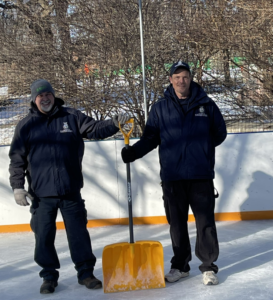
Photo by David Sylvester
The first people I met at the University of St. Michael’s College were not my dons, my orientation leaders, or even my roommate. The first people I met were groundskeeper John Scarcelli and Senior Building Operator Mike Graham. They introduced me and my parents to the tight-knit and welcoming community of St Mike’s. It is worth noting that I am from Deep River, Ontario—an interesting but small town. With a population of 4,000, it is home to possibly the largest concentration of nuclear physicists in the Canadian wilderness.
You might imagine how moving to Toronto was quite the change. My parents and I arrived in Toronto the day before move-in day. The traffic, the buildings, and the numerous students on campus had me questioning my decision to attend U of T. We scouted out St. Mike’s to be sure we could find parking and get a glimpse of what my life in residence would be like before the chaos of welcome week began.
At first, we couldn’t find my building—Teefy Hall—but the man on the riding lawn mower stopped near us and introduced himself as John. He mentioned that he had talked to “David” –the president of St. Mike’s–something my dad approved of. It’s a good sign when staff and administration have regular conversations with each other. He emphasized that everyone at St. Mike’s was so happy to have students back on campus. He gave us more information, joked with us, and encouraged me to say hi to him whenever I saw him. Then, John started up his lawn mower, leaving us to explore.
It had been about 10 minutes since saying bye to John when we met Mike. I was sitting on one of the benches in the quad when he walked up, clearly in the middle of a task, and struck up a conversation with me and my parents. With no hesitation, he set aside the pictures he was going to hang and offered to take us for a tour of some of the buildings. If you ever need a tour of the St. Michael’s campus, Mike is your guy. He enthusiastically told us some of the history and introduced me to some of the Canada Room staff, all the while getting to know me and my parents. Because of him, I had a good sense of the layout of the campus before I was even living on it.
At dinner that night, my dad looked at me. “It gives me a lot of comfort knowing that there are guys like Mike and John working there,” he mused. I agreed. As nervous as I was about this next part of my life, I had made two connections and I knew that Mike and John would be looking out for me. Throughout this year, both have continued to say hi to me. They ask after my parents and ask how my schoolwork is going. Connections with the groundskeeper and maintenance staff are valuable, especially when you need to get a frisbee out from under the dumpster, or when they tease you about snagging free cake at Michaelmas.
These interactions are not unique to me; I see them conversing with other students all the time. What struck my family when we first arrived, and what continues to be demonstrated through Mike and John’s student interactions, is how much they value having students on campus, making them feel welcome and being a part of a community.
Read other InsightOut posts
Fiona Li is a proud alumna of St. Michael’s Christianity & Culture program as well as of the University of St. Michael’s Faculty of Theology (MTS 2015; ThM 2018). She is now a PhD candidate at Regis College and Associate Director of the Fraser Centre for Practical Theology. Her dissertation seeks to propose an inculturated understanding of Mary for Canadian-born-Chinese Roman Catholic women, such as herself.
In celebration of Women’s Day on March 8, the Regis St. Michael’s Faculty of Theology (RSM) will be hosting a Liturgy of the Word in remembrance of Dr. Ellen Leonard, CSJ. Sr. Ellen was one of the first women to study theology in Canada and taught for many years at the University of St. Michael’s College Faculty of Theology. She taught courses on Roman Catholic Modernism, feminist theology, and ecological Christology. She also founded the Catholic Network for Women’s Equality (CNWE), which continues to work towards “justice and equality for women in the Catholic Church and in the world.”
Along with Sr. Ellen, we also say goodbye and thank you to other female pioneers in theology who walked so we can run: Sr. Margaret Brennan IHM, the first female theology professor at Regis College; Margaret O’Gara; Rosemary Radford Ruether; Delores Williams, Sallie McFague; Mary Daly; and many others.
In remembering the past, we are also given the chance to imagine the future. Since this is the first official year of the RSM federation, it is the perfect time for all those involved—students, staff, faculty, and alumni—to dialogue with one another regarding what they envision the future of RSM to look like.
Like many students, faculty, and staff, my hope for RSM is that it not only survives but thrives; that it becomes a beacon of light and hope for theology. What this means, especially in a city like Toronto, is that RSM will need to speak to the contemporary and systemic issues in society. RSM is situated in a very advantageous position, both within Canada and, more specifically, in the city. Toronto is one of the most culturally diverse cities. With many first- and second-generation Canadians calling Toronto home, RSM is in a privileged position theologically to speak on topics that emerge from the encounters between different cultures and religions with one another. For example, with a great number of Catholics identifying with non-Western cultures and countries of origin, the Western normative systems of thinking about God and theology will need to be renegotiated. And what does it mean to be a Catholic in a multi-religious society such as Toronto? Moreover, as Toronto is home to many persons of colour, RSM is also constantly reminded of intersectionality. RSM can become a leader in decolonizing theology and thinking of theology intersectionally: how does theology written by white males affect persons of colour differently than their white peers? How has the traditional mainstream theology been used to subjugate vulnerable groups of people in society?
To this point, my second hope for RSM is that there will be more women of colour in the student, staff, and faculty populations. By appealing to and preparing women of colour for ministry or further theological studies, RSM will be providing the Toronto Church with competent workers for the harvest. But it is not enough to have women of colour in the student population. It is also important to have representation in the faculty population. Out of all the listed faculty members at the Toronto School of Theology, there are approximately eight women of colour, and only three are regular faculty members. Representation matters because it visually demonstrates to the female students of colour that they belong in academia; that their voices and experiences matter in Theology. As one of the groups that have been historically marginalized due to intersecting systems of power, women of colour have much to contribute to discussions of faith and how Theology can be reclaimed to help and empower people in vulnerable positions.
I think–especially in celebration of International Women’s Day– it is proper to say that the future for RSM is women of colour, along with other marginalized groups, with male and white women’s voices as allies. May we, those who identify as women and in Theology, follow in the legacy of all the women who have come before us, and run, so that those who follow us can walk.
The March 8 Liturgy of the Word takes place at 1:30 in chapel in the Cardinal Flahiff Basilian Centre at 81 St. Joseph St., Toronto.
Read other InsightOut posts
Claudia Miatello earned a B.A. in English literature at St. Michael’s College and studied accounting and finance at the University of Toronto’s Rotman School of Management. She then worked in various business roles at Ernst & Young and at U of T. In 2020, she graduated from USMC with a Master of Theological Studies degree, having rediscovered her love of art in 2017.
Her animated film, Buon Ferragosto, screens at the Toronto Short Film Festival on March 20th at 6:15 PM at the Paradise Theatre on Bloor Street. Watch the trailer for Buon Ferragosto here: https://vimeo.com/769983392
Q: What is your animated short about?
A: Buon Ferragosto tells the story of a boy who cannot celebrate Ferragosto (Italy’s national holiday) at the sea because his father has to work. So, instead, he has the adventure of his lifetime in the city of Florence with an unexpected friend. It’s lighthearted but also comments on how we can lose meaningful connection with each other. Living in a lifeless home, it’s difficult for him to form a relationship with humans, so he finds friendship with a cat! But he still manages to stay full of life, even around those who reject him – and of course, this all takes place in the beautiful city of Florence, which is full of music and colour.
Q: Did you study art & animation?
A: I was studying English literature at the University of Toronto and taking art courses part-time at the Ontario College of Art & Design (OCAD U). In those days, you could study up to three courses at OCAD without enrolling in an art degree. After I graduated with my B.A. from U of T, I prepared a portfolio for the animation program at Sheridan College. I also applied to business school at the Rotman School of Management. At the last moment, I chose to study business over animation. Now, after 30 years, here I am, so you can say that one’s passions never die.
Q: Why did you choose the city of Florence as the setting for your film?
A: I’ve always been in love with Florence. My father is from Florence so when I was a teenager, we would travel from Canada to Italy to spend summers in the city. I rode on vespas with friends and cousins, went to the sea on the weekends, and ate bomboloni in the mornings for breakfast. It was a very happy time for me. Since then, I’ve visited many times over the years and I always come back home with beautiful memories.
Q: How would you describe the characters in your film?
A: I draw very simple characters. People are essentially very simple – we like to believe that we are complex but if you look at the core of humankind, we are all alike and have the same simple needs.
Q: Why did you create a boy protagonist instead of a girl?
A: I think whether I draw a boy or a girl doesn’t matter so much – the feelings of loneliness and the desire to connect with someone exists in all genders. I think in this film I created a boy instead of a girl to hide the fact that Jacopo Conti in many ways is me – I think he is many of us.
Q: Why did you choose to include very little dialogue in your film?
A: I prefer images to words. I prefer to watch a film where you have to work a little bit to figure out what is happening by watching the action and expressions rather than being told things through dialogue. I think people’s actions and expressions often reveal much more about who they are than what they choose to say.
Q: How do you develop the stories for your films?
A: I try to use my intellect in the creative process as little as possible. I enrolled in a theology course in homiletics at university and had to write an Easter sermon for an assignment. I used my intellect to come up with an astute sermon that was doctrinally sound. Since I had never written a sermon, my professor offered to read it before it was due in order to give me some pointers. The next day he returned my paper with only one comment written on it: “Your doctrine is correct but I’m not sure that you, as a preacher, have arrived at Easter in your heart”. With that one sentence, everything fell down around me like a house of cards. My approach to life had been mostly with my head. This was a real turning point for me and I started to let my heart lead – shortly after that, I left my accounting career and started to draw in 2017.
Q: Does your film have a theme?
A: I wanted to address the theme of loneliness but, at the same time, to create a film full of joy – I wanted my film to evoke laughter and compassion for the characters, not pity.
Q: Since you write, draw and animate your own films, how long does it take to create them?
A: It took me almost 10 months to create this 6-minute film. It takes me a couple of weeks to draw up a scene and another week to animate it. But I started drawing a few of the scenes in this film four years ago, so it took me all these years to finally figure out how to finish them.
Q: You could have ended your film with the cat never coming back. Why did you choose to create a happy ending?
A: I always want to create films with happy endings – of course, along the way the characters might feel anger or frustration, but my films end right on the upswing of a down moment – right before another wave in life hits them again.
Q: What do you hope for with your film career?
A: I will create films as long as I have something to say. To me, what counts is not how many films you make or how many people you are able to reach with them. If you are an artisan of beautiful rings, is it bad if you are only able to produce one beautiful ring for one person in your lifetime? Are you more successful if you produce hundreds? I don’t think so.
Read other InsightOut posts
Dr. Felan Parker is an Associate Professor, Teaching Stream in the Book & Media Studies program specializing in digital media, video games, and media industries. His current research explores the production, distribution, and reception of independent or “indie” games, and the role of fan conventions like San Diego Comic-Con in contemporary popular media cultures.
When I first saw promotional videos for Pentiment (Obsidian Entertainment, 2022) it caught my eye immediately. A monastery-set murder mystery video game inspired by Umberto Eco’s In the Name of the Rose and Ellis Peters’ The Cadfael Chronicles, presented in the style of mediaeval manuscripts and early modern woodcuts? This was intriguing.
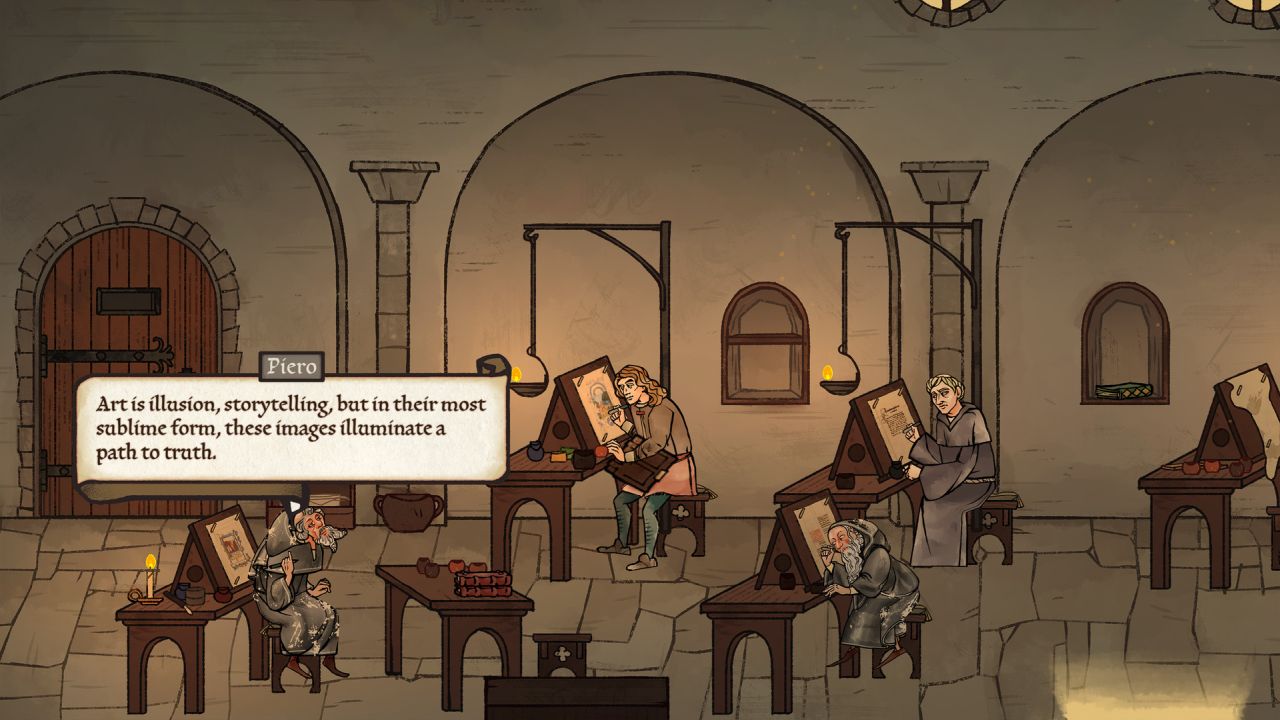
Video games are a rich, diverse medium, but they are still primarily known for violent spectacle and craftily monetized mobile apps (and, increasingly, the convergence of the two in craftily monetized violent spectacles). It’s like if people thought the medium of film was reducible to superhero blockbusters – I like superhero blockbusters, but there’s a whole universe of movies beyond that, and likewise for video games. It can be difficult to advocate for games as a legitimate cultural form and object of study in this context, so titles like Pentiment that challenge those assumptions are valuable. Moreover, this game has particular relevance to the St. Mike’s sponsored undergraduate programs in Mediaeval Studies (MST) and Book & Media Studies (BMS).
Pentiment is a narrative-focused game set in a small 16th-century Bavarian town during the transitional period between the late mediaeval and early modern eras. The story begins in 1518 and unfolds in three acts spanning 25 years, with the player first taking on the role of Andreas Mahler, a journeyman illuminator apprenticing in the local abbey’s scriptorium, and later the town printer’s daughter Magdalene Druckeryn, a talented artist in her own right. As BMS and MST students know, at this point in history the print revolution and the Protestant Reformation are already under way, and the scriptorium is in the process of being consigned to history – indeed, over the course of the game, the abbey falls to ruin while the print shop thrives.
My Mediaeval Studies colleague Dr. Alison More was impressed with the game’s representation of the scriptorium after seeing the game in action at an event we organized in December with Ariana Ellis, a U of T Ph.D. candidate in History who has taught courses on the Middle Ages in video games. “I was amazed by how detailed (and accurate!) it was,” Dr. More said, noting the inclusion of slanted desks, “a necessary detail for writing that is often missed in popular medievalisms” and the stages of the writing process, with “black letters first, rubrication later.” Of course, no historical representation is perfectly accurate: according to Dr. More, “they had lovely illustrated manuscripts prepared for writing, but it was usually the other way around.”
The game also uses its setting as the basis for a compelling exploration of the nature of historical truth and the media through which it is communicated, an apt theme for this period of epochal shifts. In each act, our protagonists (and the player) are unexpectedly drawn into investigating a murder: first a brash and divisive visiting Baron, then the leader of a peasant uprising, and finally Magdalene’s father the printer. With only a limited amount of time (measured by the canonical hours, and then by the town’s first mechanical clock) to explore the area, converse with locals, and search for clues, the player must assess the evidence themselves and decide whodunnit. In each case, none of the suspects are wholly convincing, and rather than bringing a comforting resolution, each new discovery exposes deeper mysteries. Nevertheless, whether they are guided by reason, faith, pettiness, or wild speculation, the player must choose who will be punished for these crimes and sit with the consequences – which only become apparent years later. In the final act, a sinister plot linking the murders together is revealed, but even then, it is not clear how best to act on this revelation. The player is left to decide how much to disclose to the community in a historical mural she is tasked with painting in the town’s new Rathaus.
The title of the game perfectly captures this sense of ambivalence about our relationship to history; pentiment or pentimento is an art historical term that refers to “a part of a picture that has been overpainted by the artist but which has become visible again” (Oxford Reference), with its root in the word repentance. The game is deeply concerned with how history is obscured and illuminated, not only in the detective plot, but in the lingering traces of pre-Christian Pagan and Roman history literally and figuratively undergirding the town, the battles over reason and revelation playing out in the Reformation via the new medium of print, and the experiences of people of colour, religious minorities, and women, which are often omitted from contemporary accounts of the period.
The audiovisual style of the game likewise reinforce these themes beautifully. As noted above, the world of the game is depicted as if it were an illuminated manuscript come to life (including turning pages, ornate Lombardic capitals, and comical marginalia with plenty of cats). Similarly, the haunting score is performed by mediaeval music ensemble Alkemie on period-accurate instruments. Of particular interest to BMS and MST students is the use of a number of different scripts and typefaces in banderoles, the comic strip-like speech bubbles found in mediaeval manuscripts. The lines of each letter and word are animated as if being written by hand or printed in real time, right down to occasional errors that are scratched out and corrected. Rather than rendering all text the same way, each character’s dialogue is displayed in a style that conveys their social status, occupation, and education. As Dr. More points out, the monks in the abbey speak in a modern approximation of Gothic script, strongly associated with scriptoria and Latin, while the ill-fated Baron’s words appear in a clear, classically educated style that suggests the Renaissance. The printers’ words, by contrast, appear first as metal type laid out on the page and then as printed text, in keeping with their modern profession.
Ellis sees this as an effective way to “communicate historical details experientially, like with the monastic font that would take longer to process and read” compared to more colloquial speech. A particularly beautiful script in purple ink even proves to be a crucial piece of evidence that points the way to the killer’s true identity, cleverly linking the game’s aesthetics to its narrative and themes. Although “far from exact,” Dr. More agrees that the use of different scripts and typefaces is an interesting creative choice that could be useful in discussions of paleography, and many other aspects of the game could similarly help illuminate concepts in the classroom. Regardless of accuracy, Pentiment’s layering of history and fiction – like layers of ink and paint in an illuminated manuscript – has much to offer students and scholars interested in book history, media studies, and the middle ages alike.
To learn more about St. Michael’s sponsored undergraduate programs, please visit our programs pages.
Read other InsightOut posts
Alexander Gomez is a first-year Life Science student at the University of Toronto hoping to double major in Neuroscience and Criminology. Apart from that, he states he has no idea what to do with his life. He was born in Mexico but raised in Calgary, Alberta, which he claims causes people to yee-haw whenever they see him. In his spare time, he enjoys acting in plays here at U of T, and his biggest roles include playing an 80-year-old illegal Albanian immigrant and a little kid in Cuba.
Good morning, evening, or two am for anyone reading this! My name is Alexander Gomez and I want to share the story of a course I took, so make yourself a cup of cedar tea and enjoy.
Last semester, I was invited to join the “The Christianity, Truth, and Reconciliation Seminar”, one of the SMC One first-year seminars at the University of St. Michael’s College designed to introduce students to university-level studies in a small classroom setting. Honestly, I didn’t have huge expectations for this course. I expected it to be an easy ‘bird’ course –I know many of you love ‘bird’ courses just like me–but it turned out to be one of the hardest I’ll ever have to do, and not for the reasons you might think. Not because the professor was a harsh marker or because it was a lot of work, but rather because of the emotional journey I had no idea I was about to take.
In the first couple of classes, we were quickly thrown into weekly readings that gave us insight into the lives of the Indigenous Peoples of Canada before and during the settlers’ arrival from Britain and France. I had been exposed to this concept a lot during school, talking a lot about Indigenous cultures. I’ll be honest: at first, I was skeptical that I would take anything of value out of this course. The same old stuff I’d heard year after year. That started to change a few weeks in when we handed in our first reflection piece. Through the readings –- including first-hand journal experiences from many Indigenous people –- I started the journey of healing without even realizing it. Because of our small class size, we were able to have more meaningful discussions about the texts being read and our own biases towards this group of people and their culture, some of which were blinding me due to my having been exposed to them my entire life.
Then reading week came, and we went to the Shingwauk Residential School in Sault Ste. Marie. If you haven’t heard of Residential Schools, I suggest you take a break, do some research, and then come back with your cup of tea to this blog. A quick summary: federally, the Residential School System really started in the late 1800s, and the last one closed officially in 1996 (I know! Not even that long ago). These were schools created by the government and led by various religious communities. These schools were meant to assimilate the remaining Indigenous population into Canadian culture, taking kids away from their parents and stripping their cultures away, placing them in these schools, scattered all across Canada.
With that in mind, as we arrived at the school a strong silence overtook the van as the building loomed over us. The knowledge of the things that went on inside this school made it almost too difficult to walk in through the same doors so many kids walked in through and never came back out of years ago. But then inside…everything was different. The sounds of laughter and talking were heard down the halls. This dark school had been transformed into a university, a place where the true vision of what this system was supposed to be was taking place: a place where the Indigenous and the settlers could learn from each other in harmony. A place of suffering was taken back by the community and turned into something beautiful.
During this week, we got a tour of the facility and the historic sites of the school. We met a lot of the workers there (many of them Indigenous), and learned a lot about Indigenous culture. They even gave us some cedar tea! On the first day we learned about smudging, which is the burning of sacred herbs. The one conducting the ceremony walks up to participants and they take the smoke and ‘wash’ it over themselves. They’ll wash it over their eyes or their heart to symbolize what they want to improve. We visited a garden where they were growing their four sacred plants: sage, sweetgrass, red cedar, and tobacco. We talked about the plants they’d use for healing and their connection to Mother Earth. My peers and I were brought into their culture in a way I’d never experienced before. Each night before dinner we joined together as a class, along with someone very special to us who used her knowledge of healing through the arts and her own Indigenous past to debrief about what we learned and process it all. We met two Residential School survivors during our time there — people who went through that system and made it out, fighting every day for Indigenous Rights and equality. And that only made the trip so much harder – seeing how much was really taken away from them. That feeling of community, their culture, and their families, stripped away so quickly.
In a short film created by Indigenous artist Leanne Betasamosake Simpson called How to Steal a Canoe, the Indigenous culture is symbolized by canoes, taken from their natural area of water and left to dry and get old on a hanger. An elder goes to save the canoes and one of the canoes whispers, “Take the young one and run.” It’s been a constant fight for Indigenous identities since Canada was formed – a fight they’re not willing to give up. It’s also been a journey of healing as a community, one that caused me to recognize the healing that also needed to take place in my own life, moving on from a past I hadn’t let myself acknowledge.
This trip changed my worldview, both externally and internally. The bonds I formed with my peers are something I’ll never forget. The beautiful culture I got to witness first-hand is something I’ll never forget. The strength of the Indigenous communities of Turtle Island in moving on and fighting for their cultures every day, working towards healing, is something I’ll never forget, and a lesson I’ll apply to my own life.
When opportunities arrive for experiences you don’t see a lot of value in, take that jump anyway, because you never know what is waiting for you on the other side. When you see an opportunity to hear someone’s story, listen. Because you never know the value of someone’s past until you really hear it.
To learn more about the Christianity, Truth and Reconciliation Seminar, please visit the program’s web page.
Read other InsightOut posts.
John Sampson is a recent graduate of the conjoint PhD program through St. Michael’s College and the University of Toronto. In December 2022 he received a postdoctoral fellowship through the Ricci Institute at Boston College to participate in a weeklong workshop in Seoul, South Korea, which focused on the historical legacies of Christianity in East Asia. John is a course instructor at St. Michael’s College and the coordinator of graduate programs at the Toronto School of Theology.
It was a cool December afternoon in Hapjeong-Dong, not far from the Gukhoe, South Korea’s National Assembly building in Seoul city. Mist hung in the air as we ascended the wooden staircase on Jeoldusan, the Beheading Mountain, where 200 Korean Catholics were martyred during the Byeong-in persecution (1866-1873). Jeoldusan, which became a Catholic shrine and national historic site in 1956, bore the painful memory of 1866, the year of “Western disturbance.” The French, seeking to subvert the anti-Catholic regent Daewongun and further colonial expansion into Korea, seized control of territory near modern-day Seoul. Korean Catholics, perceived as supporters of the French fleets, were rounded up in October 1866 and beheaded.
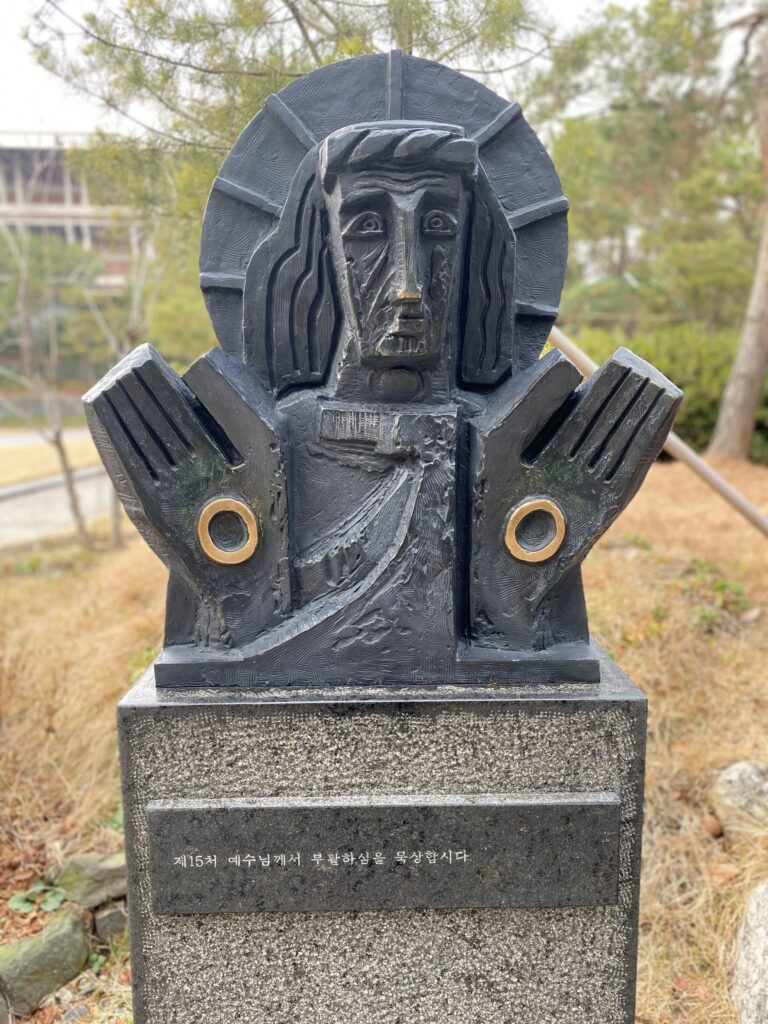
Along the martyrs’ mountain path were beautiful cobblestones and well-trimmed hedges that sat uncomfortably with the memory of 1866. Magpies clicked and cawed in the distance. Our tour group followed the martyrs’ last footsteps, winding up Jeoldusan to a small chapel where their names were etched in stone. We made our way to the chapel, went down into the basement and to the reliquary, their final resting place. A long silence followed. John Park Lao-ho, Mary Kim I-beun, Francis Lee Ui-song, Maoro Yu were among the many names called upon, interrogated, and executed in October 1866. Their testimonies, documented with Confucian precision by the ruling officials at their interrogation, consisted of refusals to apostatize, to turn one’s back on God, to betray Christ. “It’s normal for me to die, not to deny my faith,” Augustine Lee Yong-lae stated. “I will die for my Lord,” John Kang declared.
The Jeoldusan shrine stood as a living reminder of how Christians throughout history have embarked upon the way of Jesus Christ, the way the Apostle Paul described as being “crucified with Christ” (Gal 2:19). This became abundantly clear not only when I heard the martyrs’ stories but when I saw stations of the cross surrounding the mountain path. Completed in 2001 by artist Lee Choon-mann, each station depicted Christ with an indigenous Korean style, vividly displaying the man of sorrows on his long walk into death. I lingered at the final station. Confronted by the resurrected Christ, my eyes fixated on the holes in his hands.
Jeoldusan is a now a place of peace and respite, tucked away from the bustling activity of South Korea’s capital city. It is a sacred site for the Korean Catholic Church and place of pilgrimage for Christians all around the world. John Paul II and Mother Theresa visited in the 1980s. Before we concluded our tour at the entryway gift shop, we visited the museum beside the chapel. A large skylight shone down from the centre ceiling, creating what architect Kim Seunghoy says is an intentional narrative of architectural space— the gentle light resembling the call to martyrdom from the divine flooding the room. The exhibition hall displayed pristine records pertaining to the Catholic Church’s battered history in Korea: letters of St. Andrew Kim Tae-gon, one of the earliest Korean Catholic priests executed in 1846, eye-witness accounts and interrogation records from the Byeong-in persecution, rosaries.
The memory of Christian persecution was uncovered and polished like jade. Centuries-old documents were retrieved. Stories were retold. The martyrs’ legacy lived on. Upon leaving the museum and looking over the shrine’s well-kept grounds, I couldn’t help thinking about the forgotten experiences of persecution in history. How many places like Jeoldusan were out there, but without someone to steward their memory? How many shrines still need constructing? We grabbed coffee near the gift shop and descended the wooden staircase to our bus, which carried us back into the busy world.
Read other InsightOut posts.
Ann Mathew is a Master of Divinity Student at the Regis St. Michael’s Faculty of Theology. She is also an Inter-faith Coordinator with the St. Michael’s College Campus Ministry at the University of Toronto.
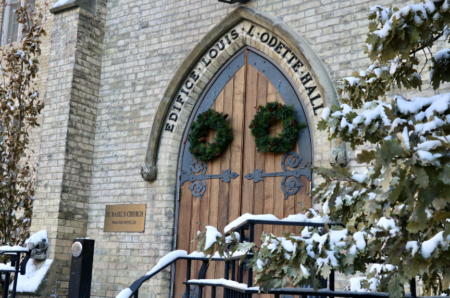
During the Lenten Season, many Christians “give up” certain foods, beverages, and habits. This is also practised during the Advent Season but not on the same scale as during Lent. In fact, I did not even know that one had the option to abstain from certain interests during Advent because it was not until my arrival in Canada that I experienced the season of Advent as it is celebrated here. Growing up, it seemed that Lent was the prime time that led us to Easter celebrations while Advent was overshadowed by Christmas because anything past Halloween meant Christmas.
A dear friend, however, introduced me to the act of giving up something during Advent, just as we would during Lent. This act of staying away from something was not limited to meat, dairy, or food items at large. As an avid lover of music, this friend would abstain from listening to popular secular artists such as Adele and Muse. For the next four weeks, he would allow the likes of Lauren Daigle and Matt Maher and styles such as Taizé and Gregorian Chants to help him prepare to celebrate the birth of Christ. At the end of Advent and on Christmas Eve, I could see the joy that he experienced in having spent the time to focus on his spiritual life a bit more than usual.
As someone who relies on music for inspiration and comfort, I found this to be a big ask but I wanted to try it as well. A few years ago, I decided to use worship music as my main source of prayer during Advent. This was as difficult an experience as I had imagined because November and December are crunch times for students with assignments and exams. While rock and pop music typically provided me the adrenaline rush to focus and write those final papers, here I am, trying to hype myself up with solemn chants. I can still recall the anguish and temptation to turn to my usual sources to complete these assignments over those four weeks. The first thing I did after participating in the Christmas Eve mass was to go home and allow myself to indulge in some Adele. Looking back, it does seem a bit comical, but it is an experience that I would not trade for another because I needed to experiment and figure out what can be given up from my daily life so that I can tend to my spiritual life in a healthy manner.
For the following advent season, I stayed away from processed sugar. Even though I was surrounded by chocolates and cookies, I did not feel drawn to them, which was surprising as I do have a mean sweet tooth. That Christmas, I emerged as a trooper and discovered a healthy way to reorient myself in the season of hope and love.
Although these experiences might seem trivial, each Advent season now gives me the opportunity to test myself physically, emotionally, and spiritually so that I can truly immerse myself in preparing for the glorious coming of Christ in my heart and habits. Whether it be the case where we are abstaining from a practice or trying to begin a new habit, the struggle is incomparable and inevitable. For some of us, it could be staying from a preferred food or beverage, being conscious of and reducing our screen time, or even waking up an hour earlier to allow ourselves some extra time to spend in the presence of God. No matter what that indulgence might be, I guarantee you that you will see a significant change in yourself and how you live and perceive the world. As my spiritual director once said, “When you say ‘No’ to some things, you are saying ‘Yes’ to other things”. When I say ‘No’ to a habit such as binging K-dramas, I am saying ‘Yes’ to other opportunities like journaling, spending time with my loved ones, or even mindful eating. Just because the first week of Advent has gone by, do not hesitate to challenge and inspire yourself to forego something for a few weeks. As you allow yourself to go through those motions of craving and desperation, you might even pick up a new habit that could benefit your whole self in the long run. It is alright if you are not able to get through all the self-directed schedules for the next few weeks to prepare your heart and home for the coming of Christ because it is important to remember that you have tried.
So, what are you giving up this Advent?
Read other InsightOut posts.
Anita Rajkumar is a third-year student completing a Health and Disease Specialist. She is the Community Service and Outreach Coordinator on the Campus Ministry Team at St. Michael’s College. In addition, she is a Senior Mentor on the St. Michael’s College Mentorship program. She enjoys reading and volunteering in her free time.
When red- and green-coloured ornaments are displayed in store windows, holiday songs play on the radio, and Starbucks brings out their selection of winter drinks, you know it’s the Christmas season.
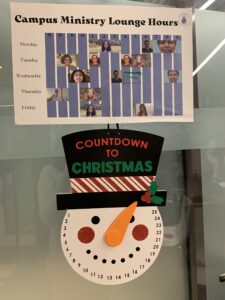
Christmas is defined as a period of joy and happiness that individuals look forward to during the winter season, as it is a time when families come together to make new memories while reminiscing about old traditions. The holiday provides a sense of belonging for individuals of diverse ethnic backgrounds, as it does not require religious knowledge to celebrate, but rather a good spirit. Living in a multicultural city like Toronto, we get one of the best Christmas experiences as it overlaps with traditions of a variety of religious and cultural events.
The Christmas season traditionally begins at the start of Advent, but in western societies, commercialization pushes the date forward to the first week of November. Big box stores begin selling Christmas trees, ornaments, wreaths, and outdoor decorations early in the season to capture the attention of shoppers who would like to decorate their homes. Black Friday has been advertised as a day to purchase gifts for loved ones at a lower price, emphasizing the importance of gift exchange during the holiday season. Although religious views of Christmas do not focus on the concept of gift exchange, this gesture involves individuals expressing kindness and compassion to one another. When I purchase a gift for a family member or friend, I often think about the qualities of the person in order to find the most suitable gift. I purchase the gift to show my sense of gratitude towards the person, rather than expecting a gift in return, which is the true spirit of a holiday season that combines religious and secular views.
God gave humanity the ultimate gift, his son, the Saviour, Jesus Christ. On the Campus Ministry Team, we respond to God’s vocation by collecting toiletries and non-perishable donations for homeless shelters within the GTA during the holiday season, allowing all students to participate in the act of giving regardless of their religious background.
The beauty of Christmas is that there are no mandatory traditions tied to the holiday, which makes it easy for people to adapt and invent new traditions. My family begins decorating the Christmas tree early in November, as we enjoy observing the bright lights and ornaments early in the season, which contrasts with those who begin decorating once the Advent season begins. Stockings hang off the fireplace while nutcrackers, snow globes, and garlands fill my household. Placing the wreath on my front door symbolizes my family’s cultural identity and reminds me of how fortunate I am to live in a city that provides me with the freedom to participate in cultural events. Every year, my sister and I decorate gingerbread houses while watching classic Christmas movies like “Home Alone” and “Elf” on Christmas Eve. A tradition in my family that has been passed down for many generations includes making Sri Lankan Christmas cake, which is a decadent dessert that is made with candied fruits, nuts, rose water and brandy that must be made many weeks in advance to Christmas. Social gatherings are a central part of the holiday season so on Christmas day we exchange gifts and have a holiday meal with the extended family.
There are many opportunities to experience the Christmas season within the Greater Toronto Area. Every winter, the Distillery District is transformed into the Toronto Christmas Market, which provides an old-charm, European experience without leaving the country. The Cavalcade of Lights at Nathan Phillips Square is a must-see destination to experience the holiday lights, annual tree lighting ceremony, and go ice skating. Winterfest at Canada’s Wonderland is a similar event that is becoming increasingly popular. The Hudson’s Bay Holiday Windows at the Eaton Centre was a childhood favourite of mine, as it displayed Santa Claus and his elves preparing for Christmas. Unfortunately, the window displays have been updated since then, but it is still an iconic display. The annual Santa Claus Parade brings the community together onto the streets of Toronto, where people sing holiday carols and enjoy observing parade floats while collecting donations for a good cause. Recently, there have been parade floats with Chinese dragons and Indigenous symbols, representing the diverse communities within the city. These events provide a western perspective of the Christmas season that all individuals can engage in, despite their various denominations.
Here at the University of St. Michael’s College, we embrace the religious and secular values of Christmas by hosting a variety of events students can participate in, which include gingerbread cookie decorating events, Christmas dinners, Christmas markets and a Mass at St. Basil’s Parish. These events often support vulnerable communities within the city, allowing students to bring joy to people in need.
Ultimately, I believe Christmas in Toronto is more than a religious—or secular – moment but is a time for us to come together as a community, regardless, to celebrate the love we have for each other through selfless acts.
St. Mike’s is accepting donations for Out of the Cold’s Christmas Food Drive. Please bring your non-perishable food items to the donation box on the main floor of the Kelly Library and in the Campus Ministry Lounge (Brennan 101) any time between now and Dec. 16. Also a reminder that proceeds from the Christmas Market (Dec. 8) will go to this year’s winter charities, St. Basil’s Out of the Cold and Romero House. You can also make an online donation using this form: https://stmikes.utoronto.ca/christmas-drive-2022.
Read other InsightOut posts.
Dr. Christina Labriola combines musical praxis as a choral conductor, mezzo soprano, and keyboardist with theological scholarship in Christian spirituality and music. She holds a Doctorate in Theology and a Master of Sacred Music from the Toronto School of Theology at U of T. Christina has recently been named as Artistic Director of the St. Michael’s Schola Cantorum. She also serves as Director of Music for the Office of Campus Ministry at St. Mike’s, and Sessional Lecturer in Sacred Music at Our Lady Seat of Wisdom College.
The Schola Cantorum will perform the works referred to below at their concert, to be held Monday, November 28 at 7:30 pm in St. Basil’s Church.
Here on the St. Michael’s College campus, as the days grow shorter and greyer and the nights longer and colder, as the shadows lengthen and trees shed their coloured leaves, our thoughts naturally turn to endings. Fittingly, November in the Christian liturgical year is tinged with an eschatological flavour. The month begins with the feasts of All Saints and All Souls, when the Church bids us call to mind the heavenly joys of the communion of saints, and to pray trustingly for the faithful departed. It culminates in the celebration of Christ the King, with the acknowledgement that all time belongs to Christ, whose glorious Second Coming we await with hopeful anticipation. There is a stark, mystical beauty to this time of year, poised as it is at the end of one liturgical year and the beginning of the new, that offers a glimpse behind the veil of quotidian life at the spiritual reality impinging upon it. It invites remembrance, reflection upon our lives from the perspective of eternity, awareness of the passage of time, and, for Christians, a renewal of the hope of future glory.
Our program for organ and voices offers an extended musical meditation inspired by the mystical, reflective, eschatological aspect of this time of year.
Caritas Abundat is a liturgical chant from the Symphonia Armonie Celestium Revelationum of St. Hildegard of Bingen, the vivacious and brilliant 12th century German nun, composer, visionary, and theologian. Music was central to Hildegard’s holistic theological vision. In her writings, she treats music as a force of tremendous spiritual, theological, and moral import, eloquently expounding upon the mystical nature of music and its centrality to a life of prayer and virtue. The piece, composed to be sung by the female voices of Hildegard’s Benedictine community, is a tender and ecstatic liturgical song in praise of the Holy Spirit, under the feminine allegorical figure of Caritas. Hildegard’s cosmological sensibility – her sense of the strength and vibrancy of God’s life-giving love illuminating every facet of creation – comes through palpably: Divine Love embraces all things and reaches up to bestow her kiss upon the High King. Her transcendent and passionate text is wedded seamlessly to her freely melismatic, expressive music.
As truly as God is our Father (1987), an anthem for organ and mixed choir by Welsh composer William Mathias, sets selected words of the great 14th century English mystic and anchoress, Julian of Norwich. Julian’s Revelation of Divine Love, the first book written by a woman in the English language, expresses a powerful mystical sensibility derived from her visionary experiences. Julian’s message is one of hope and restoration in the face of the suffering and fragmentation of sin: she speaks of the mystery of the Trinity, of God’s love for and radical intimacy with fragile creation, and humanity’s ultimate destiny of joy in union with God. Mathias highlights Julian’s use of complementary masculine and feminine imagery, using upper and lower voices in alternatim. From the quiet, reflective opening, the anthem builds through repeated iterations of “It is I” to a dazzling and fervent climax, before closing with Julian’s famous words, “All shall be well” – a divine promise of immense comfort.
The famous O quam gloriosum is a four-voice motet for the feast of All Saints, composed in 1572 during Victoria’s time in Rome. The text presents the radiant beauty and rejoicing of the great multitude of the righteous in the kingdom of heaven, clothed with white robes as they follow the Lamb (an allusion to Revelation 7). Victoria masterfully depicts the glorious vision with a sense of ecstatic joy, energy, and verve that continues to the very last note.
O Sacrum Convivium! (1937)is an offertory motet by 20th-century French Roman Catholic composer and organist Olivier Messiaen, setting a liturgical text ascribed to Thomas Aquinas. While much of Messiaen’s work is infused with religious themes and serves as a vehicle for meditating upon the truths of his devoutly held faith, this brief motet is the only vocal liturgical composition by the prolific composer: a unique gem. With its hushed quality, very slow, unequal pulse, and complex, colourful harmonic language, the work reverences the Blessed Sacrament, proceeding with an air of absolute awe that rises to an expressive, fervent peak at the anticipation of future glory.
The brief yet lush anthem As the Apple Tree (1982) by British composer Robert Walker sets words from the Song of Songs, a scriptural poem with a long history of interpretation as a love song between God (or Christ) the Bridegroom and his bride, the soul (or Israel/the Church). The erotic language expresses the fervency of devotion, passion, and mutual desire, captured beautifully by the sense of longing in Walker’s setting, especially in the repeated iterations of the voice of the beloved: “Rise up, my love, my fair one.” The long, undulating melismatic phrases present in both choir and organ give the effect of a gentle breeze blowing through the leaves of a tree – an impression heightened towards the end of the piece where Walker’s aleatoric effect has each voice murmuring freely at its own pace.
In The Beatitudes (1990/91), one of only a handful of his works in English, Estonian composer Arvo Pärt employs the techniques of minimalism and Tintinnabulation that are hallmarks of his style. The composer’s manipulation of time, sound, and silence takes on mystical proportions. The contemplative nature of melodic chant, together with the simplicity of the triad, as in the overtone sounds of a bell, present us with a sense of sonic purity. Each pair of benedictory phrases from the opening of Jesus’s Sermon on the Mount are set in a meditative, declamatory style, punctuated by a silence, creating a sense of timelessness. Each clause moves a chromatic step higher, creating a sense of gradually rising tension. The process reverses in the final bars, as the ecstatic, undulating organ cadenza eventually “unfurls,” slowing and fading to nothing.
Ralph Vaughan Williams’s Five Mystical Songs (1911), is a cycle setting the metaphysical poetry of George Herbert, poet and pastor of the Elizabethan era. Scored for solo baritone, the work is versatile in its possibilities for accompaniment; tonight we are employing a version for solo voice, SATB choir, and organ.
Inspired by the visionary qualities of Herbert’s religious verse, Vaughan Williams draws from the poet’s 1633 collection, The Temple, which the poet-priest described as “a picture of the many spiritual conflicts that have passed betwixt God and my soul.” With their richly symbolic, Biblically allusive language, the texts are performed prayers, meditations, and dialogues of the heart with God. In the Five Mystical Songs, O. Alan Weltzein finds a spiritual and artistic symbiosis between poet and composer, to the extent that “the re-creation [of the poems as music] realizes or completes Herbert’s intentions, as if these well-known poems had to wait almost three centuries to gain a new wholeness, or proper resonance, in Vaughan Williams’ setting of them.” Their “collaboration renders audible these poems’ intensely imagined but unheard music”.
Vaughan Williams executes each of the Five Mystical Songs with heartfelt religious feeling. The first, Easter, reflects the believer’s joy at Christ’s resurrection and hope for his own resurrection in Christ. Music-making is employed as an especially fitting mode of praise, perfected and completed by that of the Spirit. I Got Me Flowers continues the reflection upon Christ’s rising, voicing confidence in him as the true and eternal Sun. Love Bade Me Welcome, the centrepiece and most intimate of the songs, depicts a dialogue between the poet/soul and Love, the welcoming Host of the Love Feast. While the guest demurs, faced with his own hopeless inadequacy, Love is quick to respond to his objections and scruples, drawing him in to an embrace that culminates in the communion meal, evoked by the wordless intoning of the plainsong melody by the choir, O Sacrum Convivium (O Sacred Banquet). The guest at last acquiesces and lapses into silence as the mystical meal is consumed, expressed in the final, understated, laconic line: “So, I did sit and eat.” The encounter with Divine Love thus culminates in a eucharistic experience of intimacy. The Call, a simple, folklike hymn for solo baritone, expresses trust and faith through its strong, trifold parallelism. Finally, in Antiphon, the foregoing reflections are summed up and turned into a triumphant hymn of praise for the whole choir, to the jubilant accompaniment of pealing bells: “Let all the world in every corner sing: my God and King!”
Read other InsightOut posts.
St. Mike’s alumnus Dr. Simon Appolloni is an Assistant Professor at the University of Toronto’s School of the Environment. His current research interest lies in understanding and utilizing pedagogies of hope that build resilience within students as they navigate paths toward sustainability. Simon has maintained his pre-doctoral volunteer work within the environmental-social justice not-for-profit sector.
You’ve been hearing and – in some cases (certainly if you’re in my classes) – learning about it for some time. You can’t really escape it even if you try, as something in the news will assuredly jolt you. I am talking, of course, about the environmental crisis we have, notably the changing climate that means storms, droughts, heat waves and forest fires will increase in intensity, duration, and occurrence.
You might even have learned about the degree to which the fossil fuel industry has deliberately deceived society about climate change over the past decades. They have fostered climate denial by convincing a good portion of society that the ‘science behind global warming is not settled’. This, despite the fact that scientists at Exxon, as early as 1970, were well aware of the coming catastrophes brought on by our continued and unabated burning of fossil fuels.
You’ve likely connected the dots by now and have realized what all this might mean for you and the lives of your children on this beautiful planet. Unless our political leaders heed the science and do the hard work of not just promising policies but fully acting upon them (current trends will not get us there), life in Canada will become more stressful physically, politically, and economically. Sadly, communities in the global South – most of whom have not contributed to greenhouse gas emissions – already feel these stresses and will experience the brunt of climate change fallout in the decades ahead.
If any of this makes you feel sad, distressed, disgusted, angry, anxious about the future, know that such emotions are entirely appropriate! And know that you are not alone. A recent study led by researchers from the University of Bath in the UK surveyed 10,000 young people, aged 16–25 years, in 10 countries. Overall, 75% of the young respondents said, “the future is frightening.” Many felt betrayed by the perceived government inaction which leaves generations to come to do the hard work.
Teaching environmental studies at University of Toronto for some time, I have become aware the increased eco-anxiety among students. Many of you are anxious about the uncertainties surrounding your future. You’d be justified in feeling let down by an older generation. Greta Thunberg hit the nail on the head when she dismissed the climate rhetoric of world leaders with her famous “blah, blah, blah” speech. You may even feel powerless or helpless.
I have moved away from teaching students about the prospect of so-much destruction only to wave them good-bye at the end of term, a sort of “have fun storming the castle!” (for Princess Bride fans out there). I – all of us teaching and working at University of Toronto – have a responsibility to help you develop some form of resilience (that is, emotional and psychological strength) as well as hope, even if that hope is somewhat dark.
The good news is that it is possible to do just that! While some things do look grim, especially for life in the global South, in many instances there are positive signs and sustainable initiatives that are also happening. We need to dig deeper to view the whole picture and more accurate description of what is going on. Moreover, there is still much we all can do. The story is far from over. I’m suggesting a three-pronged approach.
1) Change the Narrative
We hear about the bad news (think recent devastating floods in Pakistan), but seldom do we hear about the wonderful progress toward sustainable and just practices throughout the world:
- #OceanOptimism is a great resource to find examples of successes and solutions of ocean conservation around the world.
- Solutions Journalism cites numerous stories – seldom heard – throughout the planet of positive developments on just and sustainable societal practices.
- Rapid Transition Alliance is another good site to learn how often society in the past has rapidly transitioned and can assuredly do so again.
2) Foster healthy practices
Whether it is practising mindfulness, journaling what you are feeling, creating art, expressing daily thoughts of gratitude, or taking long walks in nature, these – especially when carried out in concert – are evidenced-based strategies to ease anxiety. When possible, I try to weave these into my students’ assignments.
3) Connect with others to talk about it, then act on it
You do not, should not, have to go through the above emotions alone. There are many groups out there, some close to home like Clean SMC, that do environmental advocacy and action, others are there to exchange ideas and process emotions, like Carbon Conversations. Closer to home, Mallory Furlong and Nolan Scharper – two students who did stellar work conducting research on eco-anxiety for me this past summer – run Climate Crisis Cafes on or near campus with small groups of students who want to share how they feel about climate change with others. Reach out to them at climatecrisiscafe@gmail.com or @climatecrisiscafe.
Read other InsightOut posts.
Alessia Baptista is a fourth-year student majoring in English. She is currently the Editor-in-Chief of The Mike Publications, the official bi-weekly student newspaper at St. Michael’s College since 1947. Post-graduation, she plans to further her education by pursuing a Master’s Degree in Journalism, Media, or a related field.
It all started on my Welcome Day, June 8, 2019, when I was walking through Brennan Hall and noticed The Mike’s banner outside of what is now the Campus Ministry Office. I remember getting so excited that there was a campus newspaper that I took a photo of the banner (which I still have). Naturally, I went home and checked The Mike’s website to learn more about how I could get involved and was devastated to see applications for the Masthead were closed. It was at that moment I promised myself I wouldn’t miss next year’s applications.

In the meantime, though, I tried to be part of The Mike in my first year as a contributor. I remember picking up an article for the Opinion section about whether U of T’s college book sales were beneficial to students. This was when The Mike broke my heart: the article was rejected, and rightfully so. I had no idea what I was doing. I didn’t know the first thing about writing an article or being in a newspaper, let alone how to write for an Opinion section.
The article that did make it to publication was my first-ever Feature for The Varsity about how caffeine affects students. If you know anything about campus publications, Features articles are the longest since they’re comparable to an essay and, more often than not, students are the least inclined to write for this section due to the length required. With the help of Stephanie, the Features Editor at the time, I finally had an article make it past the writing process and I learned more about how to write for a newspaper.
It was only upward from here: in 2020, I kept my promise to myself and applied to be the Lifestyle Editor at The Mike. I was acclaimed to the position, and that’s where my editorial journey began. While The Mike moved to online publication due to COVID, I had an amazing experience working with Chiara, the Editor-in-Chief of The Mike in 2020-2021. I’d met with her a few times to further educate myself about newspaper production in hopes that one day, ’d be lucky enough to hold a higher position at The Mike. Last year, I had the pleasure of being the Managing Editor for 2021-2022 during another year of remote production.
Fast forward to today and I am currently the Editor-in-Chief for the 75th volume of The Mike. I am especially honoured to hold this position as we celebrate 75 years of publishing student voices, written by SMC students, for the St. Mike’s community and beyond. It warms my heart knowing that I am lucky enough to be a part of something so impactful. Seeing students pick up a copy of each issue, hearing their excitement as they anticipate the next crossword, and working with an amazing team of editors makes all the late-night emails and endless edits worthwhile. You’ll never catch me without a newspaper in my hands or in my backpack, be it The Mike, the latest issue of The Varsity, or even The Strand from Victoria College. I believe it’s especially important for students to have their voices and opinions heard, and I’m grateful every day that I can provide an outlet for expression through contributions in The Mike.
If you can’t already tell, I love what I do at The Mike. As stressful as it may be running a bi-weekly newspaper on top of my studies, I wouldn’t trade it for anything in the world. Being a part of student journalism has significantly improved my writing skills, taught me time management, and enhanced my attention to detail. Above all, it’s helped me realize that I’d like to consider pursuing a career in journalism or media.
Before coming to university, I was fixated on coming to U of T to study Kinesiology, the exact opposite of my current degree. The switch happened when I decided to pursue a major in a subject I’m stronger in, since Math is one of my weaknesses. Growing up, I always loved to read and write–I was the kid who always had a book on her desk in school, got in trouble for staying up and reading at night, and wrote stories in her spare time. My love for writing was always there but being a part of student publications has exposed me to a whole new world of writing beyond creative writing (and, admittedly, I am an awful fiction writer).
The first step to becoming a good writer is to just start. So many students tell me they’re afraid to write articles because they aren’t good at it. I always tell them my story in the hopes that they can hear about how I wasn’t that great at writing, but that I didn’t let that stop me. Even still, I’m constantly improving the way I write, because if there’s one thing about writing, you can edit as much as you want, but you’ll almost never achieve the perfect final piece. There will always be room for improvement, and I think that’s one of the things I love most about what I do. Writing will never go away; there’s always going to be a story to tell. Whatever your story is, or whatever topic interests you, I hope you find the confidence to just start and take a chance on yourself.
Read other InsightOut posts.
Jacqueline Murray has been a Professor of History at the University of Guelph since September 2001, where she was also Dean of Arts. Previously she was a member of the Department of History at the University of Windsor. In 1987, Jacqueline graduated from the University of Toronto with a Doctor of Philosophy in Medieval Studies. Her research specializes in sex, gender, and sexuality, masculinities and embodiment, as well as marriage and family in premodern Europe. She is a Visiting Fellow at St Michael’s College from 2022-2024.
My first connection to St Mike’s started even before I arrived in Toronto. As an undergrad at UBC, I became fascinated with the Middle Ages. Medieval history became a huge part of my life, my passion and eventually my vocation. In those days, medieval history revolved around kings and popes; politics and religion. Then, Father Michael Sheehan from the Pontifical Institute of Mediaeval Studies (PIMS) visited UBC and delivered a series of lectures about the lives of ordinary medieval people, and particularly about marriage and the family.
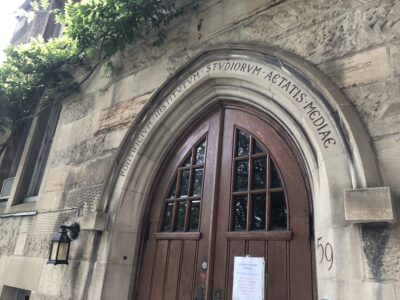
He opened my eyes to a completely new approach to the study of the Middle Ages and I knew I wanted to be part of it. This was in the 1970s when feminism was challenging society and women’s history was just emerging. I wanted to integrate these important perspectives into my study of the Middle Ages, so I decided to do my honours thesis on how women were treated in a medieval law code. I had the chance to speak with Father Sheehan about the feasibility of this research and he was encouraging. I think his endorsement helped convince my supervisor, the great political historian, Janos Bak, to let me pursue a topic that was considered rather daring at the time!
My encounter with Father Sheehan changed my life forever. I came to U of T to pursue graduate work with him and my first steps in Toronto were across the St Mike’s quad to Father Sheehan’s office. While I originally intended to follow his lead and study marriage and the family, to my surprise (and to Fr Sheehan’s!!!) the medieval sources led me in a different direction: to the church’s understanding of human sexuality. These same sources led me to my current research on medieval masculinity, a topic central to understanding the history of the Middle Ages.
I consider St Mike’s and PIMS to be an intellectual home. From my days as a graduate student, I have had the opportunity to really connect with the thriving medieval community and to hone my skills as an historian. These days, I am using a broad array of sources including hagiography, sermons, medical texts, and chronicles, in other words, historical, religious, and theological texts to explore human sexuality, masculinity, and male embodiment– that is men’s experience of having a human body that is sexed male. I am finding this research helps to illuminate medieval understandings of chastity, misogyny, and patriarchy. Because most medieval sources were written by male authors, they capture a masculine perspective on questions about being human. My research also reveals some of the foundations of our contemporary society’s ideas and values that emerge from the Middle Ages.
My work has brought me many rewarding experiences, for example, to organize and host the conference “Masculinities in the Pre-Modern World: Continuities, Change, and Contradictions,” (November 2020). Seventy-five speakers engaged with over 200 participants from around the world (thanks to Zoom). The conference demonstrated the power of technology to bridge distances, connect people, and erase the geographic and demographic limitations that have hindered scholarly collaboration in the past. It was such an exciting and enriching experience. Since then, I’ve edited two collections of essays based on the conference: Patriarchy, Honour, and Violence: Masculinities in Premodern and The Male Body and Social Masculinity in Premodern Europe. Both these books were published by our neighbours, The Centre for Renaissance and Reformation Studies at Victoria College. I am also currently working on a book, tentatively titled, Men’s Bodies, Men’s Minds: Masculinity in the Medieval West, which I hope to complete during my Visiting Fellowship at St Mike’s.
There is so much to be discovered right here on campus! My ongoing affiliation with St Mike’s will allow me to deepen my ties with colleagues and students, building on lifelong relationships while forging new academic friendships that will allow me to continue to contribute to our important on-going academic conversation.
When I think back on my journey, I remind myself that the road isn’t straight – it has unexpected twists and turns, but in life there are no wrong paths, only, as the poet Robert Frost said, “the road not taken”.
My path has led me back to my academic home at St Mike’s, a constant in my life whether as a student hanging out in the PIMS Common Room, or as a scholar retracing my footsteps to seek out such an important part of my past.
I relish and honour this homecoming and look forward to sharing it with all of you.
Read other InsightOut posts.
Catherine Mulroney, St. Mike’s Editorial Manager, holds a BA and an MDiv from St. Michael’s. She arrived on campus shortly after the statue of St. Michael was installed in the quad and remembers the debate well. As one of the creators of the InsightOut blog, she is happy to note that today’s piece marks the blog’s 170th entry – on St. Mike’s 170th anniversary. Happy Michaelmas!
If asked to name the heart of the St. Mike’s campus, it would be tough to come up with a single answer because there are so many correct responses. I’d start with our classrooms, because that is where the essential work of a university takes place. But the learning that happens in the classroom spills over into the special lectures and social events that take place in Brennan Hall, and into our residences, where friendships are formed, and to the Kelly Library, with its mix of academic services and the welcoming space of the Kelly Café. Every corner of our campus is infused with purpose, dedicated to supporting students as they learn more about themselves and the world — and how they are called to serve that world.
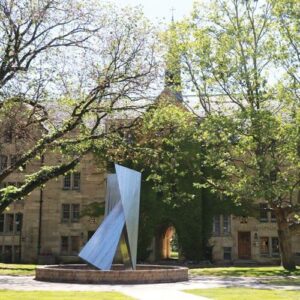
In the days leading up to our annual celebration of Michaelmas on September 29th, though, I would point to the statue of St. Michael, our patron, in the quad. St. Mike’s archivist Jessica Barr notes that Michael was created by Anne Allardyce and that the 15 ½ ft tall stainless steel work was commissioned by the Collegium to mark the 125th anniversary of the college. As we celebrate our 170th anniversary, Michael remains a powerful symbol of our purpose and our place in the world.
Those who were around in the days when Michael was new to campus often mention that the work prompted much debate. It certainly isn’t the traditional Renaissance Michael, adorned in armor and leather battle skirt, sword held aloft. That the work was contentious doesn’t surprise, because change is often unsettling, and when art is effective it often moves us out of our comfort zones. The lively discussions offering interpretations of Michael speak to our role as a liberal arts university. Our purpose is to encourage students and others to participate in fruitful, often challenging, discussions about our world and our understanding of what we know and what we think we know, helping to clarify and deepen our thinking on topics such as faith and beauty – and conflict.
Michael can be seen as the heart of St. Mike’s because its distinctive look points not only to our Catholic roots but also to our place as a home to a diverse student population, as the Archangel Michael is recognized across the Abrahamic religions. It is fitting, therefore, that the statue provides great orientation to anyone visiting our campus and offers an ideal meeting spot. Often colleagues crossing the park to attend meetings at the University of Toronto will meet up in the centre of the quad, and it always makes me happy to pass by Michael and see students seated on the statue’s surrounding wall, chatting about everything from a recent lecture through to plans for the weekend.
Michael also deserves to be considered the heart of the campus because it sits in the middle of the quad, surrounded by both dorm rooms and classrooms, its stark beauty standing in stunning contrast to the green space encircling it. There’s a reason many refer to St. Mike’s as an oasis in the city, as our grounds are an inviting outdoor space not only for students but also for neighbours in the local condos. Whether it’s the students monitoring our bee boxes or groundskeeper John Scarcelli planting milkweed in our rock gardens to encourage monarch butterflies to visit, we are dedicated to creating a sustainable campus both indoors and outdoors, and Michael is ensconced in with the middle of it all.
But Michael also deserves to be considered the heart of the campus because of how the archangel is depicted. From many angles, the statue looks poised to take flight, a classic metaphor for university life. Our goal as an institution of higher learning is to help our students find their purpose and their goals, helping them learn how to launch into life. At the same time, though, the wings of the statue also suggest protection, safe haven, and welcome, reflective of our commitment to offering students a safe and welcoming place for them to think and learn and wrestle with the great questions of life.
That welcome, of course, extends to our alumni and friends. As we mark Michaelmas this Thursday, September 29, which is not only the feast of our patron saint but also the day on which many of the world’s great universities mark the beginning of the fall term, everyone is invited to join in the celebrations. St. Mike’s does not exist in isolation, in an aloof ivory tower, but very much as part of the world and we are eager to come together as a community to celebrate that ongoing reality. We hope to see you then.
Read other InsightOut posts.
James Roussain is currently Interim Chief Librarian at the John M. Kelly Library. He joined the Library staff in 2017. Prior to that, James worked at Scotiabank, where he was involved in the maintenance and deployment of the corporate records management program. James is a past president of the Archives Association of Ontario (AAO) and the Toronto Area Archivists’ Group (TAAG). In his spare time, he is pursuing a Master of Education in Higher Education at the Ontario Institute for Studies in Education (OISE). He holds a Master of Information degree from the University of Toronto’s Faculty of Information.
Although we were able to keep our doors open for most of the last school year and come ready with years of experience, the Kelly Library is feeling some back-to-school jitters as we approach the new semester. A lot has changed. What is in store for us this coming year?
The biggest question being asked around the library right now is focused on our students: What will they need? Our role on campus has long been to help our students reach their academic potential. We are here to help by offering research consultations, lending books, media, and technology, and offering a quiet and comfortable place to gather and study. This is our wheelhouse–at least we think it is. After two-plus years of online learning, are we now out of our depth? How have the needs of our incoming students changed?
After more than two years of online learning there is little doubt that our users are now comfortable operating in a wholly new environment than where we left off in the “before times.” As everyone returns to campus this fall, we must be ready to adapt to new expectations of the campus library. For some students—say those who were in Grade 10 in March of 2020—two years of online learning has meant that, for many of them, this may be their first time approaching an academic library. Do they know what we can offer? How can we help them navigate this new and often intimidating world?
We can take comfort in two things. The first is that while we may be nervous about a return to in-person work and meeting the needs of a changed student body, so too are the students. Openly acknowledging the challenges of reacquainting with the university experience is a good icebreaker. Second, the Kelly Library can certainly rely on our slate of services, collections, and in-house expertise. While we look openly to understanding how we can engage students in the academic process, we remain ready to go. Here are a few highlights and updates on where we stand as of September 2022.
Looking to learn from our experience hosting online services, we are restructuring many of our core offerings with an eye to improving accessibility and to meet students where they are (both physically and in an academic sense). All our research and writing consultations will be offered in a hybrid model, where students will be able to choose whether they wish to meet online or in person in the library. Our academic librarians have met with more students over the last two years than since we began tracking these things. There was a clear need to improve accessibility and we hope that being able to meet online going forward will continue this trend. For those who seek a quiet refuge on campus, all our study spaces—including our group study rooms—will be fully open as of September and we welcome all members of our community to come visit and say hello.
We are also looking forward to further welcoming students enrolled within the Regis St. Michael’s federation. While students from all colleges have been welcome to avail themselves of our services and collections, the new federation and the corresponding excitement on campus have caused us to look for
new ways of engaging our community more broadly. For those of you who are new to the Kelly Library, welcome, and we look forward to seeing you around the stacks.
Ultimately, our role on campus—both within the library and more broadly among faculty and staff—is to stay abreast of trends within teaching and learning. The last few years have been a challenge for all of us, perhaps more so for our students, as we faced an accelerated period of change. If anything, this has taught me to stop and listen. Listen to what our students are saying, listen to their frustrations—cameras off is okay!—and seek to understand how we can help them succeed. If we all take a similar stance, I am confident we can smooth the transition to an in-person university experience for all of us. The librarians and staff at the Kelly Library are ready, and we look forward to seeing you all again soon.

Read other InsightOut posts.
Angela Convertini graduated from St. Michael’s College in 1977, majoring in French and Italian, and received her Bachelor of Education from OISE in 1978. She completed the Degree of Master of Science in Education from Niagara University in 1986. In 1992 she received her Ontario Supervisory Officer certification (SOQP). In September 1978 she was hired by the then-MSSB and began her career in Catholic education at Loretto Abbey, serving as teacher and then Vice Principal. In 1989 she was Principal on Assignment with responsibility for Special Education in secondary schools, then Principal at Loretto College School, Cardinal Newman (now St. John Henry Newman Catholic High School), and Cardinal McGuigan Catholic High School. In 2004 she was seconded from the TCDSB to be Dean at Loretto College Women’s Residence, at St. Mike’s, where she remained until 2016. After several years of assisting her beloved parents in Niagara Falls, and volunteering at Queenston Place Retirement Residence, she has returned to Toronto and is presently serving on the Loretto Abbey Parent Association’s Spirit and Culture Committee, and on the Board of Directors of Catholic Charities of the Archdiocese of Toronto.
As we prepare to celebrate the 175th anniversary of the Loretto Sisters’ landing in Toronto on September 16, 1847, I have reflected on my Loretto experience, and the impact it has had on my life and my time at St. Mike’s.

My introduction to Loretto goes back to elementary school in Niagara Falls, where the Loretto Sisters were my teachers and principals. From there I went to Loretto Academy, and then to St. Michael’s College and Loretto College Women’s Residence, where I was active in student government and became a Don. In 2004 I returned to be Dean of Women.
A Loretto education meant being steeped in the values of Loretto founder Mary Ward. Justice, integrity, and freedom were not just words for us. These values became a part of our decision -making, our interactions with others and, in short, of our lives.
I have so many wonderful memories of my years in residence at Loretto College. The many social activities in conjunction with St. Mike’s, including the weekly Friday night pubs in the COOP and the coffee houses where we could share our musical and literary talents, were great opportunities for the young men of St. Mike’s to elevate their language and behaviour in the presence of the young women of Loretto!
Life at St. Mike’s was not all social. We did, in fact, attend classes and study. I fondly remember Fathers Charles Principe, and Richard Donovan, whose classes in French language and literature provided a wonderful foundation for me as a future French teacher. Father Belyea’s lectures were stimulating, thought-provoking and always generated interesting, and sometimes heated, discussion as varying points of view were debated.
In those days, the student liturgies in St. Basil’s basement chapel were very special. We at Loretto were greatly involved in the planning of the “folk Masses”. We actively participated as lectors, musicians, and members of the choir. The Basilian priests were not just celebrants at Mass once a week but were present in every aspect of life on campus, from the Chapel and the classroom to the COOP.
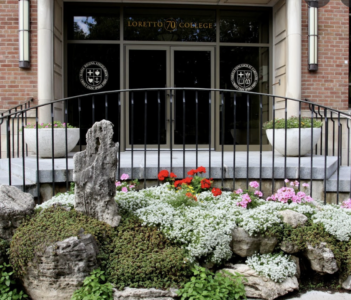
During the 70’s social justice was front and centre at Loretto. Through the many workshops and talks we attended and sponsored we became aware of the terrible conditions under which the workers in California migrant camps were living and working. Under the leadership of our Dean at the time, Sister Carolyn Dawson, we decided to support labour activist Cesar Chavez by boycotting lettuce and grapes at the residence. Furthermore, we began to speak of the injustice with our families and friends, thus broadening the scope of our boycott, while educating the larger community.
The Loretto Sisters have made major contributions to St. Mike’s academically. Like many before them Sisters Olga Warnke, Frances Nims and Marion Norman were extremely well-respected and loved professors for many years at St. Mike’s, and I dare say, have become legends.
During my years as Dean, the Loretto Sisters were in the forefront regarding environmental issues. They were the first on campus to install solar panels on the roof of the College, and to renovate to conserve hydro and water. With incredible patience, the Sisters, the staff, and the students survived the many months of major renovations. In the end all were delighted with the results.
In collaboration with the Mary Ward Centre at Loretto College, Loretto and St. Mike’s students had an opportunity to minister to the homeless in Toronto. On Saturday mornings throughout the winter months, the students would gather at Loretto to make sandwiches and prepare hot drinks to take along on the homeless walk. This ministry proved to be a deeply spiritual experience for many.
In essence, I believe the contribution of Loretto to St. Michael’s College can be summarized by the lessons we strive to inculcate in each of our students, whether they are in our classrooms, or in our residences.
Loretto empowers young women to challenge injustice and to work toward just and meaningful policies and laws. It teaches love of God, love of self and neighbour, and stewardship of creation. Loretto teaches endurance, resilience, determination and even joy in hardship. Loretto also teaches hospitality, generosity, openness, optimism, and laughter.
I truly believe that Mary Ward’s values of justice, integrity, and freedom contribute to making St. Michael’s College the wonderful community it is, and to making the world a better place.
Please join the Loretto Sisters and Associates at St. Michael’s Cathedral at 10:00 a.m. on September 17, to celebrate the 175th anniversary of the arrival of the Loretto Sisters from Ireland. Learn more about the history of the Lorettos and their contributions to the community from our 100 Years of Women’s Education at St. Michael’s College timeline.
Read other InsightOut posts.
Dr. Cynthia Cameron holds the Keenan Chair of Religious Education and is an Assistant Professor of Religious Education in the Faculty of Theology. Prior to coming to St. Mike’s, she taught undergraduate students at Rivier University and graduate students at Boston College and Loyola University New Orleans. Her research focuses on adolescence, particularly female adolescence, and the history and mission of Catholic schools.
Based on the title of this post, you’d be forgiven for thinking that I am about to offer deep spiritual insights from the matriarchs and patriarchs of the Bible. But I am not. In this case, Levi and Hannah are my dogs. And while they are awfully adorable, they are not, by nature or vocation, spiritual guides. Except that they have taught me a great deal about what it means to try to cultivate a spiritual life.
As do many people, I often find it a bit of a challenge to maintain my spiritual journey in the midst of the busy-ness of modern life. Writing syllabi and planning class sessions; writing for publication; tending to my personal relationships with family and friends; keeping up with the mundane tasks of day-to-day life. And, while attending Mass is a part of my regular schedule, the other aspects of a spiritual life can sometimes fall through the cracks. But, I find that living with dogs is deeply connected to my spiritual life. Lots of other folks have reflected on daily walks (with or without dogs) as a spiritual discipline and others have noted the ways that dogs invite us into the dynamic of spirituality. What I find is that my two dogs teach me two different things about cultivating a spiritual life.
Levi is my nine-year-old, blonde, goldendoodle; I adopted him when he was about a year old. Levi is an easy-going, calm, snuggly dog. He mostly just wants to be where I am. He sits next to me on the sofa when I watch TV, sleeps under my desk when I’m working, and snuggles up on the bed at night. He is predictable: he pees and poops at the same times every day; he loves meeting new people; he hates thunderstorms. And Levi is gentle; when he wants a pat, he lays his head in your lap.

Levi reminds me of the times when the spiritual life is relatively easy. When prayer comes easily and regularly and when things are predictable. Levi is the mascot of a spiritual life that is both uncomplicated and full of the rich experiences of love. It is a spiritual life that brings warmth and comfort to my life. It is a spiritual journey that reminds me of God’s love for me and that is full of joy in healthy relationships, satisfaction in my work, and a focus on the day-to-day-ness of life.
Hannah is my standard poodle; she is five years old and I have had her since she was a small puppy. Hannah is a princess. All of those stereotypes about poodles being divas are embodied in this dog. On the one hand, she is bouncy and energetic and silly; she loves to run and play and she always has an eye peeled for squirrels. On the other hand, she is weird and high-maintenance. Yesterday, she would only pee on the sidewalk; today, she will only pee on the grass. She doesn’t like her feet to get wet (except for when she wants to play in a puddle) and every day is like the first day she’s ever had to wear a leash. Hannah likes meeting new people, but, when she is done with being adored, she walks away.
Hannah reminds me of the times when cultivating a spiritual life feels slippery or hard to catch hold of. When the regular practices don’t work, when no one seems to be listening to my prayers, when things seem bouncy and a tiny bit out of control. Hannah teaches me that the spiritual life isn’t always easy and snuggly and predictable; that sometimes I need patience to find that thread between me and God. She reminds me to try new things and to walk away from practices that don’t work. She also reminds me that a practice that doesn’t seem productive today might be productive tomorrow. She is calls me to be more patient, kind, and self-controlled. These are the virtues that I need when Hannah’s diva-ness plucks at my nerves or when my spiritual life seems disjointed and unproductive.
And both dogs together teach me – on a daily basis – that the spiritual life is never all one thing. It is never all comfort and warmth and rainbows; it is also never all challenge and frustration. It is both. And, like walking these two dogs together, the spiritual journey is sometimes comfort and frustration at the same time. I never thought I could learn so much about myself and about my spiritual journey from two silly and delightful dogs.
Read other InsightOut posts.
“The most important part of SMC Orientation is showing students that they belong here.”
-Alessia Baptista and Sophia Poulimenakos, Orientation Coordinators 2022
Alessia Baptista and Sophia Poulimenakos are this year’s Orientation Coordinators. Alessia is a fourth-year student studying English with minors in French and Anthropology, while Sophia is a fifth year studying Political Science with minors in Sociology and Music History. Orientation holds a special place in their hearts as they both have been a part of orientation since their first day at SMC.
When we were told we’d been given the green light to have a fully in-person Orientation this year you could not contain our excitement. Both of us were orientees in the pre-pandemic Orientations (in 2018 for Sophia and 2019 for Alessia) but neither of us knew that this amazing event that changed our lives would be held in an entirely different way when we chose to get involved. When we signed up as leaders in 2020, the world turned upside down, and the need to find community became even greater. Orientation is special: we would argue it’s the most special and important event any university has to offer. It presents an opportunity like no other to show our new students that SMC is their corner of the campus: a corner that belongs to them and will always be there for them. In times like these, when community building is more valuable than ever, we did not take the responsibility of planning the first in-person Orientation in two years lightly.
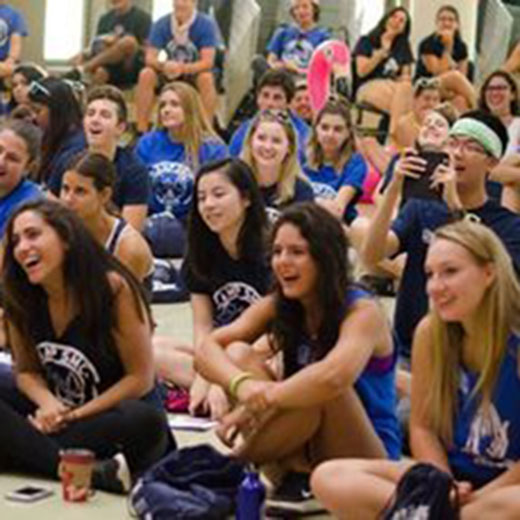
If you asked each of us what the most important part of Orientation is, we wouldn’t say the countless nights planning our events schedule, calling numerous vendors, or even the days we spend contemplating the smallest things (we’re overthinkers; what can we say?). The most important part of Orientation is ensuring each student knows that they belong here. No matter where they come from or who they are, SMC has a place for them.
But it’s only so much to make such a bold statement; we had already found our places within this community, so this year we made it a top priority to implement everything we could to ensure everyone can see themselves reflected in this community.
We started small, right down to our team. Our main concern became who would be the first people welcoming our students to SMC, and we wanted everyone to see themselves reflected in student leadership. We took a lot into consideration, from our younger staff taking on larger roles to ensuring not only those willing to scream at the top of their lungs in front of a crowd would apply for roles, and even encouraging first-time student leaders into our team. Our first step in creating a community where students feel they belong is representing them at the onset. When a team looks and acts like the people they are leading, others feel like leadership not only welcomes them, but needs them to function to their fullest capacity.
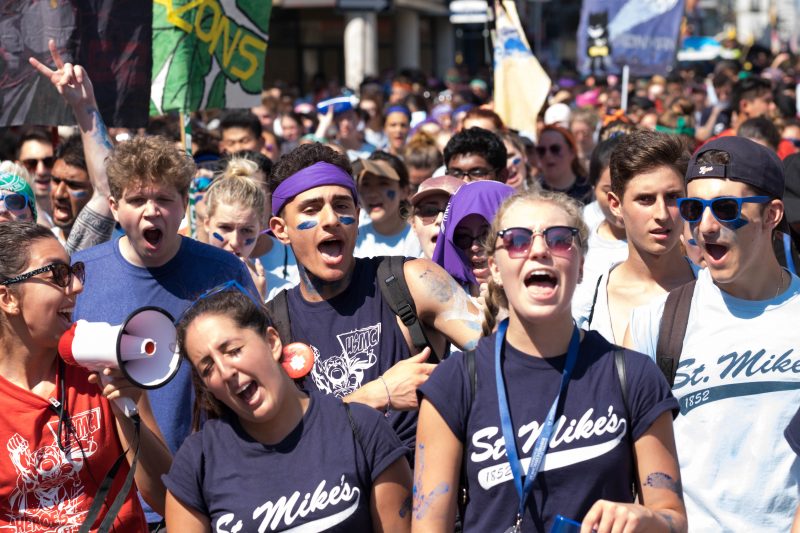
Our next step became looking wider than our own community, even wider than our own country. With both of us being domestic and commuter students, Toronto life came more naturally to us, but that wasn’t the case for many of our international friends. We started holding debriefing sessions with our staff, mainly targeting our international staff members, asking them what we could do better and, honestly, what we weren’t considering, having always lived in Ontario. Resources were huge, from small things such as where to buy groceries or “what even is Presto card?” to much larger things like buying an apartment in the city, applying for a SIN number, or finding mental health and community resources in the city when students felt alone.
We came to the collective conclusion that SMC Orientation was not doing enough to highlight how hard it is to move your whole life to a new country many incoming students had never seen before. The solution was to implement tours of Toronto, international student workshops built right into our Orientation programming, and a Cultural Club Showcase exceeding what SMC can provide. Designed by international students for international students, we granted our team the ability to take the lead on creating the programming they knew would have helped them. With this, our hope was that it would give our international population the chance to even have just a little more ease in their transition.
Of course, Orientation is not without tradition, and the green light to have everything in person meant we got to bring not only new ideas to the forefront but also old ones that our older staff had come to miss. With our theme this year being SMC: Treasure Island, the opportunity to bring back events became even easier. With campus tours disguised as campus-wide scavenger hunts, Zumba parties in the Quad encouraging exercise for their treasure hunt adventure ahead of them, and a Formal at the Hockey Hall of Fame showcasing operation “find the crowned gem” – in this case finding the Stanley Cup and taking a picture with it. All this work to find the most important treasure of them all – friendship! Okay, not just friendship, but the chance to be crowned the winner of the O-Cup and have their team’s name immortalized at SMC forever. This year’s theme is reflective of the very thing we wanted to portray for this year’s Orientation, on a treasure hunt you may feel like you’re on your own towards the goal of finding “treasure” – but what you find along the way is people who want to help you and support you and your goals.
SMC Orientation has always been about team building and finding community, but this year we wanted to make sure that we understand that a community is only as strong as each individual within it. The art of planning the first fully in-person Orientation in two years comes down to combining the new with the old–much like our staff and students–and it becomes our job to ensure everyone finds their place within the place where we found ours.
Read other InsightOut posts.
David Rubenstein graduated with an Honours Bachelor of Science with High Distinction in Biochemistry and Physiology. With aspirations to join the medical vocation, he has been accepted into the LMP MSc program for 2022.
“SMC is home” is a phrase that is often heard being used by visitors to the grounds of SMC/halls of Brennan, for those fortunate nesters who have lived in residence, and those flocks of commuters that travel long and far just to hang out in the COOP.
For me, “SMC is Home” holds meaning because this has been an important place that has aided my growth into the person that I am today. It has been my stepping stone in my academic career, It has been my nest, the place where I have met many friends, faced challenges, and accomplished many feats.
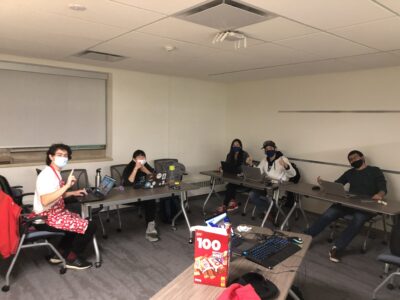
One of the achievements I am most proud of is the creation of a Minecraft club during the beginning of the pandemic that worked towards fostering community through a collaborative project of recreating a virtual 1-to-1 scale of our St. Mike’s Campus on our public server.
To give a little background about how this all came about: it all started when I lived in the residence buildings during my first two years of undergrad, between 2018 to 2020 — the pandemic year.
During my first year, I was a proud and engaging member of Mallon House located on Elmsley Second. The Mallon boys had a strong community thanks to our valiant leader and Don Big Mike. But as second year came around, community was a little bit harder to come by for me.
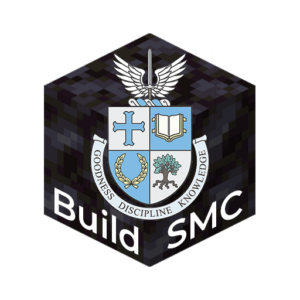
My dorm room during second year was located in the north wing of Sorbara First, which was uniquely designed to have a walkway in between the north and south wings such that they were not physically connected. This most definitely made connecting with my brothers in the south more difficult, but it also turned our wing into a nice secluded little patch of paradise with very little foot traffic. A perfect location to ride out the self-isolation during the Covid-19 pandemic in March 2020. But even before this, it would also get a bit lonely sometimes to be so close yet so far away from the rest of the floor.
In September 2019, I was elected president of the Sorbara First House Council, and for one of my first initiatives, I helped to establish and promote multiplayer video and board game nights as an attempt to strengthen the community within our floor and with our sister floor (Sorbara Fourth, Wall House? – I forgot the house name sorry). We played games like Scribblio, Codenames, AmongUs, and my personal favorite: Minecraft.
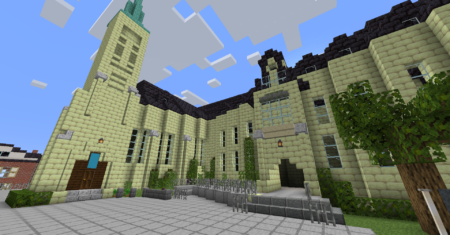
For those who are unfamiliar, Minecraft is a video game where players can make or break apart various kinds of blocks in a three-dimensional world. With a distinctly simple yet chunky aesthetic, this game offers two game modes: Survival- where players collect food and resources to explore and survive the world and its many dangers. And Creative- a sandbox mode where players are given all resources and are free to create anything they want to.
Minecraft also offers multiplayer access, so players can interact on the same world or server and complete tasks together. This was a perfect platform for us because a good chunk of my generation had grown up playing Minecraft, you could hop on any time and just have fun.
With my friend Jake Lunn’s help, we created the Sorbara First server and invited everyone to play on. Throughout the school year, we would all sit around in the common room or in someone’s dorm room and build our dream houses, go on epic quests, do harmless pranks on each other and just have fun. (shout out to the madlads: Borair, Sam, Kamil, Cedric, Vansh, and Jake). But then as March of 2020 came creeping in, so did the self-isolation protocols. While our in-person gathering came to a halt, we continued to use the digital worlds of video games like Minecraft to socialize and play together.
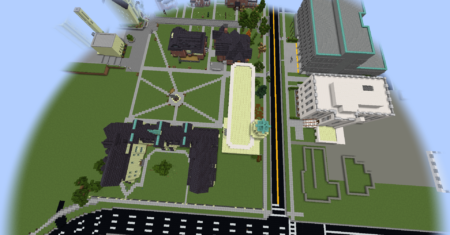
One night, as I sat staring boredly at the walls of my 11’ x 14’ room (yes, I had reached a point of boredom where I decided to measure the dimensions of my dorm using just a pencil and a 12’ ruler) I decided that it would be fun to recreate my dorm room in our minecraft server as a way to remember where I spent self-isolation during these difficult times. My fellow Sorbara minecrafters loved the idea! And joined me on this personal project and built their rooms as well as it was a fun and unique activity.
We let our creativity soar high and wide, and what started out from just building rooms, extended to building our entire floor, and eventually to the entirety of Sorbara Hall. It was at this moment that I proposed an idea. What if we built our entire UofT campus?
Of course I was being extremely ambitious, but this question led me and a small group of friends (Keanu, Gordon, Matthew, and Mateo) to create a new SMC club in the summer of 2020 called: BuildSMC. Our goal was simple: to foster community and work on this project of building our St. Mike’s campus in Minecraft.
We created a club Minecraft server free to join for any SMC or UofT student and worked on this project all summer. By September 2020, we had already built all of Sorbara Hall, every historic house on Elmsley way, and had laid down the foundations for Brennan Hall, Elmsley Hall, the Queens park buildings, and Kelly Library.
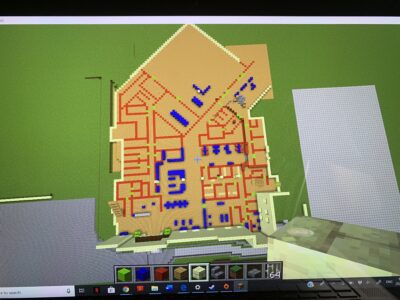
Because Minecraft blocks use the metric system and have been designed to be one cubic meter, we decided to create as accurate a model of our campus as possible. For measurements, we used various online tools to aid our build. Such as using Google Maps features like Measure Distance to determine the dimensions of buildings, locations, parks, and the Google Streetview feature to look at building exterior designs. For building interiors, we used apps like FindMyClassroom, old SMC floor plans that were accessible from the library, and the emergency exit displays that can be found in almost every building. Naturally, we also took creative liberties with spaces that we could not see using any of these methods.
For the actual building process, every block that is on the server has been placed either manually, or generated en masse using commands and game mods like worldedit. We had dedicated building times at least once a week where we would hop on a call on Discord and work on the build project together.
Looking back, it has been well over two years since the initiation of the project and the establishment of the club. I am proud to say that since the start of 2022, we have now built (almost) every SMC road and structure, and have started working on phase II of our project: building all of UofT. We have already laid down the entire roadway network of the St. George campus — every major car road between Bloor, College, Bay and Spadina. (You can literally walk on our campus recreation through the virtual world!) But aside from these accomplishments, I am most proud of the little community that has been created simply through the mutual love, curiosity and creativity that we all share for Minecraft.
At this time, most of us who were involved have now moved on to different things, especially as we graduate. The project is currently waiting on our server for the next generation to pick it up and continue it to the next stages of its development. So please! If you are interested feel free to reach out to me!
But I must say, as I had returned to St. Mike’s with my family by my side on convocation day – to walk across that podium with the degree that I worked so hard over the last four years to earn and accept the recognition that I have been given. I can truly say, SMC is – and always will be – Home.
It is thanks to St. Michael’s Annual Fund and Leadership donors that our students can work on student driven projects like Project Build SMC. The Annual Fund supports the maintenance of student spaces, library and computer network resources and other student services to enhance life on campus.
Read other InsightOut posts.
Erica Figueiredo is the Recruitment and Enrollment Officer at the Faculty of Theology. Prior to this role, she completed her Master of Divinity degree at Regis College and served as a Director of Campus Ministry for seven years. She has been married to her best friend Carl for over four years.
I was 22 years old, sitting in my cubicle at the first job I landed after graduating from university. On my computer screen, I found myself oscillating between two tabs: one, an Excel spreadsheet compiling something about reinsurance companies (companies that insure insurance companies, I learned) and the other an application form for a Master of Divinity degree program. I recall the motivations I had to proceed with each tab. On the one hand, I could remain here and continue what likely could have been a quickly rising, lucrative career in the financial district. Conversely, the prospect of studying theology and entering ministry was something that had not even registered as a possibility until recently.
My mind raced back to the surprising turn of events during the last two years of my undergraduate degree. After a profound experience at a retreat, I finally felt convinced that instead of waiting for someone else to form a Catholic club at my university, the person whom God was calling to do that was me. From there, an unforgettable journey ensued. Once I plucked up the courage to start this club (which only two other students had agreed to support thus far) God led me past the realms of what I thought possible. Within a year I was the inaugural president and co-founder of a vibrant Catholic community. Students from all fields of study came to the meetings with an eagerness to know their faith more deeply. For my part, I couldn’t be anything but honest about the doubts I had also had as a cradle Catholic. But the philosophy student in me sought to tackle these doubts head-on and in a Lewisian style, embark on a journey to conclude if Christianity was true or completely false, in which case I should abandon it entirely. In His own beautiful time, God revealed to me that the former was undeniably true and the quest for truth, beauty and goodness could be found within my Catholic faith instead of looking elsewhere. As I graduated from university and fondly recalled my latter two years of journeying with this group, I also recalled a priest I met telling me that this club could over time develop into a formal campus ministry. Upon graduation, I pushed this thought to the back of my mind and preoccupied myself with finding a ‘normal’ job.
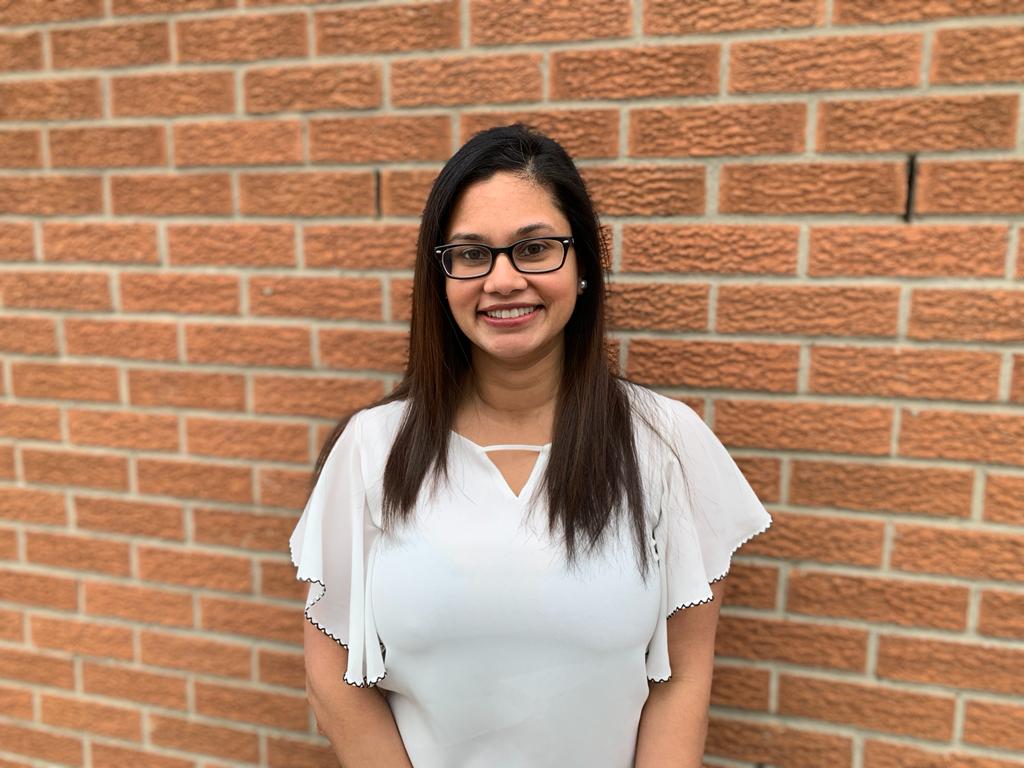
Close your eyes and think about a moment in your life when you had the most joy.
Erica Figueiredo, is featured smiling in a picture above, wearing a white top and glasses, standing against a brick wall.
For me, the reasons were two-fold. The theology degree was where God had been leading me to finally figure out the “why” behind the “what” of Catholic teachings. Furthermore, a theology degree would, in turn, serve to professionally prepare me for a future career in ministry. When I sat in the cubicle of the insurance company thinking about what I wanted to do with the rest of my life I took a piece of advice I heard at a Catholic talk: Close your eyes and think about a moment in your life when you had the most joy. The answer for me was simple–I felt most alive when I was ministering to university students and meeting them in their spiritual joys and doubts. Thus, though I had no idea how to even go about translating this joy into a career, I left my full-time job and began my MDiv studies full-time in the upcoming Fall. Lo and behold, before I could complete my thesis, I was hired as the first Director of Campus Ministry at the exact university where I had founded the Catholic club.
You now know a little about my journey and what led me to study theology. In serving as the Recruitment and Enrollment Officer at the Faculty of Theology, I hope to be able to help you think about your potential or ongoing journey with theology!
Read other InsightOut posts.
Shmily Lin is a second-year student interested in life sciences. He enjoy long walks on the beach, naps, video games, and bubble tea. Writing is a therapeutic pastime.
I haven’t watched Heartstopper yet.
Don’t get me wrong–—I absolutely love the idea of getting more representation on mainstream media. I’m so incredibly glad that this story exists, that it gets attention, because queer romance deserves to be seen and spotlighted and shared.
But it’s so rare that any of us got this.
For many, many people, friends that I’ve known, and for myself, growing up as a queer kid meant a constant questioning for whether and where I really belonged. Hours, days, years spent caught in the throes of uncertainty, wondering, longing, shame. A childhood spent on the sidelines and adolescence behind curtains, and the sobering reality that we might spend the rest of our lives looking for places that won’t ever truly belong to us.
For me, Heartstopper represents my mourning for a coming-of-age story I never got, the coming-out moment I never enjoyed, and a teenage love story I’ll never have as I leave behind the last of my teenage years by the time school starts up again. And I know I’m not the only one.
I like to think of SMCInclusive as a kind of home, a mish-mash of people who have shared the universality of experiences like my own, but still as unique as the colours of a rainbow.
It was always about finding a home somewhere far away from home. It took me years to come out, it’s taking me years to learn to live, and it’ll probably be years before I can find my happiness in the grand scheme of things. But in all of that uncertainty, I am only sure that there are others out there just like me, lost and confused, wary. Hopeful.
I remember my own experience coming to a new country, with no friends, for a whole new chapter of my life. I couldn’t be certain that I would fit in, that I would enjoy it any more than I tolerated my sunny little town back home in California. The only information I got was on Reddit posts from years past, and those weren’t really informative or comforting.
I’ve never really spoken about my acceptance to St. Michael’s, that first few weeks where I was monumentally spooked by what I’d heard from the grapevine. And I’ll admit, I tried to transfer away, because I didn’t want to be associated with ‘the Catholic college’ or ‘the party school.’ I didn’t want to spend four years surrounded by people who might not be tolerant, a community that might scorn my very existence. I thought I would be miserable.
Finding SMCInclusive was like finding the golden drop in a bucket of water. It wasn’t anything about the scope of the events, or the amount of people, or the free merchandise (disclaimer: there isn’t any), but the mere principle of its existence. A sign that St. Mike’s is home to its very own corner of inclusivity, an affirmation that this place could be warm and welcoming and safe.
Finding the people was just like finding a family in a home. A group of incredible individuals, with dreams and passions and hair as colourful as their souls. A place where happy tears are shed and the most amazing moments occur. That if we had spent so long looking for places that truly belonged to us, then here, at least we could feel found with people just as lost as we are.
Here, we have movies and games, music and laughs, people to talk to and good food to eat. We share these memories as a blunt rebuke against a world that hates, and as a testament to our strengths. We foster growth and diversity, authenticity and hope. We see ourselves through every day, as a reminder of the amazing things that people can do when they come together.
And above all of us, the people who call it home, SMCInclusive also represents that good fight that needs to be fought. A reminder of this fateful month, over half a century ago, when that first brick was thrown, when the Stonewall riots began, when a movement for liberation started that echoes to this day. We picked up that call, and we carried it forward through every corner of this college, past every room in this university, and delivered it into the hearts of the people it was meant for.
This pride month, this year, we are reminded of the long ways to go.
We are reminded that there is always a ways to go. In our efforts, we have reached out to the incredible work of advocates and advocacy groups across campus. We have dug into the core of St. Mike’s, to look for the roots of hatred and intolerance and remake them into a place where people can flourish. And we’re only getting started.
So who are we then? SMCInclusive: St. Mike’s pro-LGBTQ2+ club, a home for everyone who needs it to be. A place where people can grow, and a place that keeps us growing. Every person here makes it unique.
A ragtag band of superheroes, looking to make a better future.
Read other InsightOut posts.
John Fraresso is completing his Master of Divinity degree at St. Michael’s Faculty of Theology. He completed his undergrad at UTM in the 90’s in Crime & Deviance and Sociology. He currently serves as the Community & Spiritual Life Coordinator for the community of L’Arche Hamilton.
I arrived at The Faculty of Theology in 2019 with hopes and dreams of earning a Master of Theological Studies degree to one day work as a chaplain in the prison system.
Three short years later and I am completing a Master of Divinity, discerning doing a Doctorate in Ministry, and cannot see myself ever leaving L’Arche–after what was supposed to be a 100-hour field placement in early 2020.
I have learned so much at the Faculty of Theology. I have also made new friends and wonderful memories. I have been blessed to have some incredible professors. As an “academic experience”, it has been simply amazing.
Yet for all the praises I can bestow upon the Faculty, the University of L’Arche (which we will call it for our present purposes) has given me an education I never in my wildest dreams could have ever imagined. Of course, you simply can’t compare the two, and it’s important to note that I never would have wound up at L’Arche if not for the Faculty of Theology–notably, Dr. Fortin for suggesting I do my field placement there.
At the University of L’Arche, there are no textbooks to read, lectures to attend, or papers or exams to write. There is no formal theological training. But the education you get about God is immeasurable. While many in the world either ignore or take pity on persons with intellectual disabilities, those blessed enough to share life with them witness God manifesting God’s self in beautiful and truly miraculous ways. We get to witness gifts and charisms that are inspiring and life-changing. Outside of the talents they possess- I could never draw or paint as well as some of my friends there- the lessons they teach on living from the heart cannot be found elsewhere. No, they are not perfect. No, they don’t spread love and joy in every moment of every day. But therein lies the magic: by living from their hearts, all of their love, their joy, but also their “imperfections” as humans (which can include all such things like anger, pettiness, jealously–you name it) are experienced and expressed authentically.
I don’t have the space here to write about all my professors at L’Arche, but here are just a few examples:
- Professor Brian has taught me about love in his own unique way. His smile lights up a room. His giggle lights up hearts. Brian loves not just hugs, but full on embracing for way longer than the rest of us would ever be comfortable with. Brian couldn’t care less about COVID protocols when he wants to give a morning hug. We have had countless morning coffees together, we’ve spent hours together, and I’ve witnessed our bond grow deeper. The miracle of this is that Brian is non-verbal: He has taught me immeasurably without ever uttering a word to me.
- Professor Mary lights up any room she enters. She was the first impression I had of L’Arche, attending their Christmas pageant before I even started there. I witnessed this woman in the “choir” bellowing out Christmas carols from the depths of her soul. Now when I see Mary, she always asks me how I am, she often tells me how much she cares about me, and within no time of us seeing each other, she is asking me when she will see me again.
- Professor Chris is the kindest person you will ever meet. His dad recently said to me, summing it up perfectly, that the world would be a beautiful place if it was full of Chrises. He has taught me how to play bocce ball. He phones me just to say hi. He loves to tell jokes. He has never said “I love you” to me, but his love for me is entirely palpable. He’s demonstrated the sixth sense he has by phoning me when I needed to hear a good friend’s voice. If I ever need to feel a good dose of love and peace, I just need to think of his face.
- Professor Michael is an artist and an author. His personality is larger than life. He never runs out of smiles, hugs, and laughter. Michael always takes incredible interest in me, asking me how I’m doing, what’s new, what I’ve been up to, and so on. I remember one time when I was being my usual harried self and racing to go from one thing to the next, and him once again wanting to talk to me- to show immense interest in me. It stopped me dead in my tracks. Without saying it directly, Professor Michael told me, “Slow down for a moment, stop and talk to me, because how you are and what you’re up to matters a lot to me”.
I am well over the allotted word count for this blog, which simply highlights yet another lesson my professors at L’Arche have taught me: listen to your heart when it tells you to throw out the rule book, because the most beautiful art happens when we paint outside the lines.
Read other InsightOut posts.
Catherine Mulroney (SMC 8T2, USMC 1T0) is a big fan of her alma mater — so much so that now she works at St. Mike’s.
I remember watching my mother (Barbara Hood SMC 4T5) getting ready for her 25th reunion and thinking, “I’ll never be that old.”
Today, I am staring down my 40th and wondering, needless to say, where the time has gone.
My mother (who, for the record, would want me to add that she was just 19 when she graduated) loved her time at St. Mike’s. She remained amazed that her own mother lasted just one day here before transferring to University College. Being a woman in university during the 1920s would be challenging enough, my grandmother felt. As a French Canadian woman, she felt a non-Catholic college might help her get ahead in a still very Anglo Toronto. And so she picked up and crossed Queen’s Park, a move, my mother felt, that was her loss.
My mother’s memories recalled a very different place than the St. Mike’s I experienced. In her Latin class, for example, the seminarians sat apart on one side of the classroom, while the other students – and particularly the female ones – sat across the room. Most of the students with whom my mother interacted were also Catholic, and St. Mike’s was small enough that almost everybody knew each other.
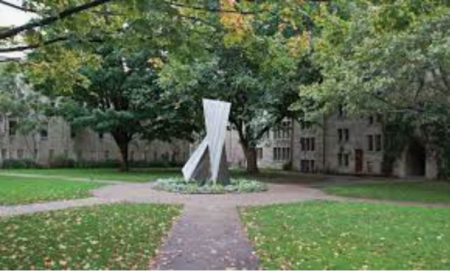
By the time I arrived in 1978, the world had greatly changed. Vatican II had shaken up the Church, so the communion rail in St. Basil’s Church where my mother had knelt was long gone. The increasing options open to women meant that the Sisters who were the first women to teach at St. Mike’s were increasingly joined by lay female colleagues. And when the boy I had a crush on in Fr. Leland’s 1st-year Major British Writers class made a move to brush ashes off my forehead I realized that, unlike my mother’s St. Mike’s, my classmates were not all Catholic.
My St. Mike’s was increasingly engaged with the outside world. I recall an all-candidates’ meeting in Brennan Lounge that included candidate George Hislop, a high-profile gay activist, in an era when broader acceptance of the LGBTQ community was still in its infancy. Campus Minister Sr. Diane Bridges, IBVM, always had something topical on display outside her office at the north end of Brennan Hall, whether it was instructions on how to write letters of support to the Mothers of the Disappeared in Argentina or on the ongoing struggles of the California grape pickers.
I was taught by many of the greats, including Fr. Madden, Msgr. Synan, and Dr. Colin Chase, who had a particular influence on me, offering suggestions when I was in fourth year about a career in journalism, a world away from Old English and Chaucer. His mother, he told me, had been a journalist. Modest to a fault, what he didn’t tell me was that his mother was Mary Coyle Chase, author of the play Harvey, which had been made into a wildly successful film with Jimmy Stewart.
Fr. John Kelly, by then retired, was still a force on campus. In yet another of university’s life lessons, I watched the man whose homilies had terrified me as a child because of his fiery oratory skills now socializing with students, sometimes playing pool or having a beer, and realized there was so much more to the man.
I recall a Christmas wine and cheese party my first year during which a very elegantly dressed man began to chat with me.
“And what do you do at the university?” I asked, with a naivete I’ve never really shaken. “Oh, I’m Fr. Swan,” he replied, and when that didn’t register, he added “the new president….” I remain chagrined to this day.
The St. Mike’s connection has carried forward into my post-graduation life. For example, when my husband and I first needed an accountant, a neighbour passed on a name. When I walked into Roger’s office, I realized I used to see him almost daily in the old Brennan Hall lounge. My first thought was that if we’d been in school together, he couldn’t be old enough to do my taxes, followed by the realization that, if I were old enough to have my taxes done, he was old enough to do them.
The St. Mike’s I returned to in 2004 to work on a Master of Divinity degree was different again. If I recall correctly, the Faculty of Theology, once a male bastion, now had more women enrolled than men. You could now eat in the Kelly Library and the statue of St. Michael in the quad had a feeling of permanence, having long since shaken the mantle of being the shiny new thing on campus.
Today, I am lucky enough to work at St. Mike’s and witness first-hand the ongoing engagement of students, faculty and staff with important issues. Working in the communications department, I have had the privilege of talking to young adults, for example, about projects promoting sustainability, the need to fight anti-Asian racism and the happiness of Muslim students upon discovering that the Canada Room was making special dietary schedules and meals for Ramadan. When chatting with professors, the topic may be new classes on everything from Indigenous issues to the cultural impact of video gaming or the importance of St. Mike’s first-year check-in program to ensure students are feeling comfortable.
In other words, the St. Mike’s that you and I knew is still all that – and more. Great students, fabulous professors and a lively vibe.
I won’t be able to attend reunion as I am off to attend my daughter’s convocation but I’ll be thinking of my former classmates, wondering, for example, whether the guy who used to look just like Sting still does. I’d love to know whether the person so offended by the song Jet Boy, Jet Girl that he used a nail file to scratch the copy played at pub nights will attend – or whether the person savvy enough to replace the record with the French version will show up either.
Like my mother, I loved my St. Mike’s days. These days, each time I set foot on campus I feel re-energized. Here’s hoping my classmates have a great time and that the years fade away. Miss you, Class of 8T2. Already wishing I were there.
Learn more about Alumni Reunion 2022 and register for events online.
Read other InsightOut posts.
Susan Murray graduated from St. Michael’s College in 1972, majoring in History. She received a Master of Library Science in 1976 and a Master of Arts in 1982. She was Director of the Film Archives Library in Ottawa, worked at the medical and dental libraries at the University of Toronto, was Director of the Film Reference Library for TIFF, was Head of the Consumer Health Information Service based at the Toronto Reference Library, and the Manager of the Life Sciences Library at McGill University in Montreal. She reviews books for Publisher’s Weekly, sings in the Echo choir and volunteers at Bridgepoint.
I was a student at St. Mike’s from 1968 to 1972. To say that this was a significant time in my life is an understatement. Many of the friends that I made during this period I still see, and was encouraged by Mrs. McGrath, the reference librarian at Kelly Library, to pursue a career in librarianship.
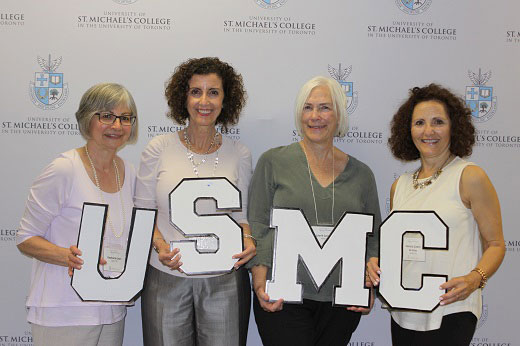
So many good memories…running across Queen’s Park to take my Russian History and Literature classes, though I also took Philosophy and Shakespeare classes at St. Mike’s. Dealing with colourful characters while working part-time at the library. For a break between studying and writing term papers, going to the Coop for a honeybun. Assisting and later co-running the St. Michael’s College Film Club before the age of VCRs, DVDs and then film streaming.
Reunions are important: I regularly attend and have seen old friends from far away who have come back to connect at St. Mike’s. For a number of years, I have written a welcome letter to the class of ’72 with the addition of a pertinent song line, such as from Simon and Garfunkel’s “Old Friends’ and this year’s “It doesn’t matter what you wear just as long as you are there.”
Hope to see you at this year’s reunion!
St. Mike’s annual alumni reunion is taking place both online and in person this year from Thursday, May 26 to Sunday, May 29. Special events are planned for honoured years ending in 2 and 7. For more information, please contact Brittany.davila@utoronto.ca.
Read other InsightOut posts.
Each year, the Faculty of Theology marks the end of the winter semester with the Commissioning Mass, during which prayers are offered for all graduating students as they head out into the world to share what they have learned.
This year, Myungsook Kim, who will graduate with a Master of Theological Studies degree, offered a reflection. For the past 20 years, she has been teaching students with special needs in Catholic schools. Myungsook is a mother of two, and advocate for people who are physically and intellectually challenged, and an associate in the Felician Sisters Congregation. A former visual arts instructor at Gangneung-Wonju National University in South Korea, Myungsook immigrated to Canada at the age of 32.
Thank you, Student Life Committee, for allowing me to speak on behalf of graduates, even though I am far from the mainstream.
I have studied in the MTS program on a part-time basis for the last six years. I mostly took night classes because I have a full-time job during the day. Some people asked me why I was working myself this hard day and night. But for me, being a student at St. Michael’s was filled with joyful moments. Let me briefly tell you why.
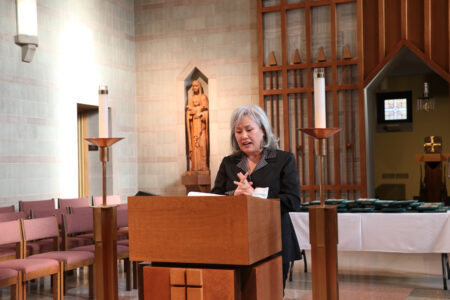
First, the snacks! Previous SLC president Josefine prepared snacks for night students. After a long day at work, I drove down to class from Mississauga in the middle of rush hour. The joy of sharing snacks among classmates before the class in the lounge made me feel full of love. Thank you, Josefine, and the whole SLC for your love and leadership.
Second, “Aha” moments. Every lecture, every reading has cultivated me to transform. Sometimes, my brain froze with new and true information. Thank you, all professors and librarians, for being for us real-life models of disciples walking in the company of Christ on the road to Emmaus. You all have shepherd the “Aha” moments with love and care.
Third, transforming into an angel. My ministry practicum at the Felician Sisters’ house was special. It is home to 21 retired sisters enjoying their remaining lives while waiting for God’s calling to be with Him. They called me an angel for helping them with their basic physical hygiene needs. Sometimes, I simply hold their hands while they are passing. I felt I was walking in the company of Christ as well, like a blessed angel.
Lastly, overcoming obstacles together. The pandemic arrived and we all had to rely on the Internet. The special COVID funding arranged by St. Michael’s to help with pandemic expenses has provided us not only financial support but also the love of being cared for. Together, we all successfully thrived through our own unique way.
Thus, on behalf of the Faculty of Theology BD graduates of 2022, I thank the entire community of St. Michael’s for guiding us, for walking with us in the company of Christ, and for helping each of us to share our unique gifts.
Upon completing our degree, regardless of what our future holds, let us be sure to use our unique gifts that have transformed us here at St. Michael’s Faculty of Theology. May we share God’s compassion, truth and love as we continue to walk in the company of Christ.
Read other InsightOut posts.
Maya Omar Choudhry is a first-year student at the University of St. Michael’s College, double majoring in Criminology and Sociolegal Studies as well as Drama Studies. She is a current member of the University of Toronto’s Pi Beta Phi Sorority. Being highly athletic from a young age, she is also part of the U of T’s TriathlonClub.
As a Pakistani Muslim, I was speechless and totally overwhelmed with emotion when I received an email from the St. Michael’s community announcing that they had set up a Ramadan meal accommodation program for the minority Muslim students living in residence. This revelation was like a breath of fresh air and seriously sounded like music to my ears. I felt an incredible self of relief as I had been pondering upon what my first Ramadan in a non-Muslim country would be like, away from my family.
This may sound like a small gesture, but for us Muslim students this extremely thoughtful and highly considerate gesture was as good as gold. This kind act was such an inspiration that it reflected that there are no boundaries when it comes to helping others and that too during this blessed month.

Monday, May 2, 2022 – 6:00 AM
For those of you who are not familiar with Ramadan, it is the most sacred and holiest month, which falls ninth under the Islamic calendar. During the month of Ramadan, it is believed that on the night of Layat-Al-Qadr, also known as The Night of Power, Allah sent angel Jibraeel to our beloved Prophet Mohanned (pbuh) to reveal the Qur’an, the holy book of Islam.
The Prophet Mohammed reportedly said, “When the month of Ramadan starts, the gates of heaven are opened and the gates of hell are closed and the devils are chained.” It is a month to reflect on what it means to be a true Muslim, a time to indulge in spiritual discipline and build a stronger bond with Allah. It is time for repenting from the depths of your heart by asking Allah Almighty for forgiveness so that you will never repeat a certain mistake or misdeed again, because no matter how big a person’s sin is, it is not bigger than Allah’s Mercy.
For Muslims, this period of the month represents a time of self-reflection, patience, and self-control. Ramadan allows one to practise self-reflection by seeking forgiveness. According to the Islamic faith, asking for repentance entails accepting responsibility for an act you feel apologetic about. Fasting teaches us to be patient as one refrains from eating or drinking from sunrise till sunset. The practice of keeping a fast allows us to be grateful for the food we get to eat daily because it reminds us of the less fortunate people, reinforcing us to be more thankful. Thus, empathy for the unfortunate ones encourages us to give Zakat (charity) or food to help them.
Fasting is one of the pillars of Islam. The rules of fasting during Ramadan are quite simple. Firstly, nothing should enter your body. One should refrain from bad habits as well as abstain from the consumption of drinks and all kinds of foods from dawn until sunset. Muslims usually have a meal before dawn also known as Sehri and break their fast after the sun sets. This is called Iftari. In Canada the fasts are more challenging as the hours of fasting are longer especially in Canada’s north, where the fasting day is as long as 19 hours.
With Ramadan comes increased spiritual worship as Muslims consciously try to practise living according to Islamic principles on a daily basis, with the focus on the hereafter instead of the materialism of the worldly life, which means embracing honesty, empathy, kindness, and modesty.
So, when I awoke to the literal feast the university had arranged for us with a vast variety of foods and drinks, it was a rather emotional moment. I, for one, felt valued and respected. Sehri did not feel so alone as it sometimes does now that I am far from my family, especially as Ramadan is when families sit down together during Sehri and Iftari. Moreover, it was so convenient thanks to St. Michael’s to have my Sehri on campus because I did not have to worry about getting groceries or going out at four in the morning for Sehri.
Another thing I would like to mention is how I noticed the new changes that were made weekly to improve the program. During the first week, we were provided with a huge variety of assorted fresh fruits, cereals, pastries, yogurts, and juices. The second week was followed by the addition of a toaster and a microwave. Honestly, it just got better week by week, which left the third week to consist of the addition of freshly pre-packed warm dishes. These small acts of kindness made me feel so grateful because it shows that the community wholeheartedly cares and is checking up on us every week by improving the food accommodations.
I can proudly say that University of St. Michael’s College is a home away from home. I felt the university made an effort to get to know us and our beliefs. I am thankful, as I am sure are the rest of U of T’s Muslim students, for this step the university has taken towards us. I can confidently say that U of T never fails to hit the mark when it comes to fulfilling the needs and requirements of its students who observe religious practices.
Read other InsightOut posts.
Lauren Amaral is a fourth year undergraduate student at the University of St Michael’s College pursuing a double major in Environmental Science and Global Health with a minor in Environmental Studies and a Certificate in Sustainability. She is the current President of Clean SMC, a sustainability-focused group at SMC that strives to promote environmental initiatives among students at the University of Toronto. As a graduating student, she hopes that Clean SMC continues to gain recognition among students in order to promote ways of making sustainable changes accessible to everyone.
When we think about Investing in Our Planet, we are looking at ways to put pressure on companies to reduce their pollution in order to enact societal and economic change. The goal is to reshape our economies away from our current consumption-focused one to an economy that supports and benefits from circular and recycling economies. This seems like a difficult feat, but there are ways we can make small, reasonable changes to our individual lifestyles that will allow us to support this initiative without feeling the pressure of the world on our shoulders.
Each year, Earth Day has a different theme that brings awareness to important issues currently facing our world, and the theme for this year is #InvestInOurPlanet. To make real change, it is imperative that we hold companies accountable for their pollution, yet we often feel the pressure to “fix” climate change ourselves. Making drastic changes to live “zero-waste” with a carbon neutral footprint, however, is an unlikely reality for most people. When we are unableto execute sustainability “perfectly” we can find ourselves feeling discouraged and eventually lack the desire to make an effort entirely. Sustainability does not have to be an all-or-nothing effort. Making small changes wherever we are able to, can lead to significant reductions in our environmental footprint and lead us to living sustainably in a manner that suits our lifestyles.

The easiest way to make changes to our lives is by learning about the issues that are most relevant to us. This can include reading the “About Us” pages of your favourite clothing stores to learn about the measures they are taking to create sustainable products, or intentionally finding brands that align with your values before shopping there. Beyond looking at the companies we support by buying their products or services, we can also make changes to our daily routines that can have a significant difference. Some of these changes can include taking shorter showers, turning off the tap when it is not in use, reducing meat from your diet once a week, or ensuring your trash is disposed of properly. These changes can seem insignificant, but when everyone makes little changes, big effects can be seen.
There are also ways to implement larger measures of change to our lives as well. These can include things like taking the time to learn where our banks are investing our money, learning about the University of Toronto’s divestment plan, and even finding ways of getting involved by attending rallies or signing petitions. Finding ways to take local action can be very helpful when looking for ways to make change that go beyond our personal environmental footprints.
At Clean SMC, we have run a number of events this year to promote local action. From the informative posts we have created and uploaded to our social media to promoting conversations around the environment through a documentary screening, opening the discussion around sustainability with fellow students has been great. We also organized a Spring Campus Clean Up in March. It was extremely rewarding seeing students come together to make sustainable changes and collect numerous bags of litter from around the St. Mike’s campus. At our events, we have been giving away products that hopefully encourage students to make small changes like using a reusable straw or produce bags, or even planting seeds to grow their own flowers or vegetables. Change does not have to be huge in order to be significant.
Another important initiative we have been working on is in collaboration with LEAP UofT. We have started a petition of support for the University of St. Michael’s College to divest from fossil fuels. Our hope is to show the college how much we, as students, care about where the money that supports all of the things we love about SMC, comes from. We are hoping to collect signatures over the summer and into next year to teach students about what divestment is, and hopefully place enough pressure on the university to make real environmental change, and follow the University of Toronto’s footprints in the road of divestment.
The most important part about making sustainable changes is ensuring that the changes are sustainable for your personal lifestyle. Oftentimes the pressures we feel to live sustainably can make us feel overwhelmed and hopeless. When this happens, it’s important to focus on the good that is being done by our small changes, and the good that is being done around the world. In recent years, strides have been made to increase climate change awareness, activism, and action which is a very hopeful sign for the future of climate change solutions. The most important way we can #InvestInOurPlanet, is by ensuring that we are prioritizing our mental health so that we are able to continue to do the work needed to make an impactful difference against climate change.
For more ways to get involved this Earth Day, visit the official website.
St. Michael’s is a charter member of the University Network for Investment Engagement (UNIE), a collective of Canadian universities under the SHARE umbrella whose role is to engage corporations on questions of reducing greenhouse gas emissions and pursuing sustainable finance, responsible climate policy, and just transitions through the initiative. Additional information about how sustainability is being woven into all aspects the University of St. Michael’s College culture is available in the 2021 President’s Report.
Read other InsightOut posts.
Rosemary Boissonneau is a climate justice activist and a doctoral student at St. Michael’s Faculty of Theology, where she studies ecotheology and scripture. Her research involves applying ecofeminist and decolonial methods to the interpretation of Old Testament texts in order to retrieve an understanding of the land as an active participant in the covenant with God and the people of Israel. Before embarking on graduate studies, Rosemary enjoyed a long career as an elementary school French teacher.
This Friday, April 22 marks Earth Day, an event that has grown into global prominence since its first iteration 52 ago during the heady days of the U.S. college protest movement. Now recognized as the largest secular observance in the world, Earth Day is commemorated by over a billion people each year as a day of action centred on our planet’s well-being and its protection from human-induced degradation and destruction. Residents in over 190 countries use this day to raise awareness about pressing environmental challenges and demand the individual behavioural changes and the multi-level policy changes that are needed to stop the damage we are unleashing on the Earth.
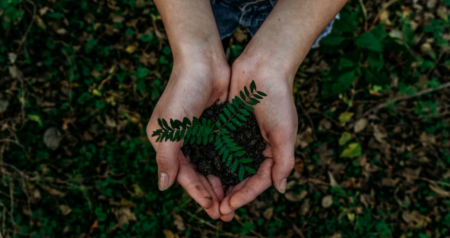
Occurring during spring and the Easter season, Earth Day ought to be a celebration of renewal and hope but, increasingly, it is an occasion for lamentation, despair and desperation as year after year the cries of environmentalists and the Earth itself seem to go unheeded, and the devastation of the planet continues at an ever more rapid pace. The interrelated crises of biodiversity loss, ecosystem collapse and climate change pose an unprecedented threat to the health of the planet. Referring to the most recent report of the International Panel on Climate Change (IPCC) released earlier this month, the UN Secretary-General, António Guterres, warns that without drastic reductions in global greenhouse gas emissions in the next few years, we are “firmly on track to an unlivable world” thanks mainly to “a litany of broken climate promises” by governments and corporations still banking on the fossil fuel economy and blocking efforts to enact a just transition to a decarbonized future.
And yet … despair need not have the final word. There is still reason for hope on this Earth Day. The same IPCC report details how, if the global community takes immediate and significant action using existing technology and methods, it can still keep the Earth within the 1.5C degrees of warming as pledged in the 2015 Paris Accord and avoid the worst of the impending climate catastrophe. For an overview of the many initiatives and behavioural changes that we must undertake or ramp up to achieve net zero emissions, take a look at the list of the climate solutions and their many social co-benefits outlined by Project Drawdown at https://drawdown.org/ . As you will see, these solutions respond to both the cry of the Earth and the cry of the poor.
The future can be bright, healthy and equitable! Alleluia! However, none of these positive paths forward can take effect until we humans first experience what Pope Francis’ encyclical Laudato Si’ calls an “ecological conversion.” This is especially true for those of us living in the so-called developed global North, where our normative worldview understands humanity to be separate from and superior to the rest of creation. If we remain stuck in this anthropocentric mindset, even our most noble efforts to “save the planet” this Earth Day will lead to failure. Because the truth is we humans cannot single-handedly save the planet even though we are in the process of single-handedly destroying it.
The Earth is not a damsel in distress waiting for us humans to save it. The Earth is the regenerative, creative, living masterpiece of God’s creation, which has been creating, regenerating and regulating the dizzyingly diverse array of life in its biosphere for many millions of years, since long before humans emerged as one of the most recent members of God’s community of creation. As Laudato Si’ reminds us, “Rather than a problem to be solved, the world is a joyful mystery to be contemplated with gladness and praise.” If we enter mindfully into the mystery of creation, the living embodiment of God’s love, we humans can learn how to collaborate with the Earth and its regenerative powers, how to live and indeed thrive within its means, so that we can unlearn and cease the destructive activities and attitudes that are preventing the Earth from saving itself, and saving us humans along with it.
Fortunately, none of this is new. Before modernity and before we developed our unquenchable thirst for empire-building, we humans more or less knew how to live in right relationship with the rest of the community of creation. And Indigenous peoples continue to live out the knowledge and wisdom intrinsic to such relational ways of being despite the genocidal brutality of colonialism past and present. In fact, as a hopeful sign of our growing recognition of this reality, the latest IPCC report for the first time ever listed colonialism as a historical and ongoing driver of climate change, suggesting that the paths of decolonization and decarbonization are united. This view is echoed in the final document from the Synod on the Amazon released in 2019. It recognizes that being attentive to the cry of the Earth and the cry of the poor, especially the Indigenous peoples of the Amazon, calls us to “a personal and communal conversion which commits us to relate harmoniously with God’s work of creation.” It also acknowledges that this conversion involves honouring “the pattern of thinking of indigenous peoples [that] offers an integrated vision of reality, capable of understanding the multiple connections existing throughout creation.”
On this Earth Day we must not remain blind to the grave threats that imperil our planetary home, but neither should we disregard that the Earth itself is humanity’s formidable and wonderous ally on our path of conversion toward ecological and social healing. I will conclude with advice from Laudato Si’. On this Earth Day, “let us sing as we go. May our struggles and our concern for this planet never take away the joy of our hope.” To learn more about Laudato Si’ and St. Michael’s ecotheology offerings, please visit the Elliott Allen Institute for Theology and Ecology.
Read other InsightOut posts.
This is the night when Christ broke the prison-bars of death and rose victorious
Theodore Nnorom is a member of the Congregation of the Sons of Mary, Mother of Mercy (SMMM), and a Ph.D. student in the Faculty of Theology at the University of St. Michael’s College. His research is in the area of interreligious dialogue, inspired by his desire for a constructive theological approach toward peaceful coexistence between Christians and Muslims in Nigeria. He is the secretary to the Hindu-Roman Catholic Dialogue, an interreligious department of the Canadian Conference of Catholic Bishops (CCCB).
At the end of the Lenten season, we are ready for the Easter festivities. This year’s Easter celebration evokes deep gratitude to God following the third year of unprecedented global health and socio-economic devastation caused by the Covid-19 pandemic. The cautious relaxing of Covid-19 restrictions in Canada signals a possible decline or control of the spread of the virus. In Toronto, in-person classes have resumed in schools and colleges, worshiping spaces are open to maximum capacity, and restaurants are back to in-door dining. It is a delight to witness Toronto roar back to its usual hustle and bustle.
Human interconnectivity and communion stand out when assessing lessons gained from the Covid-19 experience. Every part of the global community had its fair share of the impact of the Covid-19 pandemic, blurring the divides among the so-called first, second, and third worlds. Particularly surprising, despite the low rate of vaccination in most African countries and the unfortunate prediction of doom, the reverse has been the case regarding the spread of the virus in the continent compared to most Western nations. Most African countries are regrettably suffering instead from “hunger-pandemic” as the indirect impact of the situation.
Nonetheless, no need to gaze far beyond the Atlantics; studies have revealed disproportionate Covid-19 infection among the immigrants, poor, and racialized communities within the core of major North American cities. This is due to some socio-economic conditions such as living in densely populated neighborhoods with multiple households in small living spaces, doing essential work like healthcare support services and food services, lacking the luxury to work from home or have groceries delivered, and depending on public transportation. The federal government’s Covid-19 emergency grants helped address some of these challenges. Still, this caveat of the pandemic experience invites public policymakers to explore better ways of fostering a more egalitarian society.
The hope of moving back to normalcy for everyone, especially those most vulnerable to contracting the Covid-19 virus, reminds me of persons whose living conditions are teetering towards fear and despair. They include the terminally ill and refugees, especially refugees from Northern Nigeria, Ethiopia, Yemen, Afghanistan, Myanmar, and others. One cannot forget the recent Russian invasion of Ukraine that has shattered the peace and dreams of millions of Ukrainians. It is quite unfortunate that leaders could not transcend their differences and sacrifice their egos to prevent the ongoing carnage.
As the violence lingers, one could only imagine the plights of children, women, the sick, and the aged, who suffer most during wars. Their situation has elicited immense compassion from people of goodwill worldwide; countries are opening their borders to welcome Ukrainians, and financial, material, and military aid are pouring into Ukraine, a clear manifestation of human kindness on the one hand and condemnation of Russia’s aggression on the other. However, finding a peaceful resolution to the conflict is, in my view, the best assistance needed. The ancient wisdom is true that war does no one any good, and peace is cheaper than war.
Easter brings the message of hope to the world in a time like this, illuminated in the pascal mystery. Jesus Christ embraced suffering and death on the cross yet conquered death and offered eternal life to humanity through his resurrection. The empty tomb occupies an essential space in the resurrection story. It signifies the authority of Jesus Christ over death because the stone could not hold him down, and so the force of death. Living in unusual times should not diminish one’s faith in God but an invitation to trust that God will not abandon anyone in suffering and dark moments (Ps 23:1). Indeed, Jesus is the way-maker and the light of his people in the darkest moments (Jn 8:12). Through his passion, death, and resurrection, Jesus Christ identified with our human condition (Phil 2:5-11, John 15:13). He promised to be with us till the end of the age through his Spirit (Matthew 28:20) to guide and console us in every circumstance. Our hope is grounded in Christ Jesus, and through him, we shall overcome the perils of these unusual times.
Read other InsightOut posts.
Susan McElcheran is a doctoral student at the University of St. Michael’s College Faculty of Theology, with special interests in pneumatology, theologies of disability, and interreligious diversity. She has a background in teaching students with learning disabilities, and lived for several years in the L’Arche communities in France and Africa.
Looking ahead to Holy Thursday and Good Friday and reflecting on their meaning for me this year, my mind travels back two years, to the first pandemic Holy Week. What have the two years since then brought to the meaning and the hope of Holy Thursday and Good Friday?
In spite of the worry generated by the pandemic, hope emerged in unexpected ways. Governments who had until then protested lack of funds for projects supporting the common good suddenly found millions of dollars for public health initiatives. The cessation of polluting industrial activity during lockdowns brought a resurgence of the natural environment as plants and animals moved into unpopulated city-scapes. Everyone cheered for health-care workers and banged pots and pans. There was a feeling that neighbours, public and private spheres, and different nations were coming together to overcome a common threat. Perhaps these experiences could teach us that our own health and welfare is of one piece with that of others, of poor countries on the other side of the globe, of the Earth itself?
As pandemic time rolled on long beyond anyone’s dreams, something changed in that early hopefulness. Divisions became more visible between those whose jobs allowed them to work at home and the “essential workers” who had to cram onto crowded buses and subways. They were called “heroes” but if they caught COVID they had to face the decision whether to isolate or feed their families. Divisions between rich and poor countries became more apparent in the inequities of vaccine distribution. Sympathy with collective goals reverted to each person having to bear the burden of their own health. Hope for positive change dissipated.
Where is the hope, then, as we go through Holy Week? As I think on this, I wonder about the amount of time the Church asks us to spend with the suffering of Christ, not only in Holy Week but throughout Lent. Why do we spend so long in the valley of the shadow before we get to the light of Easter? Why did Jesus delay going to save Lazarus, and why did he stand in front of the tomb and weep, when he knew that he would bring his friend back to life? On reflection, I have a few thoughts about how this time can prepare us to receive the hope of Easter: by undoing our usual expectations; by preparing us to receive the unexpectedness of hope; and by an element of “being-with”.
Undoing usual expectations: When there is bad news we so often either dismiss it by mentally distancing ourselves from any danger, or we fixate on possible consequences for ourselves, dwelling on a worst-case scenario. In both cases, we are not living in the truth of the present moment, since we are creating fictional scenarios. Our fear and unwillingness to live in uncertainty prevent us from staying in the unknown of the present as we create either avoidance or anxiety thought patterns that keep us from opening up to the reality of the here and now where God is present. Staying present in the reality of Holy Thursday and Good Friday helps us to stay within the present situation without fear, denial, or escaping, without pretending it doesn’t affect us or over-catastrophizing to avoid uncertainty. This remaining in the present transforms perception to receive the unexpected.
Unexpectedness: The seeming hopelessness of Jesus’ situation on Good Friday shows that hope is hidden and can’t be predicted or foreseen. Jesus himself said, “The kingdom of God is not coming with things that can be observed; nor will they say, ‘Look, here it is!’ or “There it is!’ For in fact, the kingdom of God is among you” (Lk 17 20-22). This hiddenness of the Kingdom means that true hope does not over-determine results ahead of time, rather staying open for what is surprising and unexpected. The unconditionality of Jesus’ self-gift without any guarantee or apparent victory, if we have the courage to stay with it, sets us off our balance and destabilizes us to open up to the surprise and newness of God’s life in our midst. We sometimes foreclose on hope by insisting on an answer before we are ready to perceive it. As Rainer Maria Rilke puts it:
“Do not now seek the answers, which cannot be given you because you would not be able to live them. … Live the questions now. Perhaps you will then gradually, without noticing it, live along some distant day into the answer.”
“Being-with”: Holy Thursday and Good Friday bring us to the full extent of the meaning of Jesus’ name Emmanuel, “God with us”: that he not only took on human form but became obedient “to the point of death – even death on a cross” (Phil. 2:6-8). The change of perspective through the undoing of our usual expectations and the realization of the hiddenness of the Kingdom ready us to participate in this “being-with”. As we stay in the presence of this love that comes to be with us, open to its hiddenness and surprise, we are changed in ways we can’t predict:
“Only God could say what this new spirit
gradually forming within you will be.
Give Our Lord the benefit of believing
that his hand is leading you,
and accept the anxiety of feeling yourself
in suspense and incomplete.”
Teilhard de Chardin
Holy Week doesn’t hand us hope in an Easter basket, but it frees us from fear and shakes us out of our expectations so that we might be more open to receive it.
Read other InsightOut posts.
Sonal Castelino, Director of Campus Ministry, writes:
This Lenten season, Campus Ministry organized a retreat for students to find inner peace through an intentional and personal friendship with Jesus. This was an opportunity, an avenue – amidst the busyness of the academic term, the stress or the newness around the return to on campus learning, the helplessness in front of the war in Ukraine—to stop a moment and connect to that which is essential: finding grounding and depth in the spiritual life and thus hope and strength to persevere and continue.
The format of the retreat included committing to daily prayer for 30-40 minutes and a time for spiritual conversation weekly to unpack the prayer experience as a group and listen to each other over five weeks.
The retreat is inspired by the Spiritual Exercises of St. Ignatius of Loyola and the format we used was proposed by Michael Hansen, an Australian Jesuit who created a community through the First Spiritual Exercises.
To ensure accessibility, we offered this retreat both in person and online with facilitators to guide and move the retreat along with the participants. The experience has been a very fruitful one.
Here is the experience of Paul Kye, a doctoral student at St. Michael’s Faculty of Theology:
Sitting in solitude, I found myself interacting with Jesus one day, who had been waiting for my friendship and wholesome acceptance. I was introduced to this retreat couple of days later, and I have been participating it on my own every day. This journey has been life-changing, both in interior and external levels of my life–how I see this world and how I see myself. I emerge in prayer and meet Jesus, who appears to me at levels appropriate for my own level of spirituality, I feel so much love and attention, consolation and encouragement that I have needed. Sometimes I see him as a teacher, as the Creator or a friend who takes my own yoke in exchange of his light one, instills an enlightening understanding and newly nurtured love for my own cross to bear, and most of all, breathes in lifegiving joy and excitement in my heart to face the daily life. This exercise has transformed me, as I dedicate a specific set of time to it every day, it allowed to me to see my life not according to my own will or those of others, but according to God’s will.
Read other InsightOut posts.
Maria Ivaniv is a doctoral student at the University of St. Michael’s College’s Faculty of Theology, with a particular interest in the Metropolitan Sheptytsky Institute of Eastern Christian Studies. Her research focuses on the participation of the Ukrainian Greco-Catholic Church at Vatican II and its reception of the council in North America. She holds ReMA, MA, and STL degrees in theology and religious studies from the Catholic University of Leuven, Belgium, and MA and STB degrees in theology from the Ukrainian Catholic University. Maria was a lecturer at Three Holy Hierarchs Kyiv Theological Seminary (Kyiv, Ukraine), a teaching assistant in the Theology Department at the Ukrainian Catholic University (Lviv, Ukraine), and served as Secretary of the Patriarchal Commission for the Laity of the Ukrainian Greco-Catholic Church (Lviv, Ukraine).
God is With My People
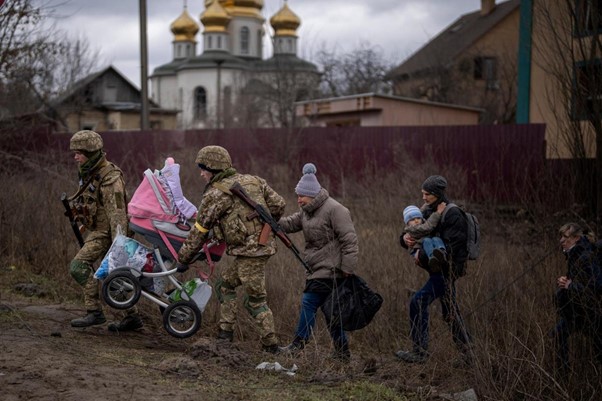
No one has greater love than this, to lay down one’s life for one’s friends. (John 15:13)
It is very difficult—even painful—for me to write these lines. It took me almost three weeks to put on paper thoughts that were on my heart during this time. Therefore, this text is rather a self-reassurance that God is with my people in this horrible time of war.
As I write, the third week of the war in Ukraine is coming to an end. During these days, I constantly follow the news, cry, and pray for my family, friends, and all the Ukrainians trying to survive the bombing and shelling of peaceful cities. As of today, thousands of civilians have been killed, including more than 90 children, and more than two million refugees (mostly women, children, and elderly people) have had to leave their homes/country to save their lives. Hundreds of schools, hospitals, private and historical buildings, and a dozen churches have been destroyed. This is a catastrophe, both humanitarian and of values.
War is a very difficult time. We see a lot of evil, anger, lies, and destruction—and it is so easy to be consumed by all that is going on and forget that God can transfigure these events into something good. We can be active participants in that. During these three weeks, I have been thinking and praying about these things, and I distinguished three moments that are vividly visible now.
Truth. When evil shows its face so brazenly, we can clearly see where the truth is and where there are lies. The Russian government and aggressors use lies everywhere: news, social media, official speeches, church preaching. They call war a “special operation,” invasion and shelling “support and protection” of Russian-speaking Ukrainians, and killing of innocent civilians humanitarian help. We have a popular saying in Ukraine, which derives from John 8:44, and that is that the devil is the father of lies. I agree with this because I am convinced that this war also has a spiritual character. Ukrainians clearly see that they are standing on the side of the Truth. They know they are protecting their homeland, their families, and all that is so dear to their hearts, and that this is the right and truthful thing to do. I am sure that this standing in Truth will help us to win this war.
Unity. Since the first days of the war and the Russian invasion, I have been able to see clearly how united Ukrainians are. This unity is present on many levels. During these days, volunteers in Ukraine and around the globe are organizing humanitarian aid, financial support, psychological help, and many other things. People are united in defending their homeland, in receiving those who left their homes to save their children’s lives, in prayers for peace and victory of the Truth. This unity is not only about Ukrainians—people from different countries around the world are gathering food, clothing, medical supplies, and hosting Ukrainian refugees. This global human unity reminds me of the unity of God in the Holy Trinity.
Love. “No one has greater love than this, to lay down one’s life for one’s friends.” (John 15:13) This verse is the best way to describe the service and dedication of Ukrainian soldiers, volunteers, and all the people who are protecting their homeland. In the first days of the war, a young soldier died in the act of blowing up a bridge to stop the Russian army. A few Ukrainian pilots took enemy fire on themselves to save other pilots. Under the shelling of Russian occupants, volunteers are evacuating civilians and bringing food and water. Love and not anger is the force which is behind all these actions. I cannot deny that there is anger too, but it is rather a reaction to all the atrocities and destruction. Love opens borders and doors for the Ukrainian refugees, saves the lives of POWs, and helps in multiple ways. Love also manifests itself in prayers for those who blindly or consciously came to kill Ukrainians, so that their hearts and eyes would open and that they realize that they are doing terrible things, and return safely home to their families.
Truth, unity, and love are direct signs of God’s presence and are part of his revelation among his people. When I see their presence amid all the suffering, pain, and destruction, I see God’s presence within his people. I do not know how long this war will go on, but I am sure that evil will not prevail because God “is a shield for all who take refuge in him.” (Ps. 18:30)
The University of St. Michael’s College invites members of our community to support one of the many charitable aid agencies engaged in assisting refugees and victims of the conflict, including the Red Cross and Development and Peace/Caritas International.
Read other InsightOut posts.
Angelika Garvey is a fourth-year student at the University of St. Michael’s College double majoring in Book and Media Studies and Sociology. She is currently working as a social media marketing manager and event coordinator. An active volunteer, she helps in non-profit charity organizations, teen camps, and takes part in missionary and humanitarian type aid trips. She is flying to Poland today to help with refugee work at the border.
Victory Through Love
When thinking about my upcoming humanitarian trip to assist Ukrainian refugees at the Polish border, the thought of my loved ones who are standing for peace in Ukraine against Russian military aggression encourages me to help strangers escaping for a chance to live.
Born in the city of Odesa, Ukraine, I spent my childhood enjoying the life of a small city and my teen summer years by the beautiful shore of the Black Sea. I was planning to go to Ukraine this month to help at teen camps and local churches, and to visit my family and friends. But on February 24 at around 5 a.m. my plans changed as the Ukrainian community woke up to the unprecedented news of Ukraine being under a state of war. Russian militaries illegally invaded Ukrainian territories—killing innocent citizens and destroying cities, and bombing universities, hospitals, playgrounds, and a Holocaust memorial.
It was around 10 p.m. EST when I received a text from my grandpa in Ukraine that said, “They are bombing our city and there are six missile strikes on our military units so far.” Shocked, scared, lost, and hoping for all of this to be a nightmare, I found at that moment that all I could do was pray for peace. Thankfully, at that time, I was with friends, some of whom are Ukrainian and have families and friends still living in Ukraine. As we said “Amen,” I received a text saying, “It is quiet now,” from my grandpa. At that moment, joy filled the emptiness within and around the room as we all tried to process this horrific event.
The support of community is vital in such awful moments. It is hard to imagine how difficult it is for one to be alone when watching your family, friends, and home country go through a war. To encourage others going through dismal times of distress, Ukrainian students at U of T were kind enough to share their experiences of coping with others.
“The past week has been the darkest time of my life,” shares Alina Orlova, a Ukrainian majoring in Slavic Languages and Literatures. She continues, “My family and friends are under bombardment. Some of them had to flee the country, and I have spent every minute in fear for their life and well-being. At times, I feel helpless and guilty as I am not with them and cannot physically help. All I can do is support our close ones, raise awareness, and collect humanitarian aid.
“In the past week, I prayed more than I had ever had in my life. I stay hopeful—I believe in our army and people, and I cannot wait for this brutal war to be over so thousands of Ukrainian families can be reunited once again.
“During the chaos, as we barely sleep, eat, or do things as we did before, all we really can do is spread truth about the war to as many people as possible and continue to help in ways that we can. I am endlessly grateful to all people who donate and volunteer right now. Even though your fight is not on the frontline, you save thousands of people’s lives with your contribution,” she says.
Alina also says that the university staff and professors from U of T Slavic Studies “were all extremely supportive and understanding.” She believes that the “professors are also touched by this war and are trying to help their students get through these difficult times. I even received an email from Associate Professor Taras Koznarsky informing students about donation possibilities and resources of help, which made realize that I am not alone in this fight.”
Indeed, we can testify that the support of community around the university and St. Mike’s, which condemned “the unprovoked and unsanctioned invasion of Ukraine” and encouraged everyone to stand “alongside with the Ukrainian community to pray and fast for peace,” is extremely vital during such traumatizing events. Knowing you are not alone facing these troubles brings hope and encouragement to continue focusing on making a difference.
Marta Perehinets, who is part of the Ukrainian Students Club, believes in the significance of educating society on the war. She shares that “USC has been working to promote ways in which the student body can help, like by fundraising, and holding rallies on social media. Despite the ongoing pandemic, the USC also organizes conferences with professors to discuss the historical context to enlighten anyone interested in Ukrainian culture and history.”
Although it is incredibly difficult to remain peaceful as we continue our lives here in Canada, it is inspiring to see universities, staff, and students—local as well as abroad—unite together from all over the world in helping the Ukrainian community go through this terrible crisis. As we keep receiving testimonies and miracles from those in Ukraine through people all over the world, we hope for an “end to the war, and the return of peace, security, and democracy” in Ukraine and across nations.
By uniting our strengths and showing love to our neighbours, we can each provide help from wherever we are to those who need it the most right now. And the world needs it more than ever. After all, we are not strangers. We are all one.
The University of St. Michael’s College invites members of our community to support one of the many charitable aid agencies engaged in assisting refugees and victims of the conflict, including the Red Cross and Development and Peace/Caritas International. A service of prayer for Ukraine will be held at St. Basil’s Collegiate Church this Thursday, March 10 at 1:30 p.m.
Read other InsightOut posts.
Lisa Gleva joined the University of St Michael’s College as Executive Director of Advancement in December 2021. When not at work, Lisa is often found volunteering, including serving on the board of The Friends of Killarney Park. The provincial park is one of her favourite places to hike and reflect.
Celebrating the Women of St. Michael’s
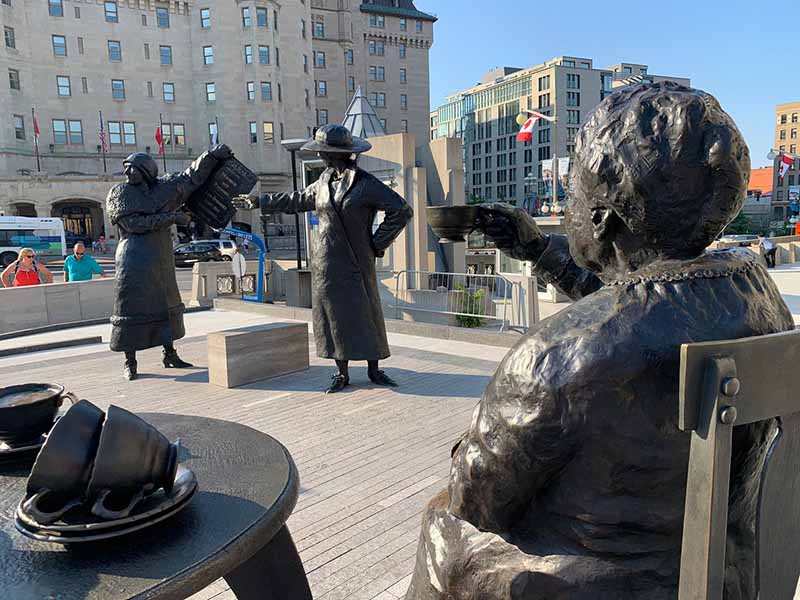
The Women Are Persons! monument commemorates the Persons Case in the late 1920s and honours the five women involved. Emily Murphy, Nellie McClung, Irene Parlby, Henrietta Muir Edwards and Louise McKinney—the “Famous Five”—blazed trails and shattered barriers by insisting that women be recognized as persons constitutionally.
I am grateful for the impact the Famous Five had on the status of women, and I am grateful to the leaders responsible for having the monument created. Installed on Parliament Hill in 2000, it has been temporarily relocated closer to the building housing the Senate during the rehabilitation of the Parliament buildings.
Policy at the time dictated that only royalty and prime ministers could be honoured on Parliament Hill. The monument could only be installed on Parliament Hill with unanimous consent in the House of Commons.
You may think that getting unanimous consent for something as important as this monument, which reminds us of the achievements and contributions of Canadian women in the building of Canada, would be easy. A cinch. No debate.
It wasn’t.
The bill was introduced by the Hon. Jean Augustine, a Liberal MP, five times before it passed. It passed thanks to the passion, perseverance, and leadership of many women… and a little luck when the dissenting MP left the House early for the airport.
Lately, I have been reflecting on the influence role models have had on my life. My life today is what it is because of those who came before me. Historic figures and current leaders. Those I admired from afar, those I learned from up close. One powerful woman particularly comes to mind—her passion for helping others and her commitment to supporting women to thrive, personally and professionally, lit a fire within me.
I don’t think we necessarily realize the impact that we have on others. I’ve heard from alumnae about the transformational impact they experienced at St. Mike’s amongst the Sisters of the congregations of St. Joseph and Loretto. I’ve been going down the LinkedIn rabbit hole to discover more about who our alumnae are. I see leaders in business, finance, science, and academia. I see women moving the needle on human rights, running cities, and leading environmental policy development. I also see a prevalence of volunteerism and service.
I wonder who lit their fires. I wonder whose fires they are lighting. International Women’s Day is a day to celebrate the social, economic, cultural and political achievements of women around the world. This March 8th, I am celebrating the amazing women of the St. Mike’s community.
Read other InsightOut posts.
Sr. Evanne Hunter, IBVM is a St. Michael’s alumna, a member of St. Michael’s Collegium, and a member of the Leadership Team of the Loretto Sisters in Canada. She has served the IBVM as General Consultor, Regional and Provincial Superior, and liaison with the Loretto/ El Salvador twinned community project, and she established the IBVM UN NGO Office at the United Nations in New York. Currently, Sr. Evanne is on the Boards of the National Catholic Broadcasting Council, the Callan Foundation, and Becoming Neighbours. Her numerous awards include a Degree of Sacred Letters Honoris Causa from Regis College.
Thoughts on Lent 2022
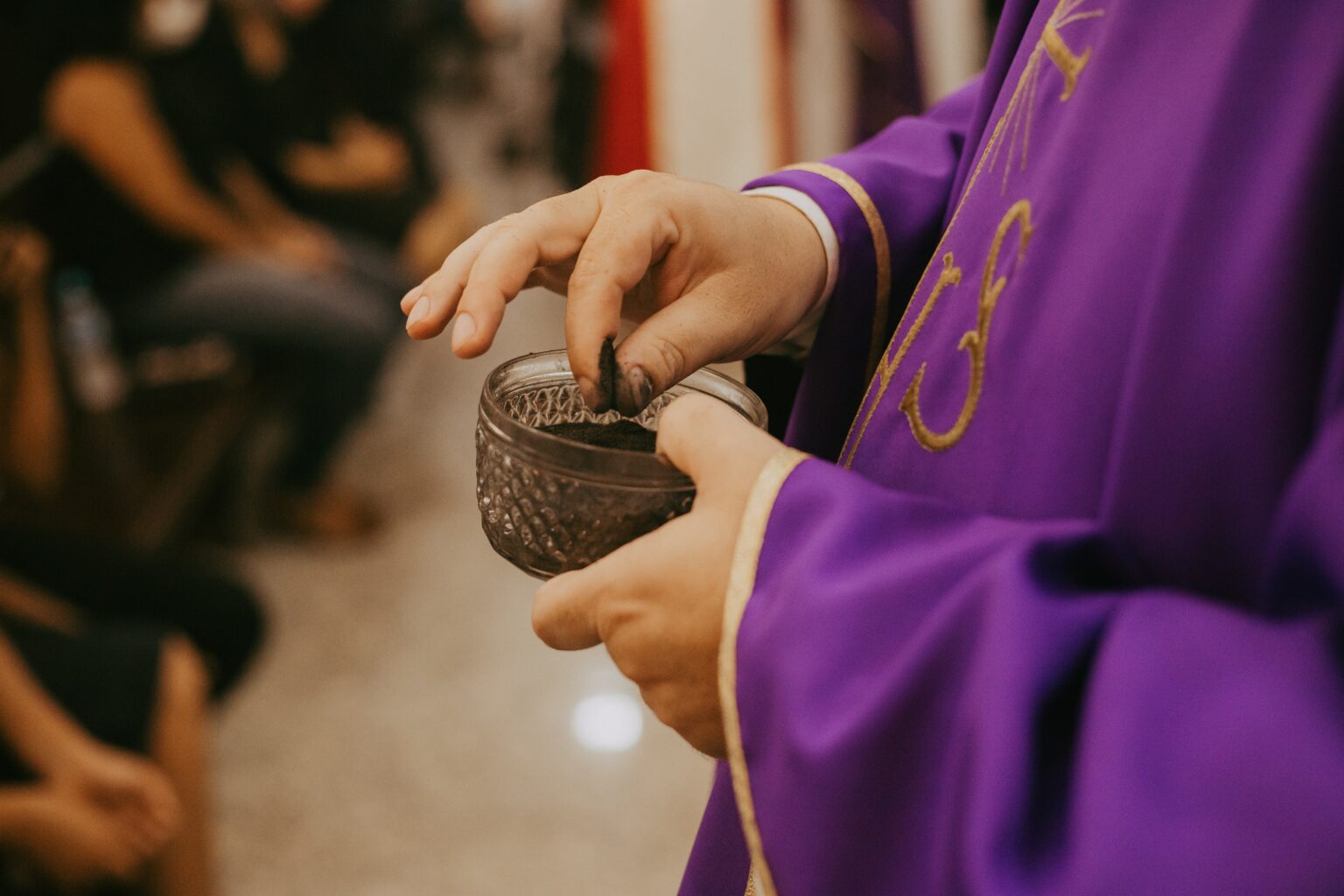
February is on its way out, and what a month it has been in Canada! Quarrels about easing pandemic restrictions, the blockades of the “truckers,” the winter storms and all the hardships that seem to make up daily life for all of us during the reign of COVID.
The beginning of the Lenten season, for me, is intrinsically entwined with St. Oscar Romero because of the times I participated in the annual memorial Mass and stood in the very place the assassin stood as he fired the bullet that killed Romero at the altar as he celebrated Mass on March 24, 1980.
This year, as we enter what Romero called the pilgrimage of Lent, it seems to me that our world is a microcosm of the El Salvador of Romero’s time. Existing societal problems have been thrust to the forefront as they are exacerbated by COVID: inhumane poverty, cruel injustice, repression and violation of human rights, disillusionment with institutions, flaws in our economic and social systems, forced migration as a result of environmental disaster, highlighting of the forgotten and excluded, xenophobic suspicion and intolerance.
These are the very things that Romero called the “structural injustice,” “social sin,” and “institutional violence” responsible for the misery of his people. His recent canonization highlighted his “subversive memory” reminding us that the way things are has to change. He would be asking us whether will we really emerge from this pandemic into a “new normal” characterized by a spirit of solidarity, compassion, mercy and hope.
Ash Wednesday ushers in the season of Lent, what St. Oscar Romero calls the most important season of the year. It is a time for Christians to engage in prayer, austerity, introspection and renewal.
Romero asked: “Where are the roots of this ‘social sin’?” His answer? “In the heart of every human being. Present-day society is a sort of anonymous world in which no one is willing to admit sin, yet everyone is responsible. What is needed is not just an individual conversion, but a communal conversion.” It is a time to face the weaknesses, the emptiness and the failures in our own lives and in our broken world. It is a time for a makeover allowing God to create a new heart and renew a right Spirit within us.
Romero encouraged his people to enter fully into “the pilgrimage of Lent so that the coming of Easter Sunday, the Sunday of the Resurrection, will bring not only the memory of the Risen One of centuries ago but also the true resurrection of all God’s people,” and a renewal of ourselves and our world.
What Romero said of his day is true for our day: “The great need is for Christians who are critical and active, who don’t accept situations without analysing them inwardly and deeply … persons who can say yes to justice and no to injustice and can make use of the precious gifts they have to resist evil wherever they see it. We know that every effort to better a society is an effort that God desires, that God demands and that God blesses.” He says that not to do so is unfair, unjust and un-Christian.
So, Romero urges, “Let us make the pilgrimage of Lent so that the coming of Easter, the Sunday of the Resurrection, will bring not only the memory of the Risen Christ of centuries ago but also the true resurrection of our people” and the transformation of our world.
Recognizing the physical and mental toll that COVID is exacting everywhere and the conflicts and natural disasters that are affecting families and nations, let us affirm our trust that through the passion, death and resurrection of Jesus, our God is assuring us that Easter Sunday is a new “spring” that brings life and hope that a better world is possible.
Ref: Homilies for the Sundays of Holy Week: St. Oscar Arnulfo Romero.
The Spirit is that little flicker of fire
Burning at the bottom of the woodpile.
Rubbish is piled on,
Rains douse the flame,
Wind blows the smoke away.
But underneath everything
Still an ember burns unquenchable.
The Spirit sustains the feeble breath of life
In the empire of death.
(adapted from Leonardo Boff)
This year, Ash Wednesday is March 2. Mass at St. Basil’s will take place at 7 p.m. EST and will be live streamed. Read other InsightOut posts.
Abigail Lawson has spent much of her adult life travelling and relocating to different parts of the world. Raising her two young children in the Middle East and working as a photographer, she has travelled from countries such as the United Arab Emirates to Greece and Italy to Croatia, capturing weddings for clients around the globe. Abigail has recently returned to Canada after a 12-year hiatus from her studies. A Mediaeval Studies major, she is presently writing her senior essay on the exploration of practical mediaevalisms and their application in the classroom, examining how they might be presented to a student audience.
Courtly Love and the “Chick Flick”
“Lancelot followed her with his eyes and heart until she reached the door; but she was not long in sight, for the room was close by. His eyes would gladly have followed her, had that been possible; but the heart, which is more lordly and masterful in its strength, went through the door after her, while the eyes remained behind weeping with the body.”
Chrétien de Troyes, Lancelot, The Knight of the Cart
The label “chick flick” has been used to characterize a particular film genre for as long as I can remember. The pithy designation is recognizable and some might perceive it as a tad reductive, but I have to admit I love a good chick flick. The films offer escapism—a departure from societal norms—depicting romance through a utopian and often implausible lens. The premise of one film in the genre is typically a carbon copy of the following: handsome boy meets beautiful girl, boy and girl fall in love, unforeseen obstacle stands in the way of said love, a battle is fought and won, and the couple live happily ever after.
Although the idea of romance has evolved since the Middle Ages, many people genuinely believe that Cupid’s arrow will strike, and fate will bring them to their soulmate. We love dreaming of a fairytale ending. When that initial spark inevitably fizzles, some believe—sadly—that it must be over. Many of us are searching for that glittery romance repeatedly depicted on screen and in books —ignoring the possibility that this may only exist in fiction. Many men struggle with a hero complex and believe that to be respectable and worthy, they must “save” the woman they love—her knight in shining armour. Women today share more equality with their romantic partners, and finding a woman who needs—or better yet—wishes to be saved by a man can present challenges.
When considering medieval romance and its relationship to modern romance, it is evident that the game has changed; however, the feelings associated with love and romance have not. Romance is depicted as attractive, scary, and even magical in the modern world—just like an excellent medieval romance: “Love without fear and trepidation is fire without flame and heat, day without sun, comb without honey, summer without flowers, winter without frost, sky without moon, a book without letters” (Chrétien de Troyes, Cligès).
Romance, interestingly, has not always been a thing. It stemmed from the mediaeval concept of Courtly Love. The romance was a genre of high literary culture which blossomed in the 12th-century courts of the romance super-fan, Queen Eleanor of Aquitaine. Courtly love, or fin’amor, highlighted nobility and chivalry, following a set of codes and behaviour for ladies and their lovers. Today, these notions exist in our minds with lines such as “Chivalry is not dead!” In romance literature, knights performed extravagant bravery and gallantry for idyllic ladies above their station. Within the narrative of mediaeval romance, we see idealized gender roles through stories rife with overt masculinity and impossibly high standards of beauty and innocence. The patterns of masculinity perhaps unlock mysteries of the past while explaining why the courtly tradition of the chivalric hero is not only very much alive but perhaps here to stay.
Courtly love was never fixed but always unpredictable because Cupid, the God of Love, often initiated it and not the lovers themselves. The epic tales were wonderfully cheesy—often heart-wrenching—depicting undying love, magic and romance. Is it possible that courtly love is to blame for our idealized perception of love? Although today we use words such as courtship, chivalry and romance, somewhere over the centuries our wires have been crossed because the mediaeval poets who first wrote tales of love and chivalry would likely find our notions of romance very different. Literary works from authors such as Chretien de Troyes, Marie de France, Geoffrey Chaucer, and Andreas Capellanus present a unique perspective on social dynamics found within Arthurian courts in the Middle Ages.
Did these stories represent escapism? Probably. The medieval world left little space for a true love story; perhaps the nobility’s only connection to romance was through fiction and fantasy, as courtly love was not associated with marriage. The constraints of a loveless marriage, favouring financial practicality over love, were conceivably a preoccupation found within courts. The confines of society dictated whom one married; therefore, the nobility was left to love from afar. As Andreas Cappellanus stated in rule number one of his Rules of Love, “Marriage is no excuse for not loving.”
Today we pursue a relationship to fall in love and share a bond with our romantic partner; in contrast, mediaeval tales of romance rarely expected their true love to reciprocate. We often associate love and romance with flowers, doves, and heart-felt gestures of devotion—or for this medievalist—stories of brave knights such as Lancelot and his catastrophic love affairs with Queen Guinevere. Our distorted associations with romance could be in part thanks to mediaeval courtly lovers and their impossibly romantic prose.
Have these tales tainted how we connect and identify with love and place undue pressure on the idea of finding “the one” and “living happily ever after”? One thing is sure: the romance genre—both mediaeval and modern—reflects our insatiable human desire to connect with the excitement and mysteries of love and passion.
Read other InsightOut posts.
Dr. Christopher De Bono is Executive Director of Mission, Values and Spiritual Care for Unity Health Toronto. A practical theologian, a clinical and organizational ethicist, and a certified Spiritual Care chaplain, Christopher earned his BA and PhD at St. Michael’s and his MDiv at Regis.
No Shame in Testing Positive for Covid
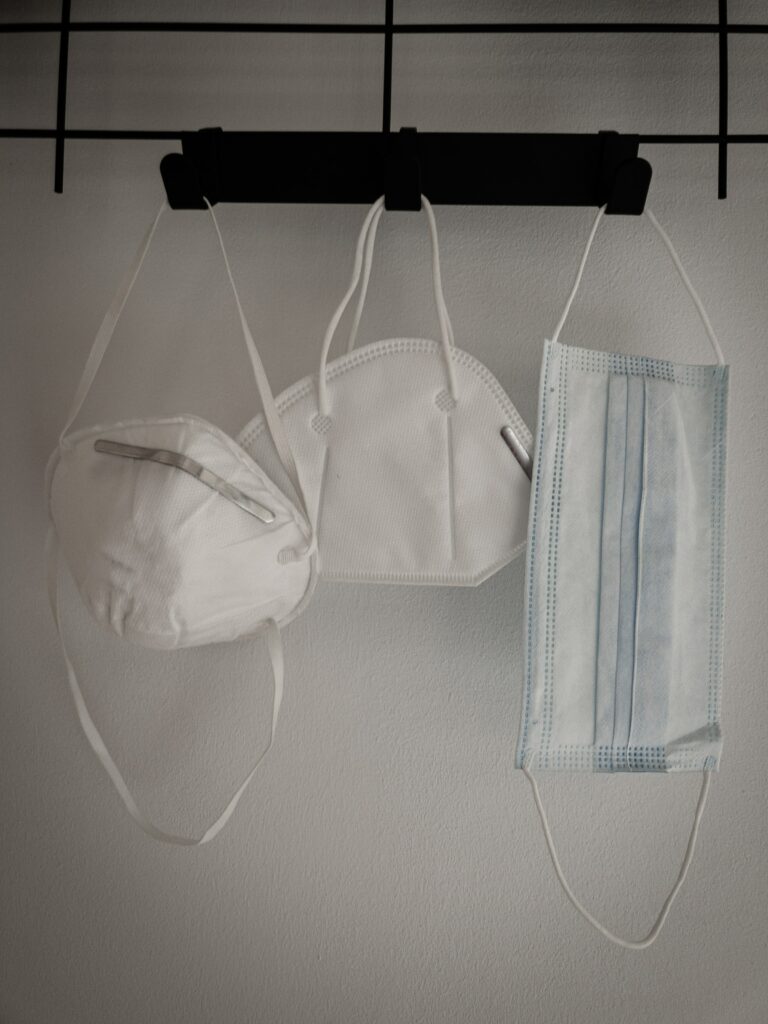
“No one wakes up dreaming of working through a pandemic!” a good friend once told me, but this latest Omicron wave, with its significant transmissibility and ubiquitous presence, has become a challenge for so many of us health care workers.
Health care workers have the “real world” experience of caring for patients who have tested positive for Covid, while following each and every precaution, including getting vaccinated against COVID-19—the most important action we can take to protect each other and prevent severe disease. We have also been among those testing positive or have been among those exposed through the community.
Hospitals have strong supports in place for staff members who are exposed or who are experiencing symptoms so that they can get tested quickly and stay home in order to keep themselves and our patients safe.
As a senior executive in health care, I know this pandemic is having a toll on our staff, physicians, learners, and volunteers. Health care workers across the province are feeling burnt out, and while we are working to increase mental health supports, I’ve also noticed some people feeling shame in getting Covid even though they’ve followed precautions and are vaccinated. Why?
Almost all of us health care workers do what we do because we care. Wanting to serve and help is in our DNA, part of the age-old culture of being a healer. That is why we might think getting Covid as health care staff means we are letting people down—our teams, our patients.
I admit that when I am waiting for a test result, I sometimes have a fear of “what if”? And if I am honest, somewhere in my head is not only a worry of how badly I’ll get it, how I might not be able to actively work, but a little voice saying “What will people say?” as I believe I have been so careful.
As we all know, voices like that are flags for negative thinking—and not only should we spot negative thinking, we should stop negative thinking—and then think and act differently. At times like this I have had to say to myself, “Christopher, there would be no shame in getting Covid if the test comes back positive.”
There’s another reason not to succumb to shame in getting Covid when you do everything in your power to protect yourself and others. There is no shame in getting Covid because there ought not to be a stigma attached to a virus or an illness. Our history teaches us the harm that stigmatization of any illness can do. Think for example about stigma in HIV/AIDS or in mental health. Shame about getting Covid is an awful burden for healing professionals to have to carry themselves. And so, let me say again: “There is no shame in getting Covid.”
Looking forward, I sincerely hope that today’s modelling and data prove to be true. Trending suggests that this wave has mostly plateaued locally, and we hope that new infections fall as quickly as they spiked.
If you know a health care worker, especially one who has tested positive in spite of every precaution, please thank them for their ongoing service.
We’re all dreaming of waking up to work in a post-pandemic world.
Read other InsightOut posts.
Sr. Sarah Rudolph is a Loretto Sister and the director of the Mary Ward Centre, a ministry of the Loretto Sisters focused on education, justice and spirituality. One of her areas of work is children’s rights advocacy, including the rights of girls and fostering girls’ participation at the United Nations through the CJ/IBVM NGO to the UN. She has a deep love for Ignatian spirituality and shares it through a monthly women’s prayer group and outreach to women who have experienced homelessness through the Ignatian Spirituality Project.
Motivated by Love
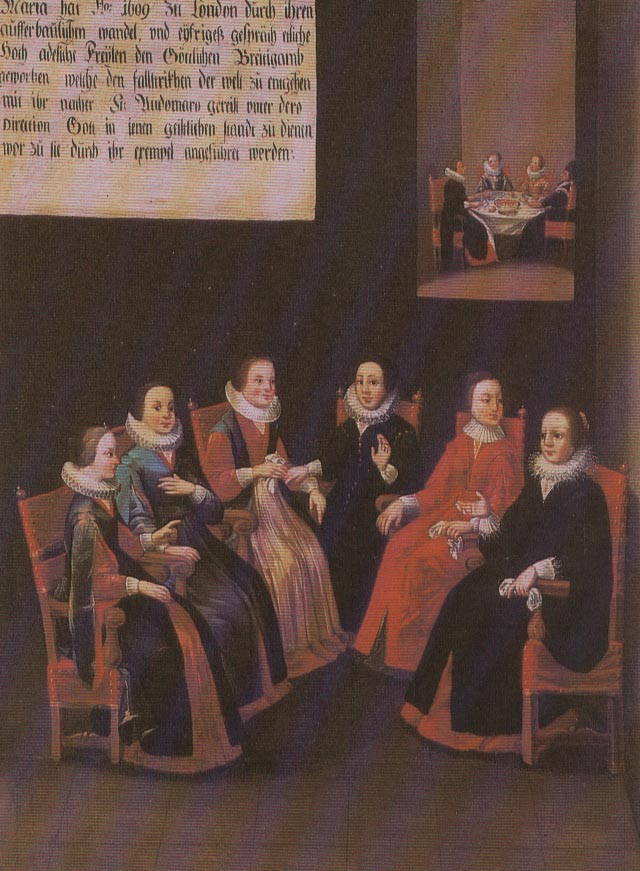
“I was so apt for friendship and ever loved more than ordinary.”
These words of Mary Ward (1585–1645), founder of the Congregation of Jesus and Institute of the Blessed Virgin Mary, commonly known as the Loretto Sisters, written in the 17th century, have a rich resonance for her companions today. As a member of the Loretto Sisters, these words remind me that Mary Ward Women are relational women committed to a deep relationship with God and others, motivated by love, as the driving force that urges us on in mission. Mary’s capacity for loving friendship, and for working with others for the sake of mission, offer an enduring inspiration.
Her early companions were diverse. They are often remembered in this image from The Painted Life of Mary Ward, the open circle of friends—(right to left) Mary Ward, Winefrid Wigmore, Susanna Rookwood, Catherine Smith, Jane Browne, and Mary Poyntz. These women were the first to join her in religious life, however, her circle of friends extended far beyond the members of her Institute, and included religious and political figures, and members of European monarchy. Among her closest companions were her dear friends, Robert Wright and Henry Lee (Lee referred to Mary as his “best friend”), who journeyed with her from Flanders, across the Alps, to Rome.
What does Mary Ward’s extraordinary capacity for love and friendship have to do with the Loretto Sisters and their relationship with St. Mike’s?
The bond of love and friendship for mission and service to the Church, the academy, and the common good, has existed between the Loretto Sisters and St. Mike’s for over a century. The establishment of Loretto College, from its first foundation at the Loretto Abbey Motherhouse on Wellington Street to the residence building today on St. Mary Street, is closely connected to the evolution of St. Mike’s.
In January 1911, a historic federation between the Congregation of the Sisters of St. Joseph, St. Michael’s College, and the Loretto Sisters was formed to create the official Catholic College of the University of Toronto. The Loretto Sisters provided not only a residence for women pursuing advanced education but also professors for Classics, Modern Languages, and Philosophy classes which were given in their own College building. The motto of Loretto College, Veritas fons Lucis et Caritas, or “Truth is the source of light and charity” complements the Basilian motto of St. Mike’s, Bonitatem et disciplinam et scientiam doce me, which means “Teach me goodness, discipline and knowledge.” Our institutions are committed to education for the good of the human person, for the Church, and for the world. We strive to form men and women who pursue truth, are dedicated to the attainment of Christian virtue, and are able to meet the challenges of the contemporary world.
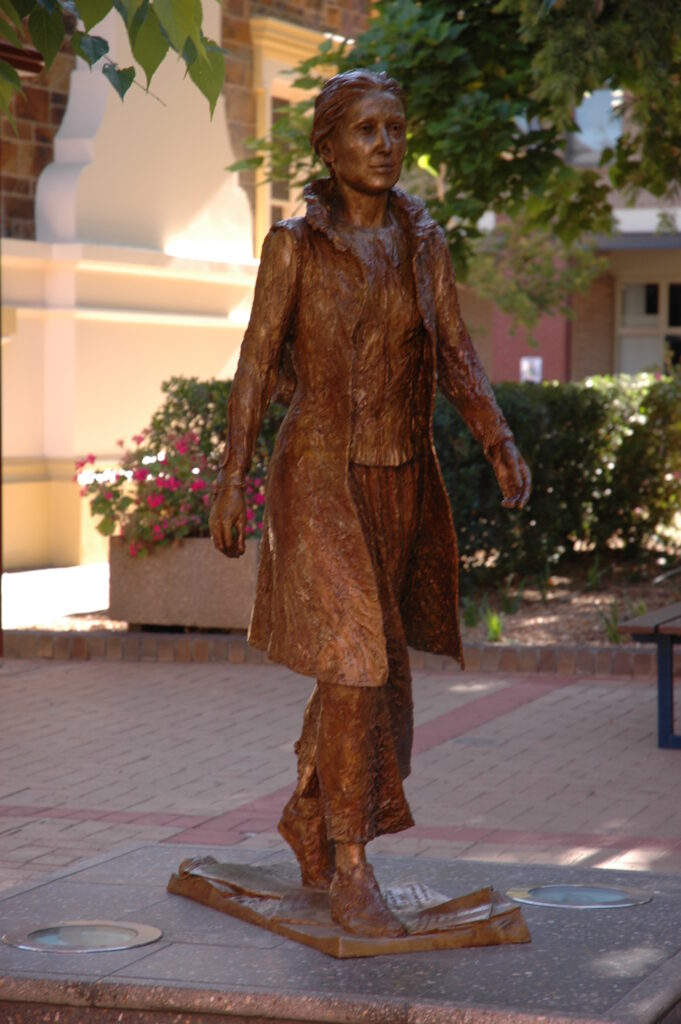
From these beginnings have emerged generations of friendship and partnership between St. Mike’s and the Loretto Sisters. Sisters have studied at St. Mike’s, taught courses, served as chaplains, and ministered to students through the residences. This friendship and partnership, however, is not simply one for the history books. Today there continues to be strong collaboration through Loretto College and the Mary Ward Centre. We have shared interests and collaborate on interfaith dialogue. We participated together in a recent initiative at St. Basil’s Parish on Indigenous relations in the Church. And through Campus Ministry, we are actively working together to engage students in a process of listening and conversation for the 2023 Synod on Synodality.
While a student at Regis College, I had the privilege of working closely with colleagues at St. Mike’s on the Regis-USMC federation process. I prayed with students from St. Mike’s, journeying together through the Ignatian First Spiritual Exercises. I worked collaboratively with St. Mike’s students on events, and of course, I was fortunate to take theology courses through the Faculty of Theology. Each of these experiences has given me insight into our valued partnership, rooted in loving friendship and a desire for service.
As the Loretto Sisters and our Sisters in the Congregation of Jesus celebrate Mary Ward this week, giving thanks for her birth on January 23 (1585) and her death on January 30 (1645), we are also celebrating the joy of mission shared with centuries of companions, friends, and collaborators. We invite our friends at St. Mike’s to celebrate with us, to share in the reality of one woman’s vision and her desire to do all for the greater glory of God.
Read other InsightOut posts.
Rohma Khan is a third-year student majoring in Near and Middle Eastern civilizations and double minoring in philosophy and diaspora and transnational studies, with pronouns of she/her/hers. She has been an equity officer for UTMUN and Orientation leader for SMC. She is SVEP- (Sexual Violence Education and Prevention), IAR- (Identify, Assist, and Refer) safeTALK, and LivingWorks-certified. Currently a Don!
Let’s Talk Frankly
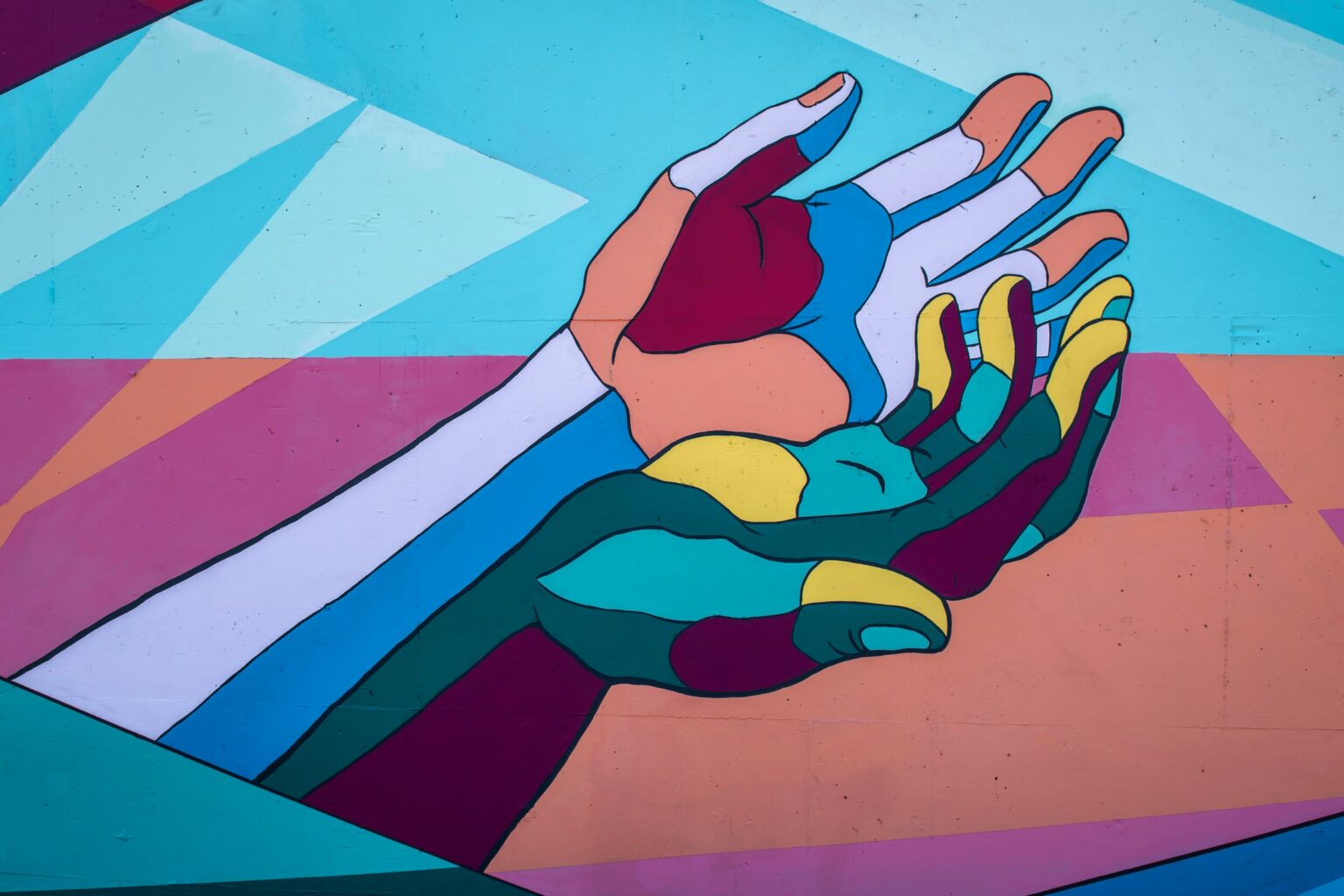
Being a Don is mostly about making sure students feel safe. It’s simple enough in theory; I attended strategizing workshops for programming, promoting inclusive attitudes, and training in suicide-prevention support. This preliminary, foundational understanding I was introduced to alongside other SMC Dons would be key in forming the safe and welcoming environment we envisioned for all SMC students. Learning the concepts and strategies in training compared to applying them in real life turned out to be quite different. I didn’t really know where to begin.
In trying to apply my training, I found myself pulling on my first-year experience to help re-orient my perspective to the potential concerns of my incoming residents. When I came to reminiscing, I realized their experience would be nothing like mine. My first semester was in person, pre-pandemic. I couldn’t relate to the added stress of living through Covid-19 whilst trying to navigate university for the first time. So I pivoted. Instead, I tried to relate to them through the general feelings of anxiety, panic, burnout, stress, and depression, all the things I felt and even continue to feel while being in school as the world confronts Covid-19.
I remember the fall semester of 2020 well: there was no confirmation of vaccine roll-outs, Toronto was going in and out of different levels of lockdowns, the politically charged American climate was starting to manifest in downtown Toronto on the streets in protests, racial and ethnic discrimination was flourishing, as it continues to today, under the umbrella of the virus, and professors re-instated online live, proctored exams, maybe in an effort to return to some state of normalcy after the previous semester ended abruptly in cancelling all exams. I had never had so many panic attacks in four months as I did that semester. Trying to keep my GPA competitive for law school applications in five courses as I worked every weekend at my part-time job while not being able to be with my support systems because of the pandemic was utterly overwhelming. What was worse was that I had internalized my state of chronic pain and thought it normal. I did not want my residents to ever feel like the situation they were in was normal; that the pandemic was normal, that their feelings of burnout and stress were normal. In fact, I want to throw away the word normal. Pain and suffering, sleep deprivation, panic and stress, malnutrition are terms that have all been so normalized in the discourses surrounding university students that the blemishes this pandemic painted on our mental health have been overlooked by both the structures and systems of academia and even ourselves as its participants. It is not enough for the conversation surrounding mental health to be augmented; it must be carefully crafted to the nuances and particularities of a given situation. It must be recognizable and relatable. It took me some time, but I did realize that feeling so horrible all the time is not right, it is not the way to live my life, it is not the way to experience meaningful education, and it is completely unfair to me.
What implementing this realization looked like for me was to have more patience with myself. Procrastination and the looming stress of deadlines for work that always seemed unfruitful would lead to last-minute stress-induced essays that would not attain the marks I expected of myself. It was a cycle. So, I began to incorporate productive procrastination in which I would allow myself to only procrastinate so long as I was doing something that truly made me happy; this looked like making a lot of chai over the semester in my room and watching a lot of Friends episodes, going for walks on campus, cleaning routinely and deeply, working out, or even dancing in my room. Suddenly, I wanted to get my work done faster because I wanted to feel free of responsibility when doing the things I enjoyed.
Another strategy that may work for some is to be kind to yourself. It is a simple idea that means more than some can stomach. For students who are trying to do four to six courses a semester and are unable to sustain their mental well-being in doing so, try re-evaluating your priorities. Is it imperative you take four courses? Does it have to be in this department that you don’t really enjoy? Does it have to be now when you are not at your best? Does it have to be here? Stress can serve as a motivator, but if you find it getting in the way of your work rather than helping it get done, there is an issue. Ultimately, this may look like lightening your workload. There is not much wiggle room here. You may need your transcript to look a certain way, and I completely sympathize with that, but you must ask yourself: at what cost? You come first. Your mental health comes first. There is no normal path to graduation or to a job. Normal does not exist because everything is susceptible to change, every obstacle you face is malleable. Plans can be re-made, can be achieved later, somewhere else, with someone else, every problem can be combatted with new strategies. There were so many opportunities for growth and experience that I couldn’t even comprehend because my mental state was forcing me to live in a rigid structure where I relived pain; my existence was stagnated. Every day I didn’t take care of myself was another day I was stuck in the cycle of harm. I wasn’t being kind to myself, expecting me to get as much done post-pandemic as I did before. Treating myself as a priority realigned my problems in a way that seemed manageable.
The greatest thing I learned in this time, which I continue to incorporate in my support to SMC students, is that community is everything. What remained steadfast for me this year was the support of the Don team. As a new Don, trying to be the kind of person I needed at my lowest for my residents seemed daunting. However, the Don team was exemplary in the care and encouragement they offered me and the students they supported. I learnt how to implement my training alongside my team as they shared with me the similar concerns they had for the community. Knowing that I was not alone in my troubles was half the battle. Checking in on one another, offering each other advice, solace, and comfort helped ease everyone’s minds in these uncertain times.
It was this key insight that made sense of all my training: I am not a trained psychologist, nor am I trained in counselling; I have no experience in being a certified mental health support of any kind, and yet it doesn’t matter. What I am is support. Just like I needed the support of my team to orient me, another may need support to guide them through their concerns. Referring students to the correct people, whether it is on-campus to the U of T wellness centre, U of T accessibility services, our SMC wellness website, the Registrar, the Assistant Dean’s office, or off-campus resources for immediate support like Good2Talk, is not necessarily always about providing an answer, it is about making sure they know they aren’t alone looking for one.
Read other InsightOut posts.
Hedieh Hashemi is a second-year undergraduate student studying Molecular Genetics and Microbiology. Hedieh was one of the orientation marshals in this past year’s orientation, and she currently serves as the St. Michael’s College Student Union (SMCSU)’s Vice President.
Applications are being accepted for the position of Orientation Coordinator until January 23.
The Summer I Found My Home Away from Home
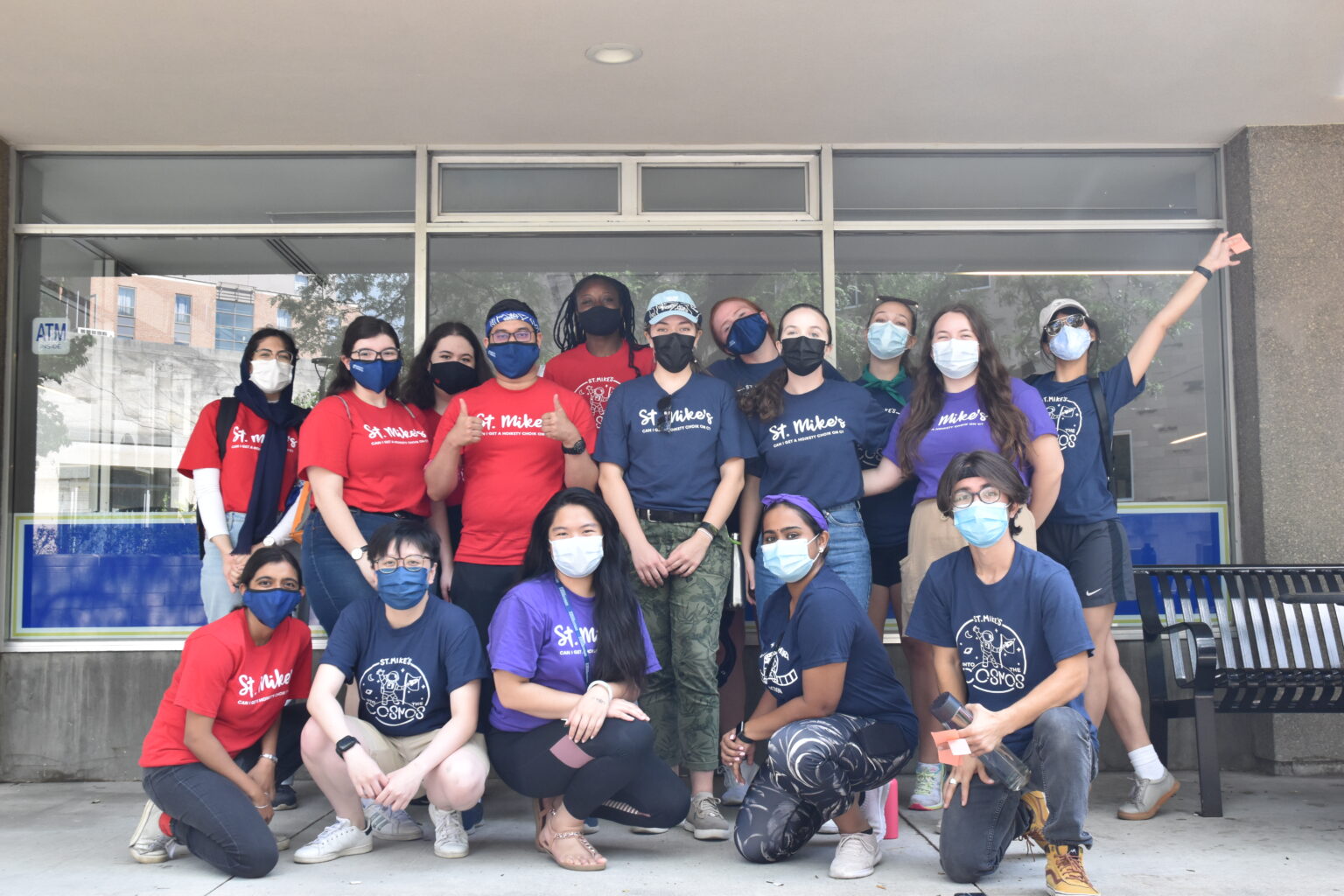
I was the most excited when I got my offer to be a marshal for Orientation 2021. Going through orientation again, this time as staff—how could it get any better? Things were exciting on paper, but as the first meeting came around, I felt nervous. Not knowing anyone on the team—and my not-too-good skills in making friends—added to the online format of everything, all making me doubt if I belonged there. It was hard to believe in myself and trust that I was making contributions to the team.
My overthinker brain, however, wasn’t able to stop me. The good vibes in the meetings, and the excitement that came with every task related to orientation, kept me going. Patience and time cure a lot of things and they surely did work in my case. With every meeting, I got to know my teammates better, I learned that my efforts are appreciated, and the team was so supportive that soon enough I too started to feel confident.
Things got much more exciting as we got closer to Orientation Week—and the best news? We were going to have in-person events too!! Having missed an in-person orientation as a first year, I was so happy to have the opportunity to experience it. Spoiler alert: the in-person experience exceeded my expectations.
I’m not sure if it was because of everything being online for too long and me forgetting what things were like in real life but the environment around SMC was so nice! Every time a familiar face was passing by, there was a wave and a smiley face (technically smiley eyes—masks, you know?). People were so approachable, whether they were orientation staff, orientees, college staff, or the dons. Just a little “Hi!” could be a conversation starter—although I have to give some credit to my red marshal t-shirt too, which made me extra-brave to walk up to someone I’d never met before and start a conversation.
The week was full of fun events, but naturally at some points, things got rough, and there were nights when I got home tired and drained, thinking “I’m done”. And nope, I wasn’t. The next morning, at our daily 8:30 am meeting, seeing the faces of my teammates all full of enthusiasm, hearing affirmations from the Orientation Coordinators (OCs) first thing in the morning, and the team cheering each other on, all made me feel like I could keep doing this forever!
Throughout the day, there were so many small scoops of care here and there: the OCs checking in any time they were passing by, Emma (our Assistant Dean of Campus Life) always making sure the food suited everyone’s dietary restrictions and that no one was excluded, us being asked to put in the group chat and let others know that we’d got home safely whenever we were leaving late at night.… How could I not appreciate my time spent at orientation?
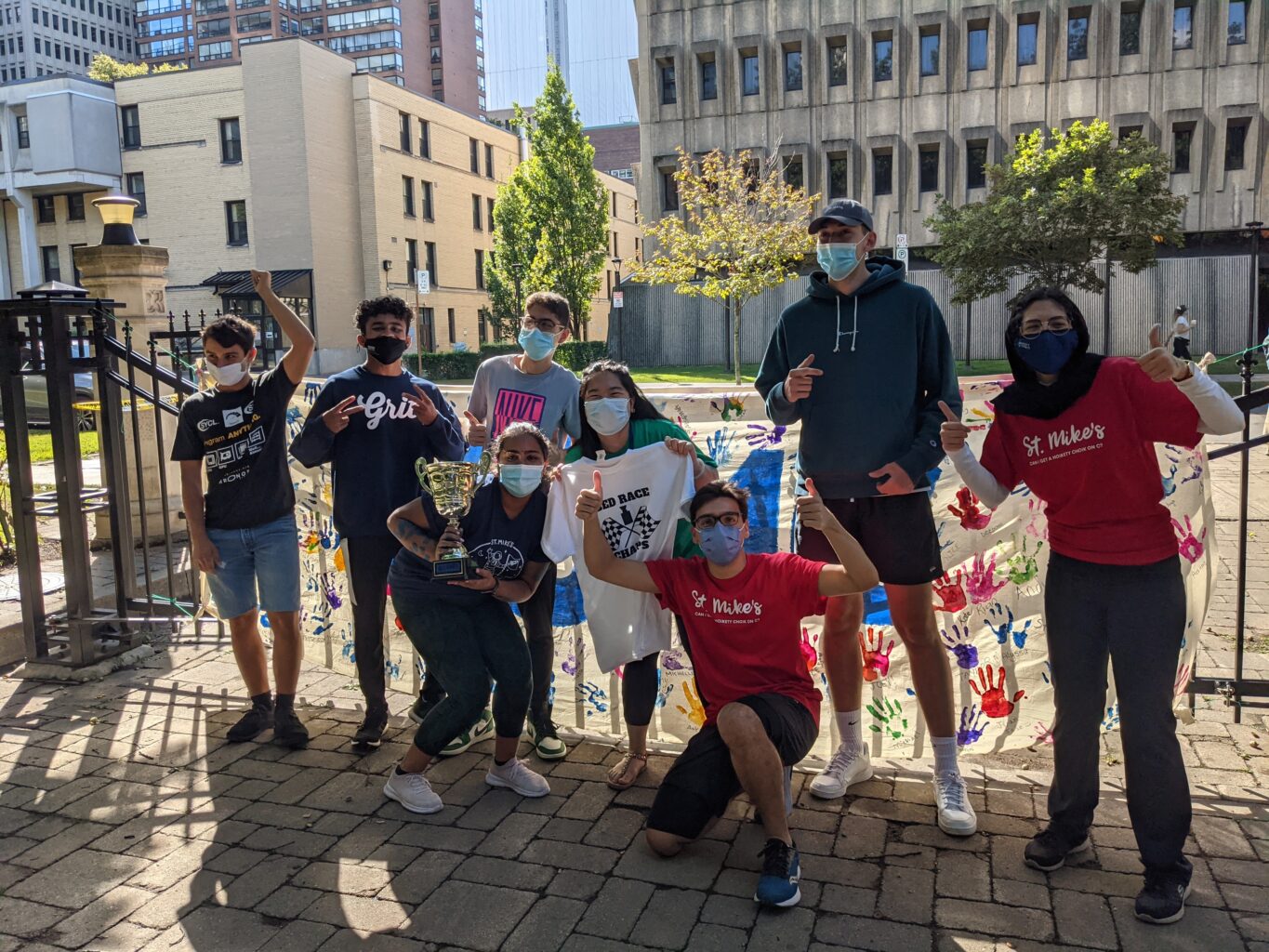
This orientation—which was my first-ever major in-person university experience—made me appreciate in-person interaction a lot more. I was reminded how it’s all the simple things that bring us closer together; things like sitting together and eating together, carrying a box full of orientation T-shirts together, and even running together during bed races (yes, I did have the honour of running in the bed races—and no, my legs weren’t ready for this after a year of staying at home).
This orientation also taught me that I am a fake upper-year, at least when it comes to the campus. During the week I was co-leading some of the campus tours, but did I have any clue what I was talking about? Please don’t expect a yes from me. Good thing was, by the end of my third campus tour I knew all the details of the campus so well that Google Maps might have needed to consider retiring.
Thinking about the bigger picture, it’s just fascinating how all of us came together and did all this work to welcome the new class into our community, and how we did everything we could—from giving tips and running workshops, to setting up campus tours and socials—to help our new class succeed. The passion for giving back to our SMC community made the whole process and all the efforts so much more meaningful.
And yeah, this is the story of me finding my SMC family and falling in love with this college we call our “home away from home,” all thanks to Orientation 2021.
Please note: Orientation 2021 was a hybrid event with all in-person activities following appropriate safety measures.
Read other InsightOut posts.
Dr. David Sylvester is the 8th President and Vice-Chancellor of the University of St. Michael’s College in the University of Toronto. A professor of medieval social and economic history, he holds an M.A. and a Ph.D. from Fordham University, New York City and has taught for three decades in universities in Canada and the United States.
Finding Hope When the Rains Come
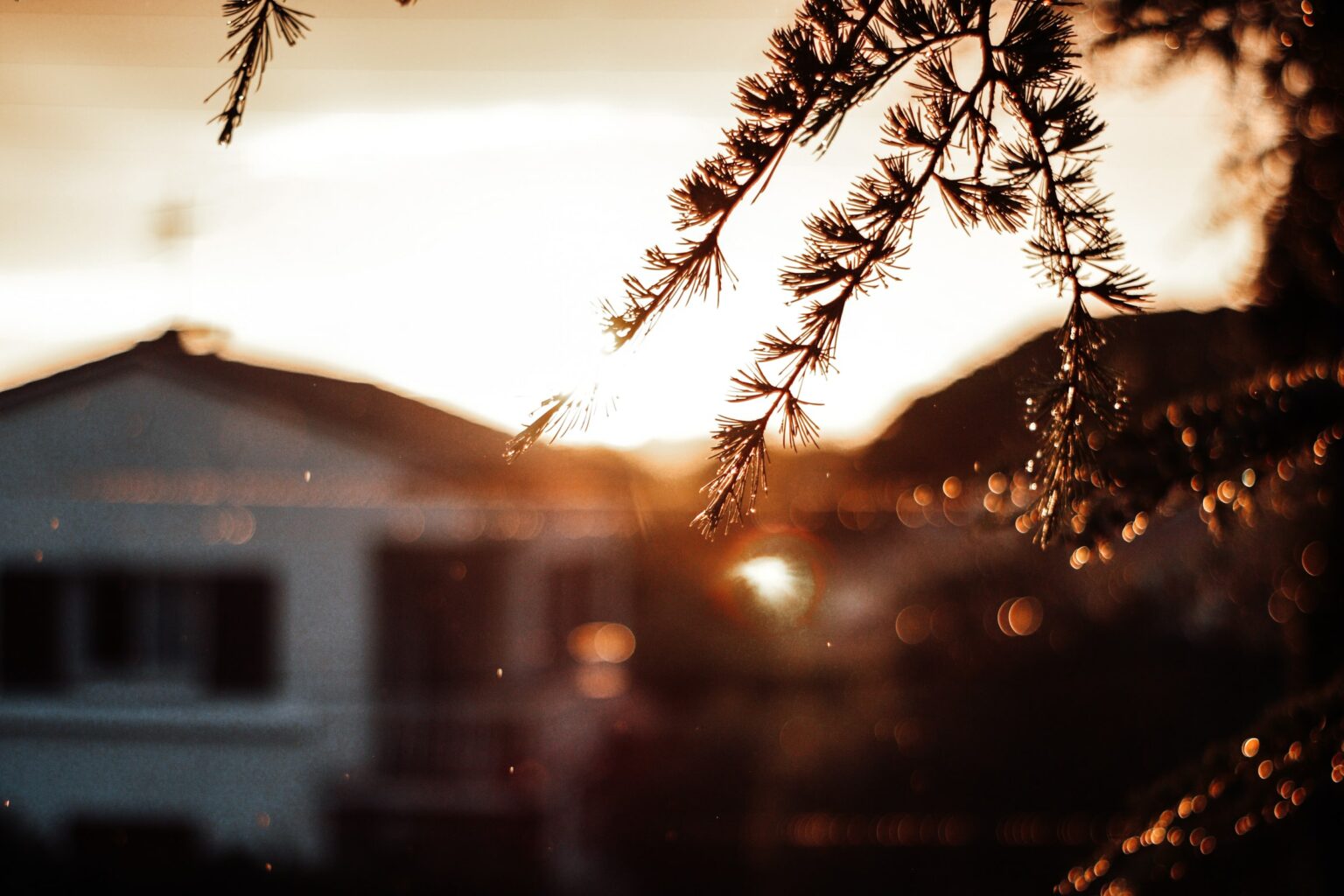
The academic term is at an end. We are heading into the holidays. Christmas is but a week away, and this has been a year like no other…except for, well, maybe last year.
Yes, it’s been another long year of starts and stops, another year of disappointments, another year of, “we had so many plans, what happened?”
Or, as the Nobel laureate Seamus Heaney complains in his poem Holly, “we went looking for Christmas holly and it poured rain, and we got really soaked”:
it should have snowed.
But here we are in the fourth week of Advent, preparing to celebrate the coming holidays. And, our hope is not diminished. This year, like last, St. Mike’s found new ways to work, to study and to live together. I am most grateful for my colleagues, our students, our trustees, and our alumni for the love, kindness, and creativity that made this such a successful year on Clover Hill. The fruits of their labours are many.
Or, if I may return to Seamus Heaney again, as he always has the best words:
Now here I am, in a room that is decked
With the red-berried, waxy-leafed stuff.
And I almost forgot what it’s like
To be wet to the skin or longing for snow.
May all of you enjoy a safe and happy holiday, and may you and your family enjoy many blessings together in the New Year.
From all of us here at the University of St. Michael’s College.

David Sylvester
Read other InsightOut posts.
Fr. Alexander Laschuk, PhD is a priest of the Ukrainian Catholic Eparchy of Toronto. He is currently the Executive Director of the Metropolitan Andrey Sheptytsky Institute in the Faculty of Theology, in addition to his responsibility as Judicial Vicar of the Toronto Regional Tribunal. He lives in Trinity-Bellwoods with his wife and daughter.
Here, but not yet
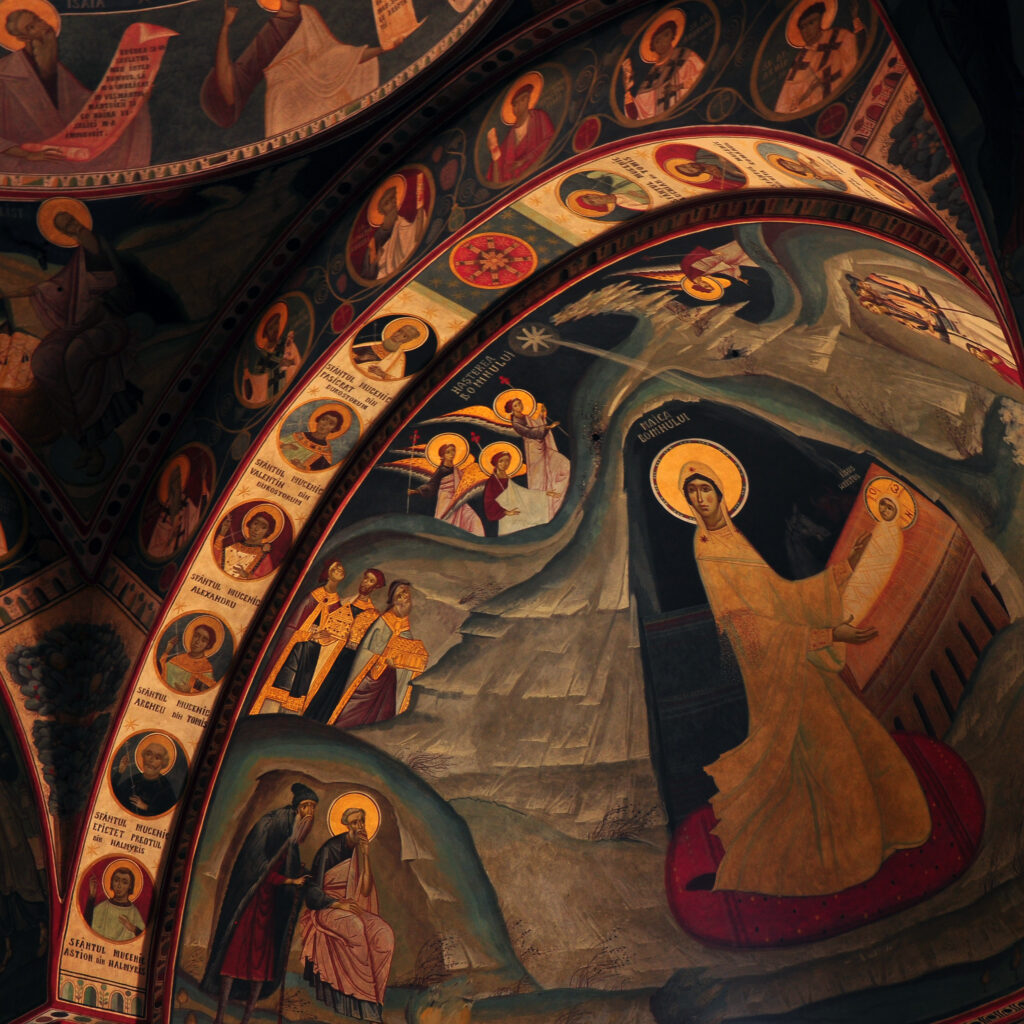
It’s Christmas time in the city. The lights are shining, and the markets are re-opening after a long COVID absence. Already last week my daughter and I went for a walk through the financial district to admire all the decorated Christmas trees. However, I look on the calendar and see we have a long way to go yet.
This is life on the Julian Calendar. You may or may not know, but in 1582 Pope Gregory XIII changed the Christian calendar so that Thursday October 4, 1582 was followed by Friday October 15, 1582. This changed happened because the solar year on our planet is not 365.25 days but 365.2425 days. This change led to what we today call the Gregorian Calendar. Countries adopted these changes at different times: most of Catholic Europe in 1582, the British Empire in 1752, Russia in 1918, and Greece in 1923. That means in 1917, when you crossed the border from Austria-Hungary to the Russian Empire, you not only changed your watch, but your calendar! Still today many Eastern Christians continue to follow the calendar of Julius Caesar, just like the early Christians did in the Roman Empire.
Today the Julian calendar is 13 days apart from the Gregorian Calendar—which means that while I am writing this in early December in Toronto ecclesiastically I’m still in the month of November. And my daughter does not understand why she does not get to celebrate Christmas with her “English” friends at school. I’m stricter than my parents were—we’d have the tree up on December 25 at home—and there are no chocolate Advent calendars in this house. After all, the Byzantine pre-Christmas season is a time of fasting. My daughter usually at least gets a Christmas-break vacation out of the deal, but the seemingly ever-present fear of a new COVID variant led to our cancelling a Christmas trip to Italy. “You know, Jesus Christ lived under the Julian Calendar,” I remind her as she rolls her eyes with all the angst common to a seven-going-on-seventeen-year-old.
But in all honesty, I like the Julian Calendar. Not for fundamentalist reasons like some Orthodox Christians but simply because it easily makes sacred time sacred. My sister, a nurse in the E.R., never has a problem getting Christmas Eve off—and makes a pretty penny working overtime on December 25. I get two weeks of peace and quiet to prepare for Christmas once the world has forgotten about it on December 26. And there is certainly no need to worry about “Keeping Christ in Christmas” when you celebrate in January. But to get there, we must get through this early period of bombardment, of realizing that Christmas time is here, but not yet.
In classical Greek we have two words for time—the chronos and the kairos. We can look at Christmas in the sense of the chronos: chronological or sequential time. We’ve arrived at December 25. But for us on the Julian Calendar, I see Christmas as being the kairos: the right moment, the fitting and opportune time. When things have arrived the way they should, like when we talk about “the harvest” as a time period.
And the kairos is almost here.
Read other InsightOut posts.
Dr. Brian Thornton worked as an accountant in 17 countries on four continents. Then he came to Canada and St. Mike’s. A few months ago he successfully defended his doctoral dissertation.
Synodality, Laity, Pope Francis—What’s It All About?
Pope Francis recently called a synod—a meeting of Church leaders—which opened in October and runs until 2023, and includes local consultations as well as meetings in Rome.
Pope Francis has declared that synodality is what God expects of the Church in the 21st century. He has put his own transformative stamp on the meaning and conduct of synods, saying that a synod involves mutual listening in which everyone has something to learn.
Synods are not new. They have been around since the early days of the Church. History records that bishops of neighbouring churches in the second century gathered together to find solutions to their common problems. It was not always stated when or if the laity participated. We know, for example, that bishops, presbyters, deacons and laity attended the Synod of Elvira around about the year 305. The Synod of Whitby in 664 was convened by a layman, King Oswiu, who ruled that the decisions of the synod were to apply in his kingdom. A modern historian has written that Vatican I (1869–1870) was the first ecumenical council “without direct lay participation.”
The irony is that, 10 years earlier, Father John Henry Newman had famously written about the necessity of consulting the faithful in matters of doctrine. In 1917 the Code of Canon Law limited attendance at diocesan synods to priests and bishops. But the Code left ajar the door to lay participation. It allowed diocesan bishops to invite “others” at their discretion, but did not define “others.” Shortly before the end of the Second Vatican Council in 1965 Pope Paul VI established the Synod of Bishops as a permanent institution. Attendance was extended to representatives of religious institutes and to “clerics who are experts.” There was no provision for lay participation.
Then, only eight days after the formal close of Vatican II, the Bishop of London in Ontario made a startling announcement. His diocese was to hold a synod, to which everyone in the diocese— clergy, religious and lay—was invited. He was not concerned that the laity would be in the majority; indeed he welcomed it. He was bent on letting the people of the diocese absorb and receive the teaching of the council. And he planned to be a listening bishop. He used this phrase often for he wanted to hear the opinions of the people on how the diocese should move forward. The voice of the people mattered because he took seriously what the council had taught him about the infallibility of the people of God. His other oft-repeated remark was that the Spirit would speak where the Spirit wished to speak.
More than half a century later this pioneering diocesan synod can be seen in conformity with the call of Pope Francis for a synodal church. Everyone in the church, clergy, religious and lay, has to listen to the others in order to discern the will of the Spirit. It requires an act of faith which is based on the conviction that God is at work in world history. Francis referred to the prophet Elijah who learned that the Lord was not in the wind, nor in the earthquake, nor in the fire, but rather in a tiny whispering sound. “This is how God speaks to us,” said Francis, and “we need to open our ears to hear that tiny whispering sound.”
Since his election Pope Francis has convened synods dealing with the family, young people, and the Amazonian region. Bishops, priests and laity attended them all in limited numbers. Now Francis has launched a synod of the whole Church. It is an ambitious project which will last two years, until 2023. Francis wants to hear the voice of the entire Church, so this synod is an exercise in mutual listening. It starts in the dioceses where all are invited to offer their thoughts and opinions. Each diocese will forward a synthesis to the local bishops’ conference. From there a further synthesis will go forward to the Synod of Bishops in 2023. After that the action moves back to the dioceses for the implementation phase.
Pope Francis opened the synod in October this year. He felt sure that the Spirit would guide the church and “give us the grace to move forward together, to listen to one another and to embark on a discernment of the times in which we are living.” He stressed that the synod was neither a parliament nor an opinion poll, but an ecclesial event. “If the Spirit is not present there will be no synod.” He emphasized the participation of all because participation was a requirement of the faith received in baptism. Baptism was our “identity card,” and his call for all to participate includes those on the fringes. “Enabling everyone to participate is an essential ecclesial duty,” he said.
The subject of this synod is synodality. When we place that alongside two prominent sayings of Francis, a diverting discovery emerges. Firstly, says Francis, synodality is the way of the Church in the 21st century. Secondly, the point of a synod is to discern where the Spirit is leading the Church. We can see then that Francis is inviting the Church to consider and discern synodality, the very subject that is at the heart of his pontificate. He has thrown it wide open. This is a valiant venture with an uncertain end result.
Read other InsightOut posts.
Fr. Andrew Summerson, S.Th.D., is an Assistant Professor of Greek Patristics with the Sheptytsky Institute of Eastern Christian Studies in the Faculty of Theology in the University of St. Michael’s College.
History and Theology as Contemporary Wisdom from the Ancient Desert
In Athanasius of Alexandria’s 4th century “best seller,” Life of Anthony, we are told that upon his parents’ death, he begins soul-searching. An interior inquietude overtakes him and he starts to wonder about the writings of the New Testament. He ponders the apostles’ single-hearted mission to leave everything and follow Christ. He also considers the life of the early Church documented in Acts, where the company of believers laid everything at the apostles’ feet and put it in service of others (Acts 4:35). Anthony’s mental ruminations are confirmed one day in church, when he hears the proclamation of the Lord’s words to the rich man in the Gospel: “Sell everything you have and give to the poor” (Mt 19:21). With this, Anthony offloads his inheritance and takes to the desert. He learns from elder ascetics, practices prayer unceasingly, wrestles with the devil, keeps vigil in caves, heals the sick, and confutes philosophers.
Athanasius explains that Anthony, “a man in the flesh,” is assisted in all these efforts by the “Lord who for our sakes became flesh.” This is a rather loaded statement that needs untangling. Athanasius, the writer of the Life of Anthony, is also one of the greatest theological minds of the early Church, who forcefully defended the faith articulated at Nicaea in 325. The council aimed to narrate precisely who is this “Lord who for our sakes became flesh.” This Lord is of one substance (homoousios) with the Father, a detail still recited every Sunday in the Nicene Creed today, or in the Byzantine tradition, to which I belong, it is sung at every Divine Liturgy.
What is at stake for Athanasius in this doctrinal battle is not simply an ethereal philosophical dispute about the nature of God but rather the accurate reception of God’s revelation to us “according to the Scriptures.” Nicaea means the difference between worshiping a false idol or worshiping the living God, who providentially connects the dots between Anthony’s initial interior stirrings and the public proclamation of the Gospel. The Life of Anthony details the process of the ascetic’s transformation from a quiet kid to a heroic saint, “initiated in the mysteries and filled with the spirit of God.”
Nicene theology creates the conditions for more Anthonys to spring forth in this world. Anthony has internalized Nicaea and proclaims it in his own flesh. If Jesus is a human creature, he is no more than a model to imitate. On the other hand, if Jesus is God who takes on a human nature, he offers human nature a new possibility: to bear “all the fullness of God” (Eph 3:19).
Perhaps Athanasius’ greatest contribution as a theologian is his ability to bridge the gap between the heights of doctrinal controversy and grassroots spirituality. As a historical theologian, I specialize in gaps, particularly gaps between the past and the present. My principal sources are figures from the first millennium. I engage them precisely because it is here, in the cauldron of the first millennium, the language for naming God’s activity in Scripture is formulated for ages to come. These writers developed a grammar that Christians are heirs to. Truthfully, one can speak a language without knowing the grammar. Infants surely begin to formulate sentences long before they can diagram the contents of their principal parts. But learning grammar shows us the sheer power of language, exposing the heights and depths of what words can do when used to their full potential. For us, the grammar of the Nicene Creed may just be a common place prayer that is muttered through Mass. For Athanasius, the creed is the very condition that provides a way for saints to emerge in this world, charged with the power that comes from “the Lord who was made flesh.”
We are continually tempted to forget how we learned Christian language. In our own speaking, we lean on clichés, phrases coined by others so often repeated they have lost their meaning. Such repetition excuses us from the burden of thinking. One must not forget that clichés come about in the first place because they are powerful statements that conjure up popular agreement and therefore are worth repeating. Studying the sources of Christian language ensures that the truths of the faith do not become vacuous statements but remain powerful and transformative. When properly interrogated, reading the texts of the ancient dead ensures that we can hear them as clearly as Anthony did the Scriptures. Historical theology aims at the same results. Without access to these sources, we cut the Christian tradition short. We miss the power of its language, capable of cultivating Anthonys, whose life captivated a 4th century crowd and is worth the hard work of making sense of in the 21st.
Read other InsightOut posts.
Matilda Horton is a Victoria College student in her fourth year of her Undergraduate degree, studying Celtic Studies and Drama. She is currently working as an executive for the Celtic Studies Course Union and is in the process of applying to Celtic Studies MA courses across the UK and Ireland. Tilly would be happy to discuss all thinks Celtic Studies at any time, so long as you have a few hours to spare.
A Love for the “Curious World” of Celtic Studies

Some of the first questions asked of Celtic Studies students at the beginning of their introductory classes include: What is Celtic Studies? Who were the Celts? What makes up the Celtic identity?
As you can imagine, I was taken aback by these questions. Aren’t they supposed to tell us what Celtic Studies is? Isn’t that why we’re all here? How can I possibly know all this already?
What I didn’t realize in those first few classes was that Celtic Studies is the pursuit of answers to big questions about a relatively small part of the world. As a life-long lover of puzzles (and their clear-cut solutions), these questions both excited and terrified me. After the initial panic of being met with so many unknowns, I settled into a comfortable state of uncertainty, and this is where the real work began.
Like many of my peers, I came to the program with a genuine interest in Celtic history and identity but with little concrete knowledge. One of my best memories is being seven years old, standing on the side of the road in the north of Scotland. I remember looking around me at the vast landscape and feeling an inexplicable age and weight in the world around me. Since then, I’ve been determined to learn as much as I could about the Celtic world and its history. When I discovered that St. Michael’s offered a program in Celtic Studies, I couldn’t imagine studying anything else. Every day I am offered the opportunity to reconnect with the world that has fascinated me for so long. With every class my peers and I get to dive deeper into the history, culture and concepts that bring back that same feeling of awe in me.
With every class this curiosity is piqued and amazement grows. There is virtually no end to the things we are able to explore within the program. I have been able to delve into Celtic art, history, politics (both modern and ancient), mythology, language, literature, law, music, and so much more. My classmate are musicians, writers, historians, and artists—all of whom, like me, have found a love for the curious world of Celtic Studies. Although the program is on the smaller side, it is mighty. With a variety of student-led and department-run events (Céilí events, guest lecturers, hurling practice, film screening and even baking!) the Celtic Studies community exists vibrantly outside the classroom.
The scholarly experience in Celtic Studies is truly like no other as students have the freedom of studying under a department that is eager for us to explore. Professors challenge students to go further; to follow our inquires as far as they will go, dare to not know, and most of all keep asking questions. Because of these core values of the program, my peers and I have been able to study topics and build skills we never could have imagined (reading ancient Irish and Welsh texts), never thought ourselves capable of (learning a Celtic language!) and will have gleaned facts that will likely stick with us forever (the validity of The Wicker Man: sacrificial ritual or Nicolas Cage film? The world may never know).
I often get the question “what’s next” in my studies. People struggle to see where a degree in something so specific yet all-encompassing may lead. To that I usually have no definitive answer. Not because I have no opportunities: it’s actually quite the opposite. From my degree I have been able to explore paths I never thought possible. Maybe I will work in translations, or publishing, archives, teaching, writing, cultural studies, politics, or curation. Or maybe I will fall in love with a field of Celtic Studies I have never even considered. Ultimately, I am led by that affinity for the endless exploration that this program has instilled in me. As I apply for MA programs across the world in Celtic Studies, I do so fueled by my desire to explore and with an eagerness to see what I discover. No matter what, I will always be asking questions about the Celtic World. What next indeed.
Read other InsightOut posts.
The following was written by University of St. Michael’s College Interim Principal Mark McGowan as part of his weekly message to his staff.
Each Name was a Life
This missive comes a few days earlier than usual… Normally I would not disturb you during Reading Week, but Remembrance Day is this week, and I could not let it pass without some thoughts about the College and the students and alumni who lost their lives in the major wars of the 20th century. Each year I try to attend our ceremonies of remembrance at the Slype, the walkway between More and Fisher Houses, which is where the names of those who “fell” are inscribed. I regret that I am unable to be on campus tomorrow but would like to leave you with a few thoughts about the “last names.”
The last name on the list of young men commemorated for their service in World War I is Fred Webster. Early in my teaching career at SMC, I had a mature student in my history of Christianity class who offered me a story about his mother’s favourite uncle, this same Fred Webster, who coincidentally was part of a much larger research project in which I was engaged. Fred was a student at St. Michael’s College who suffered from a debilitating heart condition. When he tried to enlist locally in the Canadian Expeditionary Force, he was refused on medical grounds. He tried many times to join his classmates overseas, but every time the refrain from recruiters was the same: rejection. On the streets of Toronto, Fred was berated by passersby as a young man who was a shirker, not doing his bit for “King and Country.” They had no idea of the story of his repeated attempts to enlist and his repeated rejections. In January 1918, however, when the Allies were desperate for reinforcements in a war that was not going very well, Fred was accepted and was sent to the military training camp near the Toronto Exhibition grounds. As a well-educated recruit who worked in banking, Fred was promoted to Acting Sergeant in March. During the mandatory swim near Hanlan’s Point, however, Fred had a massive heart attack and drowned. At age 24, his war ended in Canada.
When I arrived at St. Michael’s in 1991, I attended my first Remembrance Day ceremony at the Slype. Among the group of students and Faculty I noticed a woman standing at attention close to the opening of the Memorial. She remained for some time after the ceremony had ended. In the months to come I saw her from a distance, from time to time, in Alumni Hall. The following year, on November 11, she was at the Slype again. I asked my colleague, Mimi Marrocco, who this older lady was, standing at a distance from the group. Mimi told me her name was Sister Mary Zimmerman, CSJ. She had been the Executive Director of St. Michael’s Hospital (1963–85) and was currently assisting Father Bob Madden in Alumni Affairs. Then Mimi added that she came here every year to remember her husband, Maurice Dier Zimmerman, the last name on the World War II list. An alumna of SMC, Bernice Veronica Lannan (Sr. Mary) met Maurice at St. Basil’s Parish, where she was actively engaged in parish activities. They were married in 1943 at St. Basil’s, just before Maurice shipped out with the RCAF. He never returned; his squadron was stationed in the Middle East, and he was declared missing, later killed in action, when his plane crashed during a raid over Greece in July 1944. Four years later, after having worked in the pharmacy at St. Michael’s Hospital, the widowed Bernice (Sr. Mary) decided to join the Sisters of St. Joseph where she had a distinguished career, including an associate professorship in U of T’s Faculty of Medicine. She insisted on keeping her married name in religious life. Each year she ventured to the Slype to honour her Maurice. She died in 1994, faithful to a love that never ceased.
Every time I pass through the Slype, I remind myself: Each name was a life. Each life was a story. Lest we forget.
Read other InsightOut posts.
Remembering St. Mike’s Fallen
“They shall grow not old, as we that are left grow old,” poet Laurence Binyon wrote in his 1914 classic work, For the Fallen, of those who lost their lives in battle.
More than 150 St. Michael’s men—students and graduates—who died in World War I, World War II, and the Korean War are remembered on the Soldiers’ Memorial Slype, the sandstone archway found between Fisher House and More House. On November 11, 2021 at 10:30 a.m. we will gather there for our Remembrance Day ceremony, recalling our fallen students and all who have lost their lives in battle.
Here are the stories of two St. Michael’s fallen.
Second Lieutenant Joseph Claude Anthony Barker was born in Toronto on March 3, 1895 and attended St. Michael’s in 1912–1913, then enrolled in the College of Dental Surgeons. Through the summer of 1916 he served as a sergeant in the Canadian Army Dental Corps at Camp Hughes, and then returned to college to complete his course. He again served in the C.A.D.C. in Winnipeg and Camp St. Charles in the summer of 1917. In October he joined the Royal Flying Corps at Toronto and trained through the winter in Texas, obtaining his commission in March 1918. After reaching England he was completing his course when he was accidentally killed in a flight near Bournemouth, the day before he was due to go to France. He is buried at Durrington, England.
“I’m infernally proud of being a Canadian,” he wrote in a letter to his family in 1918.
Flight Sergeant John Richard Griffin, the son of John Joseph and Bridget Griffin, was born in Toronto in 1918 and attended St. Michael’s in 1935–1936. He earned his wings with the Royal Canadian Air Force in October 1941 and was sent overseas in November of that year to serve with Division 7 (R.A.F,) Squadron. He died on July 13, 1942 of injuries sustained in combat and is buried in Buxton Cemetery in Derbyshire, England.
“Age shall not weary them, nor the years condemn.
At the going down of the sun and in the morning
We will remember them.”
Laurence Binyon, 1914
Read other InsightOut posts.
Joanne Granata is a Writing Instructor in the University of St. Michael’s College Writing Centre and a University of St. Michael’s College graduate.
A Flicker of Hope in the Darkness
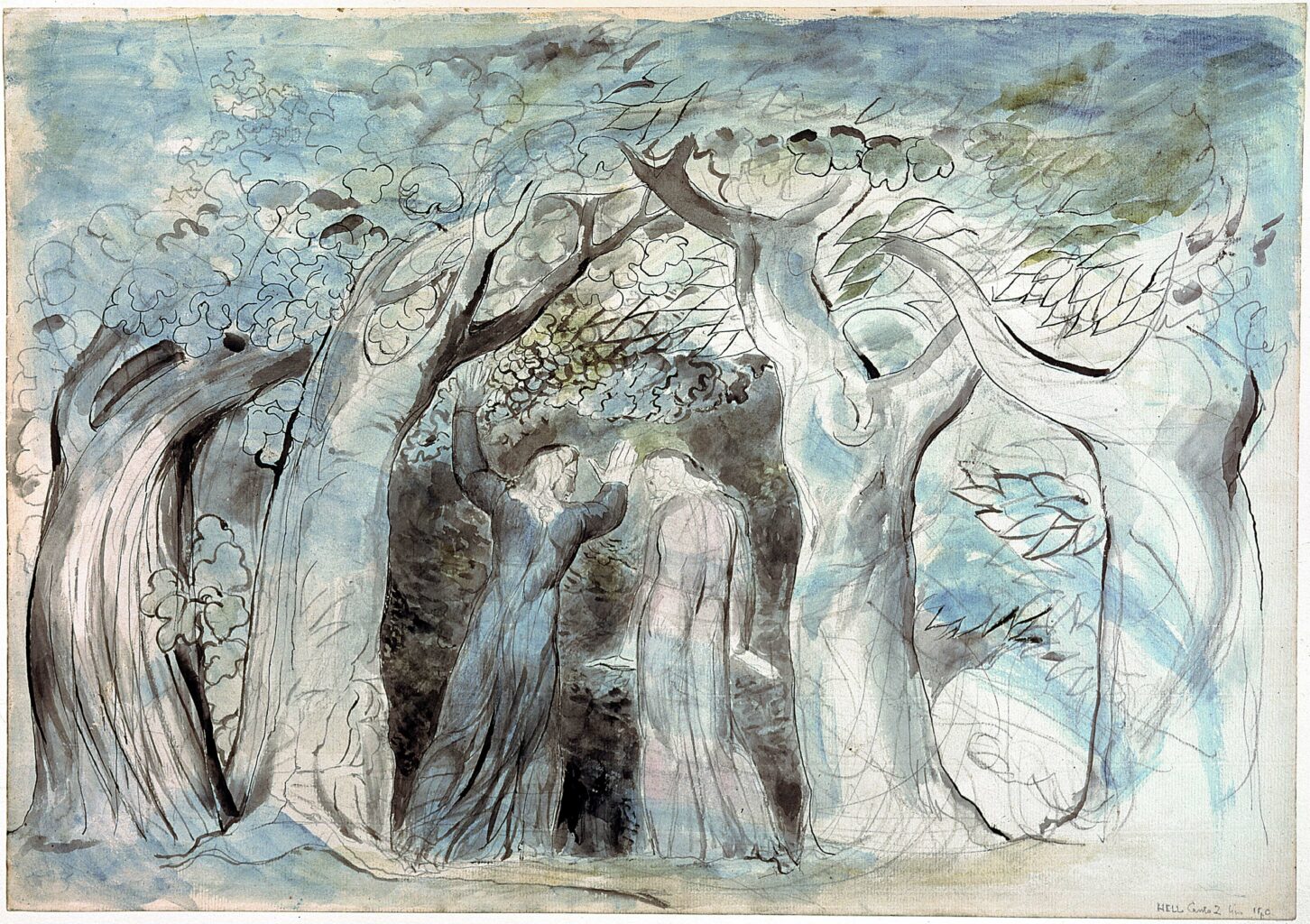
September 14 of this year marked the 700th anniversary of the death of Italy’s “sommo poeta”— Dante Alighieri. As an Italian Studies instructor, and with this week being the International Week of Italian Language and Culture, I would be remiss not to mention or reflect upon this important anniversary. When I was a St. Michael’s student, I studied Dante in many of my undergraduate Italian Studies courses, and, later, he became the topic of some of my own articles and presentations as a graduate student. Now, many years later, Dante’s seminal text on the journey from Hell to Heaven takes on a new meaning for me as a Writing Instructor in the USMC Writing Centre.
Although the central motif in Dante’s Commedia is man’s pilgrimage to God, allow me some poetic license as I reflect on my experiences as a Writing Instructor through the lens of Dante’s Commedia. Dante begins by expressing a sentiment of being lost in a “shadowed forest” (Inf.1.2), a “savage forest, dense and difficult” (Inf.1.5). Often, as a writer, we too can be just like Dante, feeling overwhelmed by the prospect of an assignment, lost in the dense forest of our thoughts. While writing this piece, I found myself reminiscing about my own undergraduate days, spending many late nights with my peers in the Kelly Library, lost, so to speak, in the mountain of books and notes and papers strewn across my favourite table, writing research papers, trying to find my way back to the “path that does not stray” (Inf. 1.3). Now, as a Writing Instructor in this same building, I assist students with some of these same difficulties, some of whom are taking the same courses I took as an undergrad. The irony is not lost on me. I can’t help but smile and think, ‘funny how life works sometimes’.
As a Writing Instructor, I have the privilege of meeting many exceptional students with great minds, who, like all of us, have different approaches to research and writing, to their education, and to life in general. Many come to the Writing Centre and are often unsure of what to do, fearful to make a mistake or to do “poorly”. They are, in a sense, like Dante: faced with a long and difficult journey, and afraid, “hindered in [their] path along that lonely hillside” (Inf. 2.63), but still eager and willing to make that journey up the mountain to reach their desired destination.
Like Dante, the students I see slowly begin to find a way out of the “savage forest, dense and difficult” (Inf.1.5); they begin to recognize the “error of their ways”, so to speak, and, with a little gentle nudge here and there by their Virgilian guides, begin to see a path through to the light. Many receive the reassurance they were seeking or are gently prompted into a successful brainstorming session that leaves them filled with satisfaction. After an appointment perhaps their understanding of an assignment isn’t as black-and-white as they had liked; perhaps it is more grey than when they arrived, but, much like Dante, they “[grow] to be as one who, while he wants what is not his, is satisfied with hope” (Par. 23.13). That hope, that “certain expectation/of future glory […] the result/of God’s grace and of merit we have earned” (Par. 25.67–69) often instills a sense of confidence within our students. They leave their appointment having learned a new skill or having worked out a major problem in their writing. More importantly, they leave with the knowledge that they can succeed, that they can exit that dark forest and reach the top of Dante’s sunlit mountain.
What is so interesting is that of course the sense of satisfaction or hope does not remain solely with the student, but spreads throughout the community; our students impart it onto their colleagues, and onto us, their Writing Instructors. I am often amazed and inspired by the perseverance and dedication of many of our students; although they come to me for help, it is often they who help me. They share their newfound hope and energy with me, and then I am able to take that hope and that sense of having helped and guided someone along the “right path” into my next appointment and into the next. After such a long struggle with our global pandemic, this flicker of hope, in the most unexpected of places, becomes a reminder that, just like Dante’s journey, there is always light in the darkness.
Read other InsightOut posts.
Maria Gallo (SMC 9T8) is Interim Chair of the USMC Alumni Association Board. She is an alumni strategist, scholar, entrepreneur, and author of The Alumni Way: Building Lifelong Value from Your University Investment (Policy Press, 2021). She is the founder of the research consultancy KITE — Keep in Touch Education and The Alumni Way Academy, promoting alumni potential. Alongside her social enterprise work, Maria is a Visiting Research Fellow at the Trinity Business School, Trinity College Dublin, and the expert alumni advisor for CERN in Switzerland. Maria lives in Donegal, Ireland with her husband Morgan and two children, Luca and Tara.
Lifelong Alumni Connection—Even From a Distance
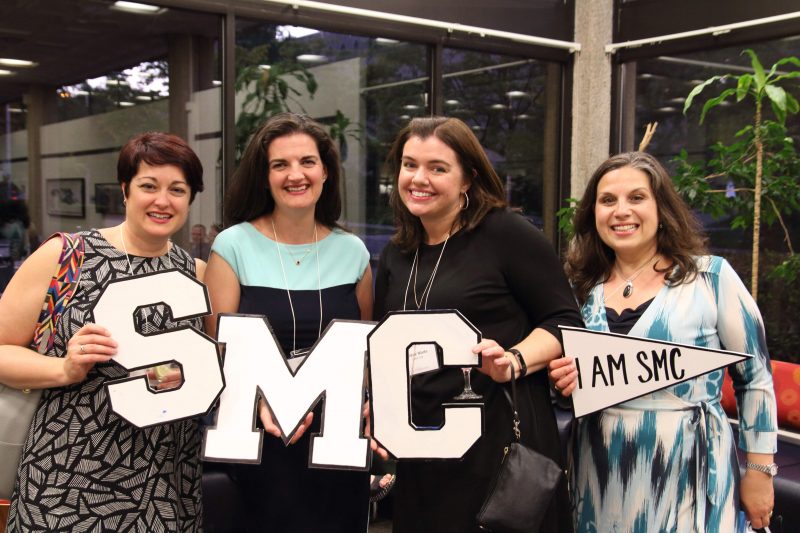
We have experienced a connection disruption. I’ve spent the better part of the last 20 years living in the west of Ireland, soaking up the sea and scenery. My trips to Canada were very frequent, and meeting fellow St Mike’s alumni always factored into my plans. When I attended my 20th reunion, I gathered with the lifelong friends I met at Loretto College. In fact, I stayed at Loretto—what a treat! Things change, things stay the same.
In March 2020, my husband Morgan and I made a spur-of-the-moment decision to fly to Canada on the cusp of lockdown. We packed up our two young kids for a travel adventure. We thought it might last a few weeks. We stayed for four months. Connection took on a different meaning during this time. I connected. I reconnected. I re-evaluated the meaning of connection. Our windows looked out to the snow of winter, and, eventually, the scorching hot summer. Our screens offered us another window onto the world.
Once we settled back at home in the summer of 2020, I knew my experience of connection was in transition. I knew my finished manuscript needed a serious rewrite. I conducted more Zoom interviews and research. The series of lockdowns in Ireland—which included a limit of travel to a five-kilometer radius from home—meant my ability to study alumni connection was entirely virtual.
What I witnessed and participated in was the ability to connect from anywhere and any time. I had the pleasure of meeting U of T students and St. Mike’s recent grads during this time. Time zones apart, this informal mentorship was as beneficial to me as to them as they navigate their future careers. The best part was that, this time, from my rural home on County Donegal, I wasn’t the only one relying on screens. The world’s window for connection was online.
In the opening of my book, The Alumni Way: Building Lifelong Value from Your University Investment I present this premise: we are all connected. It’s the word alumni that connects us. There is a democratization of alumni connection that has happened over the past two years. We can connect because of a shared place. We are all members of the St. Mike’s community, for instance. What’s powerful is this virtual connection despite our distance, our caring responsibilities, our backgrounds, our circumstances.
I spent months pouring over alumni connection to complete my final manuscript of The Alumni Way. During this process, I realized that I could link back to St. Mike’s in a way I never thought possible before. Like the serendipitous moments I note in my book, there was a call for new board members for the Alumni Association. Up until now, distance was always the barrier. Now, I knew the lockdown that was keeping us apart was also bringing us together. I took the leap.
Fast forward, and I am delighted and honoured to take on the role as Interim Chair of the Alumni Association Board. For many years, I read my St. Michael’s alumni magazine in front of a roaring turf fire thousands of miles away. I admired the energy Andy Lubinsky 7T9 brought to his leadership of the Alumni Association Board.
Now, I am excited that I can participate and connect on a level playing field. During our meetings, we are all squares on the Zoom screen. This is not to discount the importance of place. We all can appreciate sights and sounds of being on the St. Mike’s campus, especially with trees ablaze with colour and the new students ablaze with a hopeful future. I can’t wait for my next visit.
The future of alumni connection is one where each one of us in the St. Mike’s community feels, despite our busy lives, our commitments, our day to day, that we can reconnect to place and peopIe. Alumni—graduates, former students, former and current staff and faculty, religious communities— can diffuse their life experience to every corner of the College. We can derive benefit too; we can reconnect to old friends and create new ones. We can enrich our lives with learning and insight the College offers through its teaching, research, service to community, and alumni accomplishments.
Following the St. Mike’s Alumni Reunion event in May 2021, my kids are devouring the Neil Flambe Capers series of books by Kevin Sylvester (SMC 8T9). My dad Victor (SMC 6T6) is regularly attending St. Mike’s events online. I connect almost daily with my Loretto 9T8 friends. Aren Mnatzakanian (SMC 1T9) and I organized virtual U of T in Ireland alumni events. Sara Franca (SMC 0T1) recently introduced me to new contacts valuable to my Irish network. I worked with Diana Paolone (SMC 1T7), who shares my time zone and passion for alumni networks. These lifelong connections do not leave us if we are open to their potential.
I appeal to current St. Mike’s students: Don’t discount the power of your alumni connection. Don’t grab your degree and go. Immerse yourself in the experience. Make a point to build your network starting with classmates, fellow commuters, roommates, professors, staff members. Expand your outreach to the alumni community too. We are a friendly bunch. You are—and will be—connected for St. Mike’s for life.
To everyone: I hope you emerge from this pandemic better connected and yearning better connection. Consider St. Mike’s as a place you can begin your reconnection. I look forward to meeting you at the next alumni event, strolling by Brennan Hall or Kelly Library and online!
Read other InsightOut posts.
Sonal Castelino, xmcj is the Director of Campus Ministry at the University of St. Michael’s College.
An open door, a standing invitation
Belonging | Curiosity | Joy | Faith| Encounter | Connections | Festivals | Art | Rituals | Culture| Friendship | Justice | Openness | Wholeness | Integrity | Good News | Silence| Searching | Worship | Advocacy| Conversion | Grace | Dialogue | Community| Hope | Engagement | Mercy | Space | Love | Service | Listening | Safe | Vocation | Mentors | Liturgy | Truth | Home| Diversity | Challenging | Prayer| Life | Exploration | Beauty| Peace | Food | Tradition | Architecture | Growth | Laughter | Conversation | Kindness | Celebration | Experience | Leadership | Journey | Compassion | Change | Novelty | Goodness | Conversation
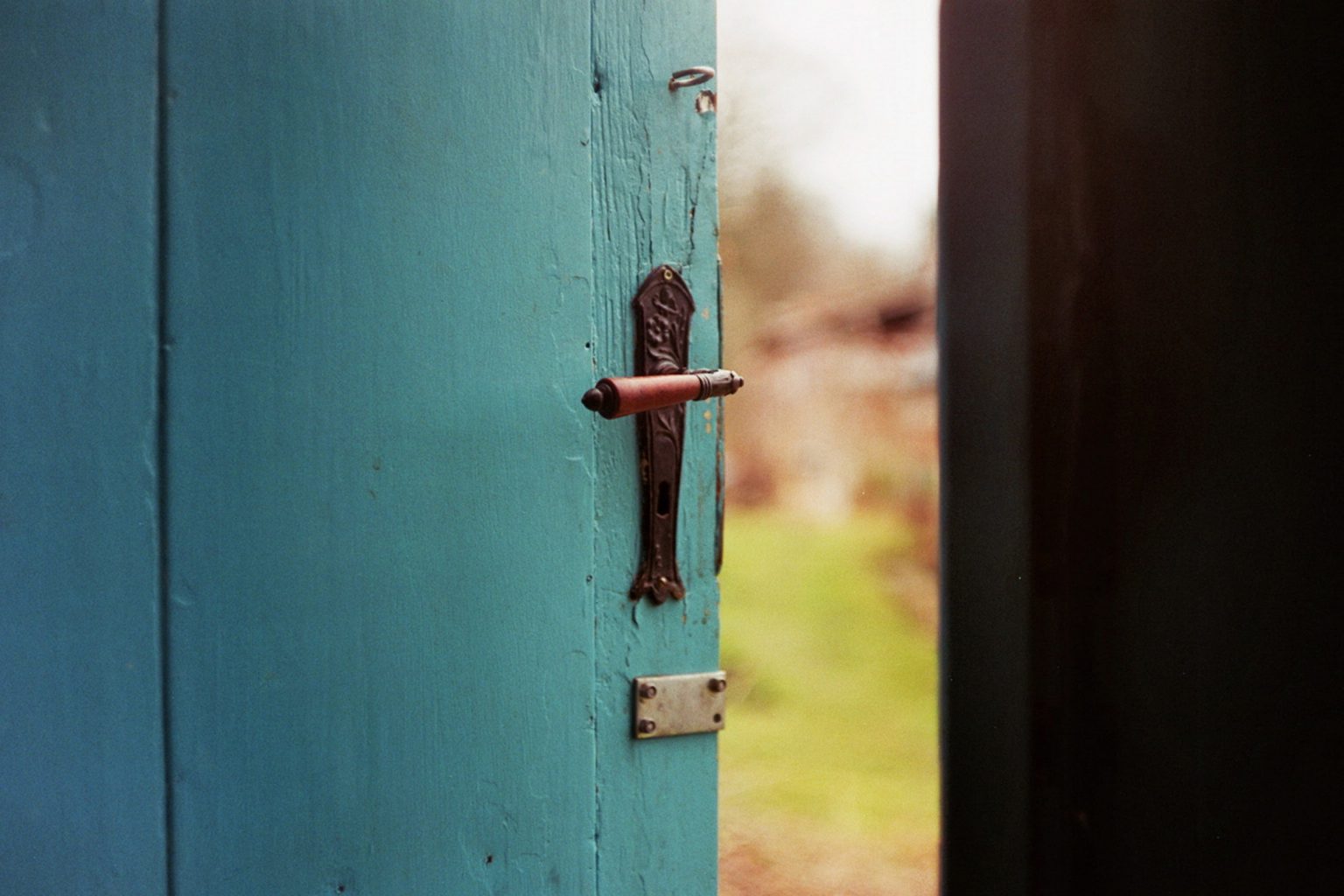
This random series of words comes from you! Well, some of you, with whom I have had the pleasure of meeting in the past six weeks, when we spoke of the place or the role Campus Ministry has played—or you would like to see play—in your life.
This list is by no means exhaustive but, at an initial look, shows the diversity of needs and expectations. Most of these words are relational and not solitary. I see a desire for community, a need to share, a want to be accompanied, a space where dreaming is possible.
I am honoured to be in this office and to witness clubs, discussion circles, associations, and friendships trying to create these spaces—spaces which seek to find life, growth, wholeness. I am here to support you to continue and for those who struggle to find this, to aid you in your searching.
Who am I?
I am Sonal, Director of Campus Ministry here at the University of St. Michael’s College. I was born and raised in the United Arab Emirates to immigrant parents. I was 18 years old when I moved to Canada—Mississauga, ON—for university. I arrived on campus, my new home away from home, in search of community, and was quickly able to find it through Residence Life and Campus Ministry. These supports gave me the courage needed to live new experiences, meet interesting people, and form meaningful friendships.
Life on campus enabled me to become more active in my faith and more curious about my place in the world, my relationship with God, my relationship to those around me. I wanted to find words to describe and name the interior movements going on within me—to be able to articulate my faith in an intelligible and accurate way while desiring to more deeply encounter this God who remains a mystery.
This turned me towards the study of theology. My hopes were twofold: to want to put my gifts to the service of young adults—especially on university campuses (I just love campus culture!) and to find a community of faith where I can plant roots, be challenged, grow and flourish, while enabling the community to do the same.
Through my studies and involvement in campus life, I found multiple support outlets—faith-based and secular; Christian and non-Christian; intellectual and service-oriented.
These outlets challenged me, encouraging me to grow and to move beyond my comfort level while also teaching me to be more comfortable and confident of myself. These experiences shaped me to allow myself to be touched by the hope and the hurt of the world and to work and pray as a response.
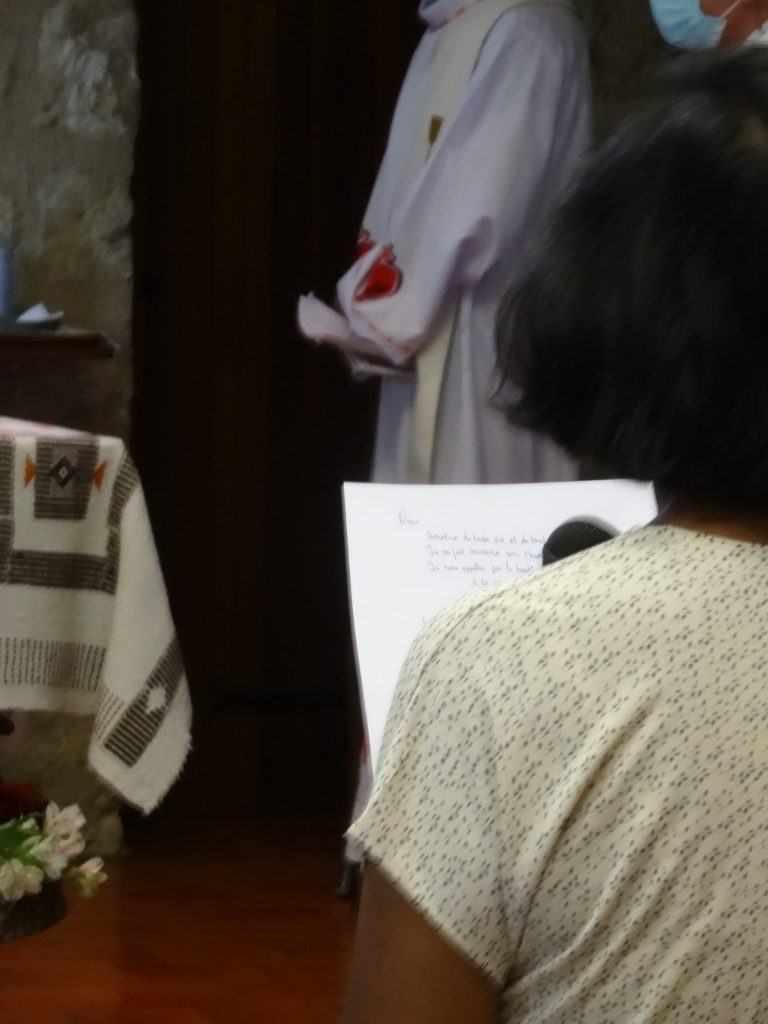
This interwoven spiritual, personal, and, eventually, professional journey (I worked in Campus Ministry at the Newman Centre and in Student Life at Regis College) pushed me to take another step—one of engagement, commitment in a more formal sense—religious life.
This summer, after three years of initial formation, I made temporary vows of chastity, poverty, and obedience with a religious congregation—La Xaviere Missionnaire du Christ Jesus (the Xaviere sisters), as a visible response to a personal desire, the desire being to be available to encounter God in my everyday life and to be a channel, enabling those around me to be open to encountering the mystery of God within themselves and in those around them.
This is my hope for Campus Ministry here at St. Mike’s as well! The list of words on top is beyond a to-do list. It is proof of life that is already flourishing and I hope that continues.
I wanted to share part of my story with you to invite you to reflect on your own experiences on campus, your story here at St. Mike’s—the joyful and the painful pieces, because they add up to make you!
I want to continue this conversation with you—hear of your story, how faith has been a part of it or not. My office is always open in Brennan Hall, Room 101. Drop by; I would love to meet you!
Read other InsightOut posts.
Ann Keating has had a varied career as a lawyer, as Director of Community Ministry for the Anglican Diocese of Toronto, and as Pastoral Consultant for the Catholic Children’s Aid Society of Toronto, from which she retired in 2017. A lifelong learner, Ann also studied theology and psychotherapy.
A Very Special Hoikety Choik
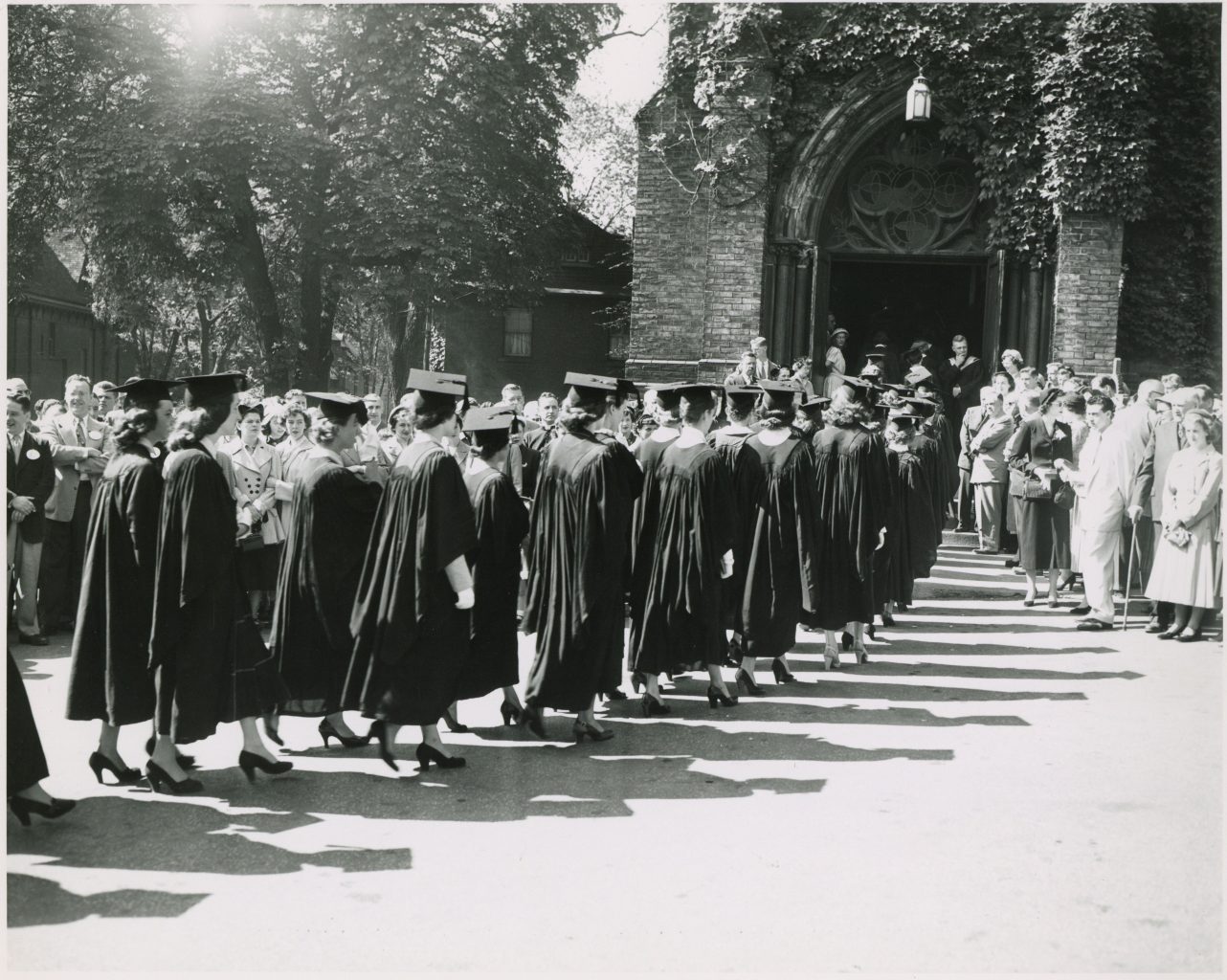
Dear Students of the University of St. Michael’s College,
Of all the things you value from your time at St. Mike’s, you might never expect that 72 years after you graduate, one of the things you will be grateful for, as I am, is that you learned the St. Mike’s cheer, Hoikety Choik. Let me explain…
My 93-year-old mom, Mary Jean O’Shaughnessy Keating, is a 1949 graduate of St. Michael’s College. She was diagnosed with dementia and now lives in Sault Ste. Marie, Ontario, lovingly cared for by her carers. She can’t remember my name. I, her daughter, am a 1976 grad of St. Mike’s and I live in southern Ontario. Over the past few years, as my mother’s dementia deepened, I began to sing with her on our regular Skype calls. I wondered whether she might remember Hoikety Choik and I decided to try it. To my astonishment, as I began the chant in one of our calls, she joined right in.
To my utter delight, unconscious of the loss of her memory, mom sang along with her own version of the cheer: “Ripperty rapperty ripperty rapperty, hee-hee-hee!” When we speak by Skype we often end with a rousing—and usually new—version of Hoikety Choik. I had no idea that dementia would have me falling on the floor with laughter at my mom.
Mom loved St. Michael’s. Her older sisters, Millwood O’Shaughnessy Birch and Ruth O’Shaughnessy Moleski, preceded her. Mom was born in Cobalt, Ontario in 1928 and her dad worked at the O’Brien mine mill. As an adolescent he had moved from the Maritimes with his father to find work in the silver mines in Cobalt, forfeiting the education he hoped for to help finance their large family back in the East. All his siblings went to university except him. Amazingly, in the 1940s he insisted that his daughters as well as his sons get the opportunity he missed.
When I went to see mom one weekend I wanted to make the most of our time together, as I didn’t know when I might see her again or how her memory might deteriorate. I cuddled up with her, arm in arm on the sofa, and she reminisced about her days at St Mike’s. As we talked, I was soon with the young 20-year-old student again. She told of life at Loretto College, of dances, travelling with the debating team, studying for and writing exams, and going to Mass. She told me her mom and dad travelled by train from Cobalt when her dad was on business and they took the O’Shaughnessy girls out to dinner. They were thrilled to get dressed to the nines for a fine dinner at the Royal York Hotel.
But mom’s years at St. Mike’s also included catastrophic loss. Mom was very close to her younger brother, John O’Shaughnessy. He entered his first year at St. Mike’s in September 1948. Unfortunately, John contracted spinal meningitis that fall. He was taken to St. Joseph’s Hospital. Mom took the streetcar after classes as often as she could to see him. John was flown home to Cobalt at Christmas. Mom never saw him alive again. He died in April and was buried on April 6, her 21st birthday, the year she graduated.
One man at St. Mike’s who loved to dance asked my mother out and captured her heart: Raymond Francis Keating. My dad grew up in Weston, Ontario. His mother died in childbirth when he was six years old. He quit school in Grade Nine to go to work as a delivery boy at the A&P food store because he couldn’t afford clothes to go to school. Dad always wanted an education and he told me he prayed to the Blessed Virgin Mary regularly that he would have that opportunity. His prayers were answered when, as an RCAF war vet, he was given money for his education. He went off to St. Michael’s College, where he met mom and graduated in 1950. Mom and dad were married at St. Basil’s in 1951.
I have an alumni card at the Kelly library and whenever I was there I used to drop by the 2nd floor just to look at the picture of him with his graduating class. I grew up listening to my dad reminisce with awe about his philosophy classes at St. Mike’s, especially the one on Thomas Aquinas where he learned about the “five proofs for the existence of God.” I knew I would go to St. Mike’s, and I did, having the pleasure of being introduced to philosophy by Father Edward Synan and studying Aquinas myself.
My parents became teachers and eventually my dad became a high school principal. They were both gifted educators, teaching in Oshawa, Iroquois Falls, Cobalt and Sault Ste. Marie. Dad died in 2007.
In the 1970’s, while dad was a principal in the Sault, a young woman came into his office asking to finish her high school diploma. Because she was a year older than most high schoolers, another principal in the city had refused to allow her to enroll. Dad said, “Come on in. We can fix you up.” Fast forward 20 years to when my dad was in intensive care in Sault Ste. Marie. In walked a woman who said, “Hello Mr. Keating!” Dad asked, “Do I know you?” She said, “I was the student you helped to finish her high school diploma so that she could be a nurse—your nurse, today.” Imagine that…
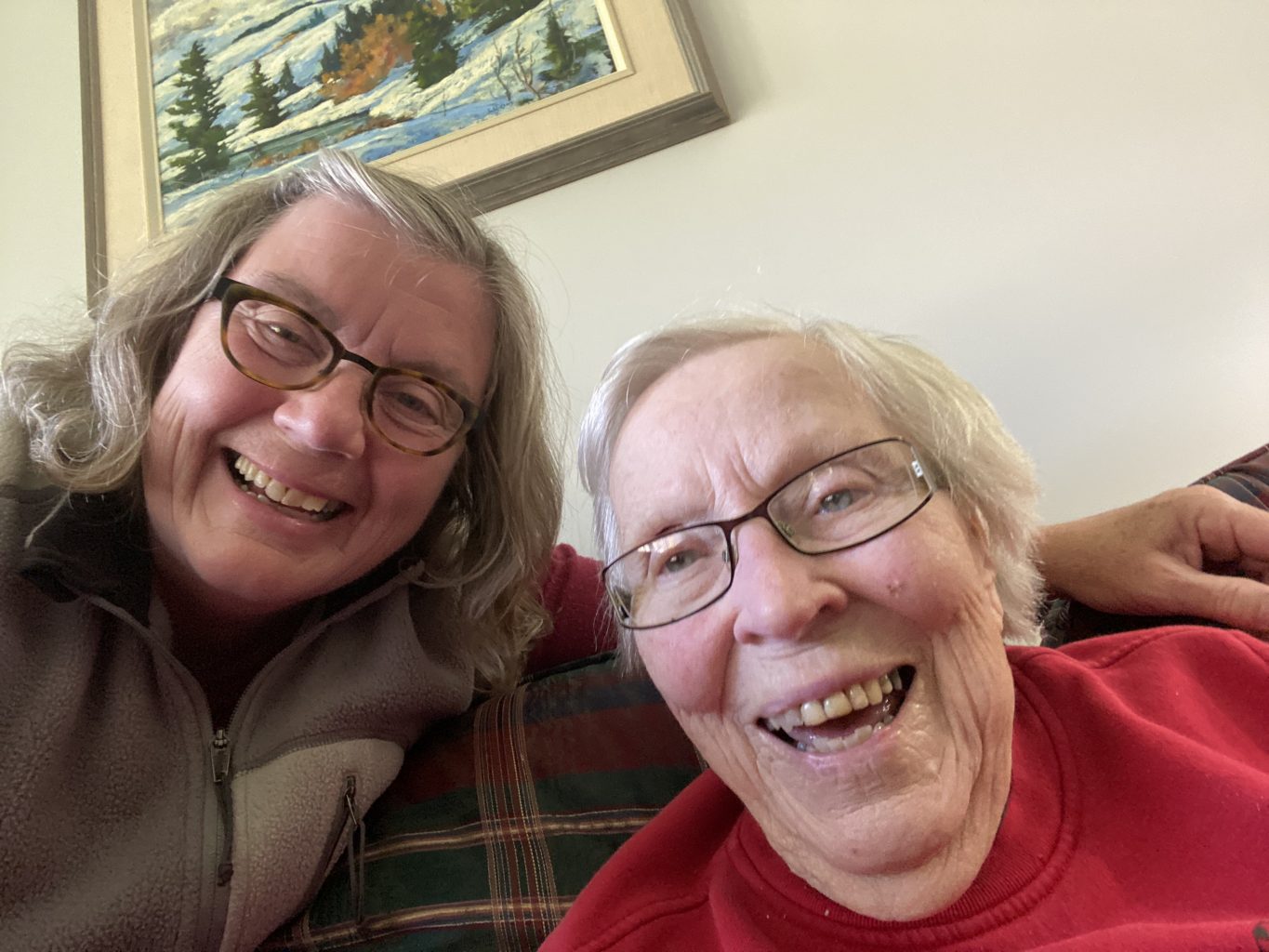
I was able to visit my mom this week after two years of Covid kept me from travelling to see her. While the bubbly Mary Jean O’Shaughnessy Keating has become a frail, 93-year-old young lady whose words are now often nonsensical, I took one look into her face to see a sparkle in her eyes and a brilliant smile that told me her spirit is very much alive. I asked Mom if she would like to sing with me for all the students at St. Michael’s—especially those of you starting off, or struggling, or missing home, or finding 2021 a tough beginning. She said, “Yes!”
On this page you will find the recording we made on my iPhone. Listen to me and my beautiful mom chanting out “Hoikety Choik!” together and to my mother’s final words: “We won. We won!”
We cheer you on.
Read other InsightOut posts.
Angelika Garvey is a fourth-year student at the University of St. Michael’s College double-majoring in Book and Media Studies and Sociology. She is currently working as a social media marketing manager and event coordinator. As an active volunteer, she helps in non-profit charity organizations, teen camps, and takes part in missionary and humanitarian type aid trips.
Falling in Love with Book and Media Studies
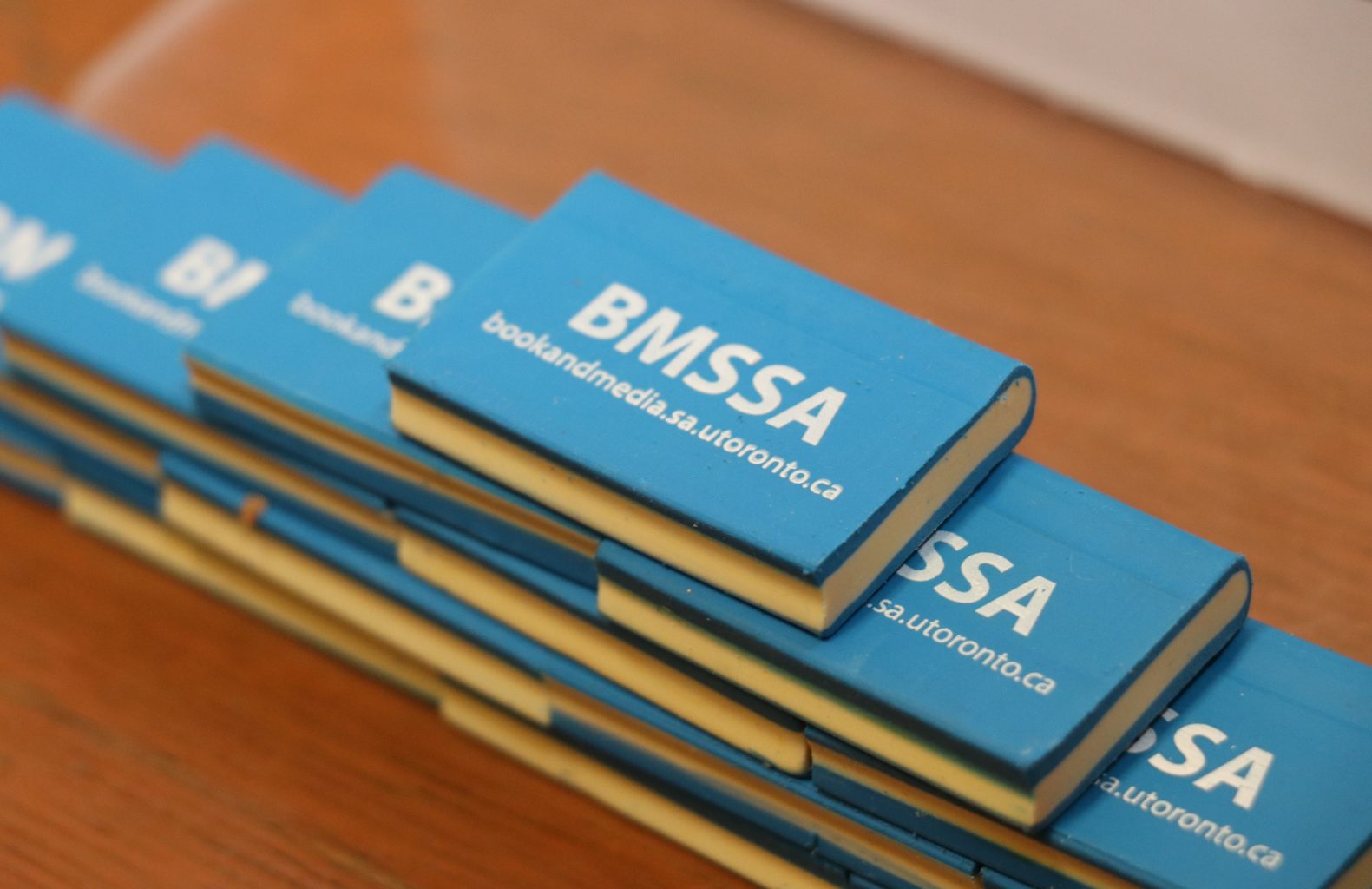
For students, no doubt the choice of the accurate academic program for the next four or so years is one of the crucial decisions in life. I’d assume that for most—well, as in the case for me—the decision of program enrollment is based on two conditions: sincere curiosity and passion for learning, plus the consideration of demand in the job field.
In the search for an ideal place for me, I spoke to advisors, graduates, and researched, researched, researched on my own. During one of the conversations, I was handed a U of T program brochure. It was then I got introduced to Book and Media Studies.
“Well, this is interesting,” I thought. “But, what is BMS even about? And how can I apply the learned knowledge in the future, particularly after graduation?”
Based on the positive feedback and insight I got from graduates of this program, I finalized my decision. But in all honesty, my main focus was in the insight behind the word “media.” Books? Not really.
While it took a few months for me to discover—or I’d say dig out—passion for literature and reading as a way of acquiring knowledge, it took just the first lecture to fall in love with the material and the way it was delivered.
I remember this day as if it were yesterday. Carr Hall of St. Mike’s. Twelve p.m. The noise of about 50 students in the class just chatting around, laughing, snacking. Some were on their phones of course, and a few were even reading.
Then, sharp on time, ten minutes before class, Professor Paolo Granata flies into the classroom with a huge smile, greeting students who were within his reach.
“Let’s explore! We are the Toronto School of Thought! Medium is the message!” It was then I thought to myself, “I have no idea what these phrases mean, but I like this.” Four years into the program and the desire of coming to the classroom and indeed, exploring, has grown. And ultimately the knowledge and experience as well, of course.
Working in the sphere of communication and marketing as a social media marketing manager and events coordinator, this program has given me a combination of both: the theoretical foundation and hands-on approach I’ve been applying in my daily work, whether it be translating publications, editing content, speaking to influencers and clients, or routinely engaging in projects.
BMS provides a variety of necessary interdisciplinary courses, including comprehension about foundations of literature, mastery of bookmaking and writing processes, deep analysis of the world’s widely recognized works put together by scholars across the globe, application of critical thinking, and technology’s role in our society.
Ongoing training and access to resources and guidance, as well as the ability to meet and connect with guests and speakers from different disciplines, are the ultimate, irreplaceable parts of this unique program.
Having professors who work in the sphere of communication and have brought an enormous impact in the field of media certainly equips and encourages students to explore the unknown and go beyond the fixed perspectives and thinking.
A course taught by a guest professor, award-winning writer and journalist Sam Tanenhaus, “Trump and the Election,” is a vivid example of how, with the use of theory and knowledge, students got to analyze media’s role in elections, the portrayal of elections to the public through different means of communication, and citizens’ reaction to it.
I mean, how cool is that? Having courses and workshops which are constantly adapted to the high speed of technological development and current phenomena in the world of journalism, and communication?
By building the empire of knowledge, students nail how to produce publications using different techniques and writing styles, with the style depending on the intention of the piece (yes, we learn about these distinctions, too).
I couldn’t agree more with the quote that Professor Granata always cites to his students: “You are the average of the five people you spend the most time with,” implying that our social learning surroundings shape us as individuals. And St. Mike’s is the right, growing environment of connection, where students get to exchange skills and knowledge and build a friendly community.
If I could give one piece of advice to students who are willing to pursue the broad and thriving journey of communication studies, I would probably emphasize that, to get to the unfamiliar, we’ve got to nail the basics. The willingness to learn, ask questions, experiment, go beyond the fixed perspectives, takes us way farther down the road than we can even imagine. And it is indeed a worthy journey that will pay off, literally, too. Critical and creative thinking, strong analysis, reading, writing, and communication skills are the crucial work ethics of the modern day.
Read other InsightOut posts.
Laurie Morris is Communications Director at the University of St. Michael’s College. She holds a B.A. in English from U of T and a certificate in Corporate Social Responsibility from St. Michael’s. Laurie lived in New York from 1998 until 2014.
Twenty Years Since that Terrible Rainy Day
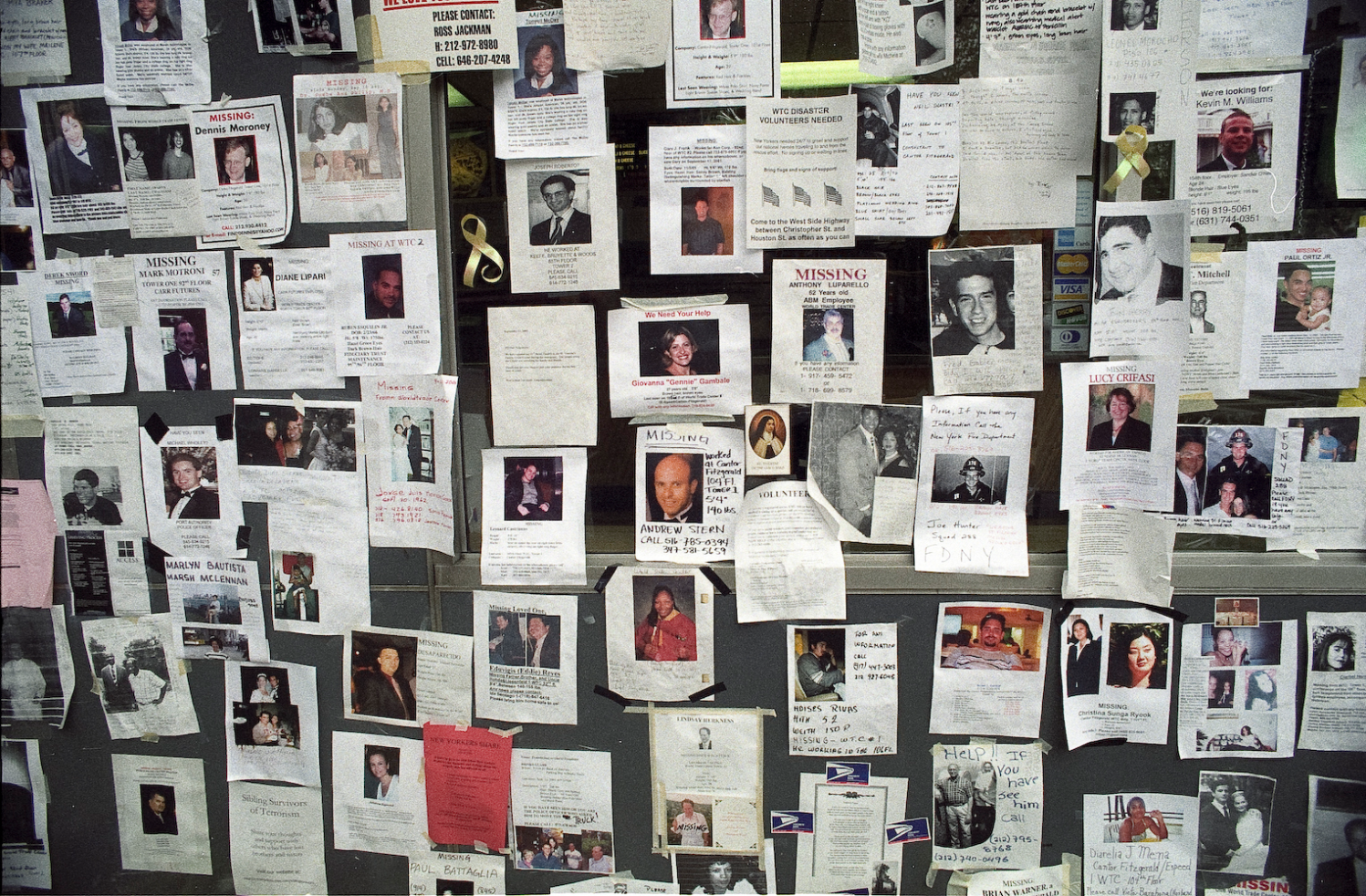
Saturday, September 11 marked 20 years since the terror attacks on the World Trade Centre in Manhattan. Living at that time in the West Village and working for the Associated Press (AP), I was a first-hand witness to the devastating story as it unfolded.
I’m also someone who didn’t know anyone who died or lost someone that day. But even 20 years later I remember small details that bring back a feeling of loss.
There were obvious losses that Tuesday. I heard the first plane hit the Towers as I was leaving my apartment to catch the subway to Rockefeller Center where the AP office was located. I thought it was a huge car crash and glanced down Hudson St. but saw nothing. By the time I got to the subway station at 6th Avenue, people were standing in the street. I joined them, again looking for the crash I’d heard minutes earlier. It was only when I looked up instead of down that I saw flames coming out of the World Trade Centre. I knew enough to call my dad to share the news with my family, and to let them know I was well out of harm’s way.
Inside the offices at AP, we watched the breaking news “A-wire” stories tracking missing planes while the local news wire ran reports of ambulances with body bags being stationed along the West Side highway. At the same time, like everyone else, we watched events play out on television, complete with audio from phone calls made by people from inside the towers.
As unbelievable as it may seem, when the first tower fell, I felt a slight wave of relief. The unimaginable had happened, signaling that the worst was over. We didn’t know what we didn’t know.
After the second tower fell, we were told to evacuate our building since it was unclear if there were other landmark buildings that might be targets. The journalists on the news floor stayed put. I walked a long, hot 60 blocks home, crossing through an eerily empty Times Square where the jumbo screens were filled by fires and the smouldering wreckage.
Closer to home, people started gathering at St. Vincent’s Hospital to post photos and photocopies of those who had gone missing.
Over the next 48 hours, there were enough posters to fill an entire brick wall outside the hospital. And in the details on those posters, there was a deep sense of loss—the clothes people were wearing, the company they worked for or the WTC floor they worked on, the time of last contact or sighting—and the best number to call when they were found or identified. There still seemed to be possibility.
On Friday, September 14, it was no longer sunny and hot in New York. I remember waking up to the sound of pouring rain and flipping on the news to see the latest from Ground Zero. The rain was good for the fires, which continued to burn, but for me, it evoked a sense of loss that was beyond any I’d felt to that point. The shock and adrenaline brought on by the crisis was waning and the magnitude of the tragedy was settling in. Three days since the attacks, there was no longer possibility.
Tuesday, September 14, 2021 marks 20 years since that terrible rainy day. My heart still goes out to people I never knew—the first responders, the family and friends of the 2,977 people who died and the many others around the world who experienced their own sense of loss.
Read other InsightOut posts.
This past week, we were thrilled to welcome the class of 2025 to the St. Mike’s community. Orientation felt even more special this year because students were able to safely attend many events in person, on campus. Enjoy these photos of Orientation 2021 by St. Mike’s student Isabel Padolina.
Read other InsightOut posts.
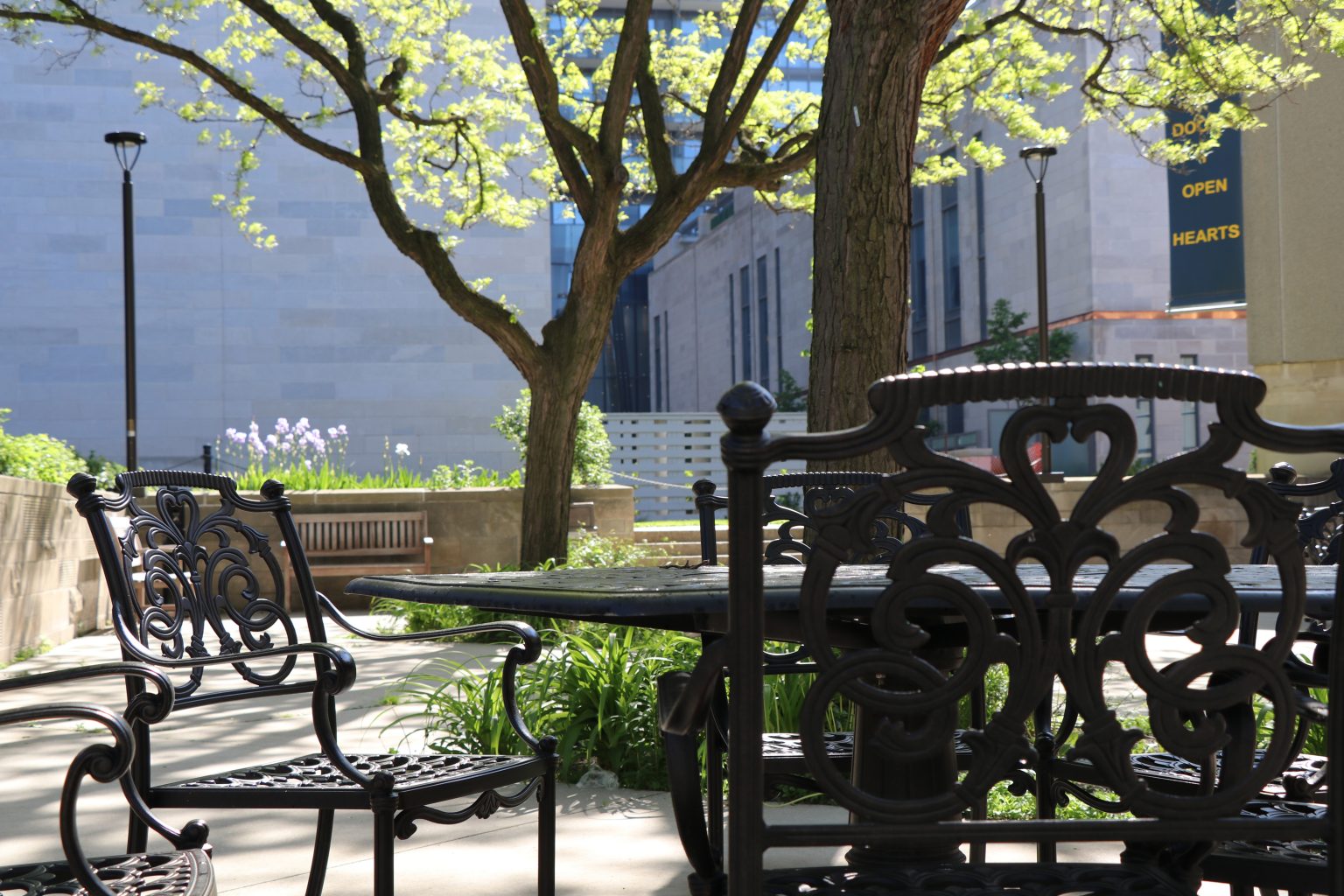
Summer is usually a quieter season at St. Mike’s.
After the rush of exams and joy of convocation, summer is something of a breather. The pace on campus becomes more relaxed. Emails slow down a little. Bumblebees and squirrels make their rounds between the flowers and trees, in no particular hurry.
Faculty and students alike can read at the tables outside Kelly Library, not needing to choose between studying and enjoying the beautiful weather.
This summer, though, has been quieter than usual.
The University remains an oasis in the city, despite the pause in activity. Staff on campus have been noting the thriving flora and fauna.
Advancement Associate Betty Noakes, who often documents her weekly trips to the St. Mike’s campus with lovely photos, shared these images of flowers basking in the sunlight.
Physical Plant Coordinator and avid birder Angela MacAloney-Mueller spotted a monarch caterpillar enjoying the milkweed in front of Brennan Hall.
And there are more signs of renewal.
We welcomed new faces to the St. Michael’s community just as we’re getting ready for the community’s safe return to campus.
Sonal Castelino became the University’s new Director of Campus Ministry, Father Andrew Summerson joined St. Michael’s Faculty of Theology as Assistant Professor of Greek Patristics, and St. Mike’s welcomed two postdoctoral fellows and grew by an entire new junior fellowship program.
We can’t wait to see how they will enrich academic and spiritual life at St. Mike’s.
Orientation Week for the Class of 2025 is about to begin, this year featuring a mix of online and in-person programming. Kelly is opening its doors for in-person services in less than two weeks.
The Facilities team is hard at work finalizing the renovations, installations, and processes that will ensure everyone’s safety.
There’s a familiar, not at all quiet energy all across campus. We look forward to welcoming you back very, very soon.
Read other InsightOut posts.
Ren Manalo is a fourth-year student at the University of St. Michael’s College majoring in Genome Biology and double-minoring in Anthropology and Mediaeval Studies. She was part of the inaugural class of the Boyle Seminar in Scripts and Stories and is serving as Co-President of the Mediaeval Studies Undergraduate Society. She is currently writing her Senior Essay on the inception of the Black Death in mediaeval Europe.
Chronic Curiosity and the Timelessness of Mediaeval Studies
I like to think of myself as “chronically curious.” It sounds better than “indecisive.” Though perhaps I have my indecisiveness to thank for getting me to where I am today.
I remember furiously typing backstage during the dress rehearsal of my high school’s spring play, still wearing the itchy wig that I had to fight to keep on while performing. I can’t recall exactly what drew me to the Boyle Seminar (I had intended to pursue a career in pharmacology, after all), though my general interest in history and the promise of a trip to Ireland were likely compelling factors.
Whatever the case, there I was, frantically filling in an application for the SMC One course. I never would’ve admitted it back then, but I was only half-certain of my intention to seek a strictly scientific profession, but then again a strictly artistic one would also be questioned. I simply had too many interests, trying everything on a whim just to fall in love with it all, and could not streamline them into one field. Of course, that was until I found mediaeval studies–otherwise, I’d probably be wearing more itchy wigs.
I can pinpoint the exact moment during the seminar when I became captivated by the subject. An offshoot of a tangent (the professors’ tangents were often as entertaining as the actual course material) had us discussing a mediaeval female skeleton with lapis lazuli found in her teeth, tying together the subjects of bioarchaeology, gender studies, paleography, and codicology. It was then that the gears began to spin and I dove deeper into mediaeval studies, finding a treasure trove of interdisciplinary interests. Later, after an impromptu visit to the Blackfriary Archaeological Field School in Ireland, I settled into the world of plagues and rats, allowing me to combine my interests of science and history into a neat (and rather macabre) package.
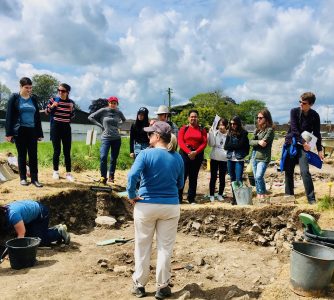
I’ve noticed that the COVID-19 pandemic sparked a growing interest in plagues and illnesses of the past, with people looking to history for advice on the present. Professor Alison More, a founding instructor of the Boyle Seminar, mentioned the revitalization of St. Corona in her own InsightOut post. She comments on how the saint, having had no previous association with plagues or illness, was now being called to intercede against a virus sharing her name. As More further elaborates with examples of St. Roche, St. Sebastian, and St. Rosalia of Palermo, the faithful repeatedly turn to saints for divine protection and guidance throughout the centuries.
Notably, for better or for worse, the prejudices, fears, and worries of the current pandemic are similar to those we have seen in the past. However, while we look to history for guidance, it’s crucial to incorporate the knowledge of the present. A course called Plagues and Peoples, which analyzed factors influencing the spread and survival of plague narratives, helped me hone the ability not only to read between the lines of a text, but out of them as well.
Essentially, the context surrounding narratives and what could have intentionally been left out reveal just as much information as what is present on the page. Ellen J. Amster has a great article detailing the persistence of prejudices and structural racism that are seemingly missing in these narratives, blinding subsequent generations to these darker aspects of history. Here, we note how the past is all but static and has the potential to be rewritten, though only as determined by those who hold the pen. Just as we have the ability to overlook these aspects, we also have the opportunity to learn from the past and change things for the better.
Perhaps the Mediaeval Studies Undergraduate Society (MSUS) has the pandemic and re-runs of Game of Thrones to thank for our numerous new members. In addition to students studying the Classics, History, and Christianity and Culture, we also have members in fields not commonly regarded as “mediaeval,” including Astrophysics, Human Biology, Ecology and Evolutionary Biology, as well as Cognitive Science. With little to no prior mediaeval studies experience, these students have taken an interest in something particular about the subject–be it language, myth, recipes, film, or music.
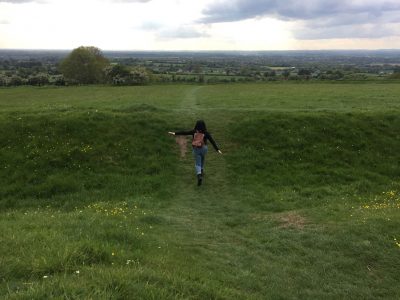
Mediaeval studies is special in that everyone can settle into their own respective niche. Gabrielle Camaoay, MSUS’ first-year representative and a fellow alumna of the Boyle Seminar, describes this rare ability, stating, “What drew me to mediaeval studies was the fact that it was so versatile, with so many subjects of study to choose from and being able to mix and match topics to your heart’s content.”
The subject of mediaeval studies is often misunderstood. I myself often have difficulty defining it. The university generalizes it as the study of the period between “roughly the fifth through the fifteenth centuries,” yet acknowledges that its “parameters are broad and boundaries are not clearly defined.” And perhaps this ambiguity is a benefit; the period is so varied and resilient that everyone can find common ground somewhere.
We become engrossed by the mediaeval world because we can see parts of ourselves in it, and we study it with the end goal of bridging the gap between the centuries by determining exactly how the past has helped shape the present.
So is it so wrong to live in the past? To be enamoured with what once was? I’d like to think not. There’s still so much left to learn, and with emerging technologies becoming more readily available, the possibilities for new discoveries are endless.
The past is alive. History is alive. It’s dynamic, eye-opening, and rapidly expanding. The Middle Ages are revived with each set of eyes laid on the folio of a manuscript, and every time a mediaeval fable is retold. Likewise, we can feel the mediaeval world within the classrooms of the University of St. Michael’s College, witnessing how it is renewed by the chronically curious students who breathe life into it.
Works Referenced
Radini, A, M Tromp, A Beach, E Tong, C Speller, M McCormick, J V Dudgeon, et al. 2019. “Medieval Women’s Early Involvement in Manuscript Production Suggested by Lapis Lazuli Identification in Dental Calculus.” Science Advances 5 (1): eaau7126–eaau7126. https://doi.org/10.1126/sciadv.aau7126
Read other InsightOut posts.
Mary E. Hess is Professor of Educational Leadership at Luther Seminary in St. Paul, MN. During the 2016-2017 academic year she held the Patrick and Barbara Keenan Visiting Chair in Religious Education at the University of St. Michael’s College, in the University of Toronto. Her most recent book, co-authored with Stephen S. Brookfield, is Becoming a White Antiracist: A Practical Guide for Educators, Leaders, and Activists (Stylus Publications, 2021).
Living into the Light
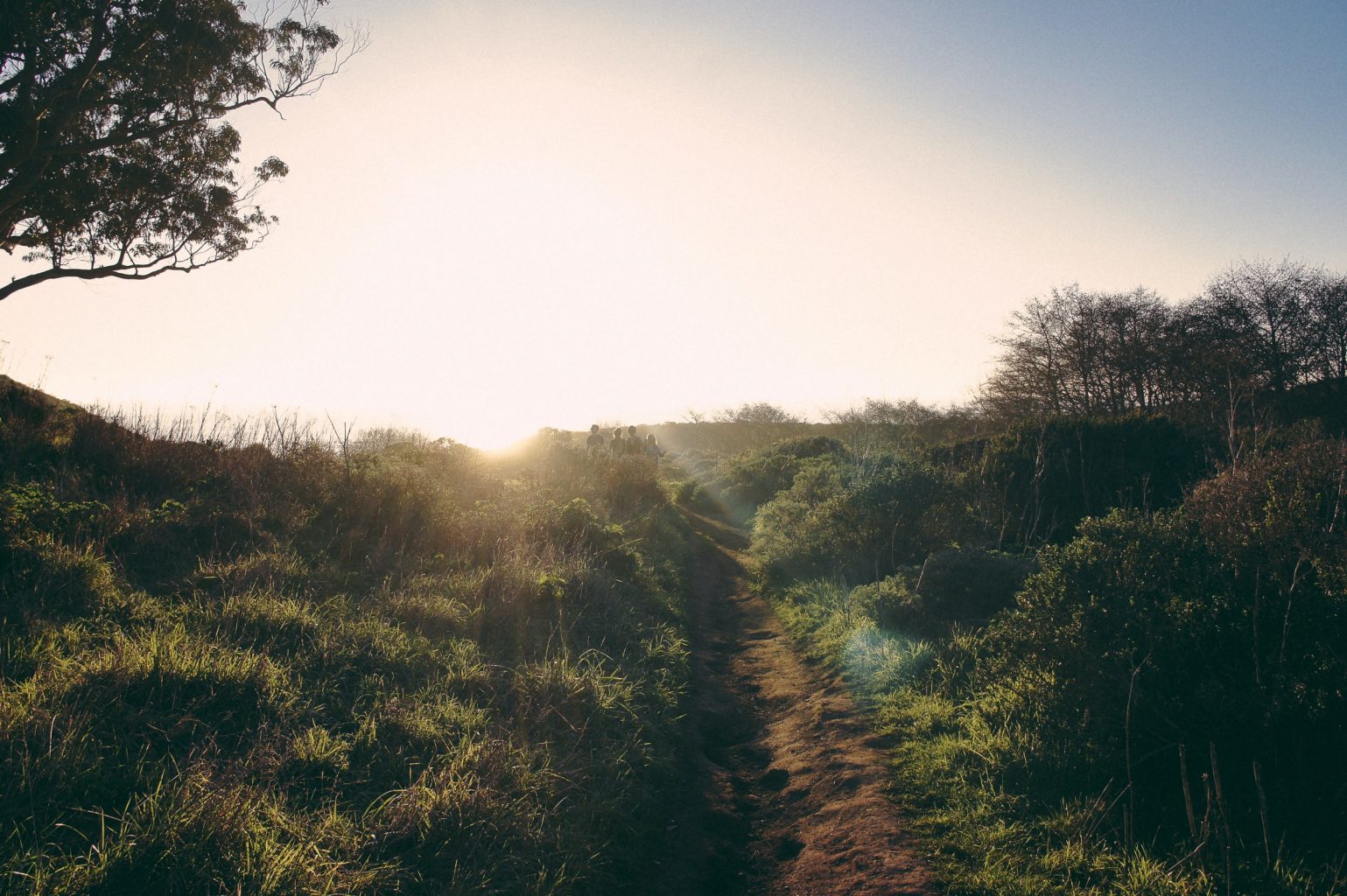
I’ve lived in St. Paul, Minnesota for more than two decades. St. Paul is a deeply Catholic city, and I live in a parochial space that has a vibrant K12 school, as well as many, many Catholic organizations which have long been active.
The last five years, however, have been a time of great urgency and anguish, as those of us who are white and middle class have finally begun to listen deeply to our neighbors who do not resemble us. The world joined us in that listening in May of 2020, when a video recording of George Floyd being murdered in the city next door to us, by a Minneapolis police officer, was shared around the globe.
That new awareness brought along with it a deep recognition of how blindly we—and here I mean to speak only of my white and middle-class neighbors—how blindly we accepted the dominant stories of a zero-sum world in which racism was only a personal attitude, and justice meant being “color blind.” I share that now, to offer context for the rest of what I want to say here.
Pope Francis wrote in Laudato ‘Si that a key conviction of our faith is that we have: “an awareness that each creature reflects something of God and has a message to convey to us, and the security that Christ has taken unto himself this material world and now, risen, is intimately present to each being, surrounding it with his affection and penetrating it with his light (221)”.
What can it mean to live into that awareness and that light—in all the rich meanings of those words? And how might persons who look white, and thus benefit from racialization, participate deeply in the kind of communion to which our faith witnesses?
I have come to believe that doing so requires being actively involved with learning how to dismantle racism, learning what it means to inhabit an anti-racist stance in the world. I don’t think this is a place I can ever fully come to, a stance that I ever fully achieve, but rather it is something into which I am always growing, always seeking, always yearning towards, always becoming.
Much of the learning I have done in the past decades in this journey has to do with recognizing a few key insights.
First, whether I want to or not, whether I understand this or not, whether I choose to draw on it or not, I live within a world defined by white privilege. That doesn’t mean that various other aspects of who I am might not be challenged or oppressed, but it means that my whiteness prevents me from seeing, from experiencing, much of what my neighbors who do not resemble me, live with in daily ways. Rather than seeking to deny that I participate in racism, I need to stop, take a deep breath, and learn what that means. A really good book that spells this out is Heather McGhee’s Sum of Us: What Racism Costs Everyone and How We Can Prosper Together. While her book was written in the US context, I believe it has resonance for the broader North American continent.
Second, doing this work never ends, and I have grown to understand that as a white person, I have two choices: I can do it imperfectly, or not at all. And so I choose to try, and to realize that I will often fall down, mess up, make mistakes, and need to start again. Here is where my faith is a crucial resource, because I have learned what it means to repent, to seek forgiveness, to accept God’s grace, and to take the next step. There is much to lament about how the Catholic hierarchy has engaged with racism, but there is also much to draw upon—and here the many documents, sermons, hymns, and catechetical resources offer us so much! I start with the work of theologians Fr. Bryan Massengale and Dr. Shawn Copeland, but many dioceses have also put together excellent materials.
Third, this is collective, systemic work. It is never only personal and individual. Here again, my faith sustains me because it invites me to see all of the many ways in which human brokenness—human sin—puts stumbling blocks in my path. Yet it also invites me to see all of the ways in which God has created us in deep interdependence. We are created for each other; we are drawn into relationship. When one hurts, we all hurt. We need to be open to seeing and hearing and feeling that hurt. There is deep wisdom in our tradition, wisdom forged through centuries of pain and anguish, wisdom that invites us into lament, and from lament into remembering whose we are, to whom we belong. We are a communal people, and “re-membering”—putting back together the Body of Christ —that communion means that we can look to collective action, to practices that challenge systemic and structural forms of racism. Humans have created racism, and humans can deconstruct it and live into God’s light.
Fourth, breath matters. I often remind my students that we can live for many days without food, and even a day or two without water, but we cannot live for even 10 minutes without breath. In an era in which “I can’t breathe” resonates not only due to police brutality, but also through a COVID-19 pandemic, and in the midst of climate catastrophe, remembering to breathe, to slow down, to feel God’s love in our lives in the midst of trauma – that is an essential practice. It is also an ancient form of contemplative prayer. Whenever I feel particularly anxious or defensive or even despairing, I stop, I slow down my breath, and I pray this short prayer based on one verse from Psalm 46: “Be still and know that I am God (inhale/exhale slowly), Be still and know that I am (inhale/exhale slowly), Be still and know (inhale/exhale slowly), Be still (inhale/exhale slowly), Be.”
Fifth, and finally (at least for this moment), learning to be anti-racist as a person who looks white means leaning into relationships of accountability. To whom am I looking for leadership? Am I hearing the voices of communities which have been oppressed? One of the glimpses of hope I draw, as a US person, from the Canadian context, is that acknowledging the painful history of residential schools can open up new avenues of relationship and hope. Here in Minnesota we have a Lieutenant Governor who is a member of the White Earth Band of Ojibwe, and she is leading us in the hard work of truth and reconciliation. I draw comfort from the years long work of Canada’s TRC, and I try to live in a posture of learning and humility. I have been startled by how energizing and hope-filled that work can be, even in the midst of the deep pain and anguish to which I need to be present.
I return, now, to the reminder from Pope Francis with which I began, that a key conviction of our faith is: “an awareness that each creature reflects something of God and has a message to convey to us, and the security that Christ has taken unto himself this material world and now, risen, is intimately present to each being, surrounding it with his affection and penetrating it with his light (221)”.
May Christ’s light continue to illumine our anguish, and draw us ever more deeply into God’s love.
Read other InsightOut posts.
Dr. Hilda P. Koster is an Associate Professor of Theology and Director of the Elliott Allen Institute for Theology and Ecology.
Of Heatwaves, Floods and Climate Change—Our Kairos Moment
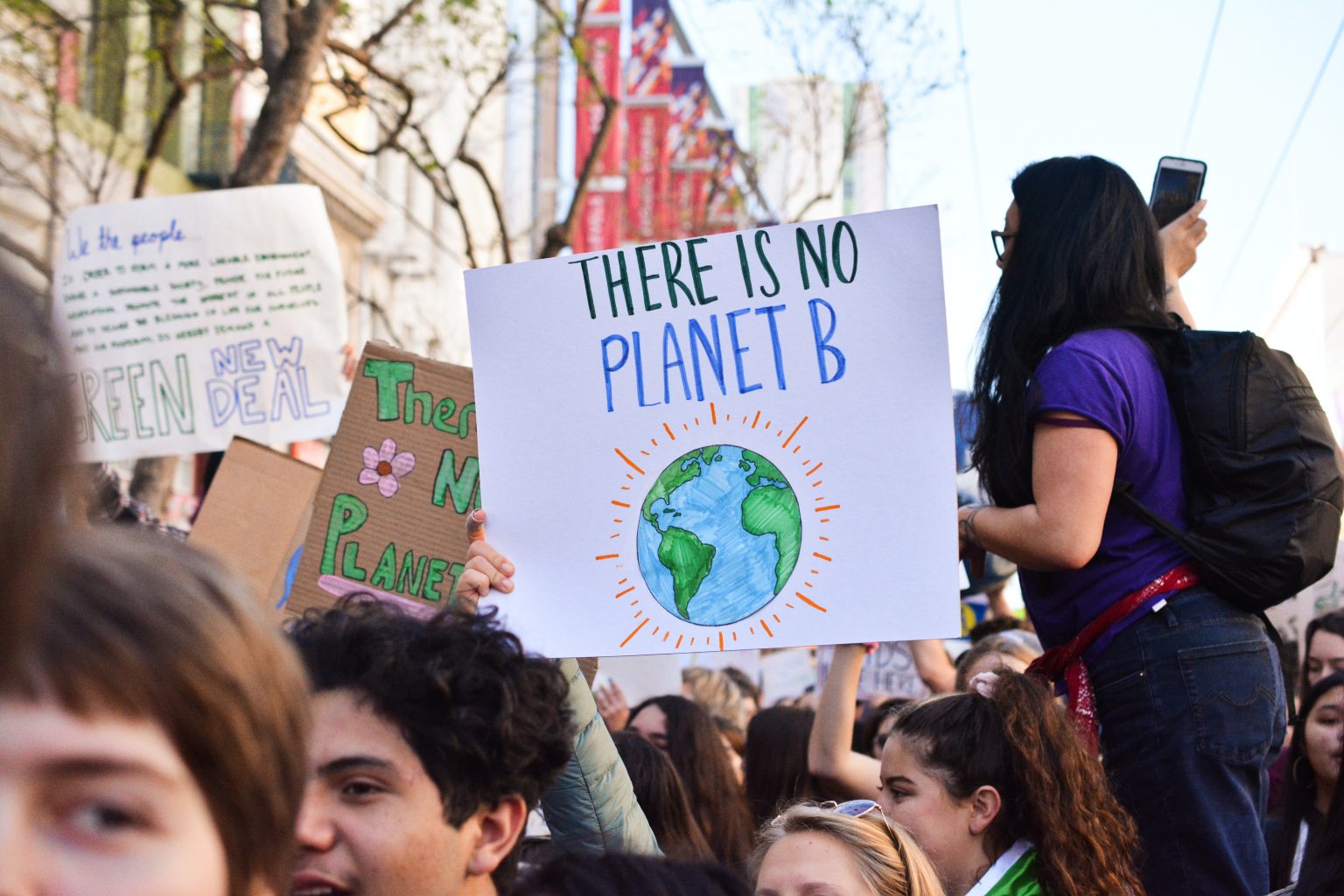
What could have been a summer of cautious optimism about life post COVID-19 has unfortunately become a summer filled with climate change-related horrors. Wildfires due to the record-breaking temperatures and a prolonged drought in the Pacific Northwest took human life and destroyed homes. It also ravaged thousands of acres of forest and seriously endangered marine wildlife. In Northern Europe, including in my native country, The Netherlands, torrential rains caused unprecedented flooding and mudslides. In South Madagascar, off the coast of East Africa, the worst drought in four decades is driving more than a million people into famine.
While the connection between climate and weather is complex, climate scientists agree that the heat waves and rains of this past summer are clearly linked to anthropogenic changes to the climate. What has scientists alarmed, however, is not that there is a connection between extreme weather events and climate change but that these events have been so severe and prolonged. Harvard environmental policy professor John Holdren, who served as senior adviser to former U.S. President Barack Obama, observes that “[e]verything we worried about is happening, and it is all happening at the high end of projections, even faster than the previous most pessimistic estimates.” (Los Angeles Times, July 21). The world truly is running out of time and many people seem to sense this.
The Ecumenical Patriarch Bartholomew has called the climate crisis a Kairos moment for our churches and the world: “For the human race as a whole there is now a Kairos, a decisive time in our relationship with God’s creation. We will either act in time to protect life on earth from the worst consequence of human folly, or we will fail to act.” (Closing Address to Symposium on the Arctic, 2007). The Greek word Kairos means the right or opportune moment. From a theological perspective Kairos indicates that time takes on a holy urgency. Time is no longer simply linear time, stretching open towards the future. Instead, it becomes critical to act. Calling climate change a Kairos moment thus marks the present as a moment of truth and opportunity; a moment where our collective response will have far-reaching consequences.
This fall the eyes of the world are on the 26th UN Climate Change conference in Glasgow (Scotland). COP26 is meeting with the urgent task to implement the climate commitments of the 2015 Paris Climate Accord, which seek to limit the increase of the planet’s temperature to 1.5 degrees Celsius. The question before us then is whether the world community (especially the world’s wealthiest nations) can seize the moment of pandemic recovery as an opportunity to enact the necessary climate policies. For if we fail to grasp this moment and do in fact return to pre-pandemic rates of fossil fuel emission the world could be 1.5̊ Celsius hotter than it was prior to the industrial revolution as soon as 2030 and on track for much higher temperatures.
It is tempting to be skeptical about international climate conferences. After all, the world has passed many climate thresholds since the first UN climate conference in 1992. Climate change, however, is not just a political challenge; it is also a theological and spiritual one. In fact, our response to climate change touches upon the very core of Christian witness. For according to the Biblical tradition, God did not just create the world but also called it good. The Hebrew word for good, tov, means more than “good.” It implies a goodness that is life furthering, a life-generating capacity. Human induced climate change does not just go against this life-furthering capacity but is also undoing it. For those of us living in climate privileged communities, despair, resignation, or indifference are therefore not an option. Instead, we are called, in Pope Francis’ words, to an ecological conversion —that is, a change of heart in the way we look at, interact with, and behave towards the more-than human world with which we are entangled and on which we depend.
Kairos language keeps open the possibility of such an ecological conversion. It is stubbornly hopeful. In the Book of Revelation, John of Patmos sketches doomsday scenarios that eerily resemble those of our day. Yet with all its woes, Revelation does not foreclose the possibility of repentance (metanoia) and turning around. According to the New Testament scholar and eco-theologian Barbara Rossing, the catastrophes depicted by John are neither willed by God nor follow a cosmic destiny. In Revelation, God laments the state of the earth yet places the Christian community at an ethical crossroad (a Kairos moment) where it needs to choose between the polluting, death-dealing powers of Rome/Babylon or God’s New Jerusalem. While time is of the essence, John holds out the hope that the world will listen to the witnesses he so powerfully invokes towards the end of his book. It is significant, too, that Revelation ends with an attractive vision of the tree of life. There is no return to Eden, but there is a vision of what is possible. A vision rooted in the beauty and resilience of planetary life and in practices of an alternative political ecology, symbolized by the city-garden.
Many have heeded Pope Francis’ call for an ecological conversion. This September several religious communities and interfaith groups are embarking on a pilgrimage to COP26. They are visionary witnesses. Those of us outside the United Kingdom and Scotland are invited to add our own witness by walking to a special place or spot near us, posting our pictures and messages #Walkingtheland2021. Our messages will be collected and shared with delegates at COP26. In a time such as this, a time in which the world is running out of time, I invite all of you to participate in the Walking the Land project at https://www.pilgrimagefornature.com/walking-the-land and add your voice, dreams and hopes for our life together on this fragile planet.
Read other InsightOut posts.
Dr. Cynthia Cameron is the newly appointed Keenan Chair of Religious Education and Assistant Professor of Religious Education in the Faculty of Theology. Prior to coming to St. Mike’s, she taught undergraduate students at Rivier University and graduate students at Boston College and Loyola University New Orleans. Her research focuses on adolescence, particularly female adolescence, and the history and mission of Catholic schools.
Pandemic Safety and the Classroom
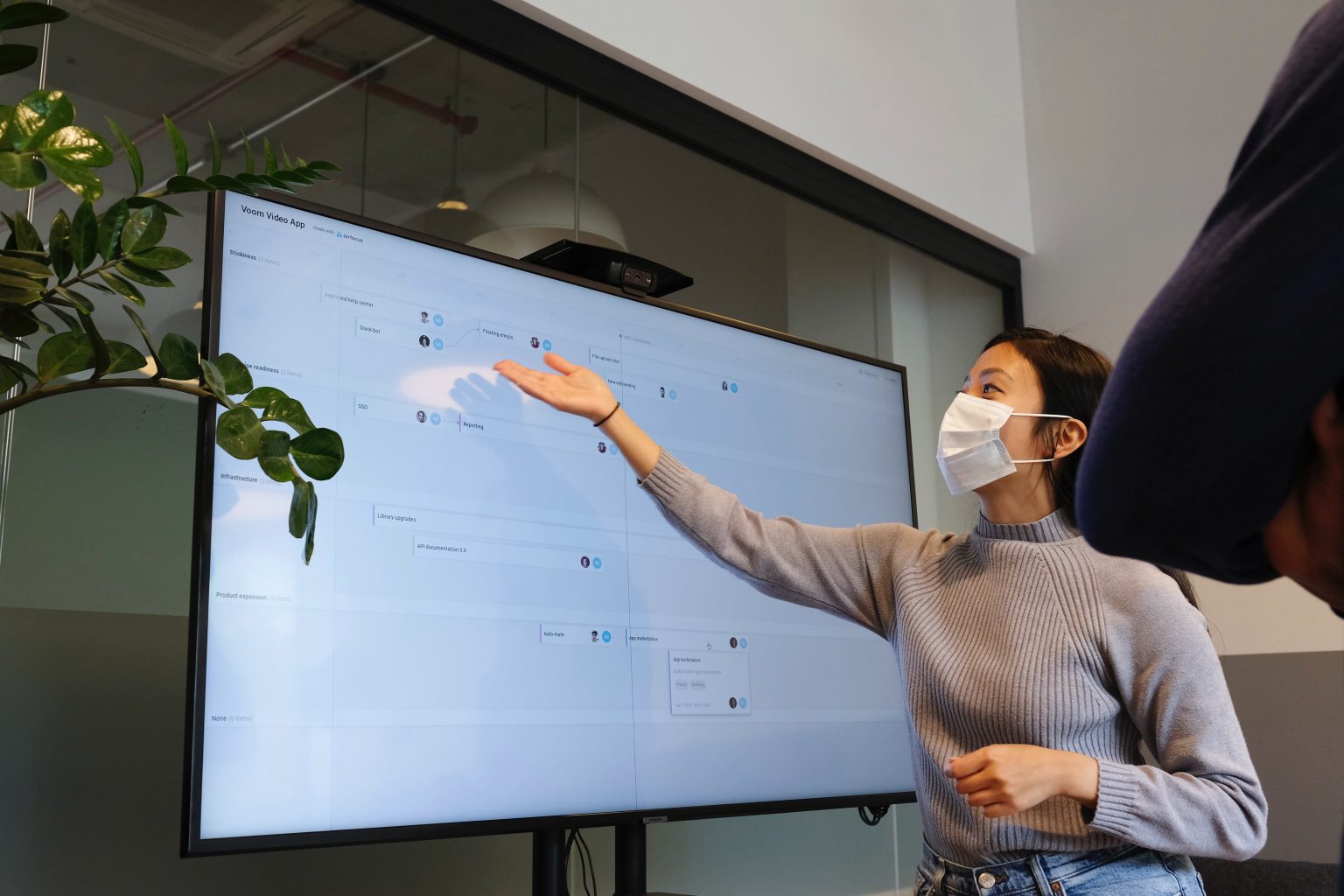
“I don’t want to see my students as threats.”
This was the anguished comment from a Catholic high school theology teacher in a graduate religious education course last summer, in the midst of the COVID-19 pandemic. We were discussing the challenges and opportunities presented by teaching during the pandemic and, in particular, the possibility of Catholic high schools returning to face-to-face instruction in the fall of 2021. This student’s entreaty struck a chord with the class.
On some level, this reflects a common problem in schools. The busyness of planning for in-person teaching leads to a tendency to treat students as pieces in a complex puzzle. The task for educators is to figure out how to arrange the pieces so that students can be in classrooms efficiently and, now, safely. A rather de-humanizing perspective on the young people in our classrooms.
But, more importantly, these teachers were reflecting on how the push to in-person instruction— often decided on without much input from the teachers themselves—made them feel unsafe. The students, as potential carriers of the coronavirus, were threats to the physical safety of teachers. At this point in the pandemic, at least in the United States, it seemed that children and adolescents contracted the virus at lower rates and tended to suffer milder cases of COVID when infected. Which was, of course, good news. However, teachers are adults and, as such, were at greater risk from the virus. And, teachers were being asked to take on this significant risk in order to teach in a face-to-face environment. All over the US, some teachers decided the risk was too great, that their students were a threat, and some even left their jobs.
For the students in my class—all dedicated, but relatively novice, Catholic high school teachers—this led to a fascinating conversation about how we think about, talk about, and treat the adolescent students in our classrooms in a time of pandemic. What happens when we think about our students as threats? How can this not change the ways that we relate to them? And how can Catholic theological anthropology guide us in resisting this kind of thinking?
Theological anthropology is the branch of theology that wonders about what it means to be a human person created by God and in relationship with God and others. This is where the Church reflects on the meaning of our humanity. The two doctrines that most often come up in contemporary Catholic theological anthropology are that we are created in God’s image and that God took on human form in the person of Jesus. The first of these doctrines—that we are created in God’s image (Genesis 2:26-27)—suggests to us that there is something about humanity that reflects the reality of the divine, that we are like God in some way, that humans reveal in some small and imperfect way what God might be like. And, importantly, since God created humanity in God’s own image, humanity is fundamentally good. The second doctrine—that God became human in Jesus (John 1:14)—also points to this fundamental goodness in humanity. For God to take on the human condition suggests that God thinks highly enough of the human condition to be concerned for humanity. In Jesus, God is telling us that humanity is taken on by God, loved by God, and saved by God. So, drawing from these two doctrines, we can be comfortable saying that humans are created by God and loved by God and that there is goodness in our humanity.
But humans have historically struggled to act as if we are fundamentally good. We don’t always treat one another and ourselves in ways that reflect our theological commitments to the fundamental goodness of humanity. And, since teachers, even Catholic school teachers, can fall into this trap just as easily as anyone else, I often ask them to reflect on this question: “Are your students basically good or basically bad? Are they good kids who occasionally mess up or are they little monsters who need to be whipped into shape?” How a teacher answers this question reveals a great deal about how they will relate to their students. And, in my experience, the vast majority of teachers view their students as fundamentally good human beings, even when they are difficult or annoying.
But, how is this positive vision of the human person disrupted when the students become unintentional threats to the lives of the teacher? How are we to maintain and live out a conviction that they are fundamentally good if we are afraid of them? Does our conviction that they are fundamentally good mean that we have to ignore the threat that they may pose?
I don’t have any answers for my student or for any of us who found ourselves fearing our fellow human beings and the risk that they posed to us simply by existing alongside of us. On the one hand, the gradual reopening of things that has accompanied increasing vaccination rates in 2021 has started to lessen the need to think of my fellow human beings as a threat to my health and safety. On the other hand, as it has done with so many other issues, the pandemic has revealed to us the ways that we fail to live up to our theological ideals. The fact that we did think of our fellow human beings as threats is a challenge to all of us to think about what it means to love our fellow human beings, who are created by and loved by God, who are fundamentally good.
Read other InsightOut posts.
Colleen Shantz is Associate Professor of New Testament and Christian Origins in the Faculty of Theology and cross-listed to the Department for the Study of Religion, University of Toronto. Her research explores the formation of Christianity in the first three centuries CE and especially the role of affect, ritual, and religious experience in the origins of Christianity. She teaches a course on the foundations of justice in the gospels, which is where she first got to know Michael Iafrate.
Between the Present and the Hoped-for Future: Reflecting on the Life of Michael J. Iafrate

Last week a memorial service was held on campus (and Zoom) for Michael J. Iafrate who died in May of this year. Michael was a doctoral student at the Faculty of Theology, beloved to friends across the continent, a prophetic voice in the Catholic Church, a gifted singer-songwriter, a father, partner, brother, and son.
Such a list of roles may seem pro forma in a reflection on a life, but I muted it—considerably. Let me add just two more characteristics to illustrate: Mike was also a committed Weird Al fan and the lead author of The Telling Takes Us Home (2015), a call to justice that is intimately tied to the work of the Catholic Committee of Appalachia (CCA) where he was Co-Coordinator. Few lives encompass such breadth of passion.
Mike’s death came unexpectedly. He was just 44 and he left behind his three young children and his spouse, Jocelyn Carlson, after being diagnosed with leukemia about 6 months earlier. But his death violated expectations in another way, simply by being so out of sync with the size and vitality of his life and the work of justice ahead of him. His work with CCA regularly engaged coal mining in West Virginia, especially its effects on the dignity of labourers, care for the environment, and attention to the poor and vulnerable. You may recognize these three themes as central to Catholic Social Teaching. Mike gave urgent voice to their intersecting effects for the people of West Virginia.
Perhaps without realizing it, I think that many of us who knew Mike had invested in the future of his work for justice. Every day that he took up those causes—sometimes in the face of significant opposition—he helped me, among others, to hope that better conditions were possible. When we saw him pursuing justice, we saw a bridge between things as they are now and the world as it should be. Often, we fallible humans don’t realize we’ve been depending on such links between reality and hope until our expectations are violated.
Of course, Mike’s death also came in the middle of an even larger set of meaning violations: a pandemic, for goodness’s sake; a more urgent awareness of the pervasiveness of racism; and here, in Canada, the devastating proof of genocide and the failure of episcopal leadership to respond meaningfully. Many of the links between our values and expectations, and the realities of the world have been fractured during these past months. To borrow an image from Romans 8, the earth itself groans with grief for the children who were harmed as it groans in the degradation of strip mining.
In fact, that section of Romans was one of the readings from the memorial service for Michael. In Romans 8:18-27, Paul talks about the whole of creation groaning as it waits for liberation: “Even we—who have the first harvest of the spirit—even we groan within ourselves longing for our adoption, the liberation of our bodies. …However, hope that is seen is not hope—for who hopes for what they already see?”
To the degree that Catholic universities are formed by principles of Catholic Social Teaching, they can also generate such bridges between the present disorder and what we only hope for. When we foster attention to human dignity, for example, not only in what we teach but how we teach it, we better prepare people to create the pathways between the present moment and the liberation for which the world is aching. I give thanks for the way our brother Michael Iafrate lived into that vision in his particular, powerful, complex, too-short life. May many more like him be nurtured through relevant and hopeful education.
Read other InsightOut posts.
Andrea Nicole Carandang resides on the traditional territories of the Haudenosaunne, Anishinabewaki, Mississaugas of the Credit First Nation, Mississauga and Wendake-Niowentsio. She is an immigrant from the Philippines and moved to Canada with her family at the age of 10. In 2018, she graduated from the University of Toronto with her Honours Bachelor of Arts and Bachelor of Education and received her certification from the Ontario College of Teachers the same year. She recently completed her Master of Divinity at Regis College.
Starting Over and Taking Action
I first heard the news of the discovery of the remains of 215 children at the former Kamloops Indian Residential School, located in the community of Tk’emlúps te Secwépemc via social media. I began reading about the news and felt a wave of sadness, horror, and grief take over. Little by little, statements were released by Catholic religious groups, bishops, and institutions. (Since then, more discoveries have been made, the most recent being the discovery of 751 unmarked graves near the former Marieval Indian Residential School by the Cowessess First Nation.) As I saw these statements being released, I asked myself: How can I respond?
The question of responding to the issue of residential schools and its ongoing effects is not entirely new to me. This passion was first ignited during my time at St. Mike’s, through a placement I completed for one of my classes for my Christianity and Culture program. For this placement, I was able to work at Mother Teresa Middle School in Saskatchewan, which served inner-city, at-risk youth, most of whom were Indigenous. Through working at the school, visiting reserves, learning about Missing and Murdered Indigenous Women and Girls, and the release of the Final Report of the Truth and Reconciliation Commission of Canada, I realized the importance of engaging in the work of reconciliation. Upon my return to Toronto, I decided to take Indigenous Studies as my minor.
My Indigenous Studies classes only served to affirm the importance of reconciliation, particularly as a Catholic. According to the Truth and Reconciliation Commission, out of the 130 schools listed on the Indian Residential Schools Agreement, 61 were operated by the Roman Catholic Church. In these things, the Church was complicit and helped to advance views of Indigenous Peoples, traditions and cultures as inferior. The Canadian Conference of Catholic Bishops has already issued an apology for the Church’s involvement in the residential schools, along with the Missionary Oblates of Mary Immaculate (who operated the school in Kamloops and have since issued a new statement) and the Jesuits. The Pope, however, has not issued an apology, as requested under Call to Action #58, though he acknowledged the discovery of the remains on June 6. “The residential schools, as demonstrated by the Commissioners, saw the physical, emotional, sexual and spiritual abuse of Indigenous children, the traumatic effects of which can still be seen today.”
These apologies are important and necessary, but I know that they need to lead to the hard work of reconciliation. As a Catholic, I cannot just wait for the hierarchy to engage in this work; I am also part of the Church, and thus have a responsibility to engage in the work of reconciliation.
The question of engaging in reconciliation takes on a new meaning for me as a Filipina Catholic. This identity becomes extra important in one of the circles I navigate, where, unfortunately, the conversation around residential schools and reconciliation has been virtually non-existent. I spoke with another Filipina Catholic in a leadership position within this circle who was shocked to learn that there were other residential schools in Canada aside from the one in Tk’emlúps te Secwépemc. But even in bringing this up, that circle has not initiated any conversations around the issue of residential schools, even though it is public knowledge that the Catholic Church played a massive role in the administration of residential schools.
That circle is primarily together by virtue of our Catholic identity, but we share the commonality of being mostly Filipinos and Filipinas who are either all first-generation immigrants or children of recent immigrants. As immigrants to Canada, we have a responsibility to learn the full history of the land on which we reside, which includes residential schools and their ongoing effects on Indigenous peoples. Through my post-secondary studies, I was able to do this, and now I feel a responsibility to share the knowledge and resources I have with others who may not know where to begin.
One of the ways I have done this is through contributing to Teaching and Learning as Treaty Peoples. I looked for resources created by Indigenous peoples that can be incorporated into St. Mike’s curriculum, and I wrote several blog posts to present this information on the website. Through this research, I learned there is a diversity of ways Indigenous content can be incorporated into Christianity and Culture and Book and Media Studies, two of the programs sponsored by St. Mike’s. Most recently, I created a 30-day reading plan of two of the documents released by the Truth and Reconciliation Commission. I encourage my fellow Catholics (and you, the reader) to take 10–15 minutes a day read a few pages of these documents to learn more about residential schools. This second resource is merely the beginning of learning about residential schools, but it is through education that we can take action.
There is more that can and should be done. To me, this means having hard conversations with fellow Catholics about the importance of learning about the history of residential schools and of acknowledging that the Church has done wrong. Learning the truth and working towards reconciliation with Indigenous peoples is hard work, but it is necessary. To me, this is part of hungering and thirsting for righteousness (Mt 5:6), and is thus a way to live out Jesus’ teachings in the Gospels. While the residential school system has shown some of the ways in which the teachings of Christ and of the Church have been distorted to pursue harmful ends, the work of reconciliation can also be fueled by a response to Christ’s teachings. As I engage in this work, I pray and work towards truth, justice, and healing, and ask and challenge you to do the same.
Read other InsightOut posts.
Kevin Sylvester (SMC9T0) and current St. Mike’s student Basil Sylvester are a parent-child writing duo. Their book The Fabulous Zed Watson! was released in early 2021 from Harper Collins. It tells the story of Zed Watson, a non-binary tween with a love for riddles, monsters and libraries. They and their friend Gabe set out on an epic journey to find a lost book. Along the way they meet an interesting cast of oddball and fun characters. But do they find the book?
The Family That Writes Together…
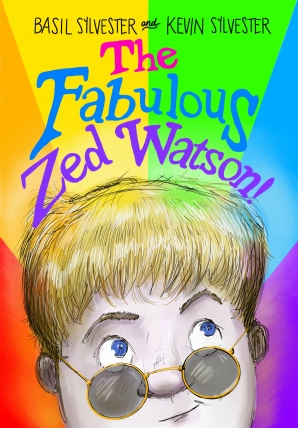
Kevin: Basil and I had been working on book ideas together for a while, and the idea came from their imagination. Zed was already forming in Basil’s head, I think, when Suzanne asked us if we’d be interested in writing a story about a nonbinary kid.
Do I have that right?
Basil: Yeah, pretty much. It was a super weird coincidence, or maybe just serendipitous. I’d read Mason Deaver’s I Wish You All the Best earlier that year and realized it was actually possible to write books with nonbinary characters! I was working on a similar sort of story but I was planning it to be YA, and wasn’t really getting anywhere with it.
Then Suzanne Sutherland from Harper Collins got in touch about writing a book together. It seemed so perfect since, as you (Kevin) said, we’d been working on other ideas together already—for years!
I shared with you what I’d been thinking and then you were like, “What if it’s a road trip book?” The road trip thing was so genius. I just remember gasping and being, like, YES, I want to write that! And I just remember in the span of one conversation we planned about 80% of the book!
K: Once we had an idea about a road trip, we really just took off with it. Basil and I both love the idea of quests, lost stories, mysteries…and road trips (we took MANY cross-country trips as a family). Writing wasn’t “easy,” but it was fun. We sat down and started working on an outline and, TBH, had a workable idea in just a few days.
Then we started writing, and kind of split the first draft into “chapters” based on things we each felt comfortable at writing. I did much of the early road trip scenes, and maybe some of the jokes.
Basil handled monsters and also the places where Zed’s being nonbinary came into play. There was more of a blend overall, of course, but that was the basic methodology.
B: Yeah, the split was pretty even.
You did a lot of the plotting and mechanics, I would say, and I did a lot of the early Zed scenes.
But what I loved about it was that we had this workable outline, like in… a couple days, probably! Which allowed us to go off and do our own writing and then about once a week we would get together and go over what we’d written to make sure the tone was consistent, etc. That was my favourite part, reading it out loud across the dining room table.
We had also originally planned to maybe go on the trip, too, like after handing in a draft, to see if it was feasible. But then COVID hit, so that was out of the question. But one of our first orders of business back when we were first planning everything out was to get a huge map of the States, to make sure it was all doable.
K: That’s where the scene in the beginning comes from, with Zed and the map. We had ours pinned to the wall of our dining room. In some ways Zed is Basil and I’m Gabe. Not literally, but in temperament? That’s probably too simplistic, as they are fictional complex characters in their own right, but I think we had our own virtual “road trip” while we wrote about their road trip.
B: Yeah, I think the Zed/Gabe dynamic was maybe unconsciously influenced by us, but we definitely didn’t do that intentionally. I think you had a sketch early on of Gabe or something and we joked a bit like, wait, this is us, isn’t it? but not really. Anyway, it was super cool to write with you, because of how much we’d talked about doing it for years. Like, even when we disagreed, it was very productive, and definitely the collaborative process made the book stronger.
K: I found it an amazing experience. Basil is a great editor, as well as writer, and to have that kind of immediate feedback loop built into the writing process made it faster, more enjoyable and richer.
B: One of the last days of writing, Dad/Kevin brought me a chapter he’d written, and I just remember laughing and being so surprised and just excited to work with what he’d introduced! So I hope kids who read it just have a good time with it, while also considering things they haven’t before, or maybe learning something.
Read other InsightOut posts.
Duane Rendle is the Dean of Students at St. Michael’s College. Originally from Victoria, BC, Duane completed his BA at the University of Victoria in 1993, and then came to U of T to complete a Master of Industrial Relations. While attending U of T, Duane served as a don at St. Michael’s College and became very involved in student life. In 1998, St. Mike’s hired Duane to serve as their Dean of Men, a precursor to his current position.
Ceremonial Splendour
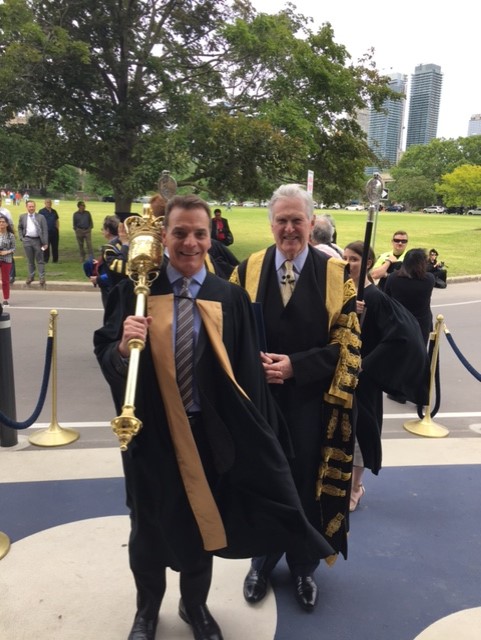
Over the past 22 years, I have had the great pleasure of watching our students graduate from a unique vantage point—that of the convocation beadle.
What, pray tell, is a beadle? That is a very common question and the same one I asked in the spring of 1999 when I first assumed the role. The beadle (sometimes spelled “bedel”) is an officer at a college responsible for ushering students into a formal ceremony, ensuring they are seated, and leading them back out when the ceremony concludes. Beadles are easily distinguished from the students by their academic regalia and, most notably, the presence of a large mace resting firmly against their shoulder.
The mace has been a symbol of university authority since the 11th century. It was originally intended as a weapon (!), presumably to fend off the rabble who begrudged the pomp and pageantry of the academic elites. Mercifully, such incidents were rare—so rare that universities began to adorn the mace, transforming it from a tool of combat into a ceremonial sceptre.
The University of Toronto mace was handcrafted in London, England and is constructed of gold-plated silver. It was a gift from Lt.-Col. Eric Phillips (chair of the Board of Governors from 1945 to 1964) and was unveiled at the June 1951 convocation. Since then, tens of thousands of graduands have witnessed the mace being reverently carried into Convocation Hall to officially commence their graduation ceremonies.
Under the mace’s crown is a cushion that bears the coat of arms of George IV, the sovereign who granted the university’s first charter in 1827. As the mace is turned, a series of panels reveal the cipher of King George IV, then the arms of Canada, of Ontario, and the University of Toronto. Additional images of crosses, maple leaves, fleurs-de-lys and beavers pay homage to U of T’s cultural and religious influences.
(At the Baccalaureate Mass preceding the convocation ceremony, I lead the graduands into St. Basil’s Church with the St. Michael’s mace. Please see the accompanying video to learn more about it.)
Serving as the beadle is easily the best perk of being the Dean of Students. Prior to the ceremony I am invited to the Chancellor’s reception, where I get to hobnob with academic dignitaries and the honorary degree recipients. Over the years I have met many well-known Canadians from the worlds of politics, the arts and academics, but I think my favourite encounter was with the irascible Rex Murphy, of The National Post fame. Mr. Murphy seemed genuinely interested in finding out what a dean of students actually does, and his east coast charm made me feel like I was chatting with the fellow on the next barstool, rather than a Canadian icon.
Leading the academic procession into Convocation Hall is always exhilarating. When the organ chimes and we begin our measured walk down the main aisle, every eye in the hall turns to watch the spectacle. In decades past, our procession was accompanied by the clicking of countless cameras and the light of 1,000 flashes; now though, most choose to silently record the grand entrance using a variety of handheld devices. Once the stage is ascended, I gently place the mace in its ornate cradle atop the beautifully carved table, where it serves as a silent witness to the crowning achievement of each graduating class.
As the ceremony concludes and the second stanza of “O Canada” begins, I take my cue to retrieve the mace from its holder and lead our newly minted graduands out of the hall and into the throng of well-wishers that await. But for me, my job is just beginning. Over the years I have made it a practice to linger in the crowd for as long as the Chancellor’s Office will permit, to congratulate families, shake the hands of the graduands, and pose with them in photos with the magisterial mace. Over the past two decades I have had the honour of being included in countless portraits, and I am always grateful to be included in such an intimate family moment. This, for me, is the highlight of convocation day and, after a respite necessitated by the pandemic, I cannot wait to return to campus and fulfill the hallowed duties of the beadle once again.
Read other InsightOut posts.
Reid B. Locklin is Associate Professor of Christianity and the Intellectual Tradition, a joint appointment at St. Michael’s College and the University of Toronto Department of Religion. His research and writing focus mainly on Hindu-Christian Studies and Catholic theologies of interreligious dialogue. He lives on the Rouge Tract of Williams Treaty Territory, which is the subject of a specific land claim submitted by the Mississaugas of the Credit First Nation.
Re-Remembering the Land
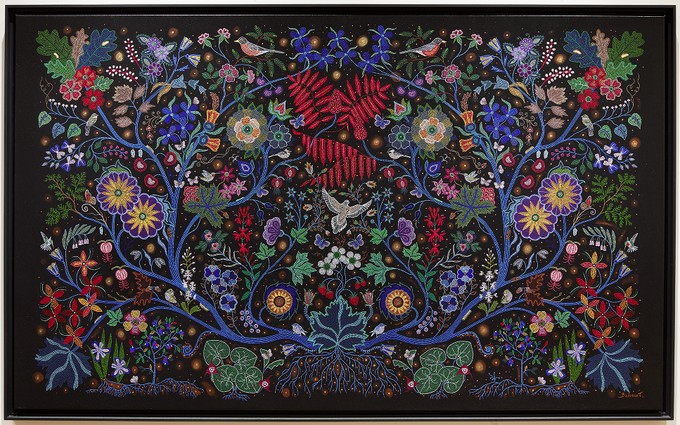
I was hired to teach in St. Mike’s interdisciplinary Christianity and Culture programme in 2004. At least since that time, the story of the University has always been told in a fairly straightforward way:
St. Michael’s was founded in 1852 by Bishop Armande de Charbonnel, the second Bishop of Toronto, who entrusted the school to his childhood teachers—the Basilian Fathers of Annonay, France—in 1853. The University would continue to grow, becoming a leading centre of international scholarship within a century of its founding.
When asked about the particular tract of land—Clover Hill—on which the University sits, presidents and chancellors will push the story back one frame, praising the prominent Catholic convert, John Elmsley (1801–1863). Elmsley gifted Clover Hill to the Sisters of St. Joseph and the Basilians for the specific purpose of responding to de Charbonnel’s request. And there, at least in its usual telling, our story ends. In our collective memory, the University and the land it occupies more or less spring into being from the heart of the Church, aptly symbolised by Elmsley’s own heart, now lodged in the walls of our collegiate parish. It’s a beautiful, inspiring story for me, as a Catholic convert myself and as a member of the college faculty.
The story is also, regrettably, a pernicious lie.
I am being deliberately provocative here. I don’t actually doubt that Elmsley transferred a piece of paper he had acquired for these lands to our founding religious congregations in 1851. The lie is not in what our collective memory affirms; it is in what it presumes or, worse, deliberately hides from view. The lie is in the unspoken assumption that the land was Elmsley’s to give.
How might we remember our story more truthfully? A couple of years ago, as part of a larger project, I asked a talented Ph.D. student at the Department for the Study of Religion to research this question. She wrote a new history of the land, one that begins in the year 900, rather than 1851. Here is a selection from her executive summary:
People have lived on this land for thousands of years according to Anishinaabe oral traditions. First Nations such as the Haudenosaunee, Wendat, Anishinaabek, and Tionnontati, traveled and made homes in this part of Turtle Island for centuries. More recently the Mississaugas of the Credit have belonged here, when they migrated south via the Carrying Place trail in the late 17th century.
Europeans began arriving in Turtle Island in the 1600’s. In 1805 the British Crown illegally claimed the land north of Lake Ontario for the city of York—what is now Toronto—in order to establish a capital for Upper Canada . . . The first Lieutenant-Governor of Upper Canada, John Graves Simcoe, nonetheless established York in 1793, 12 years before the Crown deemed the Toronto Purchase official, and despite protests from the Mississaugas. He divided the land into Park Lots: long rectangular-shaped sections of land that ran between what are now Queen and Bloor streets.
The University of St. Michael’s College lies on what was originally Park Lots 9 & 10. These lots were owned by John Elmsley, a Chief Justice of Upper Canada. When his son—also John Elmsley—inherited the land, he donated two acres of Clover Hill to the Sisters of St. Joseph in 1851 and then four lots to the Basilian Fathers for a new St. Michael’s College site.
—Sarina Annis, “This Land.”
The full narrative is definitely worth your time. It includes references, archival images of relevant treaties and other legal documents, and links to First Nation and Canadian government web sources on the history of Tkoronto.
Now, I want to be clear that I do not think that this longer history is “the truth.” Haudenosaunee colleagues in particular might question some of its claims. But I have reason to believe such colleagues would also view it as a vast improvement over the story we have been telling ourselves so far—precisely because it draws attention to our collective lie about the land.
What significance might a new narrative have for St. Mike’s as a university community? We cannot undo the past. We can, however, choose to remember that past more truthfully and to begin taking real steps to (re)build relationships. Consider the financial settlement reached between the Mississaugas of the Credit and the Government of Canada in 2010. This settlement does not resolve all outstanding differences or redress most specific harms of the Toronto Purchase. It does mean that, a full six years after I settled into my new job and office in Odette Hall, the University’s claim to set that building on that land attained some degree of moral legitimacy. Beyond this, through a partnership with SHARE, the USMC administration is exploring ways to deploy its financial assets—a primary fruit of the illegitimate acquisition of land—to advance initiatives related to (Re)Conciliation.
We are an academic institution, of course, and the main fruit of re-remembering this land will be in our teaching and research. There are tentative signs of movement on this front. The Faculty of Theology and the College division have introduced new courses responsive to the Truth and Reconciliation Commission of Canada. Along with our academic partners in the wider University of Toronto community, we have begun to include a land acknowledgement at the beginning of major events and many of our classes—and also on our website. I was relieved to learn that, in the wake of the horrific discovery of 215 unmarked graves at Kamloops, St. Mike’s joined other members of the Association of Catholic Colleges and Universities in Canada in calling for greater accountability on the part of the global Catholic Church and our own academic institutions. Some St. Mike’s staff, faculty, alumnae, administrators, board members and benefactors have also raised their own voices in grief and protest.
These are initial steps, of mainly symbolic value. In the coming months and years, we will learn whether and to what extent we are committed to translating them into substantive action. If we do make such a commitment, I believe, it will follow at least in part from our willingness to re-remember our own history, and the longer story of this land.
This post was amended on June 24, 2021 to note that the Kamloops discovery was of graves rather than bodies.
Read other InsightOut posts.
Laurie Morris is communications director at the University of St. Michael’s College and the proud owner of a Conklin Carnival t-shirt. She holds a B.A. in English from U of T and a certificate in Corporate Social Responsibility from St. Michael’s.
Appreciating the Gifts of Dad
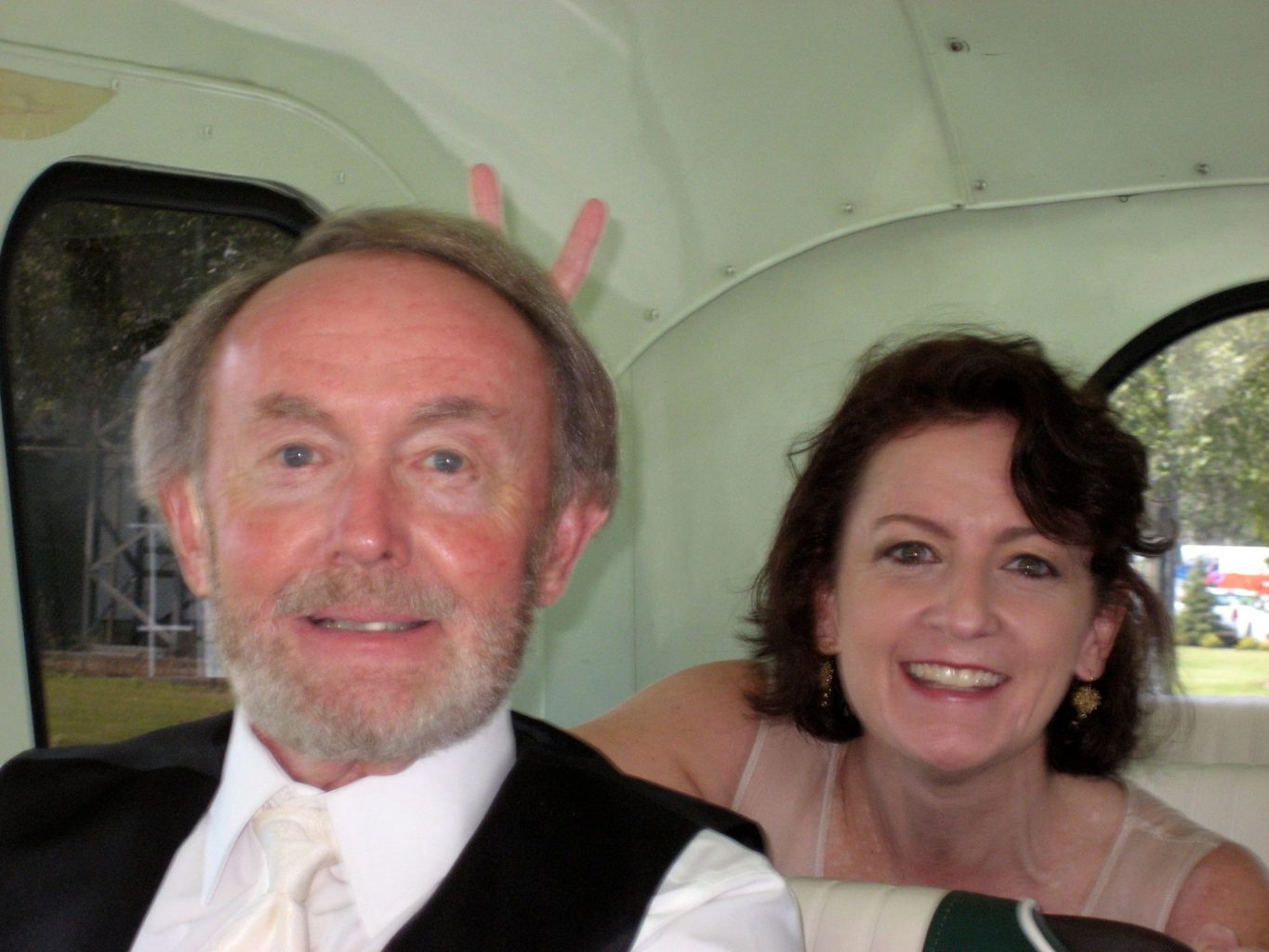
As Father’s Day approaches, I’m thinking about my late father more than usual. He wasn’t a prodigy, but he definitely had a record of doing things at a young age.
My dad married at a young age. He was 19, and my mother had just turned 20. They met in September at teacher’s college, went to the Royal Winter Fair on their first date, and got married that summer after graduation. My mum got a job at St. John Fisher teaching Grade 4 while my dad found himself at what was then called John Newman Catholic School, teaching Grade 8, which made him about six years older than his students.
Both my parents were very committed to education. Once I came along, the only way for my dad to complete his Bachelors’ Degree and go on to get his MEd was to do it outside of his actual teaching job, going to school nights, weekends, and throughout the summer—shout-out to Woodward (7T4). I didn’t see much of his day job, but I do remember him coming home after night courses and greeting him with a hearty “Hi, Dave!” much the way my mother did.
The earliest memories I have of my dad “at work” are of his summer job. He worked at a service station fixing cars, pumping gas and—most impressive to my five-year-old self—he got to feed the guard dogs that lived out back in the junk car lot. He would sometimes bring home monarch butterflies that had found themselves on the wrong side of the front grill of a car. Although dead, they remained fascinatingly beautiful. As far as I was concerned, my dad had the coolest job in the world. It was only later toward the end of that same summer, as the days got shorter and the nights began to cool down, I found out that my dad was actually a teacher, and that he would be heading back to school in September. I was shocked and not just a little disappointed. I was also very suspicious about what else my parents had been keeping from me. It was soon after that my sister Lisa was born.
My dad became a principal at a young age. He had very strong views about education—and everything else for that matter—but as an educator and an administrator he was very focused on meeting the needs of every type of learner. He and my mother ended up at the same school, Dad as principal and Mom as resource teacher (fortunately I was at a school a few miles away) and there they had the opportunity to pilot a number of teaching approaches for children on the autism spectrum, as well as increasing support services for children with learning disabilities and expanding literacy programs.
As I became a sullen teen, I frequently challenged his desire to “work for the man” that was the Catholic school board, which at the time—at least at my high school—shied away from teaching evolution and characterized anything non-Catholic as “other religions.”
We often argued it out at the dinner table. He’d listen, I’d rant—he’d listen again and then say: “Laurie, if you want to make change, you have to get in there and make change. You have to co-opt the system to change the system.”
My dad died at a young age, in 2013. He was 67, and as much as his students benefited from teaching innovations in his elementary schools, he also benefited from a U of T teaching hospital where his unique health issues were finally diagnosed. Later, the complexities of his condition became the topic of many white papers. While dying, he became a case study that advanced learning in research and health care.
I miss my dad at least once a day. I miss the way he could laugh so hard that he’d lose breath. I miss his ability to fix pretty much anything with WD-40 and epoxy glue. I even miss arguing with him. I appreciate the gifts he shared and the things he taught us. Father’s Day and every day, I’m encouraged to be more like him.
Read other InsightOut posts.
Sarah Figueiredo is a Humber Post-Graduate Public Relations student on internship with the St. Mike’s communication team. Previously, she completed her Honours Bachelor of Arts in Economics at McMaster University, where she took an active role is student life on campus, finding a passion for improving the post-secondary student experience. Sarah currently resides in Cambridge, ON.
The Ethernet Connection: Starting a Digital Internship at St. Mike’s
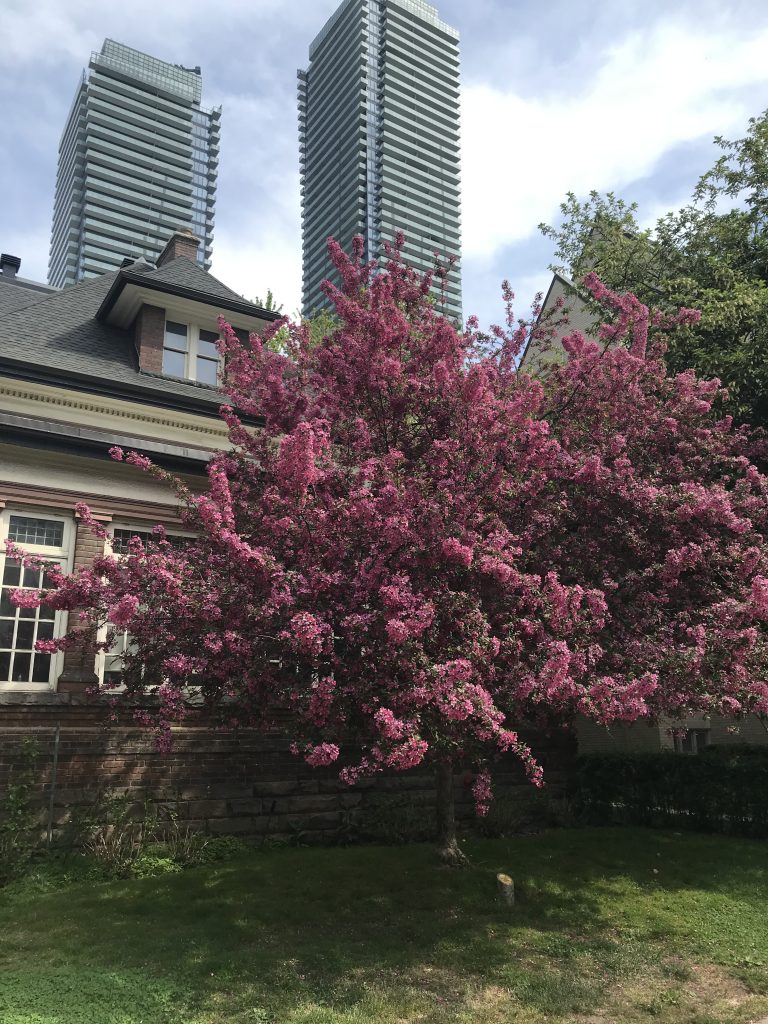
Typically, I imagine parents aren’t such a present part of an internship’s first day.
Truthfully, as my commute to the office was a short 15 steps from my bed to my computer, I should have expected 2021’s unusualness extended to internships.
Starting an internship in a pandemic is both a standard and a unique experience. Contradictory, I know.
On the one hand, I had my parents popping their heads into my “office”—a somewhat quiet corner of the house where I stationed my laptop and ring light—to say good luck and offer snacks. On the other, I have a group chat full of program peers who were carefully monitoring their mute buttons as well.
Venturing on this journey with the rest of my cohort helped make this COVID internship feel somewhat normal. Two days before my official start with the St. Michael’s team, I met with my classmates. Naturally, the conversation progressed to impending internships.
Those who already started spoke of awkward Zoom hellos or introduction emails with a generous amount of exclamation points. Others who were waiting to start listened eagerly, taking mental notes. Finally, we fell into the comfortable pattern of sharing fears, fumbles, and fulfillments.
The sense of place I felt in my program was a constant in a changing world. Taking a step outside the virtual classroom and away from my peers felt like ripping away the security blanket we’d knit together the past eight months.
But, I’ve been told a little rain will make the flowers grow. As St. Mike’s is a place where physical flowers and the bloom of knowledge thrive, I knew a bed of support would cushion my next scary step. Unfortunately, though, that didn’t make it less intimidating.
I assume the first day of an internship typically starts with stopping by your supervisor’s office to say hello and possibly setting up a desk or computer. My supervisor was currently on the other side of the country. My bubble-wrapped computer was delivered to me fully configured to take on the day.
So instead, I started my internship doing what any student is so naturally inclined to do—I researched. Beginning with the St. Michael’s 180 strategic plan, I reviewed the college’s priorities, scrolled through official Twitter pages and dug deep into the Google abyss.
I’m also not above admitting I spent maybe a bit too much time stressing how to Zoom-introduce myself. Should I say a fun fact about myself? Do I even have fun facts about myself? What camera angle looks the friendliest yet professional? Wait, maybe it will be a camera-off meeting?
I’m happy to report that my overthinking was unwarranted, as my first day started with my new coworkers projecting warmth and welcome through their webcams. The format wasn’t unique in any way, a simple introduction with an explanation of your role. I nervously forwent the fun facts. But, the team’s smiles paired with their genuine interest in my story differentiated this Zoom call for those my peers spoke of.
This atmosphere was evident in all encounters I had that week. Whether it be through hello emails or individuals reaching out to offer help, it was clear the USMC team took fostering community seriously.
Later in the week, I enjoyed attending my first virtual work lunch soiree, and I genuinely mean it was a pleasure. The group seemed to make the simple game of virtual two truths and a lie evoke genuine laughter instead of awkward Zoom talk my peers have talked so much about.
From stories of past jobs to celebrity run-ins, the group welcomed me into their pasts with no hesitation. I was honoured with the trust they bestowed on me, having been a part of the team for a mere 72 hours.
I felt a sense of place in the openness and camaraderie as I sat alone, 110 kilometres away. I did not need to trek to St. Mary Street to feel a community.
Looking back on my first week, my only regret is not sharing an exciting insight or fact about myself during that first welcome meeting. I was lucky as St. Mike’s is where the community is encouraged to reach out first; I had many chances to let the team get to know me. Though had it not, I’m not sure how long I would have spent finding the courage to build more than an ethernet connection with my new community.
So, to my fellow digital interns, I have a dare for you—I dare you to be open and authentically yourself every moment of your next adventure. I assure you, especially if you find yourself in the (digital) halls of St. Mike’s, it will be worth the risk.
Read other InsightOut posts.
Nicolas Vergara Ruiz is a fourth-year undergraduate student majoring in Cell and Molecular Biology and minoring in Immunology and Creative Expression in Society. Originally from Lima, Peru, Vergara Ruiz spent parts of his childhood abroad in Bogota, Washington D.C., and Brussels. He values the close-knit community of St. Mike’s, and has served as an international community director of SMCSU, mentorship program coordinator, and commuter don this past year.
Basil’s Grand Tour
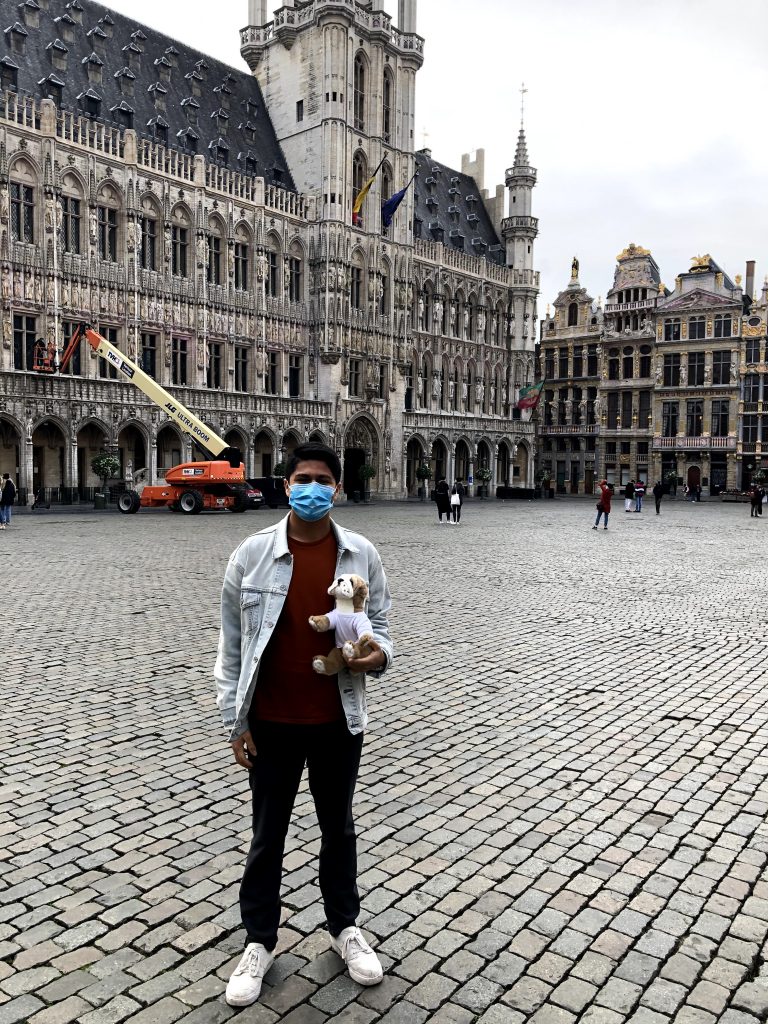
“Home is St. Mike’s.”
More than simply being the chosen message displayed on the 2017 orientation week t-shirts, this phrase envelops the countless backstories and identities of students, staff, and alumni into a shared sense of belonging in our beloved college.
To some, this expression might surface thoughts of a sea of blue, red, green, and yellow shirts, along with the familiar words of the Hoikety Choik; to others, a favourite spot within our skyscraper-surrounded safe haven in downtown Toronto. It would be a stretch, however, for most to fit this phrase into the virtual reality that we have all been subject to during the past academic year.
In this strange setting, the University of Toronto community grappled with the notion of togetherness. There was no welcome desk waiting for the tired smiles of international students arriving for the first time at Pearson Airport, graduating seniors reached their last lecture through a Zoom link, and interactions of all kinds were reduced to rectangular boxes at the mercy of lag.
Certainly, it was, and still remains for the time being, a necessary sacrifice to keep our loved ones safe and protect courageous front-line workers all around. But for a global community where over one in five students are international, it represented a challenge which tested the strength of U of T’s very saying: boundlessness.
This past year, I served the St. Mike’s community from abroad, tasked with supporting first-year and international students, arguably two of the student groups who this year would find it hardest to connect with our college. And so: how to bring St. Mike’s just a little closer in a time when distances seem especially large?
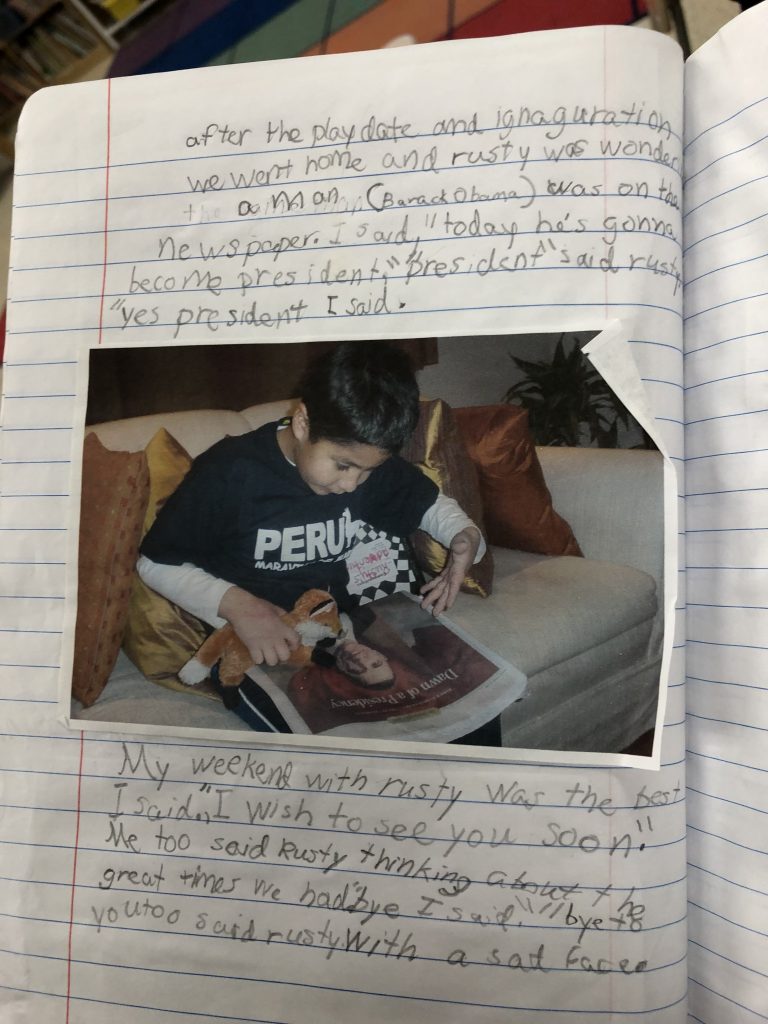
I found the answer in hazy but certainly heartwarming memories of my passing through Ms. Fox’s second grade class, in Ashburton Elementary School. “Foxtown,” as we called it, was fortunate enough to have a pet fox, Rusty, who would transcend his plush nature in the eyes of 8-year-olds and become our companion for a weekend during the school year.
We kept track of Rusty’s adventures in a notebook, which turned a mandatory writing exercise into a privilege—bragging rights for some—to be presented at the beginning of the following week.
In 2019, I returned to Foxtown on a reading week trip to Washington D.C., a decade’s worth of time now separating second grade from my first year of university. Sure enough, I found a smiling (and surprised) Ms. Fox, my old pal Rusty, and what had been my crooked handwriting from the time.
Of course, what evolved as Basil’s World Tour, a trip involving a mini version of our school mascot Basil the Bulldog, would take on an entirely different scope than its elementary school counterpart. For starters, a plush toy tends to hold different meaning for university students than it does for a second-grade class, which made the project less about the material object and more on what its travels represented for those taking part. Moreover, we would be relying on postal systems worldwide to transport our college’s mascot, not all of which could be considered reliable. And with all things considered, there was one question which preceded all in importance: would enough members of our community welcome the idea of touring a plush Basil around the world and, if so, would their geographical location be fitting to provide an itinerary worthy enough for us to maintain our project name?
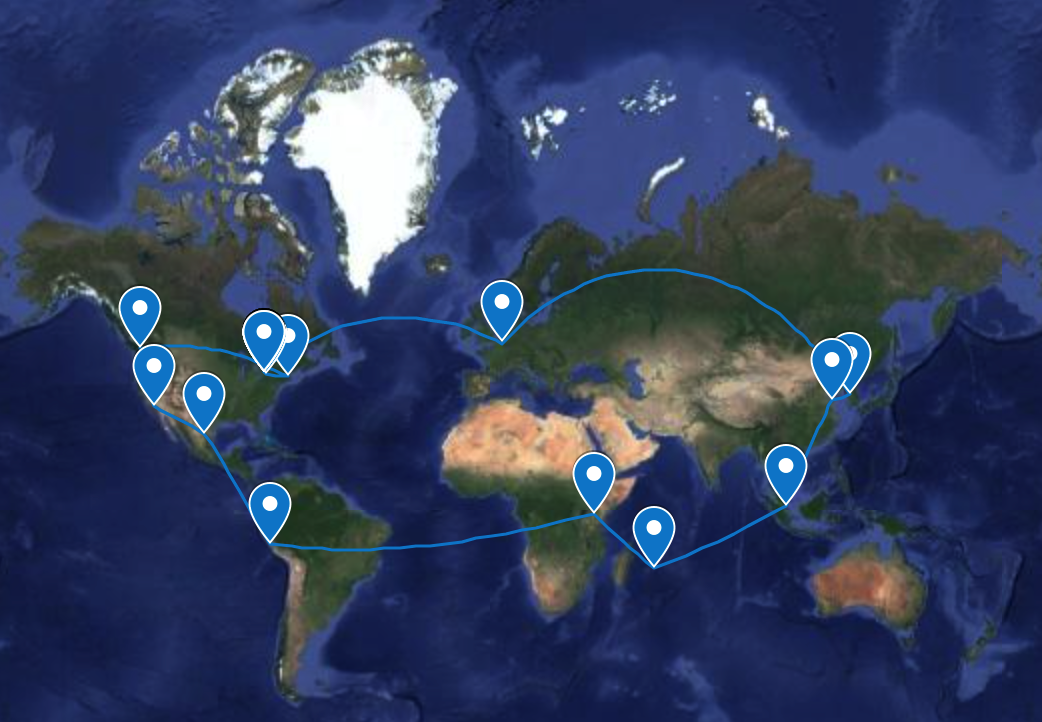
The support was overwhelming: within a matter of weeks, we had a 22-stop, 54,152-km trip across all continents save for Antarctica. Beginning his travels on October 15th, 2020, Basil first visited fellow commuter dons Athalia, Natalie, Anthony, Shayndel, and Andrew, enjoying the Royal Ontario Museum, the Toronto Zoo, and an impromptu fishing trip before crossing international boundaries for the first time, to Belgium.
There, he was welcomed into the Vergara Ruiz household with open arms in a time which was already proving to be a handful—an intercontinental move back to Peru. Aside from witnessing the gradual packing of our belongings into boxes, I was still able to take Basil to neighbouring countries Germany and the Netherlands, as well as get a picture with him in the Grand Place, considered by many to be the very heart of Europe.
After an all too brief visit, Basil reached Incheon, South Korea, where Eunha and he were able to enjoy a walk at sunrise. Then, it was learning how to play the guitar with Yihang in Qingdao, China. And enjoying a swim in Singapore with Meghna.

The start of the winter semester, however, brought with it some tough news for our project. While Basil had reached Port Louis, Mauritius, there had been some problems with customs. As weeks with no news passed, we came to realize that our original route through Africa, visiting Samuel and Andrea, would unfortunately have to be postponed until more news on Basil’s status would surface. To this day, none came.
While disconcerting, a thorough mitigation of risks prior to the start of the tour meant we had an ace up our sleeve: the power of production en masse. In a matter of days, a second Basil joined Antonio for a gastronomic tour of Lima, Peru, and the journey through the Americas would continue.
As the 2020–2021 academic year drew to a close, Basil had gone on a hike in Monterrey, Mexico with Rebeca, toured Los Angeles, California with Ella, visited the Sleepy Hollow cemetery with Morgan in Concord, Massachusetts, and walked alongside Kiera by Lake Erie, near Buffalo, in upstate New York.
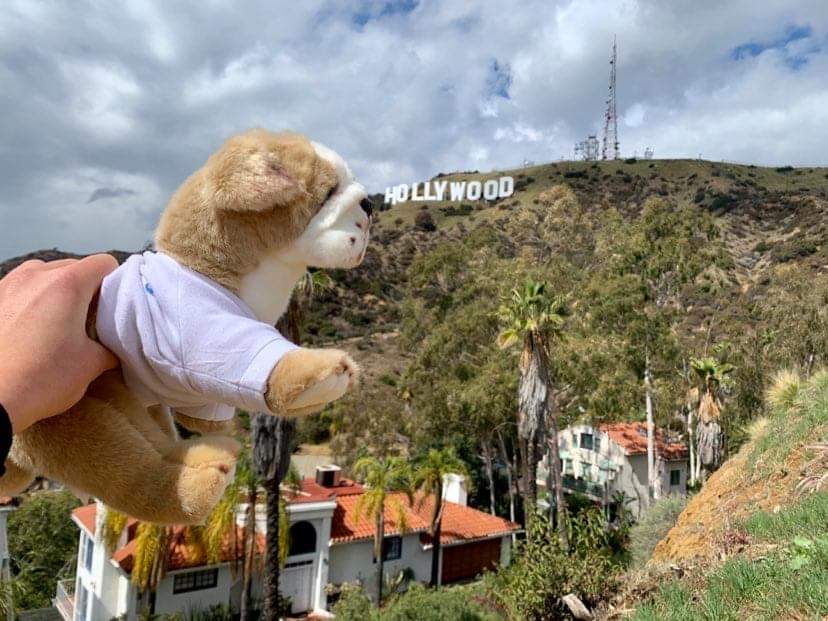
At last, Basil returned to Canada, first with a short visit to Jennifer in Vancouver, British Columbia just in time to see Cherry Blossoms in full bloom before returning to Ontario. In the Greater Toronto Area, Basil was present for Nicholas’s final moments as an undergrad, caught up on video games with Sam, and practiced yoga with Ace. Currently, Basil is wrapping up his time with Elva before making his way to campus for one last adventure with Arjun, the final stop of the trip.
It has been a little over seven months since Basil first left campus. Despite the distance from downtown Toronto, I would argue that Basil was never far from home. St. Mike’s is very much Brennan Hall, the angel statue on the Quad, and the corner of Bay and St. Joseph; but in a year where the vibrancy of our community was heard through built-in computer microphones, we’re reminded that the Spirit of St. Mike’s cannot be contained to physical coordinates on a map. This year, our college didn’t have one single address, but many. In lieu of recognizable landmarks of campus, there were smiles, textbooks, and study breaks, proving that, while taking the strange circumstances of this past year into account, we are still able to return to a familiar phrase, perhaps with a slight twist: “St. Mike’s is Home.”
Read other InsightOut posts.
Shmily Lin is a first-year student interested in life sciences. He enjoys long walks on the beach, naps, video games and bubble tea.
To My First-Year Self

They say your first year of university is one for the ages. It’s unforgettable, unimaginable, and irreplaceable.
I can’t say they lied.
Like many of us, I went into the year with a profound feeling of loss—that I was missing something I’d never get back. It went beyond turning 18 or leaving home for the first time, and it was coupled with the bitter tinge of disappointment that I’d been robbed of the past four years of hard work.
For the majority in our senior year of high school, perhaps it’s not quite right to say we deserved better. After all, what we get in life is largely drawn in varying shades of privilege. Still, my expectations didn’t seem that unreasonable: partying with classmates while flushing our GPAs down the metaphorical drain, practicing the bleacher walks as the principal handed us our papers, and temporary liberation from learning that was over a decade in the making.
There was a small hope that the pandemic would end along with the last of our childhood, but it seemed only one of those was to be.
I dimly recall spending my 18th birthday in a hotel room at the Chelsea, drinking lukewarm tea from the semi-broken boiler and idly finishing a virtual colouring book with the rest of my quarantine cohort. This was four days after I had arrived in Canada, trading the sunny shores of San Fran for the laze and haze of downtown Toronto.
Exiting that hotel room and re-entering the world was elating, until I remembered that the world was still turned off. University wouldn’t be some magical coming-of-age moment. Nothing had changed except my occupation with fresh air. My life would be lived in my dorm, working on problem sets and hoarding food from the Canada Room.
Life online wasn’t awful, although often I can’t tell whether that’s because I truly feel that way or I’ve just never had the chance to experience anything different. Sometimes I’ll hear stories from the upper years about all the things we’re missing, and they’ll proclaim their profuse apologies. And yet, it’s hard to miss something you’ve never had, much like an absent father or being an only child.
For me, it was okay that the most exciting thing in frosh was when one of our coordinators forgot to un-mute. For me, it was okay that we had to scream over the six-foot distances between the tables in the Canada Room just to have a conversation. For me, it was okay that I have never got to meet my study group in person.
This is the year we were handed, and it was the year I’d make do with.
Personally, online courses were probably the pinnacle of ineptitude. While I can appreciate the convenience of watching all my lectures in the room I sleep, the limited socialization opportunities, the abundance of micro-assignments, and the often deplorable wording of multiple-choice exam questions more than forfeits any positives of zoomiversity.
As a friend so eloquently states, “If I only had an hour left to live, I’d spend it in tutorial, because every time I join it feels like a lifetime.”
People often ask me why I traveled all the way to Canada just to live in another lockdown. And, to be honest, I’d planned my trip when the status quo was to still have a few in-person courses. Perhaps that makes me the biggest clown in the world to spend the year in my dorm room shopping for cute posters and waiting for my Quercus quiz to load. Opportunities were limited, people were scarce, and the food from the Canada Room wasn’t particularly welcoming.
I will say I probably had it better than most. Trudging through high school as an overly sociable person, I took the time to look for what limited opportunities there were—I was elected to my house council, I tried student government, I dabbled in a fair amount of clubs, and I even joined an a cappella group (shoutout to SurroundSound!) to fulfill my dreams of reenacting scenes from Pitch Perfect.
The worst part of lockdown is the repetition of daily habits. The worst part of lockdown at university is the endless cramming of course material, desperately churning out assignment after assignment in hopes of optimizing some strange division of marks. Many courses also had the strangest testing schedules in addition to a mess of other work. In the first semester, I had a course with a midterm in the second week. I had simply thought they weren’t very appropriately named; it wasn’t until much later that I realized midterms usually referred to a test that was actually in the middle of the term.
It’s saddening—but not very surprising—when you realize just how many first years thought the same.
Everything past November felt like even more of a blur, as if my confusion was accelerating with every day that passed. I remember the sadness of not travelling home for the holidays, the stress of finals, and the idle boredom of waiting for an end to a year that seemed everlasting. The second semester felt like Groundhog Day—a reminder that nothing had changed.
I’m living now with the acute knowledge that nothing will change next year either. But if this year has taught me anything, it’s that knowledge can be wrong. Maybe I did go into my first year anticipating a train wreck, and instead I ended up at a foreign station. It wasn’t quite wonderland, but I’m always wonderstruck at how much worse it could’ve been.
I’ve learned that things are never as bad as they seem.
If the pandemic were like a fulcrum, changing the way the world turned, then I still had many levers to pull within myself. So, to my depressed first-year self: you’re gonna have your levers pulled. And, you’re gonna find many levers left to pull.
Life is much a balancing act, and there’s three more years to figure it out.
Read other InsightOut posts.
Douglas Moggach studied political science and economics at University of Toronto, and was active in political and social affairs at St. Mike’s. He obtained his PhD from Princeton, and has taught at University of Ottawa since 1976. He has held visiting appointments in Australia, China, Germany, Italy, and the UK, and has published widely in German philosophy. He is a class representative for the St. Michael’s Class of 1970, and will be sharing a St. Mike’s memory at this year’s Honoured Years Cocktail Hour during Alumni Reunion.
Coping and Partly Coping: Living with the Pandemic
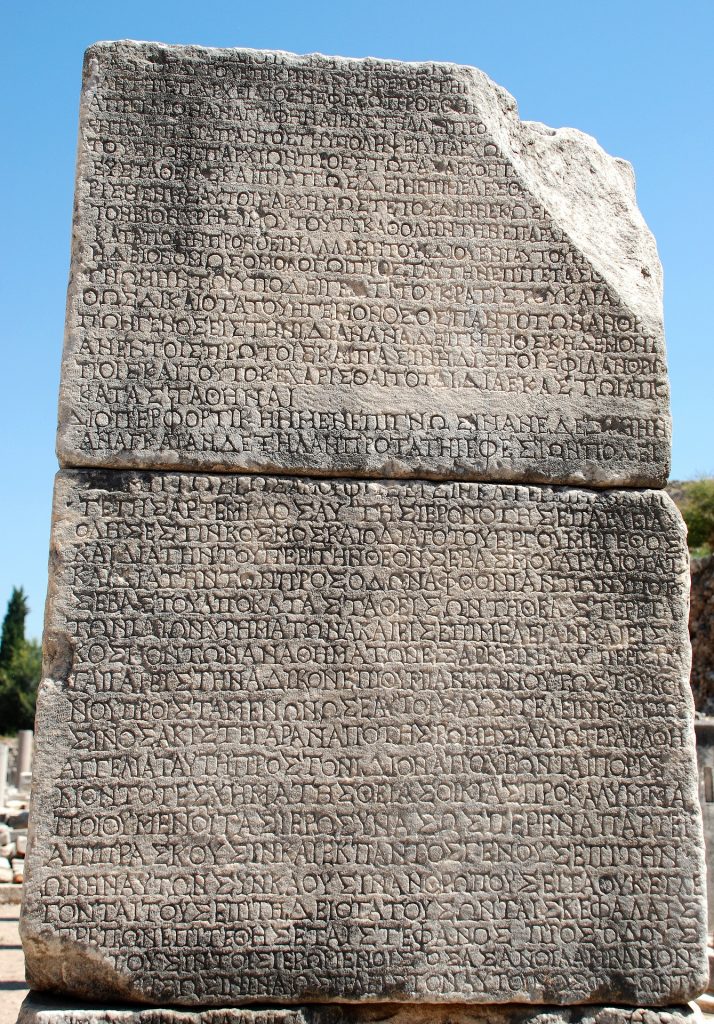
The academic year 2020–21 had been shaping up to be an exceptionally good one. I retired from teaching a few years ago, but have remained active in research. So I had been invited to spend the month of October 2020 at the University of Salamanca, and had also been awarded visiting fellowships in the UK from January to May 2021. The intent was to discuss my latest book, which came out in Germany just before the pandemic, and to get feedback on my current projects, and of course to see my friends and favourite places.
Alas! All these and other plans had to be postponed indefinitely. Only now, 14 months later, is it even possible to think about rescheduling these activities; but even so, everything remains tentative. My family and I have been fortunate in that we’ve been spared physical illness, and there is much to be grateful for, as we must constantly remind ourselves. Still, the frustrations and delays were often hard to deal with, as I know we can all say.
So how to cope? Why not reactivate some dormant projects, or make progress in other endeavours that I had belatedly begun? Besides being vaccinated, I have administered other pandemic antidotes to myself. Ever since I was a boy, I had wanted to learn Ancient Greek. It wasn’t offered in my high school, but I had studied it on my own, on and off over the years. The language is elusive and astonishingly complex, the hardest I have ever attempted, and as an autodidact I had never been able to advance beyond intermediate level. A good friend who is a retired Classics professor kindly offered to guide me through Plato’s Apology in the original, and with another friend we arranged weekly meetings on Zoom, reading the Greek, struggling to translate it, and having the impenetrable points of syntax and vocabulary explained to us. It was highly rewarding, not only because I now feel able to tackle other Greek texts with some confidence, but also because of the camaraderie that we felt and could look forward to experiencing every week: virtual, indeed, but genuine.
Another antidote was bagpipes. I began learning a few years ago, again fulfilling a childhood dream, and I think it’s even a harder exercise than Plato’s Greek! It takes manual dexterity and an ample lung capacity, and presents significant challenges for late beginners like me. I have an outstanding teacher, patient and encouraging, so that my weekly lessons, remote, of course, are always enjoyable, even when my renditions are less than stellar. Before the lockdowns I had accompanied the band that my teacher directs on one of their tours of Scotland, in the course of which I was able to play along (only drones, no melody, wisely), in Skye, and to meet the Queen when the band performed at Balmoral. My services were not required for that particular performance, but I was designated to present Her Majesty with a gift. On being introduced to her as my teacher’s newest student, Queen Elizabeth looked at me with some surprise, and asked, “Really? Just now?” An apt comment, but I persist, even now. I hope to be good enough to play “Scots wha’ hae” with the band on the next visit to the Wallace Monument in Stirling. Regardless, the lessons are another high point during weeks and months of confinement.
eMaybe the most important thing is to keep working and keep focus. Though the content is often good, Zoom conferences lack the immediacy and ease of interaction that you get in personal meetings, and deprived of my usual networks and sources of inspiration, I found myself floundering and unproductive for too long during the lockdowns. That had to change, and I recently roused myself to submit a new book proposal to a university press. I await the assessment, but in any case I intend to complete this manuscript in the next twelve months. As a colleague once bluntly advised me when I complained about the difficulties I was having in revising an article, “Work harder!” He was right. That was the answer back then, and perhaps it is the best pandemic antidote right now, too. It’s not the same, and it’s not as good as it might have been had so much time not been irretrievably lost. I’m only partly coping, if I’m honest with myself, but as Aristotle instructs us, the good for us human beings is always the best attainable good, even if it’s not the absolute best. So with that, with labour and Aristotelian prudence, we cope as best we can.
Read other InsightOut posts.
Dr. Darren Dias teaches in St. Michael’s Faculty of Theology, specializing in Trinity, Religious Diversity, and teaching methods. He is currently working of a SSHRC funded project with colleagues Gilles Routhier (Laval) and Michael Attridge (St Michael’s) entitled: “One Canada, Two Catholicisms: Divergent Evolutions in the Catholic Church in Quebec And Ontario, 1965–1985.”
Burning up Privilege
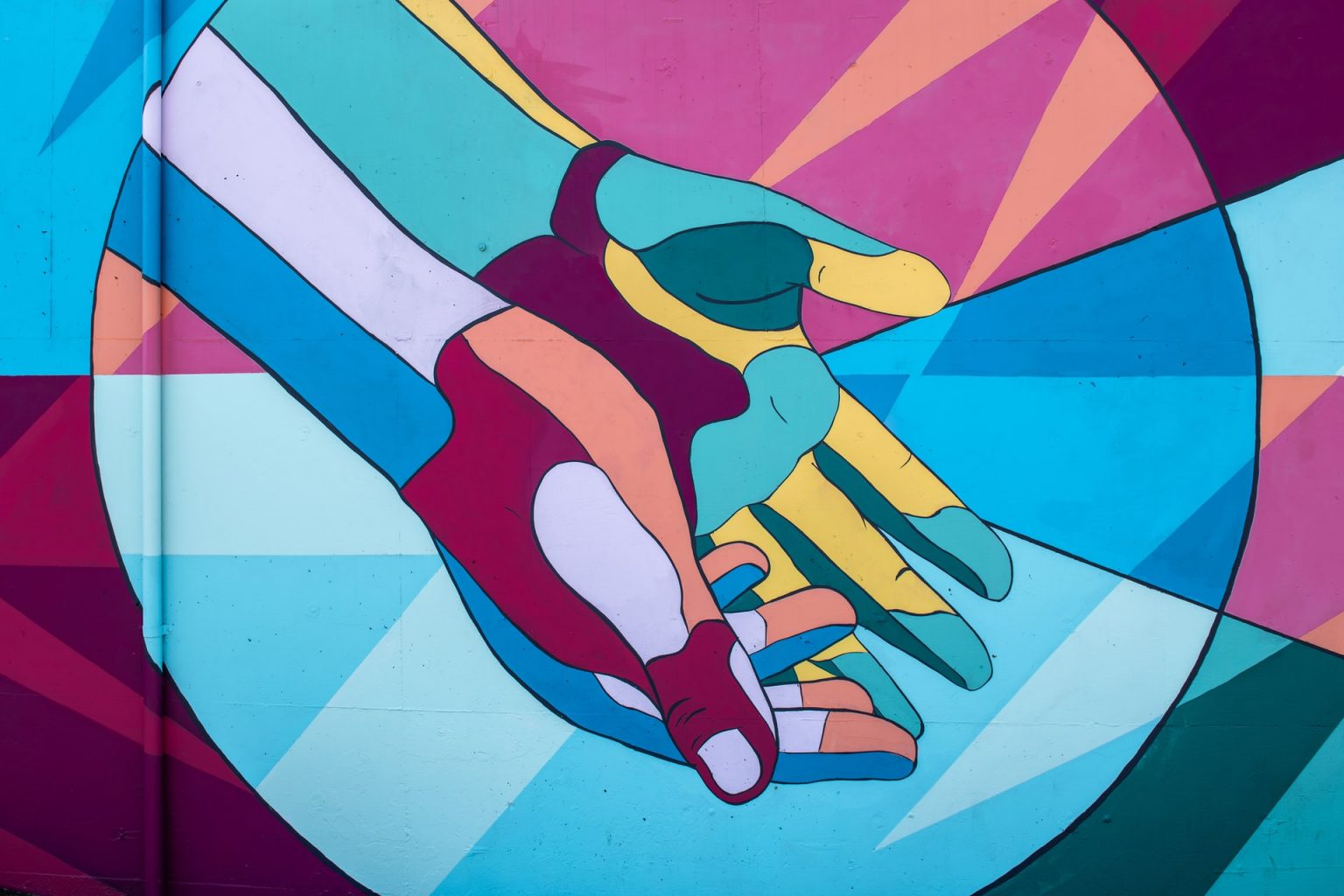
On May 10 the University of St. Michael’s College hosted a colloquium on the role of the Catholic university in the 21st Century. A statement was made by one of my co-panelists and colleagues that “racists should be welcome here [St. Mike’s] in love and in truth.” If the statement itself was surprising, perhaps the silence with which it was met was even more so. Not one participant, me included, no one from among the faculty, staff, or leadership challenged that statement.
Perhaps there were reasons for not responding. Zoom is not the most conducive medium to discuss difficult topics. It’s likely that some people were simply not paying attention behind their faceless Zoom screens. People may not have wanted to draw attention to a remark that might have drawn us away from what they thought were more important foci of the colloquium. Or else there may still be a certain amount of discomfort talking about issues such as racism, sexism, homophobia, etc., even in an open academic forum, whether on Zoom or in person. But as the days passed after the colloquium, I thought about what the statement “racists should be welcome here in love and in truth” and the idea that a “discussion group for racists” could be established at St. Mike’s sounded like for the few racialized students and staff participating in the colloquium. And then I thought about the effects of our silence. Increasingly, I felt that not saying anything was irresponsible of me.
As astounding as it might seem in 2021, to my knowledge, I am the only racialized member of the teaching faculty at St. Mike’s. As such, it is has become both my privilege and responsibility to speak to racism and to try to advocate for those who are underrepresented in the academy whenever I can. My seemingly broken record interventions are authentically welcomed by my colleagues. There is no small amount of irony that I do what is expected of me, performing my own racialized identity in my interventions. A few years ago, my then only female colleague in my faculty and I lamented the conventional roles we played in faculty meetings and discussions. She found herself gently but firmly drawing our attention to sexist language and micro-aggressions as though this had become her responsibility instead of a shared responsibility of all community members. Maybe that’s why I didn’t say anything at the time; maybe I hoped someone else would.
If indeed silence is consent, then such statements should not be met with silence. The statement “racists should be welcome here in love and in truth” is provocative and merits response, especially for the sake of the few racialized participants in that colloquium as much as for the wider St. Mike’s community. I’d like to now say what I should have said then: racists should not be welcome at St. Mike’s.
A Catholic university is not a parish, or pious association, or a catechetical institute. Like any university, it is a place for serious, critical, and rigorous academic dialogue and debate. These dialogues and debates are based on accepted facts and not opinions. Racist beliefs and theories are predicated on theories of white supremacy. While these theories may have been taken seriously many years ago in disciplines like phrenology, biology, philosophy, and theology, they have since been debunked based on evidence (or lack thereof) and uncovered for what they truly are. No academic discipline holds even a remote possibility that theories of white supremacy are true or worthy of debate. Further, they are not only false but exceedingly dangerous. Having a discussion group for racists would be akin to inviting people who contend that the earth is flat to an academic discussion with members of the astronomy department or asking biologists to debate the merits of spontaneous generation.
The idea that racists should be welcomed or a discussion group for racists be established on campus seems to be predicated on the questionable claim that catholicity means a Derridean form of “pure” or “absolute” hospitality. Absolute hospitality “welcomes whomever or whatever arrives, without calculation or limit, without concern for self-protection… [it] entails the surrender of one’s home, one’s identity, even one’s life.”[1] This contrasts “conditional” hospitality as the gracious and willing “reception of a guest into safe and friendly space.”[2] All hospitality, in reality and practise, is conditional with “thresholds of possibility, limits and conditions that allow hospitality to be what it is.”[3]
For St. Benedict, all guests, strangers and pilgrims, should be welcomed as if they were potentially Christ. Chapter 53 of the Rule of St. Benedict instructs the monks, however, that before the stranger can be welcomed into the community, the superior and brothers must first meet the stranger in charity and pray together for peace, before exchanging the kiss of peace (the sign of welcome). The wise and prudent Benedict warns his monks that the kiss of peace should not be exchanged until it can be established that the stranger brings peace and not “the devil’s deceptions” into the community. Even for Western Christianity’s great proponent of welcome, hospitality has its limits when it poses a threat to the wellbeing of the community. Racism is not just a bad idea but an embodied practice that threatens the psychic, psychological, spiritual, and physical well-being of members of the university community. Racialized members already find themselves at risk in so many ways outside of the aspirational safe and friendly space of the Catholic university. Thus, racists should not be welcome into the space of the Catholic university.
One of my colleagues once offhandedly used the term “burning up privilege.” It has stuck with me ever since. He was referring to ways in which he used up his own acknowledged privilege as a white male university professor to empower others—something he does intentionally and regularly. We “burn up” the privilege that we have not earned to draw others into safe and friendly spaces for exchange, rigorous and critical debate. I think this is what a popular rabbi and itinerant preacher from Nazareth did about 2,000 years ago when he “burned up” his privilege to touch lepers, allowed himself to be touched by prostitutes, ate with sinners and tax collectors, and spoke publicly against religious and social structures that dehumanized. He burned up his privilege, sharing it with those without in order to empower them. Eventually he burned it all up. And we know where that got him. No one was willing to burn up their privilege for him: neither his elite followers nor his most intimate friends would speak up for him. In fact, they denied him into silence. He threw his lot in with the likes of Colten Boushie, Alana Cardinal, Breonna Taylor, Joyce Echaquan and the countless other victims of racism today.
[1] Jessica Wrobleski, The Limits of Hospitality (Collegeville: Liturgical Press, 2012) 22.
[2] Wrobleski, xi.
[3] Wrobleski, xi.
Read other InsightOut posts.
Richard Carter has been a reference librarian at the St. Mike’s John M. Kelly Library since 2004. He grew up in Ottawa and loves walking, reading, helping students, and being a dad.
On Walks, Good Books, and Libraries
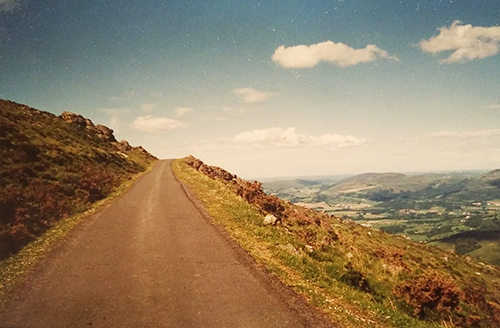
What is it cruising past you with an annoying motorized purr, unzipping from behind your ear the entire afternoon? A bee, I’ll wager.
Sometimes, it swerves to a mapped azalea preening by a hedgerow; sometimes it weaves in complicated ever-widening arcs, scenting pollen; other times, aflush, it hovers in such a tizzy over a satellite dish of petals that it hardly knows what to do except keep buzzing. Finally, it settles on a stamen. Then lifts a moment later to an adjacent splash of colour.
Nothing is forced. The bee has simply burst out of the hive into a bright world to explore widely, up close. It is how I have always thought walking, reading, and thinking should be—and research too: unhurried, whimsical, open-minded, observant.
*
Laurie Lee was an English writer best known for his autobiography Cider with Rosie, but it was the enraptured prose of his sequel—in which he hiked across Spain on foot—that sent me tramping. Laurie Lee went to Spain and walked for months; I set out on a three-day ramble outside Ottawa. It was not very exciting, but it was, at the same time, marvellous. I camped in backyards; I passed bristling cornfields; I busted a tentpole in a thunderstorm; I crossed the 417 highway and felt the contemptuous delight of youth. I lived on apples, water, bread, beans, and cheese. Then I walked home.
Three years later, I met Lee by chance at a village cricket match in Gloucestershire. In a lawn chair, under a broad-brimmed sun-hat, he leaned forward with a kindly grin. He was wise-cracking and curious and full of questions. I told him I liked the rhythm of his sentences. “I try,” he quipped. Then he asked me where “my people” were from.
“Well,” I said, “my grandmother is from Wales.”
“Wales?” He said, surprised. He looked me over. “You look more like a Viking to me—you’ve a lot to answer for!”
Not long before, in London, I’d bought a gigantic map of Spain—one of those maps so detailed you can flatten it out on the floor, and when you kneel up close you sense you could fall right into it. Soon after, I grabbed a backpack and tent and jumped on a ferry to Spain.
*
What happens when you walk or read? You enter something else. Part of what you enter is your thoughts, because you are the only subject of your life, the one who does the reading and the walking, but soon you get the feeling that, when you walk, you are walking through something both within and beyond yourself; and that when you read, you are encountering something outside your experience and knowledge: you are lost in the happiest way a human being can be lost.
In the woods, Nature takes you in. Your only job is to step gamely forward, deeply breathe, and look. And the only place I can think of at all akin to the woods is a library.
My first memory of a library was a book of Greek mythology. Lanky, dog-eared, bandaged with tape, it snoozed with several others at the bottom of an elementary school bookshelf. Cracked open, the book featured full-sized, vivid, colour prints, and an incense-like smell. An image of Persephone haunted me most—happily skipping through a meadow one moment, then falling through a crack down to Hades the next. I fell with her and feared and hated the Underworld; but in falling I also felt empathy for Demeter, her mother, who wandered the surface, agitated with grief.
With any good book you plunge like Persephone headlong into the unknown, and it is being held there awhile, braced against a wild experience or a multi-faceted thought, that you equip yourself to shoulder your pack and strike back to the surface.
In the 1990s, as an undergraduate, I began to realize I was doomed to work in a library. Back then I shelved books at the Carleton University MacOdrum Library. I loved the rows and rows of stacks; they were like a forest. Vast ranges fanned out everywhere, crammed with craggy print titles, oversized behemoths, and musty bound journals. You could pick a book up, and put it down; crouch down low and inspect another, flipping through acid-browned pages; tug the spine of a new one back so it fell in your palm like fruit. I loved the breadth of the Library of Congress classification system; the microfilm reels; the close-packed sheafs of microfiche; and the kingdom of government documents that followed a mysterious order called CODOC.
I got to know and love every floor: the grim black volumes of Sociological Abstracts, the tidy narrow issues of Foreign Policy, the crumbling Canadian Geological Survey; the Statesman’s Yearbook, House of Commons Debates, the Reader’s Guide to Literature. I knew where to find T.S. Eliot criticism, or music scores, almost instinctively: the books themselves were like the bark of trees, shrubs, or the plumage of a birds.
In the wild, you sense a space that sprawls around you; in a library, you sense that too, but vertically. Just as a creaking sequoia hints of an age beyond your own, a library is silent but constantly achatter: past and present voices interweave in a living throng of thoughts, disputes, and stories.
At the John M. Kelly Library, I still roam bookshelf ranges whenever I can. But much more often I forage in catalogues, ebooks, websites, and databases. Together, students and I swat virtual branches, wade through virtual swamps, and sometimes feel lucky after a rocky climb to glimpse a virtual view.
*
Thinking seems to me best undertaken with idleness, so that the mind can adjust to off-putting ideas, implications, connections, and consequences. Idleness, yes, and boredom: I don’t mean the lazy type but the patient kind—an appreciation of slowness as soil for understanding. Yet students are pushed to consume vast wads of text and other media; profs must sweat to publish enough to meet their tenure requirements.
New shoots in the wild feel no such pressure: they unfurl when they are ready, and why is the world any worse off for the wait?
Your blood right now is bustling through your body, drumming an urgent unrepentant metaphor for life. Wherever you are—in thought, in book, on foot—a forest stands and threatens with its welcome: birds call, squirrels start or scuttle, oak or book spines creak or crack, and the footpath meanders into mystery. I believe it, even at home, with COVID prowling the streets, and spring unzipping campus with relief in every leaf.
Read other InsightOut posts.
Christine Way Skinner has been a lay minister for thirty years, a mom for almost that long and a partner to Michael for longer. She is the author of books for both adults and children and, for the next few years, will be a St. Mike’s doctoral student.
A Fork in the Road

What do you do when you are in the middle of a pandemic, you are a few years from retirement and your parish ministry job of twenty-two years is eliminated? Well, let a few tears fall. You rage a little bit. Then you sign up to do a doctorate in theology. Perhaps it might not be what everyone does…but it is what I did.
St. Ignatius of Loyola has been my lifelong guide to discernment. Do you feel a sense of consolation in your decision? It is from God. A sense of desolation? Look for another direction. I had begun a doctorate many years ago, before I had children and before I began parish ministry. The immediacy of mothering and ministry always took precedence over writing and so, after a decade, I withdrew from the program. I was grateful for the education I had received while in that doctoral program and used it extensively in parish ministry. It allowed me to provide adult religious education that nourished the faith of parishioners who wanted to think deeply and broadly about their faith. It supported me in developing religious education programs for children that were not only engaging but sophisticated. The time spend studying at that level had not been wasted.
The longing to learn, to think, to question, to explore, and to challenge my perspectives persistently coursed through my veins throughout the years. I fed it by attending academic conferences and reading voraciously. It seemed enough. For a time. But about 10 years ago, I found myself visiting university websites and began printing off application forms for various doctoral programs. A Doctorate in Ministry seemed the most appropriate as I couldn’t contemplate leaving parish ministry. A D.Min. would spare me the burden of choosing one over another. The printed forms always remained in my “inbox” – uncompleted – until another year passed and they would be recycled and replaced by new versions.
Then, in 2020, my life took a radical turn. I knew immediately the opportunity that was before me. As my youngest son filled out his applications for post-secondary education, I filled out my application for post-post-post secondary education. The bulk of my immediate mothering responsibilities behind me and the ever-expanding tasks of my beloved ministry suddenly part of my history, I was free to surrender to that persistent longing. And so, after many years, I actually filled out an application. I connected with professors from a lifetime ago and collected transcripts of courses that I barely remembered taking—and some that I had relied on daily. I spoke to new professors and thought deeply about which of the many possible directions my study might take. In February, just days after my 55th birthday, I was accepted into the PhD program at St. Michael’s College for the fall of 2021.
It has been a radically different experience contemplating doctoral studies at the age of 55 from the experience when I was 23. I approach it, paradoxically, with a great deal more humility and a great deal more confidence. When I was younger, I was painfully aware of how much I didn’t know. But I was afraid of my ignorance being exposed. This, I no longer fear. At 55, I remain conscious of how much I still do not know. Indeed, I am mindful that I will die having learned but the smallest fraction of what there is to know about the world. And, as student of theology, an even smaller fraction of what there is to understand about the Mystery of God. At 55, I also recognize that I have lived enough days to have gleaned a drop or two of wisdom and that it is my responsibility to contribute those drops in the vast ocean that is human thought. It excites me to know that this is the human condition. Each of us has something beautiful, wise and true to teach. Each of us has even more beautiful, wise and true things to learn.
It is liberating to begin studies at this age. I now know that not one of my papers will be the last word on any topic. I will be able to write them with a certain freedom from obsession because of that. I now know that we can only learn by admitting what we do not know. There is a freedom in that, too. I am privileged to have raised my children, bought my home and need very few material possessions. So, more freedom – to focus on study without the burden of working long hours to ensure a sustainable future (although I will certainly need to work some).
As a gift, I embrace this opportunity – denied, I recognize – to many but offered, surprisingly and grace-fully to me. I study, therefore, for the greater glory of God and for the service of God’s people. For this, I live in gratitude.
Read other InsightOut posts.
Martyn Jones is a content specialist in St. Mike’s Office of Communications. On a freelance basis, he also writes reported features, essays, and criticism for online and print outlets. He and his wife Melanie are the parents of two boys.
The Hidden Life of Moms

My wife and I welcomed our second child into the world on March 17 of this year. Bauer Timothy Jones has been a quiet baby so far, but it’s unclear to us whether that’s because of a personality difference between him and our older boy Fox, or because we have been better able to meet his physical needs before they foment emotional crises.
Because of the ongoing pandemic, my wife’s maternity leave so far has mostly taken place within view, or within hearing distance, of where I work during the day. Often, I need only to look up from my screen to be able to see her and the baby. It’s a major improvement over my reliance on texted photos and videos during our last-go-round. Being present for these earliest days of Bauer’s life is one of the great unsought gifts of this era in our lives.
Melanie demonstrates an easy, unselfconscious care with the baby that two years ago she and I would have regarded with envy and admiration. The philosopher Søren Kierkegaard has a passage in his most famous book, Fear and Trembling, about how a person learns to swim by attempting with each stroke to make the ideal or infinite gesture—to imitate their idea of the “form” of swimming. However, once the swimmer has internalized the form, they can swim freely, making each stroke without reference to anything but how fast they want to go and the conditions of the water.
Fox, our first child, almost overwhelmed us at this stage in his life. To continue Kierkegaard’s metaphor, with every wave we struggled anew to figure out how to stay afloat. Innocent of experience and sleep-shocked, we were left to rely on things we’d read or watched, the half-remembered examples of our own parents, and decades of media representations of parenthood. We hadn’t yet internalized the form.
Things are different now. My wife acts from years of constant and very physical practice, with a level of dedication that goes beyond that of professional athletes or musicians because there isn’t a time of day when she isn’t a mom. To see her expertly remove Bauer from harm’s way when our toddler Fox wobbles on top of his climbing frame, or to observe the balletic grace with which she scoops the baby out of his bassinet while cradling the back of his head, is to catch sight of a kind of pure human excellence it’s easy to miss without the frame of a television camera or an announcer’s hyped commentary.
Mother’s Day is often an occasion for celebrating feelings—love, compassion, and all the other things we associate with moms, especially our own. Mel and I are both fortunate to have been raised in loving and supportive homes, and I in no way mean to discount the emotional dimension of the holiday. But what I see and find remarkable to reflect on now is the myriad of physical activities that give love its meaning, and the domain of learned competencies with a huge variety of tasks that, while unexciting on their own, add up to the work of love itself.
Love is a verb, after all, as the CCM band DC Talk emphasized repeatedly in an energetic hit single by that name that came out during my childhood. While I used to enjoy late-night conversations in the dorm about love’s many possible meanings and aspects, and about the theological and philosophical frameworks that can give it even more meanings and aspects, at this point in my life nothing is so interesting to me as the simple acts and gestures that convey love without announcing it.
Mel is downstairs with Bauer right now coaxing him to sleep, as my own mother did with me, and her mother did with her. Mother’s Day is an occasion for celebrating all these tiny and unsung acts of love that make whole lives possible. As George Eliot writes in the novel Middlemarch, “But the effect of her being on those around her was incalculably diffusive: for the growing good of the world is partly dependent on unhistoric acts; and that things are not so ill with you and me as they might have been, is half owing to the number who lived faithfully a hidden life.”
Read other InsightOut posts.
Part of the communications team, Catherine Mulroney studied English and Medieval Studies at St. Mike’s and returned recently to complete an M Div at the Faculty of Theology.
A Shot in the Arm

“Love hurts,” the old song says. But a little short-term pain for long-term gain is always worth it—and especially in these unusual times.
A few days ago, I joined the millions of Canadians now vaccinated. I got a shot of Pfizer and, in the spirit of full disclosure, it didn’t really hurt at all, but for a little site tenderness that lasted all of 18 hours.
My injection moment made me want to recreate Rocky’s famous run up the steps of the Philadelphia Museum of Art, or Braveheart’s freedom speech, or Gene’s Kelly’s iconic “Singin’ in the Rain” dance because had been so long in coming and meant so much.
In truth, though, the only thing I did do was get a little teary-eyed because taking 20 minutes out of my day meant I was now one step closer to seeing my children again, a little bit closer to getting back to my real office, and I could now say I was helping in my own small way to end the nightmare we’ve all been living for more than a year. I think I’d forgotten what a pleasant sensation relief can be.
I’m happy to say that my employer, the University of St. Michael’s College, has been supportive as vaccinations have been rolled out, encouraging staff and faculty to get a shot, and offering time off to attend vaccine clinic appointments. It’s a mindset that brings our 180 strategic plan alive for me.
In these days of the coronavirus, I am reminded that the 180 is not just a statement to hang on the wall but a reflection of a lived attitude. The references to such things as concern for the common good, the need to recognize the dignity of all, and our need to care for all creation actually mean something to all of us. Challenging times are bringing that to light. I see this in the professors’ concern for students’ wellbeing, and their understanding that, these days, support and encouragement trumps deadlines. I see it in the student life staff and volunteers’ outreach to students, ensuring they know about extra funding available during COVID or offering reminders to take a break and engage in self-care, informing students of how they can get extra emotional support if needed. And I see it in email traffic and Zoom calls where we are all beginning to realize, via expressions of longing to be together again, that we might all be a little closer than just colleagues.
Daily, I watch the very lessons lived out on campus that I learned in ethics classes while studying theology at St. Mike’s, or while reading the classics here as an undergrad. Life is beautiful and precious and we are called to do our best not only to respect and protect it, but to celebrate it, too. To me, that lesson includes getting a shot—for myself and for my neighbours. We are to live out the now oft-used phrase that we are all in this together. I’m proud to be an alumna—and an employee—of a workplace that practises what it preaches.
As strong as all these motivations are, though, my primary impetus for getting a shot was to ease my kids’ worries. Their dad died a week before the pandemic lockdown began, and the early warnings about the severity of COVID had them stressed about their mother’s health.
“We’ve just had one parent die. We don’t want to lose the other,” said the oldest, soon after the pandemic began, speaking as the now-elder statesman in his usual blunt fashion.
For the following six weeks, I only went as far as our garden, guiltily answering the door on occasions, but mostly watching the world pass by from our front window.
But then, early May dawned, and with it, my first solitary wedding anniversary. I felt an overwhelming desire to visit the garden centre and buy some plants, something that Mike and I had done in May for as long in as we’d been homeowners.
I can’t say it was a fun trip, as it was laden with guilt: guilt for co-opting my youngest into accompanying me on my covert operation, and guilt that I was contravening a heartfelt request from my children. On an up note, though, I felt 17 again, because it reminded me of being in high school and bending a few of my parents’ rules—just slightly, of course.
I monitored dropping age limits and expanding availability and leapt when my chance came. It took close to an hour on hold with the Ministry of Health to book an appointment, and the poor woman who answered my call had a wailing child in the background, but it was all worth it.
My kids put on a brave face at all times for their mother but I know they were relieved. I was just happy I could do something that would ease some of the pile of worries each of them has these days. Then attention shifted to when they could be vaccinated, too, jealous that Molly, the child living in Florida for the year, has already had both doses of Moderna.
This has been an extended period of loss for all of us. Some of the those losses, of course, are trivial—the inability to hit the links, or the discovery that not being able to go to the hairdresser’s means saying goodbye to a preferred hair colour.
And some, of course, are profound. I don’t know anyone who hasn’t lost a friend or relative in the past year, including some to COVID, with their grief compounded by the inability to say a proper goodbye.
That’s why the vaccine, along with continuing measures such as masking and social distancing, remain so important. A shot in your arm is a shot in the arm for all of us. Take one for the team.
Read other InsightOut posts.
Karen Pascal is the executive director of the Henri Nouwen Society (Canada & USA) and the Henri Nouwen Legacy Trust. Her work as a filmmaker includes award-winning documentaries on two spiritual giants of the 20th Century: Journey of the Heart: The Life of Henri Nouwen and C.S. Lewis: Beyond Narnia.
InsightOut: Henri Nouwen and the Art of Living
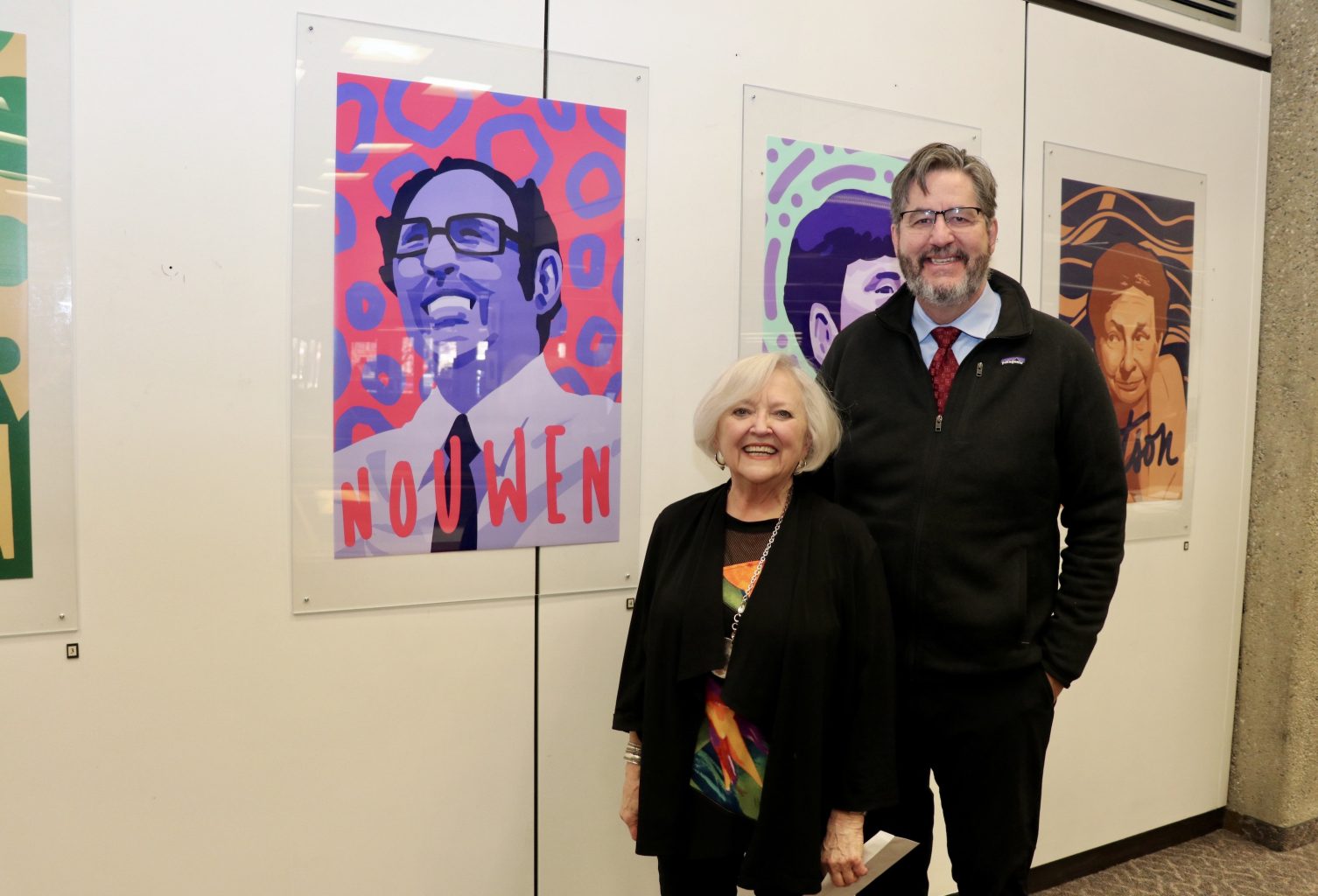
Before taking on the role of executive director at the Henri Nouwen Society, I spent many years as an independent television and film producer.
During the early ’90s, I produced multiple seasons of a current affairs program where topical events were viewed and discussed from a Judeo-Christian perspective. The series featured interesting and varied guests on each episode—newsmakers, authors, artists, businesspeople, environmentalists, activists, politicians, and pundits—a grand menagerie of engaging and articulate individuals.
I quickly acquired the habit of asking each guest what she or he was currently reading. I wanted to know what fuelled them, what fired their passion, their minds, their spirits.
I anticipated their reading selections would be as eclectic as the group itself. However, to my surprise, books by a spiritual writer and priest named Henri Nouwen were mentioned and recommended again and again. Titles such as The Return of the Prodigal Son, The Wounded Healer, The Inner Voice of Love, Letters to Marc About Jesus, and Life of the Beloved.
I don’t recall exactly which of Henri’s books I read first—but I do remember the feeling I had when I began reading. It was as if the author was writing about me, as if he was looking into my heart, parsing and describing my life’s experience. My hopes, my hurts, my brokenness.
I was consoled. I was inspired. I was hooked.
A few years after being introduced to his books, I tracked Henri down at his home at L’Arche Daybreak, a community just north of Toronto where people with and without intellectual disabilities live and work together. And when I say I tracked Henri down, that’s exactly what I mean. Henri was an extremely busy man. Besides contributing to the care of core members at Daybreak, Henri continued to write. He traveled extensively. And the growing popularity of his books made him a much sought-after speaker in North America and beyond.
He reluctantly—yet graciously—agreed to allow me to feature him in one of my programs.
Less than two years later, Henri died of a heart attack on his way to do a documentary in Russia on The Return of the Prodigal Son.
Like everyone who knew him, either personally or through his books, I was shocked and heartbroken, but I knew instinctively that Henri’s legacy would live on.
And so it does. Henri Nouwen is more widely known and read today than he was during his own lifetime.
Because of the extraordinary materials and resources offered by the Henri J. M. Nouwen Archives & Research Collection housed in the heart of the University of St. Michael’s College campus, the Henri Nouwen Society has been able to introduce new works of unpublished material to spiritually hungry audiences around the world. We reach nearly 55,000 subscribers every day with Henri’s treasured Daily Meditations. He now commands a massive following on all of our social media platforms, where new and younger audiences are now discovering Henri’s spiritual wisdom and encouragements.
Not bad for someone who has been dead for 25 years!
Throughout 2021, the Henri Nouwen Society has been celebrating Fr. Nouwen’s life and impact. If you’re already a Nouwen reader, or you just want to learn more about this remarkable man, you won’t want to miss our upcoming special anniversary conference June 4th and 5th called Henri Nouwen and the Art of Living.
Featuring keynote speakers Sister Helen Prejean (Dead Man Walking), Dr. C. Vanessa White, Fr. Ron Rolheiser, Rev. Marjorie Thompson, Sister Simone Campbell, Dr. Roberto Goizueta Jr., and Dr. Chris Pritchett, you will discover valuable insights and practices to help you live a more gracious, grateful, and meaningful life.
We are delighted to partner with the University of St. Michael’s College for this event, and we are particularly pleased that President David Sylvester will be taking a hands-on role introducing one of our esteemed presenters.
For more information and for tickets, please go to our website at https://henrinouwen.org/conference/
While you’re there, you can also watch my documentary Journey of the Heart: The Life of Henri Nouwen, narrated by Susan Sarandon. Just click VIDEOS under the RESOURCES tab.
Read other InsightOut posts.
Fr. Gustave Noel Ineza, OP, is a doctoral student at St. Michael’s Faculty of Theology. Born and raised in Rwanda, he lived through the 1994 genocide against the Tutsi and went into exile for a month in what was then Zaire. His family left the refugee camps and returned to Rwanda after three members of his family developed cholera. He studied in the minor seminary and joined the Dominican Order in 2002. He studied Philosophy in Burundi, and Theology in South Africa (SJTI/Pietermaritzburg) and the UK (Blackfriars/Oxford). Ordained in 2014, he worked for Domuni (www.domuni.eu) and was a chaplain to university and high school students. In 2018, he came to Canada to pursue studies in Christian-Muslim dialogue. He is currently reading on post-colonial approaches to the taxonomies assigned to religious traditions (Muslims and Christians) by colonial powers in Rwanda.
Do We Need Someone to Die to Remind Us that Black Lives Matter?
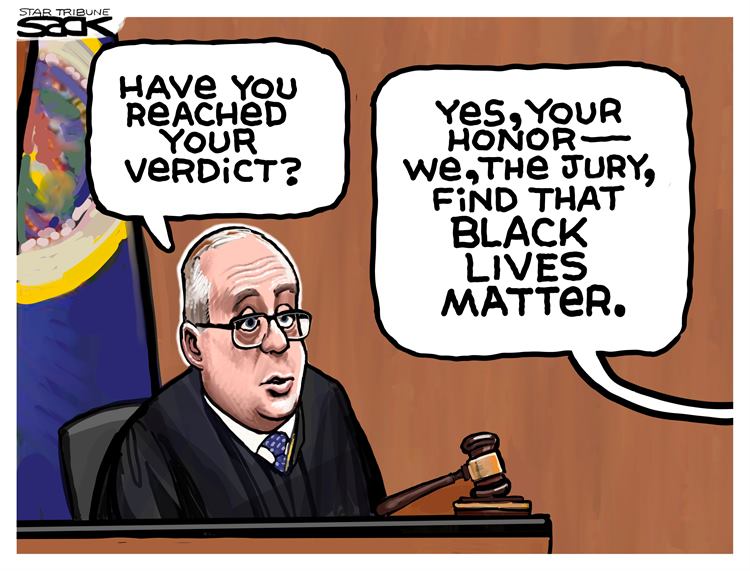
Black lives matter! That was more or less the verdict, 11 months after the brutal killing of George Floyd by Officer Derek Michael Chauvin, and 43-day-long traumatic trial. Twenty-nine years and a month after the trial of four police officers who savagely beat Rodney King, the fear of an acquittal gripped American society used to police officers’ trials ending with disappointing verdicts and acquittals.
The trial finished ahead of the U.S. Senate vote on a bill on April 21, 2021 to combat anti-Asian American hate crimes. Racial tensions have spiked in the United States, tensions that followed the empowerment of white supremacists, a reality which reached a peak with the Unite the Right rally in Charlottesville, a gathering of racist groups that envied the 1930s Reichsparteitage or Nuremberg Rallies.
Four years prior to George Floyd’s murder, a 24-year old Malian-Frenchman, Adama Traoré, died, on his birthday, in police custody, after he was brutalized by French police. Since Traoré’s death, a huge debate has begun in France. Universalist leftist thinkers were scared that rhetoric that generalizes about police brutality might hinder the “Republic,” a chimeric ideal of French unity that assumes all French citizens are equal and equitably treated by the law. Realist activists, often represented by a courageous woman named Rokhaya Diallo, never stop warning the French that there is a risk of considering the American police brutality as something particular to America, because it is widespread in many European cities. Diallo, who seems to carry alone the Black Lives Matter movement on her shoulders, has become the black sheep of a denialist French media because of her positions. The French President’s attacks on “American” Postcolonial movements, “a catch-all term covering everything from anti-colonial thought to critical race theory, intersectional theory to Black Lives Matter,” highlight the persistent denial of oppression towards racialized minorities in many former colonial European powers. Protests to bring to justice Traoré’s murderers were met with brutal police reactions. France is deeply immersed in denial of its racist colonial past, which lives on in its treatment of racialized minorities.
Indeed, change may take several decades to come, even in the United States. After the verdict was announced, the U.S. Representative for New York’s 14th congressional district, Alexandria Ocasio-Cortez, wrote on her Facebook page: “That a family had to lose a son, brother, and father; that a teenage girl had to film and post a murder; that millions across the country had to organize and march just for George Floyd to be seen and valued is not justice. And this verdict is not a substitute for policy change.” Former U.S. President Barack Obama wrote that “true justice requires that we come to terms with the fact that Black Americans are treated differently, every day [and] millions of our friends, family, and fellow citizens live in fear that their next encounter with law enforcement could be their last.” Obama added: “While [the] verdict may have been a necessary step on the road to progress, it was far from a sufficient one. We cannot rest. We will need to follow through with the concrete reforms that will reduce and ultimately eliminate racial bias in our criminal justice system. We will need to redouble efforts to expand economic opportunity for those communities that have been too long marginalized.”
Japanese Tennis player Naomi Osaka, who grew up and lives in the U.S., tweeted these very heartbreaking words: “I was going to make a celebratory tweet but then I was hit with sadness because we are celebrating something that is clear as day. The fact that so many injustices occurred to make us hold our breath toward this outcome is really telling.” In other words, no reasonable person believes that the verdict on Chauvin’s crimes signifies the end of police brutality to Black people. It becomes even harder when some influential TV hosts, like Fox News’ Greg Gutfeld, made it clear they believe Chauvin may not be guilty. Gutfeld stated that the only reason he would want the verdict to incriminate Chauvin is because his neighborhood was looted last summer.
The whole idea of looking at Black people as a threat has been used to justify the discriminatory policing of Black neighbourhoods and unreasonable stop-and-frisks of Black people by law enforcement in the U.S. One highlight of the trial occurred when one of the prosecutors, Steven Schleicher, explained the difference between a threat and a risk. That some insecure white law enforcement agents, empowered by systemic racism in their institutions, might be inhabited by an unreasonable fear of black people transforms Black people neither into threats nor risks. That Brooklyn Center Police Officer Kim Potter, while training a rookie, had to pull a gun on Daunte Demetrius Wright for an outstanding driving ticket explains what may go on in the routine training of American police officers. The fact that she screamed “taser, taser, taser” while shooting him with a gun is also confusing. My training officer in my military service forgot to tell me about the usefulness of screaming “gun, gun, gun” while I am shooting at the target! The most surprising thing is the many peaceful arrests of white mass shooting perpetrators, such as Kyle Rittenhouse and Dylann Roof, which proves that police officers are trained in how to de-escalate tensions, even with highly dangerous individuals. Apparently, that training does not equally apply to people of colour.
One of the most racist whataboutisms on police criminal treatment of Black people in the U.S. is the objection phrased in these words: “What about Black-on-Black crime?” Black-on-Black crime is punished, sometimes beyond the realms of reasonable corrections. In almost all instances when police are accused of the summary execution of Black people, judicial institutions focus on police training guidelines. The fact that Black lives matter is not news to Black people. Black people who take other Black peoples’ lives know they committed a crime and that they would be seriously punished if caught.
The verdict in Chauvin’s trial does not end anti-Black racism. Orchestrated attacks on Colin Kaepernick’s knee may have ended but it will still take years before Black people start feeling safe anywhere around the police. I still get followed by the police in some liquor stores. When I am, I still have the luxury to bother them with words like: “Oh! Because you are here, can you help me find a Coudoulet de Beaucastel Côtes du Rhône Blanc and a Philippe Colin Chassagne-Montrachet, please?”—in a very French accent. However, most Black people are extremely bothered by their presence. An African American friend advised me to never ask them to fetch me a lemonade.
I think the Church must be careful in these times. When people marched against police brutality following George Floyd’s killing on June 1st, 2020, President Donald J. Trump ordered the peaceful dispersal of the crowds protesting near the White House so that he might stage a photo-op before St. John’s Episcopal Church. In a brilliant article for The Atlantic, Garrett Epps, Professor of Constitutional Law at the University of Baltimore, called it “Trump’s Tiananmen moment.” However, the most alarming aspect is that President Trump chose to violate American citizens’ First Amendment rights so that he could take a picture in front of a church, holding a Bible. The following day, President Trump and first lady Melania Trump visited the Saint John Paul II National Shrine in Washington. While many religious leaders condemned the photo ops, Trump still managed to sow discord among Christians—those who thought his attitude toward protests against police brutality was godly versus those who were disgusted.
Many police departments have Christian chaplains, and law enforcement agents are members of our parishes. Just as Church leaders in the past transformed the pulpit as a place to theologically defend civil rights, it is a Christian duty that it become clear to all the faithful that to God, Black lives matter.
Read other InsightOut posts.
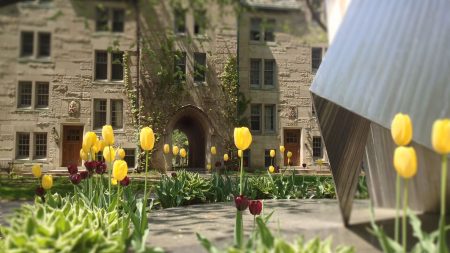
Spring is one of our four favourite seasons on campus.
The robins are back, shoots are starting to poke up from the spring bulbs planted long ago, the grass is beginning to cycle through various shades of green, and the cherry blossoms are almost ready to burst forth.
In normal times, campus would now be waking up to the new season, with impromptu Frisbee games in the quad, small knots of students lingering outside to chat between study sessions in Kelly, and the sun reflecting a little more brightly off of the iconic statue of St. Michael.
Usually, campus would be abuzz right now with plans to get ready for the arrival of Spring Reunion, now just weeks away, with the excitement that alumni create upon their return each spring. With COVID continuing to place in-person activities on hold, however, St. Mike’s has turned to an exciting schedule of virtual reunion events and the campus remains largely dormant.
That doesn’t mean we wouldn’t all still like a glimpse of the forsythia, the tulips, the squirrels, and the special look of the light filtering through the trees on Elmsley Lane, whether we are an alumnus/almuna, a student, a faculty member or a staffer.
In response, we thought we would offer these Zoom backgrounds as a taste of home.
Hope to see you — in person! — soon.
Read other InsightOut posts.
Fr. Gustave Noel Ineza, OP, is a doctoral student at St. Michael’s Faculty of Theology. Born and raised in Rwanda, he lived through the 1994 genocide against the Tutsi and went into exile for a month in what was then Zaire. His family left the refugee camps and returned to Rwanda after three members of his family developed cholera. He studied in the minor seminary and joined the Dominican Order in 2002. He studied Philosophy in Burundi, and Theology in South Africa (SJTI/Pietermaritzburg) and the UK (Blackfriars/Oxford). Ordained in 2014, he worked for Domuni (www.domuni.eu) and was a chaplain to university and high school students. In 2018, he came to Canada to pursue studies in Christian-Muslim dialogue. He is currently reading on post-colonial approaches to the taxonomies assigned to religious traditions (Muslims and Christians) by colonial powers in Rwanda.
The Other Sister
The COVID-19 pandemic has taught many to value more highly essential workers who are usually underpaid after long hours of vital work. Nurses are among the most praised as they daily risk contracting the virus while trying to offer a treatment to the sick. It is not the first time that nurses, women in particular, have risked their lives to save other people’s lives during pandemics. Several pandemics affected the pre-modern world. Some of those who offered treatment to the sick were non-cloistered women religious whose identities have not been comprehensively studied. These women were part of bigger movements which flourished in the Middle Ages and Early Modern Times.
In September 2020, I joined a team of academics as an assistant researcher to Dr. Alison More. Dr. More is the undergraduate Medieval Studies coordinator and the inaugural holder of the Comper Professorship in Medieval Studies at the University of St. Michael’s College. She works on a joint project with Dr. Isabelle Cochelin (Department of History & Centre for Medieval Studies/UofT), and Dr. Isabel Harvey (Department of Humanistic Studies of the University of Venice Ca’ Foscari). The project is called “The Other Sister” and its focus is “women who pursued forms of religious life outside of the cloister in medieval and early modern western Europe and New France.” The other members of the project are Dr. Angela Carbone (University of Bari Aldo Moro) and Dr. Sylvie Duval (Università Cattolica in Milan), research assistants Laura Moncion, Emma Gabe, and Meghan Lescault (Centre for Medieval Studies or Department of History/UofT), and Camila Justino (USMC Book and Media and Mediaeval Studies).
The women studied are known by many names, including beguines, tertiaries, recluses, oblates, secular canonesses, lay sisters, pizzochere, bizzoche, beatas, and others. Their names and forms of life varied according to location. Our research group organizes thematic meetings which are the main venue for discussing current research, and recent books, chapters in books, articles, both published and forthcoming. As the COVID-19 pandemic has affected people’s movements, presenters invited from different academic institutions around the world working on aspects of the project meet by Zoom each month. Although the situation has made it impossible for people to have actual face-to-face meetings, it has allowed those on different continents to virtually meet.
To date, the group has prepared and successfully conducted five thematic meetings. The first meeting was entitled Women Serving Enclosed Women (held on September 29, 2020), the second was on Working in Premodern Hospitals (October 27, 2020), the third’s theme was Charity, Caregiving and Female Social Roles from the Middle Ages to the Early Modern Period (December 17, 2020), the fourth was on Naming The Other Sister: Tertiary, Lay, or Penitent? (February 8, 2021), and the fifth was held on Medieval and Early Modern Beguines, from Provence to Northern Europe (March 15, 2021). Details about those thematic meetings are found on the group’s blog.
The attendance has recently been reaching about 40 participants, mainly professors, post-docs, and PhD students from around the globe, all interested in the subject. Our discussion inevitably yields new insights which cross the usual temporal and geographic boundaries.
The main group of the ten researchers attached to “The Other Sister” has working meetings where we prepare the rest of our activities: thematic meetings, workshops for larger audiences, a workshop for our members on using ArcGIS Software to create maps of the communities of non-cloistered religious women, the construction and development of a blog, etc. The blog is named “The Other Sister.” It presents an overview of research and has space for recent updates and news of importance or interest to our community of scholars.
On a personal note, with this project I am learning about historical methodologies that do not aim at proving hidden agendas but analytically and objectively examine all possible data. Also, I have gained a new perspective as a student in Christian-Muslim relations. My usual methodology is historical and postcolonial. It investigates silenced and othered voices in my country’s religious identity construction. I have learned much from “The Other Sister.” Apart from the finesse in the communication of the members and the rigour in the historical research with its requirements for accuracy, I have come to appreciate the academic enthusiasm involved in understanding subjects that touch a given identity. I am also interested in understanding the power relationship between identity and those who write history: in our case, the image given to these non-cloistered, lay-religious women by predominantly male and clerical historians.
Our work values the religious zeal of women who were willing to live a life given to the poor, the sick, prayer, and teaching, often in the face of incomprehension and negative judgment from their society and the Church. Some were considered heretics or witches simply for wanting to live this life outside the walls of a cloister. A deconstruction of the meta-narrative on them that at times portrayed them as uncontrollable dangers to the Christian faith aims to restore their proper image. As the Church strives to include women in its decision-making bodies, it will surely be inspired by the findings of “The Other Sister” project, and the genius of the women working on it.
Read other InsightOut posts.
Angela MacAloney-Mueller is St. Mike’s Physical Plant Coordinator. She’s been a part of the USMC community since August 1994, and notes that the comfort of students and staff are her top priority. She is, you’ll see, an avid birder.
Bird Nerd on Campus
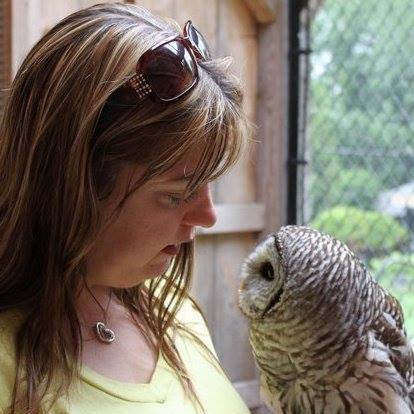
I still remember the first time I visited the campus of the University of St. Michael’s College. It was for a job interview in July of 1994. With the luscious greenery, the full-grown trees and beautiful flowers, the grounds took my breath away. I thought to myself as I was leaving the campus, “Yes, I would like to work here.” Social media accounts for the university often use the hashtag #oasisinthecity and, as it turns out, we humans are not the only species who think so.
Some migratory birds travel thousands of miles twice a year during spring and fall migration. Toronto is on a major migratory flyway, and every spring the nighttime skies are filled with thousands of birds coming north for the summer to set up territory, find a mate and raise young, all before the long journey home. The city, and the campus grounds themselves, with their close proximity to Lake Ontario, are a perfect resting spot for those birds after a long night of travel.
I was working at the Pontifical Institute of Medieval Studies when I started birding more than 20 years ago. I’ve had a couple of lifers at work (a lifer is what it’s called when you see a bird for the first time). The campus gave me my first Oven Bird and Yellow-bellied Sapsucker. The spring offers a chance to see a wide variety of summer migrants, including Baltimore Orioles, Indigo Buntings, Scarlett Tanagers, and so many others. Many of the migratory birds will continue further north to the boreal forest, but a few do stay in and around the Toronto area, like the feisty red-winged blackbird.
Every spring I get work orders regarding the “attack bird” on campus. It seems the last few years a pair of red-winged blackbirds have thought the grounds lovely enough to build a home and raise young. The male is a fierce protector and will often swoop at people if they get too close to their nest—or, in this case just walk along the path. It is illegal to tamper with a migratory bird or its nest, but we have posted signs to warn people of what may happen. I have a lot of respect for the males: I’ve seen one swoop at a bald eagle! Fortunately, the nesting season is short, only about two weeks, and then peace and harmony return to the grounds.
Over the years I have been able to share a little of my knowledge regarding birds on campus. A couple of our yearlong resident bird species come to mind. A former co-worker came to my office one spring morning to let me know that a baby sparrow had fallen from its nest and asked what should we do. He was flabbergasted when I said, “Put it back.” The old myth that a momma bird won’t take care of its young if it’s been touched by a human is alive and well. Birds have no sense of smell, so it is very safe to put them back in their nest if you are able, which we did that day. The chick’s eyes were not yet open, but as soon as we lifted it close to its nest under the Elmsley Hall walkway, it instinctively crawled back into its nest.
Another time, a don in Elmsley Hall called to let me know a student had a baby robin in her room because it couldn’t fly and wanted to know if I could help. We went to the student’s room, where I discovered she had a fledgling. When a baby bird first leaves the nest, it is called a fledgling and is unable to fly for a few days. The mother robin will hide her fledglings in shrubbery, where she we will return and feed them throughout the day. After explaining this to the student, we took the baby robin back outside where she had found it. It wasn’t long before momma robin was there to check on her baby, much to the relief of the student.
The St. Michael’s grounds play hosts to a variety of birds and wildlife year-round. When enjoying the flower gardens during the summer months around Brennan Hall you may see a ruby-throated hummingbird or monarch butterfly. The fall and winter months always bring the hawks to campus, where they help with pigeon control. Spring is the real star of the year though, with the many colourful songbirds and warblers passing through. The chorus of birds singing at dawn and dusk this time is joyful to hear, and I am sure wakes many of our students in residence.
I believe the variety of birds and wildlife add to the campus. Many times, I have seen the delight on a student’s face who has never seen a squirrel before. I’ve pointed out American goldfinches and downy woodpeckers to coworkers when walking from building to building. And it doesn’t matter how many times you see a northern cardinal, you are going to stop and stare at his brilliant red colouring.
Birding for me, as always been a source of stress relief. How lucky we are when on campus, that we can leave our office to walk to a meeting in another building or just to enjoy the grounds and surround ourselves in nature. The St. Michael’s campus truly is an oasis in the city.
Read other InsightOut posts.
Carla Thomas is a member of the Dominican Sisters of St. Catherine of Siena, based in Trinidad and Tobago, West Indies. She is a national of Guyana, South America, and worked at the Ministry of Foreign Affairs for several years. Carla is passionate about young adult ministry and adult faith formation. She sums up her self-understanding as a Dominican by means of the following bible quote, “But how are they to call on one in whom they have not believed? And how are they to believe in one of whom they have never heard? And how are they to hear without someone to proclaim him? And how are they to proclaim him unless they are sent? As it is written, ‘How beautiful are the feet of those who bring good news!’” (Romans 10:14-15). At present, Carla is involved in parish ministry among Caribbean nationals in Toronto. She is looking forward to gardening again this summer and, hopefully, to visit a few more places in and around Ontario. She is a doctoral student in the Faculty of Theology and is developing a thesis prospectus at the intersection of family theology and ecclesiology.
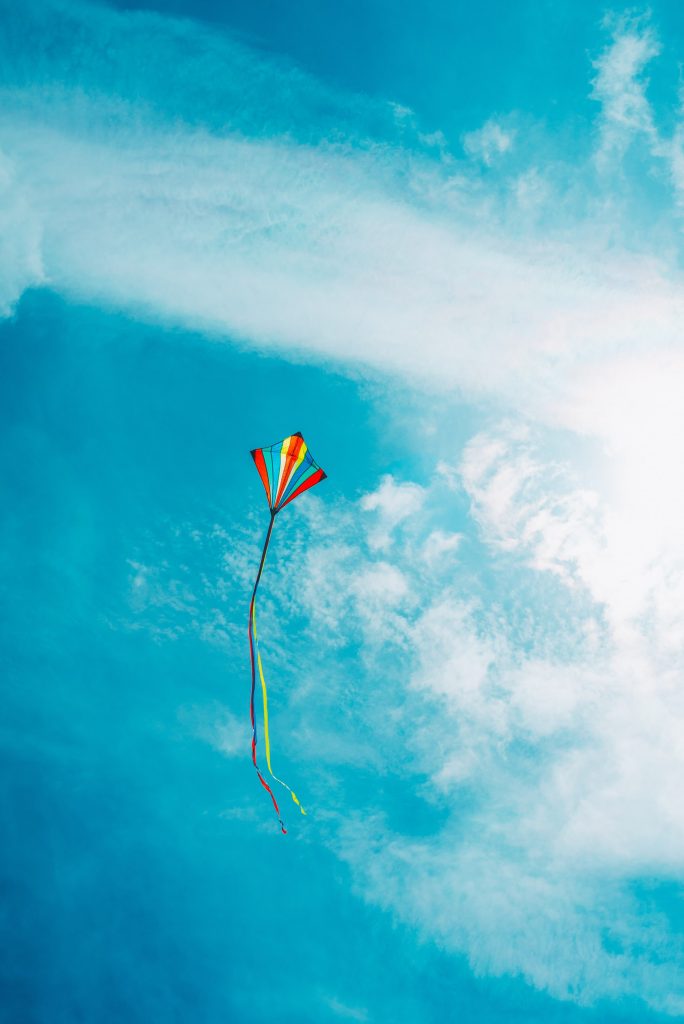
This Is the Day the Lord Has Made
Alleluia! Christ is risen! This is the day the Lord has made; let us rejoice and be glad! Alleluia!
Dear Easter, it is wonderful that you are here again! You are truly one of the best times of the year and I delight in the signs of your presence everywhere. Thank you for bringing your friend, Spring. You began to alert me about two weeks ago that you were just around the corner when I noticed the new life springing up all around. The perennials have begun to emerge promising to bring a feast of color to the front lawn soon and I admit that I have been eagerly keeping an eye on the trees next door looking for the first sign of leaves. In this neighborhood, the children have begun to play on the sidewalk again and some parents have hung Easter eggs on trees. You are welcomed with joy for you bring re-birth, new life, hope and God’s promise of faithful love for the world.
As I reflect on the hope that this season represents two different kinds of events come to mind. First, in my homeland of Guyana, South America, Easter is kite-flying season. It is a national tradition that on Easter Monday families would spend the day outdoors enjoying a picnic and helping children to raise their kites in the air. I consider the sight of hundreds of kites dotting the sky throughout the day to be one of the most beautiful experiences of the Easter season. From an early age I learned to associate this event with the resurrection. Catechists used this local tradition as a symbol to help children understand in faith the biblical testimony that Jesus rose from the dead and that He is truly alive. While Easter is a Christian celebration, kite-flying is for everyone. On Easter Monday, social and political struggles are transcended as communities share in a day of fraternity, friendship and mutual goodwill. This cherished national tradition provides for the people of Guyana a glimpse of the reconciled unity and hope promised by the resurrection of Christ and articulated recently in Pope Francis’ encyclical letter Fratelli Tutti.
The second event is the Holy Saturday liturgy during which the Elect receive the sacraments of Christian initiation. Having served on RCIA teams in parishes in Guyana as well as Trinidad and Tobago, I would say that there is no greater joy that night than witnessing the baptism of new members who were preparing for that moment for at least two years, in most cases. Their faces are usually filled with peace and hope as they look forward to life as Christians. Indeed, the newly-baptised often become much more enthusiastic members of their parish communities than life-long Christians. Their journey as neophytes continues throughout the Easter season as they move into the period of the mystagogia until Pentecost. The RCIA renews parishes. In my case, the recitation of baptismal promises became even more meaningful when made in the presence of new members who were an inspiration for a deeper engagement with the faith. The celebration of the sacrament of baptism is one of the preeminent signs of hope at Easter.
Dear Easter, you beckon Christians to look to the future now, especially as the pandemic comes to an end. For the Catholic Church, it means celebrating to the fullest extent possible over the next year and a half, two very important milestones Pope Francis has asked us to observe. The first is the Year of St. Joseph which began on December 8, 2020. It marks 150 years since he was proclaimed patron of the universal church. The second is the launch of “Amoris Laetitia Year of the Family” on March 19, 2021 to mark the fifth anniversary of the publication of this apostolic exhortation. After a year of sheltering-in-place with family, with all its tension and struggles, joys and delights, it is fitting that our church should celebrate families in their triumphs and accompany them in their challenges. In addition, for persons who had to shelter-in-place without family, ‘Amoris Laetitia Year of the Family’ coincides with the beginning of their ability to be reunited after months of separation. This is cause for celebration. In cases where families lost loved ones and could not gather in their time of grief, the year also coincides with their opportunity to finally meet to comfort each other in community.
The resurrection of Christ is the foundation of Christian hope. No matter what comes next the Easter event is the assurance that ultimately in Christ “all shall be well” (Julian of Norwich). Alleluia!
Happy Easter to all!
Read other InsightOut posts.
Emmaus O’Herlihy is an Irish Benedictine monk of Glenstal Abbey, Ireland. Trained in graphic design, he worked as an Art Director in Los Angeles, U.S.A., after receiving his BDes from National College of Art and Design, Ireland. Currently a doctoral candidate at the Faculty of Theology in the University of St. Michael’s College, Emmaus is exploring ways that liturgical art advance the full, conscious and active participation of the assembly during liturgy.
A Reflection for Good Friday: The Triune God’s Solidarity with Those Who Suffer
The primary ritual action of this Good Friday liturgy is the showing and veneration of the cross. Although everyone here is already familiar with how the cross symbolizes divine purpose, it’s worth remembering how Jesus’ violent and humiliating death by crucifixion posed an enormous challenge for early believers.
Crucifixion was an intentionally brutal and humiliating form of capital punishment in the Roman empire that was administered to rebellious slaves, enemies of the state or leaders of insurrection. Because of this, Robin Margaret Jensen’s study on the significance of the cross in the history of Christianity begins with, what she terms, the ‘Curse of the Cross.’1 She refers to Paul’s first letter to the Corinthians in which he writes that for Jews awaiting a kingly messiah, it was incomprehensible that this messiah would be crucified since crucifixion signalled a cursed death; for Greeks, a crucified god was, to put it simply, ludicrous. Such a death was contrary to logic and scandalous.2
The early Church’s response was to embrace the paradox of Christ’s death; to preach of Christ crucified and proclaim that such a form of death represented both the most intense expression of Jesus’ humility and the clearest indication of his glorious identity.3
Nevertheless, it took almost another three hundred years for images of the crucifixion to become commonplace as the identifying marker of the Christian faith.4 Even today, images of the crucifixion remain challenging—and I don’t mean to suggest those occasions when contemporary artists reinterpret Christian iconography. Images of the crucified Christ engage our imagination, they tease out the significance of the events of Christ’s death: It is not enough to recall that Jesus died but to reflect upon how he died.
In the Pauline epistles, arguably the earliest testimonies to the place of the cross in Christian theology, Paul explains that those who count themselves wise or who seek more positive signs will judge any celebration of the crucifixion to be a kind of madness.5 What’s more, it’s the kind of madness that has multiple sides to it. One side to this madness can be identified in the accompanying image (see illustration). It reflects the theme that the Dominican community in Toronto has chosen for this year’s Triduum: the Triune God’s solidarity with those who suffer, especially those victims of violence.
The image shows an illumination from the 14th century that depicts what would, by the 16th century be termed the Gnadenstuhl motif.6 Translated as Mercy Seat or Throne of Grace, the German term refers to this trinitarian motif to underline the significance of identifying the Trinity as present in the death of Christ. In her study of the Incarnation through an aesthetics of vulnerability, Susie Paulik Babka writes that among those images that attempt to translate difficult and abstract concepts into visual expression, this motif invites Christians to consider that the darkness which accompanies us in times of catastrophic suffering, and especially at the moment of our death is nothing less than “the dwelling place of God.”7
An initial glance at the illustration is enough to show that this motif involves a trinitarian dynamic centred on the passion of Christ. God the Father is usually seated (sometimes on a throne), and supports the dying or dead Christ. The Holy Spirit, represented as a dove, is most often positioned between the Father and the Son. In seating the figure of the Father on a stool or a throne, this motif subtly alludes to Old Testament references to the mercy seat “understood as the point of contact between God and humanity; the locus of divine presence on earth,” …the critical point of mediation between heaven and earth.9
In the composition in this image, symbols of the four evangelists surround the diamond shape within which the Father holds the horizontal beam of the cross onto which Christ’s body is nailed. Whether or not an actual cross is present, “the unifying thread of nearly all the works of art that utilize [this] motif is the theme of unity between heaven and earth in the passion of Jesus…”10
The Holy Spirit, symbolised as a dove in flight, is a “vital part of the composition.”11 Positioned between the Father and the Son, the wings of the dove touch the Father’s lips and the head of Christ, acting as a bridge between the first and second persons of the Trinity. By echoing the shape of the cross, the figure of the dove emphasizes the Spirit’s dwelling with Christ, becoming what Jurgen Moltmann describes as “Christ’s ‘companion in suffering’.”12 Jesus’ experience of catastrophic suffering effects all three divine persons: The “tenderness of the relationship between the Father and the Son,” a bond preserved by the Spirit, “is somehow comforting” even while it reminds us of the suffering of the tortured.13
This image highlights something of both the ordeal of human suffering and the depth of Divine witness to it. Babka writes that “just as heaven and earth join to praise God in the liturgy, … heaven and earth join to mourn the death of the Son in solidarity with all who suffer catastrophically.”14 As an image of God, the ‘highest being,’ the Three in One, the Gnadenstuhl motif subverts any understanding of God as abstracted from our own experiences of isolation or illness, humiliation, brokenness, or pain.15 The cross is “the event in which God takes the absurdity of catastrophic suffering into God’s life and being” ; the triumph of the cross affirms the depth of God’s solidarity with the ordeal of suffering, with all who suffer.16 The “emotionaland theological impact of this image …occurs in an aesthetics of vulnerability” that challenges indifference to the suffering of others.17
By offering us a glimpse of both human frailty and divine grace, this image alerts Christians of the need to maintain a vigilance to the suffering ‘other.’ In venerating the cross, we are not only called to behold Christ in his great act of love and respond with veneration to the symbol of the way he died. When we kiss, bow or genuflect to the cross, we also commit ourselves to seeking Christ in the ‘other’ who suffers. We testify to what this image’s depiction of the Trinitarian presence at the moment of Christ’s death encapsulates: that God becomes incarnate where there is catastrophe; that by fully sharing human suffering in a humiliating death, God invites us to “stake our subjectivity” in the suffering of Christ, of the ‘Other,’ the Christ who suffered and died on the cross two thousand years ago, and the ‘other’ whom we identify as Christ suffering in the present.1 And in this is our hope, because we are ‘followers of Jesus’ whose death on the cross did not end in failure but in Resurrection—the definitive revelation of Jesus as Son of God, the second person of the triune God, and the conclusive reassurance that belief in the risen Jesus correlates with our deepest experiences and our ultimate hope for renewal.
1 Robin M. Jensen, The Cross: History, Art, and Controversy (Massachusetts: Harvard University Press, 2017), 1.
2 Ibid, 4-5. Although Jensen writes that “Paul’s focus on the mode of Christ’s execution emerges most fully in his letter to the Galatians [when he] “acknowledges the fact that Christ’s death on the cross was an obstacle to belief in Jesus as Messiah,” (Gal. 5:11), she adds that “Paul employs the cross in a more metaphorical sense” in 1Cor. 1:19.
3 See, for example, 1 Cor 1:23, where Paul writes “we preach Christ crucified…”
4 See also Jeffrey Spier, Picturing the Bible: The Earliest Christian Art (New Haven: Yale University Press, 2008), 227: “…there is a rarity of depictions of the crucifixion in Early Christian art. The image is entirely absent from the catacombs and sarcophagi in Rome and does not become common until the Byzantine period [during] the late sixth century.”
5 See Justin Martyr and 1 Cor 1:18-25. Also Robin M. Jensen, The Cross: History, Art, and Controversy, (Massachusetts: Harvard University Press, 2017) 1, 5.
6 This illumination is found in the Die Dietsche Doctrinale by Jan van Boendale, c.1374. The word Gnadenstuhl is thought to originate with Martin Luther’s use of the term in his 16th century translations of Exodus (25:21-22) and Hebrews (4:16) which refer to ‘mercy seat.’
7 See Susie Paulik Babka, Through a Dark Field: The Incarnational through an Aesthetics of Vulnerability (Minnesota: Liturgical Press, 2016), 225.
8 The most familiar probably being Masaccio’s Trinity at the Dominican church of Santa Maria Novella in Florence, c.1427.
9 Babka, Through a Dark Field, 207, (who also refers to Ezekiel, Isaiah, Daniel, 204-205).
10 Ibid, 196.
11 Ibid, 204.
12 Ibid.
13 Ibid, 225.
14 Ibid, 196.
15 Ibid, 194.
16 Ibid.
17 Ibid, and 192.
18 Ibid, 225.
Read other InsightOut posts.
Maya Martin-Spisak is a third-year student majoring in History, with a focus in Law and History, and double minoring in Linguistics and Book and Media Studies. She is from San Diego, California but has also lived in other parts of the U.S., the Philippines, Belgium and Taiwan. At St. Mike’s, she has served in various roles in the Mentorship Program, Orientation, Residence Council, and House Councils. She is currently serving as the Mentorship Program Coordinator and Residence Council President.
My Experience as an Asian-American Woman
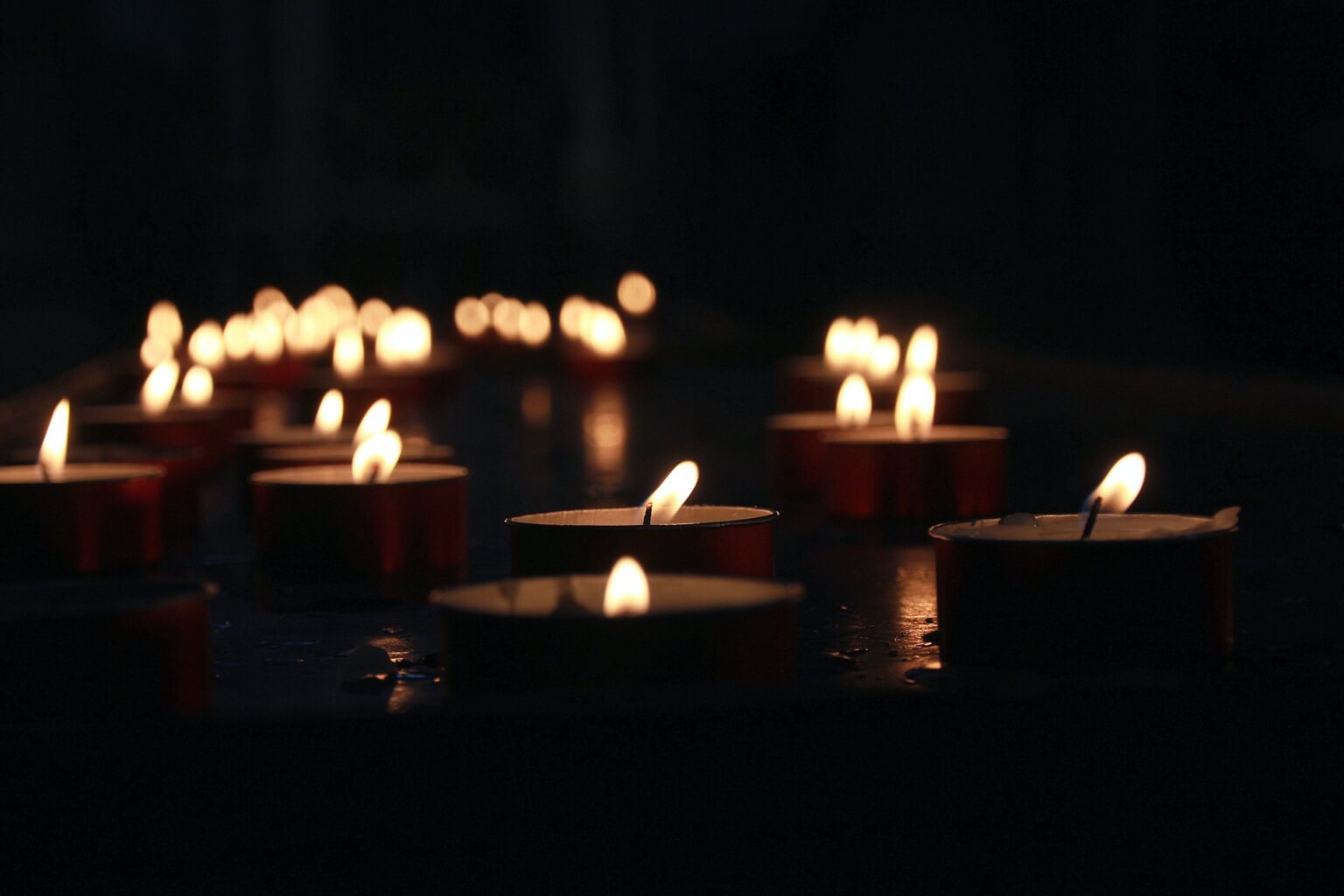
Firstly, I want to acknowledge that the following article is about my personal experience and is not meant to represent anyone else’s.
I was originally going to write about my 58 days in self-isolation quarantine. However, due to the recent events in Atlanta and the steep rise in Asian hate crimes, I thought it was more suitable to write about my experience as an Asian-American woman, though I’m not sure what to write. There’s so much to unpack and I don’t know where to start without feeling overwhelmed. How am I supposed to react when people who look like me are the targets of assault and hate crimes? How are we supposed to speak with our communities in a way that is productive for everyone, including people who refuse to acknowledge the hardships of minority communities? There isn’t one way or easy answer to any of this. I’m still mulling over these questions and processing all the events that have happened in the past year. But I’ll tell you what I’ve come up with so far:
The murder of Sarah Everard was gut-wrenching. She took every safety precaution she could on her walk home. Everard’s case highlighted the violence and harassment women face. And not even two weeks later, we wake up to hear about the terrible events in Atlanta. It gave me a wave of emotions. I was devastated to hear about more violence against women and yet another mass shooting in my home country. It broke my heart that someone had deliberately targeted the spas and killed Xiaojie Tan, Daoyou Feng, Hyun Jung Grant, Suncha Kim, Soon Chung Park, Yong Ae Yue, Delaina Ashley Yaun Gonzalez and Paul Andre Michels. I felt infuriated when Captain Jay Baker defended the killer, saying that he was having a “bad day.” And I was scared by the thought that I or someone I knew could be a victim of another attack. But through all that, I was and still am thankful for my friends and family who reached out to offer their support.
Later that day, I tried going on a walk to recenter myself but after reading about the significant rise in Asian hate crimes in Canada, I found myself on edge and looking over my shoulder the entire time. As a woman, I’m always careful of where I go. However, due to recent events, I have felt like I needed to be even more cautionary because I am an Asian woman and I felt like those two factors made me a very vulnerable target. It was similar to a feeling I had almost a year ago at the start of the pandemic: people who looked like me did not belong here. Rewind to this time last year: It was after one of former U.S. President Donald Trump’s press conferences where he had blamed China for the spread of COVID-19 and referred to it as the “China virus.” I had gone to a store to pick up some moving supplies where I seemed to be one of two East Asian people there. The other customers in the store made a point to avoid the two of us at all cost as if we were the only two people who could carry and spread COVID-19. The customers didn’t care about how close they stood to each other as long as the other East Asian person and I weren’t near them. In both cases, I was scared of the people who were scared of me because of their prejudice against Asians.
This prejudice is not new; it has been around for a long time. In Canadian history, many policies have codified Asian prejudice into law. The Chinese Immigration Act of 1885 made it so that the Chinese were the only ethnic group required to pay taxes to enter the country, and through the Chinese Immigration Act of 1923 the government banned Chinese immigration with little exceptions. An indirect result of these acts was the model minority myth, along with micro-aggressions, stereotypes, slurs, and fetishization—all of which are still present today and things I have experienced.
It’s taken a lot of effort to work through my identity. I am a Chinese adoptee raised in an American family. I don’t speak Mandarin, celebrate a majority of Chinese holidays, or have Chinese family members. When I was younger, I didn’t feel part of the Asian community. But even then, I had internalized and normalized a lot of the micro-aggressions, stereotypes, and model minority myths used against the Asian community. The “(you are not American, you are a foreigner) where are you really from?” and the “You’re good at that because you’re Asian.” I found myself discrediting my achievements and hard work by attributing them to my ethnicity instead. There was a point where I wished I had paler skin and Eurocentric features because of the media around me. I grew up in a household that pushed me to study what I wanted, but I still felt ashamed when I decided to major in the humanities over STEM because of the Asian STEM stereotype. And yes, being polite and successful are great traits to strive for but the model minority myth takes those characteristics and erases the rich diversity of Asian–North American backgrounds by creating a monolithic monster full of misconceptions. It took me years of work to break down those internal stereotypes, prejudices, and myths that had been part of my foundations from an early age. And I know I’m not done. Erasing those preconceived notions and internalized racism will be something I have to work on for the rest of my life.
In relation to recent events, I am grateful that people have taken to their media platforms to educate themselves on facts and misconceptions about Asian communities. But it’s not enough. It takes a lot of time to read, question yourself, and feel uncomfortable to undo the prejudices that are rooted deep within ourselves. And it’s important to listen to the stories and experiences people give, they can provide a perspective you might have not thought of.
Overall, my experience as an Asian-American woman has been difficult at times but I wouldn’t change it. I’ve grown a lot and become more confident in my own skin and great heritage. I hope other people find ways to do the same.
Read other InsightOut posts.
Samuel Ojiefo Ejeregbe was born in Nigeria but spent most of his adulthood in the United Kingdom. He holds a First-Class Honours degree in Law from the University of Buckingham, with legal mini pupillages in London and Internship in New Jersey. U.S.A.. He also attended Allen Hall, Archdiocesan Seminary of the Archdiocese of Westminster, London UK, where he was awarded a Diploma in Philosophy from the Pontifical University of Saint Patrick in Maynooth, Ireland. He was awarded a scholarship from the Sir Christopher Ondaatje Scholarship Board for a master’s degree in law as a specialist in Financial Services Law and graduated with Distinction. He is currently studying for the Master of Divinity (M.Div.) degree at the Faculty of Theology in the University of St. Michael’s due for graduation in Fall 2021. He loves playing tennis, cooking and theological discourse.
Readying Ourselves for Palm Sunday
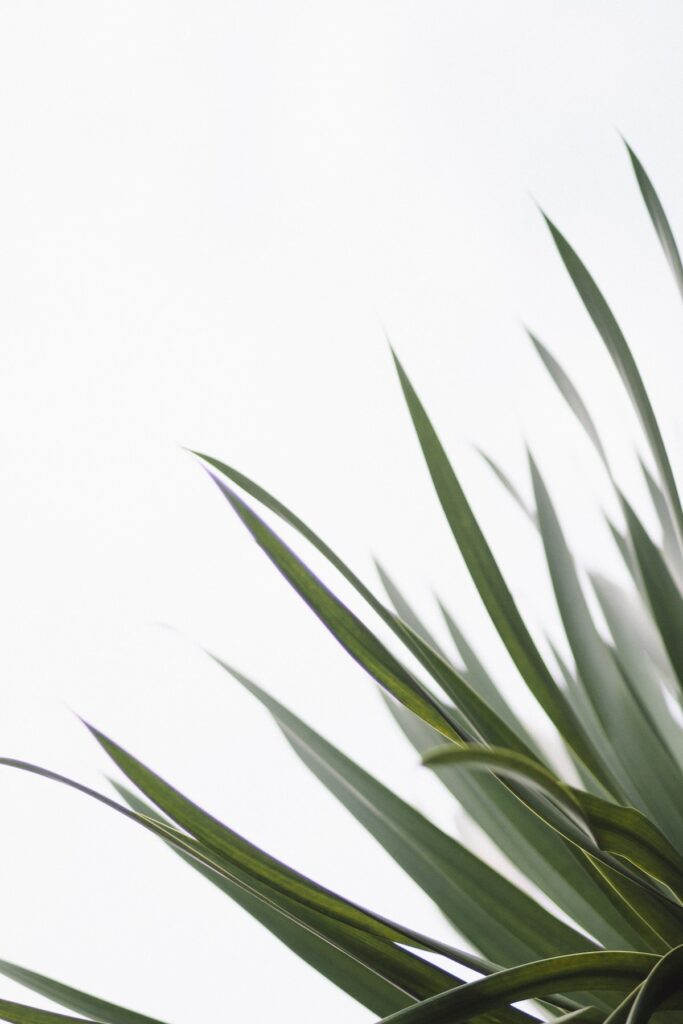
The COVID-19 pandemic, without any shred of doubt, made the annual Lenten observances move so fast due to restrictions in public worship, with many following with online liturgy. Despite a limited number of people—10—allowed to attend public Masses—and with all the restrictions—we have journeyed through Lent with a monastic spirit. Whatever the case, it is certainly a Lent that we will always remember! Perhaps now we can reflect upon all the many and rich symbols that we associate with Holy Week and Easter. So, let us begin by reflecting on the signs of Palm Sunday that would lead us through the Easter Triduum to celebrate the resurrection of our Blessed Lord.
As a teenager, I always braced myself for Palm Sunday prior to Easter celebrations because of the lengthy readings. I got exhausted standing whilst the Narration of the Arrest, Trial, Death, Burial, and Resurrection of Jesus Christ was read, though moving to hear. I quietly wondered why the long narration when we were marking the triumphant entry of Jesus into Jerusalem. I felt it should be called Passion Sunday. The drama group of my local parish, St. Patrick’s Sapele, made it even more special as an adult would ride on a donkey with palms, depicting the triumphant entry of Christ.
What I quickly noticed from Palm Sunday was the very fact that the people who applauded Christ’s entrance into Jerusalem, shouting “Hosanna” and words of adoration, within a week, would be crying, “Crucify Him.” Previously, our Lord had deliberately avoided popular acclaim, even fled, but this, upon entering Jerusalem, he accepts. Seeing him on a donkey, those around him remembered the words of the Prophet Zechariah, “Exult O daughter of Jerusalem, behold your king is coming to you and riding on a donkey” (Zec 9:9-10).
Pope Benedict XVI explained that the prophecy of Zachariah relates to Jesus: He is a king who destroys the weapons of war, a king of peace and simplicity, a king of the poor and he was clearly not building any revolt against Rome. Riding on the borrowed donkey, Jesus made a humble entry into the city of Jerusalem whilst the crowds surged at him and scattered their garments on the floor and waved branches, a poignant moment that foretells that this triumphant hero will be dealt with like a criminal and killed. Palms do have a symbolic gesture, a sign of victory. On Palm Sunday thankfully with the increased numbers for public worship, hopefully we can be able to go out to meet Jesus, carry the blessed palms, joyfully sing out our hosanna and join in his triumphant entry into Jerusalem.
But our joy soon turns to utter sadness as, holding our palms, we hear the narrative of Christ’s passion. We realize, once again, that his triumph, his true victory, will come through the Cross. We know, as Jesus did, how Holy Week will eventually end. We know that joy will turn to sorrow and back to joy. We know that through the sufferings of Christ, followed by his resurrection, good will surely triumph over evil. We know that many today are fatigued and may be going through mental challenges triggered by the continuous lockdown caused by COVID-19 but we are assured that it will not last forever and we shall, God willing, return to normalcy in no distant future and healing to those suffering.
What is customary on Palm Sunday is the opportunity to take our palms home, a subtle reminder of victory, that no matter how long the darkness may last, brightness will come and joy will be overflowing. Let us not forget that it was on the Cross that Christ conquered. So, as we begin Holy Week with Palm Sunday, let us keep our eyes on the Cross; Christ is with us always till the end of time.
Palm Sunday is a robust time to reflect on what Jesus has done for us; it is not just some distant story or something remote from us. It is about what God has done for us; it is about our salvation and our life. We are not just passive spectators, or listeners: all that we recall on Palm Sunday (and during Holy Week and Easter of course) is about what Jesus has done for us. This is such a hopeful message as we continue to try and do our best in this strange and difficult situation that we face at the moment in a pandemic.
The opening address on Palm Sunday Mass expresses this very well: “with all faith and devotion, let us commemorate the Lord’s entry into the city for our salvation, following in his footsteps, so that, being made by his grace partakers of the cross, we may have a share also in his Resurrection and in his life.” Amen.
I wish you, your loved ones and families a Blessed Palm Sunday.
I call you blessed.
Read other InsightOut posts.
Renata Brum is a Regulated Canadian Immigration Consultant (RCIC). Prior to founding Brum Immigration in 2018, she was the Senior Citizenship Judge of Canada, with Immigration, Refugees and Citizenship Canada for 5 years, responsible for supervising and training 36 citizenship judges. Reporting directly to the Minister of Citizenship and Immigration Canada, she was a citizenship judge for 6 years prior to her appointment as Senior Judge. Renata is an alumna of St. Michael’s and a former Vice Chair of the Collegium.
Helping International Students Navigate Canada’s Immigration System During the COVID-19 Pandemic

The COVID-19 pandemic has been an unprecedented and disruptive force in all our lives. Our daily routines have undergone significant upheaval and our social interactions have become largely virtual—a practice that disrupts our intuitive inclination to connect through personal presence and physical touch.
Staying physically apart has had a significant impact on all students in Canada who have had to muster up new levels of resilience and creativity as they adapt to online learning and to prolonged isolation from their friends and classmates with whom they normally interacted with over the course of their studies.
Perhaps one of the harder hit groups has been international students, who are often in Canada with limited support, without their family members, and who have now been separated from their friends and communities for almost a year as provincial and federal lockdowns and restrictions have strictly curtailed social gatherings.
Additionally, the sharp decrease—or in many cases, total suspension—of in-person learning, looming immigration status expiry dates, and an unclear future with regard to job opportunities, have left international students with justified anxieties about what comes next.
Over the course of the past year, I have had the opportunity to help international students navigate the murky, and often overwhelming, information provided to them by Canadian immigration officials. These clients in particular touch a nerve, elicit a deep, intuitive and reflexive compassion, since they are the age of all of my five children—18–24—who are themselves reaching beyond their grasp toward the future they are dreaming for themselves.
During these unusual times, I have assisted international students with applications for initial study permits, extensions of their status in Canada, applying for Post Graduate Work Permits, and have assisted financially precarious students obtain emergency work permits—notwithstanding their student status—so they could work full-time and support themselves in Canada.
My clients’ stories and struggles as they navigate how to continue their dreams of making a better life for themselves in Canada continue to inspire me. I recently worked with a young student, a brilliant aerospace engineer who, having been disowned by his family, was alone in Canada without any support. He found himself on the brink of poverty, utterly destitute, and with no way to pay his tuition unless he was able to work full-time. Bound to part-time work by the conditions imposed on him as an international student, he did not know what to do. When we connected, I was moved. My maternal instincts kicked in. I offered him a room in our home and then set to work on his immigration status. I knew he was an ideal candidate for an emergency “destitute” student work permit. I took on his case pro bono and successfully obtained his work permit authorization—in 3 months—giving him the ability to adequately support himself in Canada.
Fortunately, in the wake of the COVID-19 pandemic, Immigration, Refugees and Citizenship Canada (“IRCC”) has introduced a variety of policies aimed at assisting international students begin and continue their studies and at obtaining the proper authorization to work after they have completed their program.
Applying for a Study Permit
Before travelling to Canada, the vast majority of international students must apply for a study permit. Only citizens and permanent residents of the United States of America, and limited others may apply for a study permit at a port of entry at this time. Unsurprisingly, study permits issued to students online and before travelling to Canada are delayed—so be prepared for a wait.
Entering Canada
International students who have a valid study permit or letter of introduction confirming that their application for a study permit has been approved and that they have been accepted to a designated Canadian school that has an approved COVID-19 readiness plan are exempt from the travel restrictions currently in place. This exemption also applies to accompanying family members of workers or students who wish to study in Canada.
Technical Bits — Extending Your Studies & Restoring your Status
What if your study permit has expired and you need more time to complete your studies or you wish to pursue additional studies in Canada? You may apply to extend your study permit online.
If your study permit has already expired, you may be eligible to restore your status. If it has been less than 90 days since your study permit expired, you can restore your status as a student by applying online. In addition to these provisions, there are special measures for students whose status has expired beyond 90 days—an unusually compassionate step for those who were particularly hard hit by COVID-19 uncertainties.
Working in Canada After You Complete Your Program: Changes to the Post-Graduate Work Permit Program
Eligibility for a Post-Graduate Work Permit (PGWP) now varies greatly depending on whether you are inside or outside of Canada. These requirements are technical, and it’s best to call us for advice before applying.
Mandatory Quarantine
Although international students are exempt from the travel restrictions, they are not exempt from the mandatory 14-day quarantine requirement. On February 21, 2021, all international travellers (except for a few limited exemptions) are required to enter a government-approved quarantine facility for a period of 3 days as they await the results of the COVID-19 test they underwent upon arriving in Canada.
We continue to assist international students at all stages of their studies in Canada in navigating Canada’s immigration system.
Emma Hambly is a communications coordinator at the University of St. Michael’s College. She has a B.A. in English Literature and Classics from McGill University, and an M.A. in Literatures of Modernity from Ryerson University. In her spare time, she sews, makes collages, designs zines, writes comics, and looks for more hobbies.
A year of friendship at a distance

In September 2019, my best friend travelled almost 14,000 kilometres to New Zealand on a work/study visa. We kept in touch the best we could, video chatting each other at those rare moments when the 18-hour time difference worked for both of us. Once she called while she was halfway through a mountain hike and had to yell over the high winds.
In March 2020, she caught one of the last flights back to Canada before New Zealand went into full lockdown, so that she could be with her family as everyone sheltered out the surging pandemic. I never imagined that I’d be video calling her just as much when she lived only 20 minutes from me as I did when she was half a world away.
Somehow, suddenly, we’ve marked a full year since everything changed. A year since the World Health Organization classified COVID-19 as a pandemic. A little less than a year since we all realized the whole staying-at-home-thing wasn’t going to blow over in two weeks.
One of the many, many things that we’ve had to adapt to during this time is friendship at a distance. Figuring out how to stay in touch with anyone outside our quarantine bubbles has taken resourcefulness, perseverance, and so, so much patience. Thank goodness I have friends who are always willing to put in the effort.
It started with trivia. A month into the pandemic and tired already of group Zoom calls with nothing real to update one another on, my friends and I started creating and hosting trivia nights. They’re silly and fun and a great distraction, but also a surprising lens into my friends’ personalities. Our American expat got us all into Texan history, and who knew that her husband had an encyclopedic knowledge of world flags? My best friend asks questions about cooking and wonderfully evocative Yiddish words. A usually laid-back friend puts on a blazer and gives his best cheesy game show host impression whenever it’s his turn.
We keep coming up with creative ways to spend time with each other and push through the quarantine fatigue. Playing video games and board games online, synchronizing our watches or counting down so that we can watch movies at the same time, celebrating the strange creature that is the pandemic birthday.
A year of quarantine feels like a concrete signpost in what has otherwise been a shapeless span of time. I don’t need to tell you how much everyone has lost. And I know how lucky and privileged I am that my loved ones are still safe and healthy and employed.
But I hope it’s fair to say that I’m missing the little things, like going to the movies, making tea for my friends, staying up too late dancing, even being able to sit in companionable silence without having to say no, my screen isn’t frozen.
This feeling of wistfulness has made me want to focus on what I could make of quarantine, rather than on what I was lacking. It ended up leading to the best thing to come out of my personal experience with this year: pen pals.
I love writing and have always thought exchanging letters with someone, sounded wonderful. Why not try it now, with all this time at home? It turns out many people had the same idea.
I posted on a “seeking pen pals” message board and described myself and interests a little—hoping to find one or two people to connect with. Long story short, I received way more responses than I expected, and I now have more than 20 pen pals. I had to make a spreadsheet to keep track of them all.
So, for the past few months, I’ve been sending letters to places all over the world: a spread across Canada, six different American states, three cities in the UK, even two spots in New Zealand.
Alongside letters, I’ve received stationery, stickers, Polaroid photos, tea bags, and a hand-drawn comic. I get to see all the care and creativity people put into their letters, and there’s something heartwarming and personal about seeing someone else’s handwriting.
I’ve been learning what life is like for people in different countries—almost like travelling without travelling. A primary school teacher from Dublin sent me a list of Gaelic phrases and a handmade St. Brigid’s cross—a traditional Irish symbol of protection. A grad student in Singapore sent me a nengajou (Lunar New Year card)she painted herself, and wrote about eating mandarin oranges and pineapple tarts during the holiday.
Despite how far flung we are, there’s so much we have in common. I’ve connected with my pen pals over our shared love of reading, making art, playing Dungeons and Dragons, and watching bad movies. I get to learn how other people have been coping with the pandemic, and share in their joy when vaccine supplies get announced.
One day, when it’s safe to fly again, I’ll have friends in other countries I can meet for the first time.
It’s been a hard year. Something that keeps bringing me comfort is people proving, again and again, that they want to stay connected. That they want to keep friendships going, no matter the odd shapes they take these days.
As we look forward, tentatively, to warmer days and vaccines, I hope we can take pride in our bonds with other people, knowing how much harder we had to work for them.
Read other InsightOut posts.
Michael Valpy is a Canadian journalist and author. He wrote for the Globe and Mail newspaper where he covered both political and human interest stories until retiring in 2012. Through a long career at the Globe, he has been a reporter, Toronto- and Ottawa-based national political columnist, member of the editorial board, deputy managing editor, and Africa-based correspondent during the last years of apartheid. He is a Senior Fellow at Massey College and at the Munk School of Global Affairs and Public Policy.
Examining the New Face of Media Ethics

Media ethics until the advent of Donald Trump and the mighty winds of Big Tech social media has been one of those polite topics of discourse like how does Canada’s constitutional monarchy work—important to those committed vehemently to one side or the other, but otherwise kind of meh.
No more.
The banging drum beats of “Fake news! Fake news!” from the Trumpian White House and the bedlam of political and social misrepresentations over Twitter, Facebook, Parler and the like— it’s not pronounced “parler” as in “to speak,” by the way; it’s pronounced like “parlour”—has redesigned how we communicate with one another (we tell a huge amount of lies and journalistic objectivity is increasingly a matter of opinion) and made us search earnestly for new and maybe dangerous rules of censorship.
Bringing me to the course I am teaching this term in the Book and Media Studies program. It’s called Media Studies. It has 63 third- and fourth-year students, about two-thirds of them in Toronto with a handful thinly scattered across the rest of North America, and one-third in China, Taiwan, South Korea, and India, plus a lonely soul somewhere in Eastern Europe.
Because the subject is redefining itself at high speed, I decided to teach just the minimum basics of media ethics myself—using the illustration off what’s known as The Potter Box to demonstrate the media ethics of facts, values, principles and loyalties—and rely on experts from elsewhere in Canada and the United States more knowledgeable and up-to-date than I am to Zoom into the class and be questioned by students.
This is the first time I’ve taught online and my suffering students have had to put up with my disorganization, for which I offer them an apology, but there have been so many plusses. Online digital learning can offer more than freedom to eat snacks unseen during lectures.
Jeffrey Dvorkin came into the class with his new book still in proofs, Trusting the News in a Digital Age (Wiley). In his stellar career, he had been chief journalist and former managing editor of CBC Radio, former vice-president of news and ombudsman for U.S. National Public Radio and until last year director of the journalism program at University of Toronto Scarborough.
Mathew Ingram, the chief digital writer for the Columbia Journalism Review, came to class to talk about the QAnon cult that made its presence forcefully felt at the Jan. 6 riot at the U.S. Capitol and what the mainstream media did to encourage Donald Trump’s political successes—the air time and free advertising ($2 billion USD worth, according to one estimate) given to him by TV networks like CNN, because they knew he would attract a crowd, in much the same way a car accident does.
Also the example of NBC: In the wake of Trump’s refusal to attend a virtual presidential debate with Joe Biden, the network offered the president his own town hall event and scheduled it at the same time as Biden’s previously announced town hall (at Trump’s behest).
In other words, said Ingram, the network treated a debate between candidates for president of the United States as though it were the finale of a celebrity cooking show.
We welcomed into the class Robyn Smith, the young editor-in-chief of Vancouver’s successful on-line Tyee newspaper to talk to us about the values and ethics of the alternative media and what drives its journalism.
One of the stars of our class visits has been Harvard’s Joan Donovan, research director of the Kennedy School’s Shorenstein Center on Media, Politics and Public Policy, who helped my students explore what regulatory controls can be put on the social media giants like Twitter and Facebook that can compel them to steer clear of destroying democracy without destroying freedom of speech in the process.
And then the wonderfully lively Jesse Brown, founder and publisher of Canadaland, came into class to talk about what it truly means to run a media organization free of the systemic bias of tilting toward the values of societal elites, my favourite aspect of media ethics. Then, following Brown, Frank Graves, president of EKOS Research, one of Canada’s leading polling firms, spoke to the class about avoiding shoddy or misleading polling in media.
We have more to come before the term ends.
The CBC’s Nana aba Duncan will talk to us about racism in the media. Concordia University’s Marc-André Argentino will explore with us the nexus of technology and extremist groups. And our last visit will be senior New York Times writer Jim Rutenberg who will talk to us about whether political reporting is still alive and healthy.
It’s been interesting.
Read other InsightOut posts.
In 2020, Sister Penny McDonald celebrated her diamond anniversary of her entrance into the Congregation of the Sisters of St. Joseph of Toronto. After obtaining a BA at St. Michael’s, her main ministry until 1995 was in education, as a secondary school teacher and administrator. Sister Penny realized her need to deepen her theological understanding for her work with students and in the field of vocational discernment, and was awarded a Master of Divinity degree at St. Michael’s Faculty of Theology. In 1995, Sister Penny moved from teaching to volunteering at St. Michael’s Hospital in the HIV clinic. Later, she directed the Drop-In, a place for women who were homeless or under-housed. For the past 14 years, Sister Penny has worked at Providence Healthcare as a volunteer in the Adult Day Program. The joy and satisfaction of serving in one of the original ministries of the Sisters of St. Joseph in Toronto, and of being part of a welcoming community of compassion, hope, and healing, has been source of joy.
“Listen to what life is asking you”
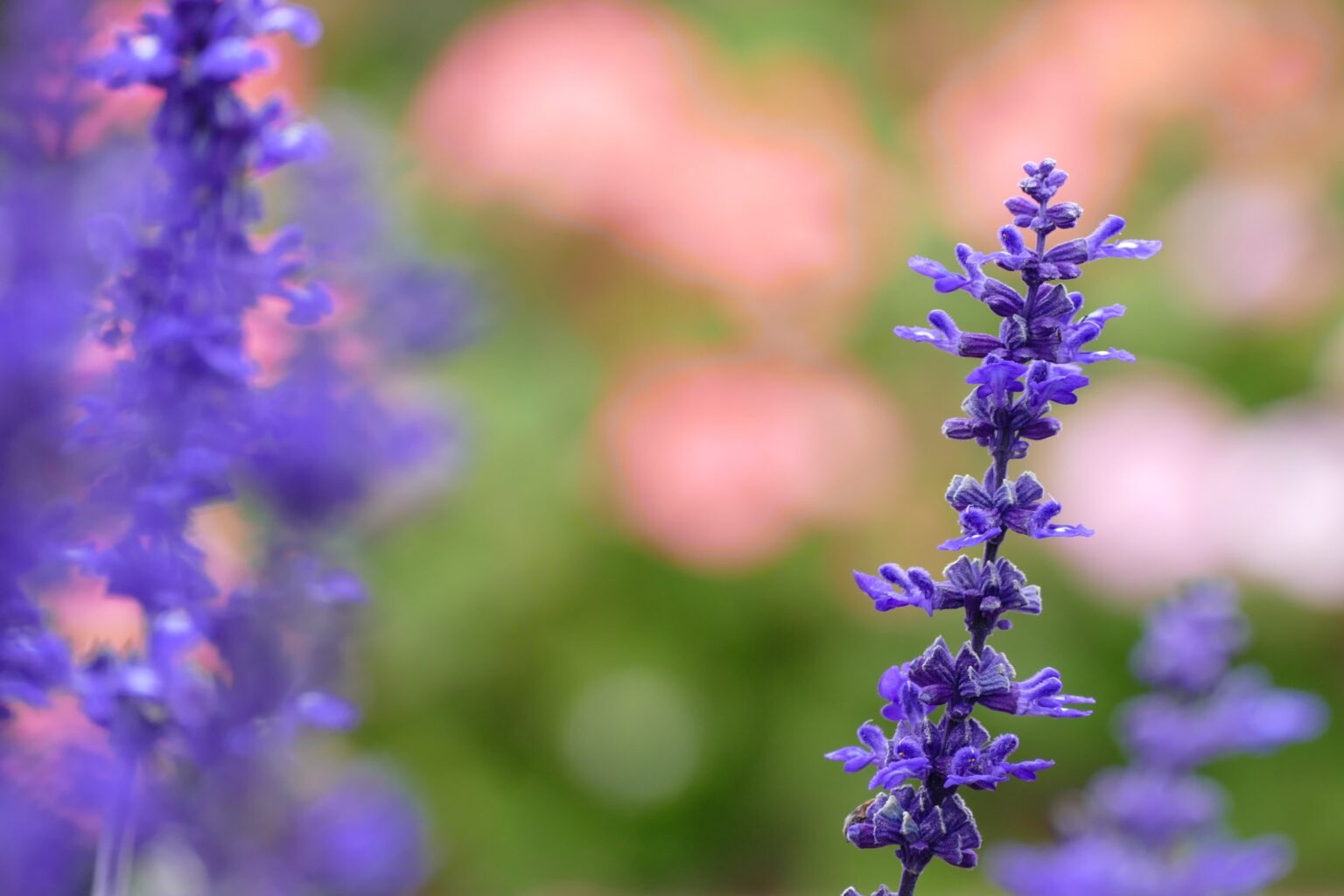
On Thursday March 13, 2020, I returned home from Providence Healthcare, where I have volunteered for 12 years in the Adult Day Programme (ADP), a programme for people who have dementia and are living at home. The following day I received an e-mail informing me that all volunteers were suspended until further notice. When I left Providence Thursday I had no idea that I would not be returning on Tuesday to be with the club members and staff.
I am a Sister of St. Joseph of Toronto, and the Charism of our Community is reconciliation and service of the dear neighbour. It is a challenge for me to accept that loving my neighbour is to stay home, to wash my hands, to wear a mask. In contrast, Our Foundress, Sister Delphine Fontbonne, arrived in Toronto in 1851 with three other Sisters in the midst of the Typhus epidemic and took on the management of an orphanage on Jarvis Street. For these Sisters, loving the dear neighbour meant living with the orphans, establishing schools, planning the House of Providence, which would accommodate hundreds of poor seniors, the sick, and immigrants. Sister Delphine died on February 7, 1856. She had stayed with a woman who was alone and distraught, and she had tended to the sick Sisters in her Community.
Today, of course, I want to be with the club members and staff of the ADP, and I await the day when the COVID-19 pandemic will end. Until such time, in the words of Dr. Ted Dunn, as expressed in his book The Role of Meaning-Making in Transitional Times, I “listen to what life is asking me.” I find purpose and meaning in being aware of the suffering in our world, following the news and world events, entering into committee work carried on with Zoom, sorting and organizing and packing, exercising, praying, gardening, reading, listening to music, crosswording. For this moment in time my life is changed. I believe the change is not forever!
This year our Congregation is celebrating God’s goodness to us for 170 years. It is our prayer that we be healers and show the compassionate face of God to our dear neighbour. March 8 is International Women’s Day and I thank God that I belong to a Community of women—a Community that dates from 1648 in France. I live in the Grace of all the women who spent their lives in service of the dear neighbour without distinction and in fidelity to our call to continue the mission of Jesus “that all may be one”.
Source: Ted Dunn, PhD The Role of Meaning-Making in Transitional Times
Read other InsightOut posts.
Nick Pantaleo, FCPA, FCA, SMC8T0 B. Comm, is a retired executive of Rogers Communications Inc. and a former partner at PricewaterhouseCoopers. He is a Senior Fellow at the C.D. Howe Institute. Recently, he took time to meet virtually with students as part of St. Mike’s Alumni Mentorship Program.
Change is Constant
Where has the time gone?
I blinked and suddenly I found myself in a virtual meeting with future St. Mike’s grads almost 41 years after my own graduation! 41 years!
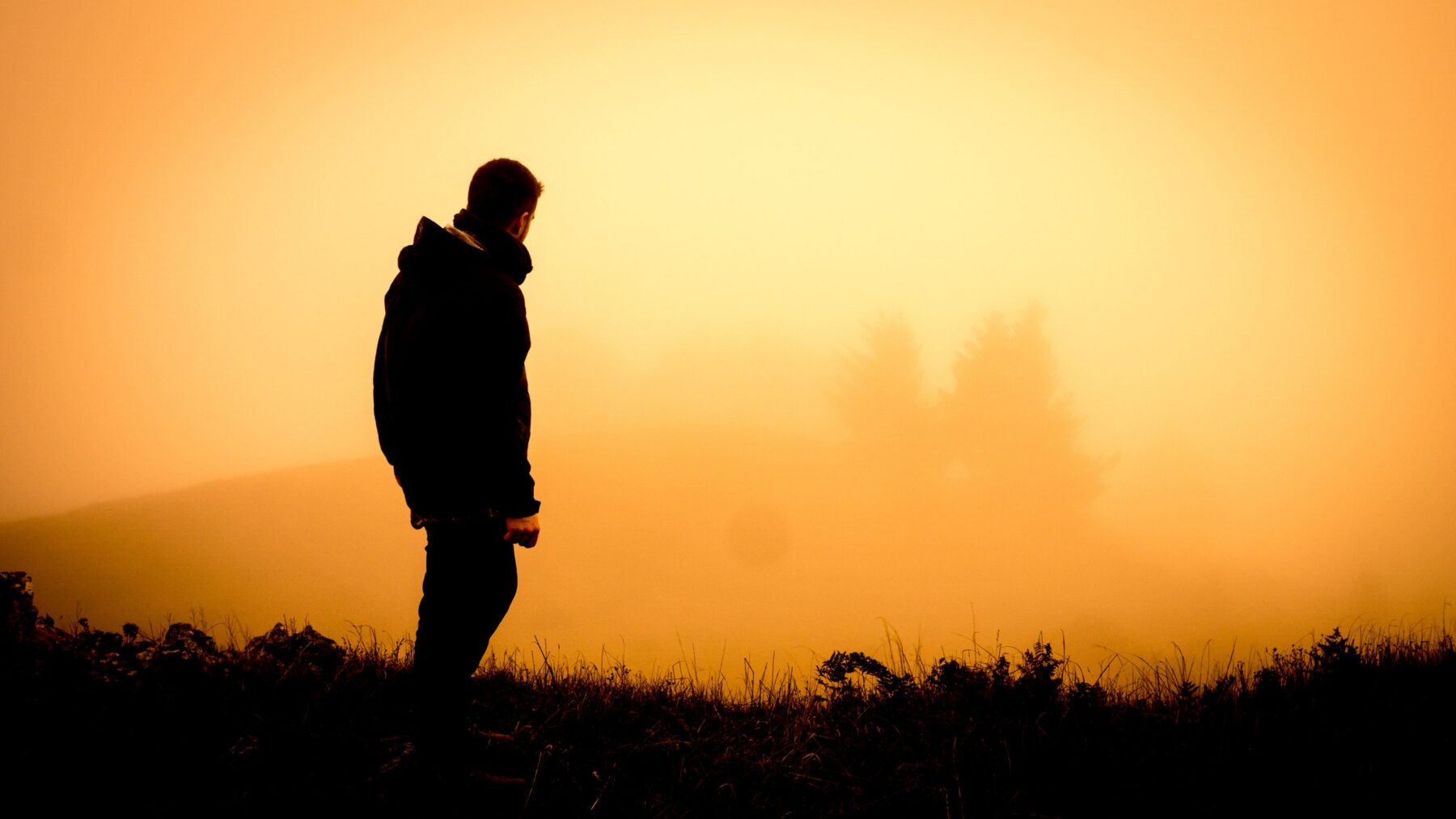
That’s right. I am a St. Mike’s alum, having graduated with a Bachelor of Commerce degree in 1980. I then embarked on a 33-year career—22 as partner—at PricewaterhouseCoopers, specializing in taxation, before “retiring” to take a senior vice president position at Rogers Communications. In 2019, I retired from Rogers. The timing was planned but it turned out to be fortuitous because I was able to devote more time to my aging parents as they battled health issues and moved into a retirement home.
I usually make the point that I “retired from Rogers” as I did from PwC, as opposed to saying I am “retired.” After all, I plan to—and have remained—busy since leaving Rogers. I play more golf in the summer, and I spent more time at our place in Florida in the winter months BC—“Before COVID.” I have also written some papers and remain engaged in tax and other policy discussions at the C.D. Howe Institute, where I am a Senior Fellow. I also have more time to focus on my charitable and board responsibilities —until recently I was on the Board of Catholic Charities of the Archdiocese of Toronto and am currently on the Board of Catholic Cemeteries and Funeral Services.
While my graduation was over a generation ago, I have never been far away from university life. My oldest daughter is a SMC1T3 Commerce graduate and my youngest daughter graduated from Guelph University with a business degree in 2017. For many years after my own graduation, I was very involved in recruiting university students. I also taught tax to university students throughout most of my career, and I continue to do guest lectures at the University of Waterloo, where I was an Executive in Residence shortly after leaving Rogers.
Teaching was my primary source of personal development throughout my career. After graduation and later after another year of study to get my professional accounting designation, I guess I found it hard to discipline myself to be a student again. I found teaching a great way to stay current. Plus, teaching was very rewarding. I always found my interactions with students to be refreshing and a welcome diversion from the intensity of my professional career. Sure, student interactions could be intense at times—like around exam and mark time!—but it was not the same as dealing with client matters. I find students’ enthusiasm to be infectious. Their curiosity and questions about what to expect “in the real world” challenge me and are an opportunity for personal reflection.
So it was a no-brainer to accept the invitation to participate in a virtual meeting with future grads last month as part of St. Mike’s Alumni Mentorship Program.
Graduates of my generation faced challenges and uncertainty. Does anyone ever know what the future holds for them? Students graduating this year and possibly even the next, do so in circumstances they could not have imagined when they started their university journey. Who would have thought that this decade would begin with the world struggling through a pandemic the likes of which have not been experienced in more than 100 years?
How do students graduating from St. Mike’s meet the challenges brought on by the pandemic and quell their anxiety about the future?
Based on my experience, two things come to mind immediately.
First, as with all challenges we face, start by trusting yourself. Trust your abilities. Yes, you will be a work in process when you graduate. But take comfort from the fact that you will graduate from a preeminent college in a world-renowned university under extraordinarily difficult circumstances. Arguably, no group has faced a greater challenge during the pandemic than students—of all ages. They have had to basically re-learn how to learn while being largely isolated from their peer group and unable to participate in extracurricular activities that are equally important to one’s development. How will you have met this challenge? One. Day. At. A. Time. That is how you will meet the challenge(s) “in the real world” brought on by the pandemic. And for those times when you do doubt your ability, continue to ensure your support system is in place—parents, spouse, partner, children, coach, friends, colleagues. At some point, they will need you as well.
Second, remember that change is constant. That is a good thing. Change can be the great equalizer if approached with a positive mind frame. Change creates opportunities. The pandemic is forcing all (profit and not for profit) businesses, organizations and institutions to re-invent themselves, to rethink their operating model from top to bottom. Everything from how to service customers to how and where employees will work. Those too hard-wired to the way of doing things BC will struggle. They will have difficulty pivoting. They will need help. Therein lies the opportunities for future graduates.
I look forward to sharing more of my experiences in future blogs. Reach out to me at npantaleokc@gmail.com with any thoughts or questions.
In the meantime, stay safe!
Read other InsightOut posts.
John Paul Farahat is Director of Music and Principal Organist of St. Basil’s Church. He conducts St. Basil’s Schola Cantorum and Parish Choir. He received the Doctor of Musical Arts degree in Organ in 2019 from the University of Toronto, where his research focused on the life and improvisations of Victor Togni (193 –1965), internationally-renowned organist of St. Basil’s and St. Michael’s during the 1960s.
Liturgical Music in this Long Lent
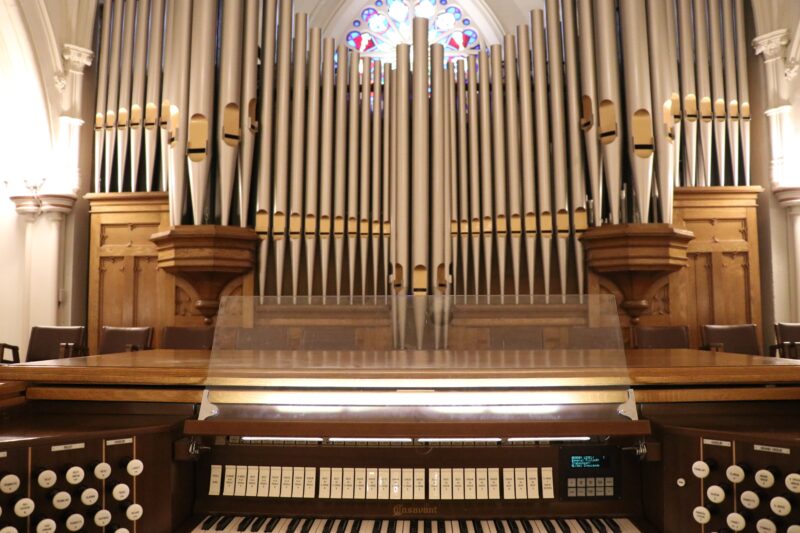
Liturgical music in Lent can sometimes feel like a trimmed-down version of what we would experience in Ordinary Time. In Lent, the Gloria and Alleluia are omitted. The organ is only used to support singing, and there are no preludes or postludes (with the exception of Laetare Sunday, and the solemnities of the Annunciation and St. Joseph).
In normal times, these changes are felt with a particular intensity over a 40-day period. But much of the liturgical music of the last 12 months could be said to reflect that pared-down character of the Lenten season.
The most noticeable change in liturgical music since March 2020 is the suspension of congregational singing.
The 1967 document Musicam Sacram: Instruction on Music in the Liturgy was a product of the Second Vatican Council. It spoke beautifully about the importance of congregational singing, a directive wholeheartedly embraced by the St. Basil’s community. But in a context in which congregational singing is suspended, how do we understand the role of music in worship? While Musicam Sacram justly emphasized the role of outward congregational song, it expanded on this by underscoring that congregations “should also be taught to unite themselves interiorly to what the ministers or choir sing, so that by listening to them they may raise their minds to God” (Art. 15).
St. Basil’s has adopted and applied this directive with care by reintroducing the regular use of entrance and communion antiphons in the liturgy. In listening to and praying with the antiphons, the congregation enters more fully into the celebration of Mass. Like the readings, psalm, and gospel acclamation of the Liturgy of the Word, the antiphons change daily, set as part of the lectionary cycle. The antiphons are scriptural, appointed for each Mass, and are intimately linked to the texts of the liturgy. Take, for example, the Entrance Antiphon of the Second Sunday of Lent, connected to the Gospel reading of the Transfiguration: “Of you, my heart has spoken: Seek his face. It is your face, O Lord, that I seek; hide not your face from me” (Ps. 27). Or, alternatively, the Antiphon at the beginning of the Palm Sunday liturgy: “Hosanna to the son of David: blessed is he who comes in the name of the Lord, the King of Israel. Hosanna in the highest!” (Mt. 21).
The music ministers of St. Basil’s have also adapted their roles to the realities of the pandemic. St. Basil’s Schola Cantorum, an octet comprised of students who would sing both on weekends and select weekday feasts and solemnities, has restructured into small and safely distanced quartets. In addition, they have supplemented the roster of cantors who sing for Mass (in person and live-streamed). St. Basil’s Parish Choir, usually a hallmark of worship on Sundays at the 10:30 Mass, has been rehearsing weekly online since last March, and occasionally recording virtual choir videos. The next video will be released during Eastertide. The St. Basil’s Singers, too, have met regularly online.
I am confident that the community will reclaim its collective voice at the end of the pandemic. Once we exit this long Lent of many months, we will once again be able to come together as a community in worship in a way that resembles normalcy. In the words of St. Paul, we will “sing songs, hymns, and spiritual songs” (Col. 3:16).
And, surely, we will sing an Alleluia or two as well.
Read other InsightOut posts.
St. Michael’s alumna Suzanne Heft spent her childhood living in the United States, the Middle East and England before attending the University of Toronto, graduating with a B.A. in English Literature in 1990. After a brief stint in public relations, she became interested in non-profit fundraising and has been a senior executive on numerous fundraising campaigns over a 20-year Toronto-based career. She met her late husband Harold Heft while working at U of T many years after graduation, and the university holds a special place in her heart as the place where they met. Suzanne’s oldest son Sam is a student at Woodsworth College, and A Perfect Offering, published by Mosaic Press and available from book retailers, is dedicated to him, his younger brother John, and to Harold himself.
A Perfect Offering
Ring the bells/that still can ring
Forget your perfect offering/There’s a crack
A crack in everything/That’s how the light gets in.
—Leonard Cohen
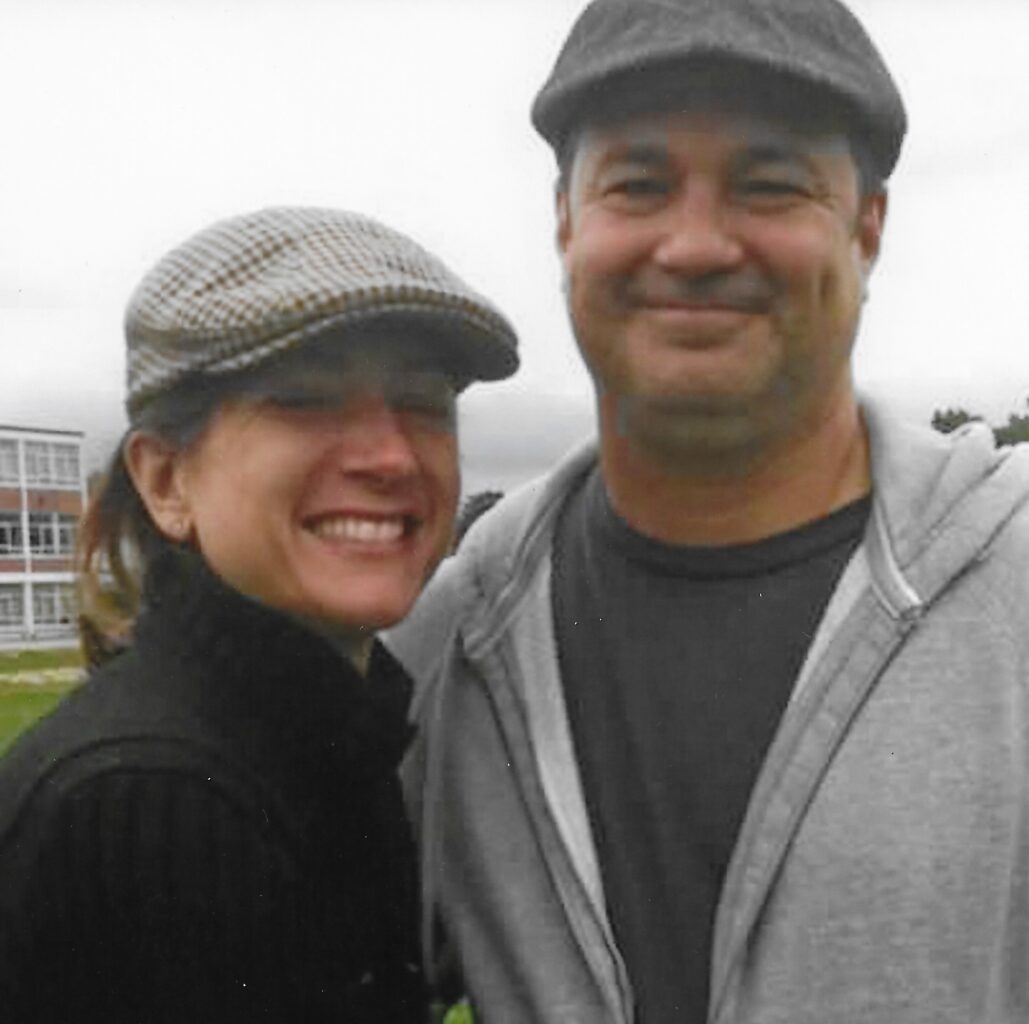
What would you do if suddenly your world cracked apart?
What if you were a teenager on vacation, sunbathing on a beach and a terrorist bomb blew up just a few metres away from you? Or you were a new mother of a one-year-old baby who inexplicably died in a hospital ICU? What if your beloved parents were both killed by a drunk driver two months before your university graduation? Or what if you collapsed at work, age 49, only to be told you had a brain tumour growing in your head and likely had less than two years to live?
What if. What if.
The last scenario actually happened to me, or rather to my husband, Harold, almost six years ago. A writer by trade, a former English professor and a senior marketing executive, he was rendered unable to read or write by the location of his tumour. A father to two young children, he found himself, suddenly, figuratively, staring down the barrel of a gun. And me alongside him.
Many people reading this are familiar with the “life before” and the “life after.” Traumatic events are the fault lines that separate us from who we were then and who we are now. Understanding and exploring this phenomenon became Harold’s preoccupation in the months after his diagnosis. His past had fallen away like the sheer drop of a cliff below his feet, and the future was now an elusive mirage.
“What do I do now?” he asked me. As he had done all his life, he chose to write. Except this time, I was his scribe. Together, and with help of an editor friend we had both known for years, Harold imagined a book of non-fiction stories, the real, wrenching stories of ordinary people, who, like him, had made passage from “the before” to “the after,” and who had luminous insights and observations to offer. Making this book—a book he himself would have wanted to read—became a true passion project.
Creating a book is a daunting task under any circumstances. Doing so while you’re in the middle of chemotherapy, radiation, and rehabilitation from brain surgery is practically impossible. And yet we worked on it. Tenaciously.
Harold died in 2015, before the completion of a full manuscript of the book he imagined so vividly. At his funeral, there were hundreds of people present while my friend Jim delivered a eulogy where he talked about Harold’s legacy as a storyteller, among other things. Adrift in my own grief, I knew that part of my forced reckoning with death lay in picking up the book project where Harold had left off—and finding a way to complete it.
The submissions we solicited came pouring in. Iranian-Canadian writer Marina Nemat wrote of an encounter with a fellow survivor of the infamous Evin prison in Iran where she had been wrongly jailed as a young woman decades before escaping to Toronto. Rabbi Yael Splansky, mother of three sons, recalled a deeply personal sermon she delivered in front of her entire congregation on the Jewish New Year, having just turned the page on her gruelling treatment for breast cancer. New York Times columnist Jennifer Finney Boylan sent us a story about a near-death moment that changed her life forever, and Canadian photojournalist Paul Watson shared photos and stories of orphans and street children he encountered on location in Kabul and Vietnam, boys and girls with glassy stares and lost childhoods.
All these stories—and many more—polished like gems, made it into the pages of A Perfect Offering: Personal Stories of Trauma and Transformation, which was finally published in December 2020.
I hope that the book is a testament to the power of story. That in our shared vulnerability, we find ways to be less alone with our pain. There is an old adage, “a burden shared is a burden halved.” I’m not sure this is quite true, but I do believe that when other human beings witness our suffering, it calls us to a state of grace that is transformative and compelling.
It is highly serendipitous that this book is published during the middle of a global pandemic, where so many of us are suffering alone, and grieving all manner of losses too numerous to mention. Harold was always skeptical of those folks who said: “everything happens for a reason.” His own story is in the book, but it was half-finished. In the flurry of work on other people’s essays, he neglected his own, until, alas, it was too late. I decided to include it as is, unfinished and real. It is his own imperfect offering.
Indeed, there is perhaps no other kind.
Read other InsightOut posts.
Oghogho Abigail Iyekekpolor is in her 3rd year double majoring in Neuroscience and Psychology and minoring in Practical French. In her time at St Mike’s, she has served as an Orientation Leader and the Student Life Programming Assistant. Last year, she launched the #SOULSofSMC social media campaign. She is currently serving as a residence don.
Black History IS History
When I first started writing this InsightOut, I honestly felt a bit apprehensive. While I’m grateful for the opportunity to share my thoughts, I can’t deny the nervousness that comes with it. Talking about Black History Month is like opening Pandora’s box: it calls to mind slavery, the Civil Rights Movement, #BlackLivesMatter Movement, police brutality, systemic racism, generational trauma. It’s a dense topic and almost impossible to talk about everything without getting sidetracked by feelings of anger and exasperation. It’s quite daunting, and although part of me doesn’t want to exclude anything, what I want to talk about most is what Black History Month represents to me, especially based on the things I’ve learned in the past 12 months.
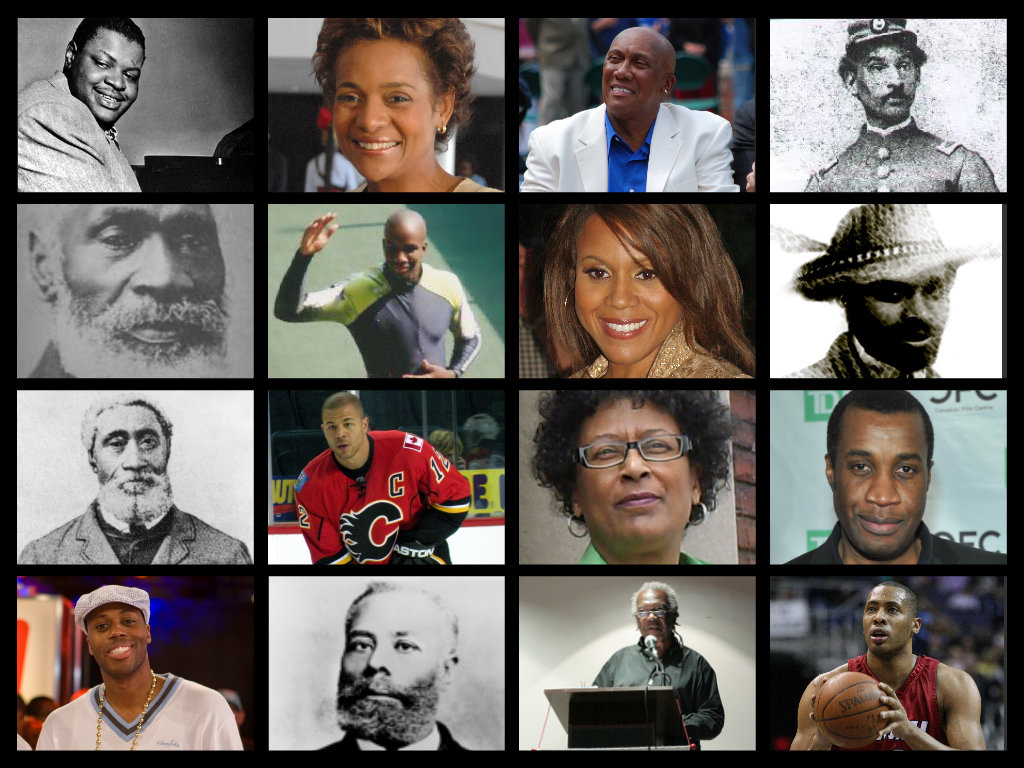
Originally, Black History Month was “Negro History Week,” introduced by African American scholar Dr. Carter G. Woodson in February 1929. The aim was to raise awareness of the experiences of Black people in America and around the world while celebrating their great achievements. Woodson set the week in February to incorporate the birthdays of Abraham Lincoln and Frederick Douglass, two Americans who played an instrumental role in shaping Black history in the United States. The celebration gained strong momentum in the years to follow and by the 1970s Negro History Week became Black History Month. In Canada, the House of Commons officially recognized February as Black History Month in December 1995, following a motion by Dr. Jean Augustine, the first Black Canadian woman elected to Parliament.
Since then, Black History Month for many of us growing up in North America has been about celebrating figures of the past. We learn about the wise words of Martin Luther King Jr. in his “I Have a Dream” speech, the brave actions of Rosa Parks, the fortitude of Malcolm X, groups like the Black Panthers and so on. These are a few among many strong people who fought the great battle against racism, and “we as a people are soooo much better for it now!” As a young Black girl who’d had her skin called poop and her foreign name mocked countless times I was more than willing to accept this narrative. A whole month to celebrate people who looked like me—what could be better? I practically worshipped people like Harriet Tubman and Maya Angelou when I was in elementary school.
And then I saw a story about Trayvon Martin on the news when I was 12 years old. I always feel a pang in my chest when I think about this because it was the first time I truly felt afraid to be Black. Then came Eric Garner. Tamir Rice. Sandra Bland. Andrew Loku. Alton Sterling. Philando Castile. Elijah McClain. Ahmaud Arbery. D’Andre Campbell. Breonna Taylor. George Floyd. Regis Korchinski-Paquet.
Evidently, that great battle against racism is not over.
This isn’t an attempt to discount the invaluable contributions of the larger-than-life individuals we usually celebrate during Black History Month, those who have galvanized movements and brought about invaluable change. But it is a call-out and a reflection. Black History Month isn’t only about the greats of history or people of the past. It’s also about ordinary people who have been and continue to be brutalized without any regard for their human dignity, just because of the colour of their skin. It’s about how #BlackLivesMatter is treated as a political statement rather than a simple affirmation. And, very importantly, it’s about knowledge and empowerment.
I’m currently taking the course SMC300, a special topic under Book and Media Studies taught by Emilie Nicolas on #BlackLivesMatter in the Media. Previously, we discussed the experience of learning about Black history in Canada and how sub-par our education on the subject has been. An overarching theme for some of our discussions has been the idea of erasure. Black people in Canada are often regarded as new, even though the first Black person in this country, Mathieu de Coste, arrived in 1608, not to mention the enslavement of black people in Canada during the 17th and 18th centuries. We almost never learn about this, only hearing stories of the underground railroad that led enslaved people from America to “freedom” in Canada.
Apart from historical events like these, Black people have been cheated of the acknowledgement they deserve in many other areas of pop culture and society: fashion, music, dance, language, science—the brilliant Black individuals who contribute to these areas are often overlooked while their accomplishments are lauded when embraced by white people.
What I’m trying to say is that I believe we celebrate Black History Month today for the same reasons Dr. Woodson established Negro History Week more than 90 years ago. Members of the Black community are still not being recognized for their achievements and are still being treated inequitably. We may not be facing the exact same racism that Woodson endured in his time but we must combat our own reimagined version of it to move forward; the fight is ongoing. It’s a daunting idea, but the past year has shown all of us what it feels like to live through major historical events and has shown us our ability to partake in that history and to choose what side of it we want to be on.
The past year has also shown us that these efforts can happen outside of February. Just look at last summer: with a pandemic raging throughout the world, people were forced to sit and reckon with the obvious displays of systemic anti-blackness around them. Discussions about it were unavoidable.
Consequently, if you ask me, Black History Month serves as a reminder that even in a society where the cultural and social impacts of Black people are felt all around us, our lives and contributions are still so disregarded that we must relegate them to one month. Black History is everywhere: it’s the new dance trend that you see on TikTok, it’s the traffic lights that guide you smoothly home during your daily commute. The reality is that Black history IS history, period. Until the time when we can fully recognize that and embrace the complex and beautiful humanity of Black people every day of the year, we will continue to use the month of February to mourn our losses, celebrate our heroes, and mobilize for greater change.
Read other InsightOut posts.
Norm Tanck, CSB is the Associate Pastor of St. Basil’s Parish. He entered the Basilian Novitiate in Erindale, ON in 1967 and made his first profession of vows in 1967. He received his M.Div. from USMC in 1973 and was ordained a priest in 1974. Norm served as St. Mike’s Director of Campus Ministry and College Chaplain from 1982 to 1985.
A Different Kind of Lent
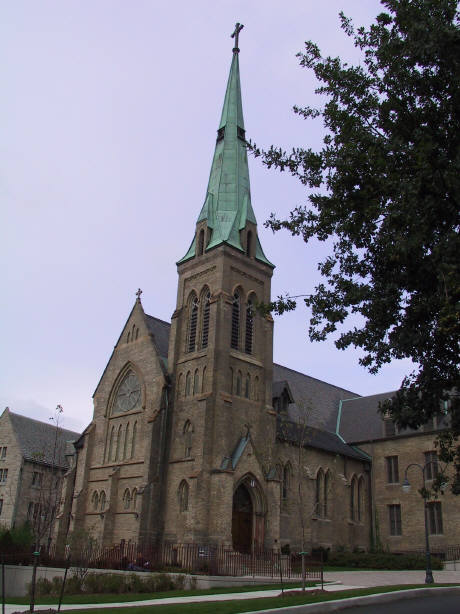
As I write this, I do not know what Ash Wednesday and Lent will look and feel like this year. St. Basil’s Parish has plans for when and how ashes will be distributed. We will have short continuous services during the day. If you are on campus, you can check St. Basil’s Parish website to see how you can register for a time to receive ashes (Information for Ash Wednesday). The way we receive them this year will be different. If you can come in person, they will not be smeared on your forehead as in the past, but sprinkled on the top of your head, as they do in Rome.
Every year in the past St. Basil’s Church would have overflow crowds of people coming to receive blessed ashes on their foreheads. Parishioners, members of the USMC community, local residents, government workers, businesspeople and shoppers would leave the church and go into the world around them bearing the Cross of Jesus Christ for all to see.
There may have been a sense of solidarity in the church, but on Bay Street, in Eataly, in the MacDonald Block, or Robarts Library, I imagine one could feel conspicuous, self-conscious, even vulnerable. Some, however, may have felt proud to profess their faith in such a public way.
There may be a sense of relief this Ash Wednesday that we might not have to face the stares and quizzical looks, maybe even the ridicule of others. We may not even have to face the challenge to look at our lives and assess what needs to change for us to live a good life in relationship to God, others, the rest of creation, and ourselves.
This kind of self-focus, self-assessment and call to personal conversion, transformation, and change is only part of what Ash Wednesday and Lent is about. Often, we forget or maybe ignore the call the is given to us, to the Church.
The first reading for our Ash Wednesday liturgy tells us: “…call a solemn assembly; gather the people. Sanctify the congregation; assemble the aged; gather the children, even infants at the breast” (Joel 2:15-16a). The people, a corporate reality, is called to change. The Lenten call to repentance is a call to the Church herself to change, and a warning to humanity that the path it is on will result in ruin. The prophet Joel uses the image of a famine to portray a people, a nation, in crisis. Joel is not one of the happiest books in the Bible. But I think he is a relevant prophet for us today.
Walter Bruggeman, a Scripture scholar who specialized in the Psalms and the Prophets, said that a prophet has three functions. The first is to announce that the old order is ended—not that it is going to end but that it is already over. The second function is to let the people sing their songs of lamentation, to grieve their loss. The third is to give the people a new hopeful and energizing vision for the future.
This year, as I reflect on what Ash Wednesday may mean as we begin the second year of our pandemic crisis, I am struck by this corporate call to repentance and change. It is a call that is given to the Church so that like Joel we can become a prophetic witness to the world. COVID-19, like Joel’s agricultural crisis, is emblematic of the cumulative issues and many crises that threaten the common good of the human family and of all of creation.
In his latest book reflecting on our present COVID-19 crisis, Pope Francis says, “Every now and then, however, great calamities awaken the memory of (our) original liberation and unity. Prophets who sought to recall the people to what really matters, to its first love, suddenly find eager audience. Times of tribulation offer the possibility that what oppresses the people – both internally and externally – can be overthrown, and a new age of freedom begin… Crisis has shown that our people are not subject to blind forces but in adversity are capable of acting” (Pope Francis, Let Us Dream: The Path to a Better Future. New York, Simon & Schuster).
The Pope uses a familiar model to reflect on the issues and respond effectively. We begin by seeing what is going on, being attentive to the situation. Then we must discern what needs to be done and choose a plan of action. And finally, we must do it.
This model is good for our personal Lenten discipline and conversion, but this year, it comes as a special challenge for the Church and our prophetic witness. What do we have to announce? How do we let go of the past? And what is our hope for the future, not only for ourselves but for the world in which we live?
Pope Francis in the epilogue of his recent book writes, “A crisis forces you (us) to move, but one can move without going anywhere. In lockdown many of us left the house for essentials or walk around the block to stretch our legs. But then when we get back to where we were and what we were before, like a tourist who goes to the sea or the mountains for a week of relaxation, but then returns to her suffocating routine. She has moved, but sideways, only to come back to where she started”.
He goes on to say, “I prefer the contrasting image of the pilgrim, who is one who decenters and so can transcend. She goes out from herself, opens herself to a new horizon, and when she comes home, she is no longer the same, and her home won’t be the same… This is a time for pilgrimages”.
This is a time for us to look, choose, and act.
Read other InsightOut posts.
Martyn Jones is a content specialist in St. Mike’s Office of Communications. On a freelance basis, he also writes reported features, essays, and criticism for online and print outlets. He and his wife’s toddler Fox has just turned two years old.
Reading Out Loud or, The Whale
When Herman Melville died in September of 1891, his novels were out of print. He had by then spent several decades writing poetry no one seemed to enjoy, least of all his long-suffering wife. The success and fame he earned early in life writing semi-autobiographical novels about seafaring—those stores had all been depleted long ago. His obituary in the Times even misspelled the title of his greatest book, still decades from being recognized for what it was.
1851 is the year Melville published Moby-Dick or, the Whale. It is the story of Ishmael, a man who, to rid himself of his depression and see the world, joins the crew of a Nantucket whaling ship called the Pequod. Captain Ahab presides over the vessel, emerging from his cabin to clomp across the deck with one leg made of whalebone. In a violent encounter with an albino sperm whale on an earlier voyage, Ahab was “dismasted,” and after recovering from the loss of his leg he developed a diabolical obsession with the perpetrator. His mission of revenge against the whale will, in the end, cost the lives of every man aboard the ship but one.
While this summary makes Moby-Dick sound like one more adventure story written from Melville’s experiences as a young sailor, the book departed from its predecessors in containing a huge amount of musing about—well, everything: life, the universe, the whaling industry, fate, democracy, table manners, civilization, the taxonomy of whales, and the human situation in the midst of it all.
Moby-Dick was first reviewed in England by critics whose three-volume copies were both censored in various places and misprinted to exclude the epilogue. The latter would have been a minor error had that last page not explained how Ishmael, the book’s narrator, survived the cataclysmic wreck of the Pequod at the climax of the book. Imagining their simple-minded American cousins capable of accidentally writing a story narrated by someone who does not survive the events being narrated, the critics attacked Melville, and American reviewers, cowed by their sophisticated English peers, adopted their posture. Moby-Dick sold poorly, as would everything else Melville wrote from then on.
Moby-Dick has a claim to being the great American novel; if it isn’t that, it may at least be the greatest American novel so far. Ahab’s vengefulness against an animal foe develops a superlatively powerful expression of the theme of humanity’s struggle with nature. Vivid metaphors in every chapter suggest meanings beneath meanings and other meanings under those, giving the story a feeling of infinite depth. The many voices and registers, the occasional stage directions, the scenes of comedy, the stately rhythm, and the exclamation points—he uses them unsparingly!—all make the book an absolute blast to read out loud.
This is just what my wife and I have been doing to conclude the day. After our toddler is asleep, our chores are done, and we’ve closed the laptop after a last episode of whatever show, I bring out my heavy and heavily dog-eared paperback copy of Moby-Dick and start to read. We’re over a quarter of the way through, having just witnessed Ahab’s dark speech to the crew about their voyage’s singular objective, and the toast the crew makes to the death of the whale.
Melville’s complex and semicolon-laden sentences sometimes flow too hard to shape them with the right intonation or verbal emphasis, but this is all part of the fun—as is sounding out unfamiliar words, or laughing in spite of yourself. (The Pequod’s third mate, Flask, is unable to help himself to butter while dining with the captain for reasons of psychology and decorum, which Melville explains at length before saying, “however it was, Flask, alas! was a butterless man!” I laugh every time I read this passage and still couldn’t tell you why.)
Shakespeare’s plays—themselves meant to be spoken and heard rather than read—were Melville’s literary obsession before composing Moby-Dick, and their rhythms provide the book with its line-level tempo. There are whole passages that would scan as perfect blank verse with the addition of a handful of line breaks. Like a steam engine, the rhythm of iambic pentameter creates momentum, and when you start to hear that rhythm and match it with your own voice, it can carry you away.
It’s easy to get carried away, of course: to use silly voices, to read too loudly or forcefully, or even for your voice to crack or give out. In my experience, this adds to the enjoyment for the reader and the listener. When you give voice to someone else’s words, you put your own stamp on them, and through the processes of your memory, they leave an imprint on you as well. The quiet chuckles and pauses to sort out some obscure meaning add something to the experience of the book: a quality of communal enjoyment.
Melville’s spotty career and tumultuous personal history are relevant, too: as they created the conditions that gave rise to his great book, so might there be a kind of perfection in the awkward or unsteady voice of a parent, partner or friend reading Moby-Dick out loud, especially if they’re reading through the imperfect medium of a video call. Even in this scenario, far from ideal, reading aloud transforms art into shared experience. When stuck at home—or “whenever it is a damp, drizzly November in my soul,” as Ishmael says—there are few things as needful as that.
Read other InsightOut posts.
Mark De Luca (SMC1T5) holds a Bachelor of Arts (Political Science and History) degree from the University of Toronto. After graduating, he pursued a Post-Graduate Certificate in Broadcasting—Radio from Humber College, ultimately moving out West to work as a news reporter/director in rural Manitoba. For the past five years Mark has had the privilege of working in rural and urban centres at a number of radio stations, including 730 CKDM (Dauphin, MB), The Shoreline’s myFM (Kincardine, ON) and 680News in Toronto. Mark now works as a Traffic Reporter with the Canadian Traffic Network (CTN) and can be heard every afternoon on the following stations: Boom 97.3, Flow 93.5, Jazz FM 91, The New Classical FM, 1460 CJOY and Magic 106.1.
InsightOut: The Familiarity of Radio in a Changing World
It’s been roughly one year since Toronto experienced its first full lockdown. I remember it vividly. I was at the local pub having a beer with some buds, chatting about this potential pandemic spreading across the globe. It was being called COVID-19, similar to the SARS outbreak 16 years prior, but we didn’t know much. The World Health Organization was apprehensive about classifying it as a pandemic but was keeping an eye on it. Nearly 365 days later, we find ourselves in the situation we are currently dealing with.
It goes without saying that COVID-19 has completely changed lives for all. From the way we interact with one another to how we conduct our daily lives, this once-in-a-generation virus has been front and centre for one whole year.
At times it seemed you couldn’t get away from it. Every popular media platform provided wall-to-wall coverage about the pandemic at all hours. Having worked in news radio for close to five years I was used to information overload but COVID-19 presented a whole new meaning when it came to the 24/7 news cycle. Radio—an industry already going through immense change—once again needed to find a way to adapt, learn, and grow.
Rather than disregard the virus entirely, I looked for ways we could evidently beat the illness while living and working amid it. For some, that meant working from home, wearing a mask, social distancing, weekly Zoom video calls, but for me that meant using my platform: radio, and the power it still has over a population.
Radio has been around for more than 100 years and has changed along with the world around it. Although the medium has taken a new direction in the form of engagement through social media platforms, at its core, the main objective is to communicate important information to a wide audience in real time. As a traffic reporter I quickly realized this when the busy city streets of Toronto and its area highways instantly became bare. What was once gridlock on the 401 now seemed to be open, the hustle and bustle of Yonge & Dundas non-existent, and a backed-up Gardiner Expressway a thing of the past.
I pondered this new world and many times asked myself, “What’s the point of these reports if everyone is at home?” but, in reality, that was not the case. Although the streets were substantially less busy, a new group of people came to light… the Essential Workers. The ones whose jobs did not allow them to stay at home were the people now occupying our roadways. The nurses, frontline health care workers, EMS paramedics, warehouse attendants, truck/ delivery/ bus/ taxi/ UBER drivers, construction workers, plumbers, electricians, mechanics, police officers, and firefighters were now the primary commuters. They were the ones waking up early in the morning, getting in their cars—or jumping on public transit—to provide the necessary services to keep our province safe and economy afloat.
The realization that, for a select few, working from home was not an option quickly resonated with me. For these people, a new level of fear, stress, and anxiety was unexpectedly thrust upon them. For many of these workers, the only break they could potentially have (if they received any at all) was that short timeframe between home and work that they had to themselves.
I reflected on this new reality and how my job could make the lives of these essential workers easier. What could I do to help them? Like many other industries, I was now relegated to a “Home Office” which was anything but—realistically it consisted of a desk, microphone, and a bed sheet over my head. But I was home, and for many this was not an option.
It was at that moment I made the decision to dedicate all my reports to essential workers across the Greater Toronto Area. If I could make someone’s commute easier, I see that as a win. Radio has the unique power to provide much-needed companionship to so many, adding an extra voice to someone’s day when at times they may feel alone.
My time at St. Michael’s taught me about the importance of community, and I have taken those lessons with me throughout my life—I do not take that for granted. For these workers, community is more important now than ever before and I have applied those beliefs to my traffic reports. As we continue to adapt to the changes of COVID-19 I am optimistic there is a light at the end of the tunnel. With enough self-discipline, focus, and commitment to work in our own unique ways we will beat this thing.
I hope radio, in all its changes, brings you that sense of comfort and familiarity we are all longing for. As I say after I end every week on-air, “Until next time, be safe out there and I’ll see you next week.”
SMC, can I get a Hoikity Choik on C?
Read other InsightOut posts.
Maxine Webster serves as Advancement Officer, Alumni Engagement at St. Mike’s. She holds a B.A. in Media, Culture, and the Arts from The King’s College in New York City.
Virtual Connections with St. Mike’s Alumni
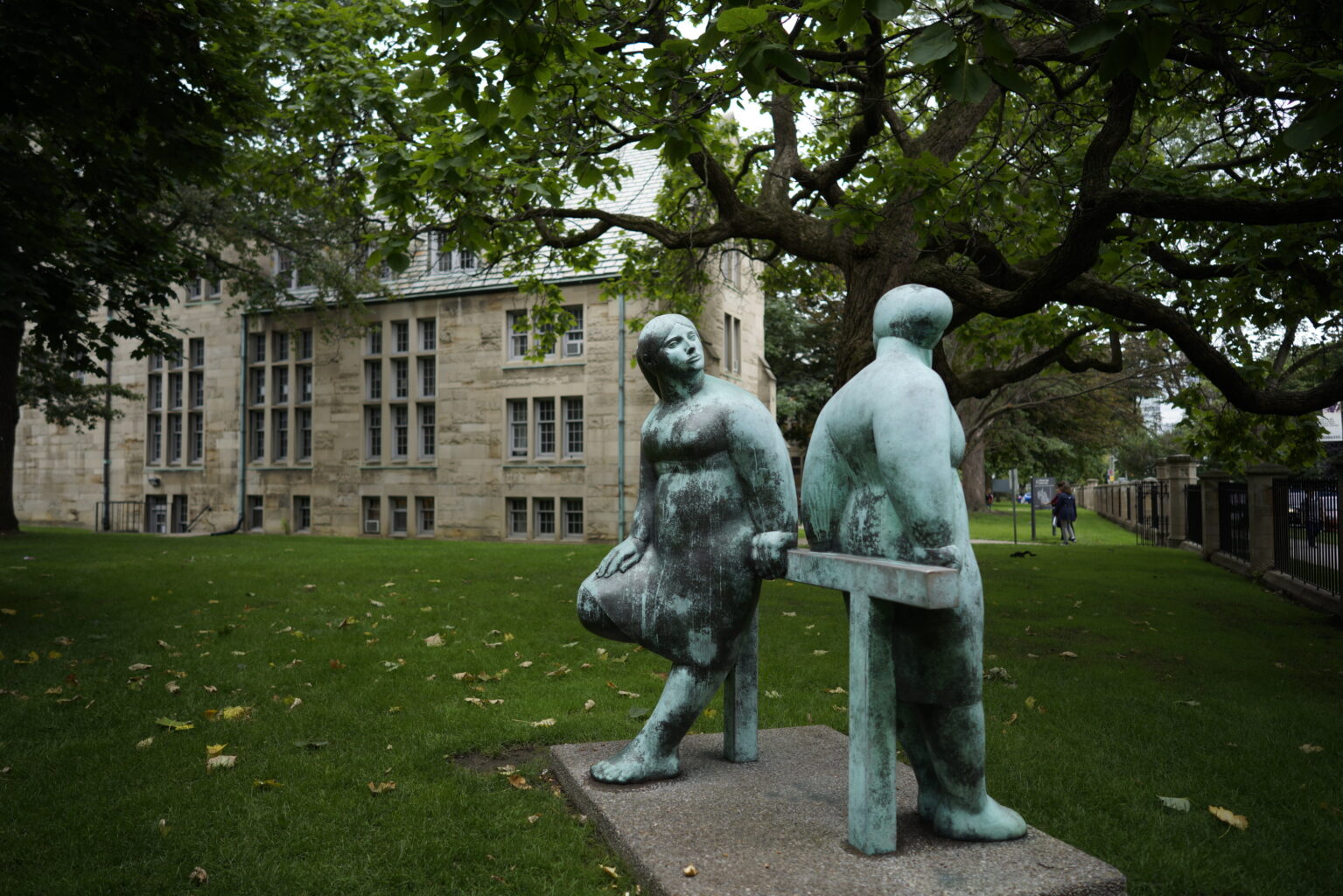
Since starting work within the Advancement team two months ago I’ve come to appreciate the special nature of St. Mike’s.
I was initially drawn to the role based on the understanding that the College is supported by a loyal and generous community of alumni. And as someone who graduated from a small liberal arts college in a big city, I appreciate the juxtaposition of being part of a safe, tight-knit community while simultaneously being surrounded by the resources and opportunities a bustling city—and one of the world’s leading research universities—affords.
This is an interesting time to be working in university alumni relations, as so many things have shifted in the last several months due to COVID-19. Traditionally, St. Mike’s alumni would be looking forward to various in-person social events. On the flip side, alumni who may not have been able to access a local event in the past can now tune in, a unique opportunity to connecting with one another virtually.
So, while we all wait to return to “normal” when it is safe to do so, it is my job to engage and support the alumni community throughout this time—and I think we can all agree it is more important than ever to stay as connected to one another as we can.
Alumni volunteer activity is a critical asset to any university, and I am particularly grateful for the Alumni Association Board and Young Alumni Committee. These groups provide invaluable perspectives and insight as the mouthpiece for St. Mike’s alumni at large. Their contributions and ideas support the relationships between St. Mike’s and alumni, as well as within the alumni community, through alumni programming. They have a direct impact on the future of St. Mike’s. Right now, there is an opportunity and a priority to grow these groups to further represent the diversity and various backgrounds of the alumni body.
There are a couple of new virtual programs coming up. I am really looking forward to the St. Mike’s Alumni Workshop Series in partnership with the Office of the Dean of Students, where alumni who represent varying industries and experiences are meeting with a small group of current students over Zoom throughout February and into March. Each session is focused on a particular theme, such as “Finding a Job in a Difficult Market” and “Entrepreneurship.”
Another program in the works is a Faculty Speaker Series, a way to highlight and share St. Mike’s fantastic faculty and programming with all University of Toronto alumni through virtual presentations. We also look forward to traditional programming—the Lenten Retreat, Alumni Reunion, and Spring Convocation—done in new ways, for now.
Furthermore, I have been inspired by ideas alumni bring forth—from social media initiatives to thematic virtual events—and I am honoured to witness the progress that continues to take place at St. Mike’s, through St. Mike’s 180 strategic plan. I look forward to continuing to spend time in conversation with alumni in an effort to connect, learn, share ideas, and make plans.
More than anything, I realize time and time again what a special place St. Mike’s is. Stories of Catholic services and religious pursuits, campus life and community involvement, stimulating classes and academic advisors, all remind me that St. Mike’s is a place where some of life’s fondest memories have happened, and continue to happen. Even in the midst of a challenging season, I am constantly reminded that a strong alumni community makes for a stronger St. Mike’s.
If you would like to introduce yourself or get in touch with me about any of the things above (I really enjoy hearing from alumni!), you can reach out via email or phone (416.926.7260 ext: 67260).
Read other InsightOut posts.
Kathryn Elton joined the University of St. Michael’s College in 2016, as Chief Advancement Officer, overseeing fundraising and alumni programming. One of the best parts of her work, she explains, is meeting and getting to know St. Mike’s incredible alumni community.
Remembering Long-time St. Mike’s Alumna Gloria (Chisholm) Buckley
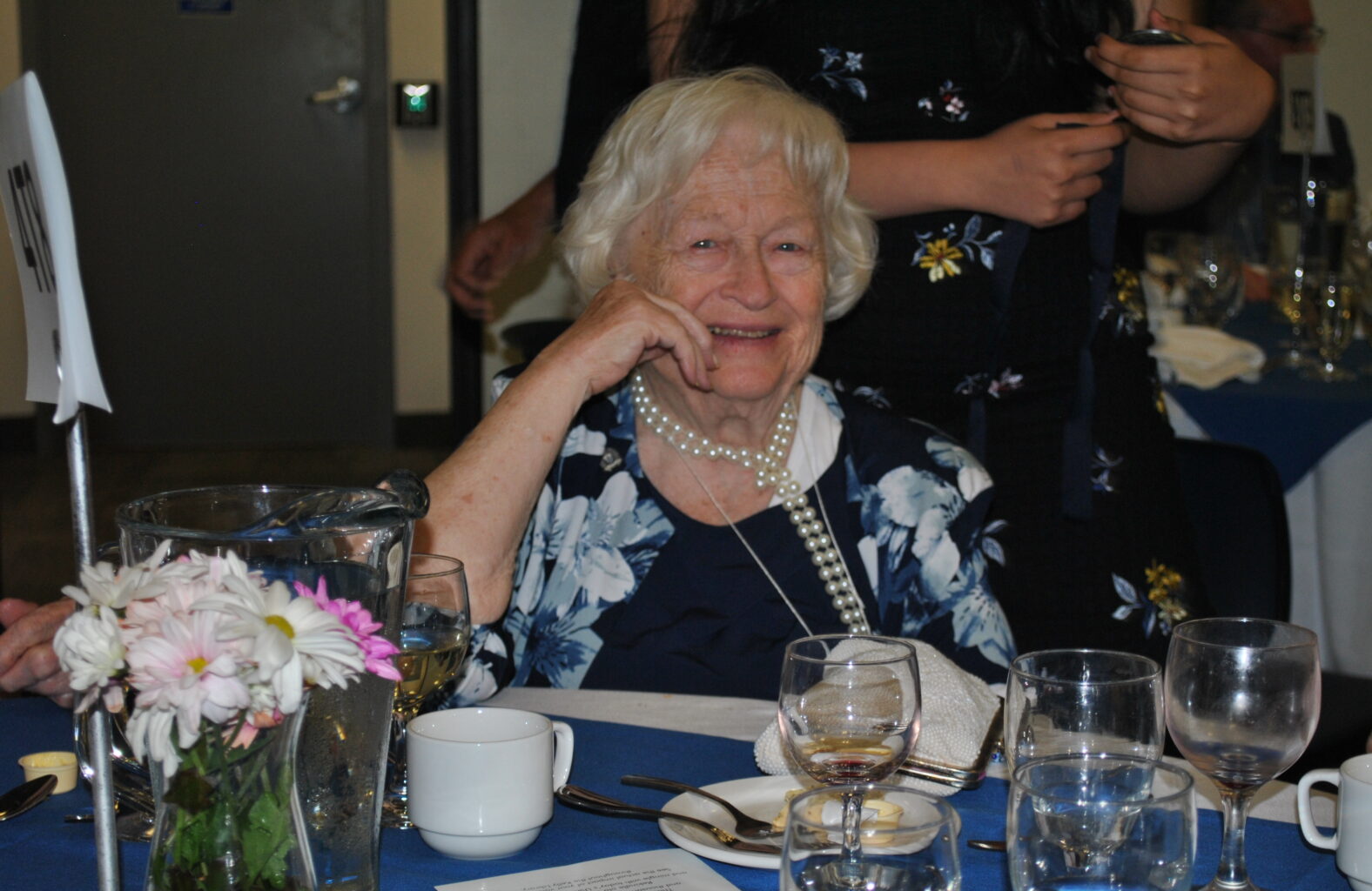
The University of St. Michael’s College and University of Toronto communities lost a treasured friend with the passing of alumna Gloria (Chisholm) Buckley on January 25, 2021. Gloria, who graduated from St. Michael’s College in 1948 with a Bachelor of Arts and Science, majoring in chemistry, was a beloved alumni volunteer leader. She was also a trailblazer who shone a path for women in science and returned her good fortune by serving others.
When Gloria was presented with St. Michael’s Alway Award in 2014 she was celebrated as a “pioneering spirit, a scientist, working mom and community volunteer…at peace with both faith and science, a lifelong passion for knowledge, and thrilled by discovery. With a penchant for asking questions, a feminist before the movement began, a desire to contribute to saving lives, to fight for health and to understand the world at its most basic elements. She has lived up to the highest standards in numerous ways.”
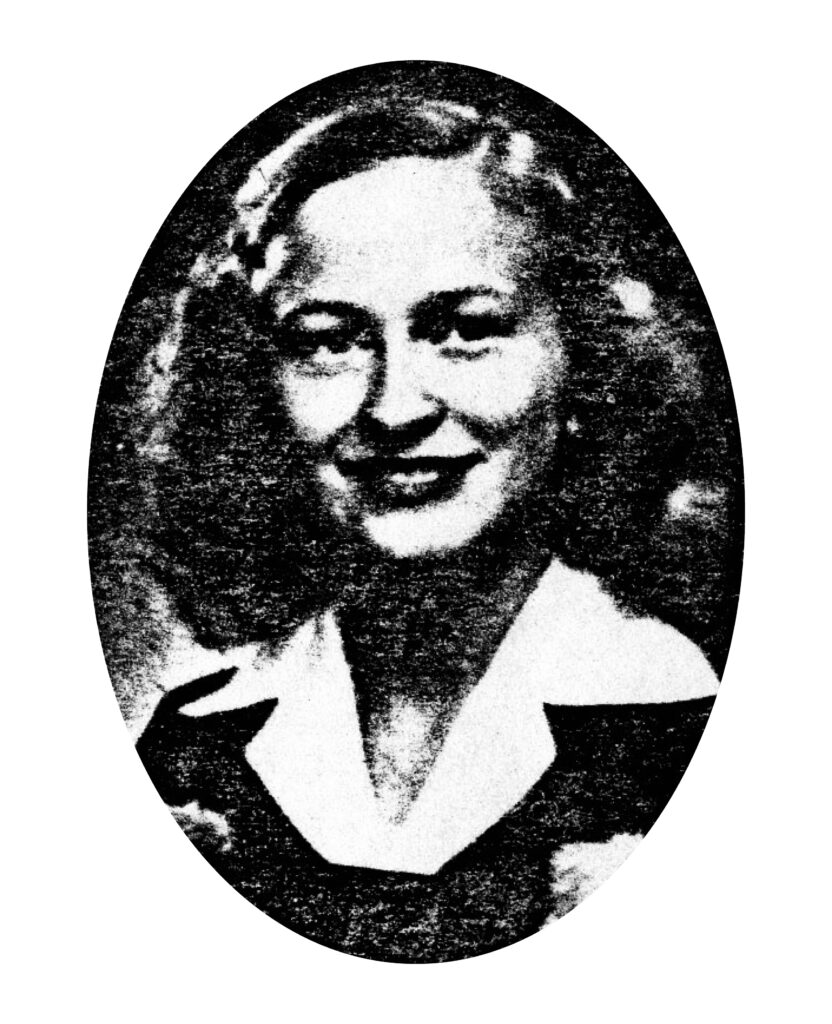
Gloria’s accomplishments were extensive. She was:
- a researcher at University of Toronto and at St. Michael’s Hospital’s Lipid Centre
- a scientist in the private sector, including in bioscience and clinical chemistry specializing in cancer research
- a member of the Christian Family Movement—helping peers with children cope with the pressures of life while raising families
- a member of the Associates of the Sisters of St. Joseph for more than 25 years
- one of the longest-serving members of the U of T Senior Alumni Association
- the founder and leader of the organizing committee for University of St. Michael’s College Alumni and Friends Annual Lenten Twilight Retreat
and
- the longest-serving Board Member of the USMC Alumni Association.
Gloria was also the proud mother of sons Roger, Brian, and Phillip, all of whom attended St. Mike’s.
She was a much-loved friend among the alumni community. St. Mike’s alumna Marcella Tanzola remembers:
“I had the honour of knowing and working with Gloria for many years on the St. Michael’s Alumni Board. With Father Bob Madden, we both helped to establish the Annual Twilight Lenten Retreat and worked closely over 25 years to make this a memorable and meaningful event. Gloria was a tireless worker and supporter of all alumni pursuits. For me she was a ready ear and good counsellor. We shared wonderful conversations during all those years and I learned what a remarkable woman she was as we exchanged our life experiences. Rest in a much deserved peace Gloria. I will miss you.”
Miriam Kelly, another alumna and colleague, adds:
“The Basilian Fathers, the University of Toronto and the University of St. Michael’s College, and the Annual Lenten Twilight Retreat will all be thankful for the many years Gloria gave to their many endeavours, sharing her wisdom, hospitality and sense of humour. Gloria will be much missed and remembered. Rest in Peace.“
When I joined St. Mike’s advancement and alumni programs team in 2016, all my new colleagues recommended that Gloria be one of the first alumni I should meet. She had a long-standing connection with St. Michael’s, deep commitment to the university, and astute perspectives on our past and our future. She was also a frequent attendee at alumni meetings and events, and I soon learned why she was loved by my colleagues. Betty Noakes, a member of our advancement team who knew her for more than 10 years notes that “Gloria’s kindness, knowledge, sage advice, and grace made the world a better place. She exemplified Goodness, Discipline and Knowledge. I will hold her in my heart, and miss her dearly, as will, I’m sure the community she has left behind.”
The University of St. Michael’s College is truly blessed by a loyal and committed alumni community, and I have a special place in my heart for Gloria. From our first meeting in fall, 2016 until our last conversation this past fall, when she was sharing ideas about St. Mike’s vision for the future, I have felt extremely lucky to have known her, even just a little.
Thank you Gloria. God speed.
Gratefully, Kathryn.
Alumni who wish to share memories and tributes to Gloria are invited to send messages to: smc.alumniaffairs@utoronto.ca. We will collect them and send them to the family.
Read other InsightOut posts.
The author of our post for Bell Let’s Talk Day 2021, Therese Hassan completed both her undergraduate and graduate degrees at the University of St. Michael’s College. A recent graduate from the Master of Theological Studies program at the Faculty of Theology, she is particularly interested in Catholic philosophy of education, theology of ministry, and qualitative methods in religious studies. Therese is currently a Secondary School teacher with the Dufferin-Peel Catholic District School Board.
Talking About Fight Club to Stay Healthy

I recently assigned my students an adaptation of a “time audit” activity that Jay Shetty offers in his book Think Like a Monk. The premise of the exercise was that what we spend most of our time on essentially reflects what we value most. The idea was for my students to audit their time over five days to identify where most of their time was being spent. My students had to articulate what it is they truly value and whether or not the way they spent their time (especially amid a pandemic) truly reflected what they valued most. For most students, the realization set in that how they spent their time was disproportionate to what they outlined they truly valued.
As I listened to my students’ reflections on their time audit, several patterns emerged. Many of my students identified having valued their mental health but recognized that the way they spent their time did not necessarily foster positive mental health. Many voiced an intention to carve out more time in the day to spend on activities that would benefit their mental health, including less time on social media, more time meditating and praying, and more time being present with family (I know: amazing conclusions, right?). Interestingly, almost all of them felt guilty to some degree about not doing more with their time, considering the time at home the pandemic has granted. On this point, I could relate to my students more than they will ever know.
The truth is that the conclusions my students came to as a result of their time audit are as intuitive as they are appropriate to the unprecedented time we find ourselves in. As their teacher, I am essentially endowed with the responsibility to keep considerate of their mental health, offer information and resources on how to cope and who to talk to, and tips and tools in practicing self-care, all while standing as a pillar of poise, a model of “keeping it together,” a standard of composure even though I too share in the same struggle. It’s like having to prepare my students for a test I’ve never taken myself, in an area I haven’t yet achieved a level of expertise. Put all that against the backdrop of a pandemic, and it feels more like a fight; only it’s a fight I didn’t ever think I’d need to prepare for, let alone be responsible for in preparing others. I’m right there in the ring with everyone else trying to listen to coaching instructions.
Of course, I could never say this out loud. The first rule of fight club is you cannot talk about the fight club. If I talk about my struggle in the fight club, how can anyone find me dependable or reliable? What if I am seen as any less of a Professional? How do I continue to meet the needs of my students, friends, or family members in supporting their mental health while staying afloat myself? How do I talk about self-care amid a pandemic when I’m still trying to figure out a routine that works for me? How do I help the people around me continue to feel connected despite struggling from isolation and confinement myself?
Mental health is something for all of us to be concerned about. One of the most significant personal revelations I ever had on the topic was to learn that mental health and mental illness are not synonymous concepts but rather interconnected concepts that each span their own continuum. This means that not everyone with mental illness has bad mental health, and an absence of mental illness does not necessarily mean good mental health. There’s a line in Amanda Gorman’s poem The Hill We Climb where she talks about the nation before her as not a broken nation, but an unfinished one. Similarly, mental illness or the struggle with mental health doesn’t make us broken, but unfinished, a work in constant progress. Trying to work towards positive mental health is a struggle to be met by everyone at one point or the other. Meeting the expectations of self-care can and probably does feel near impossible with or without a pandemic. For that reason, we are literally all in it together even when we feel completely alone.
Despite it all, I am still trying to do it all. People depend on me. I am sure that many out there are doing the same thing, persisting and persevering because people count on them. If there is one thing I have learned, it is that, for whatever reason, knowing I’m not alone in the ring is a comforting thing. Storytelling is a magical device we have that dates back as far as the human community itself. Testimony and dialogue help us confront some of the harsh realities of the human condition at its deepest level, inviting us into a journey of “meaning-making” as we bear witness to the stories and experiences of those around us. If there is one thing I can say for sure, it’s that we need to feel empowered and empower others by and through witness and storytelling regarding our experiences and struggles with and of mental health. We need to normalize talking about this regardless of rank, position, gender, age, or creed.
They said that the first rule of fight club is to never talk about the fight club. Well, this is our fight club, and mental health is our ring. Whether one is giving or receiving support in dealing with mental health, we’re all in the ring, a human make-up of grace under pressure, each of us hoping that we or the ones we love can and will persevere through each second of every minute of every round. One of my own coaches from the ring often reminds me that, in our fight, we strive not to be perfect but to be balanced; constantly adjusting our footing to be as close to the centre point of love, family, friends, respect and humanity. We may sway, but we adjust, and we never fall completely.
And so, to that I say: screw the rules of fight club. Let’s talk about fight club. Let’s reflect on our own stories deeply and honestly. Let’s share our testimonies and open our hearts to the testimonies of others. In a time characterized by physical and social distance, let our stories and experiences of being inside the ring connect us like never before. Let’s talk not just one day a year but consistently and intentionally, because our lives depend on it.
Read other InsightOut posts.
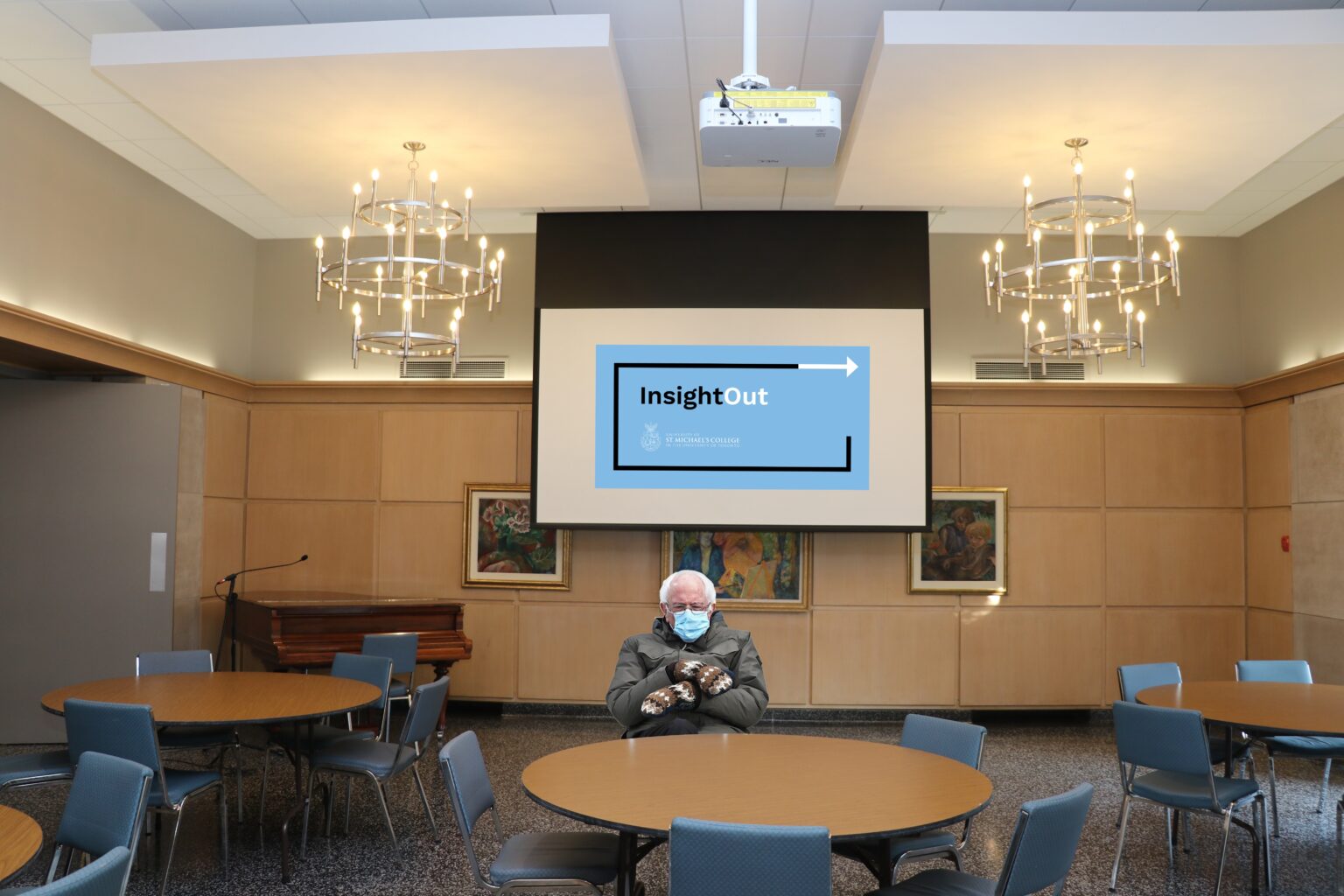
Recent events have delayed the post from our guest contributor. InsightOut will be back on Thursday. As you wait, throw off those mittens and take a tour of the fireplaces of the University of St. Michael’s College.
John Sampson is a fourth-year PhD Student at the University of St. Michael’s College in the University of Toronto. He is writing on the life and thought of the Chinese theologian T.C. Chao. John can be found at home most days, writing his thesis and drinking only the finest cups of hand-crafted coffee.
In Search of Christian Unity: A Chinese Christian Perspective
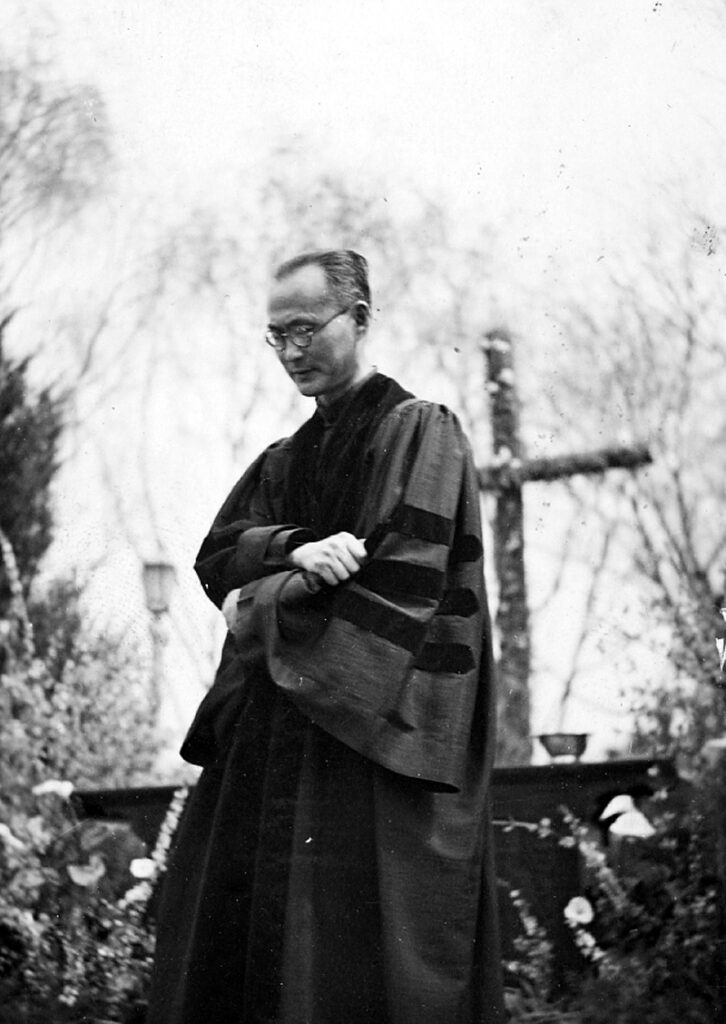
“People must be involved in the work of building up the Church,” wrote T.C. Chao (1888–1979), a famous Chinese Christian theologian and one of the first presidents of the World Council of Churches. “[Christians] do not have the authority to divide arbitrarily, because it is the will of Christ to tear down walls of separation, to split open curtains of division, and create in himself one new person,” he said, alluding to Ephesians 2:14–22. What Chao penned in 1946 has ongoing relevance for Christians around the world today, as we come together during the Week of Prayer for Christian Unity and pray that we may be one “so that the world may believe” (John 17:21). T.C. Chao gave expression to a conviction held by many Christians in the Chinese Republican Era (1912–1949), the period of time when Christianity burst on the scene unlike ever before in China. The conviction was that unity and cooperation were essential if Christianity was to survive, if Christianity was to put down roots in China.
A major obstacle to this pursuit of unity, however, came from the fact that North American and European Christians were trenchantly divided, importing this division into China. Throughout the nineteenth century, foreign mission societies refused to work alongside one another. Catholic and Protestant missionaries remained fixated on their own approaches to Christian faith, on their own doctrinal precepts and ecclesiastical teachings. Protestant denominations produced competing Bible translations and promoted their own translation efforts over and against any other. With few exceptions, Western Christians let divisions that brewed in Europe spill into China, and nurtured these divisions without supplying adequate means for letting a Chinese expression of Christianity take root. This was a deep-seated problem. The desire to preserve Christian practices from one culture (i.e. Europe) stifled the voices of Christians from another culture (China). It stifled the possibility to be enriched by what Chinese Christians themselves had to offer.
In the 20th century things began to change. Many Chinese Protestants criticized the denominational conflict of the Western Church and sought to overcome disunity through the formation of the National Christian Council in 1922. The following year, the Roman Catholic Church convened the first council of the Catholic Church in China, and later consecrated six Chinese bishops in 1926 to allow for greater control over territorial jurisdiction. These practical ways of ensuring that Chinese Christians chart the course for Chinese Christianity were followed by attempts to root Christian identity in a shared Chinese cultural heritage. Just as European Christians turned to Greek philosophers like Aristotle to help advance theological reflection in Middle Ages, Chinese Christians turned to figures like Confucius and Lao Tzu to help shape a unified vision for doing theology in China. The truth of God manifested in classical Chinese learning, argued L.C. Wu 吳雷川 (1870–1944), could be fulfilled in Jesus Christ, who was God’s Way (or Dao 道) made flesh. Just as the moon reflects the light of the sun, so could sages like Confucius reflect the light of Jesus Christ, said Y.J. Zhang 張亦鏡 (1871–1931). Christians could, and indeed, must be sincere about promoting Chinese culture, argued the polymath Roman Catholic theologian P. Joseph Zi 徐宗泽 (1886–1947), who followed the example of the pioneering Jesuit missionary Matteo Ricci (1552–1610). For the first time in history, Chinese Christians shed light on ways of being Christian that were in touch with their own culture. Christian thought and practice were being rooted not in European Christian thought-forms, but in Chinese ones. And unity among Christians of different theological persuasions was beginning to take hold.
But, sadly, throughout the 20th century, crisis and conflict continued to mount in China and sap the strength of a unified Christian effort. The Communist Revolution (1949) collapsed any and all such efforts. The newly established People’s Republic of China restructured all religious practice through official, state-sanctioned Churches, causing the activities of both Catholic and Protestant Christians to become a heavily monitored affair. In our day, with the unprecedented rise of underground house churches and unregistered Christian gatherings, Chinese Christianity has shown that it is not going away any time soon. But Christians now remain painfully divided. As with the Christian division that erupted in St. Cyprian’s day from the Decian persecutions (250 AD), Chinese Christians are divided between those who have joined official, state-sanctioned Churches and those who have refused and faced persecution as a result.
As we think about and pray for Christian unity, we remember that it is not always an easy thing to put into practice, and can indeed cost a great deal. It cannot be imposed, but most flow naturally from the lived-practices of Christians themselves who come from the diverse cultures of the world. Conscious of the things that divided Christians in his day, T.C. Chao saw discord and division in a certain light, in light of the suffering Saviour himself. The divided and broken body of Christ, the Church, sees itself as thus filling up or completing “what is lacking in Christ’s afflictions,” Chao said, citing Colossians 1:24. Christian division is that state of suffering which the Church enters into and remains in until it attains the resurrection. The Church’s bitter hardship amidst discord and brokenness is the way of the cross, a way it can embrace but which, in the end, it hopes to surmount in union with the one, resurrected Christ. This was T.C. Chao’s vision, one which has ongoing relevance for us today as we think about and pray for Christian unity.
Read other InsightOut posts.
Maria Ivaniv is a third-year PhD student at the Faculty of Theology at the University of St. Michael’s College. Her current research, done in conjunction with the Metropolitan Andrey Sheptytsky Institute of Eastern Christian Studies, focuses on the participation of the Ukrainian Greco-Catholic Church at the Second Vatican Council and its reception of the Council in North America. She holds ReMA, MA, and STL degrees in theology and religious studies from the Catholic University of Leuven, Belgium, and MA and STB degrees in theology from the Ukrainian Catholic University. Maria was a lecturer at Three Holy Hierarchs Kyiv Theological Seminary (Kyiv, Ukraine), a teaching assistant in the Theology Department at the Ukrainian Catholic University (Lviv, Ukraine), and served as Secretary of the Patriarchal Commission for the Laity of the Ukrainian Greco-Catholic Church (Lviv, Ukraine).
The Pain of Separation, the Joy of Unity
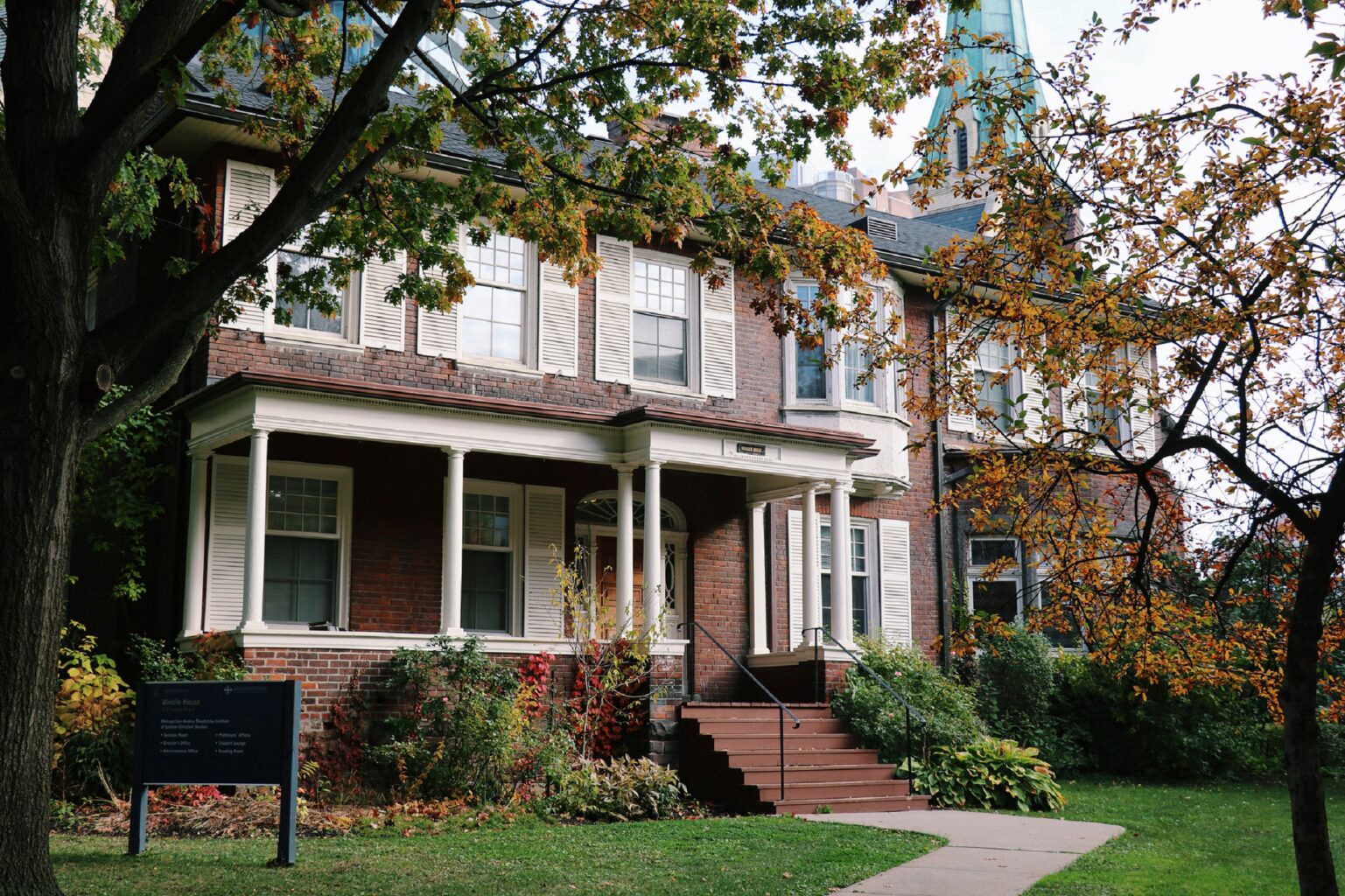
In this time of pandemic and lock-down…we are separated by public and health recommendations, law, and fear for ourselves and our loved ones. In this situation, I desire to be reunited with friends, family, and significant other. I expect that you feel the same way. This pain, which I feel in my heart, reminds me of a time when we could be together and be joyful and content in being together.
This experience can give us a chance to reflect on unity and what it means to be united or to desire unity with others. It can help us think about the question of Church unity, especially during the Week of Prayer for Christian Unity, which for more than a century has occurred every year from January 18–25. In this little blog post I will reflect on the pain of separation, the joy of unity, and my identity as a Ukrainian Greco-Catholic in the midst of these.
I can recall a few moments in my own life when I have felt the pain caused by the separation among Christians. I keep those experiences in my heart as a reason to work for unity. The first time my heart felt the pain of separation was in Amsterdam, where other students and I were attending an ecumenical conference. That was, in fact, one of my first experiences of listening to and speaking with other Christian denominations. It was exciting to see that there are a lot of themes that unite us. As a part of that meeting, we went to a Sunday service in one old and lovely English Reformed Church. There was a wonderful service and sermon. It was the Sunday of the Cross in my Church calendar, and I was happy that the preaching was about the symbol of the Cross and its importance in the Christian life as the sign of our salvation. After that, however, I was disappointed at the absence of the Eucharist in the service, and it brought me some pain. I understood that I could not have received it anyway, but the pain of not seeing the Eucharist—what I understand to be the realization of unity—as part of the Sunday service profoundly pained my heart.
Another experience that brought the pain of separation into focus came during an ecumenical conference a few years ago. The conference was an excellent opportunity for dialogue and sharing about what unites us. Common prayer was part of that conference, and one of the prayer services was a Byzantine Divine Liturgy presided at by an Orthodox priest. It was nice to pray together in one of the ways that I pray in my own parish. But the pain again struck my heart during Communion… Because of the separation, I could not share Eucharist with those who pray in the same way I do. The pain caused by these two experiences of Christian disunity remains. And it creates in me a longing for unity—a unity that heals the wounds among Christians as well as the wound left in my own heart.
Happily, my heart is also marked by other, more joyful experiences. It seems to me that pain alone cannot bring us together—we also need to feel the joy of unity. Studying at the Toronto School of Theology is one of these experiences. Being part of the University of Saint Michael’s College and studying together with other students of different Christian denominations brings me a lot of joy. Also, the presence of the Metropolitan Andrey Sheptytsky Institute of Eastern Christian Studies at Saint Michael’s brings a different voice and many opportunities for the students to experience and learn about other traditions. This experience of common work, studies, prayer, and friendship reveals a lot of differences; at the same time, simply being together unites us.
As I mentioned before, I am a Ukrainian Greco-Catholic. This means that I belong to an Eastern Church of the Byzantine Rite that is in union with Rome. There are 23 Eastern Catholic Churches in the world. Being an Eastern Catholic is beautiful but challenging in some ways. I experience all the beauty of Byzantine prayer, eastern spirituality, and magnificent iconography. I also enjoy all the beauty of the Latin Church, its theology, prayer, and teachings. Living in these two spheres simultaneously gives me the feeling that I see a glimpse of unity among the churches, and I feel the pain of separation and the joy of unity at the same time. But I know there is a long way to go, and all of our efforts are not enough if we do not call on the Holy Spirit to unite all Christians, as He did at Pentecost. Therefore, this Week of Prayer for Christian Unity gives us an excellent opportunity to be together (even if it is virtually), pray, be joyful and ask the Holy Spirit to unite us.
It seems appropriate to finish this little blog post with the words of the Kontakion of Pentecost:
“When the Most High came down and confused the tongues, He parted the nations. When He divided the tongues of fire, He called all to unity; and with one voice we glorify the all-Holy Spirit.”
Read other InsightOut posts.
Dr. Christopher Hrynkow holds a PhD (Peace and Conflict Studies, St. Paul’s College, University of Manitoba) and a ThD (Christian Ethics jointly awarded by the University of St. Michael College, the Toronto School of Theology, and the University of Toronto). Hrynkow is Associate Professor in Religion and Culture at St. Thomas More College, University of Saskatchewan, where he teaches courses in Religious Studies, Catholic Studies, Peace Studies, and Critical Perspectives on Social Justice and the Common Good. He presently serves as the founding director for St. Thomas More College’s new Centre for Faith, Reason, Peace, and Justice. Additionally, Hrynkow is Department Head, Program Chair, and Graduate Chair in Religion and Culture for the University of Saskatchewan.
A Culture of Care
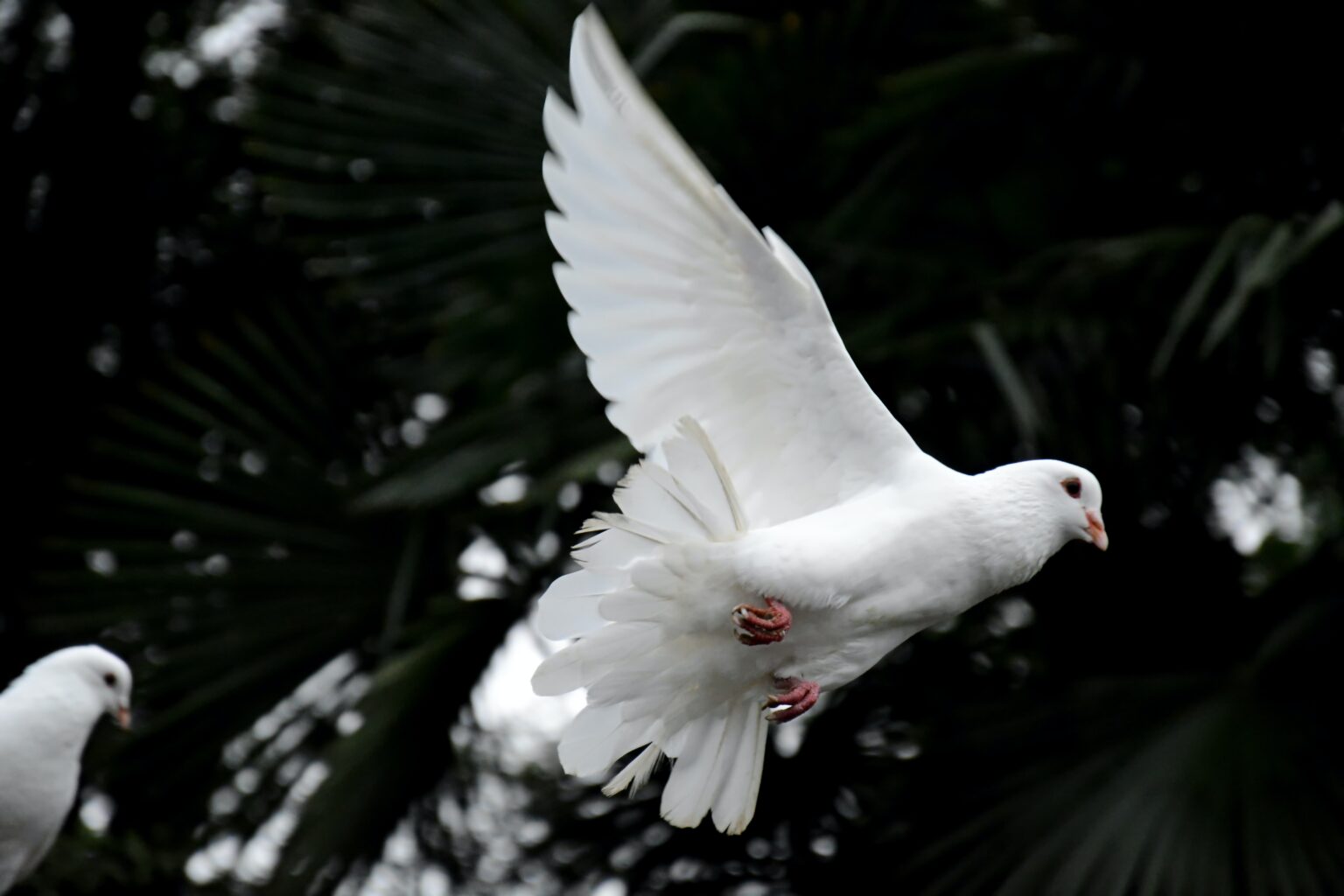
COVID-19 has provided a real opportunity for us to pause and reconsider our ways of being in the world. Such reflection can bring into focus an important question for Christians, academics, and citizens today: what kind of world do we want to see after the pandemic? In considering adequate responses to this question, I know in my heart that we cannot go back to the status quo that existed in late 2019. First of all, especially after this dark winter, we will have lost too many folks who would have otherwise survived. As such, the world cannot ever be the same. Also, my faith along with my formal studies and research in areas including peace, education, and Christian Ecological Ethics have formed not only my mind but also my heart. The cumulative effect, in no small part as result of my experiences at St. Mike’s, is that I am certain we need a transition to more just and verdant ways of being in our religion, politics, education, and action in the world. Better choices in terms of what we select to revive and what we choose to leave behind in our cultures and societies as a result of the pandemic are required to participate in the necessary transformation. From a Christian perspective, this transformation is necessary to more fully accept Jesus’ call to be pilgrims for peace, justice, and the integrity of creation on Earth. Contemporary Catholic Social Teaching can provide a guide for this most important journey. In order to ground these opening points, please allow me to go deeper into one of the most recent examples of Catholic Social Teaching with my remaining space for this reflection.
Since Paul VI established the practice, each year and in anticipation of the World Day of Peace celebrated on January 1, the Catholic Bishop of Rome releases a message. In the 54th message, written for 2021 during a time of global pandemic, Pope Francis addressed A Culture of Care as a Path to Peace. This example of Catholic Social Teaching is both innovative and important. Herein, like his predecessors, Francis considers peace as much more than the mere absence of war but as also including positively defined conditions like social justice, gender equality, care for creation, and, as he himself helped to bring into focus, cultures of encounter and dialogue. Indeed, by introducing “a culture of care” to Catholic Social Teaching, he is recalling his earlier reflections that align with, and enrich, the content of “cultures of peace” so important to peace studies. The concept of cultures of peace is both analytical and aspirational. It helps us to discern those ways that are helpful in cultivating cultures of peace. Additionally, “cultures of peace” provides a framework to exercise our moral imaginations in creative ways in order to provide a vision to drive the action of building substantive peace.
In accord with these intertwined features of cultures of peace and drawing lessons about caring for both each other and the rest of creation from the events of 2020, Francis offers “a culture of care as a way to combat the culture of indifference, waste and confrontation so prevalent in our time” (#1). Summarizing the doctrine of the Catholic Church in light of a culture of care Francis teaches, “this doctrine is offered to all people of good will as a precious patrimony of principles, criteria and proposals that can serve as a ‘grammar of care’: commitment to promoting the dignity of each human person, solidarity with the poor and vulnerable, the pursuit of the common good and concern for protection of creation” (#6). In this light, Francis articulates a duty to promote a culture of care “as a process of education” (#8) in a holistic sense that moves far beyond the four walls of the classroom to touch upon the duties toward the common good not only of teachers and professors but also of those of families, faith leaders, and politicians amongst others. For Francis, supporting the common good with a spirit of solidarity is particularly important at a time when “the massive Covid-19 health crisis…[is] aggravating deeply interrelated crises like those of the climate, food, the economy and migration, and causing great suffering and hardship” (#1). As such, the Pope teaches there can be no substantive peace without a culture of care, which “calls for a common, supportive and inclusive commitment to protecting and promoting the dignity and good of all, a willingness to show care and compassion, to work for reconciliation and healing, and to advance mutual respect and acceptance” (#9). These are prime ingredients for any recipe aimed at nourishing the incarnation of cultures of peace in this world.
To conclude, I would note that in framing cultures of care as a path toward peace Francis is implying there are other paths towards peace, a selection of which he has already engaged in other exercises of his teaching office, including with Laudato Si’ and Fratelli Tutti. Peacebuilding work is transformative because these paths of dialogue and action exist within a reality of integral ecology, where everything is interconnected, as Francis also notes in the 54th World Day of Peace Message. Indeed, that connectivity means a culture of care is transformative whether it be incarnated in small doses like sharing nourishing food with a neighbour or in large doses like ensuring the just distribution of vaccines across both individual societies and the community of nations. Thus, if Francis’ teaching has resonance for you, the global pandemic is no barrier to the necessary transformative journey named in this reflection. In fact, despite its association with restricted movements, lockdowns, and curfews when viewed through a lens informed by a culture of care, COVID-19 actually serves to stimulate this transformative journey. It only remains for us to choose a path, or paths, to peace. Then, we begin, or indeed deepen, our work as pilgrims building up cultures of peace.
Read other InsightOut posts.
James Roussain begins a new role at the John M. Kelly Library this January as the Interim Head of Public Services, a change from his position as Outreach and Instruction Archivist, which he has held since 2017. Prior to joining the University of St. Michael’s College, James worked at Scotiabank, where he was involved in the maintenance and deployment of the corporate records management program. At the Kelly Library, James assists students with their research, exposes students to the treasures in the Kelly Library’s Special Collections, and teaches in the college’s Book and Media Studies program. James is a past president of the Archives Association of Ontario (AAO) and the Toronto Area Archivists’Group (TAAG). In his spare time, he is pursuing a Master of Education in Higher Education at the Ontario Institute for Studies in Education (OISE). He holds a Master of Information degree from the University of Toronto’s Faculty of Information.
On Jellyfish, Loneliness, and Learning
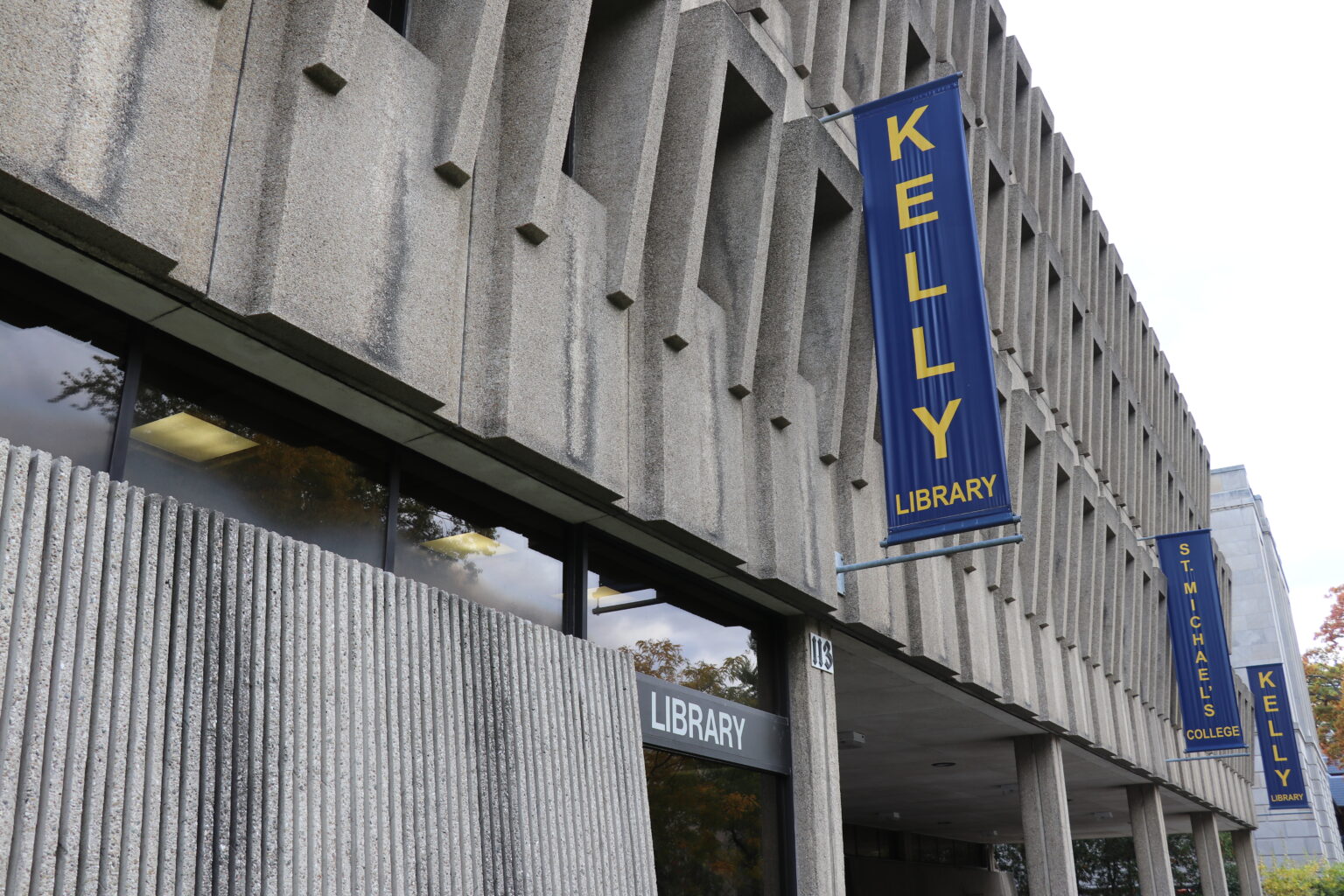
As the new semester gets under way in the coming days, it is important to take a step back and think about those we are working to support: our tireless and dedicated students. With our new reality of living apart and working remotely becoming just that—our current reality—we need to remember that these are indeed strange and stressful times not just for us but for our students, too. As a librarian at the Kelly Library, I am fortunate to work directly with students assisting them in their research, writing, or in navigating the complexities of the University of Toronto’s immense library system. For many, the library is an intimidating space in the best of times. Compounded with the challenges of remote work and a lack of helping hands, finding resources and completing research has never been more challenging, especially so for many of our first-year students, for whom the academic library is an entirely new entity.
During the fall semester, the Kelly Library, in partnership with the Principal’s Office, hosted twice-weekly Research and Writing Help Drop-In sessions, where students were able to join us—remotely—for one-on-one assignment help. With two writing instructors at my side, we would greet students and, using private break-out rooms, answer as many questions as possible over a two-hour period. What started off as a way to accommodate students who were unable to snag longer scheduled appointments grew into a window on our students’ lived reality: too many due dates, a mess of assignments vying for their attention, and an overwhelming sense of isolation and, at times, loneliness. Logging in from their living rooms, kitchens, bedrooms, and sometimes an enviable patio, students shared with us their frustrations in working alone and, for many, navigating time zones and poor internet connections. This has not been an easy time.
As I helped students find articles, tidy up citations, or figure out the best keywords for their upcoming essay on, say, vestigial traits in jellyfish, I grew to realize two things. The first—and perhaps sacrilege to our faculty readers—is the trivial nature of our work during these incredibly challenging times. In more than one occasion I felt the need to reassure students that while, yes, your essay is important, so too is the need to care for yourself and reach out to others. This is not to say we must lessen academic rigour, but rather carry a realistic understanding of what is possible. The second thing I learned is how little I know not only about jellyfish but about every single topic brought to me during these drop-in sessions. The level of academic achievement on our campus is truly astounding. There has not yet been a case where working with a student on their research has not taught me something new, and for that I am thankful.
In looking ahead to the coming semester and the challenges it will surely bring to our students, especially those graduating into a world of social, political, and simply logistical unknowns, we need to work together to ensure empathy and perspective are at the front of our minds. The rise of mental health programs and services on campus—so well advocated for by our dedicated students on SMCSU—brings overdue awareness to the importance of creating community wherever possible. Week after week, soon after logging in, the same group of students would join our drop-in sessions. Some came for detailed questions on style and structure, while others came just to check in. We created community in the most unlikely of places: a Zoom call focused on academic research and writing help. Who knew? In our own unique way we forged a space where students could share their frustrations, get some help, and see a familiar face at the same time. It is easy to get caught up in administrative matters, the daily to-and-fro of emails and meetings, or the challenges of bureaucracy. Take a moment, as often as possible, to guard against these blinders and seek our community. Or, if so inclined, check in with our students and ask them how they are doing. What may be seen as a hollow “How’re you?” during pre-COVID times may now carry more weight than you know.
While the library’s stacks are closed for the time being, our dedicated staff remains available to help. We strive to place the student experience at the centre of our work and tailor our collections, services, and spaces to offer them an inclusive, welcoming, and supportive environment—both in a physical and virtual sense—where they can flourish during their time on campus. In my own role within the library, and my small role on the University of Toronto campus, I am proud to have the opportunity to work daily with our students and to learn alongside them.
Read other InsightOut posts.

We really are all in this together, but each one of us has a unique view of these exceptional times. That’s why we are reaching out again to the St. Mike’s community to ask you to submit a post to our blog, InsightOut.
InsightOut began as a way for students, alumni, professors, staff, and members of the extended University of St. Michael’s College community to share their experiences during the COVID-19 pandemic. Since our first piece ran in early April, 2020, we have heard some amazing stories, ranging from staff members missing their colleagues, and students weighing in on the experience of distance learning, to alumni reflecting on how their St. Mike’s experiences have carried them forward.
While we had envisioned that the blog would be a short-term project, it has settled in to be a way for community members to learn a little bit about each other and to celebrate together the amazing nature of St. Mike’s.
As we begin not only a new semester but also a new calendar year, we continue to look forward with hope to calmer times, even as we ride out still-uncharted waters. In that spirit, a new challenge for readers and contributors to InsightOut: We’d like to hear about what you have learned/are learning during this unusual days. What are your hopes for the future? How has your teaching/learning style changed? What do you now know you can live without—and what you can’t?
The year 2021 will see InsightOut look ahead, with a little bit of nostalgia thrown in for good measure. If you have a St. Mike’s story to tell, or an experience you’d like to share, we’d love to hear from you.
InsightOut submissions are usually between 750 and 1,000 words long, and are accompanied by a brief biography (a paragraph will do) and a photo. The tone should be conversational. The focus is on the anecdote, the lesson learned, the St. Mike’s memory. Occasionally pieces are shared with related sites. Blog posts run Mondays and Thursdays on the St. Mike’s home page.
For more information, or to talk about a possible submission, please contact catherine.mulroney@utoronto.ca or call 416-926-2254.
Dr. David Sylvester is the 8th President and Vice-Chancellor of the University of St. Michael’s College in the University of Toronto. A professor of medieval social and economic history, he holds an M.A. and a Ph.D. from Fordham University, New York City and has taught for three decades in universities in Canada and the United States.
Together in this Season of Gratitude and Hope
And for all this, nature is never spent;
There lives the dearest freshness deep down things;
And though the last lights off the black West went
Oh, morning, at the brown brink eastward, springs—
(Hopkins, Grandeur of God)
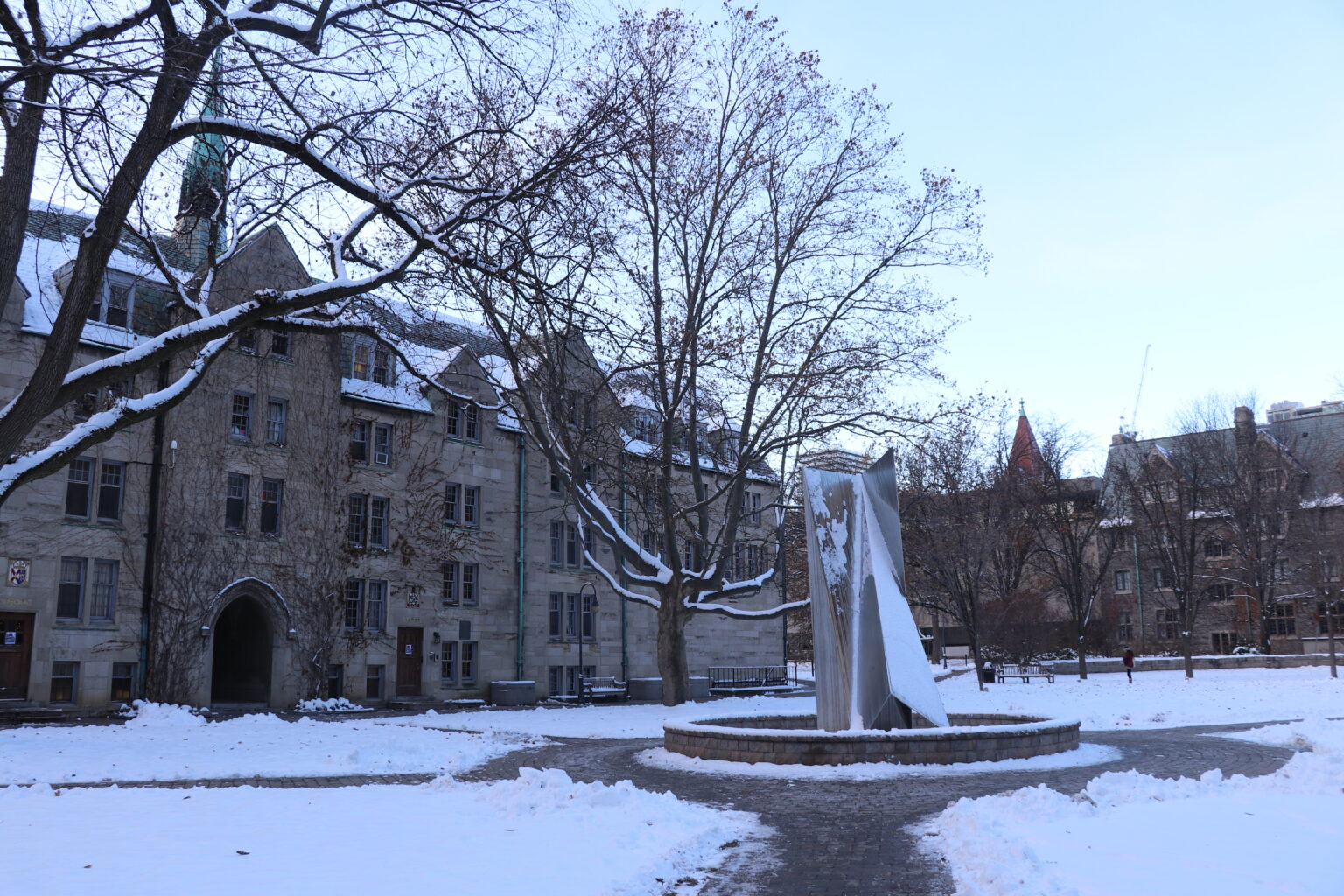
One of the beautiful things about being a part of the University of St. Michael’s College is our attentiveness to the rhythms of life in community. Our pastoral urban campus, with its historic oak trees, colourful ivy and beautiful rock gardens, keeps us attentive to nature, and demands that we acknowledge the passage of seasons. The academic year is traditionally framed, of course, by all the necessary signposts of the academic year, such as move-in days, reading weeks, and midterm and final exams. But St. Michael’s is also defined by the rich cultural and religious mosaic of our community, and we are invited throughout the year to celebrate the many important feast days that help our students, faculty and staff bring meaning to their work and studies: solemn and joyful holidays like Easter, Ramadan, Diwali, Rosh Hashanah, and Nowruz. Even as I write, friends and colleagues are preparing to light candles to mark Hanukkah.
So, here we are together now in Advent. For Christians, we wait and prepare to celebrate the birth of Christ, the light in the darkness, our hope for the world. For all of us, this is meant to be a time for completion, for rest and reflection with friends and family, and for preparations for new beginnings.
As I take stock of this past year, my thoughts are filled with gratitude. In this most remarkable year, in which all of us have experienced disruption, loss and sadness, I am continually amazed by the dedication, kindness and generosity of the people with whom I work. Their compassionate leadership and sacrifice have bolstered fellow students, professors, and colleagues alike. I see it every day in the bold actions and quiet kindnesses they take on. And I know that much more is done unseen.
The response to this pandemic from our students, faculty, staff, trustees, and alumni invites more than gratitude, however. It gives me great hope for the future of our community, and for our role in continuing to bring hope to others. Many challenges remain ahead of us, but the compassionate resilience of St. Michael’s shines through and sustains us even in these darkest days of winter. I now approach each day understanding that our university serves as a light of hope in these difficult days, for each other, and for the society in which we live.
As we pause to celebrate the coming holidays, I wish each of you and your families, a happy and holy Christmas, and prayerful best wishes for a New Year marked by many new reasons to give thanks and to share in the hope that binds us all together.

David
The SMC Troubadours perform physically distanced Christmas carols in this special InsightOut post.
Simon Patrick Rogers is the special collections archivist at the John M. Kelly Library. He earned his Master’s degree in Information Studies (archival stream) from the University of Toronto in 2008 with an additional specialization in Book History and Print Culture. He has extensive experience processing, arranging, and appraising archival materials and is also active as a faculty instructor for the Book and Media Studies program at the University of St. Michael’s College. He currently serves on the University’s Collegium. He has published numerous articles on diverse topics including archives, municipal history and architecture, music, literature and the field of monetary appraisal.
A Busy Fall for Kelly
It has been a busy fall in the Kelly Library’s archives and special collections, at the end of a long, tumultuous year full of upheaval and trial. In spite of the closure of the rare book reading room to researchers, we have been active behind the scenes with some exciting new acquisitions to the collections.
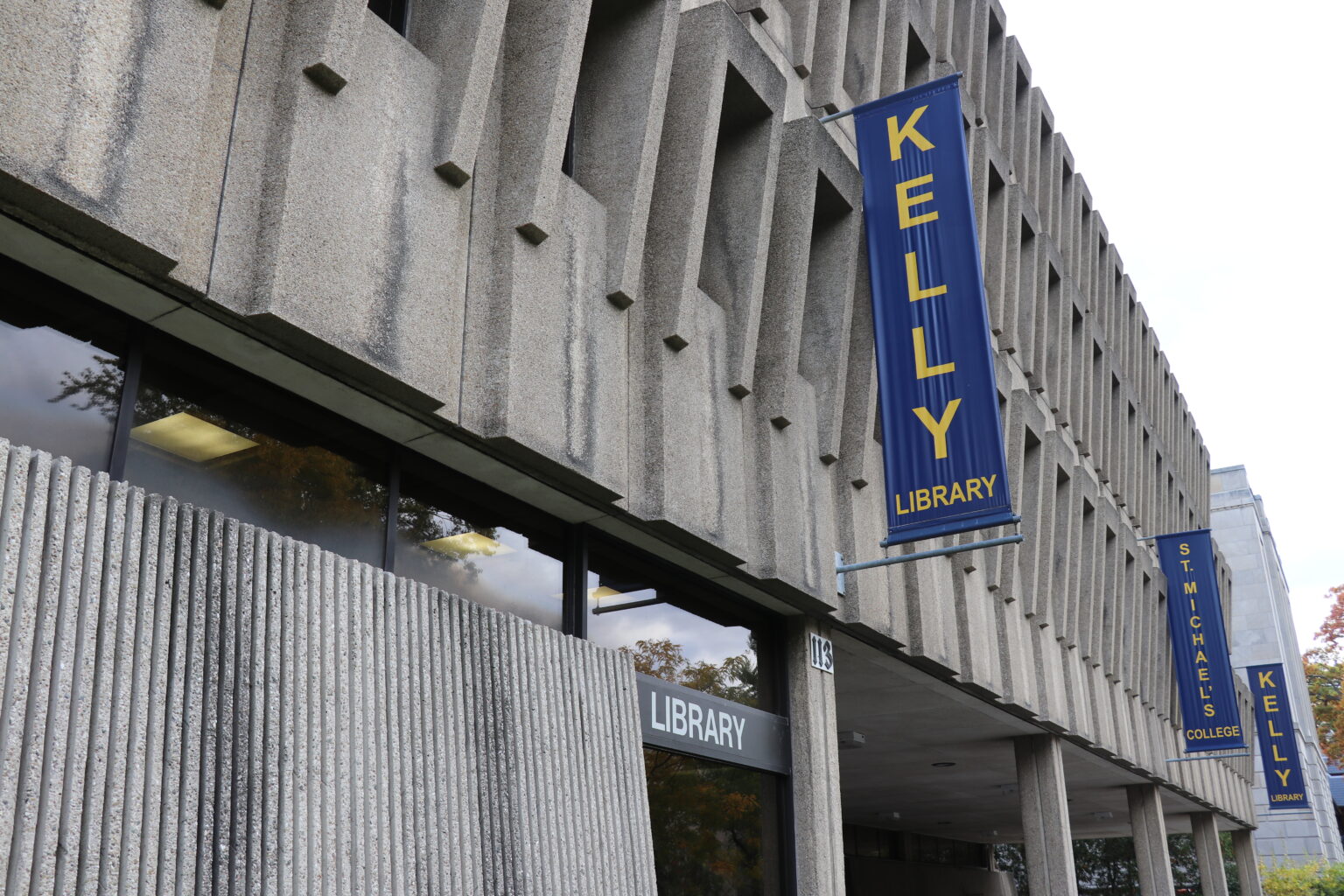
A major accomplishment for us was receiving a wonderful donation of photographs for the Henri Nouwen Collection from San Francisco-based photographer Kevin F. Dwyer, a gift which includes some of the best photographs taken of Nouwen just before his death. A formal announcement of the acquisition, complete with a look at some of the photos, will come in January, 2021.
In other Nouwen news, we have hired a new processing archivist to work on the backlog of Nouwen materials, and especially to focus on important collections of letters and materials collected posthumously in the archives. The successful candidate for this position, Teresa Wong, started on December 1st and joins us most recently from the completion of a prestigious internship at the Getty Institute in California. The position was made possible by a generous donation from Henri’s brother Laurent Nouwen, and the Henri Nouwen Society. We are very excited to begin work on these important collections and to make available for the first time new collections to researchers online through the discover archives database and Collections UofT portals.
I am also delighted to announce the recent acquisition of the administrative archives of the Canadian Alternative Investment Cooperative and Foundation. This important organization in the history of social justice in Canada began in 1984 and recently finalized its dissolution. The archive will provide researchers new insights into Catholic social movements in Canada inspired by responses to Apartheid and to the Second Vatican Council of the 1960s. The co-op’s mandate was to work with registered charities, non-profits, and co-ops to promote alternate economic structures leading to long-term structural change in underprivileged and marginalized communities. They managed loans and financing for a whole range of social enterprises across Canada, including many thriving and firmly established cooperative businesses still in operation. These papers will complement our other social justice collections, such as the L’Arche Canada and L’Arche Daybreak collections, and the papers of the Catholic New Times journal.
There are some further donations in the works, too, that I look forward to announcing in 2021. It has been exciting to build our collections and work with the donors to understand the histories and backgrounds of these new archives.
As we concentrate on working from home, I have been able to do some more direct research work with patrons, especially with providing access to already-digitized materials. Unfortunately, many of the archival collections are not yet digitized. Sometimes this is because of access restrictions or copyrights, but other times materials could be made more digitally available. We have been assembling the equipment to build a digital preservation studio in the Kelly and building the in-house capacity to digitize and preserve those items that can be digitized. We already have the equipment to digitize many of the most common kinds of media we find in our collections, such as photographs, textual records, legacy material on floppy disks, and other born-digital collections, as well as all kinds of audio and video formats. It is exciting to be a part of this process, especially now as we see more and more materials coming into archives that require some kind of digital preservation just to access their contents. It can be a little like detective work to even figure out the software formats of legacy media, and the process of digitization can also be a little like conservation work, as materials are cleaned or restored where damage to the original media format has taken place over time.
Personally I miss the office. A lot of my work is very dependent on having physical access to the collections and, like many of my colleagues, I am feeling the long haul of logging so many computer hours and interacting virtually through video meetings. I also miss the camaraderie of the office space and the kinds of connection that I can make through chatting and small talk with my fellow librarians over my daily pilgrimages to the coffee maker or the staff dining hall.
It has not been all bad, however. I am more mindful and appreciative of life at home and am blessed to have had this extra time with my wife and son. We did some garden projects this spring and summer and enjoyed the harvest. We went camping when we could. I bought a really nice hand-cranked coffee grinder and do a virtual exercise class in the mornings with a great trainer in Ottawa. In some ways this attention to the routines of domesticity is very much like archival work. I hope we can all maintain some appreciation for simple pleasures as we look forward to life after COVID.
Read other InsightOut posts.
Anne Louise Mahoney (8T4) lives in Ottawa. Her lifelong love of books and reading has brought with it countless gifts, including hours of happiness, lasting friendships and a career as an editor. (Photo credit: Photobin Photography)
Books—A Love Letter
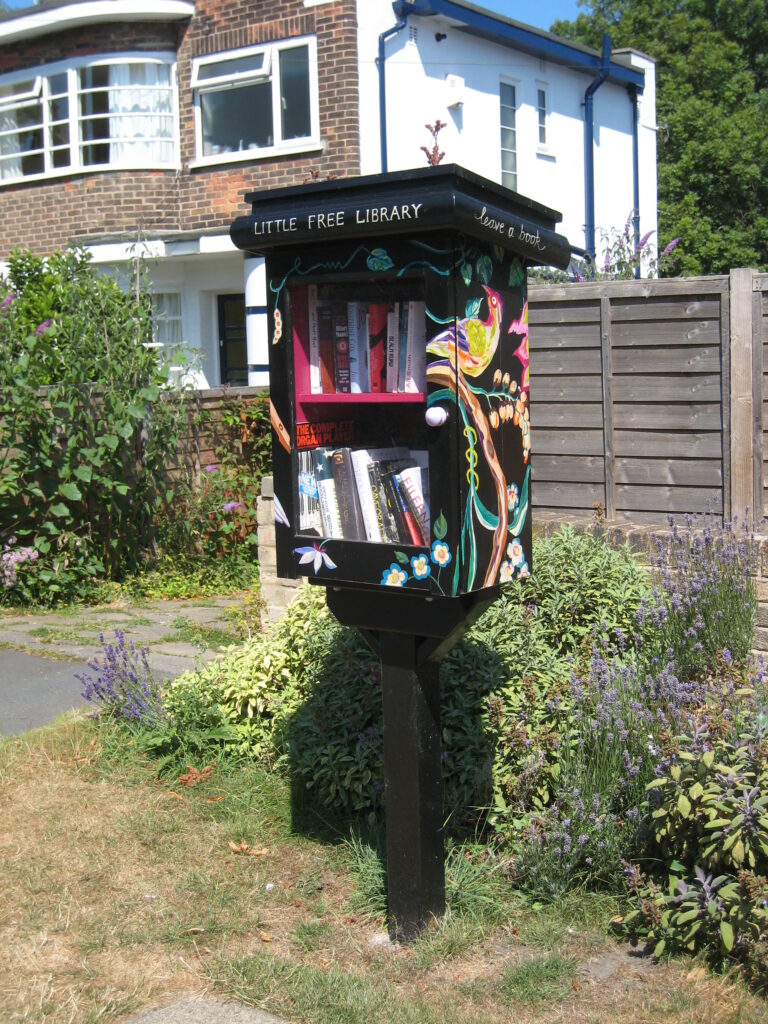
I can’t remember not being able to read. Some of my happiest childhood memories are of traipsing off to the Gladys Allison branch of the Toronto Public Library every Saturday with my dad. My two older sisters and I would spend an hour or two in the children’s section, browsing, reading, choosing our books and waiting for Dad to come and get us after his own browsing in the grownups’ section. After checking out an armful of books each, we’d pile back into the car and head home to devour them. Then we’d do it all again the next Saturday. One of Dad’s greatest gifts to us was those weekly trips to the library. (Of course, he had a massive library at home, too. Any request for information for a school project would result in a stack of related volumes in 15 minutes or less.)
My love of reading only grew over the years. When it came time to choose a university program, all I could be sure of was that I wanted to read books all day. English literature seemed like the perfect choice. And it was! My professors at St. Mike’s were stellar—their lectures were imbued with their own irresistible passion for words and language. I had discovered a whole new world of kindred spirits.
When it was time to venture into a career, again all I could be sure of was that I wanted to read books all day. Before long I found myself editing non-fiction books for kids, then branched out from there. Over the years, I have been lucky enough not only to edit books, but to edit books on theology, spirituality, prayer, meditation, inspiring people of faith, and religious education for all ages. A feast for the mind, the heart and the soul.
You won’t be surprised to hear that COVID-related isolation has offered me more time to read. Although my local library in Ottawa was closed from March until November (even now, we can only drop off and pick up reserved books there), the e-books I borrowed kept me company, made me laugh, touched my heart and helped me cope. A few years ago, I remember hearing an interview with a woman who learned to read as an adult. Her comment has stayed with me: “I’ll never be lonely again.”
I think that’s the essence of it for me: reading connects me with other people. They may live in a different time or another place. They may be like me in some ways, or their experiences may be completely new to me. Yet for a few hours here and there, I become part of their world—and that changes me in some way. Studies have shown that reading fiction helps us become more empathetic: when we let ourselves enter into someone else’s life, we come to know their joys and sorrows so intimately that these almost become our own. We bring that understanding back into our daily lives, ready to share it with those we meet.
In The Library at Night, writer/editor/translator Alberto Manguel puts it this way:
Books may not change our suffering, books may not protect us from evil, books may not tell us what is good or what is beautiful, and they will certainly not shield us from the common fate of the grave. But books grant us myriad possibilities: the possibility of change, the possibility of illumination.
That spark of possibility is what led Dolly Parton to create her Imagination Library in 1995 in the county in Tennessee where she was raised. In 2000, the program went national; it’s now international. Children who are enrolled in this program get a book mailed to them every month until they turn five. As of 2019, the program had distributed over 125 million books.
Ernest Hemingway would probably have approved of Parton’s initiative. After all, he once said, “There is no friend as loyal as a book.” That’s why libraries are such an important part of our towns and cities. Many people I know were heartbroken when the libraries had to shut down this year. Libraries are so much more than buildings with books in them—they are places where people from all ages and backgrounds can gather, learn, share and yes, borrow books, all at no cost. Being cut off from that common space where everyone is welcome was a great loss for so many during a time of many losses and upheavals. In my neighbourhood, the scattering of Little Free Libraries gained many patrons over the past 10 months. In our online Buy Nothing group (where people post items to give away), books were a hot commodity—those lucky enough to get one of the books on offer promised to pass it along when they were done. (A few virtual book clubs even sprang from all those posts and the comments on them.) Kids’ books were in high demand.
Meanwhile, writers’ festivals and book launches found themselves going virtual—and welcoming people from around the world. I was able to see Marilynne Robinson (Gilead) and Margaret MacMillan (The War that Ended Peace) speak at the Ottawa International Writers’ Festival from the comfort of my own home. I also “travelled” to St. Mary’s College in Notre Dame, Indiana, to hear Tara Westover, author of the bestselling Educated: A Memoir, deliver the Christian Culture Lecture in September. It’s usually an in-person event, with about 1,300 people attending. This year, 35,000 people from a number of countries registered for the online lecture. For me, this is the power of books and stories: they bring us together across time and space.
I guess what it all comes down to is community—even when we have to be far apart.
Read other InsightOut posts.
My journey to Canada to attend St. Michael’s College in the University of Toronto began in the Fall of 1971. A member of the last Western Year offered, I was introduced to wonderful professors and amazing students. I graduated from St. Michael’s with a double specialist degree in English and Religious Studies. After attending OISE, I began teaching at what was then Cardinal Newman Catholic High School and then moved to Cardinal Carter Academy for the Arts. After retiring in 2012 (which I fondly call “switching gears”), I continued my interest in education by working as an independent Retreat Facilitator. I married in 1975 and have stayed happily married for 45 years! My husband and I have four beautiful children and two blessed grandchildren. (Marilyn Grace, 7T5)
My Return to St. Michael’s
St. Mike’s has been a home away from home for me for many years. A connection with professors such as the late Fathers Bob Madden and David Belyea and Prof. Richard Marshall, was a gift that kept on giving. I have tried to stay involved with the community through participation in several committees—most especially the Kelly Lecture Committee.
In the 1990s I returned to St. Mike’s as a student once again to take a Certificate in Youth Ministry. As a teacher and chaplain this offered the perfect opportunity to learn and grow in my field. However, my current return to participate in the Diploma in Interfaith Dialogue has been a welcome opportunity to grow and develop in my field as a Retreat Facilitator.
The back story is significant to my deciding to enroll in this Diploma program. I have always been interested in spirituality and various religious traditions. I am touched by all that these traditions have to teach us. Influenced by great spiritual writers like Thomas Merton as well as the Catholic Church’s teachings on inter-religious dialogue and the Vatican II document Nostra Aetate, I have been led to pursue a deeper understanding of different faith traditions. To quote Pope Francis: “I cannot engage in dialogue if I am closed to others. Openness? Even more: acceptance! Come to my house, enter my heart. My heart welcomes you. It wants to hear you. This capacity for empathy enables a true human dialogue in which words, ideas and questions arise from an experience of fraternity and shared humanity.” (Address to the Bishops of Asia, August 17, 2014)
I became involved with the Scarboro Missions Fathers as a retreat facilitator and worked, with Kathy Murtha and others, on offering retreats to young people with a particular focus on the Golden Rule. This experience has enabled me to grow and to enhance my understanding of other faith traditions. Taking a one-week summer course entitled Encounter World Religion in 2013 with Brian Carwana (check out his ReligionsGeek blog) was an experiential and academic introduction to many faith traditions! I would highly recommend this to anyone interested in truly getting a feel and taste for diverse religious traditions.
My participation in a Habitat for Humanity Women of Faith Build in 2008 was also another opportunity to get to know women from other faith traditions. This has been a real gift in my life…much more exciting than book learning as the women involved still meet occasionally to this day. Another Faith Build occurred in 2017 as a precursor event to the Parliament of the World’s Religions which was held in Toronto in 2018. The Parliament of the World’s Religions was another event that led me to pursue more studies and work in interfaith dialogue. As a participant and presenter, I was deeply moved by the diversity and gifts that so many faith traditions offer to the world.
All of this has led to my enrolment in the Diploma in Interfaith Dialogue offered at St. Michael’s and financially sponsored by the Scarboro Missions. The Diploma consists of 10 courses, two of which are foundational. I have been so blessed to participate as a member of the first cohort in this program. The foundational courses—Catholic Perspectives on Ecumenical and Interreligious Relations and Principles of Dialogue—were instrumental in setting the tone and feel for the program. The participants are people who are truly open to dialogue, to diversity and to learning about other faith traditions.
After completing the foundational courses, I have taken courses on Religion and Migration, Indigenous Sacred Traditions and Reconciliation, Judaism, and Sacred Architecture. All of them have been exceptional, with dedicated and knowledgeable professors guiding us. The courses are four weeks in length once a week and involve presentations, pertinent readings and responses. The passion with which the professors present their material is truly what stands out for me in this program. I look forward to the next two courses in which I will participate: Islam and Women in Religion.
The document Nostra Aetate (Vatican II) calls us to remember: “For all peoples comprise a single community and have a single origin, since God made the whole race…” (section I). Hence, we as Catholics are called to learn about our brothers and sisters of differing faiths. I strongly urge anyone interested in growing and learning about other faith traditions to enroll in this informative and challenging program.
Read other InsightOut posts.
Simran Dhir is a third-year international student specializing in Pharmacology and Biomedical Toxicology. She is a mentor of St. Mike’s mentorship, Academic Success, and a Co-coordinator for PAIR Mentorship, a program focused on providing students with peer-mediated mental health support.
Mentorship Reimagined
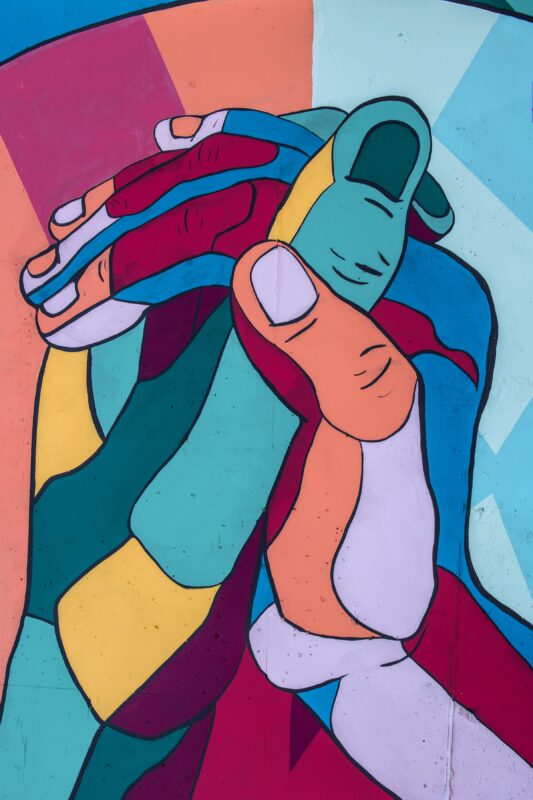
I think it’s a little crazy how different this article would be if I’d had to write it a year ago. I always held the view that mentorship doesn’t really change all that much with time. You go through an experience, you share your story and the wisdom gained, help people use the resources you regret not using, and assist them in getting through something you struggled with. You reassure your peers that things will work out in the end, and that there are ways to make the journey less bumpy. Your knowledge definitely grows with you, which may lead you to give better advice and resources but the core principle of supporting and exchanging ideas with one another doesn’t change.
But what happens when you need to mentor someone and help them go through something that you have no experience in? Surely you can give them resources but how do you talk to a student on a nocturnal schedule and give them ways to stay motivated when you yourself can barely get out of bed for an online lecture? Most of us have never had to navigate online learning for such a prolonged period before, requiring the kind of self-discipline needed in today’s environment. A lot of us have little to no experience managing college extracurriculars and social interaction completely online. A few months ago, it was almost too easy to tell a mentee to join one of the many clubs here at U of T in order to find their community and combat feelings of loneliness but how do you do that now when someone is struggling with the immense workload that comes with school and the inherent separation that comes with the lack of a physical meeting ground?
What I am trying to get at by my long-winded introduction is that the environment this year is new for everyone. Mentorship now, at least to me, is more of a mutual learning process where everyone is really just sharing things that they have tried and had success with. It is about giving authentic, real and raw advice and truly acknowledging every accomplishment with a pat on the back, be it attending every class for the week or squeezing 15 minutes of a workout into your day. Now more than ever, mentors are realizing they do not have all the answers and will have to tread this uncharted path alongside their mentees.
Another integral part of mentorship this year is connection. Most mentorship programs speak about a semi-formal relationship with boundaries where one is not exactly a friend but also not a superior. Now, students are joining these programs to make a friend. This is the extracurricular of choice for many students these days hoping to find community online. The SMC mentorship program, led by two amazing people, Nicolas and Maya, is working on revamping expectations and asking mentees what they are truly looking for. They are including more social events, inclusive timings, and accessible outreach to ensure students have access to everything they need.
From what I can gather, mentees this year can be divided into two broad groups. Members of the first group are looking for assistance streamlining resources available to them; it can be very confusing for a first-year student to navigate how university works, especially when removed from the physical campus itself. The resources, though plenty, are scattered; having someone there to clarify even the smallest of details goes a long way. The other group includes students who just want to connect with someone at the university. Mentorship programs aren’t geared just towards academics and logistics anymore, evidenced by programs such as PAIR Mentorship that revolve around emotional well-being. As mentors, we are trained, now more than ever, to engage in candid discussion about mental health, family matters, and personal welfare. While we are taught to acknowledge our limitations, we are still given regular updates on new mental health resources to share with our mentees.
Joining the Academic Success Team as a peer mentor has been a very rewarding and learning-filled experience for me. It involves helping students manage their time, courses, and activities, and showing them how everything is really trial and error, even for those of us who are mentors. One of the most valuable lessons I have learned has been how mentors must be mindful about the process of sharing resources. While imperative, it is not enough to know the “right” solutions or be aware of every resource around if the list is overwhelmingly large and cannot be applied effectively. I have found that focusing on providing mentees with the top three resources at a time that best fit the situation at hand is much more effective than dumping everything all at once; one can always schedule follow-up appointments to discuss and share further if the initial strategies don’t pan out. Above all, during my appointments I strive to make the student feel as comfortable, reassured, and heard as possible. I share personal anecdotes to let them know that everyone is weathering the same storm right now. It becomes very easy for students to doubt themselves with everything going on but I feel that the mere action of someone identifying a problem and asking for support is a huge, commendable step. We are all re-learning how to study and learn due to the big change in our environment and by keeping an open mind, we can learn a lot from one another.
I believe mentors are forming much deeper connections with their mentees this year, especially since they are being virtually invited into each other’s homes. It has been a challenging year but mentorship is one of the things that reminds me of how we are stronger together and how important it is to motivate and encourage one another as we step forward.
If you want to know more about any of the things I spoke about, here are some resources. Please feel free to contact me at simran.dhir@mail.utoronto.ca if you have any questions or just want to chat about how your eyes are hurting after all those Zoom meetings or how happy you are that Tim Hortons is staying open during the Toronto lockdown
St Mike’s Mentorship: https://www.facebook.com/st.mikesmentorship/
PAIR Mentorship: https://www.facebook.com/pair.uoft/?view_public_for=1077331425618389
Academic Success Peer Mentorship: https://studentlife.utoronto.ca/service/academic-mentor-appointments/
Nicole LeBlanc, Wellness Counsellor at St. Mikes: nicolem.leblanc@utoronto.ca
Read other InsightOut posts.
John L. McLaughlin is Professor of Old Testament/Hebrew Bible and Interim Dean of the Faculty of Theology, University of St. Michael’s College. One of his many COVID-related regrets is that he will not be able to return “home” to New Brunswick this Christmas and have some fresh dulse.
Hope in the Time of COVID
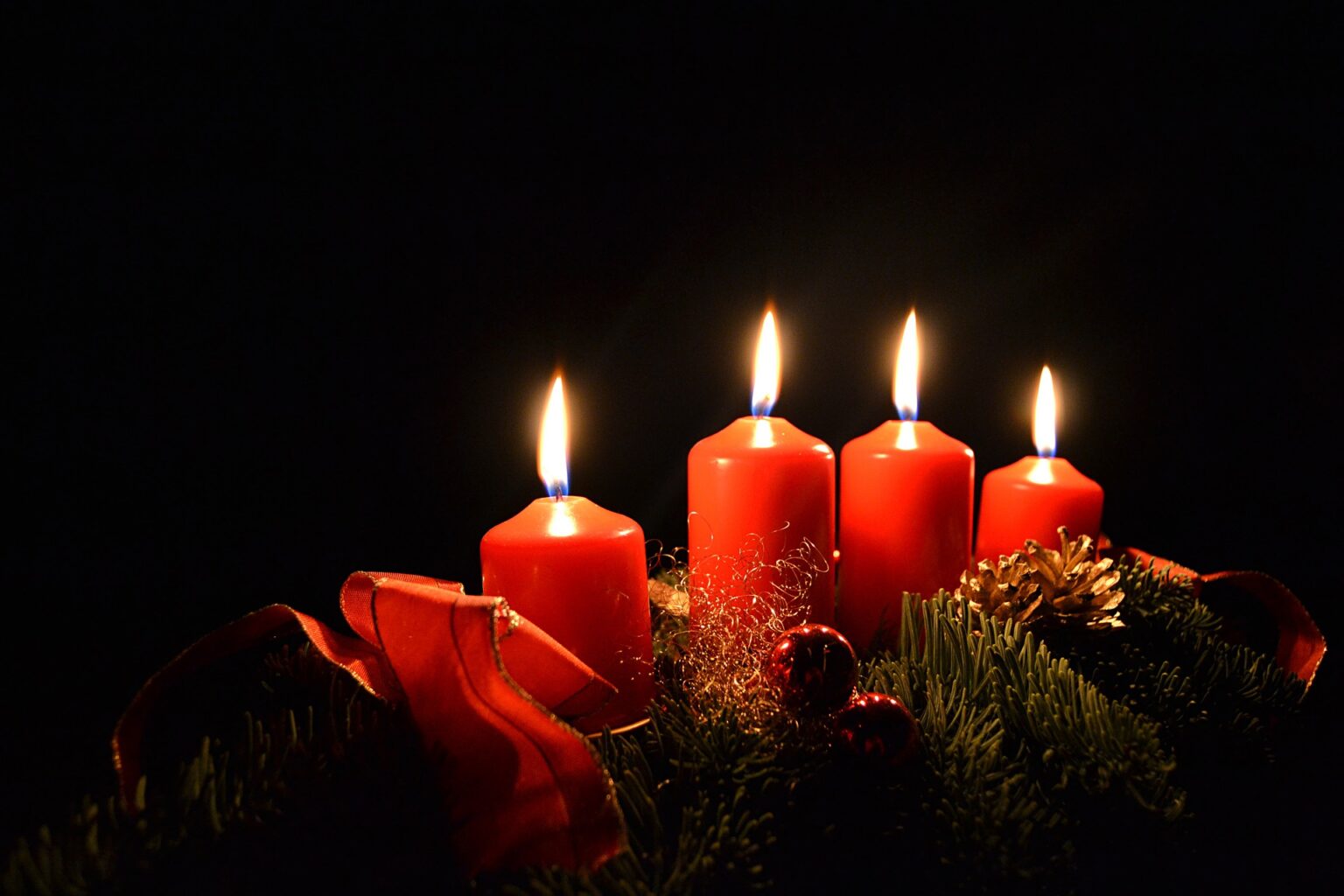
I collect cartoons. My collection focuses on pieces that deal with biblical themes, especially those that cite specific passages. Many are from the Peanuts comic strip, documenting the experiences of Charlie Brown and his friends. One of my favourites, which I often use in introductory courses to convey the continuing relevance of Scripture, shows Lucy and Linus looking out the window at the pouring rain. Lucy worries that the whole world might flood so Linus reassures her by noting God’s promise to Noah in Genesis 9 never to do so again, with the rainbow as a sign of that commitment. She says, “You’ve taken a great load off my mind,” to which he responds, “Sound theology has a way of doing that!”
I think it is safe to say that most of us are carrying more than one “load” these days in light of the ongoing COVID-19 measures. I am writing this on the day that Toronto, and with it the University of St. Michael’s College, began its second pandemic lock down, once again restricting what was still very limited opportunities to leave our homes and even less ability to interact directly with our family, friends and colleagues. The entire University of St. Michael’s College community has quickly come together to respond to this new crisis, making it possible for us to continue our mission as a university. But I am sure that most of us are also pretty tired of virtual meetings and remote classes via Teams and Zoom. I can hear some readers asking, “Where’s your ‘sound theology’ now, bud?”
Well, today is also six days before the first Sunday of Advent, the beginning of the Christian liturgical year. So Happy New Year! Like many religions (Rosh Hashanah in Judaism, al-Hijra in Islam, Vikram Samvat in Hinduism, Nowruz in Bahai’ism and Zoroastrianism, and so on), Christianity starts its year separately from the calendar year. But this is more than the oddity of a different date to note the annual passage of time. Advent marks the resetting of Christian worship. Because Christians structure their annual worship differently, their lives have a different focus, or at least they should. In contrast to the calendar year, the liturgical year is not simply a cyclical repetition of the same weeks and months year after year. Instead, it is an annual spiritual journey towards an end point, reinforcing that our lives are not a random collection of experiences, but rather they have a purpose, a goal. In keeping with this, we start the journey through the life and teachings of Jesus anew by switching to a different Gospel that is read more or less sequentially (with some supplements from the other Gospels), this year from Matthew in 2019–2020 to Mark in 2020–2021.
One might think we would start that journey with the beginning of Jesus’ human existence. Instead, the liturgical year begins with the Advent season, four weeks that prepare for Jesus’ birth on Christmas Day. That is the specific moment of the Incarnation, which Christians celebrate as the epitome of divine engagement with humanity, when God became one of us. But that was not the start of God’s involvement with the world and its inhabitants; the opening verse of both Genesis and the Fourth Gospel affirm that God began interacting with the world “in the beginning.” By starting the liturgical year not with Jesus’ birth but with a period of preparation for that event, the Church reinforces the fact that God’s concern for us did not start a little over 2000 years ago in Roman occupied Judea, but rather long predates the Nativity.
For the next three Sundays, the first reading is drawn from the latter part of the book of Isaiah, which is marked by themes of hope and encouragement. Isaiah 40-66, called Second or Deutero Isaiah, derives from an unknown prophet (or two) speaking to Israelites deported to Babylon after the Babylonians conquered Judah and destroyed the Temple in Jerusalem. This constituted a crisis of faith for the people. In the ancient world, military success was attributed to the superiority of the victorious nation’s god. In this case, the Babylonians had even destroyed the Temple, considered the dwelling place on earth of Israel’s God. But if he (all ancient deities were gendered, male or female, but that’s a very different blog post) couldn’t protect his own house, surely he wasn’t much of a God. At the very least he must be secondary to Marduk, the chief Babylonian God.
Faced with this theological challenge, many ancient Israelites abandoned faith in their God. In fact, this is the point when the Israelite religious traditions should have faded out to become an historical artifact, like the Babylonian religion did when they in turn were conquered by the Persians 50 years later. Instead, the Israelite traditions lived on precisely because of Israelite prophets, historians and priests, who responded to this theological crisis in two ways. First, they reinterpreted their national defeat as God using the Babylonians to chastise them for their history of sin and apostasy, which meant that their God was in control of the Babylonian army, not Marduk. Second, Deutero-Isaiah in particular encouraged the exiles as well as those left in Jerusalem to recognize that God was still with them and would intervene to free them from their bondage and bring the exiles back to Jerusalem, which did happen shortly after. As a result of this and other efforts Israelite religion continued, eventually giving birth to both Judaism as we know it today and Christianity.
“Sound theology has a way of doing that!”
All the Advent lectionary readings emphasize this hopeful perspective. Rather than try to comment on all the readings from each of the four Sundays of Advent (a significantly longer blog post), let me concentrate on how the first readings do this each week. On the first Sunday of Advent, the prophet calls God to come down from the heavens and intervene like he has done in the past, while acknowledging that their sins have prevented him from doing so (Isa 64:1-9). The next week we hear the opening words of Second Isaiah (Isa 40:1-11) with its repeated command to comfort God’s people because they have paid double for their sins. As a result, the prophet announces,
A voice cries out:
“In the wilderness prepare the way of the LORD
make straight in the desert a highway for our God” (v. 3)
which Mark cites (and restructures) in the corresponding Gospel reading. On the Third Sunday of Advent, the prophet expands on this, proclaiming concretely that
The Lord has anointed me
to bring good tidings to the afflicted;
he has sent me to bind up the brokenhearted,
to proclaim liberty to the captives,
and the opening of the prison to those who are bound;
to proclaim the year of the Lord’s favour . . .
to comfort all who mourn (Isa 61:1-2).
Then, on the Fourth Sunday of Advent the lectionary switches to the pronouncement in 2 Samuel 7 that David’s “throne shall be established forever” (v. 16). Historically, the Davidic kingship ended with the Babylonian conquest, but other writers spoke of a future “anointed one,” just as David was anointed when he took the throne, and the Hebrew word mašîaḥ/mashiach gave rise to the idea of a coming Messiah who would liberate them from foreign oppression.
As these passages along with the other lectionary readings convey, Advent is a time of hope and expectation. Those attitudes may be in short supply these days in the midst of a global pandemic, even with recent announcements of possible vaccines on the horizon. But the prophet’s message that God was still with the Israelites in exile, linked to Advent’s anticipation of God coming among us, not as a powerful leader but rather as a tiny baby, affirms the belief that God does not abandon us in times of need. Hope remains.
“Sound theology has a way of doing that!”
Read other InsightOut posts.
Mary Ellen Sheehan, IHM, STD, earned a Doctorate in Sacred Theology from the Catholic University of Louvain in Belgium and is a Professor Emerita of Theology at St. Michael’s College of the Toronto School of Theology. Currently, she offers lectures, workshops, and retreats that relate theology to a range of questions emerging in our current cultural context. She draws on the contemplative character of theology to deepen our experience and understanding of God and to explore the meaning of committed Christian discipleship in our world today.
Keeping My Hand to the Plough
With committed colleagues and always stimulating students, I enjoyed 35 years of blessed ministry at St. Michael’s Faculty of Theology. There is simply nothing like the ecumenical and interfaith exchange at the Toronto School of Theology, where all involved learn so much from each other through theologically informed, respectful dialogue. In 2013, at the age of 75, I left Toronto and moved to Windsor. There, as my Irish-born father used to put it, I kept “my hand to the plough” by offering reflection days, workshops, and retreats on theology and cultural issues in several countries. I also became active in local Interfaith Centres, learning always and contributing, too, to these dialogues. Ah, the beauty of that endless curiosity I was born with!
In December of 2019, I made perhaps the biggest move of all: crossing the border to take up residence in Monroe, Michigan, where our IHM Senior Living Community is located. I received a warm welcome from our many IHM Sisters who live here, several of whom are my longtime friends. At the same time, I found myself engaged in considerable adjusting, recognizing through a few new aches and pains and through some energy and stamina diminishment that I am “aging” a bit! As well, I am still reckoning with the fact that I can no longer be in those stimulating classrooms at TST! However, being healthy and in the Independent Living part of our Centre, I still enjoyed my trips with friends to libraries and to the Detroit Art Museum and Symphony Hall.
But little did I know that by March 2020 everyone on our planet Earth would be adjusting! The border closed, so no annual spring and fall trips for me to Toronto to renew my friendships with colleagues and former students and to experience the rapid changes occurring in the city. In fact, I could not even go to Windsor to enjoy friends there. And increasingly, with new State health regulations, my freedom to go off our Monroe campus has been curtailed. New challenges indeed—COVID consequences—from which not even a bizarre USA Presidential Election process could distract me.
My first inclination was to go into a contemplative Celtic Anchoress state with my room as my hermitage. But that didn’t last too long! While I am sure that those Anchoresses had their informal ways to keep up with the village happenings, they did not have computers and mobile phones with global reaching apps and email! But me? I have those things and so I have figured out how to use them to contribute to the mission of our active IHM Religious Congregation, committed as we are to “the liberating mission of Jesus Christ” through preaching, teaching, and healing.
Through email, FB, Zoom, and WhatsApp, I have been able to communicate with family, friends, colleagues, and former students all over the world. We share our joys and sorrows together and thus keep the strength of Christian community—the Body of Christ, the people of God – alive and well in loving support for each other. After all, Jesus didn’t put any conditions on his claim: “Where two or three are gathered in my Name, there I am in their midst.” We have supported each other in some family tragedies that have occurred, and while we have not been able to gather for funerals and weddings and graduations, we have not been COVID-defeated. For sure, there is no replacement for a personal hug or a good cry together, but technology has kept us connected.
Here in our IHM Senior Living Community we have Sisters who suffer from physical diminishment. But how they are contemplatively connected to our loving God! So, I go to them to ask them to pray with me for people I know in need of strength and consolation from COVID challenges. Several of the Sisters write down first names and put them next to their Living in Christ liturgical readings booklet and pray each day for them. We also have a practice of writing names on a board outside our Chapel so that they are brought into common prayer time, with all the proper COVID protections in place.
Personally speaking, I have preached at our Liturgy of the Word services, a practice that brings me so deeply into the ever-creating Word of God, a Word that helps us all to remember how life emerges from suffering when there is community. I have also kept current with challenging articles and books on colonialism, white privilege, racism, local LGBTQI church injustices, and other acts of social and economic exclusion. I have also participated in stimulating and personally challenging Zoom sessions on some of these topics. I share these resources with others and we have follow-up “techy” conversations that always lead to prayerful reflection and compassionate action.
And always, I have my classical music playing, and of course, too, at times the haunting renditions of Hallelujah by Leonard Cohen and K. D. Lang. At times, too, I put on a CD of poignant lamenting Irish songs. Always in reach is the current biography I am reading and poetry books. Prayer and the arts nurture appreciation. I experience in them beauty aborning from pain, hope arising from tragedy. In a sense, we can all produce something out of nothing when we share our God-given gifts with each other. Our loving God is always creating, healing, and transforming us, leading us to hope even as we struggle with COVID consequences.
Read other InsightOut posts.
David Byrne is a doctoral candidate in theology (ethics) at the University of St. Michael’s College. David is also a professor in the Community and Justice Services program at Centennial College in Scarborough, Ontario. David lives in Oshawa, Ontario with his wife and two children.
A Year of Learning Differently

I have developed a motto over the course of the COVID-19 pandemic. A year of living differently. I have said it so many times, it has become a mantra—a way to refocus when my family and I are faced with change, or when we have to give up something we love to do. No more visits to museums or the zoo? A year of living differently! We camped instead, exploring Ontario’s provincial parks. No big family celebrations or barbecues? Just a year of living differently! So, we gathered virtually and at a distance. Postponing a trip my wife and I were hoping to take for our ten-year wedding anniversary, opting instead for a long bike ride and dinner at home… a year of living differently… though, that one with less panache.
As a professor at Scarborough’s Centennial College and a father of two young children, for us there is no place that the impacts of this year of living differently have been more noticeable than in the classroom. Mornings used to be rushing around to get everyone ready before dropping them off at their schools and driving into Scarborough to teach, coffee in hand. Now, with my wife and I working from home, and our children doing online school, mornings are waking up slowly and making sure everyone is fed and set up with their technology before our various Zoom meetings start.
Though I appreciate the extra time that this change has provided, it has been a hard adjustment. My children miss their friends and teachers, and I miss my coworkers and students. My wife would happily return to the office if able. There is nothing that technology can do that can replace the transformational experience of working and learning together, face to face, despite the enormous efforts of educators over the last eight months. And in many ways, it is getting harder, as we all grow tired of the seclusion and endless hours spent staring at screens.
Though, the pandemic has not been the only major adjustment for our family this year. In the spring, after months of testing, my daughter was diagnosed with a learning disability. As a baby and toddler, my daughter shone brightly. She walked early, she talked early, she was creative and engaging. Though, despite her social skills, we noticed that she struggled with some aspects of learning. Though she would carry on conversations with anyone who listened, she struggled to recognize letters. By the time she reached Third Grade, she was a year or two behind most of the other kids. This meant that in an educational environment where grades are prioritized, we had to adjust our expectations and support her as she struggled through her work, knowing that even with her best effort her report cards would be more a moment of recognizing and celebrating small victories than big ones.
Even with her diagnosis, and the creation of an Independent Educational Plan (IEP), my daughter would struggle in a regular classroom environment. There, with a single teacher whose attention is split between twenty or more students, our daughter cannot receive the support she needs to thrive. Though my daughter’s teachers have been fantastic in their efforts to support her, there is no way in our education system to provide the level of flexibility it takes to meet the demands of children who face complex barriers to learning. So, even though the psychologist who diagnosed my daughter asserted that my daughter could a get a PhD with the right accommodations, I found that hard to believe.
Then COVID struck, and with it the longest March Break in history.
With all of us at home, my wife and I took turns helping our daughter with her work. We supported her to get organized. We taught her to use a laptop with voice technology to help with her reading and writing. We helped her to overcome the frustration that accompanied her constant feeling of inadequacy. It was not a smooth or linear process. There were lots of strategies we tried that did not work. Lots of days where the demands of our own jobs meant that our daughter was on her own. But over time, we saw a change.
Tears became less frequent. Her reluctance to try new strategies gave way to excitement for new learning technology, especially the programs that let her express herself creatively. She started answering more questions in class and, to our surprise, helping her fellow classmates to understand their assignments. And when her recent progress report came out, the results reflected what we were seeing—our daughter was “getting it” for the first time.
I witnessed the positive impact of a flexible, empathetic and unconventional approach to learning. I watched my daughter shift from apprehension to enthusiasm. And, as a professor, I immediately thought to my own students. Especially those who struggle the most—and thought, how might a similar level of support and flexibility benefit them? What do they need to unlock their hidden potential that they have not had provided to them?
As a doctoral candidate in theology at USMC, whose research is rooted in liberative theological ethics, an approach to doing ethics that begins with the concrete experience of people as a primary source for ethical reflection, I was called to think more deeply about who my specific students are. I teach in a program at a school in a community where many of the students face barriers to learning. Many of my students work full time to afford their education. Many provide care for parents and young children. Many are first- or second-generation Canadians. And many are the first from their family to attend post secondary education. Few of them enjoy the same level of support and stability that my daughter does.
What I have found is that in this year of living differently, with my life unrecognizable from a year ago, I am called to embrace how to learn differently, too. As everything I know about education shifts, as I am shaken from my habits, as an educator I am called to change. To change the way I lecture, the way I assign and assess work and the way I view the different approaches to learning of my students. I need to look for ways to identify their unique needs and provide them with accommodations. I also need to see this task as an opportunity as opposed to a burden—one that I admit makes me feel vulnerable, but one that also enables me to see the face of my daughter in each one of my students—the little girl who found her love for learning in a radically different space than the one I imagined.
Read other InsightOut posts.
Adrian Ross is the Executive Assistant to the Principal at the University of St. Michael’s College. Trained as a musician, he is an historical keyboardist specializing in harpsichord and clavichord. He is engaged by the agency of music, especially rhythm, in health and liturgy, especially in antiquity and the Middle Ages.
InsightOut: Les Barricades Mystérieuses

The therapeutic potential of music has long been recognized: King David and Orpheus disarmed evil by the lyre, and harmony and rhythm could restore the revolutions of Plato’s soul, to give but a very few examples. Indeed, and perhaps because of this, the restorative power of music is particularly attested in times of plague. The prescription of music was especially prevalent not just as palliation, but as prevention and treatment, during outbreaks of plague in mediaeval and early modern periods. More generally, music is often desired during life’s most uncertain, critical, and mysterious experiences, notably in dying. The composer Guillaume Dufay (1397–1474), for example, even wrote a motet for his own deathbed (Ave Maria Caelorum III) and to this day music at the bedside continues in palliative care.
It is difficult to define precisely what technical qualities make music capable of healing physical and spiritual crises, and this may be subjective to a certain degree. One piece that has always spoken to me as particularly consoling is the enigmatically titled Les Barricades Mystérieuses (The Mysterious Barricades) by François Couperin (1668–1733). It is one of the most popular and abiding pieces of music written for the harpsichord, a keyboard instrument predating the piano and using plucked strings, like a guitar.
Like much current popular music, Couperin’s piece features a refrain (the rondeau) and three verses (couplets). Beginning with a masterfully simple refrain, each of the verses becomes increasingly dramatic, culminating in the last verse. Having moved from the simple to the relatively complex and uncertain, this last verse prolongs the musical tension and the expectations of the listener until that final resolution and dissolution back into the final refrain. This arc of experience is not unique to this piece, to music, nor indeed to the arts at large.
We are now in November 2020, still in the midst of pandemic and called by the Church to reflect on the passing of life to death and, by grace, to glory. Listening to music, even music of past ages, is an opportunity to experience the beauty of art not merely as entertainment and distraction, but as a transcendental that defeats our barriers, opening the human heart to relationship with others and God.
Please enjoy my interpretation of Les Barricades Mystérieuses, recorded on an instrument built by Yves Beaupré (Montréal), generously on loan from Charlotte Nediger, using a tuning system by Jean-Philippe Rameau (1683–1764).
Read other InsightOut posts.
Nick Cotman did his undergraduate studies in philosophy and political science at the University of Ottawa. He then completed his Master of Theological Studies at St. Michael’s Faculty of Theology in 2019. It was at this time that he began working in the chaplaincy leader position at his alma matter, Holy Cross Catholic Secondary School in Kingston, ON.
Encountering Opportunity in Restriction
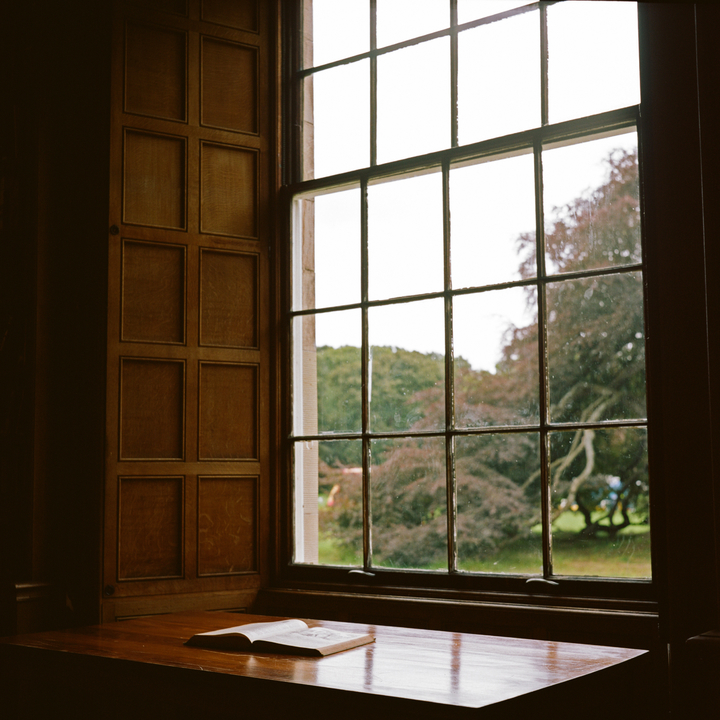
As we have come to expect from most things in 2020, public education in Ontario’s schools looks a little different from most years. In Kingston, secondary schools are following an octomester model, meaning that there is one class each day for 22 straight days. Lunch periods are staggered for each grade in an effort to avoid congestion around the school. Additionally, teachers are livestreaming their lessons to ensure remote learners are getting the needed material. All of these adjustments have required a significant mental and pedagogical reorientation from staff and students. Having only begun my high school chaplaincy career in the fall of 2019, and being out of the school by this past March, these first months back have felt more like the second volume of my first year as I relearn the role.
Being (physically) back in school has affirmed something I had been reflecting on since COVID first began to reshape our daily lives: that a single thing can be both restrictive and freeing. The colleagues and students I have the privilege of spending time with each day are showing me there are unexpected opportunities to be found in the constraints we are currently navigating. I think it is important to note, however, that any “pleasant surprises” we encounter in no way diminish or undermine the unique challenges each of us has faced. Nonetheless, we should acknowledge that by being forced to reconsider the way we approach many things, 2020 has also shed light on the shortcomings of previous practices and provoked new, more effective methods. Being in school has made this especially clear to me.
There are a few experiences I’d like to recount. The first is one which is bound up closely with my position in the school: the absence of school Masses. This has forced a significant shift in focus to other liturgical practices. I have been doing regular class visits to lead lectio divina readings and the Ignatian Daily Examen with students. Although we will be thankful when the day comes that we can celebrate Mass as an entire community, this unplanned hiatus has led me to recognize the richness of these other liturgical approaches. Mass in school was always an appreciated community event, but it was evident that further foundational efforts in spirituality and liturgical understanding would enrich the experience. The event of a school Mass may have become overly familiar, causing a lack of deliberate and reflective participation. J.R.R. Tolkien wrote that we often need “to clean our windows; so that the things seen clearly may be freed from the drab blur or triteness of familiarity.” This break may inadvertently serve as opportunity to form our liturgical sensibilities as a community through other practices, allowing us “to clean our windows,” and more fully appreciate Mass when we can gather once more as an entire community.
Another example that is small but noteworthy is the new inclusion of an end-of-day prayer. Prior to current circumstances, we would recite a simple grace over the PA before lunch. Now, however, with each grade now getting out of class at different times, this was ruled out to avoid further interruptions. In the absence of a lunch hour prayer, we decided to begin doing a prayer at the end of the school day. This small change has been incredibly well received. We join in a meaningful prayer to give a definitive conclusion to the school day and to look forward to the evening ahead. This is a practice we will likely carry forward beyond these unusual circumstances, though we may have been unprompted to explore it without the current conditions.
Without Masses, retreats, or community outreach to coordinate, my priorities within the school have shifted. More than ever, it seems that chats in the staff room and chance encounters with students in the halls are of greater pastoral importance. When there was more room to complete tasks and plan outreach events, I began to let behind-the-scene to-do lists take the front seat. I’m thankful I’ve been required to shift my focus to relationships within the school. When things return to normal, I’ll be sure to maintain this focus.
There are an array of other instances I could talk about, such as our amended graduation ceremony, virtual coffee houses, and the music class using the cafetorium so as to social distance more effectively (allowing halls throughout the school to enjoy their practice). Students seem more open to seek me out to chat (though perhaps they just want out of class since they’re now in the same room all day!) and are displaying impressive consciousness of the well-being of those around them. They are dutiful in mask wearing, have embraced the octomester model, and even surpassed any previous food drives during our Thanksgiving collection.
These are all just small instances of the pleasant surprises I’ve seen over the past months. We have all encountered them in different ways, but I am especially thankful to see them occurring in Catholic education through the lens of chaplaincy. When we learn to embrace unanticipated circumstances, we can open ourselves up to viewing things in new ways and create room for God’s grace in areas we might lack control. In the chaplaincy work ahead, I’ll be sure to continue looking for the pleasant surprises and opportunities for growth that our current restrictions can bring.
Read other InsightOut posts.
Voices Honouring St. Mike’s Fallen
The Soldiers’ Memorial Slype is one of the most moving spots on the St. Michael’s campus. The sandstone archway is found between Fisher House and More House and connects the campus quad to Queen’s Park. Unfortunately, the pandemic has forced the cancellation of on-campus events this Remembrance Day, but our fallen are not forgotten.
Etched into the walls of the spare and understated war memorial are the names of more than 150 men from the St. Michael’s College and St. Michael’s College School, students and graduates, who died in World War I, World War II, and the Korean War.
Here are two of them.
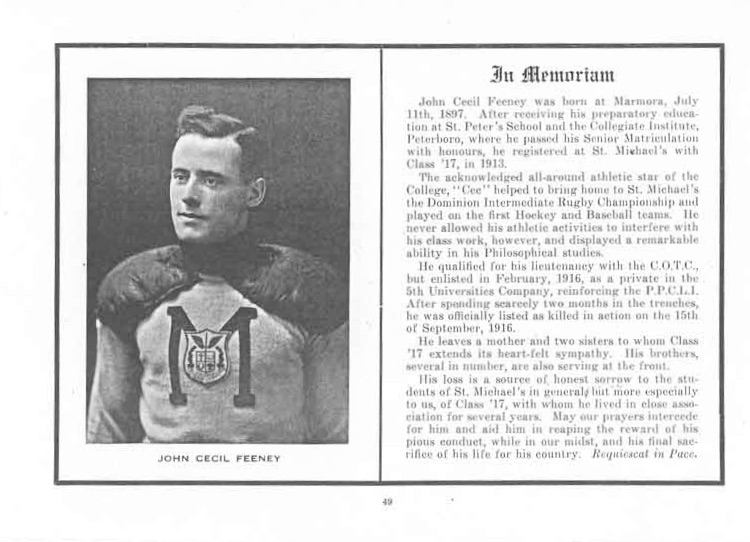
Private John Cecil Feeney was born in Marmora, On., in 1897 and enrolled at St. Michael’s in 1913 to study Philosophy. The St. Michael’s Yearbook of 1917 states that Cee, as he was known to his friends, played rugby, baseball and hockey and was “the acknowledged all-round athletic star of the College.” The yearbook also notes, though, that his love of athletics notwithstanding, Feeney was a dedicated student who “displayed a remarkable ability in his Philosophical studies.”
Although his time serving in the Canadian Officers Training Corps afforded him the rank of lieutenant, he enrolled as a private in the 5th Universities Company, which was part of the Princess Patricia’s Canadian Light Infantry, in February of 1916. In July of that year he joined his battalion in France. Two months later, on September 15, he was killed in action in the battle of Courcelette and was buried there, far from his grieving mother and two sisters, and, as the yearbook notes, “several brothers … serving at the front.” His name appears on the Vimy Memorial in Pas de Calais, France.
“His loss is a source of honest sorrow to the students of St. Michael’s in general,” his classmates wrote, “but more especially to us, the Class of ’17, with whom he lived in close association for several years. May our prayers intercede for him and aid him in reaping the reward of his pious conduct, while in our midst, and his final sacrifice of his life for his country. Requiescat in Pace.”
Feeney is also remembered in the University of Toronto Roll of Service, 1914–1918.
Flying Officer Lawrence Aloysius Doherty, the son of Thomas Arthur and Mary Doherty, was born on April 1, 1918 in Toronto. He was a member of the 414 Squadron of the Royal Canadian Air Force, enlisting in Hamilton in 1940.
While on a secret mission over the English Channel on June 6, 1943, he alerted fellow officer Rowan Hutchinson that he had spotted a trio of German planes—Folke-Wulf 1900s, according to the Canadian Virtual War Memorial—about to attack. His warning saved Flying Officer Hutchinson, but Doherty’s plane was shot down over the Bay of Biscay.
The accompanying newspaper article below quotes Hutchinson as explaining that he was flying in the lead when Doherty radioed to say, “Look out, Hutch!” prompting Hutchinson to turn just in time to see his friend’s plan crash into the water.
“Larry saved my life,” Hutchinson explained.
Doherty, with no known grave, is remembered on the Runnymede Memorial in Surrey, England.
He is also honoured in the University of Toronto Memorial Book of 1939–1945.
They shall grow not old, as we that are left grow old;
Age shall not weary them, nor the years condemn.
At the going down of the sun and in the morning
We will remember them.
“For the Fallen,” Laurence Binyon
1914
Read other InsightOut posts.
Dr. Pa Sheehan is from Sixmilebridge in County Clare, Ireland. He was living in St. John’s, Newfoundland when the pandemic started and moved to Toronto in July. He teaches the Irish language at the University of St. Michael’s College as the Ireland Canada University Foundation (ICUF) scholar.
Finding One’s Inner Resilience
Whenever this pandemic ends and we can look at it in the past, we will all be able to say that it was a defining period in each of our lives. I want to be able to say to myself that it was the period in my life during which I realized what resilience I had always possessed but was not always sure how to use. We cannot control the end result but what we can control are the decisions we make during the process that lead us to the end result. That may sound a little contradictory but it is a perspective I have borrowed from the sporting world and adapted to use in my new normal life.
As a teenager, and even during much of my time at university, I began noticing that I enjoyed being in control of my destiny, that the final outcome would always align with my desires. We all know that this is not always the case, however. There are instances when the outcome does not correspond with the initial intentions. This used to make me feel bitter, angry, anxious and many other things. I look back at exam results with which I disagreed or at not having been picked on a particular sports team and how I allowed these external decisions make me become upset. Little did I know that these external decisions were outside of my control and that I had already done my part, so as long as I was satisfied with the role I had played, I had no reason to feel any ill sentiments.
I truly believe that this pandemic has been a blessing in disguise for me personally. I do not want to belittle the appalling circumstances in which many people find themselves due to the pandemic. I only want to acknowledge the wonderful things it has done for me and I hope you can appreciate that. I talked about resilience at the beginning of this article and I want to refer to it again.
Many moments have tested my resilience during this pandemic. I am from Ireland and have had trips home cancelled, meaning I have not seen my family in well over a year now. My job involves organizing social events and fostering a sense of community amongst the Irish themselves in Toronto as well as anyone interested in Irish culture. This has obviously been affected. One could view my moving to Toronto during the pandemic as a pity, considering I cannot experience what the big city has to offer in its fullness. I am also a sports fanatic, whether it be playing or watching and this aspect of my life has been considerably impacted as well, as sports events were cancelled one after one. I was in the middle of training for my first marathon, which inevitably succumbed to the pandemic. Having been deprived of playing my first love—the Irish sport of hurling—while living for a year in Newfoundland, I welcomed the move to Toronto as it would afford me the opportunity to play it again, given the number of Irish expatriates living in the city. Of course, the pandemic continued and these plans were scuppered along with many others.
A couple of years ago, I would have viewed these setbacks with frustration as I could do nothing to control them. However, I realize now that there is beauty in the fact that I cannot control them. It means that I must make new decisions which are within my control. For example, my inability to physically go back to Ireland has encouraged me to reach out more to people back home whom I may have neglected in the past, whether they be family or friends. It has also motivated me to appreciate the greatness of my homeplace, something I strive to illustrate each day in my teaching of Irish language and culture. Not being able to physically host social gatherings has afforded me opportunities to organize more online events and I am extremely thankful for this as I have most definitely interacted with more passionate and enthusiastic Irish people as a result of the compulsion to go online. The cancellation of marathons and hurling championships has reminded me of the reasons I initially fell in love with playing sport. I do it because it makes me feel good, simple as that. I am still running almost every day, but not because I am training for a marathon that may or may not take place in the future. I have no control over that. I train to feel well. And whenever I can play hurling again, the result of the match will not be significant, nor will the quality of my own performance. All that will matter will be the sheer enjoyment I derive from playing the game and making my best possible effort. Never in a million years would I thought I would have uttered that last sentence!
As plans continue to go awry, flights continue to be booked and cancelled, restrictions are lifted and then enforced again, events are planned only to be aborted once more, I take solace in the fact that my mind is not bound by the outcomes which I cannot affect but by the decisions which I choose to make every day to make the best of every possible situation. Resilience is something each human being possesses but only initiates when necessary. I encourage anyone to solely focus their minds on the decisions they can control. Although you have no say in them, the results will probably astonish you.
Read other InsightOut posts.
Dr. Adam Hincks, S.J., holds the Sutton Family Chair in Science, Christianity and Cultures at the University of St. Michael’s College. Dr. Hincks, who specializes in physical cosmology, completed a B.Sc. in physics and astrophysics from U of T in 2004. In 2009 he earned a Ph.D. in physics from Princeton University and then entered the Jesuit novitiate in Montréal. After pronouncing vows in 2011, he pursued philosophical studies at Toronto’s Regis College and later did a Bachelor of Sacred Theology at Rome’s Pontifical Gregorian University. Returning to Toronto, he worked on a Master of Theology and Licentiate in Sacred Theology at Regis College from 2018–20. He was ordained to the priesthood in 2019.
What Parish Are You At, Father?
“What parish do you live at, Father?” It’s a question I’ve been asked a couple of times since I was ordained last year. The answer—“I’m not based at a parish”—can be unexpected for those who are only used to seeing priests at Sunday mass. The fact of the matter is that most ordained Jesuits are not parish priests, nor have we ever been since our founding in the sixteenth century. The same can be said for those in many other religious institutes, such as the Basilian Fathers who are so important to St. Michael’s College. This doesn’t mean that none of us have parishes—for instance, here in Toronto, Our Lady of Lourdes is served by Jesuit priests and St. Basil’s by Basilians. Nor does it mean that we don’t help out at parishes in various ways. But it isn’t our sole defining ministry.
In my own case, my principal assignment, which I just began in July, is as a professor here at the University of Toronto. To be honest, when I became a Jesuit in 2009 fresh off of a doctorate in physics, I never dreamt that I would come back to the St. George campus, where I had been an undergraduate, as a professor! I figured after the many years of Jesuit formation I would could end up in an academic setting, perhaps at one of the scores of universities we run around the world, but it was only a vague idea.
The position I have begun here is new and unique. Supported by the Sutton Family Chair in Science, Christianity and Cultures, I have an appointment both in the Department of Astronomy & Astrophysics and here at St. Michael’s College. The majority of my research is purely scientific, in the area of physical cosmology, or the study of the Universe as a whole. I work on telescopes that observe the very early universe and that map out the cosmos on its largest scales. But with my training in philosophy and theology, I also have an interdisciplinary interest in how science relates to faith and vice versa. And so a good part of my teaching will be precisely in this area—such as SMC371, “Faith and Physics”, which I shall teach in the winter term of 2021.
Still, one might return to the spirit of the question I began with and frame it a bit differently: why should a priest be engaged in research and teaching at a public university? There is the somewhat facile answer that there have been clerics on faculties ever since the first universities of the West arose in the eleventh and twelfth centuries. The Church has always valued education and the pursuit of knowledge, and thus her clergy and religious as well as her laity have always contributed to these great endeavours. But looking at the question from within the tradition of my own religious order, I am reminded of the notion of “finding God in all things”, a formula often used to capture a key aspect of the spirituality of St. Ignatius of Loyola, our principal founder.
“Finding God in all things” is not a vague aphorism or a flaky aspiration, but is rooted in the deeply Biblical conviction that as Creator, God is intimately present to his creatures, or, as Thomas Aquinas put it, “God is in all things, and innermostly.” This does not mean that if you use a powerful enough microscope (or telescope!) you will suddenly find scientific “evidence” for God. But it does mean that studying creation—whether through the lenses of the humanities, the social sciences or the natural sciences—can be a springboard to contemplating its Creator. “Whatever is true, whatever is honorable, whatever is just, whatever is pure, whatever is lovely, whatever is gracious, if there is any excellence and if there is anything worthy of praise, think about these things” (Phil. 4:8, NABRE). And ultimately, it is “contemplation of divine things” that is one of the principal tasks of those of us in religious life.
So I consider myself blessed to have this opportunity for contemplation, even if the busyness of the job means that I can’t always advert to it! I am looking forward to collaborating with all my colleagues at this university—fellow faculty, other researchers and students—as we lift our minds to consider true and lovely things “worthy of praise.” Not everyone contemplates science from within a religious worldview, and of course there are some who think such a stance is ludicrous. But I’m excited that St. Michael’s College has opened the space to explore it further, and I’m excited to see where it leads. I trust it will make me a better scientist, a better Christian—and a better priest.
Read other InsightOut posts.
John Fraresso is completing his Master of Theological Studies degree at St. Michael’s Faculty of Theology. He completed his undergrad at UTM in the 90’s in Crime & Deviance and Sociology. He currently serves as the Community & Spiritual Life Coordinator for the community of L’Arche Hamilton.
God Keeps Laughing as I Make Plans
If you really want to make God laugh, tell God your plans.
Sometimes God taps you on the shoulder, other times God throws a brick at your head.
Add to these—paraphrasing Gary Zukav— in order to be authentic, your personality must serve the will of your soul, and you get a glimpse into my journey of returning to school in my mid 40s. They actually define my life story, but that’s a book and not a blog.
From the time I was a young boy, I always felt called to be in service to others. If the call to have children wasn’t so strong within me, the call to priesthood might very well have won out in my teens. I listened to that call to have children and was blessed with three beautiful kids. Since they were (and are) my highest calling, I launched into corporate life in my 20s and had a highly successful career. Though it was gut-wrenching in many ways, it served my kids well by providing a very comfortable life for them. On the other side of this coin, making millions more in sales and margin dollars for a multi-billion dollar company did nothing to serve the least of my brothers and sisters, nor my soul’s calling.
About five years ago, I was discarded like yesterday’s news by the company I had poured my life and soul into. That monumental event—which at the time seemed devastating—set me on an incredible journey up to this day, a journey that continues to unfold. What is evident in it, though, is that the will of my soul is getting the upper hand, as my personality is listening to it a lot more than it used to. God keeps laughing as I make plans. Sometimes God taps me on the shoulder and I listen; more often than not God has to throw a brick at my stubborn head.
Richard Rohr wrote an entire book, Falling Upward, on what happens when we hit mid-life as we start to reassess our values and where we’re heading. Circumstances started to line up for me to follow my dream of returning to school so that I could follow a vocation to be in service to others—which, you will note, sounds entirely different from a “career change.” I enrolled in St. Mike’s Faculty of Theology to do a Master of Theological Studies degree.
Many people have said to me, “Wow, that’s quite a change. What made you decide to go in that direction?” My answer is always that it wasn’t a “change” per se; it is simply a matter of honouring what has always been deeply seeded in my DNA, the will of my soul.
I decided to do the “responsible thing” and continue to work full-time so I could make money while doing school part-time. I didn’t really need to; my financial situation had allowed me to go full-time, but I didn’t listen. Result? The new company I was working for shut their operations down. God. Brick. Head. I listened, and dedicated to school full-time.
I decided to do a field placement in my degree. My professor suggested, after a period of discernment and discussion, that I do my placement at L’Arche. Turns out—and he was bang on—that someone like me, so stuck in my head, could learn a lot from people who live from their hearts. In the ten months I have been at L’Arche I have learned more than my entire education, going all the way back to junior kindergarten.
Yet even in this journey of the past few months, I continued to make decisions with my head and didn’t listen to my heart. Put another way, my personality wasn’t serving the will of my soul. God showed up again, brick in hand. L’Arche had to remove all volunteers from their homes when COVID struck, including me. A week later, they offered me a relief assistant position. I struggled with taking it, because my head told me that perhaps I should find something full-time for the summer (a nice cerebral decision that didn’t consult my heart). My heart eventually won out, and in no time I was getting more hours at L’Arche. Fast forward a couple of months, and the person who was my supervisor at L’Arche—their Community and Spiritual Life Coordinator—was retiring, and they needed someone to fill the position.
Guess what I’m doing now! Of course, as a result of listening to my heart, it all works out well with my studies: I can balance both this position and my studies. Though it is highly regretful that classes aren’t in person—I didn’t return to school after 20+ years to do it online—the fact that they are virtual, and that I don’t need to commute from Burlington to Toronto for classes, allowed me to take this service position at L’Arche.
This is literally a microcosm, a small sample, of the incredible events that have conspired to allow for this to come to fruition. My super-stubborn self has learned (more accurately, is still learning) the valuable lesson that you can’t stand in the way of the will of your soul. I guess with more brazen effort and deafness one could. I am sure many do. I know I have. But when you surrender even just a little, gain a little humility, ask God to guide you, simply go with the flow, and let go of the wheel so that The One with a better driving record can take it, miracles happen.
Again a couple weeks ago as my head was trying to run the show, God sent another messenger to remind me. Without even knowing I needed to hear it, she shared Proverbs 3:5-6 with me: “Trust in the Lord with all your heart, and do not rely on your own insight. In all your ways acknowledge Him, and he will make straight your paths.”
Thankfully I noticed this subtle tap from God, gave control back to God, and saved myself another brick to the head.
Read other InsightOut posts.
Risa de Rege is a library technician at the Kelly Library. She has a B.A. in history, art, and medieval studies from the University of Toronto, and is currently a master’s degree candidate at the Faculty of Information.
The Ups and Downs of a Paradigm Shift
The past year, and the unwelcome pandemic that came with it, has brought a lot of change to my life. Usually I’m a person who is happy with things the way they are, but every now and then the paradigm shifts, so here I am. Since January I’ve started a new job here at St. Mike’s, seen my hobbies completely change for the foreseeable future, and enrolled in a graduate program. Nothing is normal, and every day I feel the stress of a global disaster. But maybe the British were on to something with “keep calm and carry on.”
I’m no stranger to libraries. I worked at Victoria College for several years at the circulation desk, and in 2018 joined USMC as a processing clerk in the technical services department. A few years ago I decided to make a career out of this experience, and recently finished my library technician diploma. In January I had the pleasure of joining Kelly’s access and information team full-time—only for us to shut down about 10 weeks later. After a few months working solely from home (probably the longest I’ve gone without visiting campus since high school), I was back on-site to help with shifting in anticipation of an ongoing construction project. I then helped with curbside pickup and, more recently, re-opening for study space. Not exactly how I imagined my career really taking off, but sometimes that’s just how it is.
Working from home offers more flexibility and no more time lost to commuting. I have a bit more time to myself, but nothing to do with it. Outside of work and school I spend most of my time singing opera, a hobby which for obvious reasons will not be coming back anytime soon. A trip to perform in England this summer was postponed to a healthier year, and I have many friends whose shows, if not whole seasons, were cancelled. I have been singing virtually, though. While unfortunately my local opera society has not ventured online, I’ve rejoined the Toronto Mendelssohn Choir, which is producing a virtual concert season, and I continue to sing with a community choir which has adapted marvellously. This all-ages, all-abilities group generally sings music written specifically for it by local composers. While singing together live on Zoom is basically impossible due to a host of technical issues, our current composer-in-residence is creating music specifically with this situation in mind. It’s been fun to explore music this way, but it’s not the same. It’s really articulated to me that I sing not only for love of the art form but for love of the people I sing with.
One true advantage of COVID is that working from home means I can foster kittens. I’ve fostered adult cats for years and now have my own, a tabby named Autumn who I picked up the day after Kelly closed. But now, being home most of the time means I’m here to keep an eye on things (I love cats, but I don’t trust them). I started taking in kittens in July, and I’m on my second pair now: two brothers who have a mild neurological condition that affects their balance and motor skills. Among all the stress of a global pandemic, a million dead, a looming election, an environmental crisis, etc., it is extremely grounding to take care of two sweet, vulnerable babies and know that I am giving them a second chance at a happy life. Sometimes all the good we can do is small, but that doesn’t mean it doesn’t make a difference.
Another thing I’ve started during COVID is my master’s degree at the Faculty of Information. While I’m grateful that the Faculty committed to an entirely virtual semester early on, an entire graduate program quickly moving online is not without its difficulties. But I was eager enough to start that I didn’t want to delay another year just on the off chance that in-person courses might return in the fall of 2021, and I don’t regret it. It’s nice not to have to worry about commuting any farther than across my bedroom to my computer desk. And while online classes are still pretty structured, there’s a bit more flexibility to go at my own pace. I did my library technician diploma completely online, through Mohawk College, and it was an entirely different experience that I found very positive. Classes designed to be delivered online are very different from classes designed to be in-person that get thrown into Zoom. Everyone in academics has described this year as a “learning opportunity.” What we learn from it remains to be seen.
The biggest downside is that communication is much harder and mostly relies on the strength of one’s internet. With professors still encouraging group discussions as a major part of classes, I’ve found that a lot of my time is spent trying to hear someone over background noise or a bad connection. Due to either bandwidth or shyness, few people have their cameras on so it’s been very difficult for me to feel like I’m getting to know anyone. If there’s one thing COVID has taught me, it’s how much I rely on casual social interactions: chatting before class starts; stopping by a former workplace to catch up; and the subtle body language and facial expressions that contribute so much to conversation. In some ways staying behind a computer is good for social anxiety; in other ways it’s far worse.
Still, things have been okay. I want to do a thesis and I’ve been able to start refining my ideas and doing some preliminary research this term. I’m interested in fringe beliefs, like conspiracy theories, the paranormal, or pseudoscience, and why people believe in these things. While I’m pursuing this mainly out of personal interest, it’s not hard to justify why understanding science resistance is pretty important in the current state of things. If we ever want to go back to learning in-person, we need to get more people on board with the latest epidemiology.
Read other InsightOut posts.
Nick Olkovich is an Assistant Professor and holds the Marie Anne Blondin Chair in Catholic Theology at St. Mark’s College in Vancouver. He completed three of his four degrees at the University of St. Michael’s College where he met his wonderful partner Julia, a graduate of Christianity and Culture and the Faculty of Theology, in a course exploring the thought of Bernard Lonergan.
Nick and Julia’s Victory Garden
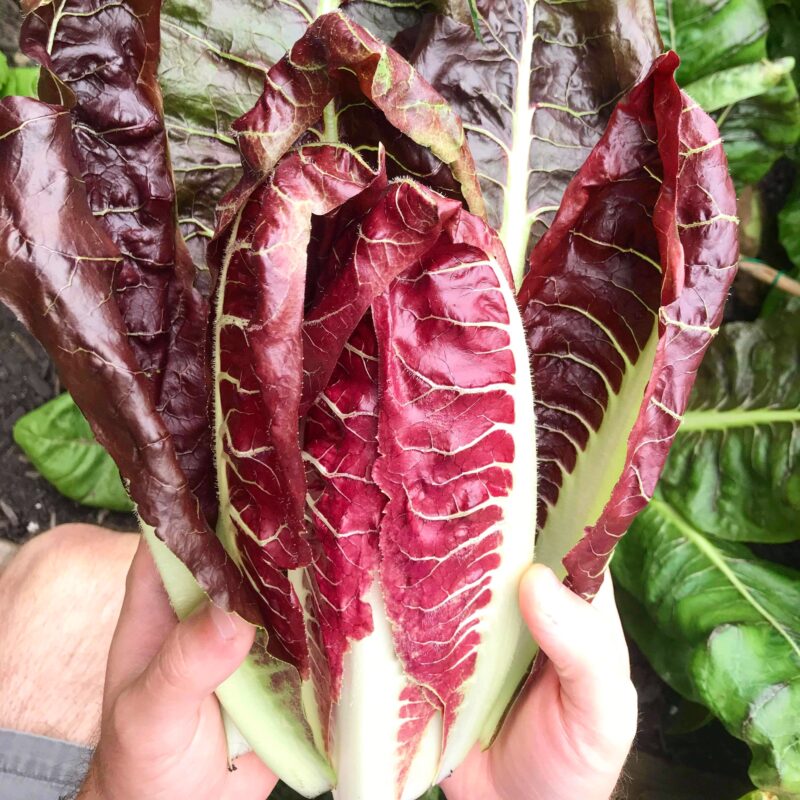
I’m sitting in my living room looking at what’s likely to be the last tomato from the small garden we planted at St. Mark’s College here in Vancouver. Shortly after everything shut down on March 16, 2020—and well before the ground was ready in Toronto—Julia and I found ourselves sowing seeds—two types of lettuce, arugula, radicchio and puntarelle—and planting tomato, eggplant, pepper and cucumber seedlings.
Anxiously awaiting signs of germination and growth, we’d close our laptops around 5 p.m. every second day and drive up to the College to check on our pandemic garden. Slowly but surely our seeds sprouted and their shoots began to look like miniature versions of themselves. Within weeks we were eating arugula while Toronto was still under a pile of snow. Yet, our tomatoes had barely grown; the cucumber seedlings kept dying; and I was convinced that my pepper plants were shrinking. I was frustrated. Anxiety over the pandemic combined with the pressure to work harder and accomplish more. I was hard on myself like I was hard on the garden.
As the lockdown wore on, workdays and then weeks began to blur into one another and yet time stood still in a different way when we’d call it quits, earlier and gradually with much less guilt, and head up to the College. We’d go when we were miserable or angry with each other. It was quiet and it helped. We’d go on the weekends sometimes when the sun was shining and it helped even more. Julia needed her steps and so we’d walk after pulling weeds and talk in ways that our pre-pandemic weekdays never seemed to allow.
As time went on our near daily trips became routine. We’d pack our tomato ties, our scissors, and big ziplock bags that I’d wash after each use. Soon we lost access to a hose and so we started bringing a watering can that one of us would fill six or seven times behind St. Mark’s Parish whenever Fr. Rob wasn’t hearing outdoor confessions. As summer finally started to arrive in Vancouver the garden became a hot spot of activity. We met neighbours who told us they liked our greens (thanks?); neighbours we traded stories and plants with; other gardeners on the UBC campus who envied the shade our lettuce got; neighbours’ children and their pets. I began running into work colleagues, one who tended two of the College’s four garden beds, and others who still had access to the main building. These chance encounters and the short conversations they prompted—so everyday and yet so oddly meaningful—broke up the monotony of daily Zoom calls and online happy hours. Soon enough the garden started to produce and everyone we ran into or visited got a bag of lettuce or clippings of chard. What had started out as a pet project had become a way to connect.
In the end, not everything worked out. The eggplant and peppers never grew. Most of the tomatoes will never ripen. But over time my frustration with the garden turned to acceptance and then celebration. Look at all the delicious things we got out of two overcrowded and partly shaded boxes. Over time I’ve grown to be easier on myself and to celebrate all the little ways Julia and I have grown over the past six months. None of it was expected. None of it was easy. All of it was grace.
Read other InsightOut posts.
Michael Coleman is a non-degree studies student at the University of St. Michael’s College. He received an Honours Bachelor of Science degree, double majoring in Physiology and Biochemistry, this past spring. He has also served as a Residence Don for the past three years. In light of the pandemic, he aims to use this 5th year to broaden his academic horizons as well as seek more potential graduate school and employment opportunities.
Never Let the Fire Die
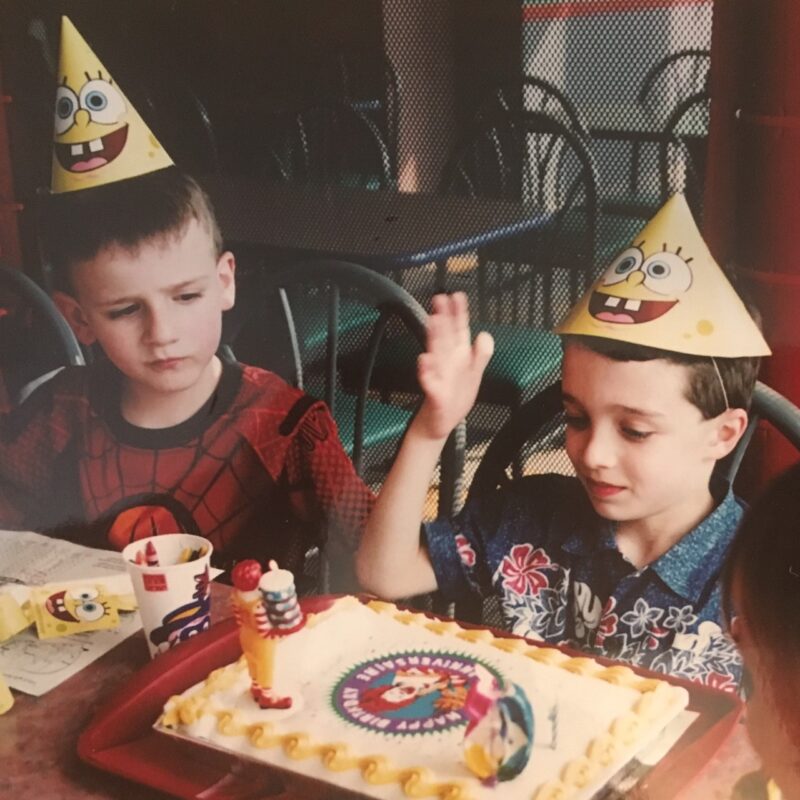
Last month, I celebrated my 22nd birthday with my best friend, Mitch, since the day also marks 18 years of our friendship. I’ll admit that the card he wrote made me quite emotional and reminded me why I call Mitch my brother. He knows that this is a significant year for me regarding academics and Donship, so to instill confidence as only he can, he writes, “You are an inspiration to everyone around you. Never let that fire die.” Sadly, and as much as I’d love it to be, this InsightOut isn’t about Mitch. Instead, I want to take this opportunity to discuss what “never letting the fire die” means as a Don, and how the St. Mike’s Don team is working to continue supporting and inspiring students during these uncertain times.
Serving as a Don for the past three years has been a true privilege. It is a role that allows you to get to know and support the development of residents—typically totalling around 100 people within an average career. Due to the nature of the job, however, you ultimately have double or triple that in numbers of residents on campus who know who you are and recognize you as a student leader. They see you everywhere, and they are always watching.
What I’m getting at is that, as a Don, you end up impacting and setting an example for more students than you might be aware of, hence why we often have to moderate our presence both in-person and online, always acting with good judgment and consistent discipline, and providing accurate referrals where necessary. Sure, every year of Donship comes with its spikes of difficulties, be it busy schedules or unexpected incidents, but it’s part of the job.
This year, however, we are dealing with the most chronic obstacle we’ve ever all faced as a Don team: the pandemic. This prompts the question: How have the Dons adapted to this pandemic-induced shift, and how do we aim to continue to support and inspire students through these new trials and tribulations?
I’ll begin by addressing the first part of the question: How have the Dons adapted to this pandemic-induced shift? Well, let’s talk about what has changed on campus and within the role. All rooms are now single-occupant, overall floor capacity has been reduced, and there are maximums on how many students can be in one space, be it washrooms, common rooms or Brennan Hall’s COOP. Some new rules we must enforce include wearing masks in common spaces and restricting guests from different communities. Furthermore, students are sitting at a distance from one another when dining in the Canada Room, though we’ve recently converted operations to take-out only to comply with provincial guidelines. Lastly, all house meetings and events are to be held online. Thanks to our modified training this year, new and returning Dons alike were able not only to learn about the usual rules of residence and the new COVID-related rules, but also how to use a variety of video conferencing platforms for use within their communities.
Needless to say, these conditions can feel rather isolating and intimidating to both residents and Dons alike, so let’s address the next part of the question: How do we aim to continue to support and inspire students?
This is where “keeping the fire alive” comes into play. This year has been a true testament to our Dons, ensuring they’re in this role for the right reasons. Unlike previous years, we don’t get to have in-person activities or meetings with our residents and must somehow still provide the same degree of support. We can’t allow quarantine or the changes in our role to affect how we act, either, because as previously mentioned it’s still all eyes on us, and as student leaders we can’t succumb to isolation.
We have to maintain our responsibility to our residents by compromising, having those meetings online but devoting ourselves to maintaining optimism and enjoying every interaction we do have with students outside when we see them on campus.
It’s also important for us to remember and share with students that though many buildings and in-person services are closed, we are all still able to access health and wellness services, academic counselling, and registrarial services online where needed. When libraries and gyms are open, I’m sure to tell my students that those resources are available for them, and often end up running into them there. Referrals are also arguably easier to make for students using online platforms, as I can now easily copy and paste any info a student might need during our video call. This reduces the amount of paper notetaking and business cards, and provides a written record of the referral in this digital age.
As a Don, it’s important to recognize that although the job may not look as rewarding or as personal up-front, it is still a job that relies on community-building, enforcing rules, and overseeing the academic and social development of our residents. The support from the Dean’s Office has also kept us informed and motivated. They always keep us updated on guidelines and are always there to talk to us and help us avoid burnout. As student leaders who are passionate about our position to inspire and set an example for those around us, I think Mitch said it best–we can not, and will not, let our fires die.
To close, I ask you to acknowledge your fires as well. Think of things that you have maintained during these uncertain times out of passion and responsibility. Meditate and reflect on what they are and give yourself due credit and congratulations for keeping your fire alive.
Read other InsightOut posts.
Nisheeta Menon is a graduate of St. Michael’s Christianity & Culture program and holds a Master of Divinity degree from the Faculty of Theology. While studying theology she served as the Social Justice Co-ordinator and Student Life Committee Vice-President. She is now a high school Religion teacher in Mississauga, where she hopes to continue her co-curricular work serving her school community in the areas of equity and diversity education and chaplaincy.
Wandering in the Desert
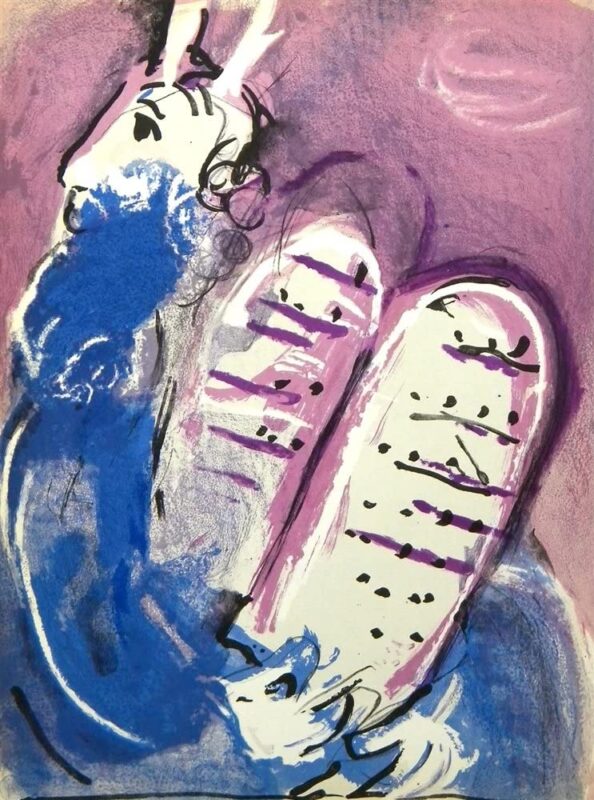
Autumn is a time of year I have always loved. As a student, I looked forward to transitioning back into school and the start-up of all of the clubs, sports, and activities. Now, as a secondary school teacher, my appreciation of this time of year has only increased. It is around this time that the life of a school starts to take shape—student leadership, chaplaincy, athletic teams, volunteer and outreach initiatives, arts programs, etc. Plans turn into reality and the school begins buzzing with activity, creativity, and life!
This autumn, as you might imagine, looks very different. The beginning of the school year was tumultuous, to say the least, and some of us only received our teaching assignments in late September. A number of teachers, like me, were designated to teach the online cohort and, with that, we have sunk into the routines of virtual teaching with considerable reluctance.
Students continue to be moved in and out of our courses due to a host of scheduling issues while the quadmester is rapidly progressing toward its end date in the second week of November. The tight timeline forces teachers to compress the curriculum, either speeding through important concepts or eliminating them entirely. The students “attend” class daily but are behind their screens while we are behind ours, and, even when our cameras are on, there is a palpable discomfort.
In a regular classroom, these students would know each other quite well by Grade 12, and they would continue to build connections with one another throughout their time in a class like mine. In the virtual environment, however, students in my classes are from all over the school board and, despite my efforts, their interaction is limited. As well, during the average school day, my colleagues generally remain isolated in their own classrooms (for good reason), leaving the staff lounge and department offices empty. The school is eerily quiet and the few faces you may pass are hidden behind masks. This is a far cry from the Thanksgiving liturgies, staff potlucks, and Student Council Haunted House tours of the past.
For most teachers, even those with in-class cohorts, the laments are the same: feeling disconnected from the students, being unable to teach and assess in an effective way, concern over students with access issues or learning challenges, and a general lack of guidance and support. At the same time, we watch the news as reports of COVID-19 cases in schools rise and we check in with some of our close friends and family as they await the results of their tests. We miss the loved ones who are outside of our social bubbles, and we worry about them, and ourselves. It is difficult to be hopeful.
One day, as I discussed these grim realities with a colleague, I confessed I was having a difficult time staying optimistic and energized, but that I was simultaneously feeling guilty about this because I also acknowledge how privileged I am in many ways. She offered one of the most helpful comments I have heard throughout this pandemic: “Of course you’re having trouble staying hopeful! What do you expect? We are the Israelites in the desert! This is not the Promised Land!”
Coincidentally, it was at that very time that I was in the midst of discussing the Exodus story with my Grade 12 Religion class. We had talked about how the Israelites in the desert must have felt a sense of hopelessness, fatigue, monotony, and an underlying fear that they might never actually reach the Promised Land. It is difficult to imagine that they ever woke up optimistic and chipper, ready to spend another day wandering in the desert!
During this pandemic, part of the struggle which so many of us put ourselves through is trying to make our lives as close to what they were pre-pandemic as possible. Of course, this is nearly impossible, and our failure to meet our self-imposed standards only heightens our anxiety. By acknowledging that we are “in the desert,” perhaps we can give ourselves permission to feel a little lost, at times hopeless, and generally unable to think more than a few steps ahead at any given time.
My most gratifying class thus far occurred when I shelved the curriculum for one day and chatted with the students about how I was feeling. As a teacher, and one of the only adult influences outside of their home they have regular access to right now, I know that modelling for my students the fact that it is okay to be struggling is perhaps the most important lesson that I can offer. After sharing with them a little about what was weighing on me, my students quickly piped in with words of validation and encouragement, which led to other students sharing their particular burdens, which in turn led to more encouragement from the group. Despite the distance between us and the glitchy internet connection, our discussion rolled on until the end of the period. There was laughter, exclamations of, “Oh my gosh! Me too!” and quiet, muffled sniffles at times. We never got around to our lesson on the Book of Exodus that day, and yet I am certain that we came to a better understanding of how the Israelites were able to survive—and find deep meaning in—their time in the desert together.
Read other InsightOut posts.
Catherine Mulroney is a communications officer at the University of St. Michael’s College. She holds degrees in English and theology from St. Mike’s. This holiday, she is stopping herself from making too many pies.
Gratitude as Gift

This Thanksgiving, I choose to be grateful.
Gratitude may not be the first emotion that will come to mind for many of us this fall. If your holiday traditions include circling the dinner table with guests rhyming off the things for which they are thankful, you may have to dig a little deeper this year. I can’t think of a person I know who hasn’t been touched in some way by the pandemic, whether it’s by fears of job loss and economic instability, worries over the health and safety of loved ones, or a general sense of anxiety about the way forward to healthier, happier times.
For my family, this is our first Thanksgiving without my husband. Mike died the week prior to the pandemic lockdown, and we celebrated his life in Charbonnel Hall the day before the COVID restrictions began. Charbonnel seemed an ideal place for a memorial service because, although he wasn’t a St. Mike’s grad, he spent plenty of time on campus, first swinging by after work to pick me up in the COOP when I was an undergrad, then picking me up after classes when I returned to study theology, and finally re-arranging his drive home from the office to get me when I began working here five years ago.
At times, my family’s grief—both individual and collective—seems bottomless, our loss immeasurable. Heightening our mourning is the fact that we moved immediately from a celebration of life to a life of isolation, cutting us off from the ways in which people mark a death and find consolation. Yes, there were casseroles, but instead of inviting the consoling chef in for a visit, there would be a timid knock at the door and a wave from the driveway. There were mass cards, but no masses to attend. And as my children gradually returned to what passes for normal life these days, social distancing often cut us off from even the solace of each other’s company.
We do talk to each other, though—a great deal—and when we do we ponder the life of their father, our time together as a family during his illness, and, of course, happier times. It has been through these conversations that I am repeatedly reminded of the sacramental nature of gratitude.
To be grateful is to admit that our lives—and the people in them—are a gift. It is to acknowledge our own vulnerability and our deep need for connection. At its heart, gratitude signals an awareness of the grace that imbues our lives, allowing us to weather the most challenging of times and circumstances. It reminds us that this is not the end. Even in loss, we can acknowledge the richness of what we have received—and we can hope for the future.
Like so many other people this year, this will be a tough Thanksgiving for our family. Instead of adding an extra leaf to the table to accommodate the kids and their overflow crowds, I’ll be arranging only four settings, appropriately distanced. Two children will not be making it home for dinner this year. Mike’s spot will be empty.
But we will Zoom with extended family, and we will laugh, and we will tell stories. And through it all I will try to remain thankful—for the gift of a wonderful marriage to a great guy, and for our four children, who continue to remind me of Mike, whether by a facial expression, a turn of phrase, or by outrageously goofy behaviour.
When our oldest son was over recently to help me with some gardening, for example, he had one tree nearly felled before he realized he was cutting down my favourite lilac rather than the sizeable weeds that had sprung up from wandering maple keys.
Jake’s face showed his chagrin when he realized his mistake, his desire to help his mother having turned instead into something he worried would upset me. But suddenly his expression turned to one of amusement. “Hey,” he said, “didn’t Dad mow down your hydrangea the week after you planted it?”
When I confirmed the memory, Jake tilted his head and smiled. “Just like Dad!” he said. Yes, I thought, you certainly are. And so are your siblings.
This year, there will only be four places at our Thanksgiving table. Our lives are upended and not at all what we would have anticipated or asked for.
And in the midst of it all, I will choose to be grateful.
Read other InsightOut posts.
Stephen Marchment is an assistant registrar for the Faculty of Arts & Science at the University of St. Michael’s College. He is currently working on a Master of Education degree in Student Services in Higher Education at OISE. Steve has worked for post-secondary institutions across Canada and internationally for more than 10 years. USMC is the sixth post-secondary institution he has called home.
Looking at Your Hands
On June 7 of this year, my wife and I welcomed our son Ollie into the world. My wife was in labour for just a little over 31 hours. To say she did an amazing job is an understatement; she laboured for about 20 hours at home before we decided to transfer to the hospital with our midwife. But this Insight Out isn’t going to be about giving birth in a hospital during a pandemic, or about how the first time Ollie and I met I was wearing a mask—that could be a whole other post. This Insight Out is about one simple question: When was the last time you just looked at your hands?
My wife and I didn’t really get a lot of direct in-person support from family or friends in the first few weeks of being new parents because of the circumstances surrounding the pandemic. We simply couldn’t; there were still many unknowns about COVID-19 and its effect on infants. We were advised by multiple health care professionals to be very cautious about who we let around our son in the early week—even grandparents. This was difficult for us and our parents. But let’s fast-forward to when he was about three months old so that I can share the following story.
I was just finishing up a meeting when my wife called me downstairs to see what Ollie was doing. We both looked at each other in wonderment and laughed because Ollie was simply looking at his hands for the first time. He had just realized that these things that kept floating in front of his face and going into his mouth were in fact attached to him! It was a wonderful moment to share with my wife, to be present for that little triumph and moment of new self-awareness.
So, let’s rephrase the question: When was the last time you appreciated a very small part of your day?
I’ve been reflecting on that moment a lot as the months have passed. I feel that Ollie was not just discovering his hands but was trying to teach us a lesson: Appreciate the small stuff, because the small stuff can make the biggest difference. Now that Ollie has discovered his hands he can suck his thumbs, grab onto things and push himself up during tummy time, grab his pacifier out of his mouth. It’s all because he took a moment and pieced two and two together… he’s had his hands this whole time.
As we go further into October and we see news about a second wave and predictions of 1,000 cases a day in the coming weeks, I encourage you take a moment and appreciate the small stuff. Take a minute to breathe and think about a small thing you may not have given much attention to or taken for granted. Maybe it’s a new song you heard, or how your coffee tasted amazing this morning, or you heard from an old friend, or that you simply have the ability to wipe away a tear or two from a moment of sadness or a moment of laughter.
I try my hardest to keep as positive of an attitude as I can and bring that to work with me every day. I truly think we’re in this together and we need each other to succeed. Let’s take moments to be self-aware, to notice things we may have missed before, to be grateful for the small stuff, and to take care of each other.
Read other InsightOut posts.
Roshni Mathews is a social responsibility enthusiast and student in the 2020–21 cohort of the Graduate Diploma in Social Responsibility and Sustainability.
Kathryn Cooper is Program Manager for the Graduate Diploma in Social Responsibility and Sustainability at the University of St. Michael’s College, a Professor of CSR at Conestoga College and the President of the Sustainability Learning Centre.
Using Experiential Learning to Understand the Bigger Sustainability Picture
To some of us, the current pandemic is a warm-up for the climate crisis. For others, there is a direct connection between changing climate and infectious diseases.
Amid the roller coaster of pandemic cases, students in St. Mike’s Graduate Diploma in Social Responsibility and Sustainability were busy recently seeing the connection and designing a world that could adhere to the Paris Climate Agreement’s 1.5 degree C warming. Divided into Zoom teams, participants played the roles of World Governments, Clean Tech companies, Climate Activists and Fossil Fuel businesses in an international Climate Summit simulation. They learned first-hand the level of collaboration needed to make the planet the climate-stable and socially just place it needs to be. Topics on the debate floor included, “Can focusing on small changes leverage big results?” and “Can building new connections between stakeholders generate environmentally sustainable, socially just possibilities for all?”
These were heady questions for a Monday morning, but with the help of Climate Interactive’s En-ROADS Climate Simulator and the program’s own Climate Ambassador, Laura Lindberg, the group came away with important insights.
“There is no ONE solution on climate action,” says student Tayna Thorpe, Senior Advisor, External Affairs and Communities, Rio Tinto, a participant in the program. “No single action is sufficient. Many levers are required to meet the 1.5 degree target. It truly is all-hands-on-deck time.”
And that is why student Laura Lindberg chose to study the role of climate conversations and became an En-ROADS Climate Ambassador for her capstone project, the summative work for the CSR program. Lindberg, recently employed by PepsiCo in New York and Toronto, joined the program to better understand the impact of the climate crisis.
“I am increasingly concerned about the state of the climate and dire implications for our continued survival. To be honest, I find it difficult not to think about. I felt I needed to do something significant to help,” she notes. “I love presenting and facilitating, so when I found the En-ROADS simulation and training, I knew it would be a tool I could use to make a difference.” As the certified En-ROADS facilitator, Laura guided the climate role play by taking on the role of executive secretary of the United Nations Framework Convention on Climate Change. “It was the first time the En-ROADS Climate Summit had been delivered on Zoom…Companies around the world are beginning to use this tool for employee training and scenario planning. I am proud to be leading USMC’s introduction to this groundbreaking tool,” she says.
“We want participants in this program to challenge their worldview,” notes Kathryn Cooper. “We are living the unintended consequences of our unexamined assumptions about the environment, society and business. Participating in the simulation and role play engaged the cohort in an interactive, thought-provoking way. I think we learned that everyone has a role to play in addressing global climate change. None of us can solve this alone, and small measures won’t cut it. We are all part of a larger system and every policy lever needs to be pulled. Everyone reading this article has a role to play.”
After using the En-ROADS simulation, CSR participants understood at a deeper level which policies and strategies are more likely to have a big impact.
“Cross-industry and cross-sector partnerships are required to make significant environmental progress,” says Roshni Mathews, who took the free training sessions to become the En-ROADS facilitator for this exercise. “In this simulation, we all learned that collaboration, shared goals, and a willingness to be flexible for the greater good is key to making impact.”
About the Graduate Diploma in Social Responsibility & Sustainability:
For close to 20 years, the University of St. Michael’s College has been the go-to school in Canada to study Corporate Social Responsibility, an operational philosophy also known by a variety of other labels, including ESG (Environmental, Social, and Governance), Corporate Citizenship, Social Purpose and Social Innovation. The program is renowned for blending Liberal Arts critical thought, social justice, and practical problem solving with expert instructors and mentored capstone projects. In 2019, Dr. David Sylvester awarded the first President’s Capstone Project Awards.
Read other InsightOut posts.
Dr. David Sylvester is the 8th President and Vice-Chancellor of the University of St. Michael’s College in the University of Toronto. A professor of medieval social and economic history, he holds an M.A. and a Ph.D. from Fordham University, New York City and has taught for three decades in universities in Canada and the United States. For the 50th post in the InsightOut series, Dr. Sylvester offers special greetings for Michaelmas.
Rev. Dr. Matthew Durham is a Roman Catholic priest and experienced hospice palliative care administrator. An alumnus, Fr. Matthew earned an MDiv and a DMin at the Faculty of Theology, and is currently the Executive Director, Hospice Palliative Care and Community Development for SE Health. Formerly, he was the Director of Community Engagement & Advancement at The Hospice of Windsor & Essex County Inc. This article was co-authored with Hana Irving, MA.
Helping the Most Vulnerable at the End of Life
While discussions of how to create a system that supports Canadians who wish to live and age at home have been at the forefront of health care agendas for decades, this discussion has only become more necessary in the midst of the COVID-19 pandemic. Discussions of viral spread, social and physical distancing, the importance of wearing a mask, washing hands, and disinfecting surfaces to prevent infection have become commonplace in households nationwide. At the same time, as a society, we are becoming more aware of the social and economic disparities that have put certain vulnerable populations at greater risk.
Ubiquitous yet largely ignored, in every major city there are thousands of Canadians who are homeless and lacking access to adequate resources to follow public health guidelines about social distancing and hygiene (Jadidzadeh & Kneebone, 2020). Furthermore, people experiencing homelessness are often at greater risk for virus transmission due to crowded living conditions in temporary housing or shelters, or congregate settings, and overall face a 5–10 times greater mortality risk than the general population (Tsai & Wilson, 2020). Those risks only increase for individuals with compromised immune systems or who may be approaching the end of life.
For people experiencing homelessness, access to palliative care has traditionally been a challenge, which has only been exacerbated by the COVID-19 pandemic. Hudson, Shulman and Stone (2017) note that
the delivery of high-quality care in mainstream settings for homeless people is complex for many reasons, including mistrust of health services, isolation, the impact and chaos associated with substance or alcohol misuse and, for some, alcohol-related early cognitive impairment. These factors, alongside the relatively young age at which homeless people may benefit from palliative care, means access to hospice and care homes is currently rare. As a result, homeless people often receive inadequate care and support. (p. 54)
This is a problem that Journey Home Hospice has been addressing for a little more than two years as Toronto’s only hospice serving homeless and vulnerably housed individuals. The hospice, which is a partnership involving Saint Elizabeth Foundation, Hospice Toronto, and Inner City Health Associates, provides 24/7 hospice palliative care, including complementary therapies to patients at the end of their lives, with a typical admission having a prognosis of approximately three months. More than pain and symptom management, Journey Home Hospice also offers formerly homeless patients the opportunity to experience “home,” sometimes for the first time in decades. The small clinical staff, complemented by specially trained volunteers, often become a “found” family for patients who are typically estranged from their loved ones. Volunteers especially fill an important role: reading stories aloud, singing favourite songs, cooking memorable dishes, playing cards, or even watching movies with patients.
Equally important, Journey Home Hospice becomes a place of healing, even as patients approach the end of life: regular meals; a clean, safe place to stay; coordinated pain and symptom management; programs such as art and music therapy, legacy work, and a visiting dog program all help patients to reconnect with their humanity after years of hardship and struggle. The psychosocial and spiritual care program also helps patients reconnect with loved ones if they wish and provides a welcoming space to express their faith or find a connection with their chosen religion.
Every patient who has stayed at Journey Home Hospice comes with a story. As each patient begins to feel at home, they will often share their story with a trusted team member or volunteer, and each life history comes with its own unique heartache. Whether fleeing an abusive family or relationship, struggling to cope with mental health issues and addiction, or facing financial setbacks from a divorce or workplace accident, our patients never intended to be homeless. However, once they found themselves without a permanent address, the struggle to find or maintain employment, save enough money for deposits on a new apartment, or even access social services became almost insurmountable challenges for many.
For many persons who have experienced homelessness, the overwhelming shame and fear associated with appearing “needy and dependent” prevents both men and women from asking for help. This is only compounded by our generally negative view of dependence and aging as a society. A recent study in Montreal found that individuals aged 50–64 were the largest growing demographic of the homeless population, as ageism often made it difficult to find new employment, and age prevented them from accessing social services and support programs designed for older Canadians (Burns, Sussman and Bourgeois-Guérin, 2018).
Journey Home Hospice becomes even more important in this context as a beacon of hope for patients, and as a potential teaching and learning facility on a local, national and international scale. Both from listening to our patients’ experiences and leading research into the factors affecting homelessness, we know that it is largely structural issues that cause and perpetuate homelessness. We are socially conditioned with capitalist values that emphasize individual responsibility, work ethic, and suggest that the only factor that determines success or failure is an individual’s motivation to work towards a goal. In reality, there are political and social factors that shape individuals’ access to opportunities, education, resources, and the necessary support and social services. Poverty and homelessness are closely tied factors that are caused by an inequitable distribution of wealth and opportunity (Murphy and Eghaneyan, 2018).
Our hospice is creating a truly safe space for people who have experienced homelessness, with a specially trained team able to respond to their unique life stories, physical, psychosocial and spiritual needs, as well as to offer care in a flexible environment responsive to the needs of the individual. COVID-19 has demonstrated more than ever that health care solutions in Canada must be innovative and responsive; we are proud that in the midst of this pandemic, not only have we been able to offer patients a safe respite at the end of their lives, we are also expanding to serve more people in the future. Currently, Journey Home Hospice is renovating our existing site to add six more hospice beds and hopes to be open in late 2020.
References:
Burns, V.F., Sussman, T & Bourgeois-Guérin (2018). Later-life homelessness as disenfranchised grief. Canadian Journal on Aging, 37(2), 171–184.
Hudson, B., Shulman, C. & Stone, P. (2017). ‘Nowhere else will take him’ – Palliative care and homelessness. European Journal of Palliative Care (24)2. 54.
Jadidzadeh, A. & Kneebone, R. (August 2020). Homeless shelter flows in Calgary and the potential impact of COVID-19. Canadian Public Policy. S160–S165.
Murphy, E.R. & Eghaneyan, B.H. (2017). Understanding the phenomenon of older adult homelessness in North America: a qualitative interpretive meta-synthesis. British Journal of Social Work, 48, 2361–2380.
Tsai, J. & Wilson, M. (April 2020). COVID-19: a potential public health problem for homeless populations. www.thelancet.com/publichealth (Vol 5). e186–e187.
Read other InsightOut posts.
Chiara Greco is a fourth-year student studying Philosophy and English at St. Mike’s College. Since her second year she has been involved with student journalism and harbours a deep passion for the field. She is currently the Editor in Chief of The Mike, our official student newspaper.
The Importance of Student Journalism to Campus Life
When I reflect on the importance of student journalism, especially in a time when we have been struck with a global pandemic, my immediate reaction is to create a defence of the field. To rake up all the reasons in my head why student journalism is important and worthwhile. While I can’t be sure where this response came from, I am sure that many people question the choice of being a student journalist—of the added stress without perhaps the large reward or payoff, or even exposure, that professional journalists get in breaking stories. While I’ve been told the career path I have chosen may be a “dying field” I’ve still prospered through my experience and, if anything, this global pandemic has shown me exactly why student journalism is so important.
In a time of social distancing the importance of staying connected through stories, media, and news is so pertinent. Our current global crisis has unveiled the dependence we all have on media and news to connect us. I’ll be the first to admit that virtual living—and learning, for that matter—can be very impersonal, and presents a challenge to most. But the job of student journalists is to bridge this gap between virtual life and ‘normal’ life for students across the university community. Student journalism is a pillar of university life on campus, and with our new-found virtual world, student journalists are those who will form the path towards online community. Stories are the basis of life, the overarching connection we all have to each other, and it is through journalism that these stories get communicated.
While my experience will not speak for everyone, I understand the importance of representing the masses, of being a voice to and for the unheard, and of cultivating a personal experience through our shared stories. Student newspapers like The Mike are an avenue in which this cultivation takes place—and, frankly, it’s hard to imagine university life without student newspapers or the journalists who staff them.
My time at St. Michael’s College has been defined by my involvement with The Mike, starting at the beginning of my second year. From working on the news team to becoming the Editor in Chief, I’ve understood that student journalists have a nuanced responsibility to their peers. We have a responsibility not only to hold our school accountable but also to be a reliable source of student life and news. Integrity, facts, and accountability summarize the three pillars which have come to define my experience of student journalism, and they will continue to guide me through my role with student publications.
Over the summer as I prepared for my role as Editor-in-Chief I faced many challenges in reinventing the paper as an online periodical. The future of The Mike fell into my hands, and while it may have seemed like a large task to take on, especially with the challenges of the pandemic, I was privileged to represent the St. Mike’s community. As I transitioned into my role I began to prepare for things none of my predecessors had to ready for—how to run a printed student newspaper during a global pandemic. With no precedent, changing the course of The Mike meant I had to evaluate the immense role student newspapers have within the university community. To put it simply, without student newspapers one of the most crucial aspects of student life would be taken away. In this way, The Mike’s achievements and success translate directly into St. Mike’s overall successes and achievements.
For as long as can be remembered The Mike has delivered students with a print version of the paper across campus newsstands. But the newspaper has been forced to make some hard decisions, such as forgoing our printed paper for now. But since The Mike’s inception our intake of news as students has changed drastically. While an online publication may take away the feeling of holding a physical copy of your work, we now rely more than ever on online avenues to give us news and connection, so The Mike’s online home has gone through a complete 180. We’ve changed our website and delivery to allow more students to access and stay up to date with our publication and newsletters.
It is the duty of student journalists to deliver their colleagues’ voices on campus. The importance of cultivating a community across borders is exactly why student journalism is so valuable, because without it the distance between us would be far exacerbated. Student journalists, like professionals in the field, need to become experts on our own community. We need to become a voice for those students who may otherwise not be represented on campus. But this wide range of representation is only accomplished if students contribute their voices. The more voices published in The Mike, the more the diverse and accurate the representation of our community. So while a printed copy of the paper would be an ultimate goal, we have to remember the importance of accessibility and inclusivity when representing the student community. In a time of social distance, it only makes sense for student journalists to present student life as such.
While this pandemic has taught me many things, both good and bad, navigating my role as a student journalist and Editor in Chief of The Mike will perhaps be one of my biggest takeaways. Student journalism is at the heart of every university and college campus. It’s what connects us all.
Read other InsightOut posts.
Betty Noakes has been a proud employee of St. Michael’s College since 2009. She has served as Alumni Affairs Associate, responsible for numerous alumni and community events for many years, and, most recently, as Advancement Associate, responsible for donations processing and donor stewardship. Betty earned her BA in Social and Cultural Anthropology from St. Mike’s/UofT in 2013, crossing the stage at Convocation Hall at the age of 50, finishing off studies that were postponed in the 1980s. One of the greatest joys of Betty’s work has been interacting with and getting to know many St. Michael’s students, alumni and friends. Betty is also one of the human caretakers of Toby, the 11-year-old Newfoundland/Labrador dog and, most recently, nine-week-old Baco the kitten.
A Family’s Best Friend Gets a Pandemic Pal

Toby, our big brown Newfoundland and Labrador mixed-breed dog, came to us 10 years ago when he was just a year old. We found him on Kijiji a few days after our family dog Jake passed away. Losing Jake, our family felt anchorless. We had always had a dog, and we felt so incomplete. Our cat Luke missed having his dog friend to chase around the house, to torment, and to cuddle with during the day when the humans were away. We wanted a dog who was large and gentle and who would enjoy time with our family at our cottage on the Crowe River. A dog who loved water would be best, and we thought love of water would be ingrained into a Newfoundland and Labrador’s DNA. We were right about that!
Toby’s previous home had been in a high-rise apartment in the GTA where, during the day and for most of the night, he was kept in a crate. His previous owner had to move and so put Toby up for sale. Lucky for our us! We like to think lucky for Toby as well. From the very beginning Toby loved us and we loved him. It wasn’t long before he became well known in our neighbourhood from his walks and visits to the local park, as he would greet everyone with a tail wag and a smile and could get along with most other dogs. For the past several summers, Toby has become infamous on his stretch of the river by our cottage where he stands in the water for hours on end “fishing,” often mistaken for a bear by passing boat traffic.
Toby and his cat Luke were best buddies, and often curled up together to sleep in Toby’s favourite chair. After long days at work or at school each of us would be greeted with such excitement! It was as if he had been waiting for our return all day. These greetings and the kisses that came with them were magic, and helped us leave the stresses of our days at the door. Evening time was always a flurry of supper preparations and clearing, homework, chores, and a walk for Toby. Afterwards, when things quieted down for the night, Toby would stretch at our feet and receive pats and scratches, with Luke snuggling in my lap as we read or watched TV.
As the years ebbed on, Toby was always at or under our feet or by our sides. When he sensed we were sad or when things were not going our way, he would put his big chin on our laps or rub against our legs and we would automatically reach out for the comfort of patting him, without even realizing we were doing it. Toby always seemed to know when anyone was sad and needed an extra bit of his gentle, unconditional love.
It’s been 10 years since Toby arrived, and our two sons have grown. One of Toby’s human brothers moved away and Luke the kitty recently went over the rainbow bridge. These changes came in the winter of 2019 and were hard on Toby. He missed the human who grew up with him and he kept looking in the vacated room, sometimes just sighing heavily and lying on the floor of that room, waiting for his brother’s return. When his cat brother passed on, Toby was extremely sad, looking for Luke in all his favourite spots, and cuddling with the cat’s abandoned stuffed toys. Toby was depressed and seemed to lose his enthusiasm for things that used to give him so much joy. We tried to pat him even more and show him extra love, but he just seemed so sad, so despondent, although he went along wagging his tail, likely for our sakes.
Then suddenly, about six months ago, things changed again in Toby’s world. We humans stopped going out every day and stayed home most of the time. All of the sudden there were more walks and more pats on the head! We humans who were left in the house, however, seemed sad and worried to Toby, as we sat more in front of the TV news shaking our heads. Toby became even more attentive to us, sensing we needed to pat him, and hoping we needed to go out for another walk soon. It seemed to help Toby’s sadness having us around so much, and we sure know it’s been a big comfort to pat him, to walk him, and to look into his big kind brown eyes full of unconditional love for us. We pat him and we feel our worries ebb away; worry and concern for his needs takes us out of ourselves a little bit.
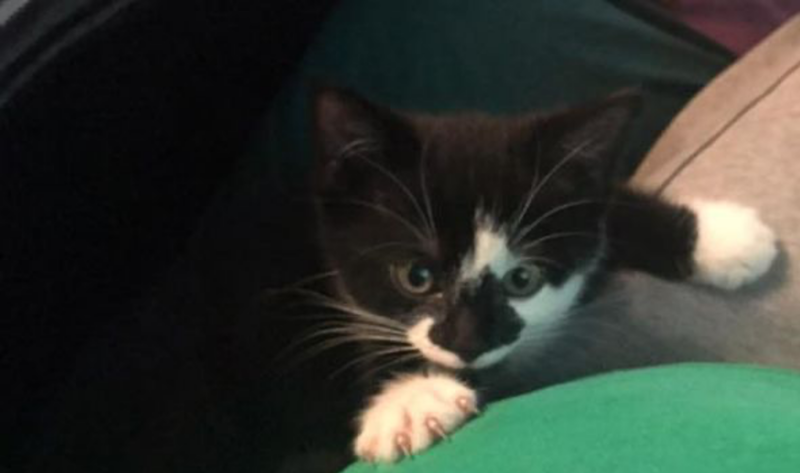
Though Toby has been busy looking after us the past six months, he still seemed a bit sad, and still went to the same spots looking for Luke the cat. But recently, the opportunity to give a new kitten a home presented itself. We jumped at the chance to give a home to a cute little kitten born in a barn in a vineyard. We’ve named the kitten Baco, after the delicious Baco Noir which hails from his birthplace.
For now, Toby and Baco are sniffing at—and closely keeping an eye on—each other. Over the past few days, Toby has an extra spring in his step, although for now it may be the prospect of humans leaving open the door to the room where the cat food is, giving him the opportunity to gobble it up before we or Baco know what is happening. Or it may be the realization that in Baco he has a new friend to commiserate with about the humans, to share toys and to cuddle with—and eventually to keep him company when the days return that prompt the humans go back to being away from home for hours on end.
For now, though, Toby is delighted to lie at our feet and let us pat him while he sniffs at the kitten swatting at his nose from my lap.
Read other InsightOut posts.
Mike Czobit is the director of the Office of the Principal, and the coordinator of SMC One. Before joining St. Michael’s in 2017, he was an editor and writer at World Vision Canada.
There Will Be Cake
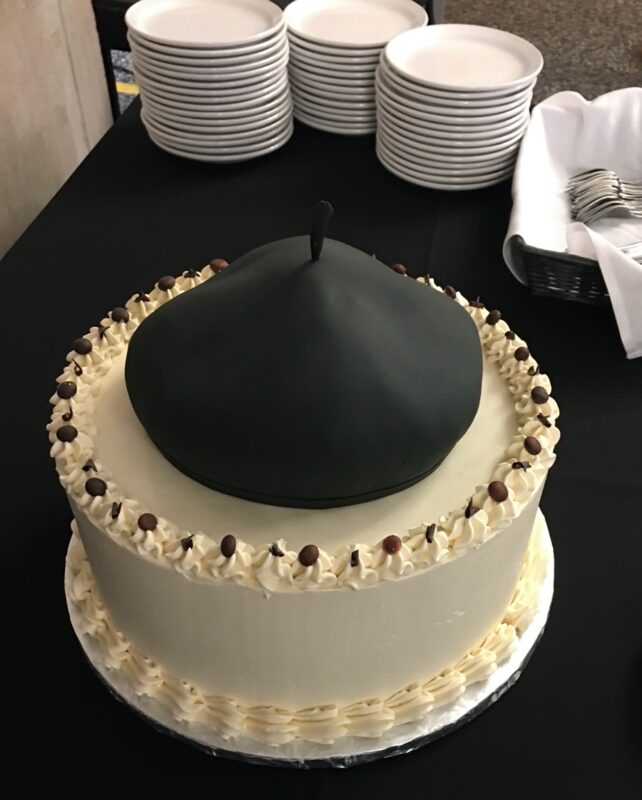
Every year, before the Gilson Seminar in Faith and Ideas meets for its first lecture in September, we have an opening reception and something we call the “Beret’ing In.” To the tune of Prince’s “Raspberry Beret,” each incoming Gilson Seminar student approaches the lectern in Charbonnel Lounge and receives a black beret, officially joining the seminar. After every student has been beret’ed in, cake is served—a special kind of cake: raspberry beret cake.
This tradition is a night of fun and introductions before the hard work of the Gilson Seminar begins. The course, which is split into two half-term classes over the course of the year, is one of three first-year seminars offered by St. Michael’s College as part of our SMC One program. The other two seminars are the McLuhan Seminar in Creativity and Technology and the Boyle Seminar in Scripts and Stories.
These seminars are among the most popular first-year courses at the University of Toronto, owing to a number of factors. For example, each is taught by a member of our talented St. Michael’s faculty in a small class setting that fosters fascinating discussions and close friendships with fellow classmates, and each features an international learning experience. In the Boyle Seminar, students are invited to travel to Dublin after the April exam period. A trip to Silicon Valley takes place during reading week for the McLuhan Seminar. And the Gilson Seminar’s second half-course has its destination in its title: The Gilson Seminar in Faith and Rome.
For most people, international travel these days has been ruled out for health and safety reasons, and for the impracticality of visiting a country when it likely requires a quarantine upon arrival. But, back in February, before the present conditions of international travel took hold, there still was the possibility to go to Rome or Dublin. In fact, that was the plan for both the Gilson and Boyle classes (the McLuhan Seminar had traveled to Silicon Valley last November, before anyone here had really heard of the virus).
In the Principal’s Office, we are responsible for organizing all three SMC One trips. Throughout January and February, we proceeded as usual, preparing students by holding Safety Abroad workshops, requesting traveler information, and making airfare arrangements. We worked with our partners in Dublin and Rome to finalize details for each trip, and in the case of Rome, arranged for tickets for the Pope’s Wednesday Audience. Everything was proceeding as it had every year, except, as everyone knows now, this wouldn’t be a normal year.
By late February, my office was paying particular attention to reports of COVID-19 cases emerging worldwide. When the first few cases surfaced in northern Italy, we were concerned but hopeful that the country would get control of the virus. Reflecting on that now makes me realize how little we all knew and how naïve my optimism was. Day by day, in early March, the number of infected patients rose. Not just in Europe, but also at home. These developments worried our SMC One students, who began asking my office questions about the safety of our planned trips. At the time, we honestly didn’t know what the virus would mean, but we assured our students that safety would be paramount and that the trips could be postponed. Then, on March 12 that happened. The University decided that due to safety concerns, all student travel would be postponed until further notice. This was the right decision.
After we unwound the arrangements for the planned trips, my office had a different task to attend to, which was to start recruiting for next year’s SMC One seminars. When we promote these classes, we do the opposite of shying away from discussing their travel components. But during this recruitment period, getting on a plane to go somewhere far away seemed like the least desirable thing to do. At the same time, the 2020–21 SMC One seminars were months away and the situation in March would change—and, to be optimistic, be much, much better.
We pushed forward with our recruitment effort, inviting incoming U of T students to apply for a spot in our seminars. We expected that we would struggle to fill the classes. We expected that SMC One would have lost its popularity. What happened was something different.
When the application window closed on June 15, we had received the highest number of applications for SMC One in the three years their present format has existed. In fact, we doubled the total number of applications over our previous best. Our incoming students were not deterred by news reports of the virus or of how international travel will never be the same. They reacted to the closing of borders with a greater desire to see them open again. What they want, and what classes such as SMC One will provide, is a return to better times when a desire to explore and experience life and culture in different parts of the world can enrich a university education.
As the new academic year begins, we have begun planning for our SMC One classes. Different this year is that all three will take place in the Winter term, with the hope that all will be able to be in-person or have a larger in-person component than is safe in the Fall term. It is too early to know what international travel will look like in 2021, but we’re hopeful that conditions will improve.
Every year, the Gilson Seminar begins with berets and cakes. We hope to see this tradition resume in this coming year’s Gilson class. And when the cake is finally served, it will have the double meaning: welcoming a new class to St. Michael’s College and also celebrating how far we’ve come through difficult times. When we began our recruitment effort for SMC One in the spring, we were pessimistic about our prospects of filling these classes. Our students showed we should have felt otherwise.
Read other InsightOut posts.
Rachel Ottenbreit is a St. Mike’s alumna and former staff member, and is currently studying theology at the Pontifical University of the Holy Cross in Rome.
Doubling Our Joys and Halving Our Sorrows
In Italy, the lockdown began in March. Things closed fast, and although it felt like a total shutdown from the beginning, every week brought new restrictions. Parks, schools, churches, and businesses were closed; travel, group meetings, and “playing” (not ironic quotes: that’s the word the ordinance used) were banned; we could leave our houses only for emergencies, and then alone and with a paper justifying what we were doing on the street. Jane Austen might have said we were “in the middle before we knew we’d begun,” and Shakespeare that “there are more kinds of lockdown and quarantine, Horatio…”
The consequences of these closures are so varied. Surprisingly there were unexpected joys. Yes, although dolphins may or may not have returned to the canals of Venice (reports vary and I didn’t see it myself), those canals are definitely clearer and wildlife have been exploring our cleaner, quieter world. Joys erupted on a personal level too. I got to watch my aunt’s wedding in June and one of my best friend’s this last week. I couldn’t have flown home for either, so those live streams were pure, unexpected gifts.
In Diary of a Country Priest, Georges Bernanos writes that soldiers at the front cannot desert: “A chest is a chest when you get to the trenches. And one less counts!” That is, in the trenches you can literally take hits for others. Once you’re there, whoever you are, you do whatever you can do because whatever you can do makes a difference.
This is not to say that I’ve taken many hits myself. I’ve been very fortunate to live with other people, good friends, in the middle of this. We have good WiFi and a garden we can go to for fresh air and exercise. And our university bent over backwards for us (even couriering library books we requested, as long as that was possible).
But being restricted earlier and more severely than other countries, missing more than one family member who planned to visit this spring, helping people pack up and go or find ways to stay because they couldn’t leave, and grieving with close friends, many of them, who’ve lost family members and can’t go home…yes, while there were unexpected joys, there has also been an expected sorrow.
I started checking in with friends back home in their own trenches. Between the people I wrote to and those who, reciprocally discovering the same idea, wrote to me, throughout this time I’ve been in touch with more old friends than any time before. Though officially isolated, I knew I wasn’t alone, and I hope they did too. This has been another joy.
For me, as for many believers around the world, it was incredibly difficult to go without religious services—in my case, Mass and Confession. But it’s also been incredibly moving to see Pope Francis doing everything he can so that we Catholics, we anyone, aren’t alone. He really shouts it from the rooftops: we are not alone and we need never be. To remember him walking through Rome’s tragically empty streets praying for all those suffering, and giving his hopeful, consoling “to the city and to the world” blessing still calls forth thankful tears. That’s the front line, and I’m so thankful that he’s there.
All in all there are so many blessings. It has become much more obvious that we’re in this, in life, together. We don’t need a pandemic to take hits for each other. We can double our joys and halve our sorrows together. In the middle of this mess, that’s something to be grateful for.
Read other InsightOut posts.
Cianna Choo and Jessica Sorbara are this year’s Orientation coordinators. Cianna is a 3rd-year student majoring in Neuroscience and Molecular Genetics and Microbiology, while Jessica is a 4th-year English and History major. They have been involved with Orientation throughout their time at St. Mike’s and, as they say, “becoming a part of Orientation has undoubtedly been one the best decisions we’ve made throughout our time at UofT so far.”
Welcoming the Class of 2024 Virtually
Welcoming incoming students to the St. Mike’s campus and university life at UofT is always exciting and rewarding, but this year we are even more excited to be greeting students in a new, innovative way, adjusting to life amidst the COVID-19 pandemic.
Organizing a virtual Orientation for upwards of 1000 incoming students was definitely not something we expected when we started to plan our events in April, and we have had to adapt and reconstruct mostly all of our original plans. We have faced challenges of accessibility, social distancing guidelines, and scheduling with people located around the world. With the changing and complicated circumstances around us, we were constantly in a cycle of adjusting and re-imagining our plans for Orientation 2020. Because we are unable to have a traditional in-person Orientation we have had to think of fun events that would substitute for our usual elaborate on-campus activities. While changing plans and adapting to virtual methods of Orientation is extremely challenging, it has also allowed us to explore so many different delivery methods, activities and events that we would have never thought about before.
Something new and exciting this year has been the shift from Orientation being one week of amazing events and activities in September, just before school starts, to organizing an entire summer leading up to that week. Planning Orientation has been both a challenging and exciting process, trying to figure out ways to build the St. Mike’s community with incoming students who have never been on campus before. With the transition to an online approach, we have had to find new ways to make sure students can feel—through their computer screens—the welcoming, positive energy that radiates throughout St. Mike’s.
Throughout this summer the two of us, along with our amazing Orientation team, have had to find a way to create a virtual community; thankfully, we’ve managed to do that through our SMC Online Orientation page on Quercus and our various social media pages. Our SMC Online Orientation page is filled with modules introducing different programs, professors, clubs, events, and all aspects of life at SMC.
We have also been able to interact with students directly via our Summer Workshop Series—a new concept we are both so happy to have made possible this summer. Wanting to make sure the incoming class was prepared for their first year of university, we took a moment to reflect on our own first-year experiences and all the questions we had asked regarding university life. Our Orientation team then created and facilitated the Summer Workshop Series sessions, where we would share our own experiences and advice to help incoming students with their transition into university. We got the chance to host some amazing sessions, including ones offering ideas on how to get involved at St. Mike’s, study and time management tips, ways to explore Toronto, and so many more!
Even though we have had to eliminate some of our traditional Orientation events, we were able to create such amazing aspects of Orientation we would have never thought about previously. We also began thinking about all the different ways we wanted students to get excited about Orientation before the week itself. We wanted to make sure this incoming class wasn’t missing out on the sense of spirit that we have at St. Mike’s, so we had to get creative. We have introduced many contests this summer on our social media pages to get students engaged—learning the Hoikity Choik, getting excited about bed races, and showing off SMC spirit! We have also been extremely lucky to work with an amazing group of leaders and marshals who, throughout the entire summer, have shown everyone how much SMC means to them. By facilitating events and creating videos about campus, TikToks, Instagram takeovers, and so much more, everyone on our Orientation team has shown the incoming students how amazing and welcoming the community is at St. Mike’s.
Organizing a week of fun, informative events online was a completely new experience for the two of us, but it was something that got us to think about Orientation in a completely new way. With all the changes that have come our way, we are so excited to meet our incoming class and to see that SMC spirit—even if it is through our computer screens!
Read other InsightOut posts.
Dr. Stephanie Rutherford is an alumna of St. Michael’s College (BA 1997) and is now an Associate Professor in the School of the Environment at Trent University. Her work is interdisciplinary, focusing on the intersections among the environmental humanities, animal studies, and cultural geography. She is the author or co-editor of three books that consider these themes, the most recent of which is Historical Animal Geographies (2018). She is currently writing a new book on the history of wolves in Canada for McGill-Queen’s University Press. You can learn more about her work here.
Letting Go of the Treadmill of Productivity; Or How to Finish a Book in a Pandemic
The book was already late when the pandemic hit. Of course, being late is nothing new to most academics; we are often scrambling to meet—and missing—writing deadlines. Teaching and administrative work often take precedence during the term; bite-sized articles seem more doable over big projects.
But this was a big project that needed finishing. I’ve been working on this book about wolves for about eight years now. Eight years is a long time for any project; it starts to feel like it’s strangling you. The funding has elapsed. People keep asking when the book is going to be done. I started to be called the wolf lady, and not just behind my back. It was time to move on.
Last year I decided it was a good idea to seek a book contract to impose a deadline since I couldn’t seem to meet my own. It seemed like a smart thing to do—adding pressure from an outside source—as if the reason I hadn’t completed the book was out of slothfulness instead of being pulled in a variety of academic and administrative directions. It’s the curse of academia: you are never doing enough, publishing enough, or reading enough. It’s a feeling bred in PhD programs that lasts throughout your career, if you let it. Shame is not only the purview of my Irish aunties; it’s also the handmaiden of neoliberal academic life.
So, I got my contract and I had a June 2020 deadline. Then the pandemic hit. My 9-year old started school from home and in many ways that became my full-time job and my actual job began happening in smaller chunks and much later at night.
Of course, this has been the reality for many parents, and the effects can be quite gendered. For instance, there have already been a fair number of stories about how women academics have slowed their research output while men have sped theirs up during COVID. Guiliana Viglione in a Nature article tells us women are starting fewer new projects. Diane Peters in University Affairs writes that women’s research has been “squeezed” by the pandemic. I have received invitations to complete three surveys meant to measure my own gendered lack of productivity, which have only succeeded in making me feel that the authors of these surveys are much more productive than I am. My fabled life of the mind has been replaced by the life of “Mom, can I have a snack”? So it goes.
But I have discovered, amid a fair amount of frustration, that I can work in new ways to accommodate our present reality. They aren’t ideal; right now, I often write in short chunks, bookended by swims and bike rides with the best kid I know. And I’m lucky. I don’t have to do this while worrying about my job, or my partner’s job. It also helps that I have the security of tenure. My research can be put on hold in ways that more precarious faculty could never consider. Neoliberal academia once again.
But I’ve realized something that feels significant in my own understanding of the kind of academic life I want to lead. If my project was new, this approach wouldn’t be tenable. It seems those eight years of researching and pondering might, in this strange time, be an advantage rather than a liability. Put differently, maybe it pays a little to be late (don’t tell my mom) and engage in a kind slow scholarship, one that allows for a capacious openness to the kinds of ideas that might sometimes be missed when the treadmill of academic production has to be so very fast. At the very least it allows you to dig deep. In this way of thinking, instead of too long, eight years might seem like just about the right time, at least for me and at least with this project. The pandemic graced me with the ability to let go of the shame that goes with an obsessive emphasis on academic productivity, and embrace being present for myself and my family, as well as my work. In doing so, I learned to love those wolves again, which is really how this whole project started.
It turns out that letting go of that shame was perhaps just what I need to do. Just before writing this short reflection, I completed the draft of the book, late again but done this time. It feels great; it’s time for someone else to worry about it. So now I’m going to go enjoy another swim with my kid, because as Rabbi Harold Kushner famously noted “No one ever said on their deathbed ‘I wish I’d spent more time at the office’.”
Read other InsightOut posts.
Laurie Morris is communications director at the University of St. Michael’s College and the proud owner of a Conklin Carnival t-shirt. She holds a B.A. in English from UofT and a certificate in Corporate Social Responsibility from St. Michael’s.
Do You Want to Go Faster?!?!?
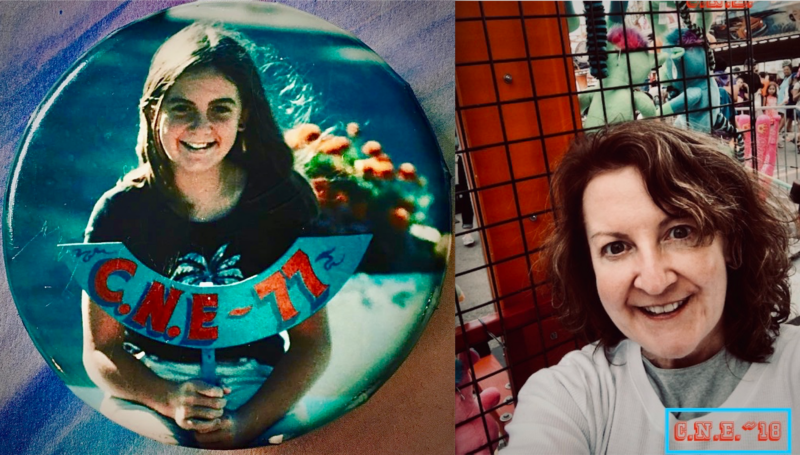
In the five months since most of the country went into collective lockdown, there have been countless memes and chin-stroking think pieces about the effect of COVID-19 on our perception of the passage of time. March went by in a millisecond, April lasted 1100 days and now, according to the Gregorian calendar at least, the end of summer is upon us. But how will we know the summer’s over if we can’t go to the Ex?
For as long as I can remember, going to the Canadian National Exhibition in Toronto has been a welcome but bittersweet segue between seasons. Even when I lived in New York, I’d factor the dates into my vacation calendar. It would never be the primary reason for a return visit to Toronto, but it never fell off the radar either. The CNE was something that kept me strangely anchored to “home.”
I’m sure most of us have a mental reel of Exhibition highlights. For me, it includes Holly Hobby doll prizes, huge boxes of Double Bubble gum (100 pieces at once!!) and the Polar Express guy who keeps asking if you want to go faster. And, of course, the thrill of discovery in the “oddities and novelty” factor—the invisible dog, Labatt Blue tube socks and, more recently, a larger-than-life sculpture of Justin Trudeau made entirely of butter.
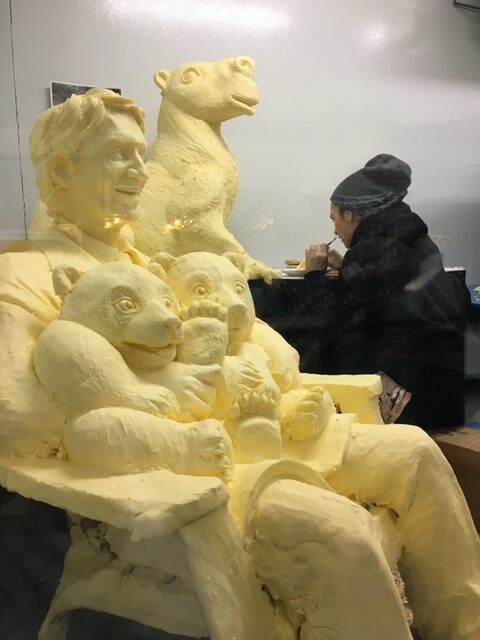
But when it comes down to it, the lure of the CNE (at least for me) was less about what actually happened there and more about the promise of one last chance to exhaust the potential of summer, complete with corn dogs and top hats emblazoned with glitter. A trip to the Ex offered an opportunity to embrace simple, silly pleasures and a brief distraction from the more serious business of “getting down to business” in the Fall.
COVID-19 has challenged us in unexpected ways. Among other things, it’s called us to be flexible, patient and quick to realign expectations to find the best path forward—arguably some of the same skills required to scale the shifting steps of the Fun House.
But as much as the virus has us taught us about masking, distancing and cleaning, it’s also given us the opportunity to be creative and impressively resilient. Not nearly as satisfying as corn dogs, but important to recognize nonetheless. Many of the usual milestones and markers that we’ve depended on to bridge transitions and provide a sense of renewal don’t work well in a time of social distance and sanitization.
So this year, we have to draw on lessons learned from CNEs past and COVID present. As we head into Fall, give yourself permission to embrace silly, simple pleasures and to delight in the smallest things. The gates of the CNE are temporarily closed but we can still make the trip.
(Contributor’s note: No invisible dogs were harmed in the making of this blog post.)
Read other InsightOut posts.
Anthony De Feo is the Programs Coordinator at the Faculty of Theology at the University of St. Michael’s College. He began his time with the Faculty of Theology back in November of 2019, taking over for Catherine Mulroney. He graduated with his Honours B.A. in Religious Studies and Italian from McMaster University and his Master of Divinity degree from USMC. He lives in Stoney Creek, ON with his wife, Cristina, and their three-year-old daughter, Catarina.
Rethinking How We Do Things
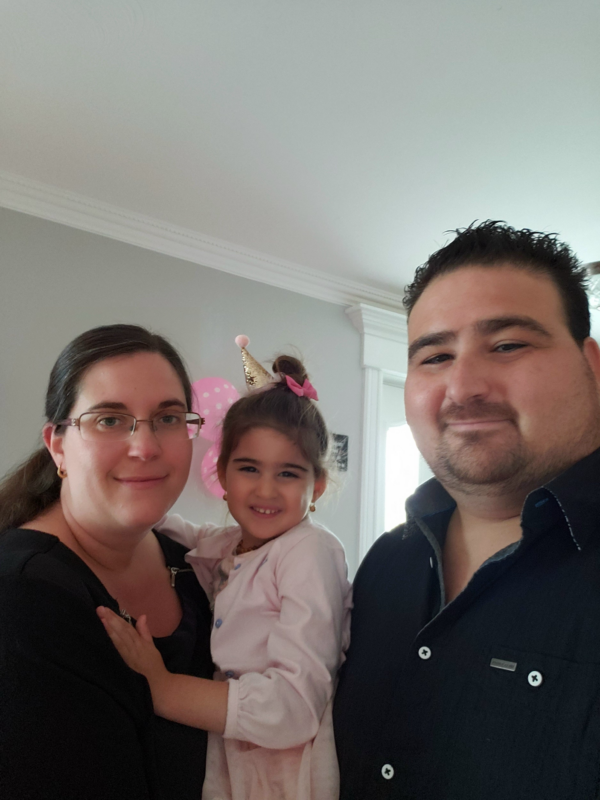
Five a.m. alarm clock: I sulkily hit the snooze button and slowly roll out of bed, ready to begin my journey to the office in Toronto. The train leaves promptly at 7:20 a.m. from Aldershot station, about a 20-minute drive from my house in Stoney Creek. To make it to the train on time so I am in the office by 9 a.m., I leave the house no later than 6:45, providing time for a proper parking spot and to load up my PRESTO before the train leaves. Shower, get dressed, eat a quick breakfast, and out the door I go; then on the train to Union Station, where the second “adventure” of getting onto the TTC awaits. I get off at Bay Station and hit the Tim’s on Wellesley to get my morning cup of coffee, then on my way to Alumni Hall. Emil is usually already hard at work, ready to greet me as I saunter past his office, stopping for a brief chat about the previous evenings’ Leafs game or how neither of our children slept the night. The day usually starts with checking the many emails that came in overnight, from students asking about information on their courses and reaffirmations that they are on the right track. Diana comes in not too long after, and the three of us chat a bit before getting “lost” in our work; though, before long one of us would usually ask “Is it lunch time yet?” as we couldn’t wait to go to our favourite lunch hot spot: EATALY! As you can imagine, the afternoons were a little harder to get through because of having eaten delicious food and especially after a bombolone (Italian doughnut). However, we got through the days easily with the help of student drop-ins, conversations with faculty, and many phone calls and emails being made.
Fast forward to mid-March. No longer being woken up by a 5 a.m. alarm to remind me I had to catch a train, the commute from Stoney Creek to Toronto turned into the commute from my bedroom to my “living room office.” No longer worried about getting on a crowded GO train or TTC subway. The worry now was whether my internet would hold up for the Zoom appointments I had that day; or whether my three-year-old would make an appearance at our Faculty Council meeting. Face-to-face conversations with students turned into many back-and-forth emails; morning conversations between colleagues turned into many WhatsApp messages and frantic Zoom meetings to talk about what had to be done that week. It very soon became “the norm” and we had to adapt quickly to our new circumstances. Course planning in the lounge turned into strings of emails between me and TST, making sure we had the right course information for the upcoming academic year. Zoom became a normal way of communication between me and our students, meeting to plan for what courses they had to take in the Fall and Winter. Since the COVID pandemic has caused many to re-think how we do things, we as a Faculty of Theology have decided to run our Fall courses remotely, not yet knowing what the Winter term will hold. The hope is that we can return to some in-class learning, but only time will tell. For now, we will continue to forge ahead and are planning a virtual Welcome Day, many Zoom liturgies to come, and a possible online Convocation.
Only a handful of times does my daughter want to know what “papa is doing,” or decides to peek her head into one of my student appointments. I have the benefit of not having to juggle working from home and taking care of my daughter at the same time because my wife has also been home since March; this has been a blessing in disguise. Though there have been challenges, it has been nice to be home with my family and be able to experience some of the things I would otherwise miss while away at work. We are lucky to be able to enjoy nice lunches together outside on our deck in the beautiful summer weather; It isn’t EATALY, but it is perfetto!
Read other InsightOut posts.
InsightOut: Connective Threads
Emma Hambly is a communications coordinator at the University of St. Michael’s College. She has a B.A. in English Literature and Classics from McGill University, and an M.A. in Literatures of Modernity from Ryerson University. In her spare time, she sews, makes collages, designs zines, writes comics, and looks for more hobbies.
Connective Threads

Push the needle through two layers of fabric, then loop the thread back through itself to make a neat little knot before continuing. It’s a motion I’ve done thousands of times. But during quarantine it’s taken on a new kind of meaning.
***
I’m lucky to be surrounded by very creative friends and family. It seems that most of them have taken the quarantine as an opportunity to take up old hobbies or delve further into their current projects.
One friend is writing again for the first time in years, and another is 52,000 words into her science-fiction novel. My mum is painting more frequently than she has since art school, and my dad is creating collages in the same sketchbook he left half-finished 20 years ago. My best friend is cross-stitching patterns with dainty florals and profanities. My partner is cooking and baking new recipes and continues to feed our temperamental sourdough starter.
As for me, I’ve been sewing. A lot.
Since quarantine started, I’ve been sewing gifts for friends and family and donations for strangers in need. I’ve hand-sewn 16 plushies, embroidered a beret, and made 60 face masks. Our small apartment is bursting at the seams with sewing supplies. My recent online purchases from small Canadian sellers include glass eyes, sheets of vegan leather, metallic felt, and a wonderfully soft faux fur called “minky.” Right now, I’m working on a little bird for my aunt’s birthday and a plague doctor doll because…well, I suppose that one doesn’t need an explanation.
There’s something enormously comforting about a simple task that gives you a sense of control during uncertain times. For me, sewing is a magical combination of enjoyable, relaxing, and creative, a form of self-expression that helps to counteract pandemic-era feelings of anxiety and powerlessness.
My mum, who is a talented seamstress, taught me how to hand-sew when I was six. And since then, the slow but sure process of turning a few pieces of fabric and some thread into a three-dimensional object with its own personality hasn’t stopped enchanting me.
Quarantine may be filled with necessary constraints, but it has let me pursue my hobby unrestricted.
In the earlier days of the pandemic, I volunteered for Stitch4Corona, an initiative organized by U of T Engineering students to provide fabric masks to Torontonians in need of them, like seniors and the unhoused. With access to a sewing machine and basic skills, it felt like the least I could do. When I was able to expand my social bubble to include my parents, my mum offered to help.
Sitting at the dining room table on a rainy day, listening to the whir of the sewing machine, took me back to my childhood, watching my mum make my Halloween costumes. Year after year, she would create an impeccable, real version of whatever I had dreamed up: a furry tarantula with eight interconnected arms, a red rose with my face peeking out of the petals.
This time, though, we were working together. I sewed the fabric into its basic mask shape and stitched in the elastics. My mum gave each rectangle three neat pleats, and I finished the sewing, adding in the nose wires and leaving pockets for filters.
We switched, laughing, when we realized she had accidentally pleated all the masks so far upside-down, and I was much slower at topstitching. We found our rhythm and spent the afternoon turning a pile of fabric sheets, elastic, and wire into a thick stack of masks.
Before I could start my third round of sewing, Stitch4Corona announced that with COVID cases decreasing in the city, they were wrapping up their initiative. In the end, more than 600 volunteers sewed more than 14,000 masks.
I turned back to my lifelong hobby, sewing by hand.
When quarantine started, I felt caught up in the need to do some small thing to let my loved ones know I was thinking of them. So, I bought two pattern collections (32 designs in total), sent the images around to my friends and family, and asked them to pick their favourites. I’m about a third of the way through the list.
I’m worried about my grandmother’s wellbeing and I haven’t been able to spend quality time with her in months, but I’m glad to know she keeps the little raccoon I made her right next to her computer. My friends’ faces lit up when they picked up their creations at our 6-feet-apart, masks-on barbecue.
It makes me happy to create something tangible for my friends and family when our connections these days are so digital. And I hope my silly plushies can bring them a smile in these strange, stressful days.
Time, effort, and connective threads. Put simply, sewing is the art of bringing things together. Sometimes, it can have that effect on people as well.
Read other InsightOut posts.
Fr. Don McLeod is a Basilian priest, an alumnus of USMC (College and Faculty of Theology) and a member of the Collegium since September 2013, serving as Chair from 2017 until the present. He has a particular interest in institutional governance and in ensuring that the proper role of the Collegium in University governance is clearly outlined. He has taught and been an administrator at both the high school and university levels, most recently at St. Joseph’s College in the University of Alberta. He continues to exercise his passions for aviation and cycling, Catholic Social Teaching and the study of Scripture and Biblical languages, while residing with the Basilian Fathers of Presentation Manor in Scarborough.
“Piloting” USMC
Two or three weeks ago, someone asked me if serving as Chair of the Collegium was burdensome, especially during the current COVID-19 crisis. After a few moments’ reflection, I replied that although Collegium had recently had to confront some very challenging issues, I would not describe my role as “burdensome.” To the contrary, the past four-plus months have been challenging but not burdensome.
To help clarify, permit me to draw an analogy with aviation. When people learn that I am a licensed pilot, they often ask if I fly solo—to which my usual response is “yes and no.” “Yes,” if that means that I am the only person in the aircraft. “No,” if the implication is that no one else is involved in a flight. Although it sounds counter-intuitive, even if the pilot is the only one aboard the airplane, there is no such thing as “solo.”
Most people who fly commercially know that a safe and successful flight requires professional pilots “up front,” equally competent and professional flight attendants in the cabin and good ground crew—and that is certainly true. However, there is much more to aviation than that.
First, even a small aircraft comes with a very detailed Pilot’s Operating Handbook—in the case of the Cessna 172, the aircraft I fly, nearly 200 pages of very dense information. Included in this are several checklists covering nearly every conceivable situation, from before engine start through to shutdown—and the pilot who ignores or omits even parts of these does so at his or her own risk. These documents reflect literally thousands of person-hours of designing, building and testing, without which no aircraft ever makes it to the flight line, let alone into the air.
Further, behind the scenes of any safe flight are the people who service the aircraft and keep it airworthy. This includes mechanics, dispatchers, fuelers, cleaners and airworthiness inspectors—all of whom are required to ensure that the aircraft is indeed safe to fly.
Most of my compatriots fly out of and into what in Canada are known as certified aerodromes—airports, for short. These facilities require ongoing maintenance to ensure that taxiways and runways are safe and clear of any debris, including snow and ice in winter, that pavement markings including runway numbers are clearly visible and that all ground signage is accurate. Much of this work goes unnoticed but is essential to safe operation—and is regularly inspected.
Once the aircraft is ready, the airport safe to fly out of, the pilot (and maybe passengers) belted in and the engine started, the pilot is still dependent on many people to ensure a safe flight. If the airport has traffic controllers the pilot must obtain clearance both to taxi and to take off and must rely on the men and women at the other end of the radio waves to ensure safe separation of all aircraft. Even at an uncontrolled airport, the pilot must rely on other pilots and even people on the ground to advise of their positions and intentions. The same is true, in reverse order, when preparing to land.
In short, from long before engine start to after shutdown, safe and enjoyable flying is dependent on the skills, attentiveness and commitment of a significant number of people filling a wide range of roles—the pilot is one of these people, undoubtedly an essential cog in the machinery, but far from being the only one. In other words, the pilot in reality is never “solo.”
To return to my analogy, one could suggest that the Collegium, and in particular the Chair, might be viewed as the pilot who is charged with ensuring that the University is able to fulfill its mission. However, just as with the pilot of an aircraft, a successful “flight” of the University is dependent on the commitment, dedication and competence of many more persons than the relatively few that a casual observer might see seated at the Collegium table.
This has been even more apparent to me as we have dealt with the impact of the COVID-19 pandemic. From the very beginning, every member of the USMC community, regardless of their particular role, has given more than generously of their time and talent to ensure that we “fly” successfully through this unprecedented turbulence. I may by analogy be one of the “pilots” for this adventure but am well aware of the enormous debt of gratitude my colleagues and I owe to so many who have contributed to our safe and level “flight.” To them I say simply, “Thank you!”
Read other InsightOut posts.
As a humanitarian professional, St. Mike’s alumna Catherine Bellamy has worked with the United Nations and reputable think tanks for the past 20 years. She has managed operations and lead initiatives with the UN World Food Programme (WFP) in Africa, Europe and the Middle East. She was a lead author on the Overseas Development Institute report on the Lives and Livelihoods of Syrian Refugees in 2016. Currently, Bellamy is an advisor on capacity strengthening with WFP.
Helping Côte d’Ivoire From a Distance
I was hired for my current job at the UN World Food Programme (WFP) the day that schools were closed in Italy as COVID-19 continued to spread. At the time, I had been worried about going back to work after being mostly a full-time mom for a few years. How would my son adjust to full-time daycare, would I miss him too much, would it mean that I slept even less? Instead, all the anxiety drilled down into one challenge for my husband and me: how to keep a toddler occupied while on conference calls or answering emails.
When I was pregnant, I felt invincible. I was six months along in 2016 when I went to Istanbul to interview refugees for a report on international assistance. The coup was a surprise. From my hotel room window, I could see one of the standoffs within the army. The military tanks were lined up on a bridge over the Bosporus, normally a picturesque spot. It was a tense and loud night, but by the morning most of the opposition military had backed away. A lot of people across the country ended up in jail or lost their jobs and careers.
I spent a lot of time checking in with the Canadian and American embassies and scouring the English news outlets for updates. After a few days the airports opened again, and I got a flight out to New York City. I had a weird sense of calm the whole time, that the baby bump could protect me from the madness outside my window.
I don’t feel invincible anymore. Like most parents, I am exhausted and preoccupied by how this virus might impact my kid. I know how lucky I am to have a job where I can work from home, and where I can spend time with my son throughout the day. But closed airports and quarantines make it hard for me to do my job well, and to understand what is happening on the ground.
While drafting a large grant for a national school meals programme in Côte d’Ivoire, I started to record the Zoom meetings that I knew I couldn’t miss. While I blamed my mediocre French, it was because half of my brain was wondering when my son would burst into the room demanding a snack or that I play with his dinosaurs.
I was supposed to go to Abidjan for a few weeks to see the project I was writing about, to meet with the team that I would work with to develop a strong argument for the proposal. It had helped a lot previously. But the trip was called off once the airports started shutting down.
My favourite part of the project in Côte d’Ivoire, besides giving poor kids a meal at school, is the government’s effort to encourage women small holder farmers. The majority of the country’s rural population survives on agriculture, and many live below the poverty line. Most food producers are women, but they are less likely to own land or have access to capital. The government provides women farmers with land and training and inputs (fertilizer)—increasing their productivity and independence. In exchange, the women give a third of the produce that they grow to local public primary schools for the school meals. Some of the women are taught how to read and write.
COVID-19 has hit Côte d’Ivoire’s economy hard and will make life for the poor more difficult. WFP’s strategy in the country is in part to strengthen support for the women farmers, to mitigate disruptions to domestic food supplies and to help continue serving nutritious meals at schools. The production by women has grown substantially with technical support, generating income to purchase their own seeds, fertilizer, and equipment. Bicycles, grain mills, and scales can help save time and money, and financial training and market access allows them to sell produce for a higher price at the markets.
I haven’t managed to go to Côte d’Ivoire yet, but everything that I have read and heard is that many of the women farmers wish they could have gone to school themselves and want their kids to go. Because motherhood is a powerful force, I just hope that some of them can make that happen. And I hope that next time, I can get on a plane and go see for myself.
Read other InsightOut posts.
Fr. Alexander Laschuk, PhD is a priest of the Ukrainian Catholic Eparchy of Toronto. He is currently the Interim Executive Director of the Metropolitan Andrey Sheptytsky Institute in the Faculty of Theology, in addition to his responsibility as Judicial Vicar of the Toronto Regional Tribunal. He lives in Trinity-Bellwoods with his wife and daughter.
Finding Stillness in Chaos
I am a Catholic priest. Unlike most you know, I am married and have a six-year-old daughter (with number two on the way). Also unlike most priests you know, I do not spend much of my ministry in a parish. Instead, I live my priestly ministry in the curia, where I work as a canon lawyer. There are seven dioceses in Ontario for which I am responsible. Additionally, I seem to have a specific skill set—I fix problems. Sometimes those problems are in my own Eparchy, which extends from the Ontario border to the Atlantic. At other times my service is to the universal Church, which brings me to dioceses throughout the English-speaking world. My ministry means I am frequently away from home, which can add up to two or even three months in a year.
This all came to a crashing, screeching halt in March. I remember my last day in the office with my staff—we already were encouraging people to work from home. It was the feast of St. Joseph and there were zeppole on my desk. The State of Emergency was declared shortly thereafter, and we all began a brave new adventure.
In my case, this has meant being physically grounded—a real blessing in some ways as now I am home every day to put my daughter to bed. But it has also been chaos. When the Archdiocese moved to “remote work” except for essential staff it meant that in addition to my own job I suddenly had to keep 26 people busy. We were in the midst of opening a new tribunal office in the suburbs to remove the “physical distance” that, Pope Francis reminds us, prevents people from accessing the tribunal.
In our small Ukrainian Eparchy many parishes needed help applying for government support; I became the go-to guy with all these acronyms that soon became all too familiar: ROE, CERB, CEWS, and CEBA. At our parish in Trinity-Bellwoods, instead of hearing Easter confessions I became a videographer and learned far too much about live-streaming, while at my daughter’s school, the online class sessions every morning and afternoon became the anchor of her (and our) day. I realized how lucky we were when I spoke to other kindergarten parents whose children would only have one (or no) session a week.
My wife, who suffers from difficult pregnancies, was often bed- or couch-ridden and was, as I termed her, a “quarantine professional” who never left the apartment except for medical appointments. The usual downtown comfort of the constant hum of people and traffic turned into silence, and often the only sounds were screams in the night from the growing number of people on the street and in the park with nowhere else to go. As bedtime not so quickly approached for my daughter, there would be the silent prayer to God: just one more hour, Lord. Get us there, peacefully if possible. When she’d finally go down it would be frantic work until I fell asleep to catch up on all those things left behind in the workday.
More than four months have passed. The world is awakening from its pandemic-induced slumber. We have set up a chapel in the parish archives where I celebrate mass with my wife and daughter. For my daughter’s sixth birthday we ran around individual cakes for her party on Zoom. We’re getting really good at making dinner as a family instead of constantly eating out. I’ve started a new job as Interim Executive Director at the Metropolitan Andrey Sheptytsky Institute here at USMC. I can’t go into my office at Windle House and my predecessor can’t move out. I’ve not been on an airplane in six months. Our new home has been delayed nearly a year. The parish has spent thousands on PPE. I overhear my daughter giving her friends Zoom advice. My car dashboard is covered in blue masks. My wife rejoices that we’ve almost run out of hotel shampoo.
This time has left me frequently thinking of Elijah, who we call Elias in the East. When he went to find the Lord God, the Voice was not in the earthquake, nor the fire, but in the light breeze (3 Kings 19). Here, in the unnatural silence of abandoned downtown, the Voice of God blows with the breeze across the abandoned storefronts and the tents in the park. I hope we can all find a moment to stop and hear it, finding stillness in this time of chaos.
Read other InsightOut posts.
Isabella Mckay is a senior student majoring in Book and Media Studies at the University of Toronto. Following her passions in marketing, communications, technology, and media, she has become the Vice President of TechXplore, the Director of Marketing of Data Science Toronto, and the Assistant Project Coordinator at the University of Toronto Faculty of Arts and Science Dean’s Office. Mckay looks forward to applying her passions and work to innovate the future.
Love and Happiness as True Measures of Life
During the coronavirus pandemic, I have discovered that the principles of humanity, which are love, togetherness and health, exist as the ultimate purpose and meaning of life.
On January 27, 2020, the National Microbiology Lab in Winnipeg confirmed the first case of coronavirus in Toronto. Remembering the words of my mother to not fear and panic but be prepared and cautious in case of emergencies, I bought one of a few alcohol rub left at a pharmacy in Toronto. At my condo, I found one pack of 20 N95 masks for around 85 dollars with express shipping on Amazon. Although I could search for cheaper masks, future prices would likely increase, and then I might search longer to find no masks and sacrifice my health. I would work to recoup the price within hours; however, I would spend more time and energy to regain what was most important, my health. I purchased the N95 masks within three minutes.
When coronavirus cases rapidly increased after February 24, I had the proper procedures and supplies to calmly protect myself from the coronavirus while others began to panic. I still socialized with friends, studied at the libraries, and attended club events at the University of Toronto.
Then, the University of Toronto announced that, as of March 16, it would close, and move to online courses and examinations to limit coronavirus cases. I wore my N95 mask as I walked around the campus and a downtown Toronto that resembled an abandoned town devoid of energy and emotion.
Before the coronavirus pandemic, I huddled in a tight and quick one-way line of students to attend my classes on time. Now, I freely and slowly roamed past three students on my way to the library. I used to walk around for five minutes to find an empty library seat and to hear pencils and pens scratching on paper during midterm and final exam season; now, however, I found an empty seat and heard the hum of the air conditioner as soon as I walked into the library. I used to sit next to students who flipped through pages of homework, wrote mathematical equations and assignments, and coded programs. As I sat in one of the hundreds of empty seats, I remained two metres or more from other students because of my own preferences or because of tape placed between every two desks and in front of desks.
With the cancellation of on-campus classes and exams, I returned to my family home in Vancouver on March 21. Although the Canadian government did not require citizens to self-isolate on a domestic flight, I feared that someone might have coronavirus on the plane. I wanted to ensure that I had no symptoms and that I would not transmit the virus to family. If I transmitted the virus to my family, I would fail to mend my shredded heart.
Although I talked to my family and friends through my phone during isolation, I became an outsider who might have a disease that everyone feared. I yearned to be near my loved ones, especially my family who sacrificed their time and health to care for me. I did not want, and was not motivated by, my empty university scores and jobs, which for years I had desired most; instead, what I wanted and was motivated by was familial love and unity.
Once I left self-isolation, my family revealed that they struggled to obtain essential groceries and supplies. Before the coronavirus, my family and I might spend half an hour choosing organic and natural vegetables among full shelves. Now I wore ski goggles, plastic gloves and a N95 mask as I social distanced to purchase any supplies at a local grocery market.
Similar to food and supplies, before the coronavirus stole the simplest moments, I took daily and normal activities for granted in order to pursue my career and high marks. I carelessly walked, compared to now seeing someone and moving to the other side of the road. I carelessly talked to others, compared to now yelling over two metres to discuss the coronavirus lockdown. I carelessly socialized with friends compared to messaging them. I carelessly went anywhere to perform multiple activities compared to restricting myself to my home and grocery trips. Appreciating people and the simplest things are blessings of happiness. I am not measured by what I have, but who I am and how grateful I am to have what I have.
Once the lockdown ends, I will refuse to let fear control my life and I will experience the meaning of life: to be around loved ones and increase happiness activities. When will I get another chance, and who foresees the future?
The coronavirus pandemic has taught me how health is the most important quality and how everything else is minor, how people, and the smallest and simplest things, deserve appreciation, and how love and happiness are true life measurements. These essential human qualities are the purpose and goals of an amazing life and these human foundations will support the fight to defeat the coronavirus.
Read other InsightOut posts.
Martyn Jones is a content specialist in the Office of Communications. On a freelance basis, he also writes reported features, essays, and criticism for online and print outlets. Martyn and his wife Melanie’s toddler, Fox Jonathan Jones, turns 18 months old on August 2.
The Difference Three Hours Makes
In the endless domestic present brought on by COVID-19, I sometimes find it difficult to remember that going to work once meant going in to work.
A few months ago, my wife and I would kiss our toddler goodbye, trudge through the snow to a bus stop, and wait to be carried into the city alongside thousands of fellow close-breathing commuters. It was far darker then, and both our bedtimes and alarms were earlier. In the mornings we’d wake the baby around 6:30 a.m., pass him back and forth to allow one another to get dressed and brush our teeth, and then hand him off to his grandparents around 8 a.m. for safekeeping for the day as we began our commute.
During my wife’s maternity leave, I would often look down from my computer screen in my office to find a message from her that included a photo or video. These were digital records of Fox’s progress: first words, first steps, first instances of bizarre behaviours that would become characteristic. When my wife returned to work, she would forward similar notes from her parents containing records of Fox’s new experiences that we were both missing.
After work, we’d get home around 6 p.m., scramble to put Fox’s dinner together, play with him if time allowed, and put him to bed by 7:30. Our total allotment of time with the boy was about three hours a day—most of it spent performing necessary tasks, and relatively little spent in reading, play, or exploration.
When remote work began for both of us in mid-March, we entered into a family bubble arrangement with my wife’s parents, who continued to provide our toddler’s primary care during the workday. For the last several months, we’ve worked with Fox always within hearing distance, either downstairs in our own home or in another room at his grandparents’ house.
We are incredibly fortunate to be able to rely on our toddler’s grandparents in this way. For so many younger families, the closure of childcare centres and schools forced parents to look after their children while also continuing to work full time. We were shielded from this grueling scenario. For us, the silver lining has made up almost the entire cloud.
Atul Gawande notes in his book Being Mortal that one of the major domestic shifts brought about by modernization is the move away from multigenerational homes. The past few months have given us glimpses of that abandoned paradigm: during a break between tasks, I can join Fox at the keyboard where his grandpa is preventing him from striking the keys too hard, or peel an orange while listening to the toddler perform his mimicry of reading out loud for his delighted grandma.
He is a wild and energetic boy; his arms already have a shape that evokes the naturally athletic teenager, and as they grow will gain mass while retaining their rough proportions. He occasionally gets away from his grandparents and pounds on our office door until it opens for him, at which point he might walk to my desk, look at me silently, throw back his head, and laugh. While he’s interrupted his share of Teams meetings, my colleagues reassure me that his presence has always been welcome.
I have no truck with vulgar permutations of utilitarianism, the worst of which employ an actual calculus to determine the moral worth of an action, but I do find it useful to put a number to our experience: 270. This is a rough estimate of the number of hours my wife and I have gained back to spend with our boy during the portions of the day we would otherwise have spent commuting or having lunch at work. Our three-hour allotment has doubled for each workday, without even taking into account the random visits he pays us as we hunch over our computers.
Instead of receiving photos or videos through text or email, my mother-in-law can simply call me to come down, and I can be there to see my boy build a block tower or put on his own shoes. We haven’t yet reached the point at which his long-term memories are able to take root in his mind, but I hope that he will carry this period of special nearness into the later parts of his childhood, and know without knowing that we were close by.
For all the uncertainty and hardship brought on by the pandemic, COVID-19 has also shown us how flexible the world can be when the heat of necessity causes it to bend. There will not be a return to an earlier status quo after the virus subsides or vaccines are developed: instead, a new world will emerge. I hope that our new arrangements will make future virtues of past necessities, and that it will be possible for more working parents to experience the difference three hours makes.
Read other InsightOut posts.
Noel McFerran has worked as a librarian at the University of St. Michael’s College since 1998. His current position is Theology and Rare Books Librarian.
“Be Right Back!”
I spent last Wednesday morning in the Kelly Library providing curbside pickup service to faculty and students. As a librarian, it was exciting for me to see the library taking further steps to provide library materials to patrons while maintaining the health and safety of everybody involved.
Since mid-March I’ve been working from home, keeping very busy responding to emails from faculty and students about their course work and research. Wednesday was one of my first times back inside the Kelly Library. The most important thing was to be trained in how to function in my regular work environment during a pandemic. I thought that I knew all about social distancing, wearing masks, and sanitizing hands—but it’s so much more important in a workplace where there are other staff using the same desk and equipment. Just like in the supermarket, we’re maintaining a one-way route in the library in order to reduce face-to-face encounters between staff.
Every day the Kelly Library receives a computer-generated list of books and DVDs which patrons have requested through the UofT Library Catalogue. One staff person looks for these items on the shelves. Most items are where they are meant to be, but occasionally we have to search for something which has wandered from its regular home. Items then get checked out to patrons. Right now all items are signed out until September 18, 2020.
Another Kelly staff person, working from home, sends personalized emails to patrons telling them that their books are ready to pick up. Sometimes patrons respond with special requests (e.g. “Can a friend get my books for me?”).
At present patrons can pick up their requested items at the Kelly Library anytime Monday to Friday between 9:00 a.m. and 4:00 p.m. The pick-ups ebb and flow. I filled the low periods with other library work to keep myself busy.
The first encounter between a library patron and staff is through a glass wall where the patron shows their library card. (I had real difficulty reading the card through the glass, so I might need to make an appointment for an eye exam!) You can’t really hear people on the other side of the glass, so we have various printed signs which communicate the most frequent things (like “Be right back”).
Staff retrieve the patron’s bag of books and place it on a table outside the library under the overhang. Even then there is reduced interaction between staff and patrons. Smiling doesn’t mean so much when you’re wearing a mask, so I tried to wave in a friendly way.
The response from faculty and students to the Kelly Library’s curbside pickup service has been very positive. My colleague Risa de Rege, who has worked many shifts in the past week tells me, “People have been very grateful that we’re offering curbside pickups, and are also respectful of our space and policies.” In the first week, 76 patrons submitted requests for 141 items. As more people learn about the service and how easy it is to use, that number is likely to increase. So far, though, we’ve been able to respond quickly to requests.
Nobody wants the COVID pandemic to go on any longer than it has to. But for the present and near-future, the Kelly Library is developing solutions to continue to provide library service to our faculty and students. I love being a part of that, knowing that my work contributes in a small way to the academic success of others.
Read other InsightOut posts.
Emily VanBerkum (USMC MDiv 2015) is the Dean of Student Residence at Loretto College, and John Paul Farahat (UofT DMA 2019) is Director of Music and Principal Organist of Saint Basil’s Church.
Enjoying Life’s Quiet Moments
“How many times have you noticed that it’s the little quiet moments in the midst of life that seem to give the rest extra-special meaning?” — Fred Rogers
The story of the proposal is really a two-part saga. Last year around this time, we were vacationing in Chamonix, France. Standing at the base of Mont Blanc, eyes gazing up at the breathtaking alpine landscape with gelato and marzipan cookies in hand, we considered ourselves incredibly grateful.
Unbeknownst to one of us, an engagement ring had been discreetly tucked away in our luggage for a surprise proposal in the Alps. But that carefully chosen landscape would fall through following an ill-timed fall down an old stone church staircase moments before that destined date-night dinner. Instead of a picturesque engagement ring reveal in a historic gazebo on a crisp late summer night under a sky of twinkling stars…a torn ligament, a pair of crutches, and a wheelchair ride through the Geneva airport.
One month later—ankle reasonably healed—we took a relaxed evening stroll along Toronto’s Queen’s Quay. Nearing sunset, on an ordinary park bench looking out to the calm waters, a proposal happened at last. A wild success: two elated smiles (and no torn ligaments). It was a perfectly tranquil, joyful moment. We laughed at the story of the-Chamonix-proposal-that-almost-was, and exclaimed to each other that 2020 was the year to be married—a year of perfect balance and harmony. We unhesitatingly chose Saint Basil’s, a parish to which we have both happily belonged since our student days, and set a date for September, 2020.
Much has changed in the world since we made initial arrangements. While our 2019 selves were focused on venues, vendors, realizing the “wedding vision,” and planning for out-of-country family members to attend, our 2020 selves have been more concerned with health, safety, and grappling with our new reality.
Our new central question was shared with many others: do we go ahead with the wedding, or do we postpone?
Our engagement story provided us with a providential lesson. The elaborate getaway proposal in Chamonix—with bells, whistles, and grand gestures—was replaced with a quiet proposal close to home, with only the most essential elements: the two of us, the “big question,” and a whole-hearted promise to spend our lives together. Indeed, the most though-out plans do not always go according to plan. Often, it is the beauty of the “quiet” moments that we cherish so deeply. It’s these instances that capture a moment in time, leaving an indelible mark on our minds and hearts.
Therefore, we have decided to move ahead with the originally scheduled date.
Establishing a sacramental union in Saint Basil’s, even without the larger guest count, elaborate reception, or flourishes that we had originally imagined, allows us to be true to what is most foundational: that marriage is a vocation in which the couple is drawn together for a purpose greater than themselves. Just like the proposal, our wedding day will be a reminder to find joy and contentment in the quiet, less elaborately planned moments of our married lives.
The beginning of our married life, surrounded by a small gathering of immediate family, will be at the forefront of our special day. And while we know the wedding day doesn’t make the marriage, in the end, perhaps the apparent “quietness” of the day will be everything we didn’t know we needed.
Read other InsightOut posts.
Catherine Mulroney is a communications officer at the University of St. Michael’s College. She is also a double alumna of St. Mike’s, holding a B.A. in English and Mediaeval Studies and a Master of Divinity degree. That equals many hours in Kelly Library and many, many overdue fines.
Raising Our Voices
It began—as many of the best things do—with someone volunteering an absent colleague for a little extra work.
Our new St. Mike’s blog, InsightOut, is the result of an after-hours conversation with Communications Director Laurie Morris and Theology prof Dr. Darren Dias on March 16, the last day we were all present on campus. Dr. Dias mentioned that his colleague, Dr. Michael Attridge, was self-quarantining at home after a research trip to Italy.
“It’s a good story,” Fr. Darren said. “You should ask Mike to write something for the website.”
Then the wheels began to turn. While not one of us could predict just how the comings weeks and months would play out, we knew we were facing an extraordinary moment in the university’s history. There would be value, we thought, in hearing each other’s experiences in, and thoughts about, living through such a momentous period.
Four months later, we now have a pattern established of InsightOut blog posts running on the St. Mike’s home page every Monday and Thursday. Each story, each opinion, is unique. And as the person privileged with soliciting and receiving submissions, I am humbled by the chance to be part of the process.
Graduate student Fr. Gustave Noel Ineza, O.P., for example, spoke about his childhood during the Rwandan genocide and urged us not forget the suffering of the broader world as we focus on local troubles.
Alumnus Dr. Christopher De Bono,Vice President of Mission, People and Ethics at Vancouver’s Providence Health Care, wrote about how moving he found his neighbours’ nightly ritual of banging pots and pans and making noise to celebrate the dedication of health care workers.
Interim Principal Dr. Mark McGowan, meanwhile, a professor of History and Celtic Studies, submitted a video explaining the typhus epidemic of 1847 in light of the current situation.
Professors have written about what their subject areas tell them about the pandemic, while students have talked what St. Mike’s means to them. And alumni members like Patricia Dal Ben, along with her colleague John Kostoff, a member of St. Michael’s Collegium, offered their professional wisdom on how families can keep a faith life alive when unable to get to Mass.
Some people have shyly offered to submit while others, when approached with a specific topic, agree with grudging good humour.
Coming posts will touch on the reality of working from home as a parent, how we are preparing for the coming academic year, and even how to get married during a pandemic. Pieces have ranged from moving to amusing.
Anyone who has worked through these past months will have experienced their colleagues in new ways. Zoom meetings reveal family photos or a glimpse of a partner or pet. A phone call might be interrupted by a delivery person at the door of what has become a home office.
For those of us working at St. Mike’s, the blog has taught us about family, we’ve heard admissions from those who miss their colleagues, we now know about our officemates’ hobbies, and we have gained insight into who we are as a community and what makes us unique. When we are at our best, it seems, we are closer to being family than colleagues.
But lest this sound like busy work or a grand vanity project, it’s anything but. While we’ve gained insight into our colleagues, the blog’s purpose is very much outreach. Having worked on planning various campus events, I know how people look to St. Mike’s to keep them engaged with the world and continuing on a path of lifelong learning. And if we can’t do that in person, some reflections and mini-online lectures are a sound alternative.
Parents of future students may come away from this blog reassured that not only are the people who’ll be working with their children skilled, capable professionals, they are also decent and caring people.
Future students can read the blog and find out some of the cool work happening on campus, and look forward to engaging in the kinds of discussions that make university a once-in-a-lifetime experience.
And alumni can engage with InsightOut and know that their alma mater remains vibrant and in good hands.
One of the great ironies of this time of masks and social distancing is that through it we have been brought closer together. We now know more about each other and, more often than not, knowledge brings with it respect. We have learned to work together in new ways and have seen the value in teamwork.
As we approach the fall, this blog will begin to pivot toward other aspects of life at St. Mike’s, looking ahead to a time when we can put the pandemic behind us.
If you are connected with St. Mike’s and would like to participate in InsightOut, please send me an email to chat about a submission.
Having heard the stories of the St. Mike’s community, I am confident we will head into the fall ready to take on pretty much anything. As the hashtag says, we really are all in this together.
Read other InsightOut posts.
Giancarlo Mazzanti is the Registrar and Director of Student Services at the University of St. Michael’s College. Giancarlo is a graduate of the University of Toronto (St. Mike’s) with an Honours B.A. in Political Science, and a B. Ed. from the Faculty of Education in 1985. He began his career in education at St. Michael’s College School and has worked in student services for over 30 years.
Our Connection Is Just Fine
It’s not like rumours weren’t swirling about a possible move to a primarily online mode of delivering the services of the Registrar’s Office and related Student Services. So it was with the better judgment of our team that we began preparations for what was beginning to look like the inevitable. It seemed like no time at all passed from those water cooler conversations with colleagues within the university community to when the email arrived from the Office of the President telling us that our offices were closing to in-person services. Academic advising meetings, learning strategist sessions, wellness appointments, and every other function and/or service would need to go online.
We received the call on the afternoon of March 17. Within minutes, Morteza was making sure e-tokens were good to go and that college staff in the various university offices were able to log in from home. Most were taken care of, but there were still a few to activate: no problem. Miranda, with Guillermo’s and Philip’s help, was making certain all students on the day’s docket were either seen or given a new appointment, all while planning for graduation scholarships and any number of the other responsibilities within our office. Nawang was ensuring that bursaries were going to get into students’ hands… yesterday! Next was getting ready for the hundreds of financial aid requests that would be submitted by our students, as well as the upcoming round of May admissions. Stephen was finalizing plans on how we were going to meet with future applicants, remotely, all while he and his wife were getting ready to deliver a future SMC student. Judy and Alex? Well, the newest members of our office were getting ready for the onslaught of student advising appointments which would fall on their shoulders as the various portfolios were being tended to. Hundreds of emails daily! Then, as the day turned into evening we packed our favourite mugs and our laptops and, with e-tokens in hand, we went home to our new offices!
All were confident as we prepared for remote delivery, even though the occasional nervous giggle could be heard. Gone were the commutes, the traffic, and the aggressive drivers. So was that horribly conspicuous dash to the only open seat on the train; everyone knows when you have designs on a seat in a subway train at 8:15 in the morning! Now it was simply a 12-second climb to the second-floor office, right next to the bathroom, and with a lovely view of the garden.
And so it was that practically overnight all university operations moved online, except for the staff in finance, the residence operation, and building services. They were our “hyflex” model pioneers. They were toughing it out on campus to make sure that USMC kept functioning and that students unable to get home had a room on campus, and that it was a safe space. The I.T. department stood on its collective head to make sure we had the hardware, software and in-servicing on the technology we had all dabbled in but which was not yet part of the daily menu. All of a sudden, Teams and Zoom were the plat du jour! And of course, the Communications team made sure there was an uninterrupted flow of information, essential to all parts of the community.
By the end of Day One of working from the home office, in whichever corner of the house we were assigned—or had earned over many years of squatting—many of the bugs had been worked out. It was quickly becoming business as usual for most, with the rest not far behind. Professionals who were accustomed to meeting in person were now looking at a screen with nothing more than a student’s initials in a small circle. Whether discussing course selection, scholarships, or convocation, all meetings were now being conducted via telephone or in a Teams meeting. Different delivery models, same great advice and suggestions.
And how appreciative our students were during those early days of the new, even if only temporary, normal! Every email or call we received began with “sorry to bother you during this very busy time,” and was often followed up with a lovely thank-you note.
Today, after hundreds of Teams or Zoom advising meetings, thousands of emails, dozens of website updates, countless online lectures and tutorials, governance meetings, a virtual Welcome Day for newly admitted students, two new Quercus courses to help transition our class of 2024, and hundreds of thousands of dollars in emergency financial aid to our students, it dawned on me. I confirmed for myself what I knew all along. The people! That is the ingredient that is making all the difference.
The people I met on campus were important to me during my undergrad years, decades ago, and I understand far more clearly how important that is today: the staff, faculty, and students of the university. In these “interesting” times, we know we can rely on each other. Whether teaching or making sure we are well positioned to tackle the financial pressures of the coming year or helping a student find a course that will fill a final breadth requirement, we know each member of our community continues to do their utmost to make things work for our students—and for each other. I am confident that is why we were all drawn to this place, our community. That is why we will be ready for the coming year. Yes, a simple electronic screen will not get in the way. Our connection in just fine.
Read other InsightOut posts.
Hi. I’m Peter Mason, a first-year engineering student from the U.K. living in the Historic Houses. In the St. Mike’s community, I’ve loved everything from talking to film assistants on their on-campus sets to just being close to my friends. From my love of travelling, I’m working on sustainability projects around Canada and the larger world, and supporting small Canadian businesses affected by COVID-19 by writing a children’s book, working with thisbag.ca. Always smiling.
Forward.
Our quarantine. We’re stuck at home, unable to travel freely and be together, but things are opening up soon. I’m from England, but I was in the GTA for quarantine until very recently, there for an extra three months, with a good friend from St. Mike’s. Aside from adjusting, I spent time thinking about my extended stay, what’s happened this past year and where my motivation has gone.
In my quarantine in Canada, I treated each day as its own, focusing on the super short term. I didn’t know when flights would open up, and so it was best not to think about being ‘isolated’, ‘stranded’ or any of the above. And I didn’t feel that way, but perhaps that’s because I’m pretty used to adapting. With this attitude, I was able to take each day, and I felt happier. Not every day would be productive but I’d learn something and take that positive step into the next one. I also meditated more. I’m grateful for the memories I’ve made and the people who were by my side this year. Meditating helps set up my day for whatever could happen. It also helps gradually inch away at hard thoughts and choices rather than reacting to them once they hit you all at once.
I received genuine kindness from my friend’s family during my extended stay in Canada, and this is a reflection of how I’ve felt throughout my time in Toronto so far. Unexpected, but I felt very welcomed and I can only be thankful. It was hard to say goodbye, but I know I’ll see them again. At the airport, I took extensive care to be aware and clean. Yet, there was no one there! I started to think there were more staff than passengers. It was a very eerie, silent experience and, I pictured what the deserted airport looked like the last time I was here five months earlier. I remember a lengthy Starbucks queue. It felt as if I was part of a TV show and I was left alone in an airport.
In the fall semester, I fell a little bit into the annoying trap of saying I had a lot of work. I’m in that small bracket of engineering students at St. Mike’s. Once I heard the same line from my roommate, I re-evaluated what I was saying. I began to balance classes, soccer and social activities in St. Mike’s better, and in a different way to the winter semester. However, I kept the same mindset. My attitude going into university was to hope to enjoy what I was studying, make some friends and keep on helping people. If I was smiling, I’d be alright. I would be pretty flexible to dip my toes into new things and meet new people and looking back I think I can say I met some pretty motivated people. They’ve introduced me to Canada and its culture, and I’ve shared what I’ve known.
I like to think I’ve done my best to contribute back to it, and hope my actions and words have helped people this year. Yet, I didn’t make it simple. For those who don’t know me, I end up balancing a lot and taking too much on my plate. The reality dawned on me, and my friend’s opinion was right. I couldn’t study and get the grades to retain my scholarship, play for three soccer teams, follow my passions, and be a part of St. Mike’s without burning out. I have those around me to thank. And for those of you I knew better, I miss your smiles.
As I look back, I do so looking forward. I remember how travelling used to be my goal, and I reminisce about St. Mike’s dynamic and vibrant individuals. Yet, I realize I shouldn’t wait, but keep making steps forwards. Whether that’s sharing initiatives, listening and learning and supporting my friends, I’m not 100% sure what’s ahead, but I’ll be ready. If this can get us closer to a future where we are proud to see each other again, I’ll keep trying.
For that future we are trying to chase, how do we try to define that? When Matthew McConaughey won an Academy Award for Best Actor in 2014, he spoke of his hero being himself in 10 years. He’d always look up to the future him, but never be his hero as he’d always be 10 years away. This is great on a personal level for moving forward. I couldn’t have imagined my life being like this 10 years ago, but I’d be proud of the big moments and the small laughs. I hope we can together reflect on the progress we’ve made in a year, or in a decade. We’re moving to Mars, we can produce more sustainable clothes, and we’ve reduced famines globally. We’re not there yet by a long way, but let’s appreciate our progress and look up to the community we will define together.
In the last few weeks, I read a lot, listened more and kept on learning. This helped me start my blogs on Medium and Vocal, and allowed me to grow. We’ve all grown, too. From the start of quarantine, I remember the social media shenanigans, sadness at missing basketball games, or waving a final goodbye. But look and think about what has happened since. My friends have made visors for fire stations, supported Black Lives Matters protests, and taken on leadership positions across so many different areas. We’re tackling mental health issues among ourselves and preparing ourselves for when we return. I’ve chosen to better myself and share that with others. It is the confidence I’ve gained from being at St. Mike’s this past year that I can use to make a longer lasting change, one that I couldn’t have made before meeting everyone.
Read other InsightOut posts.
Jean-Olivier Richard is Assistant Professor, Teaching Stream, in the Christianity and Culture Program. A historian of science by training, his research and teaching interests include the relationship natural philosophy with Christianity with science in the early modern era, Jesuit history, environmental history, and the history of alchemy, astrology, and magic.
Night Sky and Quietude
On June 17, I decided to set up a tent in the backyard of my partner’s parents, thereby adding a room to what was beginning to feel like a crowded house. My girlfriend and I brought mattresses, pillows, sleeping bags, and munchies. I also decided to install my Meade ETX 90, a reflecting telescope I had purchased a couple years ago and neglected to use since. I figured that on a clear night in Ottawa’s suburbs, it would find better use than in dazzling Toronto.
Around 3 a.m., we woke up to a starry sky, with Vega and Arcturus above our heads and a handful of planets lined up within the narrow band of the Zodiac. In the south, majestic Jupiter lorded at its zenith in conjunction with Saturn. Red Mars was lagging further to the East, next to Neptune, invisible. The waning crescent Moon, with Venus by its side, had yet to rise. Over the next two hours, we turned the telescope to each of these celestial bodies, trying different lenses and observing with childlike excitement. My girlfriend saw, for the first time, Jupiter’s four largest satellites—the same Galileo discovered with his spyglass in 1610—as well as hints of the giant’s darker belts. Even more delightful, to both of us, were Saturn’s rings, which we could see distinctly, like a pair of bright handles. Then, just before dawn, the ancient Moon’s familiar wink was made unfamiliar. Next to its shadowed face, Venus was showing its crescent. At that point, our excitement had ceded place to a kind of contemplative wonder, mixed with serenity and sunlight. With our naked eyes, we had observed and experienced what astronomers of old described as the wheeling of the celestial spheres around Polaris, the axis of the world. It was a wakeful night well spent.
Over the next couple of days, my mind was busy pondering Plato’s Timaeus, a speculative account of the creation the universe I teach in some of my Christianity and science courses. Therein Plato argues that the cosmos was made by the Demiurge, a divine, benevolent craftsman who ordered his materials mathematically and beautifully, in the likeness of eternal, unchanging forms. The Demiurge not only created the gods (including the planets) but also individual souls (each one tied to a guardian star), whose bodies He let the lesser deities shape from imperfect matter. Plato teaches that our souls, trapped as they are in their fleshy shells, tend to be confused and disorderly, having lost sight, from the moment of their birth, of the divine harmonies from whence they come. For Plato, contemplation of the wheeling stars—and by extension, the study of mathematical proportions—is the best way to quell our inner disturbances and to restore our quietude. Failing to do so is to risk losing clarity of mind, to condemn the soul to reincarnate in critters less suited for philosophy than human beings: birds, brutes, or—God forbid—fish!
For sure, contemplating the heavens was not a source of excitement for Plato in the way it can be to city dwellers today, but it was just as salutary. Plato’s great insight was that education is transformative: we become what we study, and we must therefore be mindful of our intellectual diet. In trying times, when we feel trapped in our heads and in our houses, it pays to look up, and emulate the stars.
Read other InsightOut posts.
Matt Doyle, Advancement Officer, Special Projects, has worked in the St. Michael’s Advancement Office for eight years, involved with a range of alumni and fundraising projects. A graduate of U of T (UC), he has studied business and project management. He lives in a place with way too many books and no television.
Living with Books
A good friend of mine once said “you live with books,” and that sentiment has resonated with me, as I’ve been working from home for nearly four months now, surrounded by my books. COVID-19 has given me more time to spend with them, gazing at their spines neatly lined up on the shelves, knowing which ones have been read and which others will be enjoyed in the future. I’ve finally found the time to alphabetize them all.
I shared that statement with someone last year and she looked at me quizzically, wondering what I meant. For the bookworm like me, it made perfect sense, with no need for an explanation. Books are different than art. Art hangs on the wall, but books are something special in your house. They’re there to be enjoyed—pulled off the shelf, returned, moved around, sorted, read, and re-read.
One author represented on my shelves is Morley Callaghan, an alumnus of St. Mike’s who graduated in 1925. Sadly overlooked today, and more remembered for knocking down Ernest Hemingway in a boxing match refereed by F. Scott Fitzgerald, at one time Callaghan was one of the most popular novelists and short story writers in Canada. His novels and stories are written in a deceptively straightforward style which belies the deeper moral concerns underpinning each one. Toronto was still very much a part of the British Empire in the 1930s, and Callaghan’s dramas focus on the Catholic minority in a city that was beginning to lose it homogeneity.
Callaghan’s career began while he was an undergrad studying at St. Mike’s, writing for the yearbook, submitting short stories to publishers, and penning articles for the Toronto Star. Besides his writing, Callaghan also organized the St. Mike’s Literary Club, where he chose the books and plays to be read by the other students, with a heavy bent to the modernist writers who were his near contemporaries. Conrad, Fitzgerald, Tarkington, Galsworthy, Shaw, and O’Neill were some of the authors Callaghan chose, all of whom were giants in the early 20th-century literary world. One wonders if the Basilian Fathers who were teaching at the school knew who Callaghan was encouraging his fellow students to read.
Debating was a popular activity on the U of T campus in the 1920s, and Callaghan was a member of the St. Michael’s team that won several debates, which would help his studies when he went to Osgoode Hall Law School after he graduated. It should also be mentioned that St. Mike’s was not only the place where Callaghan started his literary career, but he was also awarded for his boxing skills while at the college, which would come in handy when he was later challenged to that bout by Hemingway.
That’s one of the things I enjoy most about working in the Advancement Office at St. Mike’s—learning the rich traditions and stories of the College’s nearly 170-year history. The pandemic has prevented our usual in-person events from happening, including Alumni Reunion, when alumni are invited to return to campus. I miss meeting with our alumni and hearing their stories about their time at St. Mike’s. I know it’s only temporary, and our alumni will be back on campus soon. Our recent grads are our newest alumni, and who knows—maybe someday one of them will be Canada’s most popular author.
Read other InsightOut posts.
Sam Hodgkins-Sumner is the Executive Assistant in the Office of the Principal. He graduated from U of T last year with a B.A.in Philosophy, and a minor in Christianity and Culture. Currently, he is in a cabin somewhere in the woods.
Cardboard, Thresholds, and Hope
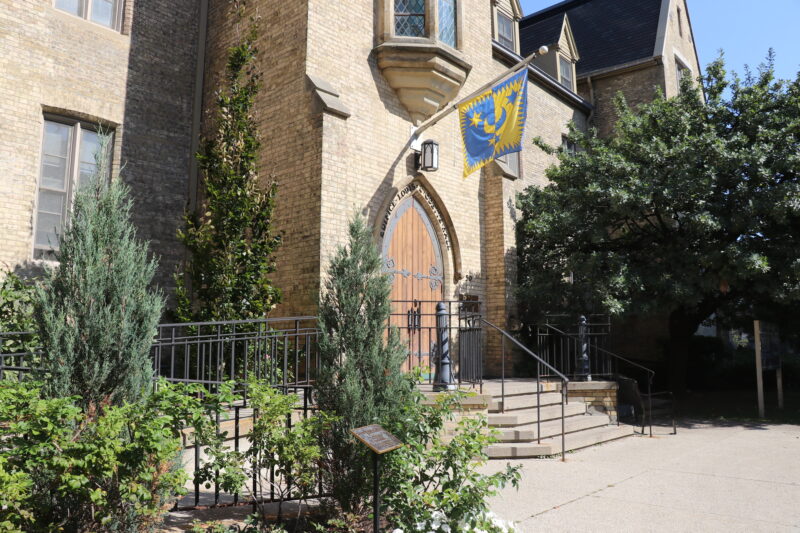
If you’d told me in late February that assembling and packing boxes with Randy Boyagoda’s books and personal effects would be the highlight of my workweek, I’d have probably laughed (or maybe wanted to cry) at the idea. Yet that’s exactly how things turned out on June 11th. There I found myself sorting books alphabetically by last name—Ellison, Faulkner, Gaddis—and receiving instruction from the incoming FAS Vice Dean, Undergraduate on how to fold down cardboard flaps so as not to require any tape—a trick he learned working at a book factory in his student days. Only the crunch of the occasional Dorito break punctuated the thumps and thuds as we stacked pounds and pounds of American literature and Catholic tradition. Not a typical day at Saint Mike’s, but it sure beat Microsoft Teams meetings.
Why was this packing session so bittersweet for me? It had to be something more than working, eating, and chatting with our outgoing Principal, because I’d had the chance to do all of those during my year in his office. But in a sense, that was all it was about. For the preceding ten weeks, I’d missed the many interruptions by the people who show up at my door (who would have guessed that?), discussions of current events over morning coffee, and running into people on my way to the mailroom. My work hadn’t featured the conversation, shared meals, or other un-screen-mediated interactions that so make being a part of the USMC community rich and joyful.
We find ourselves in a liminal time. We’re passing between life before and after COVID as case numbers drop in many parts of the world, but worries of second waves and the absence of widely available vaccines or immunity tests mean that we haven’t crossed the threshold yet. We don’t know what life on the other side of that threshold will look like. Many have died; many have lost their loved ones, others their jobs. The pandemic, along with the killing of George Floyd and the ensuing demonstrations and public discourse, has reminded us of racial and economic inequality in this American election year. We can only hazard guesses at the timeline that runs towards social and cultural normalcy, towards full concert halls, naves, patios, and any of those other places where we gather in embodied groups.
Further, we find ourselves in a spiritually liminal time. Our regular rhythm of movement about the city, with its many external distractions and stimulation, has been disrupted. The resonance between COVID workspace and monastic cell is evident for those of us with the privilege of working from home; we were afforded a lot of time for rumination and reflection, at least before summer weather broke. The occasional escape-via-HBO-binge notwithstanding, something has shifted inside of most of us.
Again, we wonder: what ramifications—social, political, economic, and spiritual—will result from this liminal time?
As another entry in this series reminded me, times of privation and uncertainty can also be occasions for memory and hope. One of the most enjoyable and memorable aspects of my time in the Principal’s Office so far has been serving as a staff member in the Gilson Seminar in Faith and Ideas. The Seminar is a synecdoche for St. Mike’s at its best: Gilson involves the integration of work, play, and friendship. Gilsonians study great texts together, enjoy pelting each other with dodgeballs every month, and share an experience of travel (barring pandemics). It’s been inspiring watching Professor Boyagoda offer his whole person to the Seminar as he led our office in its administration, taught students with the support of our two postdoctoral Fellows, and even brought his family to many of its events. Such leadership is among the many reasons we will miss him in the role of Principal. Although he’s moving on to the Faculty of Arts and Science, Professor Boyagoda will remain the instructor of the Gilson Seminar—an occasion for hope!
Another occasion for hope in our office lies in the fact that we’re gaining Principal Emeritus Mark McGowan on an interim term. Professor McGowan’s devotion to Saint Michael’s over the years, and his considerable institutional memory, will surely prove invaluable in the months to come.
I value working at a place like Saint Mike’s, a place that seeks to nurture the whole person in a community of study, service, friendship and spiritual practice. Although we can’t currently be together in the way we’d want, we can remember what USMC was like before our liminal moment, and look to the future with hope.
Read other InsightOut posts.
Andrew Selvam is currently the Acting Chaplaincy Teacher at St. Joseph CSS in Mississauga. He is also a science and religious studies teacher with the Dufferin-Peel Catholic District School Board. He is currently pursuing his Master of Religious Education degree at St. Michael’s Faculty of Theology. He enjoys music, hanging out with friends and family, and travelling.
A Language of Love, Unity, and Joy
The day was March 12; I remember it clearly. I had just finished with our chaplaincy team meeting in the library when a student asked me if it was true…that they would be closing schools for three weeks because of COVID-19. I immediately went to my computer to confirm what I hoped wasn’t true and, lo and behold, it was. We would be away from school for at least three weeks. Immediately the news cycle was flushed with what was becoming a worldwide pandemic and, as each given week passed, it seemed more and more likely that the school year would happen away from the school.
After March Break, it was a very slow waiting game. Retreats, social outreach programs, and student engagement activities would have to be put on hold. The way relational ministry would have to be delivered would look very much different. I had been reading all the emails from our school board offering all of the different platforms for learning, but I stood there for a moment and wondered “How do I connect with students?” From the beginning, it became a get-go of mine to make sure that, in as many ways as possible, I was going to make it feel as much as it could for students like we had never left. My first digital daily reflection went out on the feast day of the patron of our school, St. Joseph, more important than ever as the patron saint of families and the universal church. The Holy Spirit that I always felt travelling through a school would be called upon to help me figure out this new upper room. And that was just my motivation. I needed the Holy Spirit also to do the work of expanding this upper room, now neighbourhoods apart from each other and along a digital superhighway.
As each new day rolled out, each reflection and activity would focus more on refocusing our “new reality” into something positive, something to come alive through the Spirit. Meeting with students using videoconferencing applications made it as close to kids coming by the office as I could. Three-and-a-half months later, it has transformed into an opportunity for us to hear each other, talk about the struggles of the day, of the week and of the month, and offer support when needed. With the chaplaincy team back in full swing, I was ecstatic that, more than ever, kids were looking for ways to be engaged outside of the classroom. Each discussion we had and prayer we said felt like therapy for the mind and the soul, for the kids and for me.
But distance-learning causing frustrations wasn’t the only thing on the minds of staff and students. The number of deaths of relatives of staff and students was on the rise, and I asked the Spirit to just give me the right words to say when I picked up the phone to offer my condolences and support in any way that I could. It also became apparent that many of our families had parents unable to work, raising the possibility of not being able to put food on the table. The St. Vincent de Paul society helped us out, as did our generous staff, to provide food and gift cards for our neediest families.
I have to say I had my reservations. I did not know what distance chaplaincy would look, but it has been more than enlightening. It has shifted me out of my comfort zone in a way only the Holy Spirit can, and moved me to find energy reserves I did not think I had. We had just celebrated Easter at the beginning of this pandemic, and we know that we are an Easter people called, as Christ did, to work to make anew. More than anything, though, we have been called to be a Pentecost people—gathered together, filled with our blessed gifts, so that people outside our Upper Room can hear us speak in a language that they could understand—a language of love, unity, and joy.
Read other InsightOut posts.
Jessica Barr is the University Archivist and Records Manager for the University of St. Michael’s College. She is a graduate of the University of Toronto (New College 0T9, Faculty of Information 1T1), and spent much of her time as a student studying in the John M. Kelly College Library. Not much has changed, except her desk’s location in the library.
Archiving St. Mike’s in Quarantine
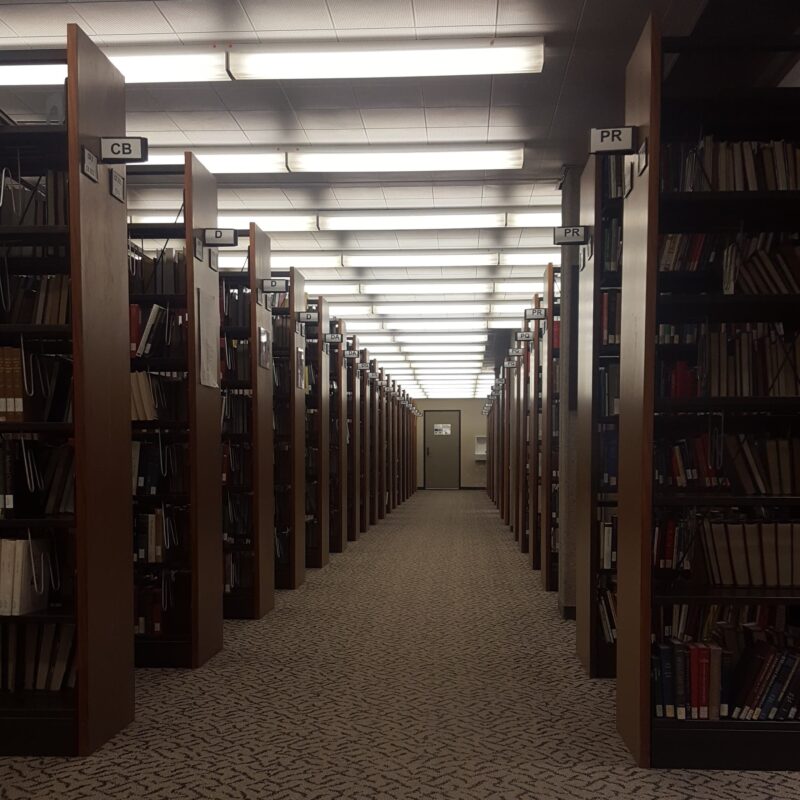
The University of St. Michael’s College Archives is tucked in a corner of the third floor of the John M. Kelly Library. The Archives preserves the official records of the University, including records from the offices of the President, Principal, Faculty of Theology, Pontifical Institute of Mediaeval Studies, and Continuing Education program. We also have papers from faculty, records about some alumni, student publications, and an extensive collection of photographs. More recently, I’ve written a survey to capture the experiences of our community during the COVID-19 pandemic (but more on that later).
Much of my time includes hands-on work with the paper records that contain the history of St. Michael’s College: I arrange transfers of records from donors, I make sure the archival materials are properly housed so they can withstand many of the tests of time (including damage from light, pests, or mould), and I create digital inventories with written descriptions of the materials so they can be accessed by researchers. I also respond to reference requests from researchers near and far—some are looking for information on alumni who attended St. Michael’s, some are conducting academic research using papers written by faculty, and some are simply interested in our history as an academic institution.
Since mid-March, however, I have been working remotely, like many of my St. Michael’s colleagues. So how do I archive materials without physical access to the archives? With the help of the IT departments at St. Mike’s and the University of Toronto, I have been able to maintain access to my network drives and my digital records. These records include my digital inventories of the collections held in the archives and more than 1500 digitized photographs. This means I can continue to respond to many reference questions, including a recent query about the date the clock was added to the Elmsley Hall tower. (It was 2005, in case you are wondering.) I can also update inventories and spreadsheets to make them more accessible for future users, or upload them to the website; update policies and procedures; coordinate with colleagues on questions related to records management; finally clean up my hard drive; and convert already digitized materials to more usable file formats.
During this time of quarantine and pandemic, I have been wondering how the archives can preserve this point in history. I find myself asking: What do I wish we knew about the 1918 pandemic at St. Michael’s? What was that period like for our students, staff, faculty, and alumni? We are able to gather some information from administrative records and yearbooks, but we don’t have very many first-hand accounts. In response, I have been actively archiving the digital records created by the administration over the past three months, including public emails and the St. Michael’s website. In an attempt to gather eyewitness accounts of the COVID-19 pandemic, I have also written a survey to send to our community, with the goal of capturing information about our thoughts, feelings, and experiences. In the future, researchers will be able to access these answers to learn what life was like for us during this particular moment.
We invite you to submit your own answers to the survey, and any photographs that capture this moment: https://stmikes.utoronto.ca/usmc-archives-and-covid-19/
I’ve copied examples of my own answers below:
Name: Jessica
What is your current location: My kitchen table, Pickering, Ontario
How are you connected to St. Michael’s College? Staff
How have you, your family, and community been impacted by the COVID-19 pandemic? I have been working remotely since March 12th. A few immediate family members were temporarily laid off from work, but the rest have been working remotely. We have all, thankfully, remained healthy. Many of my neighbours have been home, so we see a lot more people on walks now.
Share your experience with teaching, learning, or working remotely: I was able to begin working remotely very early on, thanks to previously-set-up off-site network access, and troubleshooting with our IT teams. Transitioning to Zoom or Microsoft Teams meetings was a bit of a challenge, since not all colleagues immediately had access to a camera or microphone. After a couple of weeks, though, we all got into a “normal” swing of things. I have really enjoyed meeting the pets and children of colleagues via web meetings.
What about your routine has changed? My gym is closed, but is offering Zoom classes to keep active. I just noticed that my bus line to get to the GO station has been shut down due to lack of ridership, so that will be a challenge when we’re cleared to physically go back into work. Beyond that, I’ve been reading a lot of cookbooks and testing out a lot of new recipes. Luckily, I have family nearby, so I can deliver some treats to nearby porches. I would normally have a day each month to visit with my father (who lives about six hours away), but we haven’t been able to travel since February.
For more information about the University of St. Michael’s College Archives, please check out this link: https://discoverarchives.library.utoronto.ca/index.php/university-of-st-michaels-college-archives
Please email me you have any questions for the archivist: usmc.archives@utoronto.ca
And, if you’re interested in seeing digitized copies of historical St. Michael’s yearbooks, you’ll find some here: https://archive.org/details/usmichaelscollege
Read other InsightOut posts.
Luis Filipe graduated in 2006 with an Honours BA in History and Linguistics, and then completed a Bachelor of Education degree at OISE in 2008. He has been teaching for 12 years in the Toronto District School Board, the last three at Bloor Collegiate Institute as Department Head of Social Science, where he teaches law and history, and coaches girls’ soccer. He is also the president of the Toronto History, Humanities, and Social Science Subject Council.
A Father’s Inspiration
Navigating life through the new normal of social isolation and distance from family and friends has been challenging. In many ways my relationship with the world is linked to my father. The places and people I know all circle back to him. No place better exemplifies this than the University of St. Michael’s College.
My family is made up of a different kind of alumni. My father, Manuel Filipe, started working at St. Mike’s in 1975, eight years before I was born, first as a night caretaker, and then later as Senior Supervisor of Facilities & Services. In those early days he worked alongside my great-uncles and aunts—the patriarchs and matriarchs of our family—who arrived in Canada with the first wave of Portuguese immigration in the 1950s. So while I was the first in my family to attend as a student, I was the third generation to be a part of the SMC community.
As a child, I would visit St. Mike’s regularly with my father. Our weekends were bookended by trips to lock up Carr and Alumni Halls, shut off the lights in Brennan Lounge, and close the Elmsley and Alumni parking lots. Nights would end with a walk together to Dufferin station, where we awaited my mom’s return from work at St. Mike’s, or carrying me to bed after I inevitably fell asleep on the drive home when we picked her up directly. The college was where I watched my father play table tennis tournaments; where I spent March Break changing batteries and reprogramming electronic residence locks with him; accepting rosebud chocolates from the wonderful Mrs. Lee in Carr Hall when he wasn’t looking; and organizing keys and envelopes before the start of each school year. Like any home, the college also bore witness to more painful memories, like when, on my first day as an SMC student, I approached my proud father on the third floor of Alumni Hall to share the news that his father, my grandfather, had died earlier that morning in Portugal. All these experiences are the landscape of my life.
So much of what I know about my father as a person is shaped by his relationship to his work at the college. My father doesn’t have many friends outside of its buildings; he doesn’t go out or really have any hobbies. His role at St. Mike’s was an inextricable part of his identity. He is proud of the work he did each day and proud of the life it provided us. It gave him a chance to serve a community, and Catholic faith, he cared about deeply. As I grew older, and my father’s academic expectations came into greater focus, the relationship I had with my father and the college helped to make me feel at home on campus, as a student carrying the weight of my entire family’s academic expectations. It’s easy to see yourself belonging in an institution when you have already been in its buildings.
My father has been retired from St. Mike’s for 11 years now, but that relationship remains an influence in our lives, as father and son. Almost two years ago I also became a father, when my son Mateo was born. I have thought a lot about the relationships my son will forge through me, the way I did with my father. Before the pandemic, my son regularly visited me at Bloor Collegiate Institute, where I teach, interacting with staff and students alike. In those exchanges I caught myself thinking back to those early days at St. Mike’s, where I was carried around campus by my father, meeting the Professor Ann Dooleys and Father Maddens of the world. I wonder whose names my son will remember, and what memories will linger for him.
So while there is some physical separation between us today, because of social distancing, our experiences and memories remain connected, and centred on the college. I’m looking forward to visiting St. Mike’s some day again soon with my father, but this time with his grandson in tow, watching the two of them share spaces he and I did so many times before. And maybe after this is all over, our family’s presence, and my father’s connection to St. Mike’s, will grow by another generation.
Read other InsightOut posts.
Dr. Darren Dias teaches in St. Michael’s Faculty of Theology, specializing in Trinity, Religious Diversity, and teaching methods. He is currently working of a SSHRC funded project with colleagues Gilles Routhier (Laval) and Michael Attridge (St Michael’s) entitled: “One Canada, Two Catholicisms: Divergent Evolutions in the Catholic Church in Quebec And Ontario, 1965–1985.”
When the Monastic Cell Meets a Zoom Meeting
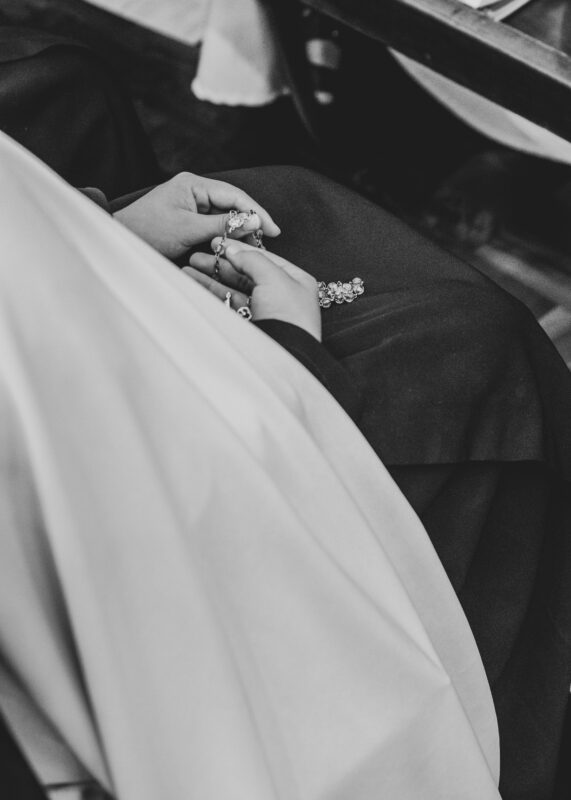
When someone enters a religious order or institute for consecrated life they begin with the novitiate. Monastic orders like the Benedictines, Cistercians, and Trappists, mendicant orders like the Franciscans, Dominicans, and Carmelites, or apostolic congregations like the Basilians, Sisters of St Joseph and the Lorettos—everyone begins in the novitiate. This is an intense period of no less then twelve months when the novice is removed from his or her normal life and confined to the novitiate community. The novice leaves behind his or her job, or studies, and the comfort of one’s usual network of relationships, and enters into something new. One is suddenly disconnected and inserted into a foreign reality. Novitiate is the beginning of a process of formation into a particular history, charism, spirituality, theology and way of living.
My novitiate was spent in the Priory of St. Albert the Great in Montreal. The large priory was built to house about 100 friars in 1960 (just before the exodus of so many religious). The complex includes a large conventual church, refectory, community rooms, ‘cells’ (bedrooms), pastoral institute, administrative offices, even a pharmacy, swimming pool and its own postal code. Although on the campus of the University of Montreal, St. Albert seemed like an oasis in the midst of the hustle and bustle of urban university life. One could easily survive without leaving the complex for weeks, maybe months.
St. Albert seemed to have preserved much of the medieval character of the Order of Preachers: a separate choir for the religious in the chapel, long refectory with an alcove for the reader, silence in the halls, habited religious moving from choir to refectory, etc. The rhythm of my day unfolded according to the schedule of the liturgical hours (prayers): lauds and Eucharist in the morning, mid-day prayer, and vespers; after each hour, the appropriate meal was served. Between prayer and meals there were blocks of time for contemplation and meditation (naps); study, common and individual; and work, on-site labor to meet the needs of the community (cleaning, gardening, snow removal, etc.).
The imposed confinement in March due to COVID-19 has felt in many ways like a return to my novitiate experience. The rhythm of life that developed in the wake of the confinement was not unfamiliar. My life was not punctuated primarily by apostolic activities—teaching, lectures, parish ministry—but around common prayer. Always being home has meant that morning or evening activities no longer make it possible to skip common prayer for a different “priority.” Of course, through technology many of activities continue, but in drastically different ways. The sacrosanct private space of the “monastic cell” has been displayed on Zoom for all to see.
For centuries, religious have in some way retreated from the world, for love of it, into a voluntary confinement. Withdrawal means making space for the other, especially for the most vulnerable and in need. This is not a space of escape from the world, but a space of intimate encounter, where the “joys and the hopes, the griefs and the anxieties” (Gaudium et spes) are appropriated and placed before the Triune God in prayer. Since COVID-19 began, this prayer has been mottled by petition and supplication for healing and reconciliation.
Religious communities, even ones rooted in monastic or medieval notions of “separation from the world,” are not unaffected by pandemic. In 1918 Archbishop Paul Bruchesi of Montreal wrote a pastoral letter praising the work of many religious communities during the Spanish Flu epidemic. Apostolic religious communities were on the frontlines of health care and social assistance then. In these twilight years of religious life in Canada, religious communities experience solidarity with the victims of COVID-19 differently. Less than directly serving those most affected by the pandemic, many religious have become its victims.
If religious communities were aware of their vulnerability before the pandemic, how much more keenly are they aware of it today? In 2014, Canada counted about 11,600 religious. Of that number 50% were over 80 years old and 44% between the ages of 60-80. Already in 2014 fully 25% of all religious lived in long-term care homes. Many religious communities have been devastated by the coronavirus. In Ontario, the Jesuits temporarily shut down their retirement facility. Half of the residents in the Residence-De-La-Salle, a mixed religious community care facility in Quebec, have died. Some religious communities have lost up to one third of their members due to COVID-19.
My return to my novitiate experience, coupled with the witness of those who have been affected by the disease, reminds me that religious life is an ongoing process of becoming ever more vulnerable. A voluntary confinement does not separate religious from the world around them, but brings the vulnerability of that world into the heart of who we are.
Read other InsightOut posts.
Today, we hear from two of the voices working to keep the campus in safe and beautiful condition. Angela MacAloney-Mueller is Physical Plant Coordinator. She’s been a part of the USMC community since August 1994, and notes that the comfort of students and staff are her top priority. Michael Chow is the Director of Facilities & Services. He joined the USMC community in August of 2019, and is dedicated to making USMC the most beautiful campus in Canada.
The New Normal on the St. Mike’s Campus
Angie
Anyone who’s visited my office knows how much of a Harry Potter fan I am. During the last few weeks a line from one of the movies keeps running through my mind. In Order of the Phoenix, Mrs. Figg assists Harry in escaping two Dementors—flying, soul-sucking monsters—who have attacked Harry and his cousin, Dudley. “Dementors in Little Winging! Whatever next? The whole world’s gone topsy-turvy!” Some days it does feel like that.
In early January, the coronavirus was something discussed but not really worried about—at least not by me. Then I was asked to source order hand sanitizer for the campus. It was then I started to worry a little; it wasn’t as easy to source as I had thought, although I was able to order some. Once it arrived I distributed it to various departments. At that time, I think we were all hoping the coronavirus wouldn’t affect our lives—it was happening “out there.” February came, the virus became more widespread, and senior managers discussed emergency plans.
Then everything seemed to happen so fast. Students were asked to move out early, classes moved online, and plans were made for the staff who could to work from home. I woke up one March morning to find myself using a laptop for the first time, logging in remotely from my kitchen. It took a couple of weeks to get used to working from home. I still get up at the same time and follow my morning routine. I do this for two reasons: one, my cat won’t let me sleep in and, two, I know it is better for me mentally to stick to my regular routine wherever I can.
I am grateful I can work from home and don’t have to take public transit, but I miss the camaraderie with my coworkers, going to lunch at my favourite sushi place, and just being on campus. I have worked on campus for more than half my life. Sixteen years at the Pontifical Institute of Medieval Studies, and it’ll be ten years this August that I have worked for the Facilities Department. The campus is like a second home, and it’s taken some adjusting to not being there as often.
This time of year is normally one of the busiest times for the Facilities Department. Students move out at the end of April, and we do room inspections and repairs in May, when we normally prepare to host summer camps. I missed the hustle and bustle of that this year. Still, we must keep moving forward, so we are now getting some work done in the campus buildings.
I go to campus once a week to do paperwork and other tasks I can’t do from home. I always go for a walk around the mainly quiet campus. Signs of spring are everywhere. The lilacs are in bloom, the birds are singing, and the tulips planted last fall are showing off their lovely colours. The day I’m in the office feels the most normal. It’s nice to see and chat with a couple of coworkers, to have a sense of normalcy, even if only for a day.
I don’t know if we will ever go back to the way things were, but I know we will all adjust to a new normal. Yes, it does feel very “topsy-turvy” right now, but we must keep going and not let fear take away the joy in our lives. I know this is not forever, and I need to keep reminding myself of that. I look forward to the day we are all on campus together again.
Michael
The campus and the world are not the same today as they were three months ago.
As a commuter, it is now hard for me to believe I had problems finding a parking spot at the GO train station ahead of my 6:28 am train. After March 12, parking was no longer the issue, but rather the frequency of trains. Ridership dropped drastically, which I originally attributed to March Break but quickly learned was a sign of people staying away from the “germ tube.” I followed suit and decided to drive to campus. To my surprise, I was able to make it to campus in about 25 minutes or so, the equivalent of making the same drive prior to sunrise on a Sunday morning.
Self-isolation, self-quarantine, border closures, and a state of emergency were the hot topics in mid-March, replacing the usual campus discussions surrounding mid-term results, lectures, final exams, and convocation. After the campus closure was announced and the majority of the students had moved out, a surreal dream started playing out in Technicolor.
Imagine walking through Canada’s largest university campus in March and only encountering three people. Weird and eerie are two words to describe the overall ambiance.
While other USMC staff were able to work from home, the same opportunity was not available for the Facilities & Housekeeping staff. The courageous and dedicated staff from F&H persevered, and many of them braved public transit to ensure uninterrupted services for those students unable to return home due to travel restrictions.
Behind the scenes—and often unnoticed—the F&H staff have faced the challenges of the pandemic as essential staff and turned them into opportunities as guardians for the university. Deep cleaning and disinfecting of all campus spaces, polishing and waxing of large common floor areas and meeting rooms, lowering utilities by managing equipment set-points and turning them off where possible, and pushing forward with maintenance projects which might otherwise not be feasible with a full campus.
As we all try to predict what the “new normal” will look like, the staff and students can be assured that the USMC campus will continue to be one of Canada’s most beautiful, safe and ready to welcome everyone back once we are able to.
A card in the Facilities office from the Dons of 2019/2020 reads: “Not all superheroes wear capes.” Please stop a F&H staff member upon returning to campus; a simple heartfelt “thank-you” will have a lasting impact.
Read other InsightOut posts.
Educators and alumni members John B. Kostoff and Patricia Dal Ben are the authors of One Home at a Time: Realizing and Living Out Our Domestic Church, Novalis 2019. John, who is the Executive Director of the Ontario Catholic Supervisory Officers’ Association, graduated with a Bachelor of Arts in 1977 and now serves as a member of the University of St. Michael’s College Collegium. Patricia, who is Curriculum Consultant: Religious Education, Family Life and The Arts with the Halton Catholic District School Board, graduated with a Master of Theological Studies degree from the Faculty of Theology in 2017.
Building the Domestic Church
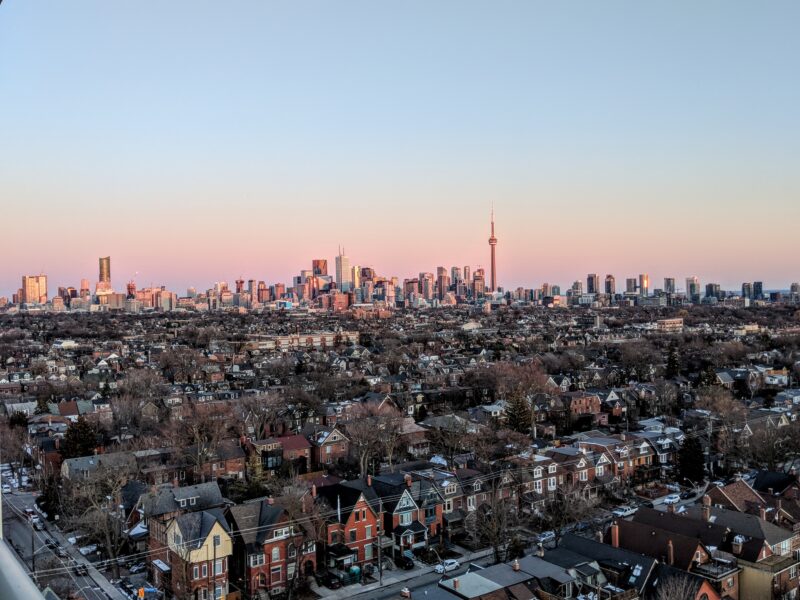
Since the beginning of this pandemic, home is where we have been called to “stay safe” and where we have been staying for weeks on end. Home has never meant so much to so many people. It is the place we have baked, binged, and worked. It is the place we have homeschooled and the place where we have celebrated virtual mass. It is also where we have wept and worried and then worried some more. So how has your notion of home changed during this time? Or has it?
Long before this pandemic, home was, in part, where mass was celebrated; not the way we celebrate it today or with hope in the near future, in our bricks and mortar churches, but celebrated nonetheless. The Apostles sat in the upper room after the crucifixion trying to reimagine what this “new” life was going to look like. Luke the Evangelist recounts in the Acts of the Apostles that “Day by day, as they spent much time together in the temple, they broke bread at home.” (Acts 2.46a) The Catechism of the Catholic Church also reminds us that,
“In our own time, in a world often alien and even hostile to faith, believing families are of primary importance as centres of living, radiant faith. For this reason, the Second Vatican Council, using an ancient expression, calls the family the Ecclessia domestica.” (1656).
The home church or domestic church has a long-standing tradition in our faith experience, and this notion was reignited by Bishop Fiordelli at the Second Vatican Council. St. John Paul II called the family “another invaluable expression of the apostolate of families” (Letter to Families, p. 16, 1994). The Church has continually valued and called on the faithful to create anew the reality of being home.
Article after article, post after post, people are reaching deep to look at what matters and realigning how we project into the world and how we deal with all that is happening and all that is still unknown. Missing our churches, the community, THE celebration is important, but never has there been such a time to reinvigorate our home churches. What we do now in our domestic church will have a profound effect on the future of our universal Church. We have a responsibility to develop the domestic church as authentic projections and expressions of our collective baptismal call.
As we celebrate Pentecost and the birthday of the Church, let us not forget how important that first house church was, and the responsibility we all have to nurture and support that growth and faith development in our own homes with the people we call family. The domestic church has been instrumental in laying the foundation of what is most important to this temporal life. From those early moments of gathering and now, thousands of years later, without a church building or the ability to gather in our places of worship—how then do we claim to be Catholic? How do we delineate in our homes that our faith tradition matters? The new evangelization has come to us in a bold and enticing way. How we understand what is happening in our world will forever change how we participate in Church. There has never been a better time to be taking stock of our domestic church so that when we unite once again to the source and summit we will have done our best to proclaim as good and faithful servants in our homes and beyond.
Read other InsightOut posts.
Julia Orsini is a member of the graduating class of 2020. On Tuesday, June 2, 2020, she was granted an Honours Bachelor of Arts degree with a Major in Political Science and Double Minor in English and Italian Culture and Communication. She will be pursuing a Master’s Degree in Marketing at Schulich School of Business in September 2020.
Double Blue Forever
Coming from a long line of family members with double blue running deep in their veins, I was so excited to carry the torch in my academic journey and become a St. Michael’s College student myself. By reflecting on my time working with USMC Orientation, teaching chants like Hoikity Choik and Bubbaloo, I couldn’t help but remember learning them at a young age and wearing my dad’s oversized SMC sweater. For decades, St. Mike’s has influenced education through Basilian teachings to transform young enthusiastic student minds into great leaders, and the university welcomed me with open arms the fall of 2015 with opportunities to grow and develop.
At USMC we are always quick to discuss our tight-knit community. It is no wonder the place quickly became the home that I had been expecting on my arrival, and hence why it will be so difficult to leave now that I have graduated. I learned early on that your university experience will be whatever you put into it, and I knew being heavily involved in the USMC community from the start was integral to my five years here. As I prepare to leave the gates of USMC behind I am confident that my time and experiences here have helped me mature in ways I could have never imagined when I first stepped foot on campus. My time with the St. Michael’s Troubadours Drama Society and The Mike are notable memories, including having the opportunity to find creative ways to connect the Young Alumni community as a work-study student at the Office of Alumni Affairs. The latter is now becoming reality for me as I become part of the Young Alumni Community myself.
Although our USMC Class of 2020 had the unconventional experience of graduating via a YouTube Convocation, I truly believe that everything happens for a reason and that God does not give you more than you can handle. I believe that the Class of 2020’s unwavering determination to continue learning without a traditional university experience is a testament to our strength as a community capable of accomplishing greatness.
Despite not having the traditional convocation, the University of Toronto administration still managed to recreate the procession, which I watched as I gathered with my family at home on the couch. Instead of wearing fancy heels that bore the impact of walking across campus from USMC to Convocation Hall, I opted for comfy house slippers. Rather than trying to find my parents in the sea of people as I waited for my name to be called out, we screamed, celebrated and cried when my name appeared on our television screen, and we held each other tightly. It turns out our unprecedented virtual convocation allowed me to celebrate instantaneously with my family in a way that transcended distance, continents and time zones.
I am proud to be a St. Michael’s student turned Young Alumni member, and share with the graduating class the optimism for a better and safer future as we continue to form new knowledge, skills and experiences to keep the world on turning.
Read other InsightOut posts.
John Montefiore is a member of the graduating class of 2020. On Tuesday, June 2, 2020, he will be granted a Bachelor of Arts degree with a Double Minor in Education and Society and Human Geography.
Walking Away—and Coming Back
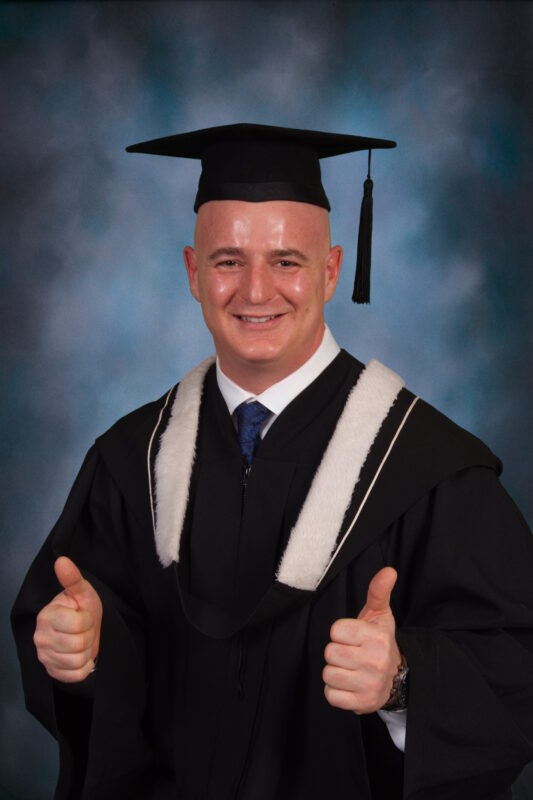
My relationship with St. Mike’s goes back to 1995, when I first began my university career. I abandoned my pursuit of a university degree, however, after I was found I was unsuccessful in performing academically while also being a varsity athlete with the University of Toronto Varsity Blues football team. I walked away from both my academic and athletic dreams, primarily because I was unable to face and overcome the adversity and difficult position in which I had put myself.
Decades later, in the summer of 2018, I returned to the University of St. Michael’s College to explore the possibility of returning to school to complete my university degree. The staff at the registrar’s office were so helpful, accommodating, and supportive of me in my goal to complete my studies! A special thank-you goes out to Associate Registrar Miranda Cheng. She helped me plan my return and directly contributed to my success. I will be forever grateful to her and to the entire St. Mike’s administrative staff for helping me erase decades of feelings of regret and disappointment.
Today, I am proud to be a graduate of the University of St. Michael’s College. My feelings of pride, however, would have been delayed if not for the flexibility, actions, and commitment the entire University took to ensure that the academic year would not be lost due to COVID-19. All my professors went above and beyond to transition to a virtual format to help complete the winter term. Considering my own experience with adversity, seeing the University of Toronto react so positively in a time of crisis was inspiring. As such, I have decided the best way I can repay both St. Michael’s and the University of Toronto for their efforts is to aspire to be the best version of myself in spite of being faced with challenges that may arise, and to “pay it forward” to anyone that can benefit from any assistance I can provide.
As for not having an in-person convocation, well, I do feel somewhat disappointed. More so for my family, who would have loved to experience a moment that I failed to deliver to them decades ago. But it is just the cherry on top of the sundae! As I reflect back on my academic journey, I am reminded that it was the journey itself, the knowledge gained, the friends I made, the personal growth, and my sense of accomplishment that was the ice cream, chocolate sprinkles, whipped cream and nuts that made up one delicious dessert. I am so grateful for being a part of the class of 2020, and will always remember graduating during the COVID-19 crisis. So, instead of using crisis as an excuse, I will use it as a reason, a reason to rise above it and do interesting things during these interesting times.
Read other InsightOut posts.
Grace McSorley (USMC Class of 1995) is a lawyer and Deputy Ombudsman at the Ombudsman for Banking Service and Investments. She is currently on the USMC Senate and previously served on the Collegium as a student and later as an alumni representative.
A Virtual Check-in with Classmates
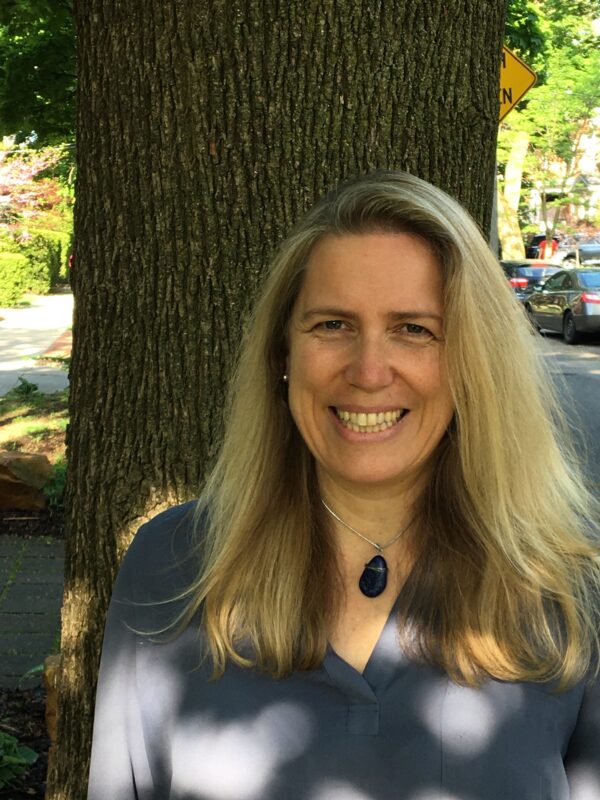
Hello St. Mike’s community!
Since we can’t catch up in person at reunion this year—and by now most of us are “zoomed-out”—it is great we can use the St. Mike’s blog to hear about what people are thinking and how they are doing. I thought I would share my experience as a work-from-home parent during the COVID-19 crisis.
My husband, Michael McCarthy (USMC Class of 1994), and I are fortunate in that we are both able to work from home. I work at OBSI, the Ombudsman for Banking Services and Investments, a not-for-profit that resolves disputes between banking and investment firms and their clients when they can’t resolve them on their own. This is a busy time for us, and for our stakeholders. Fortunately, OBSI had practiced a scenario where we would have to work from home on short notice, so our transition was seamless and our work was not interrupted.
Things were not as seamless on the domestic front. The day the COVID-19 shutdown started, our laundry machine broke so, for the first three weeks of the shutdown, I did laundry in our bathtub with my feet, which can only be described as a joyless task. It is amazing how much laundry a family of four still generates when they are hardly leaving the house.
In the early pandemic days, I worried my family wasn’t active enough. This was reinforced during a game of charades when one family member mistakenly acted out the song, “I’ve Been Sitting on the Railroad” instead of “I’ve Been Working on the Railroad.” Shortly thereafter, family walks became mandatory and longer.
For the most part, I’m impressed with the way my family has adapted to new activities. Mike successfully joined the ranks of the sourdough bread bakers. He and the boys play Dungeons & Dragons with a neighbour via FaceTime. My youngest son dug a hole as deep as he is tall in our tiny backyard. He jokes that other kids will return to school telling stories of how they learned to play guitar and wrote “Coronavirus the Musical,” but he’s going to tell everyone he just dug a hole. He’s actually done a lot more, including making me the beautiful Mother’s Day necklace I’m wearing in the picture accompanying this piece using lapis lazuli from his rock collection.
Like many, we’ve had a lot of low points over the last few weeks—but I will spare you the details of our internecine quarrels. We know we are fortunate that we are healthy, employed and able to work from home. Still, it is hard not being able to do important things like be with my mother, or mourn with friends who’ve recently lost parents. My mother recently had to go into full quarantine because three personal support workers from her residence tested positive for the Coronavirus. It is my understanding that they are well and no one else has tested positive, but this is still upsetting for everyone.
We are happy to have backyard social distancing visits with my mother-in-law, during which my boys regale her with jokes they research ahead of time. She has now twice told us how much she misses hugs, and it breaks my heart that we can’t give her one. On our last visit she said that as soon as this is over, she is going to run to the closest intersection and hug everyone she sees. This makes me imagine my mother-in-law in a photo like the iconic WW2 VJ day nurse and sailor image, only in this photo, she is the one dipping another reveller who is also out celebrating the end of COVID-19 times.
I hope everyone is well and I look forward to catching up in person!
The University of St. Michael’s College is keeping the members of all our honoured classes in mind. We look forward to the day when we gather again!
Read other InsightOut posts.
Dr. Stephen Tardif is an Assistant Professor in the Christianity and Culture Program at the University of St. Michael’s College. He also offers courses in the Book and Media Studies Program. This spring, Dr. Tardif was named as co-editor of The Hopkins Quarterly, an international journal of critical, scholarly, and appreciative responses to the life and work of Gerard M. Hopkins, S.J., as well as to those of his circle.
Reading Hopkins in Quarantine
By April, the poet was already sick; in June—just six weeks shy of his forty-fifth birthday—he would succumb to an infection for which, within a decade, there would be a widespread, life-saving vaccine. The death of the Jesuit poet, Gerard Manley Hopkins, from typhoid fever in 1889 appears to present a number of grim contrasts: a young man cut down in the prime of life, who dies from a soon-to-be cured disease. And yet, as his illness worsened, Hopkins’ mood seemed to lighten: the last letters to his family offer consolation, his reported last words, “I am so happy,” offer inspiration.[1] And his last poem, which he sent in April to his best friend, Robert Bridges, offers an “explanation”—this, indeed, is the poem’s last word. Although typhoid is certainly very different from the pandemic we face today, we can take a lesson from Hopkins about how to endure both the disease itself and the disruption it continues to cause, especially from his final poetic achievement.
This poem, a sonnet entitled, “To R.B.,” is, in fact, addressed to his best friend, and it ended what Bridges later recalled being “a sort of quarrel” between them, one precipitated by a joke and some hurt feelings.[2] Hopkins had teased Bridges about the small run of a forthcoming collection of his poems; Bridges parried with a reminder that Hopkins had published virtually nothing at all; with the peacemaking poem that Hopkins sent his friend, he provides a kind of alibi for his silence. Hopkins, who had only sporadic poetic inspiration for years, turns this privation into an invitation to imagine the very impulse that he lacks. The result is one of the most successful examples—and accounts of—poetic creation in the English language.

Hopkins’ poem is thus a reminder of the abilities that we possess, even in times of quarantine, confinement, and infirmity. While we might not all have be able to describe the artist’s creative act, we do have the power to maintain and renew the social bonds between us. While the sonorous, Latinate rhyme-words which end the poem —“inspiration,” “creation,” and “explanation” (ll. 10, 12, 14)—might seem to rise with the first two words but fall with the last, this word is really its pinnacle. After all, this explanatory poem, which reconciled friends who would soon be separated by death, precipitated the experience of inspiration that it captures so well. Above even the poetic muse, then, Hopkins elevates our power to write letters, make phone calls, and send emails to the family and friends from whom we have been separated—or estranged.
But there is another lesson to take from “To R.B.” In a winning, lyric passage from her first novel, Housekeeping, Marilynne Robinson describes a counterintuitive relationship between presence and absence:
For when does a berry break upon the tongue as sweetly as when one longs to taste it…and when do our senses know anything so utterly as when we lack it? For to wish for a hand on one’s hair is all but to feel it. So whatever we may lose, very craving gives it back to us again. And here again is a foreshadowing—the world will be made whole.[3]
Hopkins, too, turns his lack of inspiration into the subject of his poetry; the absence of that affect becomes the thing which he describes in verse. The poem confirms the otherwise paradoxical insight of the French philosopher and mystic, Simone Weil: “Every separation is a link.”[4]
Sooner or later, the restrictions and precautions which have been adopted during this pandemic will fade, and we will no longer measure the minima of social distances or the concavity of curves. But our appreciation for the things and the people that we miss—those that will be restored and those that won’t—need not wait on any government policy or public health finding. As Robinson reminds us, “the world will be made whole.” Until then, in the “winter world, that scarcely breathes that bliss,” (l. 13) we can yield explanations to each other and embrace the strange gift of separation which is already a foretaste of that ultimate completion.
[1] See Paul Mariani, Gerard Manley Hopkins: A Life (New York: Viking, 2008), 425.
[2] Mariani, 418.
[3] Housekeeping (New York: Bantam Books, 1982), 152-153.
[4] Gravity and Grace, trans. Arthur Wills (Lincoln: U of Nebraska P, 1952), 200.
Read other InsightOut posts.
Dr. Mark McGowan is a Professor of History and Celtic Studies, and the Interim Principal of the University of St. Michael’s College for the 2020–2021 academic year. Dr. McGowan is an historian renowned for his work on the Catholic Church in Canada and the Great Irish Famine, as well as the lasting impact that the Famine’s mass migration had on Canada.
Explore other InsightOut posts.
Michael O’Connor is Associate Professor, Teaching Stream, in the Christianity and Culture program and Book and Media Studies. His research interests include music and liturgy and he is director of the St. Michael’s Schola Cantorum and the college Singing Club.
Saturday night, Sunday morning
Saturday night
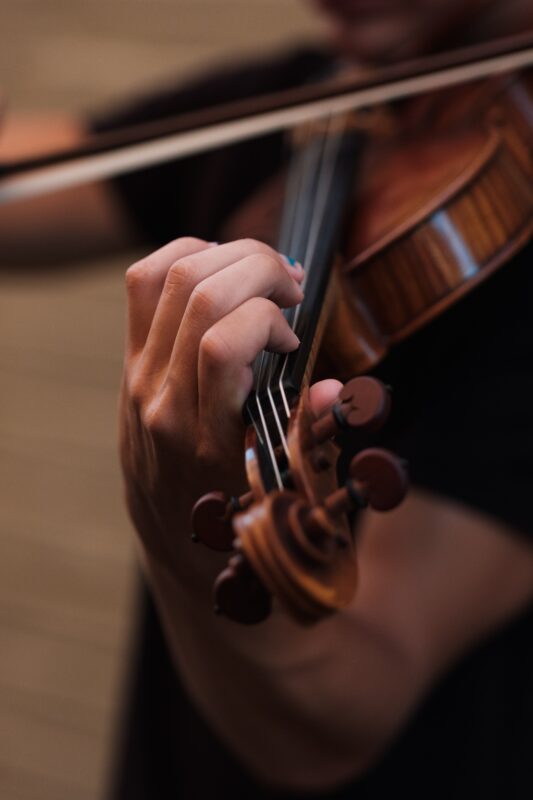
You were lucky the get tickets for the Tafelmusik late-night concert. You arrive an hour early for check-in, as required, and stand in a well-spaced line in the cordoned-off section of now pedestrianized Bloor Street. Your mask is inspected, your temperature taken, you are asked some routine questions about your health (all rather reminiscent of flying to the US in the old days—when we could do that), and are then directed to your seat, four seats away from the next person, empty rows in front and behind. The tang of bleach competes with wood polish. At least there’s space to put your coat, scarf, and mitts (it has been an especially cold March). You nod at your nearest neighbours, an indistinct gesture that could mean “Why on earth are we here?”
The tiny orchestra is spread out over the whole dais. The string players are all wearing masks, the harpsichordist is wearing gloves, and the oboist is inside a plexiglass booth, standing on a disposable absorbent mat. The choir, of course, has been furloughed—they are supervectors. According to the program notes, which you read on your phone, you’ll be hearing music from seventeenth-century Venice composed in thanksgiving for deliverance from the plague. The oboe gives a note and the strings begin tuning up; at this sound, neither music nor noise, you shiver with unpremeditated delight. It has been almost a year since you heard any live music—other than the neighbour’s daughter practising clarinet. You realize in that instant how heartsick you have become with the diet of autotuned, click-tracked, virtual ensembles.
You can’t take you eyes off the three-dimensional, flesh and blood performers. They make occasional eye contact with each other at beginnings and endings but for the most part, like geese in formation, they sense together the music’s flight, bobbing and weaving as one. Carried along with them, your spirit soars, your pulse quickens. Behind your mask, you chuckle with nervous joy. They play for an hour (no interval, no washrooms, merchandise for sale online only) but it passes in moments. Your final applause is exuberant, reverberant, as you try to fill the space with the appreciation of an absent crowd.
Sunday morning
At St. Basil’s, you join the ticket-holders for the 11:07 mass (“enter through the west door, please stand on the red dots”), where your mask is inspected and your temperature taken. Once the 10:30 mass is over, you file up the stairs into church. Household groups sit together; others sit in isolation. You choose a spot in the sightlines of the camera live-streaming the mass on the parish’s YouTube channel. Your mother will be watching (“No, not lingering adolescent guilt,” you insist: “it will lift her spirits to know she has a proxy at mass”). You greet parishioners whose names you now know from Zoomed faith-sharing sessions. Stilted remarks are exchanged across the voids but, like teenagers, you have learnt to save your most vulnerable conversations for social media. Gloved sacristans lay out all the necessaries next to the altar; there will be no servers.
The entrance hymn is sung by an unseen cantor and although the words are projected onto two large screens, you are encouraged only to hum along quietly (“Singing is worse than coughing”). This suits you, since you are a reluctant singer—unless it’s “Come all Ye Faithful,” “Amazing Grace,” or that bit from the Mass of Creation that everyone knows. You recall the choir director who insisted that singing is all health benefits and no side effects—you wonder how he’s enjoying his humming. Readers proclaim the scriptures from individual iPads. The priest’s homily is polished—which is not surprising given the number of times he has preached it today. Occasionally he turns to the camera to address the over-60s watching from home. He looks tired. You enjoy the reminder that the collection basket has been stood down (“temporarily, of course”), and nag yourself (again!) to go online as soon as you get home to make your donation.
Bread and wine are prepared at the altar. The organ plays softly, a half-disguised melody accompanied by the clink of the cruets on the chalice. The sight of the empty seats conjures up the parishioners who normally occupy them, and your mind’s eye is flooded with images of warm, colourful, singing bodies. In among them, you wonder if you really do see faces of angels, apostles, martyrs—a shimmer of countless holy ones.
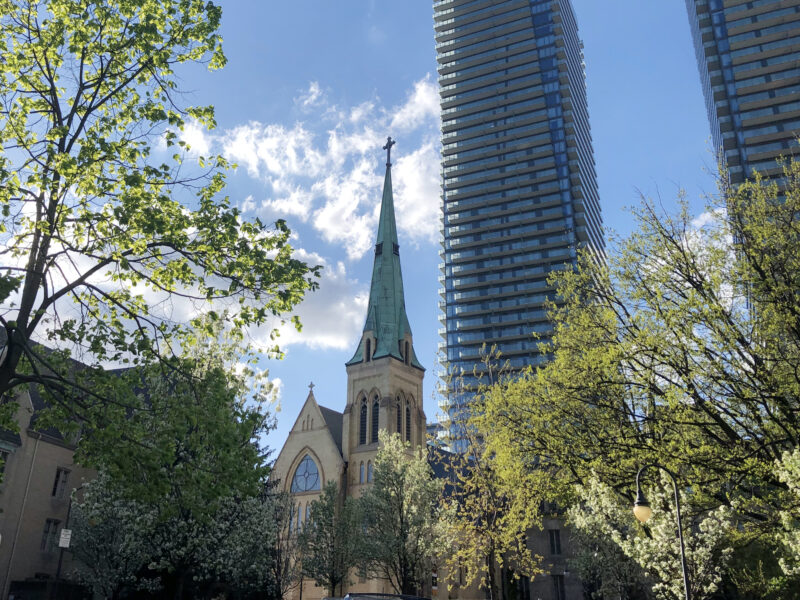
Communion is a regimented, high-alert manoeuvre. You make your way forward biddably. Against all reason, you lower your mask. As the social distance collapses to near-zero, the minister deftly drops the host onto your well-scrubbed hands. You exhale your Amen. Back in your seat, you savour communion. You think of those you love, those in need, those who have not made it this far. While the invisible cantor reminds you to taste and see how good the Lord is, your prayers rise on clouds of Purell and latex powder.
After the closing devotionals (St. Michael has been joined by St. Blaise and St. Roch), you leave the church in an orderly fashion (“exit through the east door”). The organ postlude is almost loud enough to drown out the sound of disinfectant being sprayed on the pews as the church is made ready for the 11:44 mass, the last one before the lunch break.
On the long walk home, your mind is a-chatter: yes, togetherness is in your genes, primates love to sing and laugh together, to feast and embrace. But as a rational primate, you have been hearing for months now that your neighbour is a potential biohazard—that you could be a biohazard—and that the only safe space is the digital universe, where viruses are metaphors.
When you get home and inside, you slump against the door, pull off your mask and take several long breaths. You’re exhausted. You’re blessed. You just might be hungry (you’re never sure these days).
The lockdown was not easy; but the opening-up feels much harder.
Sources
Guidelines for rehearsals and concerts during the pandemic have been issued by the German Orchestra Association’s Health and Prophylaxis Working Group and by seven orchestras in Berlin. Two bodies in the US have produced guidelines for the celebration of sacraments: the Thomistic Institute in Washington and the Federation of Diocesan Liturgical Commissions. An alliance of singing groups sponsored a webinar on the near future of singing.
Read other InsightOut posts.
Silvia Vong is Head of Public Services at the John M. Kelly Library and oversees the Access and Information Services department. Her research interests include critical reflective practice in academic librarianship. Currently, Silvia is a doctoral student at OISE in the University of Toronto working on research related to equity, diversity, and inclusion issues in higher education.
A Critical Reflection on Virtual Libraries
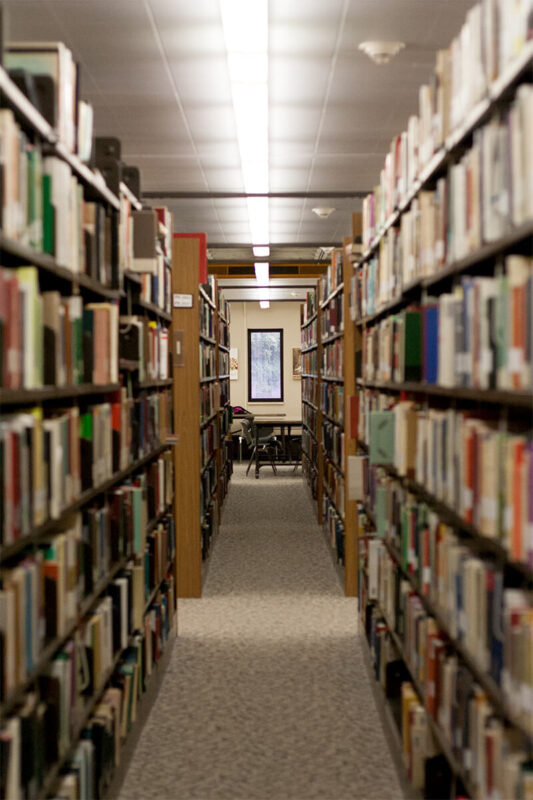
In my first year of the library and information science program at Western University, we were introduced to the idea of a code of ethics in librarianship. A code of ethics guides the values of a library professional and can manifest into actions such as advocating for open access or teaching critical thinking skills. Currently, the International Federation of Library Associations (IFLA) outlines six codes, and the one that holds the most weight for me is responsibilities towards individuals and society. This has led me to practice critical reflection in the classroom, and with our online library services.
While the coronavirus does not discriminate, people experiencing income inequalities, the digital divide, racism, and domestic violence have particularly suffered during this exceptional time. As the pandemic began, librarians began to critically reflect on access and service. Brookfield (1995) and Tripp (1993) offer insight into ways of critically reflecting, first by reviewing incidents and interactions, and then asking the following: What is the dominant view? How does this view silence other views? How does this dominant view ignore or serve dominant groups? How does it impact disadvantaged groups and what can we do to create a socially just structure to address this oppression?
In the first three weeks of the shutdown, I thought about how online access and research may inadvertently exclude some of our community members. Patrons may face financial stress during a pandemic and, in turn, not own laptops in good condition with proper software. Some patrons may not be home due to domestic violence, or be in places without Internet access. In addition, some of our patrons may not have the ability to access mental health services and other resources in the community that allow them to focus and succeed at learning. While e-books and online journals in some ways increase access, they can also create barriers to some of our community members. With social distancing restrictions in place, I struggled to find solutions that could help our marginalized community members.
As I continued to look for ways to be more inclusive, the University of Toronto was offering a session on COVID-19 through a diversity, equity, and inclusion lens. Income inequality and mental health were major themes of the presentation. However, the main takeaway was that under all the stress and anxiety that we all feel during this time, we need to remind ourselves to approach every decision-making process with empathy so that we can make socially just choices for our community.
My very inquisitive 4-year old daughter, Isabella, had overheard the webcast and peppered me with why, where, and how questions related to inequity and inequality in the university and the world. One evening, while munching away at her green beans with a furrowed brow, she paused suddenly, and her little face lit up. Isabella turned to me and said, “Mama, I know how we can make the world better. If we, and anyone with a little extra, could give it away…people with nothing would be safe from bad things.” Oh my heart! My enlightened little one was absorbing my conversations and reflections on the ethical responsibility that we, as members of society, all have during this pandemic.
To put her idea to practice, Isabella and I identified a way to safely help others. We decided to donate to the Daily Bread Food Bank to give our “little extra” to someone in need. Isabella’s reflective thoughts on the pandemic reminded me that while I could not make one big change to help others, I could still find several small ways to reach out and help our community.
Read other InsightOut posts.
Professor Emeritus Dennis Patrick O’Hara is the former Director of the Elliott Allen Institute for Theology and Ecology at the St. Michael’s Faculty of Theology, where he taught from 2002-2019, and directed many theses in ecotheology and ethics. He was also an associate member of the graduate faculty at the School for Environment at the University of Toronto. In addition to teaching courses in ecological theology, spirituality, ethics, and sustainability, he has worked for the World Health Organization and Health Canada researching and preparing policy positions. He regularly delivers both popular and academic lectures in Canada and the USA but has also lectured in Europe and South Korea. Prior to becoming a theologian, he practised as a chiropractor and naturopathic doctor, and taught at colleges of both of those professions.
Moments of Grace and COVID-19
Basil of Caesarea, in Rule LV: Whether the Use of Medicinal Remedies is consistent with the Ideal of Piety, instructs that a serious illness can be sufficiently disruptive to our normal patterns of living that it can force us to consider the circumstances that led to our illness and to re-evaluate our choices so that we can once again align our life with the telos of God’s creation. This opportunity can be identified as a moment of grace, on a religious level.
Thomas Berry notes that moments of grace can also occur on cosmic and historical levels, such as the dispersal of primary element via the explosion of stars or the development of photosynthesis. Throughout the 13.8-billion-year history of the universe, change occurs when systems reach the most tension that they can creatively endure. At that point, systems evolve irreversibly by transforming into a new level of order and complexity by resolving the dangerous tension in an unprecedented way. In many respects, we are at such a moment, in part due to the COVID-19 pandemic and in part due to an ecological crisis magnified by climate change.
The people who are suffering the most due to the ecological crisis with its complex interwoven array of hardships will undoubtedly be least able to withstand the consequences of the COVID-19 pandemic with its threats to personal health and reduced access to supportive infrastructures. Both the ecological crisis and the COVID-19 pandemic are anthropogenic crises on a global scale, and both require a commensurate response. This pandemic has demonstrated the enormous actions we will take when we decide to act for the common good as a single Earth community. Despite decades of exasperating delay to curtail climate change, when faced with this pandemic, nations rapidly instituted measures to restrict travel, pause economies, enforce physical distancing, and impose domestic isolation. Perhaps such a collective and purposeful response could become a rehearsal for addressing Earth’s ecological challenges as we creatively seek ways of being that are mutually enhancing for us and the rest of the Earth community.
Pope Francis, in an interview with Austen Ivereigh from the University of Oxford concerning this pandemic, noted that the great uncertainty of this present moment is “a time for inventing, for creativity” because “every crisis contains both danger and opportunity: the opportunity to move out from the danger” through conversion, including “the decisive step to move from using and misusing nature.” Ecotheology reminds us that we have a common origin and share a common sacred story with all of Earth. We need to reframe our choices to better align with the creative dynamics and the telos of that story for we will go into the future as a single Earth community or not at all.
Read other InsightOut posts.
Dr. Callie Callon is a New Testament scholar at the Faculty of Theology who has also taught at the undergraduate level for St. Michael’s. She is an expert in ancient physiognomy, looking at how early Christians used appearances to praise or impugn others. Her book, Reading Bodies: Physiognomy as a Strategy of Persuasion in Early Christian Discourse, was published in 2019 by Bloomsbury Publishing.
Healing Moistly in Ancient Times
Recently, Prime Minister Trudeau rather infamously suggested that wearing masks during the current health crisis will help prevent the transmission of the virus through saliva, or, as he phrased it, by “speaking moistly” on others in close proximity. As cringeworthy as this “terrible image” is to a contemporary audience, it likely would not have evoked the same reaction in an ancient Mediterranean one. In this context the use of saliva was considered by some to be highly efficacious in treating a number of various ailments.
Perhaps the most famous examples of this are found in the New Testament, where Jesus is depicted as using his own saliva in conjunction with healing some sensory afflictions. In the Gospel of Mark Jesus heals a person with hearing and speech impediments through his touch, prayer, and by spitting (7:31-53). Visual impairments are healed by him with the assistance of a topical application of his saliva in two accounts. In Mark, Jesus spits directly into the eyes of a supplicant prior to laying his hands on him (8:22-26). In the Gospel of John Jesus forms a paste made from saliva and earth which he the applies to the blind man’s eyes before instructing him to then go and wash in the pool of Siloam (9:6-7).
However, these were not the only people who were held to have regained their vision through the application of saliva in ancient texts. According to the first/second century historians Suetonius and Tacitus, the emperor Vespasian accomplished a similar feat through the use of his saliva (Vesp., 7.2; Hist., 4.81). Pliny the Elder, a natural historian from the first century, also attests to the use of saliva for ocular disorders, asserting that ophthalmia could be remedied by daily application of the spittle of a fasting person (N.H. 28.7). According to him, a fasting woman’s spittle was considered an extremely effective treatment for bloodshot eyes (N.H. 28.22)
Beyond eyesight, Pliny further relates a tradition that seems to have held the application of spittle from a fasting person as a particularly effective treatment for a variety of different complaints. To cite but a few examples, it was thought that the application of this type of spittle behind a person’s ear would soothe a disordered mind (N.H. 28.5), could be used to treat boils (N.H. 28.7) and to remove leprous spots (N.H. 28.7), and that a “crick in the neck may be got rid of by carrying fasting spittle to the right knee with the right hand, and to the left knee with the left” (N.H. 28.7).
Non-topical uses are also attested for a host of different ailments, ranging from warding off snakes to prevent poisonous bites (although should it enter their throats it purportedly destroys them [N.H. 7.2]), as a preventative against contracting epilepsy (N.H. 28.7), and as a means to secure the desired outcome of a healing incantation regarding foot pain, with the rather interesting stipulation that the accompanying words “must be recited sober” (Varro, Agr. 1.2.27).
Far from being a transmitter of health complications, in some ancient Mediterranean thought saliva was viewed as a means to resolve or even prevent them. While our present circumstances necessitate keeping our saliva to ourselves, there is still a wealth of actions drawn from the gospels that we can, have been, and should emulate: compassion, faith, love and care for others. And of course, social distancing (Mark 1:35; Luke 5:16; Matthew 14:13)!
Read other InsightOut posts.
Ann Mathew graduated from St. Michael’s College, University of Toronto, in 2019 with a double major in English and Christianity & Culture. While an undergraduate, she served as an editor on Saeculum, the student peer-reviewed journal associated with the Christianity & Culture program. She has just completed her first year of the three-year Master of Divinity program at the Faculty of Theology. A member of the Faculty’s Student Life Committee, she also sits on one of the subcommittees preparing for the coming visit by the Association of Theological Schools, the Faculty’s accrediting body.
Adjusting to the New Normal
Writing this draft in the glory of the Risen Lord, I am also thrilled to have completed my first year of the Master of Divinity program at the Faculty of Theology at St. Michael’s College. Although this global situation of the COVID-19 pandemic has deeply affected all of our lives, taking a special toll on the state of classrooms, the fact that I had enrolled in a couple of introductory online courses at the Faculty meant I was quite prepared for the virtual classroom setting. That being said, this shift in one’s surroundings was indeed surprising.
Being a commuter student, this change was admittedly rather welcome. To avoid rush hours and wind chills between home and campus for the second half of the Winter semester was an unexpected blessing in the present circumstances. The faculty and administration were rather prompt in addressing us about the changes that were about to take place. In light of the various final papers and deadlines, I recall the commute to campus to hoard up on library books before the closure. While many online resources have been made accessible to us by the university, there were still a few books that I needed to check out. My transit experience on March 16th was interesting, insofar as that, during what would have been an otherwise crowded morning commute, the TTC subways ran almost barren to the bones. Strategically planning my time between the Emmanuel College and John. M. Kelly libraries, I managed to bring home some 12 books. The ride home was eerie in that many at Union Station were homebound—luggage and neck pillow-clad, with no return date in sight.
The remaining four weeks of classes flew by and we all seemed to adjust to our Zoom meetings, despite technical difficulties with Internet crashes at home, screen shares and background noises. Given the limited access to research materials, my professors graciously agreed to deadline extensions, along with concessions to primary sources. Throughout my undergraduate years, the Kelly Library gave witness to my eremitic lifestyle as each semester concluded. This time, however, my family got to experience my two weeks as a recluse. Truth be told, I rose with Christ on Easter Sunday as I submitted my final research paper.
The whole world has more or less been brought to a halt. Each one of us plays a crucial part in maintaining normalcy, and the community at St. Mike’s has helped me adjust to this new normal, especially during the most stressful time of the semester. Currently, I am awaiting the commencement of online courses in the summer. Until then, I am passing time by engaging in some leisure reading, creative writing, family prayer, card games and such. As Archbishop Cardinal Collins often mentions in his daily homilies, let us continue to demonstrate our “love for our neighbour” in these days of keeping to our homes. May we find inspiration in the most trivial of things, all the while getting a step closer in knowing ourselves and emerge out of this phase as finer human beings.
Read other InsightOut posts.
Rev. Dr. Marc Doucet is an alumnus of the Faculty of Theology, graduating in 1980 with a Master of Divinity degree. He earned a Doctor of Ministry degree from St. Stephen’s College in 2018. He is a Registered Psychotherapist with the College of Registered Psychotherapists of Ontario. He is also past Chair of the Education Standards Commission and past President of the Board of Directors of the Canadian Association for Spiritual Care. He currently serves as the manager and CASC Clinical Educator at Toronto’s University Health Network.
Pastoral Care in the Midst of a Pandemic
I was sitting on the window ledge in the hallway of one of our ICUs checking in with one of my staff spiritual care practitioners to see how she was doing in the midst of COVID-19 and what support I could offer her and the rest of the team. As we talked she held a folded piece of white paper in her hand. After we chatted for a bit, she told me that she had an older male patient who had come in COVID+, was vented, and would probably die in the next few days. His adult son could not come to visit because he was quarantined. In checking in on his elderly parents who lived on their own, the son had found his father collapsed on the kitchen floor and his mother dead in bed from COVID. The piece of paper the spiritual care practitioner held was a letter written by the son: he had asked her whether, if he wrote a letter of goodbye to his dad, she would take it in and read it to him.
As I left her and walked down the hallway I was struck by the profoundness of the moment, and what it means, and calls for, to minister in the midst of a pandemic. I reflected on the strength and conviction she has to be able to walk into a patient’s room and read such an intimate letter—a letter that will be the last contact a father has with his son—a letter that will have lasting impact on a son; to do this not once but to be called on again and again in the coming weeks. This has become a major role for us to play: to connect families with their loved ones because of “no visitor” policies. People are going to die without their loved ones there in their last moments of life, and this will make grieving more difficult and complicated for families and loved ones. But spiritual care practitioners will be there!
We often use images such as “being present with people”—“journeying with people”—when speaking about pastoral care. But the presence we’re being asked to provide, the invitation to journey with patients during a pandemic, calls for something else from within. It’s not so much about creating a therapeutic relationship, drawing upon psychotherapeutic modalities for interventions (as important as all of these are); but to read a letter to a dying patient from their loved one requires a deep personal spiritual well, out of which flows this desire and willingness to “show up” and journey with, not with theory and knowledge to support us, but with a sense of commitment and purpose in our own lives.
I hear echoed in our work the words of Paul in Philippians when he speaks about the Christ event: He “did not regard equality with God…but emptied himself…taking on human form.” There is something incarnational about this work. It is literally giving “flesh”—not from some distant, safe place (phone, FaceTime, etc.)—to minimize the distance, the safety, and to enter, not only experiences, but literally into patient rooms, and nursing stations. In the midst of a pandemic spiritual care practitioners are leaving their security and walking into the devastating humanity of others.
Read other InsightOut posts.
Dr. Reid B. Locklin is Associate Professor of Christianity and the Intellectual Tradition at the University of Toronto, a joint appointment with St Michael’s College and the Department for the Study of Religion. His research focuses on a range of issues in Comparative Theology and Hindu-Christian Studies, particularly the engagement between Christian thought and the Hindu tradition of Advaita Vedanta. He also writes on the scholarship of teaching and learning in theology and religion.
Catholics and Hindus, Together Alone
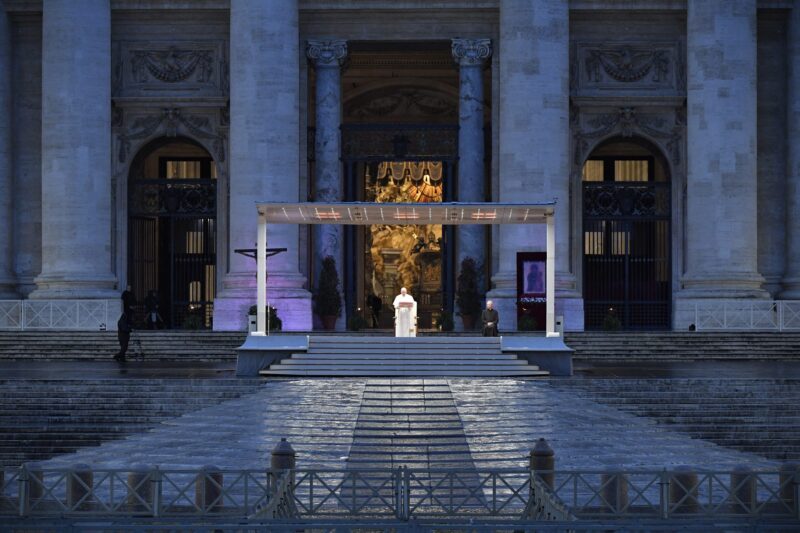
Like many Toronto Catholics, I began my observance of Holy Week this year in front of my family’s television, watching the Cardinal’s celebration of Palm Sunday in St. Michael’s Cathedral. A little over a week earlier, on March 27, I sat transfixed in front of my laptop computer as the pope pronounced a special Urbi et Orbi blessing to an eerie, empty St. Peter’s Square. My devotional life has moved nearly entirely online.
Catholics, of course, are not unique in this respect. Consider an “e-Satsangh” hosted on Facebook Live by the New York City-based Hindu movement Sadhana on April 2. In this event, a pandit offered a ritual puja in his apartment, presenting Sanskrit verses, water and other offerings to several Hindu deities well suited to the present crisis. These included the elephant-headed god Ganesha from a local temple in Flushing, New York; Arogya Lakshmi, the Goddess in the form of mother, health and power; and Sudarshana Vasudeva Dhanvantari, the god Vishnu in the form of a medicine healer. Following the puja, from a different apartment, one of Sadhana’s co-chairs guided virtual participants in a short meditation and hymns for the flourishing of all living beings. Discussion followed, ranging from the visceral—one participant sought advice on grieving the loss of a friend to COVID-19—to broader questions of advocacy and political organization. The focus here was on action: pragmatic service to those who are vulnerable, and also ritual action for their health and well-being.
Still more direct is the approach taken by residents of the Indian city of Mumbai, according to a widely circulated report. There, it seems, the Novel Coronavirus has been personified as an antigod or demon (asura). On the eve of the popular festival of Holi, effigies of this antigod—called Coronasur—were created and ritually destroyed, in an effort to halt the virus.
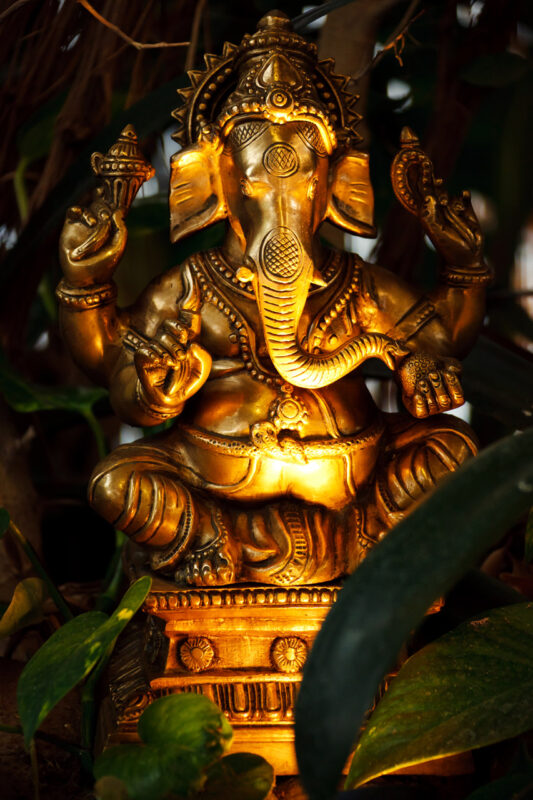
As a Catholic, I admit some discomfort with these rites, at several levels. But, also as a Catholic, I am obliged to approach such discomfort with an attitude of dialogue and exchange, rather than fear or condemnation. What might I learn from my Hindu neighbours about being a person of faith in this time of pandemic?
I think that the examples of Sadhana and even the Coronasur effigy offer an important reminder that Catholics, no less than Hindus, believe in the authentic power of ritual prayer. When Pope Francis raised the Blessed Sacrament and pronounced the Urbi et Orbi blessing on March 27, he was flanked by two icons that had defeated plagues in the past, Mary Salus Populis Romani and the Crucifix of San Marcello. This was a spiritual blessing, to be sure, an indulgence for those unable to receive the Rite of Reconciliation. But it was also an invocation of the power of God to intervene on behalf of those who are sick, and to arrest the devastation of COVID-19.
In the present crisis, some voices on the secular left and the religious right have called persons of faith to make a false choice: to follow the recommendations of public health officers, or to trust in the power of our shared prayer. Most Catholics, like most Hindus, refuse this choice. We embrace both the best science and the deep wisdom of our ritual traditions.
And so we vacate our churches and temples, and even St. Peter’s Square, to “flatten the curve.” But that need not, and cannot, stop us from persisting in our prayers. In this, Catholics, Hindus and many other others stand together, even while we are alone.
Read other InsightOut posts.
Dr. Christopher E. De Bono is Vice President of Mission, People and Ethics for Providence Health Care (PHC) in Vancouver. A practical theologian, a Clinical and Organizational ethicist, and a certified Spiritual Care chaplain, Christopher earned his BA and PhD at St. Michael’s.
A Novel Ritual for a Novel Virus
In the densely apartment-laden West End of Vancouver where I live, a ritual erupts every night at 7, when for between three and five minutes, people open their windows, go to their balconies, or congregate at a safe distance on the rooftops of their buildings. Why? To make a lot of noise.
Some clap, others shout. Many just bang kitchen pots and pans. Some even bring loudspeakers and drums and beat out a rhythm.
The result, which you might think should be cacophonous, is neither harsh nor discordant, but almost harmonious. I find it strangely comforting. And it has become something I prepare for every night.
But before I decided to become an active participant, I first heard this now-ritual noise-making on my walk home late in the evening. It was early in this crisis. After a long day working in health care to “flatten the curve” and to plan for those who would soon arrive at our hospitals with the novel corona virus, I wearily headed home for some much-needed rest.
As I left the hospital, I found myself surrounded by the noise of this novel ritual that has emerged as a reaction to a novel virus. Immediately I felt deeply happy, more resilient. I felt proud to hear the community acknowledge so many courageous frontline staff in acute and community care, so many researchers seeking solutions, and so many long-term care staff courageously limiting the spread among those individuals most at risk.
As a senior leader at Vancouver’s Providence Health Care, a Catholic health system famously known for its downtown St. Paul’s hospital and its long history of innovative work with marginalized groups, I already felt called to do my best. I also already knew the seriousness this novel virus posed and continues to pose.
So while we—and so many health care and essential care workers across the country—continue to work tirelessly to prepare for the surge, planning for the worst while hoping for the best, I take solace in this noisy and celebratory end-of-day ritual.
As a practical theologian, I am reminded of what I learned during my undergraduate and post-graduate student days at St. Michael’s: Rituals bring comfort. Rituals help us find meaning. Rituals bring connection. Rituals also give us a sense of control, because they are predictable.
Right now, we need all four of these things. This new virus has disrupted our comfort and has destabilized our sense of who we are. It has interrupted our very ability even to be physically close to human beings. It has increased our feelings of helplessness. And so much more. And this is why I am grateful for the creativity, hope and affirmation this new ritual offers.
A novel virus needed a novel ritual.
Read other InsightOut posts.
Fr. Gustave Noel Ineza, OP, is a doctoral student at St. Michael’s Faculty of Theology. Born and raised in Rwanda, he lived through the 1994 genocide against the Tutsi and went into exile for a month in what was then Zaire. His family left the refugee camps and returned to Rwanda after three members of his family developed cholera. He studied in the minor seminary and joined the Dominican Order in 2002. He studied Philosophy in Burundi, and Theology in South Africa (SJTI/Pietermaritzburg) and the UK (Blackfriars/Oxford). Ordained in 2014, he worked for Domuni (www.domuni.eu) and was a chaplain to university and high school students. In 2018, he came to Canada to pursue studies in Christian-Muslim dialogue. He is currently reading on post-colonial approaches to the taxonomies assigned to religious traditions (Muslims and Christians) by colonial powers in Rwanda.
In Solidarity with the Suffering
When it was announced in Canada that COVID-19 was knocking at the door, multitudes rushed to shopping malls to buy as many provisions as they could, to be “prepared” for the pandemic. One item in particular was a major target of the worried crowds: toilet paper. Looking at images of people with trolleys full of toilet paper, one thought came to mind: “People are planning to eat a lot.”
I was reluctant to write this post because it is not easy to introduce a distressing subject in the middle of a global lockdown caused by a pandemic. It would be adding distress to distress. However, anyone interested in humanitarian crises has to know that disasters differ in intensity.
As I write this reflection on April 7, the whole world has started commemorating the Rwandan Genocide against the Tutsi, one of the worst genocides of the history of the world. Twenty-six years ago, in 100 days, about a million people died in a genocide, yet the rest of the world seemed disinterested by — or unaware of — what was happening there. Nations sent contingents of soldiers to Rwanda to remove their citizens from what the world knew to be genocide while at the same time trying to ignore the plight of the Tutsi for reasons no one has yet managed to logically explain to me.
After the genocide, masses of Rwandans moved to what was then Zaire – now, the Democratic Republic of Congo – seeking refuge. For a couple of weeks, we thought the world did not know that Rwanda existed. I was 11 years old.
Today, as the world closes in on itself to fight a ruthless pandemic, it is easy to forget there were ongoing crises around the world before COVID-19. No one forgot, I suppose, that Syria was in the middle of a bloody war, that Yemen never saw the end of another almost internationally ignored horrific conflict.
As a young child in Rwanda during the genocide, I would spend the day looking up at the sky to see if planes would bring United Nations troops. A few months later, in the refugee camps, I saw UN workers and knew we would get food soon if cholera did not first decimate my family, as three members were already infected. There was hope because, at that age, I knew that there were not so many crises going on in the world. I can imagine there is nothing as frightening as knowing that you may die soon of hunger or be killed, and that no one will even know about it because the whole world is afraid of something you consider a minor threat to you in light of all the other challenges and threats you face. Today, the UN relief agency UNHCR and other humanitarian organizations are reminding people that crises are still happening around the world and that charitable people should not forget those who are hungry, in refugee camps,or being persecuted because they belong to minorities.
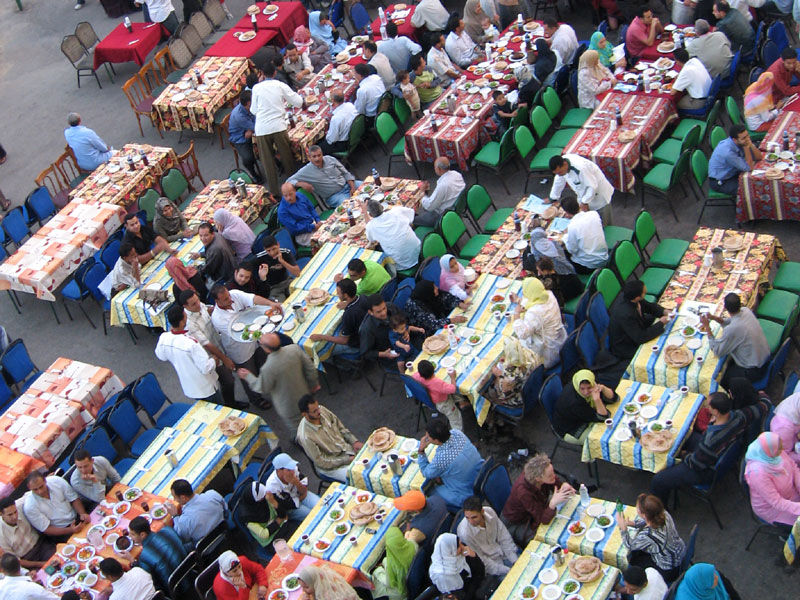
Consider this pandemic as experienced by poverty-stricken families in extremely poor countries. After the confinement began in Canada, it took only a couple of days to have African countries announce total lockdowns. In most African countries, a lockdown means staying inside your compound-house, your hut, or just in a small house that hosts more than eight people. A five-week confinement without a job for a family of five is nothing less than a death sentence. Fortunately, some countries have started distributing food, but very few people manage to get it. Worse, all those without homes and who had relied on charitable people’s provisions will have to find other means to feed their families. The city of Cairo has announced that the famous charity tables (mawa’ed al rahman) that adorn the streets during Ramadan for poor people to eat after a day of fasting were not going to be set this year. Having been in Cairo during the 2012 Ramadan month and having shared food at Al Abbasiah and Midan Al Tahrir with people from all strata of society, I understand how this will impact poor communities.
It would be inconsiderate to end without mentioning another shared worry for African people around the world. Two French doctors, Dr. Jean-Paul Mira, head of the Intensive Medicine and Intensive Care units at Cochin Hospital, and Professor Camille Locht, director of research at INSERM, discussed on a French talk show the plausibility of testing COVID-19 vaccines on the African continent. The suggestion raised an outcry from many who did not grasp there are many other places where testing is in progress. The overall perception from both ordinary people and many African celebrities, including the WHO’s Director-General Mr. Tedros Adhanom Ghebreyesus, was that Africa would once again be that continent where people are considered lab-rats, where foreign countries go to test their unsure economic and political theories, drugs, or just to dump hazardous industrial wastes. The WHO Director-General called those French doctors’ attitudes a colonial hangover. Whatever intention those doctors had, their statements were inappropriate enough to worry an entire continent and all those who care for its inhabitants. Would that mean that when a vaccine is finally discovered African countries will still need to overcome trust issues before making it available to their people?
As we struggle to accommodate the strenuous new routines caused by home confinement, let us think of all those dealing with COVID-19 while facing greater and deadlier calamities. May solidarity with those who suffer be the major lesson we may take from these distressing times.
Read other InsightOut posts.
Alison More came to St. Mike’s from the Centre for Medieval and Early Modern Studies at the University of Kent, where she designed and taught core courses on Latin and palaeography. She studied Latin in Rome with Reginald Foster, and has further developed her skills through teaching and research fellowships at Harvard, the University of Edinburgh, and Radboud Universiteit. A passionate Latinist, Alison is interested in alternative interpretations of absences and inconsistencies in the historical record. In particular, her research investigates the intersections between social and religious culture in Northern Europe from 1250 to 1450.
Sancta Corona, ora pro nobis

Medieval saints were often hailed as powerful intercessors in particular situations. Even today, St Anthony of Padua is a faithful helper for finding lost things; St Apollonia helps those in dental distress; and St Joseph of Cupertino is invoked by students taking exams. Recently, St Corona has re-entered popular religious consciousness as a protector against plague, pandemics, and infectious disease. After years of relative obscurity, Corona’s relics are now on display in a reliquary in Aachen Cathedral in Germany. Also, versions of her legend have been re-written for the Internet. While she is undoubtedly happy to intercede for the sufferings of the earthly Church, our health was not one of Corona’s traditional concerns. Her story is an interesting example of the ways in which saints’ cults adapt in accordance with the social needs of the day.
The tales of early Christian martyrs are generally formulaic. They contain little precise information and emphasize the gruesome deaths of their subjects. Corona’s tale is no exception, and we have little historical information about the saint. Her date of birth has been placed anywhere between 161 and 270 CE. She was married to a soldier named Victor at around the age of 15 and martyred one year and four months later. The Bollandist catalogues record more than 50 manuscripts of her vita, but all seem to be brief. Her short Passio in the Acta Sanctorum tells us that Corona’s profession of her illicit faith was an act of solidarity with Victor. After refusing to renounce Christ, Corona was tied to two trees, which her captors had bound together. When her tormentors cut the trees apart, Corona was ripped in two. Victor was then beheaded.
Until the current pandemic, there was little to connect Corona to viruses, plagues, or illness. Instead, her cult which existed primarily in Italy and the German regions appears to have been associated with the pursuit of fortune. Her name “Corona” is Latin for crown. In his work on treasure hunting, Johannes Dillinger points out that “corona” or “crown” was also the name given to a unit of currency in several countries. Whatever the reason, Corona found herself being invoked as the patron of treasure seekers. Dillinger points out that “Corona books,” texts midway between prayers and spells, circulated widely. Like prayers, they directed the supplicant to request Corona’s intercession. Like spells, the texts often seemed to depend on specific rituals and were even tailored to the amount of money in question. Later Corona texts even included methods of divining the lottery numbers. Not surprisingly, the lottery soon became another area of Corona’s patronage.
There does not appear to have been any association between Corona and plagues until 2020 when a virus that shared her name showed modern society to be less than invincible. Like our ancestors, our response was to seek divine aid and find a saintly intercessor as patron. Saints such as Roche and Sebastian were frequently invoked for protection against the plague in the 14th century. Their counterpart, the 12th-century St Rosalia of Palermo was called upon during an outbreak of illness in her native city during the 17th century. Notably, Rosalia has recently been featured in The New York Times as “The Saint Who Stopped an Epidemic on Lockdown in the Met.” In our current hour of need, those with an interest in saints discovered the existence of St Corona. As has been true of the cult of saints throughout Christian history, her devotees found a suitable association to declare her informally a patron of a crisis affecting the modern world. Her relics in Aachen, originally intended for a display on medieval metalwork, became a focal point for prayer and intercession. After several hundred years of relative quiet, she found herself being called upon as an intercessor.
Saints cannot exist in isolation. Instead, like all aspects of popular religion, their cults adapt to meet the needs of the society that venerates them. Throughout Christian history preachers and hagiographers have included imagery, allegory, and etymological devices based on saints’ names to communicate particular messages. The cult of saints has long illustrated the ways in which devotion could be incorporated into daily life. The case of Corona is no different: her name attracts attention and there is no reason to doubt her intercessory power. Perhaps this Easter Vigil, she will quietly be added to our litanies: Sancta Corona, ora pro nobis.
Works referenced:
“De SS. Victore milite et Corona martyribus in Ægypto,” AASS, May, t. III, pp. 265-67.
Johannes Dillinger, Magical Treasure Hunting in Europe and North America (London: Palgrave Macmillan, 2012).
Read other InsightOut posts.
Dr. Felan Parker is an Assistant Professor in the Book & Media Studies program specializing in digital media, video games, and media industries. His current research explores the production, distribution, and reception of independent or “indie” games.
The profile picture you see is Dr. Parker’s self-representation in the game Animal Crossing: New Horizons.
Comfort Games
Given the requirements of social distancing, it’s not surprising that people are turning to art and media of all kinds for much-needed escape. Video games are no exception: the industry is experiencing a not-insignificant sales bump, and game scholars and health experts are highlighting games as a way to stay connected and ease loneliness.
When we think about video games and escapism, most likely what comes to mind are action-oriented games of spectacle and hyper-masculine violence, and indeed those kinds of games loom large in the industry and culture of games. When I teach my first-year and fourth-year game studies seminars, part of the goal is to challenge this narrow mainstream conception of games as a cultural form. In that spirit, here are some reflections on three games in which I’ve found comfort and escape.
Animal Crossing: New Horizons, the latest entry in Nintendo’s popular franchise, was serendipitously released just as social distancing measures came into effect. New Horizons has resonated widely thanks to its gentle, colourful simulation of small town life (with anthropomorphic animal neighbours), its local and online multiplayer mode, and its “invest and express” customizability. I’ve been playing with my partner and six-year-old, and dressing up our cute little avatars and homes, sending in-game messages and gifts, and running around collaborating on projects together has been a joy. Part of what makes Animal Crossing so compelling is that it never ends, reliably changing in real time with the seasons; an ideal virtual getaway for an uncertain world (albeit premised on a peculiar utopian fantasy of resource extraction and consumerism).
A Short Hike, by Toronto game developer Adam Robinson-Yu, is a delightful pocket-sized world that takes significant inspiration from Animal Crossing but can be played in just an hour or two. The player takes the role of a young bird-person searching for cell phone reception in a provincial park. Along the way, there are numerous quirky characters to chat with, errands to run, and secrets to discover. The game shines in its ability to cultivate curiosity and encourage exploration, reinforced by the relaxing musical score and wonderfully pixelated natural environment. The hiking and climbing is complemented by a flying/gliding system, and I found the feeling of soaring across the landscape below deeply satisfying in this period of confinement, in particular during the game’s unexpectedly poignant climax.
The free browser-based tobogganing game Sanki is one of the purest distillations of that same feeling of speed and movement I’ve found in video games. Polish indie developer Krystian Majewski strips away all extrinsic goals and story until all that’s left is the hill, the snow, and the sled. The game is tiny, but has tremendous clarity of purpose in its muted palette of ultra-minimalist pixels and limited controls, perfectly capturing the serene sense of velocity I strongly associate with childhood winters in the Gatineau hills. The music is a bit giddy, so I turn it off and imagine the stillness interrupted only by gasping laughter. Each Sanki run is over in seconds, but I keep coming back to it for just one more.
Although quite different in form, content, and mode of production, each of these games offers an accessible, easy-to-play escape into gentle, comforting imaginary worlds. This is not to dismiss more fantastical and spectacular forms of escapism, but in this strange, liminal moment in time there’s something special about video games that playfully defy cultural expectations and embrace the simple pleasures of nature, movement, and everyday life.
Animal Crossing: New Horizons can be purchased digitally or physically for Nintendo Switch.
A Short Hike can be purchased digitally for Windows, Mac or Linux.
Sanki is playable for free in an ordinary web browser.
Read other InsightOut posts.
Because public masses have been cancelled due to the coronavirus pandemic, Dr. Darren Dias, O.P., has shared his homily for Easter.
Dr. Dias teaches in St. Michael’s Faculty of Theology, specializing in Trinity, Religious Diversity, and teaching methods. He is currently working of a SSHRC funded project with colleagues Gilles Routhier (Laval) and Michael Attridge (St. Michael’s) entitled: “One Canada Two Catholicism: Divergent Evolutions in the Catholic Church in Quebec And Ontario, 1965–1985.”
Seeing the God of Life
Easter Morning: John 20:1-18
The resurrection narrative of John’s Gospel account centres around the words “saw/look.” In the lection today we hear multiple instances. Mary Magdalene arrives in the dark, sees the stone removed from the entrance from the tomb and runs. The beloved disciple sees the wrappings in the tomb, but does not enter; he stops at the entrance. Peter goes into the tomb and sees the wrappings and the cloth rolled up. And then the beloved disciple enters the tomb and sees and believes. Mary stands outside the tomb weeping, and looks in and sees two angels there; she turns and sees Jesus but does not recognize him. And what are Jesus words to her?: “Whom are you looking for?” And when Mary realizes that she has encountered the risen Jesus she declares: “I have seen the Lord.”
The contrast of light and darkness, blindness and sight runs throughout John’s Gospel account. Today we discover what, ultimately, John is speaking of: the darkness of Good Friday to the brightness of Easter; from Mary initially arriving at the tomb in the dark, a darkness that left her unable to see, to her encounter with the light of the risen Christ that enables her to declare: “I have seen the Lord.”
Mary’s declaration is not only testimony of the man Jesus being raised from the dead, but a witness to something more. Indeed, the God and Father of the risen Lord is our God and Father, too. A new relationship has been established in the cross and resurrection that we have all been made children of God: “I am ascending to my Father and your Father, to my God and your God.”
Celebrating Easter during the global COVID-19 pandemic raises many questions for us. Some of us stand at the entrance of the tomb staring in; some are looking at the linens confused; some have witnessed miracles and are still unsure of what’s going on; some have had a profound encounter with the Lord and don’t know which way to run. Each of us is on a unique journey of faith, a journey that is a constant back and forth from the darkness of Good Friday to the light of Easter. We all stand in the empty tomb this morning and ask ourselves: what’s going on? What could this mean?
In the midst of a health crisis that has resulted in suffering, illness, anxiety, and death, a situation that has affected every aspect of our daily lives —even our ability to celebrate Easter as we normally do—it may seem difficult to find God. But our narrative today reminds us that we are often unaware that what we are looking for in right in front of us. Like Mary who is looking for the dead body of Jesus when she is staring right at it—fully alive. The resurrection surely teaches us that ours is a God of surprises. None of Jesus’ followers ever expected him to be crucified, and even less could they imagine a resurrection. The God of life is often revealed in the places and spaces beyond any expectation or imaginings.
Today we stand at the entry of the empty tomb, the linens are wrapped up, and we don’t quite know what to make of things. All the resurrection accounts we read this Easter season are the stories of coming to see with the eyes of faith, whether Doubting Thomas next week or the Emmaus narrative the week after.
This morning the reality of the empty tomb confronts us. The experience of the risen Lord and the reality of COVID-19 empower us to see the world and our own lives like never before; to declare: I have seen the Lord.
Fr. Morgan Rice is the pastor of St. Basil’s Church, the college parish. He is a graduate of the Faculty of Theology, where he earned a Master of Divinity degree in 2009. Fr. Morgan arrived at St. Basil’s after serving as Associate Pastor at St. Kateri Tekakwitha Parish in Rochester, New York, for eight years. Born and raised in Corpus Christi, Texas, Fr. Morgan studied mechanical engineering at the University of Virginia and later worked for six years in the engineering field in Houston, Texas.
Vulnerability and Life
Last Sunday, the first segment of CBC’s The Sunday Edition featured Yale University historian and professor emeritus Frank Snowden, who spoke on how pandemic diseases have shaped human history by exposing and taking advantage of weaknesses, or vulnerabilities, in human society. He said that COVID-19, like other pandemic diseases, “is showing us what our deepest vulnerabilities are in the world that we’ve made.” Capitalizing on those vulnerabilities, the disease is altering life and relationships across the globe.
Vulnerability can be viewed in different ways. If seen as opening us to hurt and loss, we have good reason to avoid it. However, vulnerability, especially in the context of a safe environment with people we trust, can open us to some profound experiences and relationships.
The Triduum that begins tonight with the Mass of the Lord’s Supper and ends with the Easter Vigil invites disciples of Jesus to consider vulnerability as a necessary disposition that leads to life in the fullest. Three months ago, I would never have imagined that I would be celebrating tonight’s Mass in an empty church without a congregation, without music, and without the washing of feet, one of the most moving aspects of the liturgy. Over the years, I have come to realize that asking individuals to have their feet washed is asking them to be vulnerable—to bare their feet, thus exposing any imperfections, and allow me to touch and wash their feet as I humbly kneel before them. However, taking that risk opens them and me to a powerful experience.
Jesus insisted he wash the feet of his disciples otherwise they would have no inheritance with him (John 13.8). They were to do likewise. “So if I, your Lord and Teacher, have washed your feet, you also ought to wash one another’s feet” (John 13.14). This lesson foreshadowed Jesus’ ultimate act of love and vulnerability as he submitted to the Cross, which led to the new life of the Resurrection.
COVID-19 has altered life as we know it and likely will continue to do so for some time. While it is showing us vulnerabilities that have opened us to great losses and pain, how might we use vulnerability differently? Jesus shows us the way and that is through relationships—by choosing to be vulnerable with each other, offering our lives in service and love, washing each other’s feet so that all might experience greater life.
Read other InsightOut posts.
Dr. Jean-Pierre Fortin is Assistant Professor of Practical Theology in the Faculty of Theology. Dr. Fortin teaches the Theology of Ministry and Reflection Seminar classes and also oversees field placements, an essential aspect of the Master of Divinity and Master of Religious Education programs at the Faculty. His research includes work in ecumenical dialogue.
Challenging Our Usual Ways of Living
According to the Gospel of John, when Jesus is brought before Pontius Pilate, he tells the Roman governor: “For this I was born, and for this I came into the world, to testify to the truth. Everyone who belongs to the truth listens to my voice” (John 18:37, NRSV). Jesus was born, came among us to bear witness to the truth. For Christians, who profess to be followers of Jesus, a fundamental task and challenge is to bear witness to Jesus. As it invites us to experience and celebrate the mystery of Christ’s Passion, death and resurrection in particular fashion, the Lenten/Easter season is a most suited time for us to reflect on the quality of the witness we bear to Christ.
The current COVID-19 pandemic has so challenged our usual ways of living, relating to, and serving one another that we are summoned to be creative and devise new ways of being faithful disciples of Christ. What does it mean to bear witness to Christ, celebrate and give praise to him in times of social distancing and isolation? How is the truth about the human condition (flaws and blessings) unveiled when humankind is confronted with challenges such as a global viral pandemic?
The recent closing of the USMC campus and the transfer of courses to online platforms have enabled me to witness both the turmoil that such a sudden change creates: administrators, professors, staff and students struggling to learn how to give/take courses, hold/participate in meetings, and host all sorts of academic activities online. The cancellation or postponing of so many public events, lectures, conferences, liturgies—even pub nights—led me to perceive that this year’s Lenten season would in a very real sense last much longer than 40 days. The extent of the transformation to which my working environment was being subjected fully came home when I realized I no longer had access to campus libraries and my office. At the same time, I have also witnessed how instructors and students have managed to break through technological walls to recreate communities of learning that enable insightful reflection and sharing.
In a time such as this, when we are likely to feel deeply unsettled, inadequately equipped, and summoned to take initiative and exercise leadership in unprecedented ways, we may relate to Pontius Pilate, who admits to being profoundly challenged by the person and words of Jesus when he responds to his testimony with an honest question: “What is truth?” (John 18:38) Pilate opens himself to the fact that he is encountering a reality he did not foresee. This encounter with truth in person may alter who he is in profound ways.
During this Holy Week and the following Easter season, then, as we face the COVID-19 pandemic, we may reflect on the ways Jesus questions our assumptions about our usual way of living and following him. We may also think about the questions we have been carrying with us for some time (perhaps a long time) which we know we should ask to Jesus in person. What are the questions that would liberate us, allowing us to pursue the truth revealed in Jesus in more faithful, complete fashion—especially now, in challenging times? We may bring these questions before Jesus in our prayer, with the desire and hope of being transformed so as to be able to bear witness to the truth that he is in and for times such as these.
Read other InsightOut posts.
Dr. Iris J. Gildea is an Associate Professor at the University of St. Michael’s College and teaches in the Book & Media Studies Program. Dr. Gildea’s areas of interest include Comparative Literature, Media Studies, Community Education and Expressive Arts.
A Collective Witness to our Interconnectivity
The week before our classes went online, my 4th-year seminar in the Book & Media Studies Program explored the topic of interconnectivity. We read a piece on the interconnection between humans and the environment by the American Buddhist and Deep Ecologist Joanna Macy. We went on a land walk in Queen’s Park and spent time alone in silence. Disconnected from technology and the need “to be somewhere,” we worked experientially with Macy’s theory.
Afterwards, back in the classroom for discussion, I quickly became aware that interconnectivity as a concept would take far more than the two hours I had scheduled for it! We’d spent the better part of the semester looking at art as a means of interrupting cycles of cultural violence. My students rightly pointed out that oppressions such as racism, colonialism and sexism are very solid impediments to the idea of connection that I was trying to invite through the Macy reading. I became aware that I needed to be more intentional about how I introduced her claim that despite such real oppression there is an inherent fabric of life woven together by the spirit of all that is. That this fabric is a connective tissue more primal than all the socially rooted injuries we create for each other and for this earth. To see why compassion is, for Macy, our route into becoming aware of such interconnection. Awareness, she claims, allows us to heal the world’s collective wound, a wound of which we are all a part. I was left feeling that I needed another route into opening up these topics.
Then our global crisis erupted.
Suddenly, we were thrust into a very clear example of how the actions of one person affect another person, of how people affect other people, of how changes in one system implement changes in another system. Our global community began to collectively witness and feel the impact of interconnectivity on so many levels.
Speaking of the world’s woundedness, Macy says that “Until we can see the world and touch the world, we cannot be part of its self-healing.”
“What does she mean?” I had asked my class.
It is a big question, and that day, in response, my students and I shared in a deep contemplative silence. A few days later, I could not help but feel that the very fabric of connection that deep ecology speaks of was answering us quite loudly as we began to witness the reality of pandemic and the collective suffering it manifests. “Is a deep wound asking us to help heal it?,” I wondered alone at home, reflecting on the class I had just taught in the face of what was happening in the world.
Joanna Macy also says, “If the world is to be healed through human efforts, I am convinced it will be by ordinary people, people whose love for this life is even greater than their fear.” As we re-emerge from this isolation, be it in weeks or months, healing, individual and collective, seems inevitable to me. I work in trauma theory and sometimes new and present traumas open older wounds buried beneath the surface, hidden and ignored but not forgotten. Sometimes doing the work to heal the present is how we heal the past. I cannot help but think this current crisis is also allowing us to access a deeper sense of interconnectivity, one whose roots take us beyond this present moment into the very fabric of relational life. Macy teaches that choosing love over fear cultivates the compassion that bridges the physical and emotional isolation that so many of us feel right now. I am sure it will be the bridge the heals us as we emerge changed, but not lost.
Read other InsightOut posts.
Because public masses have been cancelled due to the coronavirus pandemic, Dr. Darren Dias, O.P., has shared his homily for Palm Sunday.
Dr. Dias teaches in St. Michael’s Faculty of Theology, specializing in Trinity, Religious Diversity, and teaching methods. He is currently working of a SSHRC funded project with colleagues Gilles Routhier (Laval) and Michael Attridge (St Michael’s) entitled: “One Canada Two Catholicism: Divergent Evolutions in the Catholic Church in Quebec And Ontario, 1965–1985.”
Plunged into the Reality of Suffering and Death
Today is “Palm Sunday of the Passion of Our Lord.” It juxtaposes two events: Jesus’ triumphant entry into Jerusalem (Palm Sunday) and the immediate events surrounding his betrayal, arrest, trial and execution (Passion of Our Lord). These two contrasting events are captured in the liturgical celebration that begins with the proclamation of the Gospel narrative about Jesus’ triumphant entry into Jerusalem (this year Matthew 21:1-11). Normally this is followed by a joyful procession from outside the church to inside or within the church itself. We ritually perform what the evangelist describes: a rather chaotic scene of crowds, animals, cloths being thrown down, people chanting and waving branches.
But the exuberance of the triumphant entry into Jerusalem is short-lived. In the reading from Isaiah we are introduced to the maltreated teacher-servant and in Paul’s letter to the Philippians, a theological reflection on the death of Jesus. By the time we read the second Gospel lection, the passion according to Matthew, we are plunged into the reality of death. The lection ends with Jesus’ lifeless body being guarded in a sealed tomb.
On this Sunday, we go from the joyous chorus of “Hosanna to the Son of David! Blessed is the One who comes in the name of the Lord! Hosanna in the highest heaven” to the solitary cry of Jesus: “My God, my God, why have you forsaken me?” to the silence of the sealed tomb.
Death is an inescapable, existential, and mysterious experience. Yet it often catches us by surprise, no matter how prepared we think we are. When my own father died after a lengthy battle with cancer, knowing he was palliative, it still came as a shock. Nothing really prepares us for the mystery of death. In Matthew’s Gospel account the death of Jesus is predicted several times (Mt 16:21-28, 17:22-23, 20:17-19, 26:1-2), and yet we stand at the tomb plunged into the silence of this existential, inescapable and mysterious experience.
A few weeks ago the whole world was plunged into the reality of suffering and death as the COVID-19 virus swept across the globe. Though there were many warnings, no one seemed really prepared for the novel reality we are now living. We still don’t really know what will happen, we don’t yet have control of the situation. Today we stand in Golgotha, at the foot of the cross, lamenting that many have become ill and many have died, anxious because even more will become ill and die. We stand silent at the tomb.
Our Western culture has an odd relationship to death. We try to escape the reality of death and aging, celebrating youth, and constantly chasing after it. We sanitize our field of vision from human misery and suffering, yet we are bombarded with images of violence and death on our screens. Our fear of suffering and death is evidenced in our attempts to control death through the legalization of assisted suicide.
COVID-19 forces us to confront the inescapable, existential, mystery of death. We should not be too quick to say this will pass, that we will get through it, true as these sentiments may be. We want to get hurriedly to Easter and to the empty tomb, without keeping a long vigil at the foot of the cross. This year will be a long Good Friday. Jesus’s cry from the cross resounds with our own: My God, my God, why have you forsaken me?
In many societies and communities around the world, suffering and death is sadly the norm. Latin America theologian Gustavo Gutierrez, OP, draws our attention to the plight of so many millions who live in situations of death every day. For Gutierrez, the poverty he lives means death, lack of food, housing, education, healthcare, respect, dignity, freedom. Exploitation of the vulnerable and systemic violence is the never-ending lot of so many. He asks: how can we proclaim a God of life in this situation of death?
We are plunged into the reality of suffering and death in today’s liturgy and in our lived experience. I invite you to listen to Anton Bruckner’s moving setting of Philippians 2:8-9, Christus factus est, performed by the Choir of King’s College, Cambridge. This music draws us into the depths of the mystery of death and into the God of life.
Dr. Michael Attridge teaches historical and systematic theology at the Faculty of Theology. Recent courses he has taught include theological foundations, Christology, ecclesiology, 19th and 20th century theologians and movements, and the Second Vatican Council in Canada. He is currently involved as a co-investigator in a four-year, SSHRC-funded research project comparing the different forms of catholicism in Ontario and Quebec in the period following Vatican II through the lens of liturgy and catechesis, ecumenism and interfaith dialogue, and socio-political engagement.
Today’s piece was written in the midst of his self-isolation.
A Time for Gratitude

For each the past few years I’ve been fortunate to have travelled to Italy for short periods of time for research and study. Although I often make trips to Rome and Milan while I’m there, my home base is Siena, staying with the friars in the convent of the magnificent mediaeval basilica of San Domenico. Daily life is as peaceful as it is regular—liturgy, meals, study, and work. When I arrived, there were only a few cases of COVID-19 in Italy. All of this, though, changed quickly. On March 4, the government closed schools and universities, but we were still able to work online. On March 8, it locked down 16 million people in the north and, the following day, it did the same for all of Italy—restricting travel throughout the country. Within hours the airline emailed to say it was now only flying out of Rome. I knew I needed to leave immediately. A friend who works in the Lisbon airport was able to get me to Portugal the next day, March 10, on the airline’s last flight out of Italy. With the help of family, I self-quarantined in a small town near Fatima where my wife, Isilda, was raised. On Sunday, March 15, the day before Canada closed its borders, I caught my return flight home.
For the past nine days, I’ve been in self-quarantine in the same room in our house, staying apart from Isilda and our two teenage daughters. I can watch the news, work, read and stay in contact with colleagues and students through email and Zoom. In many ways life is as regular again as it was in the convent in Siena. But I’m realizing, too, how much my sense of time is also marked by daily movement—going to the kitchen for breakfast, walking to work or across campus, going for groceries in the evening. Time seems to be measured as much by going from place-to-place as it is by minutes and hours on the clock. Not having the same obligations of places to go or errands to run, has displaced this sense of time, and instead, I find myself feeling grateful—grateful for the people and communities that are coming together; grateful for the healthcare workers around the world who are treating the sick and the vulnerable. I’m even grateful for the political leaders at all levels in the country who are putting aside differences, following the scientists, and working together for the well-being of everyone.
Above all though, I’m grateful to Isilda and our daughters. Every morning, she and I have a coffee together, with her at one end of the hallway and me in my room. I’m grateful to her and the girls for doing what needs to be done around the house and to our younger daughter who’s been working overtime at our neighborhood grocery store. Last night the four of us sat together—again, them at one end of the hall and me inside my room, having dinner, laughing and sharing stories. I was reminded of Pope Francis’ tweet in October 2015, where he challenged people to “waste time” with others. It’s one of the most important things we can do. These days, as the entire world grinds to a halt and most of us are in social isolation, perhaps this is a moment to embrace our lack of movement, recalibrate our sense of time, reflect on those around us, and be grateful for one another.
Read other InsightOut posts.
Because Sunday Mass has been cancelled due to the coronavirus pandemic, Dr. Darren Dias, O.P., has shared his homily for this, the Fifth Sunday of Lent.
Dr. Dias teaches in St. Michael’s Faculty of Theology, specializing in Trinity, Religious Diversity, and teaching methods. He is currently working of a SSHRC funded project with colleagues Gilles Routhier (Laval) and Michael Attridge (St Michael’s) entitled: “One Canada Two Catholicism: Divergent Evolutions in the Catholic Church in Quebec And Ontario, 1965–1985.”
Tears of Compassion
John 11:1-45
“Jesus began to weep” is the shortest verse in the NRSV English translation of the New Testament. Yet this short verse says something terribly important about Jesus and his solidarity with us in our moments of difficulty and suffering.
In John’s Gospel account, Jesus’ friend Lazarus is ill and Jesus is summoned to his side by his sisters, Martha and Mary. But instead of hurrying to be with them, he waits another two days. He says that the death of Lazarus is an occasion for Jesus to be glorified. Jesus confidently refers to Lazarus’ death as “merely sleeping” and even says, “I’m glad I was not there so you may believe.” Jesus is strangely sanguine about his friend Lazarus’ death.
But as Jesus’ gets closer to the tomb, he becomes increasingly emotional. Twice, the Gospel lection says, “Jesus was greatly disturbed.” And then he began to weep. But why how do we account for this change of emotional state? One moment he seems placid and confident and the next he weeps. Does Jesus not think he will be able to “awaken” Lazarus anymore? Does Jesus suddenly doubt the life of the resurrection? Or the power of God to be glorified? Why the change?
In the Gospel lection, we read that “When Jesus saw Mary weeping, and the Jews who came with her also weeping, he was greatly disturbed in spirit and deeply moved…Jesus began to weep.” It was in his encounter with those who suffered loss and were grieving that Jesus began to weep. He is not weeping for Lazarus. He is weeping with, sharing in the suffering of others. Compassion is the source of Jesus’ tears.
Though Jesus is confident in his belief in the life of the resurrection, it doesn’t negate the real suffering of those who loved Lazarus, his sisters Mary and Martha, their friends, and Jesus himself. At the coming celebration of the Lord’s Passion on Good Friday we will read about Jesus in the letter to the Hebrews: “For we do not have a high priest who is unable to sympathize with our weaknesses, but one who has similarly been tested in every way.”
Compassion comes from the Latin word “to suffer with.” We often experience the suffering of others, whether vicariously or else because we have memories of similar suffering. Suffering is part of our human condition. And solidarity in suffering reveals the depth of our humanity.
The current COVID-19 crisis reminds us how interconnected the human family really is. We are “deeply moved” by the dedication of medical professionals and other front line workers. When I’ve gone to the store to buy necessities, I’ve been struck by the friendliness and dedication of workers in drugstores and grocery stores in very difficult circumstances. We are “disturbed in spirit” by the lack of ventilators for all those who may need them. We “weep” at the deaths of so many around the world, and of their families who are unable to bury them at this time. We are experiencing a deep sense of togetherness around the globe because we are all affected, and we all wait with some anxiety, for an unknown future. As we stand at the entry of the tomb, we ask what will Easter look like this year.
Our Gospel lection today reminds us that the God of life is not unaffected by our situation. Indeed “the Christ, the Son of God, the one coming into the world,” our “high priest” weeps with us, with compassion for the suffering, anxious, sorrowful and grieving.
Because Sunday Mass has been cancelled due to the coronavirus pandemic, Dr. Darren Dias, O.P., has shared his homily for this, the Fourth Sunday of Lent.
Dr. Dias teaches in St. Michael’s Faculty of Theology, specializing in Trinity, Religious Diversity, and teaching methods. He is currently working of a SSHRC funded project with colleagues Gilles Routhier (Laval) and Michael Attridge (St Michael’s) entitled: “One Canada Two Catholicism: Divergent Evolutions in the Catholic Church in Quebec And Ontario, 1965–1985.”
Finding God in Challenging Times
John 9:1-41
Amid this global COVID-19 pandemic, isolation and physical distancing are necessary to diminish the spread of the virus. In our time we can definitely understand the link between illness and isolation. In Jesus’ time, illness, and particularly something like blindness, was believed to be a punishment for the sins of one’s parents or ancestors. Thus, the question of the disciples to Jesus about the man born blind: “Who sinned this man or his parents?” Of course, Jesus’ answer is neither one; the very question misses the point. The man born blind would have been marginalized because his blindness was thought to be the product of divine punishment and so he would have been excluded from the normal network of social relations. We read that he had to beg for his livelihood. Like many other healing accounts, when Jesus heals this man he not only cures him physically but removes the reason for him to be excluded and isolated from his community. Jesus heals him and tells him to purify himself in the pool of Siloam so that he might be re-born into his community.
In the narrative the man born blind is cured of his blindness but only gradually begins to see. When initially questioned by Jesus’ critics about who opened his eyes, the man responds rather journalistically by recounting the events as they happened, not even mentioning Jesus by name. When pressed his questioners ask, “what do you say about him?” The man responds with the conviction: “He is a prophet.” His questioners react with a strong judgment against Jesus, calling him a sinner because he works on the Sabbath. Yet again they ask the man how is it that he now sees. Seemingly frustrated by their criticism of Jesus — and with firm conviction — the man says that Jesus is not a sinner but one who obeys and worships the true God of Israel and to whom God listens. The man’s questioners, those in power and authority, are scandalized that this poor beggar, a man born in sin else he would not have been blind, someone neither named nor vouched for by his own parents, would dare to teach them and so “they drove him out.” The man born blind, cured by Jesus, about to leave the isolation of his blindness behind, on the cusp of entering into social relationships, is driven out of the community he was never really a part of but longed to have a place. It is at this point, a low point for the man who has just been healed of his blindness, that Jesus seeks him out and finds him. In the brokenness and vulnerability of the man born blind, someone who has just gone from marginal to outcast, Jesus shares himself by revealing who he is: I am he, the one speaking to you is the Son of Man. Jesus chooses to reveal his true identity not to the powerful but to the outcast. Because of this intimate moment the man can finally answer the question that had been put to him throughout the narrative about the person who cured him. The man now sees who Jesus really is.
In our Gospel selection today the man born blind, though he had a powerful experience of healing, is only gradually able to see God’s vivid presence in his midst in the person of Jesus Christ. In these days, weeks and even months ahead, many will experience the difficulty of isolation and loneliness, and be challenged to see the God who seeks us and finds us in our vulnerability and fear. But just as Jesus revealed God’s presence in his very person, maybe God’s presence reveals itself to us in the midst of this present crisis: in the selfless dedication of medical workers; in the store workers who ensure our access to food and other supplies; in neighbours who check in on the elderly or vulnerable; in our prayerful solidarity with those who are ill from the virus.

